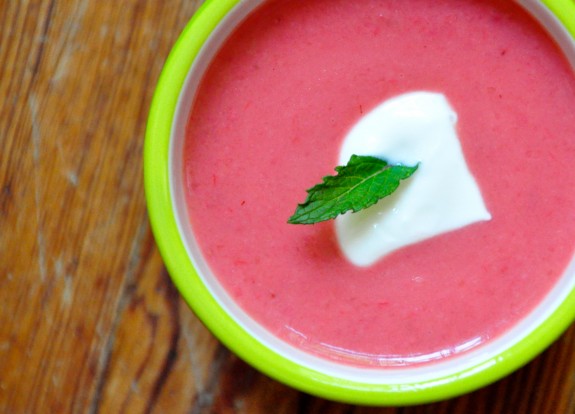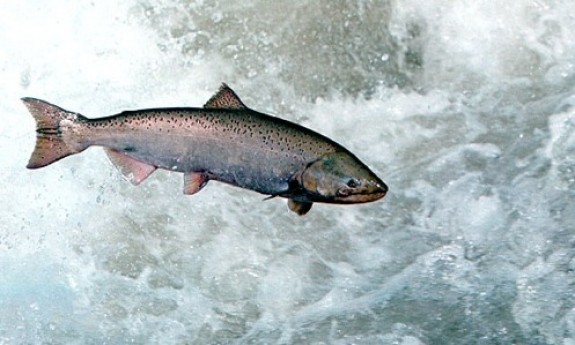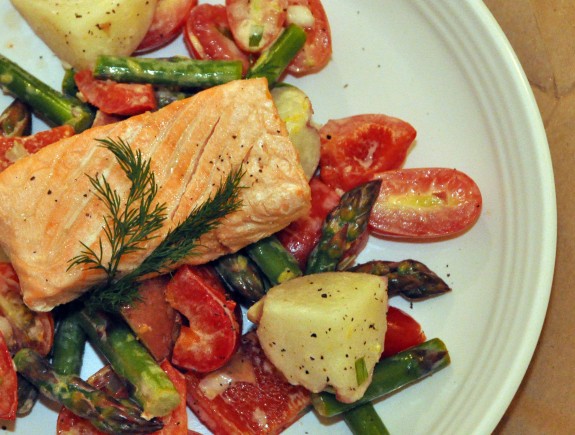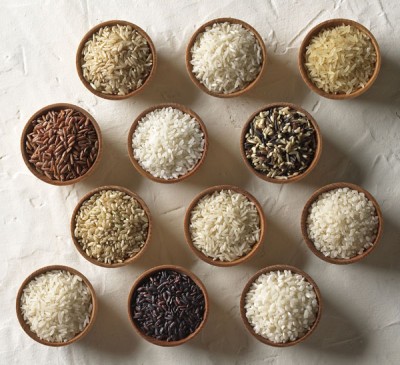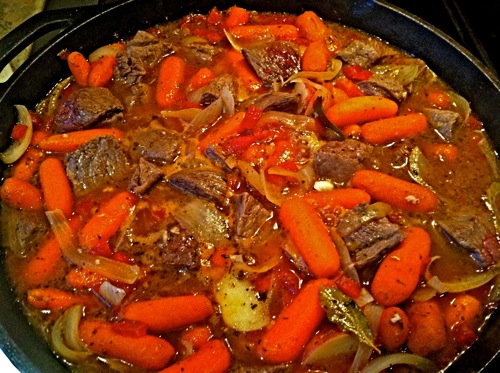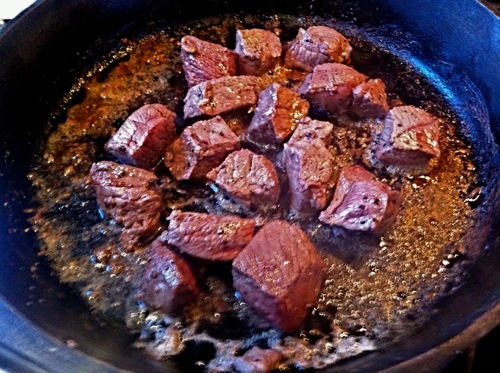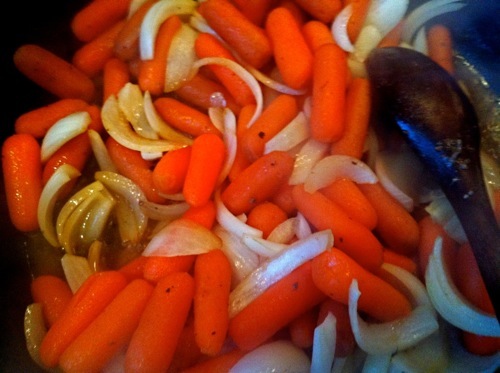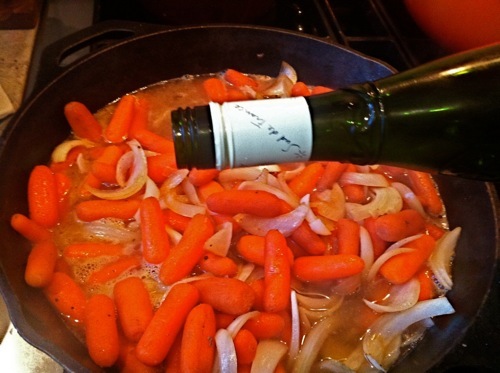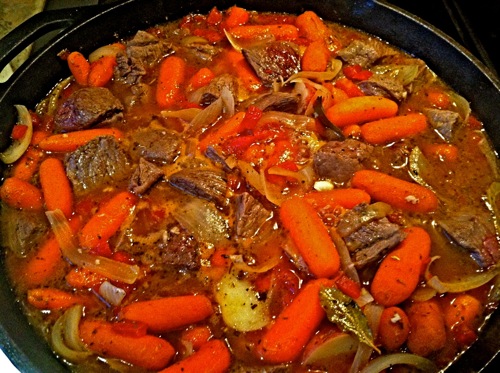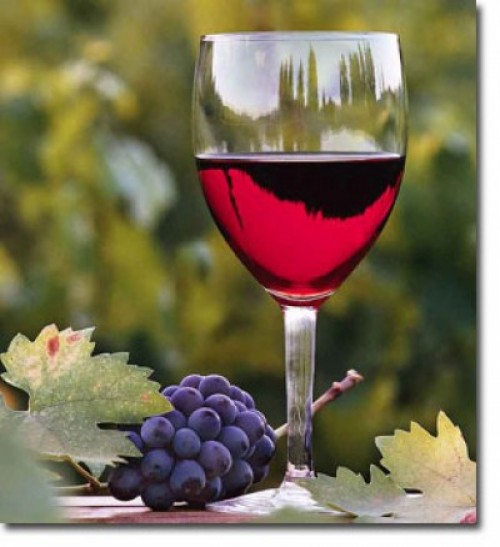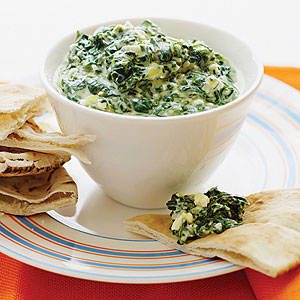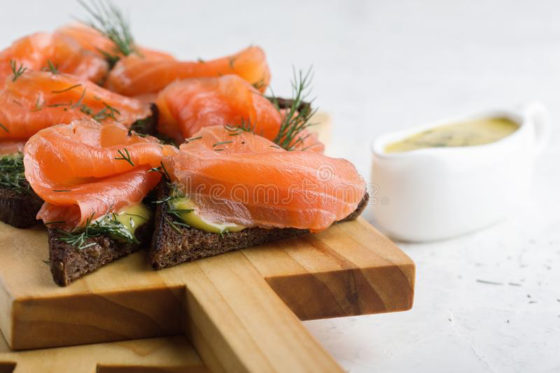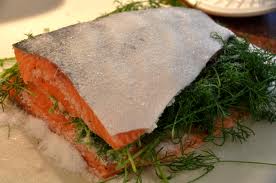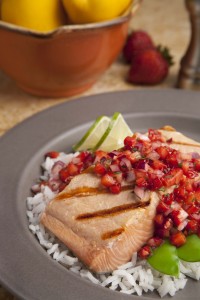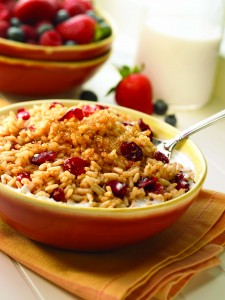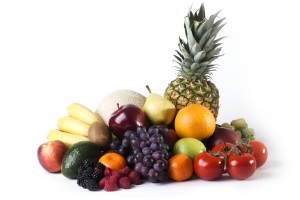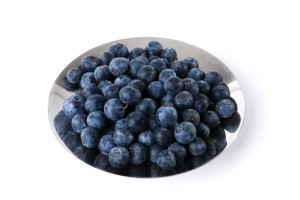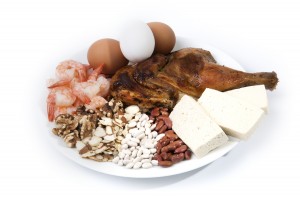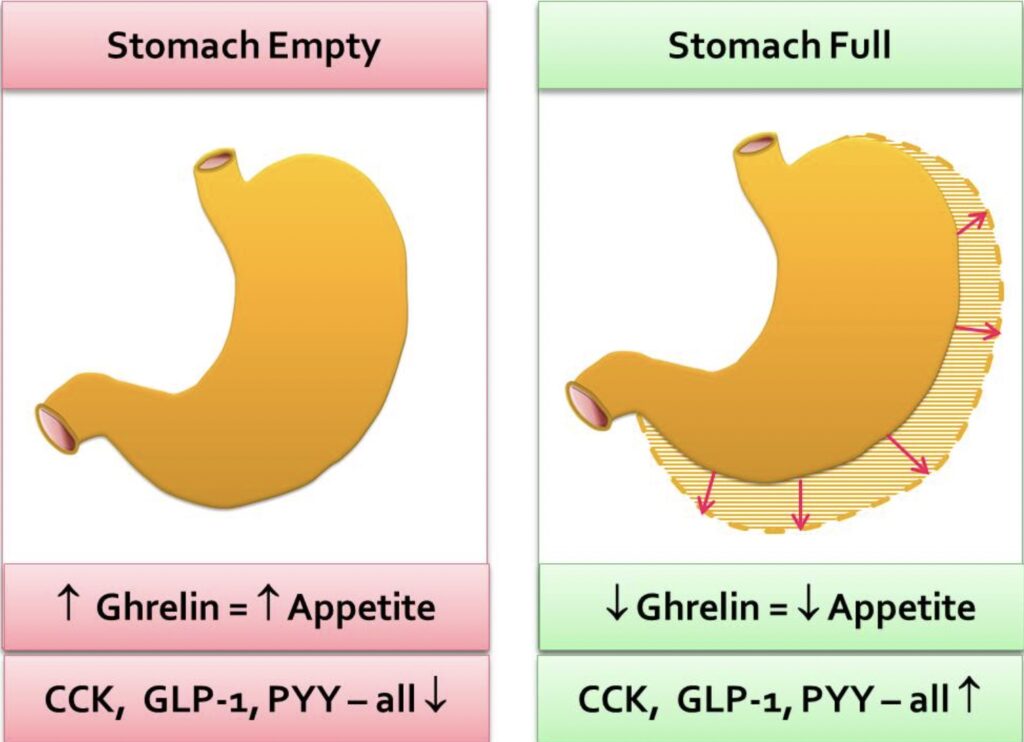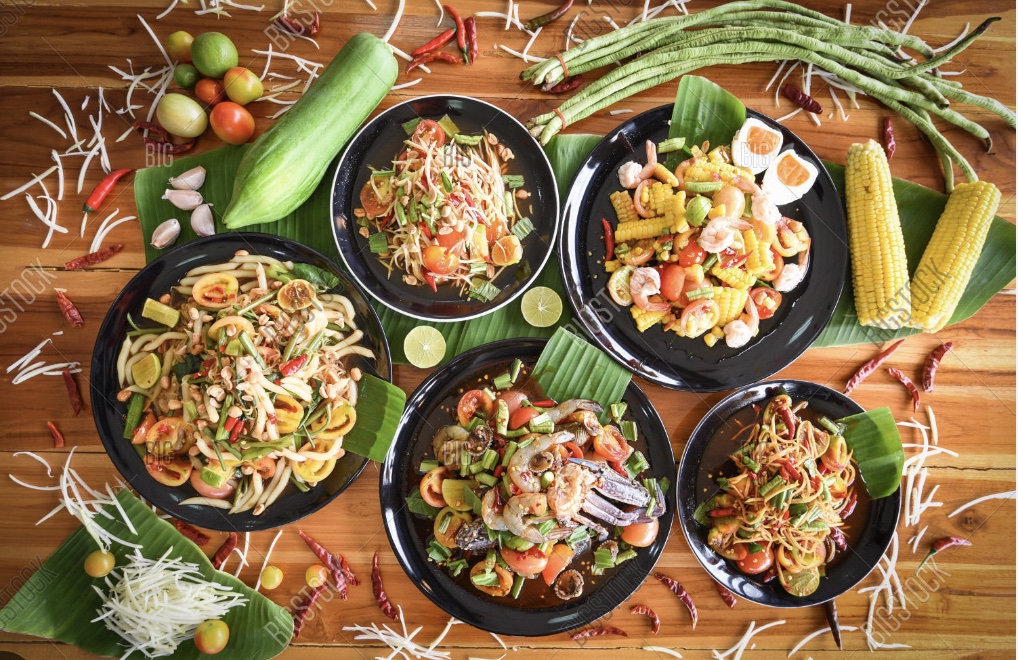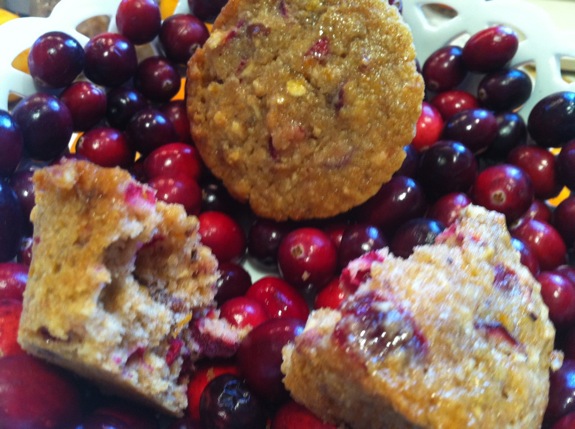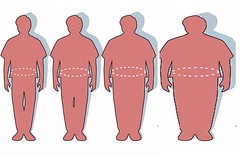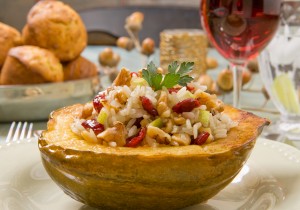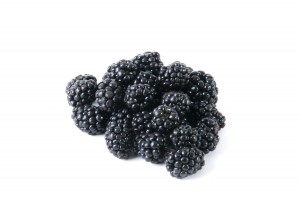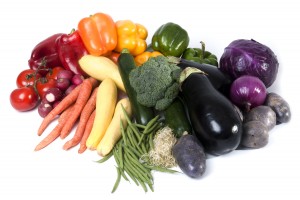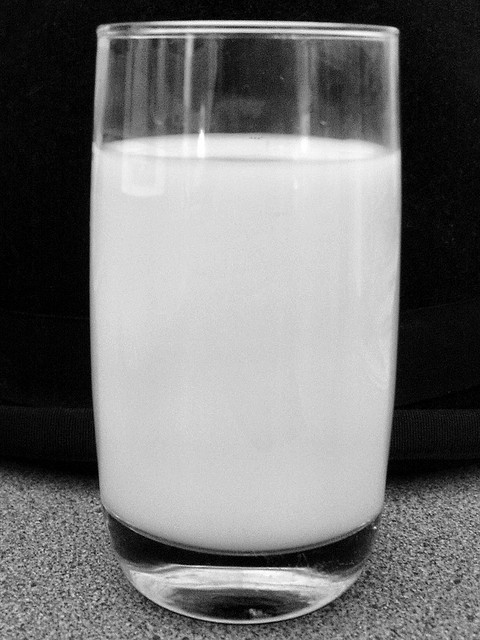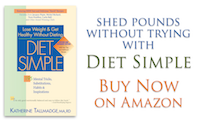Battling the Blizzard Bloat Blues!
- At January 15, 2025
- By Katherine
- In Aging-In-Place, Articles, News, Recipes
 0
0

These days you may have noticed a subtle expanding of yours and your friends’ waistlines. Take consolation in knowing you are not the only ones suffering from… “BLIZZARD BLOAT,” that creeping up of body fat that has hit many of us recently, according to an informal survey of frustrated, and slightly fatter colleagues and friends.
In the animal kingdom, fattening up for the cold winter months is critical for survival. For human animals, that leftover caveman-instinct to gorge on fattening foods, and hibernate, just causes trouble
Though these old instincts are plausible as a partial cause of winter weight gain, there are more complex—and controllable—causes too. The most important involve decreases in sunlight, physical activity, increases in cravings, and comfort eating. It’s the perfect storm of factors that create the calorie imbalance leading to blizzard bloat.
The Perfect Storm
- Physical Inactivity. When it’s cold outside, we tend to exercise less and even cut back on subtle calorie-burning activities such as short walks, light outdoor chores. This lack of calorie burning may only add up to about 100 fewer calories per day, but a deficit of 100 calories every day, translates to a 3-4 pound weight gain during the winter months, and 10 lbs in a year,
- Perpetual Darkness. Most of us are affected by winter’s gray days, and sunlight deprivation. We need light so our brains have enough of the neurochemical, Serotonin. A decrease in seratonin can increase our chances of experiencing a low mood, and food cravings. A small percentage of people are particularly vulnerable. About 5 percent of the population become markedly depressed with Seasonal Affective Disorder (SAD).
- Cravings for Warm Comfort Foods. Being light deprived, and hibernating inside instead of getting outside and moving, reduces the happy chemicals in your brain, like endorphins, and serotonin. This can lead to increased cravings of fattening food. Studies show excess calories contribute more significantly than any other factor to the calorie imbalance causing blizzard bloat.
Strategies for Battling the Blizzard Bloat Blues
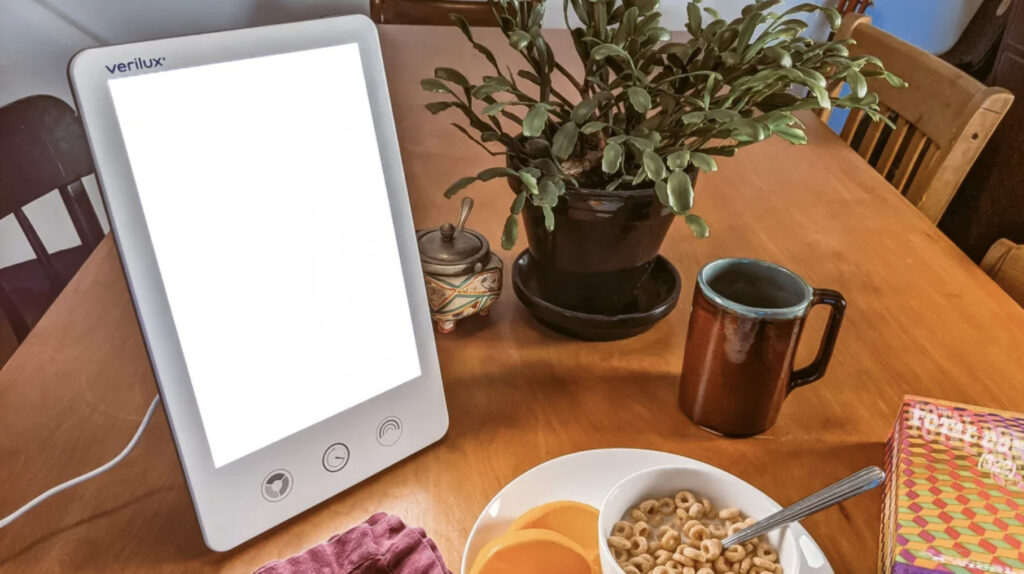
- Get some daily sunshine. You’ll feel refreshed and less bored if you walk outside, and your appetite may be more controllable. The amount of needed daylight varies for each individual. In general, the more the better. One hour daily in the morning, ideally at sunrise, is most helpful. If you’re not an early bird, several hours on the weekends may help make up for a lack of sun during the week. But the sun has to reach your eyes, so no sunglasses. If you don’t feel comfortable with the guidelines, or If going outside isn’t always an option, light therapy, also known as phototherapy, may help. Ask a mental health professional about the special lamps you can buy to make up for light deprivation. They work! Studies show they increase serotonin and help decrease depression in most people. Or, do what the Swedes do. Create candle lit rooms, use sconces with mirrors, keep curtains open. Pick the strategies that work for you!

- Up your activity level. Just a little means a lot. During just one exercise bout (only 10 minutes), your brain releases the feel-good neurochemicals, endorphins and serotonin. They reduce pain, increase feelings of well-being, elevate your mood, and will help reduce cravings. If you’re regularly active, these benefits multiply. A brisk 30-minute walk – just as effective as running – three times a week relieves major depression just as effectively as an antidepressant in most adults. Of course, moving even more, gives you even more significant benefits. Assuming you’re not fond of the cold, use these ideas to bundle up!
- Hold on to your favorite dishes, just rearrange them a bit. In the winter, we tend to crave more fattening, warm, comfort foods, and fewer healthy cold foods, like salads. But your comfort foods don’t have to be fattening. My advice, which has been successful for me and my clients, is to continue eating your favorite foods, just change their balance slightly. It’s been well established that you can increase the volume and satisfaction of your meals and dishes – that is, you can eat more food for fewer calories – by simply incorporating veggies or fruits so they comprise at least 50% of the volume on your plate (eat them first to slow you down) or in your dish,
- Veggies and fruits are predominantly water. But because the water is incorporated into the food, as opposed to just a glass of water, the meal will empty from the stomach more slowly. The slower a food empties from the stomach, the more satisfied we are with it. With that in mind, all you have to do is incorporate water or broth into your main course to create a soup or stew, add veggies to a favorite stew or casserole, so that vegetables comprise half or more of the volume. Try having a simple veggie soup as a first course to any meal. Try this technique that makes veggies taste even better than French fries! These strategies – incorporating water, and adding fruits and/or veggies to your meals and dishes – allows you to enjoy your favorite foods. But it also means that you can eat more food for fewer calories. Studies show that, for each meal that you use this strategy, you save 100 calories, naturally – without even trying. That amounts to keeping off 10 lbs a year or preventing blizzard bloat. Try my sumptuous soup recipes to feel full, satisfied, but still keep calories under control.
The BEST Thanksgiving Leftover Recipe: The Second Best Part of Thanksgiving!
- At November 28, 2024
- By Katherine
- In Aging-In-Place, Articles, News, Recipes
 0
0
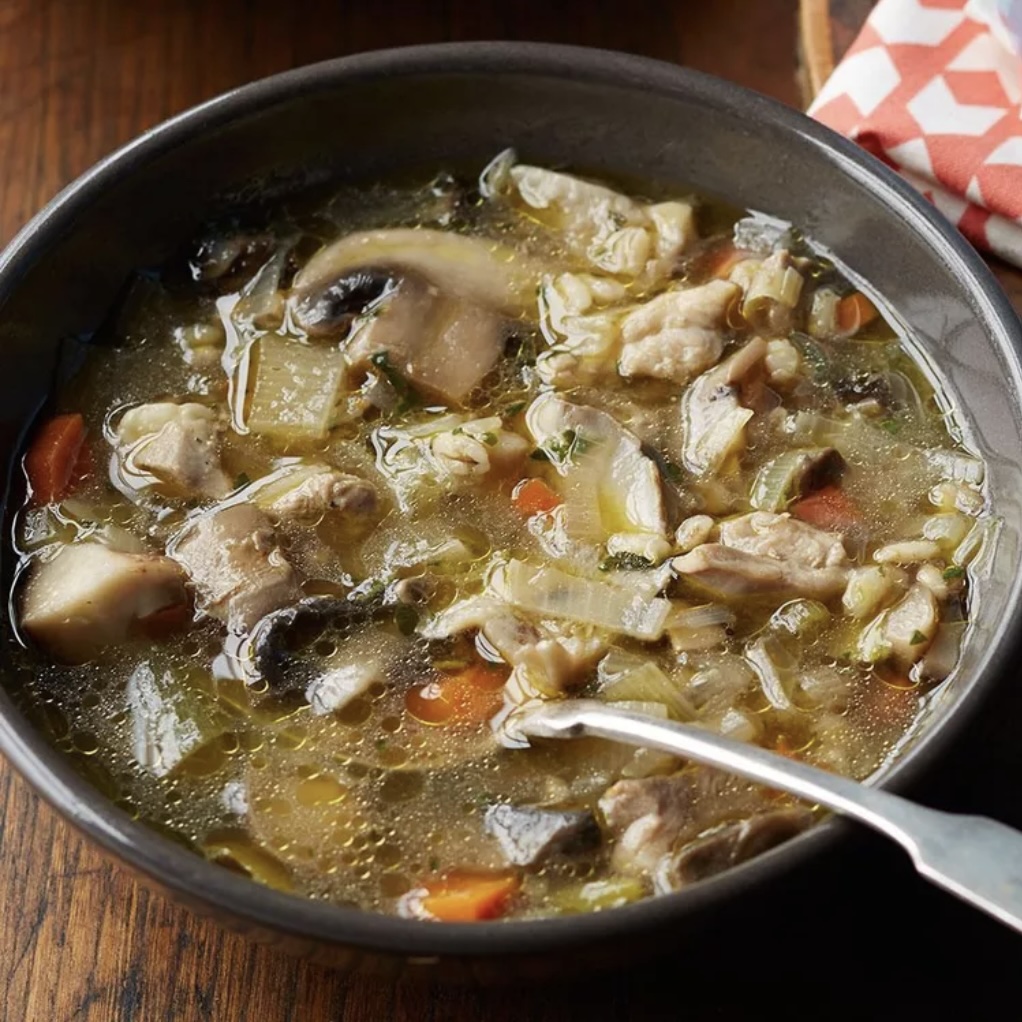
I try to encourage my clients to focus on healthy leftovers, of course, but perfection is never possible or even a healthy objective. One Thanksgiving, I saved the French Apple Cake dessert for breakfast the next morning (It’s better for your weight and health to eat the most fattening food earlier in the day – Sometimes, it’s all about STRATEGY!). It was one of the best breakfasts of my life!
Make the most of the time you spend in the kitchen and ease some stress from your life by batch cooking. I feature batch recipes in my books, Diet Simple and Diet Simple Farm to Table Recipes. Batches are your favorite delicious, quick and easy meals made ahead of time so that you always have something in the freezer or refrigerator, ready to eat on a moment’s notice. And it actually saves time. When you get home from work in the evening, just zap the batch in the microwave and Voilà! Instant delicious, nutritious dinner.
Studies show you’re more likely to eat whatever is in your environment. If you surround yourself with yummy, healthy, wholesome foods, that’s what you’ll end up eating. It’s simple physics: We naturally take the path of least resistance. So why not make things easy on yourself? Plan to make a few batch meals, or even just one, this weekend so you and your family will have their home-made favorites at your fingertips all week long.
Let’s take advantage and start batching with America’s favorite holiday-for-leftovers!
Nothing could be simpler or more delicate than this dish. The flavors are rich and earthy. It contains all the elements of a complete meal. It’s nutritious and filling to boot. I feel honored that Michel Richard provided this recipe for Diet Simple. It fits perfectly as something you can cook, store in the refrigerator and eat for several meals and is a wonderfully delicious addition.
4 servings
Ingredients:
2 Tbsp Olive Oil
2 Small Onions, Peeled and Diced
1 Pound Thinly Sliced Mushrooms and any other Leftover Vegetables
2 Quarts Unsalted Turkey or Chicken Stock (defatted)
2 Tablespoons Light Soy Sauce
6 Tbsp Pearl Barley
4 Cloves Garlic, peeled and minced
Salt and Freshly Ground Black Pepper to taste
About 1 pound, boned, skinned and sliced Turkey into bite-size pieces or small slices
About 1-1/2 Cup (about 3 ounces) freshly grated Parmesan Cheese (Optional)
Heat the oil in a heavy medium saucepan over medium-low heat. Add the onion, cover and cook until translucent, for about ten minutes, stirring occasionally. Add the mushrooms – and/or other leftover vegetables. Increase heat to medium-high and cook uncovered until lightly browned, for about five minutes, stirring occasionally. Add the turkey stock, soy sauce, barley and garlic. Simmer gently for 45 minutes to cook barley and blend flavors. Season with salt and pepper. (This can be prepared ahead, cooled, covered and set aside at cool room temperature for up to four hours or refrigerated for several days.)
To serve, bring the soup to a light simmer, add turkey, reduce heat and simmer just until the turkey becomes warm, for about two to three minutes. Ladle into four soup plates. Pass Parmesan, if desired.
Katherine’s Light & Creamy Broccoli Soup with Carrots, Potatoes, and Thyme
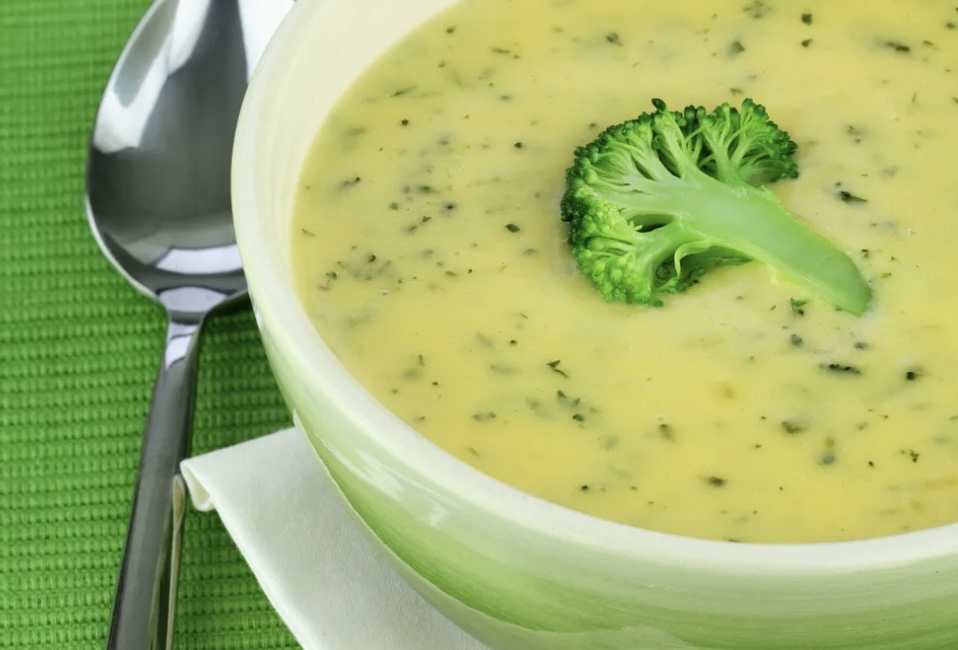
Makes 6 – 8 servings
Ingredients:
2 Tbsp Canola Oil
1 Cup Chopped Sweet Onion (about 1 medium)
1 Clove Garlic, crushed
½ tsp dried Thyme or 1-1/2 tsp fresh Thyme
2-1/2 Cups Chicken Broth
6 Cups Fresh Broccoli, Chopped (about 1 medium head)
2 Cups Non-Starchy Potatoes, Sliced (about 2 medium)
1 Cup Carrots, Sliced (about 2 medium)
2 Cups 1% Low Fat Milk
Salt (1/8 to ¼ tsp) and Freshly Ground Pepper to taste
Optional Garnish:
1 Tbsp dollop of fat free, plain yogurt, salt, and pepper, toasted whole grain bread, or croutons
Heat oil in large dutch oven (soup pot) on medium high heat. Add onion, garlic, and thyme. Sauté until golden. Add 2-1/2 cups chicken broth and the rest of the vegetables. Cover, lower the temperature, and let simmer about thirty minutes, or until vegetables are tender. Add the milk. Let the mixture cool down a bit, then puree in a blender, food processor, or better yet – with no muss or fuss, a Cuisinart Smart Stick. Puree to your desired consistency.
“Song for Autumn” by Mary Oliver
- At October 25, 2024
- By Katherine
- In Aging-In-Place, Articles, News
 0
0

In the deep fall
don’t you imagine the leaves think how
comfortable it will be to touch
the earth instead of the
nothingness of air and the endless
freshets of wind? And don’t you think
the trees themselves, especially those with mossy,
warm caves, begin to think
of the birds that will come — six, a dozen — to sleep
inside their bodies? And don’t you hear
the goldenrod whispering goodbye,
the everlasting being crowned with the first
tuffets of snow? The pond
vanishes, and the white field over which
the fox runs so quickly brings out
its blue shadows. And the wind pumps its
bellows. And at evening especially,
the piled firewood shifts a little,
longing to be on its way.
Raspberries: A Sweet, Tart & Versatile Fruit Treat With Amazing Health Benefits
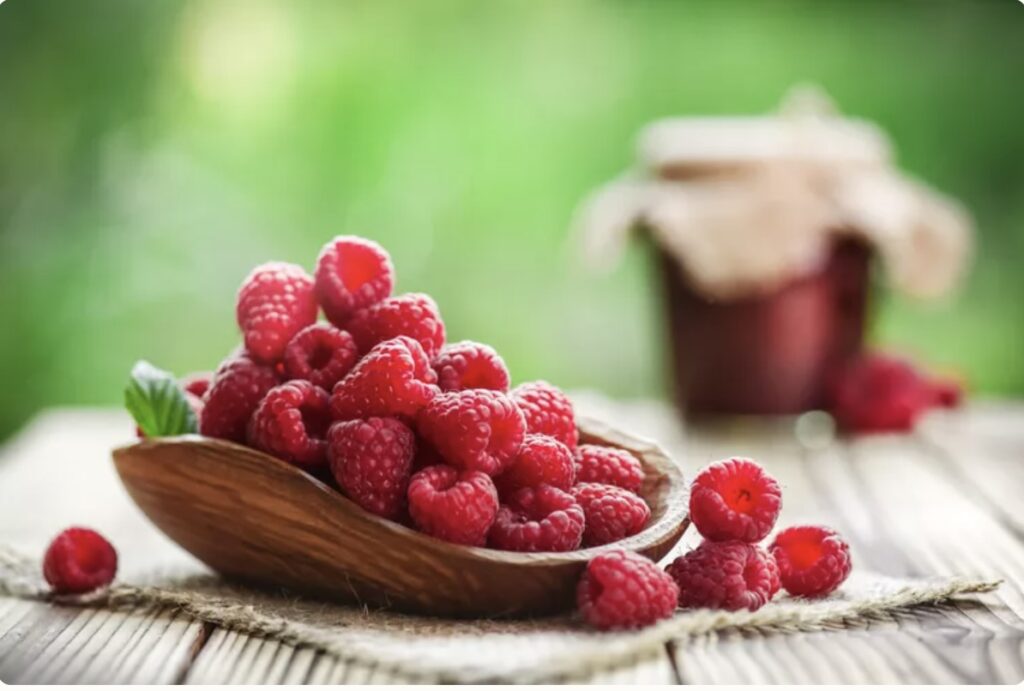
Raspberries – Another amazing food I discussed with renowned health journalist, Daryl Austin, in his USA Today column. One of the tastiest and most popular fruits, raspberries earn $432 million in sales in the U.S. – and they’re virtually everyone’s favorite fruit, Daryl said in USA Today on July 31. They are certainly my favorite!
Raspberries’ intense sweet, tart, and juicy flavor literally bursts in your mouth. Their complex flavor profile makes them versatile in either savory or sweet recipes. I throw them in salads, and add them to my yogurt, and oatmeal. For me, the most delicious way to eat raspberries is right off the bush, or locally from my Farmers Market. When they’re not in season, I buy them frozen.
My favorite dessert for guests is fresh raspberries with dark chocolate shavings. It’s an elegant and delicious way of keeping your guests happier and healthier.
Raspberries, and their close relative blackberries, are two of the most nutritious fruits on the planet. Containing 91% water, one cup of raspberries is only 64 calories, with a whopping 8 grams of fiber, a rare fiber to calorie ratio – which means they fill you up with very few calories. You can eat them to your heart’s content. In fact, the more you eat, the better!
Most of the phytochemicals in raspberries contribute to their color. The riper and redder they are, the more nutrients, antioxidants, and anti-inflammatories they contain. On a raspberry bush, some berries are redder than others. It’s because those more intensely colored berries experienced more stress than the other berries on the same bush. A plant’s phytochemical level is increased by stress. For instance, when a berry is exposed to more sun, disease, and bugs, they must synthesize more phytochemicals to protect themselves (which is why organic ones have slightly more phytochemicals – they aren’t protected by pesticides).
Those phytochemicals, when concentrated intensifies their color, flavor, and scent. They are mostly anthocyanins (purple), which help protect against cardiovascular diseases and neurodegenerative diseases such as Alzheimer’s, MS, vascular dementia, and Huntington disease, mainly through their antioxidant and anti-inflammatory properties.
Ellagitannins not only help reduce cardiovascular diseases, and neurodegenerative syndromes (listed above), they help prevent cancer. They uniquely improve your gut’s microbiome which has profound effects on your health.
In fact, the nutritional value of raspberries is vast. Rather than just turn on healthy genes, raspberries will also turn down unhealthy genes. They “modulate” or “affect” 119 genes in healthy ways, turning on healthy genes and turning down unhealthy genes in ways that have profound effects improving your health, increasing longevity by improving your immune system and reducing the incidence of not only the chronic metabolic syndrome (a cluster of conditions occurring together, which increase your risk for diabetes, stroke and heart disease), but also acute infections like viruses and others.
Green Beans: One of the Most Versatile Vegetables
- At July 26, 2024
- By Katherine
- In Aging-In-Place, Articles, News, Recipes
 0
0
As I said in an interview with USA Today’s Daryl Austin, green beans are among the most widely grown and enjoyed vegetables across the world. They’re versatile for many reasons: their flavor is not overwhelming so they can fit in more recipes than most, they can be eaten cooked or raw, they’re finger foods – easier for little ones (and adults) to enjoy. And they’re inexpensive, to boot.
Green beans’ health benefits are vast. They’re filled with vitamins, minerals, and 72 different phytonutrients – antioxidant and anti-inflammatory nutrients that help reduce the risk of disease. They contain a whopping 2.7 grams of fiber for just 37 calories.
For all of these reasons, eat as much as you want, any time you want! My favorite green beans are French green beans, or “Haricots Verts.” I find them the most tender and flavorful. Here’s my favorite green bean recipe:
Warm Potato Salad with Haricots Verts Smothered in a Lemony, Tarragon Mayonnaise
Serves 6 to 8
Mayonnaise Dressing:
1/4 Cup Mayonnaise, preferably made with Canola or Olive Oil
Grated Zest and Juice of 1 Lemon
2 Garlic cloves (or more, to taste), mashed
1 Tbsp (or more, to taste) Tarragon or other fresh herb, such as Dill
Salt and Pepper, if desired (no salt needed)
Vegetables:
1 quart Haricots Verts (French Green Beans), tough end removed
1 pint small New Potatoes (or any potato), cleaned but not peeled, cut into 1″ pieces
2 Red Bell Peppers, roasted (if desired) and chopped
1 pint cherry tomatoes, sliced in half (and/or any other seasonal vegetables)
1 Bunch (about 4 – 5) Green Onions, chopped
Prepare the dressing in a bowl large enough to fit the salad ingredients by mixing the mayonnaise, the lemon, garlic and fresh herb of your choice. Place in refrigerator to keep chilled.
Steam or boil the haricots verts slightly (in a small amount of water) until they are al dente (firm, but not hard, with resistance to the bite). Drain and immediately place in the bowl of mayonnaise. Toss to coat with mayonnaise dressing. Put the bowl back into the refrigerator to halt the cooking process.
Slice the small potatoes in half or quarters, depending on their size. Boil the potatoes for about 5 or 10 minutes, until tender when pierced by a fork. Drain and place in the bowl with the mayonnaise and haricots vert. Toss to coat with the mayonnaise dressing. Place in the refrigerator.
Roast the red bell peppers if desired, chop, and add to the mix. Chop the white part of the green onions, cut the cherry tomatoes in half, and place in bowl with the other vegetables; toss.
Heat Stroke Deaths & Emergency Room Visits at Record Levels: 13 Tips for Preventing Heat Illness, Heat Stroke & First Aid
- At June 19, 2024
- By Katherine
- In Aging-In-Place, Articles, News
 0
0
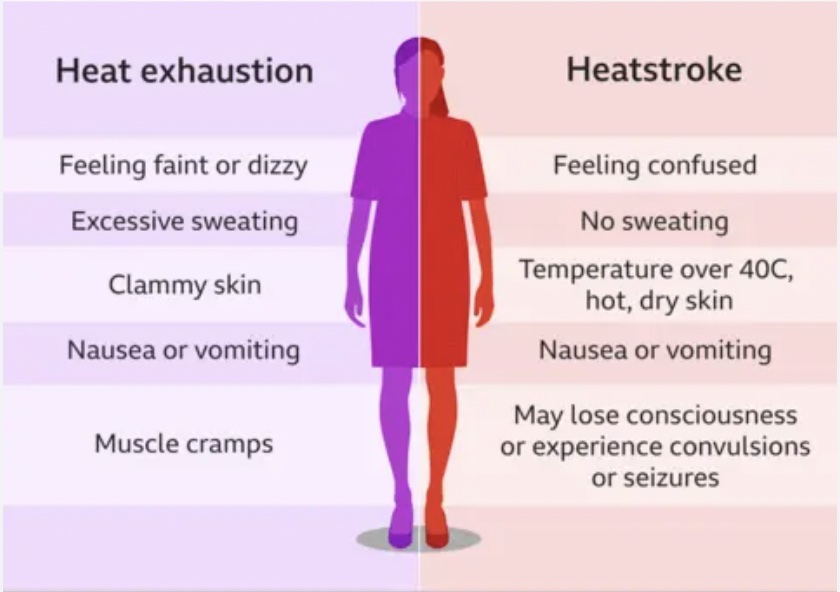
This article appeared in The Huffington Post
Unprecedented heat waves across the United States have significantly increased heat stroke deaths and heat illness emergency room visits significantly over previous years.
I’ll never forget volunteering at the Marine Corps Marathon’s Finish Line Emergency Tent. The experience was horrifying and exhilarating at the same time.
I spoke at the marathon’s scientific conference the day before, and the other speakers — dedicated medical specialists who came from around the world — were amazing. Their expertise and dedication saved many lives at the marathon.
But what is seared in my brain forever are the exhausted runners stumbling into the emergency tent on the verge of death: Forced into ice-water baths, several doctors surrounding each tub struggling to get IVs into the runners to save their lives. It was heat stroke.
The runners were frighteningly disoriented: delicate young women and huge, strong men were screaming, cursing, defecating (the room reeked); they couldn’t remember their own names, let alone birth dates. After some time in the painful icy water with IVs injecting life saving fluids, once their body temperatures were lowered, they were whisked off in waiting ambulances to nearby hospitals. Everyone survived that day.
The most essential nutrient: water
Nutrients don’t only come in the form of food; water is the most important, and often most forgotten, nutrient. You can last for some time without food, but only days without water. Your lean body mass contains about 70 percent to 75 percent water, with fat containing much less: about 10 percent to 40 percent water. Because of increased muscle mass, men’s and athletes’ bodies contain more water than bodies with proportionately lower muscle and higher fat, such as non-athletic women, people who are overweight and people who are older.
Water is:
– The solvent for important biochemical reactions, supplying nutrients and removing waste.
– Essential for maintaining blood circulation throughout your body.
– The maintainer of body temperature. As you exercise, your metabolism and your internal body temperature increase.
Water carries heat away from your internal organs before serious damage occurs, which can lead to heat stroke, and even death. The heat travels through your bloodstream to your skin, causing you to sweat. As the sweat evaporates, this allows you to cool off and maintain a safe body temperature, optimal functioning and health.
Daily water intake must be balanced with losses to maintain total body water. Losing body water can adversely affect your functioning and health. Once you start feeling thirsty, you’ve probably lost about 1 percent of your body water and are dehydrated. With a 2 percent water loss, you could experience serious fatigue and cardiovascular impairments. It’s important to note that individual fluid needs differ depending on your sweat rate, the environmental temperature, your clothing, humidity and other factors.
Heat Illness First Aid
Hydration Tips For Preventing Heat Stroke
As summer temperatures hit, here are a number of important tips.
– Drink enough water to prevent thirst.
– Monitor fluid loss by checking the color of your urine. It should be pale yellow and not dark yellow, too smelly or cloudy.
– For short-duration (less than 60 minutes), low-to-moderate-intensity activity, water is a good choice to drink before, during and after exercise.
– Any time you exercise in extreme heat or for more than one hour, supplement water with a sports drink that contains electrolytes and 6 percent to 8 percent carbohydrates. This prevents “hyponatremia” (low blood sodium), which dilutes your blood and could also lead to serious impairment and death.
– Begin exercise well-hydrated. Drink plenty of fluids the day before and within the hour before, during and after your exercise session.
– Avoid alcohol the day before or the day of a long exercise bout, and avoid exercising with a hangover.
– Consider all fluids, including tea, coffee, juices, milk and soups (though excluding alcohol, which is extremely dehydrating). The amount of caffeine in tea and coffee does not discount the fluid in them, even if they have a slight diuretic effect, according to the most recent report by the National Research Council’s Food and Nutrition Board.
– Eat at least five cups of fruits and vegetables per day for optimum health, as they all contain various levels of water and the all-important nutrient potassium.
– During exercise, for those who experience high sodium losses, eat salty foods in a pre-exercise meal or add an appropriate amount of salt to sports drinks consumed during exercise. Orange juice is high in potassium. Dilute juices, such as V-8 or orange juice, 50/50 with water so that the drinks are 6 percent carbohydrate solutions (the same as sports drinks), which will empty from your stomach quicker than 100 percent juice (juices are naturally 12 percent solutions), allowing the electrolytes and water to quickly reach your heart and organs.
– Following strenuous exercise, you need more protein to build muscle, carbohydrates to refuel muscle, electrolytes to replenish what’s lost in sweat, and fluids to help rehydrate the body. For two hours or less exercise, yogurt and water are excellent choices. For strenuous or long distance exercise of more than two hours, low-fat chocolate milk is a perfect, and natural replacement that fills those requirements.
– You can also replace fluid and sodium losses with watery foods that contain salt and potassium, such as soup and vegetable juices.
– For long hikes, when you’ll need food, dried fruit and nut mixtures contain high amounts of potassium, sodium, protein, carbs and calories — though continue to drink plenty of water.
– To determine your individualized need for fluid replacement: During heavy exercise, weigh yourself immediately before and after exercise. If you see an immediate loss of weight, you’ve lost valuable water. Drink 3 cups of fluid for every pound lost; use this figure to determine the amount of water (or sports drink) you’ll need to drink before and during your next exercise session to prevent weight/water loss in the future.
Strawberries! Strawberries! Strawberries! Health Benefits & Katherine’s 8 Favorite Strawberry Recipes

Take a look at the USA TODAY article featuring Katherine discussing strawberries’ health benefits, written by the amazing Daryl Austin.
You must try one of these strawberry recipes!
Dark Chocolate Dipped Strawberries
Katherine’s Crepe-Style Swedish Waffles with Fresh Strawberries
Fresh Strawberry Salad with Goat Cheese, Toasted Almonds, and a Balsamic Vinaigrette
Strawberry Cheesecake Parfait
Strawberry Sherbet in 5 Minutes
Icy Strawberry Granita
Strawberry Soy Milk Smoothie
Strawberry Rhubarb Soup
Swedish Midsummer: Feasting the Night Away!
Midsummer is a holiday celebrating the summer solstice, when the sun reaches its highest position in the sky – the longest period of daylight. After lengthy winter months of what seems like never-ending darkness, sun starved revelers join much of humanity in nonstop festivity. It is popular in most of the northern United States and other northern countries around the world, like Sweden.
Established in the 4th Century, Midsummer Eve begins on a Friday night between June 19th and June 25th, a national holiday in many countries. It continues into the following Saturday, Midsummer Day, and usually lasts the whole weekend long. It has become the national excuse for the biggest parties of the year.
I am most familiar with the Swedish version, having celebrated along with my relatives at our summer island cottage over the years. Beginning Friday morning, families and friends gather to set the scene for their feast, called a smörgåsbord (pronounced smer-gose-boord).
A smörgåsbord is a Swedish invention and is literally a table of open-faced sandwiches. Today’s Smörgåbord has evolved into an exhaustive buffet-style spread.
Our family celebrated it with friends, going back generations, on the largest outdoor veranda, on the tiny island, Grimsön. We’d connect rickety unmatched tables side by side on the veranda, with barely enough room for the many chairs to crowd around them. Each family brings their special dishes until the table groans under the weight of the food and drink. We are lucky that the town bakery was owned by a family among us, so we enjoyed the freshest and most authentic Princesstårta (Princess Cake) in the land.
There are appetizers, salads, main courses and desserts. The dishes signal summer’s first harvests: Strawberries grown in the country, freshly clipped dill, and tender root vegetables, especially “new” potatoes, which are freshly harvested young, small, potatoes. Fresh, locally caught fish are featured – usually salmon and herring from the icy Baltic – with other seafoods, too.
One of the traditional foods on our Midsummer table, in the province of Häsingland, is literally rotten fish. A kinder description would be fermented herring, called surströmming. It’s a traditional dish from northern Sweden that arose during the 16th century when Sweden had a salt shortage. Today, the fish has become infamous for its stinky smell, yet enthusiasts praise it. I reluctantly tasted it one year, and to put it politely, I am definitely not one of those enthusiasts!
Desserts feature the first harvest of succulent strawberries (jordgubbar), blueberries (blåbär), lingonberries (lingnon), and cloud berries (hyortron), typically with whipped cream. Sweden brims with berries, like other northern parts of the world, the only fruits that can be grown in colder climates. Princesstårte, a traditional Swedish cake with layers of sponge cake and whipped custard cream, topped with a dome of marzipan, is often featured … A once in a life time treat.
The traditional drinks are shots of Aquavit, along with a rousing “Rah! Rah! Rah!” from the merrymakers, and Swedish beer, accompanied by the Swedish drinking song, “Helan Går,” translated as “Bottoms Up!”
There are cured ingredients as well. Pink rolls of cured salmon (gravlax) are wrapped around dill sprigs, with yellow mustard sauces and peppercorns alongside. There is fresh and grilled herring caught nearby, and coarse salt, as well as dill and other pickles. Eggs, cheese and cream are included, too.
Preparation of our Midsummer feast always began a couple of days before. A local fishermen would roll fresh-caught salmon stacked in rickety wheelbarrows into town going door to door displaying his wares for inspection by anxious cooks.
My grandmother would carefully examine the fresh-caught salmon. In a solemn transaction, she chooses the final selection with an abrupt, “This will do!” The fisherman nods, satisfied, and carries the fish to the kitchen where it lands on the counter with a thud. The smell of the sea enters the house with the day’s catch. The best knife has been sharpened for this moment: the start of Midsummer Eve cooking.
I believe Swedish food is the original nouvelle cuisine. The Swedes have always used superior, locally sourced ingredients for their dishes and meals. Unfussy, it is centered around seafood, local vegetables, fruits, and 100% coarse rye breads.
This year’s Midsummer Eve is June 21, 2024, with the celebrations, and activities continuing on Midsummer Day, June 22, 2024.
The National Geographic describes “Everything you need to know about the Summer Solstice,” including how Fairbanks, Alaska celebrates the holiday with their “Midnight Sun Game.” The game typically begins around 10:30 p.m., continues straight through midnight, and often lasts as late as 2 a.m. Fairbanks, which is located only 160 miles south of the Arctic Circle, gets up to 22.5 hours of summer daylight.
The successful midsummer never-ending lunch party involves flowers in your hair, dancing around a maypole, singing songs while drinking schnapps, and downing a whole load of traditional Swedish foods from the year’s first harvest, like strawberries, and delicate new potatoes. All in all, a grand day out.
How to make your own crown of flowers. All you need is an inexpensive supermarket bouquet of flowers, thin wire, and thread! The flower crowns are worn by children and adults alike.
Besides the crown of flowers, there are many fun activities for children for understanding and celebrating the summer solstice, like making cosmic suncatchers, sundials, sun prints, summer resolutions, and bucket lists.
In Washington, DC, the Smithsonian Museums mark the first Saturday of every summer-“Solstice Saturday”-by staying open late, hosting exhibits, programs, and activities. “Solstice Saturday” includes free parties, programs and performances throughout the day and night June 24. Several museums on the National Mall will have extended hours, with three museums staying open until midnight. Visitors who stay late can explore exhibitions, join a garden dance party or enjoy activities on the Mall. including games and performances throughout the day and night. On Saturday, June 22, 2024, the Smithsonian’s Hirschhorn Museum hosts Hofstra University’s “Astronomy Festival on the National Mall” from 6 to 11.
Investigate your community for Midsummer events nearby.
Traditional Swedish Midsummer Recipes and Menus
New Potatoes with Fresh Dill
6 Savory Toppings for Crunchy Swedish Hard Bread
Gravlax with Mustard Sauce
Cucumber Salad with Fresh Dill
Katherine’s Crepe-Style Swedish Waffles with Succulent Strawberries
Princesstårta
(Instead of making your own Marzipan Dome, you can buy one pre-made)
This Weekend’s Batch Recipe: Katherine’s “I Can’t Believe There’s No-Meat Chili” Step-By-Step
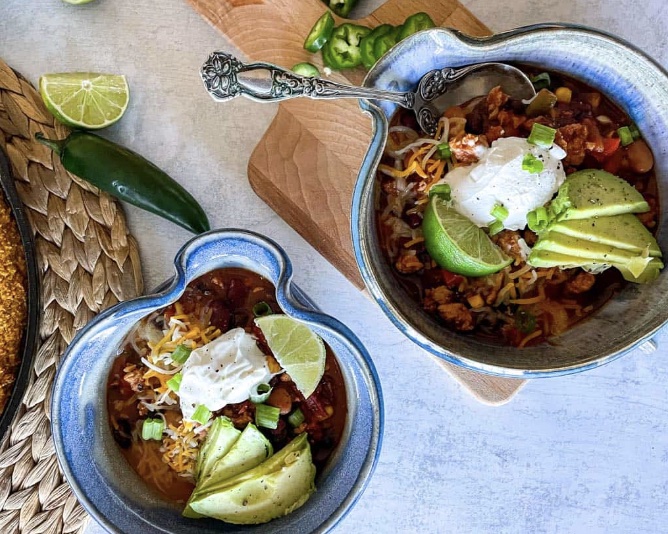
When The Washington Post food section was considering a feature story about my new book, Diet Simple, among the recipes they tested was my chili. I made the cut, and I, and my book, Diet Simple, were featured on the front page, no less!
The Washingtonian Magazine loves it too. And here it is for you
A recent client told me it only took 20 minutes to put together. Try making this recipe a day ahead of time so the flavors and textures have a time to develop. But there is no need, as it’s delicious just after cooking. I love this simple, quick chili recipe. It’s meatless but you don’t miss the meat because it’s so flavorful and the meat-like texture is deceptive. You should use the amount of garlic or chili powder that appeals to you. I like it hot and spicy! I double the recipe, using a whole pound of dried black beans, so I have plenty for the week. I use this dish as a lunch or dinner alongside a green salad. I also serve it at parties as a dip next to my fresh tomato salsa, nonfat Greek yogurt, and guacamole. It’s perfect rolled up in a tortilla or stuffed in a taco with some reduced fat cheese.
Serves 4 as a main course, 8 or more as a dip or topping
3/4 Cup Water (To Hydrate the Bulgur)
1/2 Cup Bulgur (Cracked Wheat)
1 to 2 Tbsp Olive or Canola Oil, or more
1 Large Onion, Chopped
3 Large Garlic Cloves, minced – more or less – to taste (optional)
1-1/2 Tbsp Hot Chile Powder
1-1/2 Tbsp Chipotle Chili powder
A dash of smoked paprika, called “Pimentón,”
A pinch of Cinnamon
1 Large Fresh Green Bell Pepper, chopped roughly
1 can of chopped Italian Plum Tomatoes, drained (optional, to taste)
1 lb. dry Black Beans, or two cans of black beans, whichever is preferred
2 Seeded Jalapeño Peppers, chopped (optional)
Salt and Pepper to Taste
Place the bulgur in a microwavable bowl. Add the boiled water. Place in microwave for 3 minutes. Keep in the microwave while it fluffs up.
Meanwhile, add oil to the pan. Once the oil is hot, add the spices and sauté the spices while constantly stirring, for a minute or two on low heat. Be careful the spices don’t burn.
Add the onions and green bell peppers to the same pot, stir over medium heat until soft, 15 or more minutes. Add the chopped fresh green bell pepper and onions. Sauté on medium heat while stirring. Cook until soft. Add the bulgur and beans. No need to cook further. Adjust seasonings to your preference.
Step-By-Step Instructions
Start by Fluffing the bulgur/cracked wheat, so that it’s ready to pour in the pot when you need it, saving time.
While using canned beans is fine, I like using dried black beans to enhance the flavor by adding carrots, celery, and onions to the pot. If you like garlic, add whole cloves, too. Add salt if using dried beans, according to the package directions. But if you use canned beans instead of dried, no salt is necessary.
Once the beans have been cooked slowly (to preserve the whole bean), remove the vegetables.
If you used dried beans, pour the beans into a bowl while you wash the pot. This way, you only need to use one pot for the recipe – for fast and easy cleanup.
In a clean pot, add the oil. When the oil is hot, add the spices. Sauté over low heat. Stir constantly so the spices don’t burn.
Chop green bell peppers so that they remain chunky. Chop the onions the traditional way.
Sauté the chopped vegetables, and stir. Use medium heat until they are soft, or al dente. 15 minutes or more.
When the veggies are cooked, strain any water out of the bulgur/cracked wheat, and add the bulgur, and the beans, to the pot. Taste. If you like it as is, you won’t need tomatoes. But if you think you might like to add chopped tomatoes, strain them to remove the liquid. But don’t add too much, or the tomatoes will be all that you taste.
No need to cook further.
I love this chili as a dip. I always add Fage Nonfat Greek Yogurt (with salt and pepper) on the side. It’s cool flavor complements the spicy flavors – to perfection!
No one has ever guessed that there is no meat. I don’t tell anyone it is meat free until they are finished and rave about it. They are always surprised when I tell them that it is meatless.
When offering a dish to guests or family, NEVER use the words “healthy,” “low calorie,” or “high fiber.” Though all of those things are true, those are YUCK words! If someone tells me to taste something, as in, “Try this, it’s good for you!” it sounds unappetizing, and even I’m turned off.
The way to describe anything you offer to others is “It’s delicious! You’ll love it!”
Hash Browns Have Never Been Easier, Healthier and Tastier: Katherine’s Easy & Simple Recipe
For breakfast, lunch or dinner, and with any accompaniment your heart desires, these hash browns are versatile, nutritious, and to die for. I love potatoes. Just about everyone loves them too. But the internet and low carb followers have, inaccurately, described potatoes as non nutritious and high calorie. At 160 calories for six ounces, I dispute that claim. These are unfounded rumors preventing you from eating one of the most delicious and nutritious foods on the planet.
In fact, potatoes are so filled with essential nutrients, they’ve kept countless cultures alive and healthy for thousands of years. Think of countries with colder climates like Scandinavia, Finland, Russia, Ireland, that couldn’t grow citrus or many other fruits and vegetables. Potatoes were virtually their only source of Vitamin C and potassium. An infamous example of how critical the potato has been in the past, is how the devastating loss of them caused The Great Irish Famine in mid-1800s-Ireland. At the time, one third of the Irish people subsisted on potatoes. The loss of the potato crop left around 1 million people dead from starvation or disease, with another million fleeing the country.
Today, potatoes are recognized as a subsistence crop for developing countries with high levels of poverty, hunger, and malnutrition. Because they’re inexpensive and easy to grow, readily available, accessible, high quality, nutritious, and stable, potatoes are the perfect food to feed the world’s 822 million undernourished people.
The bottom line: It’s a mistake to underestimate potatoes.
Katherine’s Hash Browns
I developed this recipe because I love crispy potatoes, but I don’t want the excess calories of frying them in a lot of oil, or without sacrificing their flavor and texture. It’s an easy recipe, and clean-up’s a breeze.
Serves 4 as a Side Dish
Ingredients:
2 or more large Russet or Yukon Gold Potatoes – enough to cover your pan with 1/3″ thickness when laid out on the size-of-your-choice non-stick frying pan
2 Tbsp Canola or Peanut Oil
Salt & Pepper to taste
Herb of Your Choice, ie, Rosemary
A Dollop of Nonfat, Plain (Fage) Greek Yogurt sprinkled with Kosher Salt and Pepper, on the side
Scrub the potatoes clean, then grate the potatoes using the largest holes on a large box grater. I don’t peel them, but that’s your option. Once they’re grated, to remove excess starch, put the grated potatoes in a bowl with cold water to soak them, then place them in a large colander, pouring cold water over them, until the water is clear. Squeeze as much water out of them as possible, using a cotton towel or cheese cloth.
Once the potatoes are relatively dry, add the oil to the frying pan over medium heat. When the oil is hot, swirl it around the pan, and add the potatoes. When they are laid out across the pan, they should be about 1/3″ thick.
Add salt and pepper and any herb of your choice.
Don’t stir the potatoes. Flip them when they are golden brown. Continue to cook them until they are golden brown on both sides.
Serve them on four plates with scrambled or fried eggs. Add a bit of smoked or grilled salmon, chicken sausage of your choice. Any veggie would be delicious along side them. Fresh tomatoes, sautéd mushrooms, onions, sweet orange or red peppers. Have them alongside your “Original Boca Burger” and whole wheat bun. With ketchup? To each his own!
I always have potatoes with a dollop of nonfat, plain Greek yogurt. I prefer Fage. I sprinkle salt and pepper on the yogurt, and use the yogurt the way you might use sour cream. You won’t know the difference, I promise
And more…
Corned Beef with Caramelized Cabbage, Roasted Potatoes, and Carrots: Happy St. Patrick’s Day!

The traditional St. Patrick’s Day meal? Of course, it’s “Corned Beef and Cabbage.” And it usually has carrots and potatoes thrown in. It’s a beautiful dish that satisfies three of the five taste elements: sweet, salty, and umami (the other two are bitter and sour). Umami is an elusive flavor that is rarely present in a meal. It can be described as a pleasant “brothy” or “meaty” taste with a long-lasting, mouthwatering, and coating sensation over the tongue. In this meal, the corned beef is the source of umami. This meal is irresistible, and one of the only occasions when I’ll breakdown and eat red meat.
Now, you may be thinking, “Katherine, isn’t red meat bad for you?” It absolutely is! But my motto is, “every food fits.” You see, you’re protected from the damaging effects of the red meat by the array of vegetables containing antioxidant, and anti-inflammatory nutrients in the meal. They help neutralize the negative aspects of the cured, red meat. Plus, if you rarely eat red meat, that makes a huge difference, too.
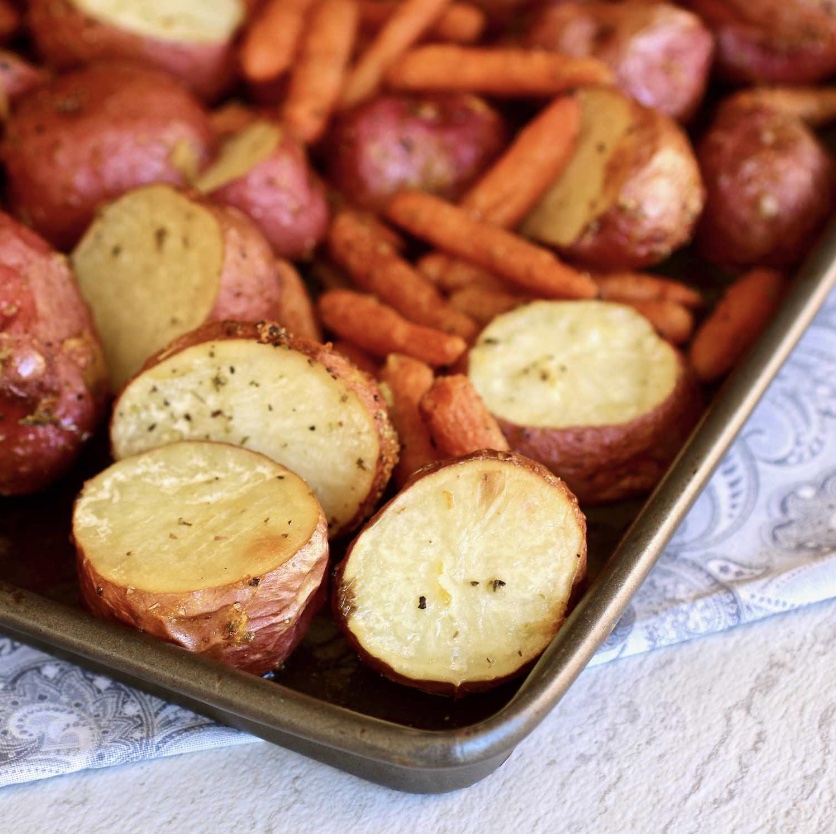
If you’d rather not eat red meat, roasted salmon or chicken can be delicious substitutes.
I maximize the natural flavors and sweetness in the vegetables by stir frying the cabbage, and roasting the carrots and potatoes until they are golden brown and caramelized. Both stir frying and roasting exposes them to open heat. That heat caramelizes the sugars within, and mellows strong flavors into rich, multilayered perfection, adding depth and complexity to the overall dish.
When vegetables are prepared using these methods, they taste like candy, I promise. They are definitely tastier french fries!
Clink my links for the easy “recipes,” that are, actually, more like simple preparation instructions, with only one pan to clean up!
4 Recipes For The Best Darn Mexican Feast Ever – Perfect For Parties!
Katherine’s Especially-For-Parties-And-Game-Days Spicy Layered Bean Dip
A layered dip can be made any way you wish, with each ingredient and recipe personalized to your tastes. This is the way I like to do it!
Everything except my Spicy “Re-Fried” Bean Dip and my “Chili Non Carne” can be bought pre-made at the grocery store these days. You can usually find Fresh Salsa and even Guacamole in the refrigerator sections. But I have great, quick and simple recipes (below) for both, if you are so inclined.
Instructions for Layering:
Use the amount of each layer that you prefer, or the amount that fits your bowl. Layer the ingredients in the order you like best. Use the leftovers as delicious lunches and dinners for days to come!
Ingredients:
Spicy “Re-Fried” Bean Dip OR Katherine’s Chili Non Carne (see both recipes below)
Low Fat Cheddar or Monterey Jack Cheese, Grated
Mild Guacamole, at least triple the recipe (below)
1 Quart Plain, Nonfat Greek Yogurt (I like Fage the best)
Fresh Salsa (see recipe below)
Sliced olives (optional)
Use a glass dish, if available, so all the beautiful layers are visible. First, pour the hot or warm Bean Dip or the Chili Non Carne into the dish, then sprinkle grated low fat cheddar or jack cheese (if this is the next layer, it will melt). Next, spread a double or triple recipe of the Guacamole, then a layer of Plain Greek Nonfat Yogurt over that. Top with the Fresh Salsa. If desired, decorate with sliced olives.
Katherine’s Spicy “Re-Fried” Beans
This is a delicious, spicy crowd pleaser!
Ingredients:
1-1/2 Cups Dry Red Kidney Beans or Black Beans (use about 4 cups, if the beans are already cooked or if they are canned)
1 to 2 Tbsp Canola Oil
1-1/2 Onions
1 Tbsp Salt (only 1 tsp, to taste, if using canned beans)!
3 Cloves Garlic, Minced, to taste
1 Cup Peeled, Chopped Italian Plum Tomatoes (You can buy them already chopped)
2 Small Jalapeño Peppers, seeded and minced (wear gloves!)
2 Tbsp Lemon Juice
1/4 tsp Cinnamon
1/8 tsp Cloves
Top with Low or Reduced Fat Grated Monterey Jack or Cheddar Cheese, if desired
In a very large skillet over a low flame, heat the canola oil and sauté remaining onion, chopped, and the garlic until soft and golden; about 15 minutes. Add the spices and jalapeño peppers, simmer a few more minutes. Next, add the tomatoes and lemon juice.
Pour the canned beans, together with their liquid, into the seasonings and stir. Over a low flame, and stirring often, cook the beans together with the seasonings until the mixture is quite thick, but still moist. Time will vary, but it could take as long as 45 minutes. If the beans become too dry, just add a little water. Sprinkle with the grated cheese, if desired. Use as a dip, as a side dish or in a burrito.
If using canned beans, start the recipe at paragraph #2 and use less salt.
Adapted by Katherine Tallmadge from The Vegetarian Epicure by Anna Thomas
Katherine’s You-Won’t-Belive-There’s-No-Meat Chile
(excerpted from Diet Simple: 195 Mental Tricks, Substitutions, Habits & Inspirations (LifeLine Press)
Try making this recipe a day ahead of time so the flavors and textures have a time to develop. I love this simple, quick chili recipe. It’s meatless but you don’t miss the meat because it’s so flavorful and the meat-like texture is deceptive. You should use the amount of garlic or chili powder that appeals to you. I like it hot and spicy! I double the recipe, using a whole pound of dried black beans, so I have plenty for the week. I use this dish as a lunch or dinner alongside a green salad. I also serve it at parties as a dip next to my fresh tomato salsa, nonfat Greek yogurt, and guacamole. It’s perfect rolled up in a tortilla or stuffed in a taco with some reduced fat cheese.
Sometimes I make the recipe without tomatoes. Give it a taste and decide for yourself. You don’t want the tomatoes to take over the flavors. I don’t use garlic.
Serves at least 6 as a main course, or many more servings as a dip
1 Cup Water (To Hydrate the Bulgur)
1/2 Cup Bulgur (Cracked Wheat)
1 to 2 Tbsp Canola Oil
1 Large Onion, Chopped
1 Large Fresh Green Pepper, Chopped in Large chunks
2 Seeded Jalapeño Peppers, minced
3 Large Garlic Cloves, Minced (more or less) – Optional
1-1/2 Tbsp Hot Chile Powder
1-1/2 Tbsp Chipotle Chili
Dash of smoked paprika, called “Pimentón,”
Pinch of Cinnamon
1 lb. dry Black Beans, or 2 lbs. canned (whichever is preferred)
1 28- oz. Can Chopped Italian Plum Tomatoes, drained, to taste
Salt and Pepper, to taste
Place the bulgur in a microwavable bowl. Add the boiled water. Place in microwave for a couple of minutes. Keep in the microwave while it fluffs up. Set aside.
Heat the oil. Sauté the onions, green peppers, jalepeño peppers, and garlic in the oil over low heat in a large pot until soft, 15 or more minutes.
Add the spices to the sautéd vegetables and cook a little longer – perhaps a minute.
Add the bulgur and beans. Simmer slowly over low to medium heat until flavors are well blended and vegetables are cooked to the desired consistency … a few minutes or longer, if desired. Adjust seasonings to your preference. Since many canned items were used, additional salt will probably not be needed.
Add the chopped tomatoes
NOTE: Best if made in advance or, ideally a day in advance to meld the flavors
Katherine’s Spicy Fresh Mexican Salsa
excerpted from Diet Simple: 195 Mental Tricks, Substitutions, Habits & Inspirations (LifeLine Press)
Fresh salsa – Pico de Gallo – doesn’t really need a recipe. These are proportions I have found pleasing. But you may want your salsa, with more or less onions, more spice, sweeter (use half tomatoes and half watermelon), parsley instead of cilantro… The options are endless.
Ingredients
1 large onion, peeled and chopped (about ½ pound)
2 lbs. fresh tomatoes, peeled, seeded and chopped (start with about 3-1/2 lbs.) (Use canned tomatoes, if good tomatoes aren’t available) NOTE: I don’t bother peeling or seeding!
3 – 4 jalapeño peppers (1 – 2 ounces), to taste
¼ cup chopped fresh cilantro
½ tsp salt, or to taste
3 – 4 Tbsp fresh lime juice or the juice from 1 – 2 limes (optional. I often skip the limes)
Add the onion to the tomatoes. Finely chop 2 of the jalapeño peppers to start with. Taste. If you desire more heat, add 1 – 2 more jalapeños. Mix in the cilantro. Add the salt depending on your taste. Mix in the lime juice.Simple Guacamole
Katherine’s Basic Guacamole
There a a million recipes for Guacamole. You can keep it mild, or make it hot by adding hot peppers. Throwing in fresh salsa makes it chunky and yummy, too.
12 Servings
Ingredients
2 ripe avocados
1/3 cup chopped fresh cilantro
2 Tbsp lime juice
¼ tsp salt, or to taste
freshly ground black pepper, to taste
Cut avocados in half lengthwise and pull out the pits. Scoop out the meat. Place ina medium bowl and mash, keeping some large chunks. Mix in the cilantro, lime juice, salt and pepper. Taste to adjust seasoning.
Now, relax and have some FUN!
Michel Richard’s Chicken, Mushroom & Barley Soup

4 servings (or more if you add more mushrooms)
Nothing could be simpler or more delicate than this dish. The flavors are rich and earthy, and contain that elusive fifth flavor, umami. It contains all the elements of a complete meal. It’s nutritious and filling. I feel honored that Michel Richard provided this recipe for Diet Simple. It fits perfectly as something you can cook, store in the refrigerator and eat for several meals. A favorite of anyone who tastes it. Using my method for slicing the chicken, it will be delicate and moist, instead of dry, like most chicken breast dishes.
Ingredients:
2 Tbsp Canola Oil
2 Small Onions, Peeled and Diced
1 Pound Thinly Sliced Mushrooms
2 Quarts Unsalted Chicken Stock (defatted)
2 Tablespoons Light Soy Sauce
6 Tbsp Pearl Barley
4 Cloves Garlic, peeled and minced
Salt and Freshly Ground Black Pepper to taste
About 1 pound chicken, boned, skinned, and sliced thin (see instructions)
Heat the oil in a heavy, large saucepan over medium-low heat. Once the oil is hot, add the onion, cover, and cook until translucent, for about ten minutes – or more, while stirring occasionally. Add the mushrooms. Increase heat to medium-high and cook uncovered until lightly browned, for about five minutes, stirring occasionally. Add the chicken stock, soy sauce, barley and garlic. Simmer gently for about 45 minutes to cook barley and blend flavors. Season with salt and pepper. (This can be prepared ahead, cooled, covered and set aside at cool room temperature for up to four hours or refrigerated for several days.)
To make perfectly tender slices of chicken for your soup, put the chicken breast in the freezer. When it is half frozen, place it on a cutting board. Using a sharp knife, slice as thinly as you can – across the grain. It’s virtually impossible to cut raw meat this thin.
Once the vegetables and barley are cooked, turn off the heat. Toss in the thinly sliced chicken breast. It will be cooked throughout, and opaque, in less than a minute. Ladle into four or more soup plates.
Warning! Losing Muscle is Dangerous: Muscle Loss Starts in Your 30s, and While Using Ozempic: Gain Muscle With 7 Easy Steps
- At February 15, 2024
- By Katherine
- In Aging-In-Place, Articles, News
 0
0
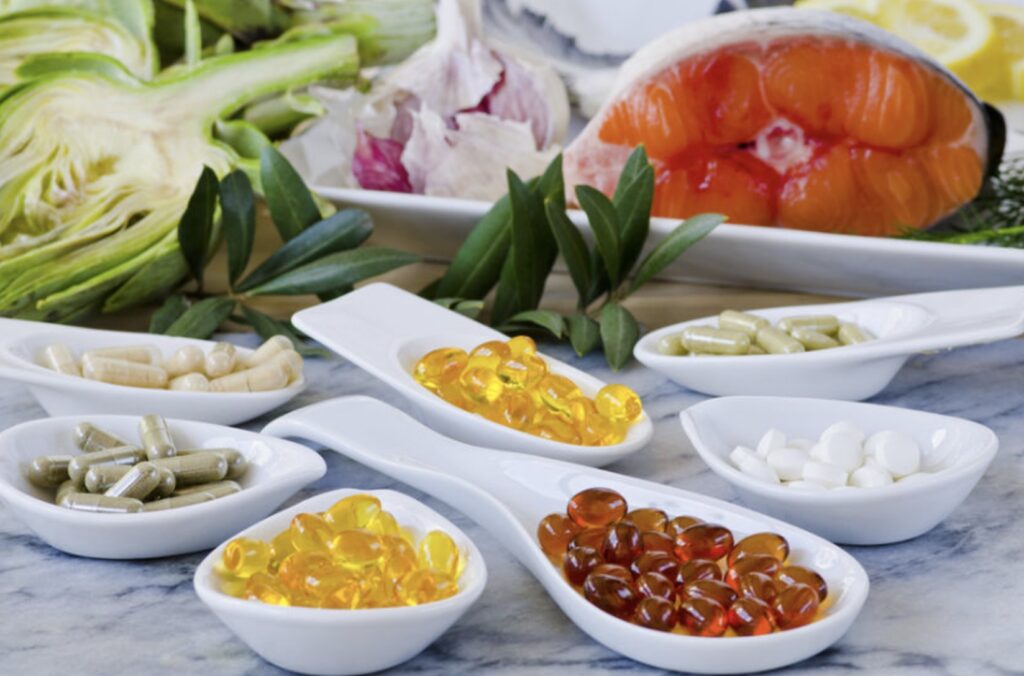
Muscle Loss is a new and dangerous side effect of using Ozempic, but it can easily be prevented. It’s not just about aesthetics! Muscle loss can ruin your quality of life, devastate your health, and increase your risk of early death. It is linked with chronic inflammation, a compromised immune system, an increased incidence of infections, diabetes, cancer, heart failure, respiratory failure, renal failure, and sepsis (blood poisoning). It leads to aging, and becoming frail prematurely. You’re more likely to fall, become hospitalized, and unable to perform activities of daily living.
In other words: Don’t lose muscle!
STRATEGIES
1)Vitamin D increases muscle mass, strength, power, and velocity, while lowering body fat. It’s important, though, to take the right amount. And that’s where your doctor comes in. The only way to determine what amount of Vitamin D supplement you need is to get regular blood tests. Everyone’s requirements are different, and should be individualized. Studies show blood levels of 50 to 70 are necessary for good health. I recommend you take 1,000 to no more than 4,000 IU daily.
2)Collagen peptide supplements have been shown to boost muscles and lower body fat. It has other benefits, too. For decades, it’s been established that collagen supplementation increases bone strength, density, and mass; improves joint stiffness/mobility, and functionality, while reducing pain. These aspects are associated with bone loss due to aging, and damage caused by strenuous physical activity. It also enhances your skin. This review of studies to date has found collagen lessens skin aging by minimizing wrinkles, lowering skin roughness, boosting moisture, strengthening skin, its layers, and building up skin collagen. More good news is that studies show taking oral collagen has no side effects. So you have nothing to lose, and everything to gain (except body fat) by supplementing your eating with collagen.
4) Yogurt daily, with its essential probiotics, burns fat, reduces insulin resistance, and increases muscle. Eat any kind of lowfat yogurt every day. The more, the better, if you’re eating fat free or low fat versions (the whole milk yogurts will increase your cholesterol levels). Greek yogurt contains very high protein levels for very few calories.
5)Protein is essential your entire life, but especially when you’re over 30, or when you’re losing weight quickly – an inevitable situation for most people taking Ozempic. Eating enough high protein foods is essential because losing muscle not only endangers your health, you become a thinner flabbier self! Internationally recognized professional organizations recommend protein intakes that are double the current Recommended Dietary Allowances (RDAs). In fact, joint recommendation by the Academy of Nutrition and Dietetics, Dietitians of Canada, and the American College of Sports Medicine are that we eat 1.2 to 2.0 grams of protein per kg of body weight each day (that’s 0.54 grams per lb. of body weight each day – to – 0.9 grams of protein per lb. each day).
The practical: One way to figure out if you’re getting the right amount of protein is looking at the Nutrition Facts Panel of foods that you buy and adding up the grams of protein in a meal and in a day. But since you’re not going to always eat food with labels, another measure is that one ounce of animal protein, and one egg, contains 7 grams of protein. Whole grains have about 2 grams per ounce (1 slice of bread or 1 ounce of cereal). 1/2 cup of legumes contain about 8 grams of protein.
High Protein Foods versus Protein Supplements: Protein supplements significantly increase blood glucose after exercise, when compared with high protein food. Both conditions increase blood insulin after exercise, which helps convert glucose to energy you can use. High protein foods are digested slower than protein drinks. That means your body is able to absorb more protein from one meal, according to this study in the Journal of The International Society of Sports Nutrition. Established research suggests that your body cannot absorb over 25 to 35 grams per meal, or eating occasion, depending on the person. Hint: Eat yogurt through the day to fill these requirement.
Timing: To be absorbed and to increase muscle effectively, eat high protein foods 3 to 4 times a day. Also, eat a protein-containing meal immediately before, or immediately after exercise. Eating your meal before or after exercise can depend on your personal preference, your schedule or how the meal makes you feel. For instance, does eating the meal before exercise make you feel too full and hamper your efforts? If so, try a smaller meal, or switch to eating the meal after exercise, instead of before. I recommend eating nonfat or fat free Greek yogurt as snacks between meals so your body can absorb more through the day.
Meal composition: In order for protein to be absorbed and to get the desired muscle increase and fat decrease, your meal must be mixed with a carbohydrate containing food. Yogurt is perfect. It’s a mix of carbohydrate and protein, with Greek yogurt being higher in protein than traditional European styles, plus your daily probiotic requirement. Its low calorie content, as long as it is low fat, means you can eat it throughout the day to satisfy the timing requirements.
6)Weight training is critical for gaining muscle. That doesn’t mean you need a complicated regimen, or to go to the gym. A simple weight training routine is all you need. All it takes is a few minutes of your time, and about five different exercises to gain muscle in your major muscle groups. The Mayo Clinic has guidelines you may find helpful. Weight training doesn’t have to be hard. You can search for routines you can do in your own home, that don’t require any equipment, and only take up the amount of time you’re comfortable with. Look up Women’sHealth Magazine’s “28 best bodyweight workout videos to try now, from 5-50 minutes – without equipment.” There are many easy exercise routines on YouTube, too, including this 5 minute routine.
7)Cardio: Cardio burns body fat, while weight training doesn’t. Losing body fat is just as important as gaining muscle. Both cardio and strength training are important, but have separate benefits. Cardio burns body fat, it lowers blood cholesterol, pressure, glucose, and reduces the risk for cancer. There are many reasons why I strongly recommend walking over anything else for your daily cardio. a) Walking is just as effective as running or anything vigorous, b)Virtually everyone knows how to walk, c) You are less likely to injure yourself while walking as opposed to running, or anything else that’s more vigorous, d) You can walk anywhere, whether you’re shopping, in a museum, at the zoo, in your neighborhood, or on a beautiful path in nature, e) You get to enjoy the outdoors, fresh air, and sunshine, f) Chores are a necessity of life, and they usually require walking more than usual. Plus you get more gold stars for doing your chores, g) You can actually get somewhere with your feet, an under-appreciated body part. Studies show that walking for a purpose, like getting somewhere or doing chores, is more likely to be sustained.
Another of Katherine’s strong recommendations is to wear a pedometer to track yourself. More than a decade of studies show monitoring your steps motivates you to walk more (of course, I knew this fact in the 1990s and was recommending pedometers way way back then!). Simply put: the more you walk, the more fat you burn.
How to begin a walking routine? The key here is to prevent excessive soreness and injuries. With that in mind, do not walk more than usual immediately. Get a baseline number of steps first. Once you’ve established your baseline – the average steps you’re already taking – use your highest step day – and walk that amount daily until you’re comfortable consistently. Once you’ve experienced no soreness with that level of walking, start increasing slowly. Try adding just 1,000 steps (about half a mile), and keep that up for a few days or more, until it gets too easy. Then I recommend you increase by 1,000 steps every few days to a week. Don’t worry. You’ll have plenty of time to achieve your steps goal.
There is no need to spend more than $50 on a pedometer. The clip-ons are better and more accurate than ones you wear on your wrist. Clip-ons actually measure steps, while the bracelets and watches measure your wrist movements. One of my clients got 10,000 steps a day … by knitting! 30 years ago, I recommended an Omron pedometer, and I still do today. You can find them on many websites

Medicinal Magical Mushrooms: One of the Most Significant & Potent Foods-As-Medicine
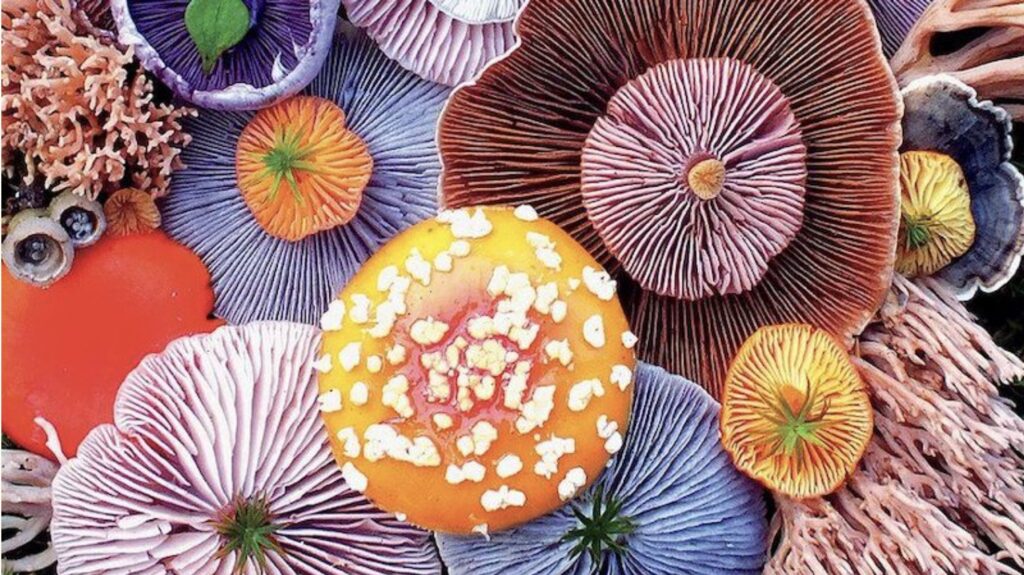
Compared to any other food or supplement, mushrooms’ health and healing benefits are spectacular and unique. And not only do they significantly boost your health, they are natural healers of the environment, too.
“Mushrooms possess antioxidant activity, anti-hypertensive activity, hypocholesterolemic activity, liver protection, as well as anti-inflammatory activity, anti-diabetic activity, anti-viral activity, and anti-microbial activity,” according to this scientific review of all studies to date.
“Mushrooms have been consumed since our earliest history. Ancient Greeks believed that mushrooms provided strength for warriors in battle. The Romans perceived them as the ‘Food of the Gods.’ For centuries, the Chinese culture has treasured mushrooms as a health food, an ‘elixir of life’,” according to this study, which is a great source for learning edible mushroom facts, function, and history.
Healing mushrooms may be edible – or not! If you look up each one, you’ll find which is which. You can buy the exotic, edible types at Farmer’s Markets, or specialty shops. While some healthy ones are safe, you wouldn’t want to eat them because they are bitter and tough. Those are consumed through capsules, extracts, sprays, powders, teas, and syrups, instead.
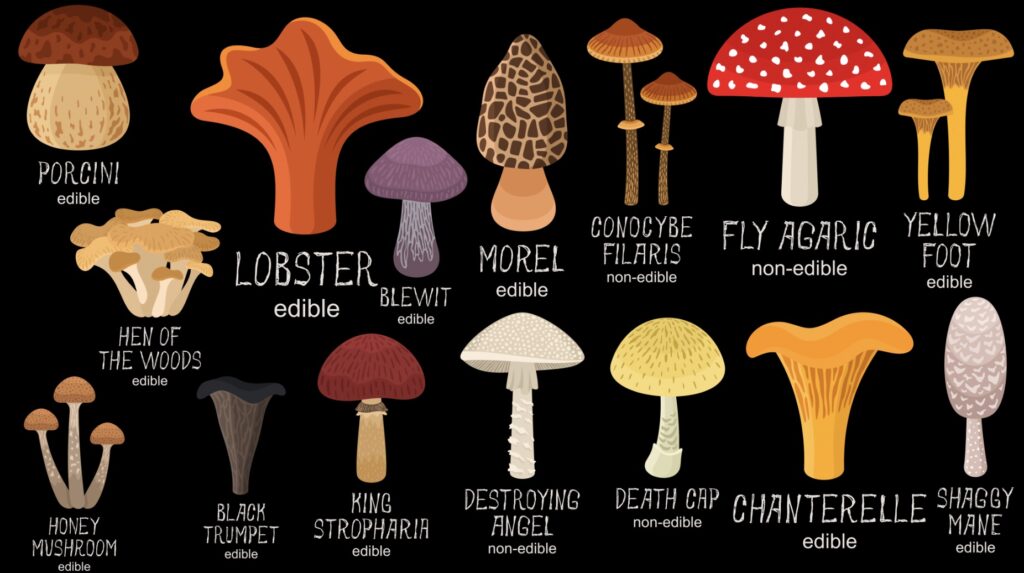
An ardent and renowned mycologist, and mushroom enthusiast for 30 years is Paul Staments. A big and burly Grizzly Adams of a man, he is a pioneer in the cultivation of edible and medicinal mushrooms, and is credited with the discovery of at least five new mushroom species. He’s been featured in scientific papers, and in the fascinating documentary, “Fantastic Fungi,” in which he and a host of scientists excite you – in stunning technicolor – about, well, fantastic fungi! I watched it, mesmerized, while suffering in my dentist’s chair! It’s a must-see for anyone interested in health or the environment.
Staments founded HostDefense.com, which has great information about various mushrooms’ health benefits, and where you can buy mushroom powders and supplements. He also founded Fungi.com, with products that help you grow your own mushrooms, go mushroom hunting, and buy identification guide books. You can even buy mushroom “grow kits” for beginners and those with more advanced experience. I’m experimenting with growing Reishi and Lion’s Mane mushrooms. They are two of the most beneficial mushrooms.
According to a recent study in the journal, Foods, Reishi Mushrooms boost the immune system. They have anti-viral effects, reduce inflammation, and oxidation, potentially reducing the risk for a host of illnesses, including infections, cancer, heart disease, and diabetes. Reishis tend to be tough and bitter, so they’re consumed in supplemental capsules, powders and teas. But just like any supplement, which are concentrated versions of a food or nutrient, they are not recommended in high doses. Eating whole foods is always ideal, but since Reishis aren’t really edible, and supplements provide a concentrated version, be careful not to overdo.
Lion’s Mane may regenerate nerves and enhance brain activity, thus improving memory and other nervous disorders. Luckily, they are edible, and sought after as a culinary delicacy.
While mushrooms have been used medicinally for centuries in the Far East, scientific research on their specific nutrients and benefits is in the early stages in the West. Initial studies are promising, with many benefits already established and recognized by the scientific community.
In Sweden, my home country, mushroom foraging is a national past time. The most desired mushroom there is the chanterelle.
We find their golden clusters in the vast forests, then we run home with our brimming baskets and sauté them. I’m sure they have a host of health benefits, but I don’t really care, because they’re just darn tasty!
Recipe: Find as many chanterelles as you can. Brush them to remove soil. Slice in quarters. If you wish, parboil them for a minute to remove dirt and (possibly) worms. Sauté in hot canola oil until golden brown. Add herbs like thyme or rosemary to the sauté. Sprinkle with salt and pepper. If you like, top with a little grated parmesan cheese. Et Voilà! We serve them on toast.
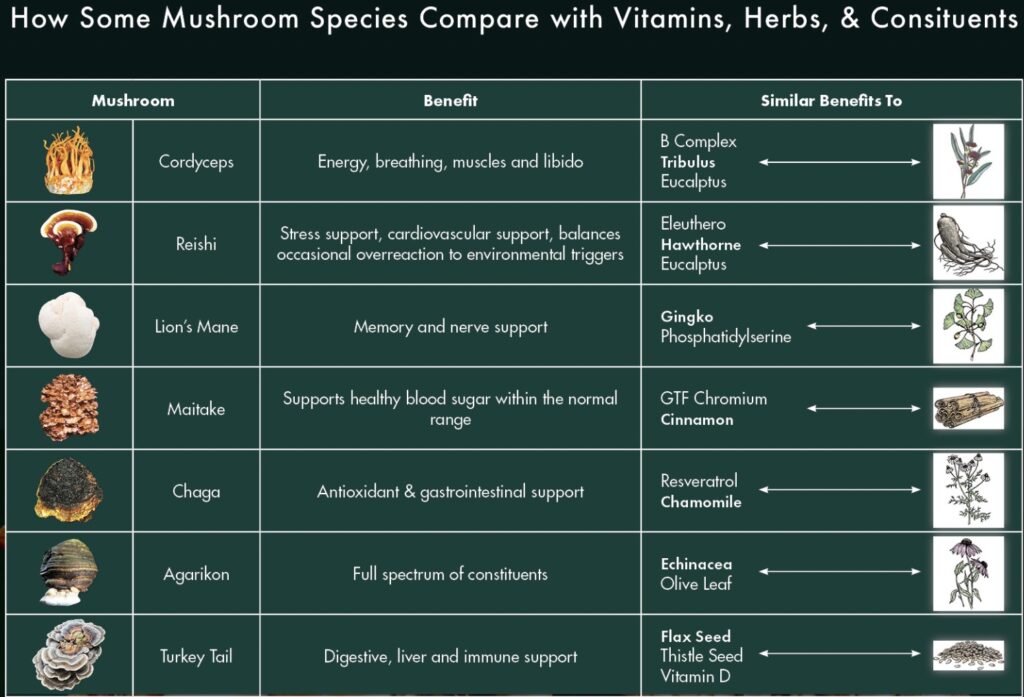
The following is a scientific chart of medicinal mushrooms’ extensive and established benefits.
(At the bottom of this chart, see * , and ** , to help us understand this chart’s terms and definitions better):
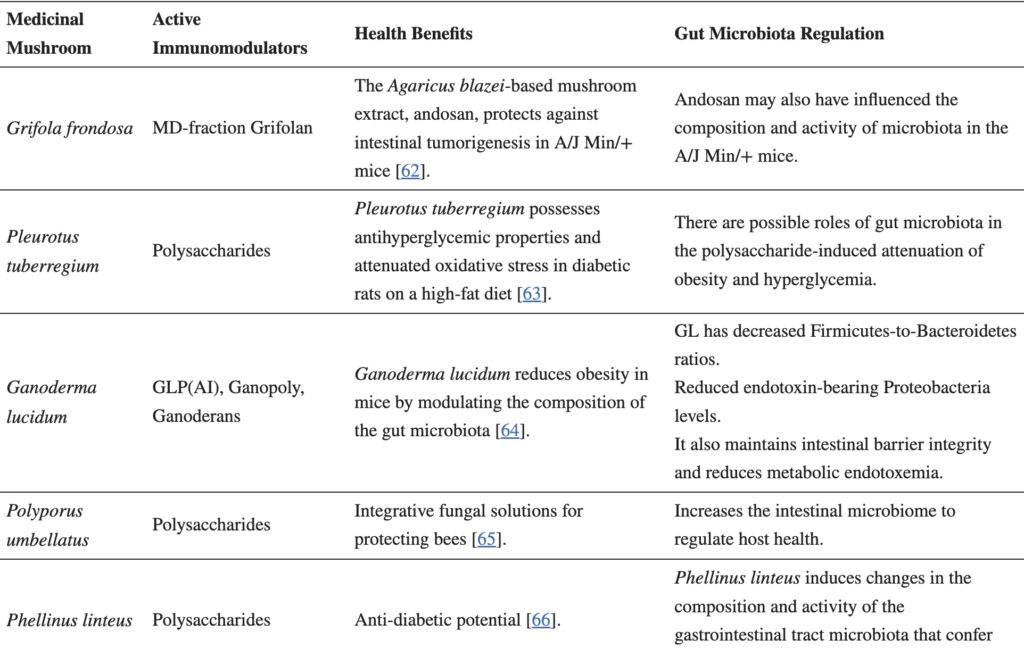

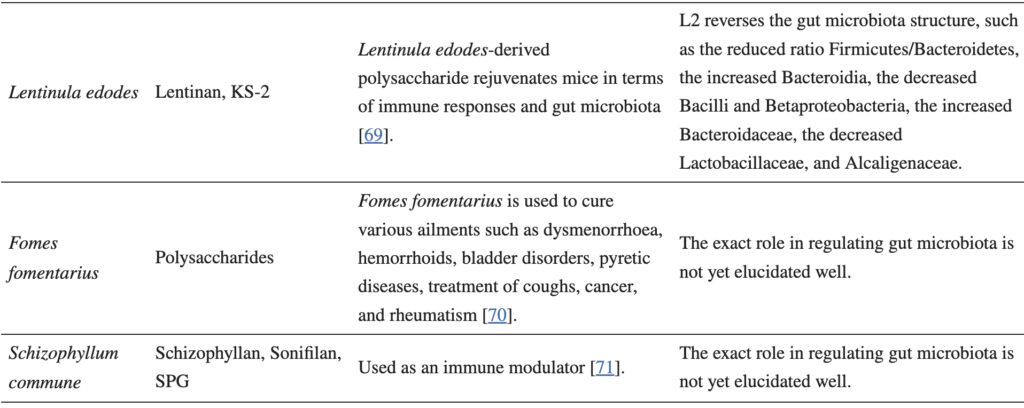
*To translate this chart, consider the “Host,” as YOU when it describes their health benefits of the gut’s microbiota. **Google the scientific name to get the mushroom’s name in English. For instance, “Grifola Frondosa” is “Hen-Of-The-Wood.” “Ganoderma Lingzhi” are “Reishi.”
Mushrooms Clean Up Pollution – Goodby Oil Spills, Plastics & Poisonous Drinking Water

While my dentist was fitting me for three crowns (bad teeth genes), and while I was thankfully distracted from the drilling in my mouth, I learned how mushrooms can absorb and reduce pollutants. “More than 20% of global deaths can be traced to pollution-related health complications. Pollution impacts almost every aspect of our existence, the living, and nonliving components of the environment,” according to this review of plastic pollution. Mushrooms are remarkable, alien-like creatures. They even clean up oil spills!
Mushrooms are the perfect solution for so many reasons. They eliminate the need to transport toxic materials to treatment sites. They’re environmentally friendly, need only a small amount of space, and are a low cost solution. The work can be done with less skilled people, and can be used easily wherever needed.
Mushrooms are a simple tool for cleaning up the environment. Using mushrooms is a biological approach to “clean technologies,” which emphasizes maximum production, reduced waste generation, treatment, and conversion of waste into a useful forms. These clean technologies focus on the use of biological methods for the remediation of waste. Mushrooms improve the environment in a vast number of ways. They absorb like sponges, and their enzymes break down a wide range of environmentally persistent pollutants:
1) Plastic pollution has been a persistent and global problem for more than half a century. Various health conditions such as thyroid dysfunction, obesity, diabetes, and reproductive impairment have been attributed to plastic pollution, according to this review in Frontiers in Marine Science. Plastic pollution comes from synthetic fibers, paints & coatings, tire tread abrasion, cosmetic products, packaging, and more. According to some, we have become a plastic society.
2)2,4-Dichlorophenol (DCP), a pervasive pollutant, DCP is a deadly byproduct of improper disposal in the manufacture of various consumer products, drugs, pesticides, food additives, fuels, and industrial solvents. It’s found in water, air, and soil. Agricultural use of pesticides, insecticides, and herbicides are the main source of water pollution.
3) Oil spillages into the environment have become one of the biggest problems in the last century. It is notoriously resistant to clean up efforts, with oil spills, tank leakages, and waste water disposal the major sources, according to this review in 3Biotec. Oil pollution has been implicated with higher risks for asthma and other respiratory conditions. It weakens the immune system, causing a multitude of conditions, including a higher rate of various cancers, and poor pregnancy outcomes. This study, in Saudi Arabia, with its preponderance of crude oil pollution, found certain strains of mushrooms significantly degraded crude oil. The researchers found they helped preserve the environment and cleaned crude oil in the soil.
4) Healthier protein sources have been developed using mushrooms, with their naturally-occuring enzymes. They eliminate the need for environmentally and health damaging sources of food proteins, for instance, industrial animal farming. Mushrooms have a low cost of production, an abundant supply, and thousands of bioactive phytonutrients (phyto is Greek for plant), compounds beneficial for health.
Mushroom Recipes
Michel Richard’s Chicken, Mushroom and Barley Soup
excerpted from Diet Simple: 195 Mental Tricks, Substitutions, Habits & Inspirations
4 servings (or more if you add more mushrooms)
Nothing could be simpler or more delicate than this dish. The flavors are rich and earthy, and contain that elusive fifth flavor, umami. It contains all the elements of a complete meal. It’s nutritious and filling. I feel honored that Michel Richard provided this recipe for Diet Simple. It fits perfectly as something you can cook, store in the refrigerator and eat for several meals. A favorite of anyone who tastes it. Using my method for slicing the chicken, it will be delicate and moist, instead of dry, like most chicken breast dishes.
Ingredients:
2 Tbsp Canola Oil
2 Small Onions, Peeled and Diced
1 Pound Thinly Sliced Mushrooms
2 Quarts Unsalted Chicken Stock (defatted)
2 Tablespoons Light Soy Sauce
6 Tbsp Pearl Barley
4 Cloves Garlic, peeled and minced
Salt and Freshly Ground Black Pepper to taste
About 1 pound chicken, boned, skinned, and sliced thin (see instructions)
Heat the oil in a heavy, large saucepan over medium-low heat. Once the oil is jot, add the onion, cover, and cook until translucent, for about ten minutes – or more, while stirring occasionally. Add the mushrooms. Increase heat to medium-high and cook uncovered until lightly browned, for about five minutes, stirring occasionally. Add the chicken stock, soy sauce, barley and garlic. Simmer gently for about 45 minutes to cook barley and blend flavors. Season with salt and pepper. (This can be prepared ahead, cooled, covered and set aside at cool room temperature for up to four hours or refrigerated for several days.)
To make perfectly tender slices of chicken for your soup, put the chicken breast in the freezer. When it is half frozen, place it on a cutting board. Using a sharp knife, slice as thinly as you can – across the grain.
Once the vegetables and barley are cooked, turn off the heat. Toss in the thinly sliced chicken breast. It will be cooked throughout, and opaque, in less than a minute. Ladle into four or more soup plates.
Eggs Scrambled with Mushrooms, Onion, Garlic, and Sweet Cherry Tomatoes
This is a great meal for me any time of the day – quick, easy, and delicious
Servings: 1
Heat a teaspoon to tablespoon of canola oil in a shallow nonstick pan. Saute 1/4 chopped sweet onion and a smashed garlic clove over medium heat until almost soft. Add a handful of tomatoes to the pan (or any other vegetables you happen to have such as chopped spinach or peppers) and cook for another 5 minutes. In a separate bowl, whisk 2 eggs. Pour eggs into the pan containing the onion, garlic and tomato – add 1 ounce lite cheese (I love the Trader Joe’s. It melts beautifully and tastes even better). Stir continuously until eggs are cooked. Pour over toasted whole rye bread.
NOTE: Use canola oil instead of olive oil. Olive oil is more likely to burn. It also loses all of its nutrients when you cook with it. Save it for drizzling.
URGENT: Nutrition for Cold, Flu & COVID is Crucial for Maximizing Your Immunity
- At January 11, 2024
- By Katherine
- In Articles, News
 0
0
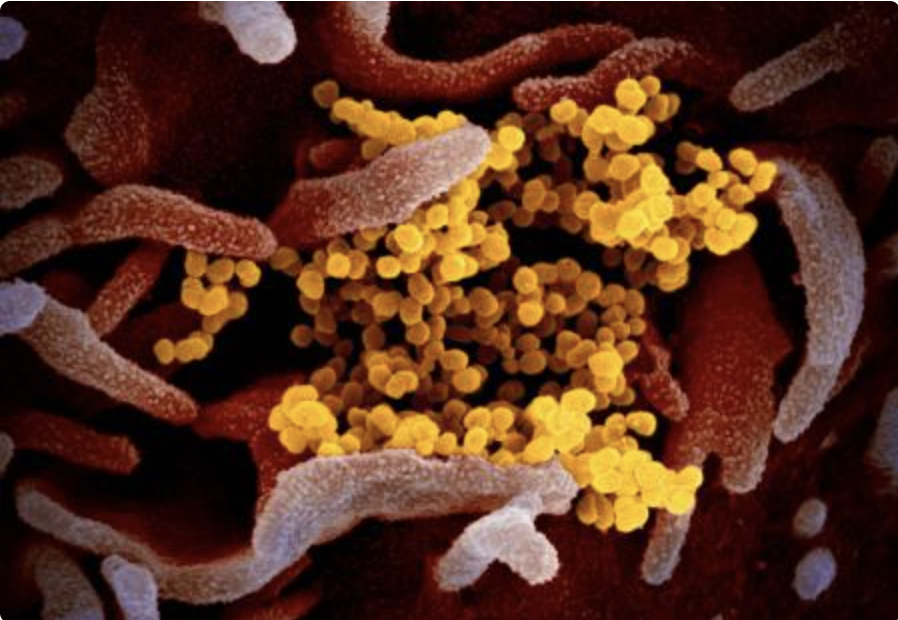
This scanning electron microscope image shows SARS-CoV-2 (yellow), the virus that causes COVID, emerging from the surface of infected cells (pink) grown in the lab. Credit: National Institute of Allergy and Infectious Diseases
It’s the height of COVID and flu season
Serious cases, hospitalizations, and even deaths, are increasing every day
Prevent yourself from succumbing by choosing the right foods and supplements. Studies have shown that making the following choices may lower the intensity, and the length, of your infections significantly. The nutrients in food work in two ways. They either fight infections by killing the virus itself, or by maximizing immunity, that is, activating your immune system’s army of disease-fighting warrior cells.
Nutrition is paramount, especially NOW
COVID cases are peaking!
Both flu and COVID cases have increased precipitously, and are even overlapping. Being infected with flu and COVID at the same time is the worst case scenario
Avoid catching an infection in the first place
Winter is the prime cold and flu season. You’re more likely to be indoors and closer to others. Practice prevention strategies: Keep up to date with your vaccinations, stay at home if you’re sick, wash your hands regularly (while reciting the alphabet), cover your face when sneezing or coughing.
“Cold and flu viruses survive better and are more transmissible if it’s cooler and if there’s lower humidity,” said Dr. Aubree Gordon, infectious disease expert at University of Michigan, in a National Institutes of Health newsletter.
CRITICAL FOODS and NUTRIENTS
Click the links below to learn more detailed and * amazing * facts about the following foods and nutrients
Probiotics: Foods that naturally contain probiotics are yogurt and kefir. They improve your gastrointestinal tract’s microbiome, that is, its microscopic “ecosystem” of cells. Those cells are called microbes. Your health is dependent on these beneficial microbes and the more you have, the more likely you can recover from infections, especially colds, the flu, and COVID. Yogurt and kefir are the only foods that have been studied for decades, and that scientists have found improve your health consistently and significantly. I recommend you eat one or the other EVERY DAY for superior health (If you’re not Middle Eastern, kefir may be an acquired taste).
Vitamin D is the most crucial supplement because it is found in virtually no foods. Today’s lifestyle prevents an adequate blood supply to prevent acute and chronic diseases. I recommend that you take 1,000 to 4,000 IUs daily, and that you ask your doctor to check your blood values regularly. A Vitamin D prescription, as opposed to over-the-counter, will be purer, and is usually covered by insurance.
Vitamin C: Considered a “water soluble” vitamin, a delicate vitamin category (versus “fat soluble”) that is easily destroyed if your high vitamin C foods are not handled with care. You must avoid exposing them to light, heat, or air. Examples include Citrus fruits, peaches, sweet and hot peppers, papayas, pineapple, strawberries, broccoli, kiwi fruit, potatoes, Brussels sprouts, kohlrabi. It’s important to eat Vitamin C-rich foods. A vitamin C supplement cannot replace the nutrients whole foods. But, I recommend you supplement your diet with 500mg daily. Increase to 1,000mg when you have symptoms. This particular study recommends you take 8X that amount within 24 hours of symptoms. But studies have been inconsistent about the amount to take. At higher intakes, I recommend you take Vitamin C with some food. It may cause indigestion.
Omega-3-Fatty Acids: Marine sources are fatty fish, such as Sardines in sardine oil, mackerel, herring, salmon, anchovies. Flax seed, canola oil, and walnuts are great vegetarian sources, but especially flax seeds – though they must be ground, not whole. Your body cannot digest or absorb the seeds. If you don’t eat 12 oz. of fatty fish weekly, you will need to supplement your diet with 1,000mg daily. I recommend Nordic Naturals, with a lemon taste (and no fishy aftertaste!).
BEWARE!
Virtually all Omega-3 supplements on the market can do more harm than good, or at minimum, are less effective than claimed. Look at the fine print on the label:
- Add up the “Total Omega-3 Fatty Acids” and look at how many capsules you need to take to achieve a total of about 1,000mg daily,
- Don’t buy any supplement that contains Omega-6-Fatty Acid. it competes with Omega-3’s and your supplement will not only be useless, but dangerous. If too high, Omega-6’s cause inflammation, allergies, cardiovascular disease and the numerous conditions caused by inflammation,
- Only buy a supplement if the two Omega-3-Fatty Acids, DHA and EPA, are found in a 50/50 or 60/40 ratio – the same ratio found naturally in fish. But often, manufacturers take out most of the DHA and sell it separately, since it’s the most important Omega-3. This is a lose-win proposition. You lose, the supplement manufacturer wins.
Zinc: Oysters, lobster, crab, clams, fortified whole grain cereals, beans (legumes such as lentils, chick peas, black-eyed peas, soy beans, kidney beans, limas, pintos), turkey, whole grains such as buckwheat, whole wheat, cracked wheat (bulgur), oats, whole grain cornmeal, wild rice, yogurt, pine nuts, sunflower seeds, mixed nuts, peanuts. A zinc supplement of up to 75mg is recommended.
Selenium: Brazil nuts, seafood, organ meats.
Chromium: Grape juice is the highest source. Other foods include whole wheat bread, brewer’s yeast, orange juice.
Polyphenols: This family of phytonutrients (“Phyto” is the Greek word for plants) includes berries, cocoa, nuts & seeds, tea, fresh olive oil (polyphenols are NOT present if olive oil is more than one year old and it isn’t handled as recommended).
Phytonutrients: The Mediterranean Diet is loaded with these bioactive plant nutrients with extraordinary health benefits. Phytonutrients were first discovered in the mid 1990s, with a landmark study published in the New England Journal of Medicine. The foods that provide antioxidants and anti-inflammatory compounds fight, and sometimes prevent, every chronic illness known to man, like cancer, heart disease, diabetes, and much much more. Think of oxidation as being similar to rusting. Another example is, when an apple slice is exposed to air, it turns brown. That’s oxidation. By simply adding lemon juice, an antioxidant, oxidation is prevented, and the fruit’s flesh doesn’t turn brown. Inflammation occurs when a wound swells up, turns red, and hurts. It’s your body healing, a sign that your antibody warrior cells are at work. Normally, the wound heals, your warrior cells are no longer needed, and you return to your normal health. But inflammation can become chronic and doesn’t always help the body. In some diseases the immune system fights against the body’s own cells by mistake, causing chronic and acute disease. Phytonutrients, vitamins, minerals, but mainly a healthy diet and lifestyle, can prevent chronic inflammation and prevent or arrest serious disease. Phytonutrients, or phytochemicals, are found in plants and are concentrated in colors, scents and flavors. Just one piece of fruit or vegetable has at least 200 phytonutrients. The darker the color, the more phytonutrients. The more intense the smell, or flavor, the higher the content. Examples of phytonutrients, besides polyphenols, are flavonoids, alkaloids, carotenoids, isoflavones, thiophenes, terpenoids, tannins, lignins, anthocyanins, resveratrol.
We’ve known for 70 years that the healthiest diet on the planet is plant based, with the prime example being the Mediterranean diet. What we’ve been studying and learning since it was first discovered in the 1950s by Harvard Scientist, Ancel Keys, is how, and why it is so remarkable and, how it protecs you against disease. At this point, the best recommendation is: to be as healthy as possible, eat predominantly fruits, vegetables, nuts, seeds, whole grains. They provide the highest level of vitamins, minerals, fiber, and phytonutrients. And the lowest amount of the baddies.
No need to drink wine or alcohol. Fruits and veggies will give you the same nutrients
While you can’t overdose on nutrients when you obtain them from foods, you can overdose with supplements. Always remember my “Goldilocks Rule.” Too much or too little can be damaging. “Just right” is the name of the game in nutrition.
Call me if you have questions!
The Perfect Storm: Battling the Blizzard Bloat Blues

These days you may have noticed a subtle expanding of yours and your friends’ waistlines. Take consolation in knowing you are not the only ones suffering from… “BLIZZARD BLOAT,” that creeping up of body fat that has hit many of us recently, according to an informal survey of frustrated, and slightly fatter colleagues and friends.
In the animal kingdom, fattening up for the cold winter months is critical for survival. For human animals, that leftover caveman-instinct to gorge on fattening foods, and hibernate, just causes trouble
Though these old instincts are plausible as a partial cause of winter weight gain, there are more complex—and controllable—causes too. The most important involve decreases in sunlight, physical activity, increases in cravings, and comfort eating. It’s the perfect storm of factors that create the calorie imbalance leading to blizzard bloat.
The Perfect Storm
- Physical Inactivity. When it’s cold outside, we tend to exercise less and even cut back on subtle calorie-burning activities such as short walks, light outdoor chores. This lack of calorie burning may only add up to about 100 fewer calories per day, but a deficit of 100 calories every day, translates to a 3-4 pound weight gain during the winter months, and 10 lbs in a year,
- Perpetual Darkness. Most of us are affected by winter’s gray days, and sunlight deprivation. We need light so our brains have enough of the neurochemical, Serotonin. A decrease in seratonin can increase our chances of experiencing a low mood, and food cravings. A small percentage of people are particularly vulnerable. About 5 percent of the population become markedly depressed with Seasonal Affective Disorder (SAD).
- Cravings for Warm Comfort Foods. Being light deprived, and hibernating inside instead of getting outside and moving, reduces the happy chemicals in your brain, like endorphins, and serotonin. This can lead to increased cravings of fattening food. Studies show excess calories contribute more significantly than any other factor to the calorie imbalance causing blizzard bloat.
Strategies for Battling the Blizzard Bloat Blues

- Get some daily sunshine. You’ll feel refreshed and less bored if you walk outside, and your appetite may be more controllable. The amount of needed daylight varies for each individual. In general, the more the better. One hour daily in the morning, ideally at sunrise, is most helpful. If you’re not an early bird, several hours on the weekends may help make up for a lack of sun during the week. But the sun has to reach your eyes, so no sunglasses. If you don’t feel comfortable with the guidelines, or If going outside isn’t always an option, light therapy, also known as phototherapy, may help. Ask a mental health professional about the special lamps you can buy to make up for light deprivation. They work! Studies show they increase serotonin and help decrease depression in most people.

- Up your activity level. Just a little means a lot. During just one exercise bout (only 10 minutes), your brain releases the feel-good neurochemicals, endorphins and serotonin. They reduce pain, increase feelings of well-being, elevate your mood, and will help reduce cravings. If you’re regularly active, these benefits multiply. A brisk 30-minute walk – just as effective as running – three times a week relieves major depression just as effectively as an antidepressant in most adults. Of course, moving even more, gives you even more significant benefits.
- Hold on to your favorite dishes, just rearrange them a bit. In the winter, we tend to crave more fattening, warm, comfort foods, and fewer healthy cold foods, like salads. But your comfort foods don’t have to be fattening. My advice, which has been successful for me and my clients, is to continue eating your favorite foods, just change their balance slightly. It’s been well established that you can increase the volume and satisfaction of your meals and dishes – that is, you can eat more food for fewer calories – by simply incorporating veggies or fruits so they comprise at least 50% of the volume on your plate (eat them first to slow you down) or in your dish,
- Veggies and fruits are predominantly water. But because the water is incorporated into the food, as opposed to just a glass of water, the meal will empty from the stomach more slowly. The slower a food empties from the stomach, the more satisfied we are with it. With that in mind, all you have to do is incorporate water or broth into your main course to create a soup or stew, add veggies to a favorite stew or casserole, so that vegetables comprise half or more of the volume. Try having a simple veggie soup as a first course to any meal. Try this technique that makes veggies taste even better than French fries! These strategies – incorporating water, and adding fruits and/or veggies to your meals and dishes – allows you to enjoy your favorite foods. But it also means that you can eat more food for fewer calories. Studies show that, for each meal that you use this strategy, you save 100 calories, naturally – without even trying. That amounts to keeping off 10 lbs a year or preventing blizzard bloat. Try my sumptuous soup recipes to feel full, satisfied, but still keep calories under control.
The New, and Improved, “Once-A-Day-Keeps-the- Doctor-Away” Superfood: Move Over Apples!
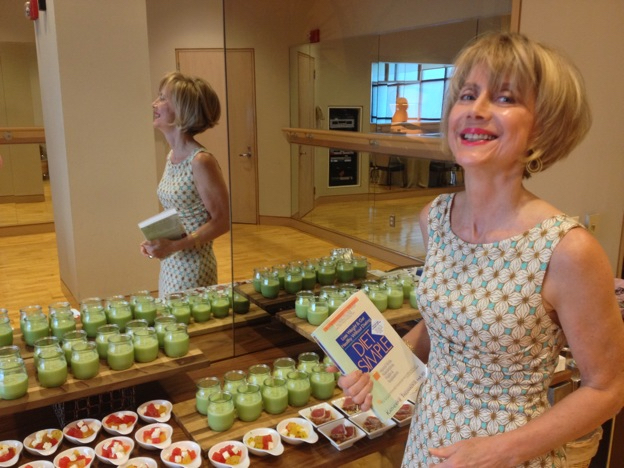
“Diet Simple Farm To Table Recipes: 50 New Reasons to Cook in Season”
While our grandmothers told us that an apple a day keeps the doctor away, modern science begs to differ. Move over apples – There’s a new boss in town. YOGURT!
For years, I wondered why my clients, whom I encouraged to eat yogurt, lost weight more easily – while also increasing muscle. They said they felt more energetic, too. Scientific research is now backing my observations of 30+ years.
Around 2010, I attended a three-day National Institutes of Health consensus conference presenting all of the research to date about the human gastrointestinal tract’s microbiome, that is, its microscopic “ecosystem” of cells. By 2010, a wealth of new data had found that its effects were so vast and profound, it could make – or break – your health.
Your body contains human cells and microbial cells (microbes). The human’s gastrointestinal microbiome also contains both types of cells. The major difference is that human cells contain genetic material inside its nucleus. Whereas microbial cells – what I’m discussing in this article – which includes bacteria, archaea, fungi, protists, and viruses, do not. Both microbial cells and human cells play critical roles in your health. Our bodies have 10 trillion human cells, but, at 100 trillion, there are 10 times that amount of microbial cells. Given the enormous number of microbial cells, or bacteria, their effect is immeasurable, and extremely influential. That said, you must make sure your healthy microbial cells outnumber the dangerous ones – big time! Here’s the full story…
There are healthy, beneficial microbes and unhealthy, dangerous types. The most dangerous microbes, the ones that cause disease, are those that are easily transmitted. They are virulent, and invasive to central organs like the blood and lungs. They’re survivors. They have a low infection dose, and are without any specific treatment or vaccine. Most of them are transmitted from animals or insects. The most dangerous microbes cause a very high death rate, are identified as high-risk agents or “biohazard-level 4” agents, and are treated at the highest level of infection protection, with strict isolation measures: Think COVID.
But most of the time, microorganisms live in harmony with their human hosts, providing vital functions essential for survival. Microbes inhabit just about every part of the human body, living on the skin, in the gut, and up the nose. They are essential for good health.
If infants are born naturally, as opposed to a cesarean delivery, and if they are breastfed, they start their lives with the highest number of healthy microbes. Whereas, their cesarean section, bottle-fed counterparts don’t develop those advantages. The higher amount of beneficial microbes give them a superior immune system, better health, and a high level of safety from numerous communicable, and non-communicable diseases in early life. That’s because the birth canal, and breast milk, contain a host of beneficial microbes that are impossible to regain as adults.
The infant’s microbial advantages continue later in life, too. Even as adults, they provide numerous advantages over people who were bottle fed, and cesarean born. The lack of those healthy microbes correlates with inflammation, and a number of illnesses, potentially effecting every organ in the body. This increases your risk for the metabolic syndrome, a group of conditions – insulin resistance, a precursor to diabetes, high blood pressure and cholesterol – and a host of other illness. More than five decades of established research has found that, if babies are not breastfed, it correlates with overweight and obesity (I learned this in college, though that was NOT 50 years ago, I’ll have you know!). The metabolic syndrome increases your blood levels of insulin, a known “growth factor.” Growth factors increase inflammation and unchecked cellular growth (cancer). Growth factors increase your chance of illnesses that can effect every organ in your body, including coronary heart disease, colon, breast prostate cancer, eye conditions, reduced bone mass, and more.
Aging is also associated with fewer beneficial microbes. Aging affects virtually all tissues and cellular circuits in our bodies resulting in frailty and death. Not only aging, but other factors, such as overweight, obesity, inactivity, and stress, also decrease beneficial microbes, leading to inflammation, compromised immune systems, susceptibility to acute and chronic illnesses causing sicknesses, hospitalizations and even death. They include infections of every type, colds, flu, COVID, reductions in vaccine effectiveness, food borne illnesses like salmonella and E-Coli, bone loss, even mental illness. To counteract those disadvantages, living a healthy lifestyle makes a significant positive difference.
THE POSITIVE NEWS
That said, you can still achieve a healthy gut filled with beneficial microbes, even if your mother required a cesarian section, or couldn’t breast feed. .
YOUR DAILY PRESCRIPTION
However, an exceptional diet and lifestyle are necessary to make up for those disadvantages. The most important foods to eat are those that naturally contain probiotics, namely, dairy yogurt, and possibly the new non-dairy varieties. Also, dairy, and non-dairy kefir. Both are the only foods associated with significant health benefits. Probiotic supplements, and foods/drinks with probiotics added, haven’t been studied adequately to determine their effectiveness. Yogurt and kefir have been found to improve wound healing, recovery from illnesses, reductions in inflammation, colon, breast and prostate cancers, and eye diseases. They have also been found to decrease the risk for conditions caused by inflammation, like Alzheimer’s, cardiovascular disease, osteoporosis, irritable bowel syndrome, diarrhea and/or constipation, bone and dental health, infectious diseases, and others.
But probiotics can’t work alone. To be effective, you also need foods containing prebiotics to create the healthy gut you need. Prebiotics nourish probiotics. Together they form the critical prebiotic/probiotic duo creating a microbiome teeming with healthy microbes that achieve the superior level of beneficial microbes that fight off chronic and acute diseases. Only then can you achieve maximum health advantages. Prebiotics can be found in various high fiber plant foods as diverse as almonds, agave, barley, wheat, oats, garlic, leeks, onions, flax seeds, artichoke, asparagus, bananas, and more.
Breast milk contains both prebiotics and probiotics, which is why it is so protective.
Problem is, most Americans have an unhealthy diet that increases the damaging microbes in their gut. They don’t eat enough, if any, foods high in either pre- or probiotics. This may explain our high incidence of chronic illnesses.
Based on research, and my own observations, I believe eating yogurt daily is the easiest way to make up for the healthy gut we abused by eating the typical American diet growing up – and even now. Can you imagine anything easier? (besides dreaming, wishing, and hoping?)
All you need to do is include yogurt, a few veggies, fruits, almonds, or oat-based cereals (Cheerios, oatmeal) here and there. Try “Katherine’s Simple ‘Oatmeal Cookie’ Oatmeal: an Easy Step-by-Step Guide” That Even Your Kids Will Love!. How about this great dessert? “Chocolate Covered Peanut Butter & Oat Balls.” It’s a fun activity for you kids, too! (don’t tell anyone it’s healthy)
As of yet, there is no reliable clinical test any doctor can use to measure your gut microbes, or the health of your microbiome. We don’t even know everything that we need to be looking for. The gastrointestinal tract is still quite mysterious and idiosyncratic, so your best strategy is having the best diet and lifestyle habits you can.
I work with many clients with gastrointestinal issues, and their solutions vary widely, but, in my experience, when their nutrition is tailored to their individual needs, their lifestyle, and medical condition, a personalized nutrition plan makes a profound difference – virtually to a person.
If you think you don’t like yogurt, I’ve found that if you do some taste testing and experimenting, you are guaranteed to find one or more that you enjoy. There are savory, and sweet ways to try it.
Savory variations: Use Nonfat, Plain Greek Yogurt (my favorite is Fage) in place of sour cream. Make dips, for instance, Onion Dip, by mixing in chopped/minced onions, salt & pepper. How about a spicy dip by swirling in Sriracha sauce. Create an Italian version with pesto. Use it in burritos and tacos. In many parts of the world, yogurt is eaten together with spicy dishes, especially with chopped cucumbers. With curry, and many Middle Eastern dishes, for example. I love placing a dollop on my potatoes (instead of sour cream) and soups. My technique for eating it with soups and savory dishes is to place a little yogurt together with the accompanying food in one spoon. The cool and the hot together are delicious complements to each other. Stirring all of it together, well, it doesn’t bring the added excitement that I crave in my food. Remember to add a little (Iodized) salt & pepper, or it may taste too bland. In the summer, Cool Cumber Soup with Dill or Cilantro, and Swedish Cucumber Salad with Dill are party favorites. In fact, whenever I make my mother’s Cucumber Salad, it disappears quicker than anything else. It can lead to all out war between the party’s, normally civilized, competitors.
Of course, we all know about the sweeter versions. Fruited yogurts, lemon, vanilla, chocolate, you name it. Give all of them a try. ANY yogurt contains probiotics. And please, don’t worry about the small amount of jam in yogurts. Studies show fruited yogurt doesn’t raise blood sugar significantly, so they’re not associated with high blood sugar levels, insulin resistance, or the illnesses that go along with it.
I enjoy it as part of desserts, too. A traditional Swedish meal is crepes with sour cream and lingonberries. But I’ve found that my favorite Fage Greek Yogurt is an excellent, even better, substitute for sour cream. Swedish Waffles, Vanilla Bean Yogurt and Fresh Summertime Peaches/Fruit, while not 100% healthy, still gives me an opportunity to eat yogurt in a delicious way – as an occasional dessert, or decadent breakfast.
After all, everything you eat must be DELICIOUS! That’s the only way we can continue eating healthfully, in a sustainable way.
Golden Brown, Sweet Caramelized Cabbage for “The Luck O’ the Irish” on St. Paddy’s Day!
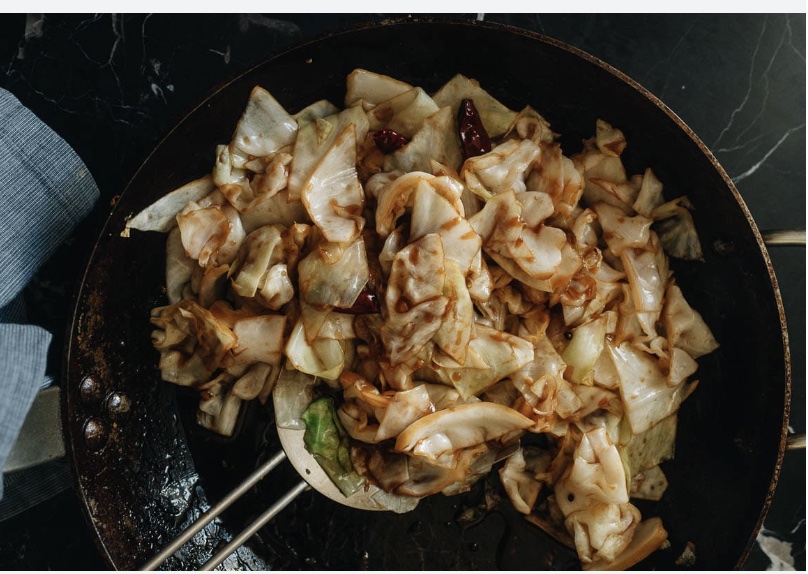
Think you don’t like cabbage? Then you’ve never tasted caramelized, golden brown, stir fried cabbage. If you are not a lover of cabbage, you will become a boisterous believer after you try this very simple recipe, and so will any person you serve it to. But hurry! St. Patrick’s Day on March 17th would be the ideal time to get a taste of the “Luck O’ the Irish.” Any time I serve Caramelized Cabbage, my guests ask, “What is this? It’s delicious!” They practically fall out of their seats when I reveal, “It’s sautéed cabbage.”
It tastes like candy, I promise!
Katherine’s Caramelized Cabbage
My favorite variety of cabbage is the milder, more tender Savoy Cabbage, but any type works brilliantly prepared this way.
Directions:
In a large skillet (iron works best), heat a couple of tablespoons of Canola Oil on medium/high. The temperature has to be hot enough to evaporate the water leaching from the cabbage as it cooks. For exceptional cabbage, or any vegetable, allowing it to drown in its own water leads to your steaming it instead of sautéing it. Steaming does not achieve the mouth-watering flavor you crave. I learned this tip from celebrity chef, Alton Brown. Every vegetable I’ve served using this method gets devoured. And since veggies should dominate your meals, they have to taste good, well, not just good: Mind blowing!
I digress…
 Once the oil is hot (“Don’t add anything until the oil is hot,” says Seasons Culinary’s Chef, Janis McLean), add the chopped (not grated) cabbage. Chop the cabbage into rough chunks (Definitely more Irish-like). No neat or perfect, petite cubes allowed (too British-like for our purposes here). Add onions and garlic if you wish. Add diced red bell pepper for color, too. Sauté until golden brown while constantly stirring. This may take about 25 to 30 minutes so if you’ve got kids (slaves) around, throw them into the mix. Keep scraping the bottom of the pan. Don’t worry if the pan is getting brown. Just keep scraping and tossing. Let sit for 10 or 20 seconds between tosses to caramelize the cabbage nicely, but don’t let it burn. Add a pinch of salt and pepper after about 15 minutes of sautéing. Keep sautéing until the mixture is nicely browned and tastes sweet.
Once the oil is hot (“Don’t add anything until the oil is hot,” says Seasons Culinary’s Chef, Janis McLean), add the chopped (not grated) cabbage. Chop the cabbage into rough chunks (Definitely more Irish-like). No neat or perfect, petite cubes allowed (too British-like for our purposes here). Add onions and garlic if you wish. Add diced red bell pepper for color, too. Sauté until golden brown while constantly stirring. This may take about 25 to 30 minutes so if you’ve got kids (slaves) around, throw them into the mix. Keep scraping the bottom of the pan. Don’t worry if the pan is getting brown. Just keep scraping and tossing. Let sit for 10 or 20 seconds between tosses to caramelize the cabbage nicely, but don’t let it burn. Add a pinch of salt and pepper after about 15 minutes of sautéing. Keep sautéing until the mixture is nicely browned and tastes sweet.
Cabbage, like most vegetables, is about 90% water, so it will cook down a lot – and in the process keep you slim and trim because it fills you up with very few calories.
Use at least a whole head. If you have any left, toss it into soup, or make your own simple soup by adding broth. You could call it, if you felt generous at the moment (I did not mean to doubt your generosity), “Katherine’s Cabbage ‘Diet’ Soup.”
This is perfect served the traditional Irish way on St Paddy’s Day: With cabbage, potatoes, carrots and corned beef. If you’d rather not eat red meat, chicken and fish are excellent choices.
But most importantly, don’t forget the green Guinness Stout, nonalcoholic beer, Irish Whiskey, or smoothie.
Enjoy! And may the road rise up to meet ye…
Our Double Pandemic: One Feeds the Other
- At September 13, 2020
- By Katherine
- In Articles, News
 0
0
Does your blood measure 50 to 75 ng/ml of Vitamin D? Why is this critical to surviving COVID? COVID-19 science is advancing rapidly. One new and exciting discovery comes as no surprise: Vitamin D deficiency – a pandemic in many experts’ views – leads to significantly more COVID-19 hospitalizations, poor outcomes and lower survival rates, according to several studies and reviews published in Nutrients, The European Journal of Clinical Nutrition, Nutrition & Food Science (Nfs) Journal, Lancet Diabetes Endocrinology, Aging Clinical and Experimental Research, Medicine in Drug Discovery, and others. It’s such a no-brainer it is a must to have your Vitamin D level checked out with your doctor. In fact, please make your appointment today! That’s because if you don’t live near the equator, virtually no one has adequate Vitamin D blood levels. And – no – 30 ng/ml (what laboratory reports deem as fine) is not enough. Don’t be satisfied with taking supplements. Everyone’s supplement needs are different, so you have to have your blood checked.
Over the past 25 years or so, I’ve encouraged my clients, family and friends to check their Vitamin D blood values. Vitamin D deficiency is the norm in our modern culture, and it could be lethal. Adequate Vitamin D, the “sunshine vitamin” may promote the prevention and treatment of our most prevalent and life-threatening diseases, such as type 1 and type 2 diabetes, heart disease, hypertension, infectious diseases, cancer, glucose intolerance, even multiple sclerosis… and now it’s been established: COVID-19, too.
Even though medical labs have 30 ng/ml as normal (which is only enough to prevent rickets), most experts believe it is not high enough to get all of its benefits. The most recent National Academy of Sciences Food & Nutrition Board recommendation for your blood levels is between 50 and 75 ng/ml. To achieve this, I recommend taking anywhere from 1,000 to 4,000 IU (maximum safe upper limit) daily, depending on your blood value and your doctor’s recommendations.
Vitamin D Boosts Muscle Strength, Power & Velocity While Lowering Body Fat
Good Grub For the NFL Season Opener! Tacos & Chip Dips
On September 11th, when Americans collectively remember and pay tribute to the 19th anniversary of America’s devastating loss of lives, we can also celebrate two of our favorite past times, food and football. You could say it’s a bittersweet All-American day.
I’ve developed many recipes over the years. These are two of my favorite easy, delicious and nutritious that I believe are perfect for special sports events, family gathering and prayers.
Quick & Easy Soft-or Fried-Tacos with Cheese, Fresh Tomatoes, Onions & Jalepeño Peppers
Eat These 13 Foods to Prevent COVID-Summer Brain Drain
- At August 16, 2020
- By Katherine
- In Articles, News
 0
0
In this NBC4 video, Katherine shares strategies for preventing “summer brain drain” by keeping nutrition on track (the video was produced before COVID mask-wearing)
Brain drain: During these turbulent times, who isn’t feeling some degree of stress, sadness, malaise, fear, anger, exhaustion or disappointment at times? I personally will admit to … all of the above! Normally, these “fight or flight” reactions are short term and protect us from immediate danger. But if prolonged, they can disturb your immune, digestive, cardiovascular, sleep, and reproductive systems. You may also experience digestive symptoms, headaches, sleeplessness, sadness, anger, or irritability, according to the National Institute of Mental Health. To counteract these almost inevitable feelings, for the long haul, I recommend you find some sustainable – yet very simple – coping strategies that fit your lifestyle and that you enjoy.
Foods play a critical role fighting and neutralizing the ravages of stress and its damage to your health. There are 13 foods, in particular, that science has found are especially effective for reversing its harmful effects.
Meditative techniques can be simpler than they sound, like music, tai chi or yoga. Studies show many forms of “meditation” are effective, In the video above, I discuss some foods and eating habits you can try this summer to help you and your family.
It’s Peach Season! 6 Peach Recipes Your Family Will Love
I’ll never forget my first trip to Italy. I was 19 and touring solo through Europe by train with the Eurail Pass. Despite the Italian men giving me a scare – pinching, grabbing, kissing and chasing (I think it goes without saying… with no encouragement from me – oy!) – Rome was so stunning, my wildest dreams couldn’t have conjured up such a place.
One of my fondest memories was of the peaches sold by fruit vendors in the Piazza Campo De’ Fiori. I’d never eaten a peach that was so sweet, tender and juicy that its nectar drizzled down my arms. Truly a revelation! I became so excited about peaches that when I got home, I rushed to the grocery store for some. But after one bite, my heart sank. I realized that I’d never have such an extraordinary peach again.
That is… until locally sourced Farmers Markets came to be.
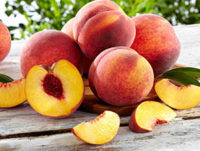 The advantage of Farmers Markets is that the fruits and vegetables are grown nearby so they can be picked at peak ripeness. And that’s when they are the most delicious and nutritious. Since peaches are in season now, I’m eating several each day. Peaches can be featured in desserts, salads, meat or other savory dishes. Here are some of my favorite peach recipes, to keep you excited about peaches!
The advantage of Farmers Markets is that the fruits and vegetables are grown nearby so they can be picked at peak ripeness. And that’s when they are the most delicious and nutritious. Since peaches are in season now, I’m eating several each day. Peaches can be featured in desserts, salads, meat or other savory dishes. Here are some of my favorite peach recipes, to keep you excited about peaches!
Summer Peach and Fresh Kale Salad with Toasted Almonds and a Balsamic Vinaigrette
Summertime Peach Crisp with Roasted Nuts, Dried Fruit & Ginger
Layered Fresh Peach & Cheesecake Parfait
Honey & Brown Sugar Roasted Peaches
Honey & Brown Sugar Roasted Peaches
Lisa Yockelson’s Honey and Brown Sugar-Roasted Peaches
Excerpted from Diet Simple by Katherine Tallmadge
6 Servings
The juice-ripe peaches are sweetened with a mixture of brown sugar and honey, enriched with a little melted butter, and mellowed with vanilla extract and peach nectar. Enjoy the peaches as is, or with a dollop of vanilla yogurt or ice cream.
Unsalted butter, for the baking dish
6 firm but ripe medium peaches, halved and pits removed
2 Tablespoons firmly packed light brown sugar
2 Tablespoons mild honey, such as clover
2 Tablespoons unsalted butter, melted
1 teaspoon vanilla extract
1/3 cup peach nectar (or 2 Tablespoons more, as necessary)*
Preheat the oven to 400 degrees F. Adjust the oven rack to the lower third level slot. Lightly butter the bottom of a 12 to 14-inch non-reactive ovenproof baking dish.
Place the peaches rounded-side down (cut side up) in the dish. Combine the sugar, honey, melted butter, vanilla, and peach nectar in a small mixing bowl. Spoon the mixture over and about the peaches.
Roast the fruit for 20 minutes, or until gently softened (but not mushy), and the juices have lightly condensed. Begin checking on the fruit at 15 minutes; if the peaches are not juice enough on their own, they may not give off enough juice, so you may need to add 2 tablespoons more peach nectar at this time. Roast an additional 5 minutes, as necessary. You can also glaze the fruit under a broiler for a few seconds until the tops glisten. Serve the fruit warm.
*If you cannot find peach nectar or peach juice, apricot nectar can be used.
The recipe for this essence-of-summer fruit dessert comes from Lisa Yockelson, baking journalist and author of the award-winning BAKING BY FLAVOR (New York: John Wiley & Sons, Inc., 2002).
Katherine’s Virtual “No-Cook” Cooking 01 Class: Spring into Action!
Would you like to create some fun and amazing recipes that take only three or four ingredients, less than 15 minutes – and don’t even require cooking? No-Cook Cooking 01 will teach you how to cut and prepare onions, tomatoes, peppers, carrots, celery and fresh herbs, resulting in Fresh Salsa, Guacamole, and a Creamy Yogurt Dip, crowd favorites! On top of that accomplishment, these basics will be a foundation for creating hundreds of treasured recipes your family and friends will love. After learning these simple skills, you will discover some of those recipes in my No-Cook Cooking 02 class.
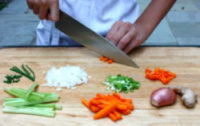 My No-Cook Cooking 01″ Class is for you if you sometimes:
My No-Cook Cooking 01″ Class is for you if you sometimes:
- feel overwhelmed in the grocery store wondering what on earth you need or should buy,
- feel nervous about cooking,
- feel insecure about using knives and kitchen gadgets.
When you’ve registered, I will email you a list of the ingredients and tools you will need for the class. You can also participate by simply watching. If you’d like, repeat the class any time until you feel confident to move on.
To talk to Katherine about the class and/or to sign up, email Katherine at: Katherine@PersonalizedNutrition.com
The Vitamin Supplement You Should be Taking… Especially Now!
- At June 23, 2020
- By Katherine
- In Articles, News
 0
0
Vitamin D deficiency is linked to so many health conditions it’s mind boggling. And virtually none of us get enough, especially today.
When we first recognized Vitamin D’s significance about a century ago, all we knew is that a deficiency caused soft bones (rickets). Rickets causes children’s bones to become so flimsy, skeletal abnormalities flourish. For example, they literally can’t hold up their own bodies – causing extremely bowed legs. Adults acquire brittle bones (osteomalacia) which break easily.
Today, a growing body of research suggests that, beyond brittle bones, a Vitamin D deficiency influences a vast array of illnesses. It seems to increase your risk of hormone abnormalities, inflammation, oxidation and immune system suppression, all of which underly the development of numerous health conditions, including COVID-19.
Just to give you an idea about Vitamin D’s significance, it may promote the prevention and treatment of our most prevalent and destructive lifestyle disease, such as type 1 and type 2 diabetes, heart disease, hypertension, infectious diseases, glucose intolerance, even multiple sclerosis, and other medical conditions.
Vitamin D may decrease cancer risk, especially colon cancer, as well as breast, prostate, thyroid, liver, lung, prostate cancer, and even melanoma, a type of skin cancer. In fact, “Improvement in the quality of life of cancer patients receiving vitamin D supplementation has been documented in several studies,” according to a review of Vitamin D studies in the journal, Trends in Cancer Research.
Based on recent research, these conditions are more likely to be prevented and improved by having enough vitamin D in your system.
Why don’t we get enough Vitamin D? It is one of the rare essential vitamins we basically can’t get from food. It comes from sunshine, and our modern lives prevent us from getting an adequate supply – especially in isolation. Now, just imagine what the elderly are experiencing in isolation – for several months to date – as well as infants, children, or anyone who can’t venture outside. These are the most vulnerable population groups for not getting enough Vitamin D and that are susceptible to the consequences of Vitamin D deficiency. People of color are particularly at risk. Darker skin does not absorb sunshine as easily as lighter skin.
Back in the 1930’s, we practically eliminated rickets by adding 100 IU to eight ounces of milk. That gave us adequate Vitamin D. But that was then. This is now: Today’s limited sunshine exposure and milk intake, is allowing rickets to return with a vengeance, not only in children, but in adults, too.
Moreover, we’re now discovering the multitude of life-threatening illnesses its deficiency may be generating.
That’s because we spend most of our time indoors on our computers, working, watching TV, or in our cars. When we venture outside we’re covered in sunscreen, which blocks the ultraviolet (UV) rays necessary for producing Vitamin D in our bodies. While too much UV rays is strongly linked to skin cancer, careful skin exposure is recommended.
“It has been suggested by some vitamin D researchers that approximately 5–30 minutes of sun exposure between 10 AM and 3 PM at least twice a week to the face, arms, legs, or back without sunscreen usually leads to sufficient vitamin D synthesis,” according to the National Institutes of Health’s Office of Dietary Supplements.
The old, yet still prevailing recommendation for vitamin D is 400 IUs daily. Today, it’s unclear how much vitamin D each person needs to take because of variable sun exposure. But there seems to be a consensus among vitamin D scientists that blood values should be at least 50 ng/mL and there seems to be no benefit of going higher than 75 ng/mL, according to the National Academy of Sciences Food and Nutrition Board, the “gold standard” institution for state-of-the-art nutrition recommendations (though most medical labs consider 30 as adequate).
My clients and I take anywhere from 1,000 IUs (the lowest amount to take, I believe) to 4,000 IUs (the safe upper limit – UL) daily to achieve at least 50 ng/mL.
That said, be careful. Talk to your own physician about what you should do, considering your individual medical needs. That’s because, while natural sources in food and from the sun cannot cause overdoses, Vitamin D can be toxic when too much supplement is taken (4,000 IUs daily is the upper limit). In Europe in the 1950s, cases of soft tissue calcification, including in the heart and brain, led to mental retardation and other birth defects. It was caused by excessive vitamin D incorrectly added to the food supply. Ergo, supplementation has since been removed or scaled back in Europe.
Just like all nutrients, it’s important not to get too little – or too much. I call it the “Goldilocks effect,” because it needs to be just right!
Swedish New Potatoes with Fresh Dill
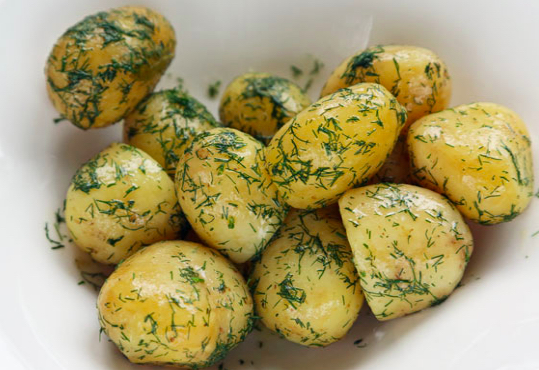 Potatoes are delicious boiled, the simplest and fastest preparation. In Sweden, they are customarily eaten on the same fork as gravlax (cured salmon) and mustard sauce. The combination is delectable. Potatoes are a traditional Swedish dish and served with just about every meal. Historically, Sweden’s fruit and vegetable choices were limited because it lies so far north. Potatoes were an important source of essential vitamins and minerals, preventing lethal deficiencies. Today that legacy continues.
Potatoes are delicious boiled, the simplest and fastest preparation. In Sweden, they are customarily eaten on the same fork as gravlax (cured salmon) and mustard sauce. The combination is delectable. Potatoes are a traditional Swedish dish and served with just about every meal. Historically, Sweden’s fruit and vegetable choices were limited because it lies so far north. Potatoes were an important source of essential vitamins and minerals, preventing lethal deficiencies. Today that legacy continues.
Ingredients:
2 lbs. small thin-skinned “new” potatoes**
1 dill stalk
½ tsp salt
¼ stick butter (2 Tbsp)
2 Tbsp rock salt or Kosher salt
freshly ground black pepper
Two to four Tbsp fresh clipped dill, to taste
Instructions:
1. Wash the potatoes. Just scrub them if you’d like to keep the skin on. Or scrape off the skins if you wish. Rinse the potatoes.
2. Place the larger potatoes over the base of a saucepan and pop the smaller ones on top. Pour in enough boiling water to not quite cover them, add some salt and the stalk of dill.
3. Cover with a tight-fitting lid and simmer gently for between 10 and 20 minutes. The cooking time depends on the variety and size. Test them with a skewer as they must be tender but still firm—overcooking really does spoil them.
4. Drain the potatoes and add the butter, the chopped fresh dill and a little pepper to the pan and then return the potatoes to the pan. Put the lid back on the pan and swirl the pan around to get each potato thoroughly coated.
5. Remove the lid, savor the delicious aroma and then sprinkle with a little rock or Kosher salt before serving them.
** “New” potatoes are freshly harvested young, or small, potatoes. They are the same varieties as their larger counterparts, but are harvested earlier in the season when they are sweet than their older counterparts. Also, because these potatoes are harvested young, their skins are very tender and flaky.
6 Savory Toppings for Crunchy Swedish Hard Bread
Variations for Open-Faced Swedish Hard Bread Sandwiches
Sweden’s Midsummer Festival is the celebration of the summer solstice, the longest day of the year, when the sun never sets.
At the Midsummer feast, it’s always traditional in Sweden to eat seafood, like herring, salmon and shrimp. Gravlax (cured salmon) is a favorite and prominent food in Sweden. Important vegetables and fruits from summer’s first harvest, like radishes, onions, potatoes and strawberries are featured, too. Dill is the herb used in abundance.

Swedish Shrimps are Tiny and Sweet, Very Different From Their American Cousins. Found in the freezer section of IKEA
With regard to Swedish hard bread toppings, think of what might be in American sandwiches and the options are endless. As well as the typical seafood and vegetables, cheese, cured venison and ham are regular additions. There are even modern versions with out-of-season vegetables using avocado, tomatoes, carrots and beets, you name it!.
Besides the flavor and crunch of Swedish hard bread, the nutrition and low calorie content are added bonuses! In the U.S., WASA bread is the most common brand of Swedish hard bread.
Pickled Herring, Fresh Dill and Sliced Red Onion on 100% Rye Coarse Hard Swedish Bread
Herring, fished locally, is omnipresent on the Swedish table. It is delicious pickled, smoked and grilled. It is a fragile fish – as are sardines and anchovies, its cousins – so it is mostly cured where it can’t be caught right out of the sea.
Since we in the U.S. are unlikely to find fresh herring (recipe below), it can be served with a store-bought version of pickled herring. It is easily found in the refrigerator section of virtually all grocery stores. The most authentic jarred pickled herring is found at IKEA.
Ingredients:
Pickled Herring, from a jar or home-made
Thinly Sliced Red Onion
Chopped Green Onions, optional for color
Thinly Sliced Potatoes, optional for smooth texture
Thinly Sliced Radishes, optional
Dollops of Swedish Mustard, optional
Directions:
Top the hard Swedish bread with thinly sliced boiled potatoes and smother with the pickled herring. Top with sliced red onion and dill.
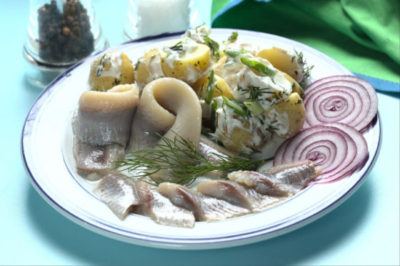
Home-made Pickled Herring
From SwedishFood.com
Herring spoils fast, so it is almost always cured. Pickled and smoked herring are especially prolific and popular in northern Europe.
7 oz salted herring fillets
(6 fl oz) water*
(4 fl oz) granulated sugar
2 fl oz vinegar, 12% if available
1/2 sliced red onion
6 white pepper corns
2 allspice berries, optional
1 pice of peeled horseradish
1 small piece of ginger (optional)
2 bay leaves (optional)
1. Soak rinsed filets in water while preparing the pickling liquid.
2. Place the water, vinegar and granulated sugar in a saucepan and bring to a boil, stirring until the sugar is dissolved. Leave to cool.
3. Drain the herring fillet, dab them dry with kitchen towel and cut them into ¾ inch wide pieces. Layer with all the remaining ingredients in a glass jar.
4. Pour the cold pickling solution over the herring and transfer to a fridge and keep for at least 24 hours before serving.
5. If the pickling solution becomes a little cloudy, pour it off and make a new solution, but allow it to cool before pouring it on to the herring.
My Favorite Asparagus Recipes
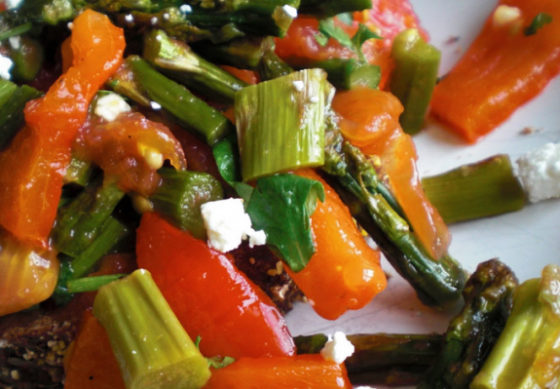
Asparagus, dating back to 3,000 BC, is considered a nutrition superstar because it is loaded with hundreds of vitamins, minerals and newly discovered nutrients called “phytochemicals” (“phyto” is Greek for plant) that impart impressive health benefits. Asparagus (family Liliaceae) possesses a variety of biological properties, such as antioxidant, immune-stimulant, anti-inflammatory, anti-hepatotoxic (helps the liver), and antibacterial.
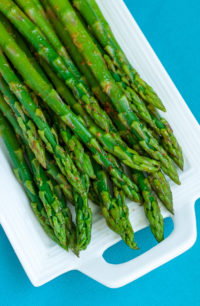 Asparagus is an excellent source of *essential vitamins like B1 (Thiamine), B2 (Riboflavin), and B9 (Folate), and Vitamin C, E and K. It contains some Vitamin A, B5 (Pantothenic Acid), B6 and Choline. It’s a good source of the essential minerals Iron, and contains some Calcium, Magnesium, Manganese, Phosphorus, Potassium and Zinc.
Asparagus is an excellent source of *essential vitamins like B1 (Thiamine), B2 (Riboflavin), and B9 (Folate), and Vitamin C, E and K. It contains some Vitamin A, B5 (Pantothenic Acid), B6 and Choline. It’s a good source of the essential minerals Iron, and contains some Calcium, Magnesium, Manganese, Phosphorus, Potassium and Zinc.
*Vitamins and minerals are considered “essential” when a deficiency would ultimately cause death.
Here are some of my favorite asparagus recipes from my book, “Diet Simple Farm to Table Recipes: 50 New Reasons to Cook In Season!,” along with many other seasonal recipes
Chilled Asparagus in a Creamy Tarragon, Shallot and Roasted Walnut Vinaigrette
Salad of New Potatoes and Asparagus with Lemony Garlic Herb Mayonnaise
Pasta with Pesto, Roasted Asparagus and Cherry Tomatoes
Asparagus Salad in a Vietnamese-Style Dressing
Keep Calm and Carry On… Simple Techniques for Calming Isolation Stress
- At June 16, 2020
- By Katherine
- In Articles, News
 0
0

Stress, anxiety and depression are at all-time highs, according to recent studies. Feeling stressed is a normal reaction to today’s crisis, but if prolonged, it can disturb your immune, digestive, cardiovascular, sleep, and reproductive systems. You may also experience digestive symptoms, headaches, sleeplessness, sadness, anger, or irritability, according to the National Institute of Mental Health.
I’m sure you have already realized that “This is not a crisis that adrenaline can get us through,” as Brené Brown said, research professor and social worker at the University of Houston, in a recent webinar. “We are in a long duration marathon, and we have to find a sustainable way [to live],” she added
I can help you create the sustainable way to live that improves your overall well-being – based on your own personalized needs – with just a few virtual sessions. Habit building leads to greater health. Now is the perfect time to craft exceptional life satisfaction! You can book at Katherine@PersonaledNutrition.com
In today’s article, I’d like to share some simple techniques to help reduce your stress, increase your energy and improve how you feel and cope.
Even if you exercise, I recommend you add some form of meditation to your daily routine. Before rolling your eyes, many activities you already do can qualify. The only requirement is that your activity choice contains the four elements I’ve described below:
1. Meditation is a mind and body practice with a long history for increasing calmness and physical relaxation, improving psychological balance, coping with illness, and enhancing overall health and well-being, according to the National Institute of Complementary and Integrative Medicine.
In my experience, meditation can also help you control destructive, stress-related habits such as emotional eating, cigarette, alcohol, drug abuse, and other impulsive or addictive behaviors.
There are many types of meditation, but most have four elements in common:
1) A quiet location with as few distractions as possible;
2) a specific, comfortable posture (sitting, lying down, walking, or in other positions);
3) a focus of attention (a specially chosen word or set of words, an object, or the sensations of the breath); and
4) an open attitude (letting distractions come and go naturally without judging them)
Try these two easy techniques – music and / or meditative movement – that have worked for me and my clients:
- Music. Have you heard that music soothes the savage beast (inside all of us)? Science proves it. Choose music that can get you in the “zone” and involves the four elements (listed above). Medieval music is one of my favorites for relaxing. Gregorian chants are popular. How about Celtic Music? Gentle nature sounds, like birds chirping, waves pounding on a beach, and rainstorms are popular. Religious music has been used for thousands of years to help worshipers concentrate. Try Tibetan music, too. Whatever floats yer boat!
- Meditative Movement is my favorite form of meditation and great for beginners. It uses movement in conjunction with meditative attention to body sensations, posture, rhythm and breathing: Tai Chi, a centuries-old martial art, Yoga, from 3,000 BCE and Qigong, more than 4,000 years old, are considered meditative movement practices. Tai chi is easy and very relaxing. I especially like this 8-minute beginners video.
2. Regular exercise releases natural feel-good brain chemicals like endorphins and seratonin, increasing feelings of well-being and happiness while reducing depression and anxiety. It can prevent the conditions that may make COVID-19 lethal, like obesity, diabetes and hypertension, but also heart disease, stroke, cancer and cognitive decline. Getting out into the fresh air is ideal. The coronavirus is less likely to spread outdoors, according to infectious disease specialists, and mask-wearing is only needed if you can’t socially distance at least 6 feet. But if inside with the public, mask wearing is essential. I also have some inexpensive ideas for indoor home exercise.
If you are experiencing more than stress, like severe anxiety or depression, please seek medical help. About 30% of the general U.S. population have symptoms of depression and/or anxiety, as reported by a recent Centers for Disease Control survey, with the highest rate – 40% – in 18 to 29 year-olds.
Will You Be a Hunk or a Chunk?
- At June 13, 2020
- By Katherine
- In Articles, News
 0
0

A client who works at the State Department told me about an inside joke between him and his colleagues… After their years-long assignments, who will come back as “hunks, chunks or drunks?!” I liken this to our experiences in isolation. So, what will you come out of isolation as?
Joking aside, I believe it’s time we answer this question. Because it has tremendous consequences for you and your family’s health, even your survival if you contract COVID-19, but also your energy, self-confidence and happiness, all of which you hold dear.
No doubt about it, it’s a tough time. Motivation can be hard to come by. Even if you love your home, your family, your neighbors, even if you consider yourself a homebody, as I do, isolation has been stifling for most of us.
In early March, I believed we would be in this for the long haul. Understanding human behavior as I hope I do, I had a feeling it might be challenging keeping to our healthy self-care routines. At that time, I talked to you about home exercise, how music reduces stress, creating a mediterranean diet pantry, delicious and easy microwave meals, scheduling your days, and my “guide for thriving,” 1,500 years-old wisdom that is still relevant today. It was created during the fall of the roman empire – also a very traumatic time!
If you haven’t read these articles, perhaps you might take a look? You could get some – or even just one – simple ideas that might make a difference for you now.
Set up an appointment to check in. Get some personalized ideas for you and your family for coming out of this ordeal a “hunk,” not a “chunk!”
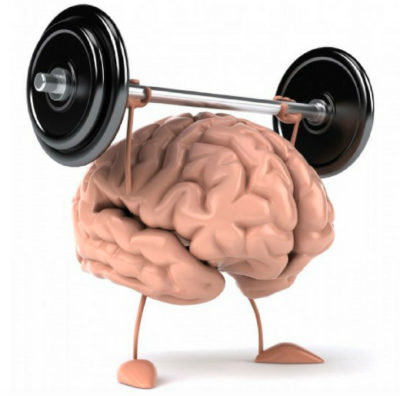
Expert Tips on Figuring Out if a Health Claim Will Work for You
- At June 04, 2020
- By Katherine
- In Articles, News
 1
1

Living healthfully can be harder than you think, thanks to enterprising and sensationalized internet and media claims, blogs, articles, videos and websites.
How should you decide what health claims work? How would they work for you? How do you evaluate the science to ensure you are getting the most reliable and effective recommendations – ones that you and your doctor can trust, based on state-of-the-art scientific data?
 First, Consider the Source! Your Own Doctor(s)? A Qualified Medical Professional Who Specializes in the Field You Have a Question About?
First, Consider the Source! Your Own Doctor(s)? A Qualified Medical Professional Who Specializes in the Field You Have a Question About?
As a medically certified Registered Dietitian/Nutritionist, I personalize my recommendations for you based on a number of factors, as your doctor does. 1) I listen to what your goals are, 2) what you’d like to achieve, 3) I learn your medical conditions, 4) your medical history, 5) I gather your food or nutrition- related history, 6) biochemical data, 7) medical tests and procedures, 8) anthropometric measurements, 9) nutrition-focused physical findings, 10) your personal history and situation, 11) your family history, 12) your social history, 13) your habits, 14) your habits’ history, 15) your work life, 16) your family life, 17) what your doctor recommends, and more relevant information about your life. Then you and I, along with any of your doctor’s recommendations, decide on the best program for you, while continually monitoring, updating and supporting you along the way.
I was trained, as are all medical professionals, using the “scientific method.” The scientific method starts with a question. Then continues with systematic observation and experimentation, inductive and deductive reasoning, and the formation and testing of hypotheses and theories. It attempts to minimize the influence of bias or prejudice in the experimenter to discern how success is achieved.
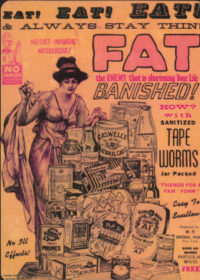 My obligation for the past 30+ years has been to stay informed of all scientific studies and findings relating to my field and to my clients’ specific needs. To achieve this, I never stop studying research in every medical field possible, but particularly nutrition, food, weight loss research and behavioral science. In fact, I’m required to have 75 continuing education credits every five years to maintain my “Registered Dietitian/Nutritionist” (RD/N) credentials. Continuing my studies is a life-long endeavor in my field because science is constantly evolving.
My obligation for the past 30+ years has been to stay informed of all scientific studies and findings relating to my field and to my clients’ specific needs. To achieve this, I never stop studying research in every medical field possible, but particularly nutrition, food, weight loss research and behavioral science. In fact, I’m required to have 75 continuing education credits every five years to maintain my “Registered Dietitian/Nutritionist” (RD/N) credentials. Continuing my studies is a life-long endeavor in my field because science is constantly evolving.
Second: From What Media Source Did The Health Claim Originate? My clients regularly send me claims they would like me to help them figure out. The first thing I need to find out is, what is the source of the claim? A newspaper article? A magazine or blog? A scientific journal? To continue my investigation, I’ll research the topic myself and ask:

- What have the past years or decades of research shown regarding this issue?
- What is the consensus from a variety of study types, populations, researchers and institutions?
- What are the quality of the studies, the researchers and the institutions?
- Are there any conflicts of interest related to the research?
Third: Was it a Legitimate Scientific Source? If I don’t already have the answer or want to research something myself, I’ll only go to scientific sources, ie, peer-reviewed, scientific journals.
Fourth: What Kind of Study Was Used and How Reliable Were the Study and the Researchers? There are five basic kinds of studies…
1. Randomized Controlled Trials: If you want to know how effective a treatment or diet is, randomized trials provide the most reliable answers. “Randomized” means divided into groups by chance. In RCTs participants are randomly assigned to one of two or more groups. Then one group receives the new diet or food being experimented with, while the other group receives something different, conventional, or a placebo. If the RCT is “double-blind,” (the gold standard), neither the researchers nor the subjects know who is receiving the treatment or the placebo so that the findings are as unbiased as possible. Examples: The 1. DASH (Dietary Approaches to Stop Hypertension) Diet Study, the first study establishing that fruits, vegetables and low fat dairy products lower blood pressure, a study of how 2. Gut Health Influences Insulin Resistance, a precursor to diabetes, and how 3. Drinking Tea and Tai Chi Exercise Prevent Bone and Muscle Loss in Post-Menopausal Women.
 2. Cohort Studies observe a group of people frequently over a period of many years – for instance, to determine how often a certain disease occurs. In a cohort study, two (or more) groups that are exposed to different things are compared with each other: For example, one group might drink alcohol while the other doesn’t. Or one group may eat a high fiber diet and the other doesn’t. The researchers then observe how the health of the people in both groups develops over the course of several years, whether they become ill, and how many of them pass away. Some prominent examples are 1.Harvard’s Women’s Health Study, 2. The Framingham Heart Study, 3. The National Weight Control Registry Study.
2. Cohort Studies observe a group of people frequently over a period of many years – for instance, to determine how often a certain disease occurs. In a cohort study, two (or more) groups that are exposed to different things are compared with each other: For example, one group might drink alcohol while the other doesn’t. Or one group may eat a high fiber diet and the other doesn’t. The researchers then observe how the health of the people in both groups develops over the course of several years, whether they become ill, and how many of them pass away. Some prominent examples are 1.Harvard’s Women’s Health Study, 2. The Framingham Heart Study, 3. The National Weight Control Registry Study.
3. Case-Control Studies compare people who have a certain medical condition with people who do not, but who are as similar as possible, for example, the same sex and age. Then the two groups are interviewed, or their medical files are analyzed, to find anything that might be risk factors for the disease. They are not as expensive or time-consuming as RCTs or cohort studies. But their limitations are that it is often difficult to tell which people are the most similar to each other and because the researchers usually ask about past events, they are dependent on the participants’ memories. For instance, this study looking at Dietary Patterns, Nutrition, and Risk of Breast Cancer.
4. Cross-Sectional Studies: The classic type of cross-sectional study is the survey: A representative group of people – usually a random sample – are interviewed or examined in order to find out their opinions or facts. Because this data is collected only once, cross-sectional studies are relatively quick and inexpensive. They can provide information on things like the prevalence of a particular disease. But they can’t tell us anything about the cause of a disease or what the best treatment might be. For instance, this Analysis of Unhealthy Foods, Race/Ethnicity, Sex, and Cardiometabolic Risk Factors in U.S. Adults.
5. Qualitative Studies help us understand, for instance, what it is like for people to live with a certain disease. Unlike other kinds of research, qualitative research does not rely on numbers and data. Instead, it is based on information collected by talking to people who have a particular medical condition and people close to them. Written documents and observations are used too. The information that is obtained is then analyzed and interpreted using a number of methods. For instance, this study exploring Influences on Food Choices of University Students.
The final but most important question: What is the best way to translate this science to recommendations that my clients and doctors trust and that they can use in their everyday lives? Well, you could say that’s where art mixes with science!
Katherine’s Silver Lining Approach: Your Mediterranean Diet Pantry & Featured Recipe

What science has discovered as the ideal diet hasn’t changed for more than half a century. What we’ve learned since then, though, are why and how the diet is so perfect. It’s worth making the switch, for many reasons! For one, it boosts your body’s immune system dramatically, thus, its ability to fight diseases from colds to flu, cancer, heart disease, diabetes, arthritis, Alzheimer’s, even today’s scourge: COVID.
The Mediterranean Diet is a complex diet containing many foods that contribute to its health benefits. It’s plant-based, high in vegetables, fruits, legumes, whole grains, nuts, seeds, fish, low-to-moderate in high fat dairy and red meat (very low in saturated – animal – fat) and the occasional glass of wine. Olive oil is the diet’s principal source of fat.
It was first observed in the 1950s by nutrition scientist, Ancel Keys, that people in Greece, southern Italy, southern France and other countries bordering on the Mediterranean, eating their local food, experienced few nutritional problems and rarely suffered from heart disease. Since then, many studies have confirmed that this mixture of foods we now call the Mediterranean diet has significant properties which may help prevent not only heart disease, cancer, diabetes, Alzheimer’s, dementia, arthritis, many of the diseases of aging, and even weight gain.
While every element in the Mediterranean diet is important, eating fresh, 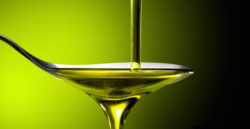 extra-virgin olive oil may trump everything. The type of fat you eat is critical to your health. This is because fat ends up in all of your body’s cells. It acts as a cell lubricant, improves flexibility and communication between cells, and is important for cell metabolism and gene expression. If the fat you eat is saturated – solid at room temperature – as in butter or animal fat – this decreases cellular flexibility and functioning. So, following the Mediterranean diet, but eating the wrong kind of fat, could reduce your health benefits.
extra-virgin olive oil may trump everything. The type of fat you eat is critical to your health. This is because fat ends up in all of your body’s cells. It acts as a cell lubricant, improves flexibility and communication between cells, and is important for cell metabolism and gene expression. If the fat you eat is saturated – solid at room temperature – as in butter or animal fat – this decreases cellular flexibility and functioning. So, following the Mediterranean diet, but eating the wrong kind of fat, could reduce your health benefits.
Olive oil, the staple of the Mediterranean diet, is unique in many ways. First, it’s made from a fruit which is exposed to the elements. This exposure forces olives to synthesize antioxidants and anti-inflammatory nutrients to protect themselves and concentrates the valuable nutrients in the oil, which is high in compounds called polyphenols, Vitamin E and carotenoids, like beta-carotene. New research shows high polyphenol olive oil turns OFF genes that cause the metabolic syndrome, the constellation of high blood pressure, blood sugar and cholesterol.
Polyphenols are also found in wine, tea and cocoa and are known for protecting the heart in many ways – reducing blood clotting, lowering bad (LDL) cholesterol, raising good (HDL) cholesterol and lowering blood pressure. Vitamin E is a well-known antioxidant which helps prevent oxidation and cellular aging and may help prevent diseases such as cancer. Caretenoids are plant compounds giving the olive its color. They’re important for your immune system, your skin, your vision, bones, reproduction, and may reduce cancer risk. Olive oil is also high in heart-healthy monounsaturated fatty acid called Oleic acid.
 Eating the Mediterranean diet is the most economical way to eat. In fact, it is a diet borne of poverty. The original Mediterraneans, who ate the purest form of the diet in the 1950s and 60s, ate mostly fruits, vegetables, whole grains, nuts, seeds, legumes, fish, and olives, all of which were local. This is all they could afford and it happened to be the healthiest diet on the planet. They were also quite thin and naturally very active in their regular routines. All of these factors contribute to its health benefits
Eating the Mediterranean diet is the most economical way to eat. In fact, it is a diet borne of poverty. The original Mediterraneans, who ate the purest form of the diet in the 1950s and 60s, ate mostly fruits, vegetables, whole grains, nuts, seeds, legumes, fish, and olives, all of which were local. This is all they could afford and it happened to be the healthiest diet on the planet. They were also quite thin and naturally very active in their regular routines. All of these factors contribute to its health benefits
Olive oil’s beneficial health properties, its polyphenol content and acidic pH, degrade over time, as days, weeks, and months go by after harvest. Other factors play a role, too: the harvesting method, the age of the trees, the ripeness of the olives, the processing, and the storage. Since time, heat, and light affect polyphenol content, choose olive oil that:
- Is no more than one year old (look for the harvest date – not a sell-by date – on the label),
- Is in an air-tight, dark glass, or tin container,
- Is stored in a cool environment, and
- Smells and tastes like olives, which could be fruity, grassy, or peppery.
The Mediterranean Diet pantry
This is the perfect way of eating during our collective isolation. It’s inexpensive and most foods can be dry, frozen or canned, when fresh aren’t available, which is the case this time of year. Some examples:
- Canned chopped tomatoes, or any frozen fruits and vegetables
- Dry or canned beans, peas, whole grains such as bulgur, barley, oats, canellini beans, black beans, lentils, chick peas,
- Nuts and seeds
- Fresh lemons, and citrus fruit or vinegar, and olive oil for salad dressings, canola oil for cooking with high heat,
- Fresh onions, garlic, and root vegetables when available,
- Canned wild Alaskan Salmon, herring, anchovies, sardines,
- Whole wheat breads, pasta, crackers and cereals
- Dry or fresh herbs and spices such as basil, rosemary, marjoram, thyme, oregano,
- Yogurt, enough to eat daily for its natural probiotic benefits,
- Cheeses such as Mozzarella, Ricotta, with small amounts of Parmesan and Reggiano.
- Eggs
Katherine’s White Beans with Garlic and Basil
Excerpted from Diet Simple by Katherine Tallmadge, MA, RDN, LD
This is the perfect Mediterranean recipe. My friends love these beans. I love these beans. They’re always a hit. Every time I serve them, I’m asked (begged) for the recipe. They taste deceptively rich and are easy to make. The abundance of fresh basil added at the end fills the house with irresistible aromas. This is a warm and satisfying dish which can be eaten in many ways. My friend David uses them as a dip (what can I say, he`s a shrink and a priest!). My (very healthy) friend Alan loves them so much he eats them for breakfast! I bring them to potlucks.
I love to fill a large plastic container with them in the frig, ladle a heap into a microwave-safe bowl, and heat them up for lunch along with a slice of hearty whole grain bread topped with smoked turkey, salmon, light cheese (or all of the above) – and some crunchy lettuce. One of our favorite ways to eat these beans is with spicy chicken sausage. Just slice a spicy chicken sausage of your choice into a microwave-safe bowl, smother with the beans and pop in the microwave. Together with a greens salad and a tart dressing, you’ve got a winning combination.
I usually double the recipe so I have plenty of servings during the week. Without any meat, it’ll last more than a week in the frig.
4 servings
Ingredients:
1/2 pound dried small white (cannellini) beans, or 24 oz. canned rinsed bean
1 Tbsp Olive Oil
1-1/2 Onion, Chopped
4 Garlic Cloves (more or less to taste)
1 Quart defatted Chicken or Vegetable Stock (only 2 Cups if using canned beans)
Salt and pepper to taste
12 Oz. (3 medium) fresh or canned Tomatoes, drained, peeled and chopped
1 Large Handful of Fresh Basil
Juice from 2 to 4 Lemon (1/4 to ½ cup)
Freshly Ground Pepper, to taste
Directions:
If you’re using dried white beans:
Soak the beans in one quart of water overnight or up to 24 hours. Drain and rinse. Add one quart Chicken Stock (or more if you like the dish more soupy) to the beans along with one clove of garlic and 1/2 onion. Bring to a boil, reduce heat, cover, and simmer 1-1/2 hours or until the beans are almost tender. Add more water or stock to keep moist. Add salt to taste and finish cooking until beans are tender.
Continue with your cooked dried beans or start here if you’re using canned white beans:
Heat the oil in a large, heavy soup pot or casserole and sauté the remaining one onion and garlic over low to medium heat for 10 or 15 minutes or until soft and caramelized. Add the tomatoes, and more salt to taste and bring to a simmer. Simmer about ten minutes then add the beans with their cooking liquid and simmer 15 – 20 minutes. If you used canned beans, use enough stock to keep the beans moist while cooking. At the end of the cooking time, add the fresh basil (it will get bitter if overcooked), fresh lemon juice, and freshly ground pepper. Mix together.
You can also add greens to this dish for more authentic Mediterranean flavors and nutrition.
Isolation Part 3: Katherine’s Silver Lining Approach – Use This Time to Get Healthy & Fit!
- At March 23, 2020
- By Katherine
- In Articles, News
 0
0
Yesterday morning I was so tempted to skip exercise. It was hard tearing myself away from reaching out to you. Are you happy with your health and weight? Can I help? Would you like to join me? Since I don’t want to go to pot, I exercised! What about you?
There is light – or clouds – at the end of the tunnel. You could come out of today’s situation with new, great habits, in better shape, even happier, healthier, and feeling proud of yourself. Or you could end up feeling miserable, with higher blood sugar, blood pressure, cholesterol and body fat. What’s it going to be?
 I’m trying to take the “silver lining” approach and consider this moment as an opportunity to improve my habits.
I’m trying to take the “silver lining” approach and consider this moment as an opportunity to improve my habits.
Would you like to join me? Organizing your routine, day by day – even hour by hour – is important for introducing calm, relief, improved productivity, health, and even happiness into your life during this stressful time.
The first step to transforming this isolation into a happier, healthier time is creating a schedule with which everyone agrees. Ask yourself and your family members the following questions:
- What has the normal schedule for everyone been, before isolation began?
- Which activities does everyone want to include every day?
- What goals do you want to achieve now, and at the end of isolation?
- How can you design a schedule at home that includes 1.Exercise/recreation, 2.Work/learning, 3.Socializing, 4.Relaxation/meditation/prayer, and 5.Renewal/sleep
Here is an example of what your schedule may look like. This is a template. You could make yours with more – or less – detail and different activities.
Some ideas:
7 am Coffee
7:30 am Exercise: at least 4,000 steps with Family
8:30 am Shower
9:00 am Breakfast with Family
10:00 am Work / Study
11:00 am Short Walk or Play
11:15 am Work / Study
12:30 pm Lunch with Family
1:30 pm Recess for All!
2:30 pm Back to Work / Study
3:30 pm Short Walk or Play
3:45 Back to Work
5:00 Dinner with Family
6:00 Exercise: at least 4,000 steps with Family
7:00 Recreation / Relaxation / Homework
8:00 Recreation / Relaxation / Homework
? Renewal / Bed Time / Sleep
Make up your own schedule. But have one! I’d be happy to help.
Isolated? Part 2: Ideas & Products for Home Exercise
- At March 14, 2020
- By Katherine
- In Articles, News
 0
0
As I was (virtually) meeting my many isolated clients this week, I realized that chaos could reign if we didn’t think fast and do something NOW. One of my biggest worries is that inactivity can take over. Stir crazy anyone?
 Children aren’t playing their daily school sports, college students aren’t walking to and from their classrooms, adults aren’t moving around their offices, businesses are closing down, and virtually no one is going to the gym. What’s a quarantined human to do besides finding comfort in a padded cell or imprisoning your family?
Children aren’t playing their daily school sports, college students aren’t walking to and from their classrooms, adults aren’t moving around their offices, businesses are closing down, and virtually no one is going to the gym. What’s a quarantined human to do besides finding comfort in a padded cell or imprisoning your family?
I had a Eureka moment the other day. Over the past several years, I have invested in some inexpensive exercise gadgets that take up hardly any space, and I’m recommending them to my clients. You can get excellent instruction on how to use these from a certified trainer (I’ll bet your trainer or physical therapist would be willing to work with you via FaceTime or Skype), or online. You may want to consider these easy-to-use exercise aids:
HealthySport 10″ Resistance Band Loops
TheraBands Professional Non-Latex Elastic Bands Set
Sunny Health and Fitness Adjustable Twist Stepper
Phoenix 98107 Duel Action Mini Stepper
Mini treadmills that can go under your desk: “Opps Decor,” “Goplus,” “Ancheer,”

Mini treadmills can even go under your desk. I love them, my clients love them. It will transform your health and your life!
Isolated? The Power of Music
- At March 14, 2020
- By Katherine
- In Articles, News
 2
2
As I was (virtually) meeting my clients this week, I realized that, by now, home life could be pretty chaotic if we haven’t come up with solutions so we can all stay healthy – and sane.
First, the psychological: Our frame of mind forms the foundation of our responses and our ability to cope. For instance, taking the high road by helping each other as much as possible (instead of playing the blame game). Understanding: We’re all in this together! Not just our families, our communities, our schools, sports, businesses, but the world.
 Italians really know how to make the best of any situation: I just enjoyed some video clips of quarantined Italians singing joyfully together from their apartment balconies (picture a scene in the classic Hitchcock movie, “Rear Window”). Even an opera singer was serenading her neighbors with an aria. What spirit! I have a vision of my neighbors and I singing from our windows and front stoops. Hmmm… What aria will we bellow out to each other?
Italians really know how to make the best of any situation: I just enjoyed some video clips of quarantined Italians singing joyfully together from their apartment balconies (picture a scene in the classic Hitchcock movie, “Rear Window”). Even an opera singer was serenading her neighbors with an aria. What spirit! I have a vision of my neighbors and I singing from our windows and front stoops. Hmmm… What aria will we bellow out to each other?
I’m serious. Soprano Renée Fleming and the National Institutes of Health teamed up to research the effects of music on the brain. Does music soothe the savage beast? The initiative is called “Sound Health: An NIH-Kennedy Center Partnership.” Some initial scientific findings:
- Music helps brain networks mediate emotion, relieve stress and help treat depression,
- Musical training can foster the development of a variety of nonmusical

Sound Health: NIH & Kennedy Center Team Up to Explore Music & The Brain. Soprano Renée Fleming, CNN’s Sanjay Gupta, NIH Director Francis Collins
skills in children,
- Music therapy can help childhood cancer patients cope with the stress of treatment,
- Music may help relieve pain, including its impact on several brain circuits and pathways, and
- Musical activities benefit the aging brain, including promising applications in people with Parkinson’s disease, stroke, or dementia.
I don’t know about you, but I’m CALLING ALL NEIGHBORS!
Rev-Up Your Immune System Through Nutrition
- At March 11, 2020
- By Katherine
- In Articles, News
 0
0
Check out CNN’s video featuring Katherine’s immune-boosting tips:
What you eat profoundly affects your ability to fight disease. With all the nasty bugs going around this cold and flu season, it’s especially important to pay attention to boosting your immune system through nutrition. While every nutrient is important for your body’s ability to prevent and fight disease – from colds to cancer – certain nutrients play key roles:
Found naturally in yogurt and kefir, probiotics nourish your gastrointestinal tract’s microbiome, that is, its microscopic ecosystem of cells called “microbes.” The health of your microbiome can make – or break – your health in every way. Eating foods high in probiotics (and prebiotics) is the best, if not the only, way to make sure your microbiome is filled with those healthy microbes.
But probiotics can’t work alone. To be effective, you also need foods containing prebiotics, certain high fiber plant foods, to create the good health you desire. Prebiotics nourish probiotics. Together they form the critical prebiotic/probiotic duo creating a microbiome teeming with healthy microbes that achieve the superior level of beneficial microbes that fight off chronic and acute diseases.
While not always, microbes usually live in harmony with their human hosts. They inhabit just about every part of the human body, living on the skin, in the gut, and up the nose. The healthy ones, increased with probiotics, are essential for good health and survival.
But there are dangerous ones, too, that cause disease and death. The typical American diet and lifestyle produce more of the disease-causing microbes. Your health and quality of life suffer dramatically when the unhealthy microbes outnumber the healthy ones. The only way to keep that from happening is to consistently nourish your body the right way so you can be as healthy, happy and energetic as possible.
Your prescription:
DAILY eat yogurt or kefir, in whatever form you like best
Protein
Protein is one of the most important nutrients in the human body, second only to water. Bone health, muscle function, muscle strength, muscle mass and immune function — all are impaired with a low protein intake. In fact, the antibodies which are essential to protecting your body against pathogens, are made of protein, so without enough protein, your body has no chance. Certain vulnerable populations, such as the elderly, children, and those who already have compromised immune systems, should be particularly careful to eat enough protein – in fact, even more than the recommended dietary allowance – for maximized protection.
Protein can be found in a wide range of foods. Animal protein is in seafood, dairy, meat, poultry and eggs. Vegetarian protein can be found in legumes, soy, vegetables and whole grains. And while it’s true that high-protein foods often bring fat and calories along as uninvited guests, it doesn’t have to be that way. The lowest-calorie animal protein sources are the leanest. Go for eggs, seafood, poultry with no skin, skim milk, nonfat or low fat yogurt, and low fat cheeses are also great options. Soy products also provide great low-calorie options and are high quality proteins similar to animal protein.
Protein foods have other benefits. Fish, legumes, seeds, nuts contain immune-boosters zinc and iron (but in too high quantities, for instance in megadose vitamin pills, can backfire and suppress the immune system). Dairy products (keep them fat-free or low fat) are naturally loaded with magnesium, potassium and calcium – all important for immune function. Beans and soy beans are high in iron, zinc and magnesium.
Fats and Oils
The type of fat you eat can improve the effectiveness of your body’s immune response because fat ends up in all of your body’s cell walls. It acts as a cell lubricant, improves flexibility and communication between cells, and is important for cell metabolism and gene expression. If the fat you eat is saturated – solid at room temperature – as in butter or animal fat – this decreases cellular flexibility and functioning. So, to maximize your immune response, use oils in your cooking, such as olive oil (for drizzling), peanut/nut oils (for high heat cooking), and canola oil (for high heat cooking), and stick with foods high in heart-healthy fats, such as nuts, avocados and fatty fish, which is high in omega-3-fatty acids. Minimize animal fats in dairy products, red meats, butter, cream, or too many foods or desserts containing said ingredients. They increase the incidence of cardiovascular disease. Red meats (pork, beef, lamb) also increase the risk of many cancers, particularly when they’re cured.
Vitamins and Minerals
Studies show all nutrients are involved in your immune response but taking high doses of certain nutrients can cause imbalances, backfire, and actually suppress your immune response. So it’s ideal to get your vitamins and minerals from a nutrient-rich, balanced diet. Though you may benefit from taking a basic multi-vitamin and mineral supplement to cover your bases. And there may be some exceptions depending on your own nutritional status (best to get personalized advice from your dietitian and doctor)…
Vitamin D
New research has found Vitamin D augments the body’s ability to eliminate disease-infecting microbes, and most of us are deficient in Vitamin D, which we get from the sun and very few foods. Your doctor should check your vitamin D status at your next visit to make sure your blood values are adequate to fight infection, among other things. That said, most of us need a vitamin supplement with vitamin D, usually somewhere between 1,000 and 4,000 IU/day. But check your blood values first. They should be somewhere between 50 and 75 for most people. Check out my “Vitamin D” article for more details…
For Those Over 50
Vitamin E
Studies from Tufts University found that vitamin E supplementation may help fight the common cold and other upper respiratory tract infections. The recommendation is about 400 IU/day
Zinc
Zinc helps fuel the production of infection-fighting white blood cells so a lack of zinc reduces immune response and illness recovery time is prolonged. The elderly are particularly vulnerable to deficiencies and may even need more than normal. So here’s another case where a supplement may be useful. When zinc supplements were given in a nursing home, residents reduced their risk of contracting pneumonia, according to researchers from the Jean Mayer USDA Human Nutrition Research Center on Aging at Tufts University.
Vitamin B 12
Vitamin B 12, another nutrient important for immune function, is poorly absorbed in many elderly patients (and is missing from the diet of vegans) which is why your vitamin B 12 status should be checked by your doctor and you may need a supplement – in the form of an injection. For most of us, though, B 12 is easily obtained and absorbed by eating any animal products.
The following is a list of foods containing key immune-boosting nutrients.
Include them in your diet every day:
High Beta Carotene Foods
Orange and deep green veggies and fruits, particularly…Carrot juice, carrots, butternut squash, pumpkin (or any orange-colored winter squash), sweet potato, greens such as spinach, collards, kale, turnip greens, beet greens, orange melons such as cantaloupe, red peppers, apricots, broccoli, plums, mangos papayas, plantains, Brussels sprouts, watermelon, asparagus
High Vitamin C Foods
Citrus fruits such as orange, lemons and grapefruit, peaches, sweet and hot peppers, papayas, pineapple, strawberries, broccoli,kiwi fruit, sweet potatoes, Brussels sprouts, kohlrabi,
High Zinc Foods
Oysters, lobster, crab, clams, fortified whole grain cereals, beans (legumes such as lentils, chick peas, black-eyed peas, soy beans, kidney beans, limas, pintos), turkey, whole grains such as buckwheat, whole wheat, cracked wheat (bulgur), oats, whole grain cornmeal, wild rice, yogurt, pine nuts, sunflower seeds, mixed nuts, peanuts
High Magnesium Foods
Whole grains such as buckwheat, wheat, oats, cornmeal, barley, brown rice, Also soybeans, pumpkin seeds, brazil nuts, cashews, greens such as spinach, beet greens, fish such as halibut, haddock and flounder and sole species, beans (legumes such as black beans, white beans, soy beans, navy beans, limas, black-eyed, great northern, kidney, chick peas,. lentils)
High Vitamin E Foods
Sunflower seeds, almonds, sunflower oil, safflower oil, canola oil, hazelnuts, pine nuts, spinach, turnip greens, beet greens, dandelion greens, canned pumpkin, carrot juice, broccoli, sweet potato, sweet red peppers, mangos, papayas
Cranberries
Have antibacterial qualities. Eat them dried for the highest levels of nutritious compounds
Have a myriad of beneficial health effects. They’ve been shown to boost the immune system, especially in relation to cancer. Called a “drug-botanical interaction,” mushrooms appear to increase the effects of chemotherapy, and lengthen survival.
Mushrooms also reduce fatigue.They act on the muscular system, body antioxidant system, cardiovascular system, hormone system, and immune system, all of which improve liver function, blood circulation, and blood glucose regulation, among other benefits.
Immune-Boosting Eating Strategies
* Eat a lean protein source at every meal – including breakfast, lunch and dinner. 20 grams for women and 30 grams for men is the amount most bio-available per sitting.
* Eat 5 cups of fruits and veggies per day – especially colorful varieties, eat at every meal and snack
* Eat a vegetarian meal every day using beans or soy beans for protein,
* Eat fish high in omega-3-fatty acids, such as salmon, herring, anchovies and sardines, at least two to four times per week, and vegetarian sources such as walnuts, ground flax seeds and canola oil,
* Use canola oil in your cooking and a fresh, newly harvested olive oil for drizzling,
* Eat whole grains at breakfast (such as cereal with skim milk or soy milk) and with sandwiches or wraps at lunch,
* Snacks: Try fat-free yogurt and fruit, fat-free yogurt dip or hummus with veggies,
* Toss nuts/seeds/dried cranberries in your whole grain cereal, your salad or your afternoon yogurt snack
* Skim milk or Soy lattes or teas are great snacks, too…
* Take a multivitamin-mineral supplement daily.
* Take a Vitamin D Supplement so that you are getting 1,000 to 2,000 IU/day
* If you are over 50, but particularly 65, look into supplementing your diet with Vitamin E, Vitamin B12, Zinc and probiotics such as lactobacillus in yogurt.
Of course, don’t forget to keep your blood moving by being moderately physically active with plenty of walking, yoga, etc. Get plenty of rest, wash your hands frequently, drink fluids (especially warm fluids which will send light steam into your nasal passages) and spend time with friends and loved ones. Studies have shown these habits increase your ability to conquer diseases – from colds to cancer.
Use Your Personal Values to Motivate Positive Change… In Your Life or In The World
- At February 17, 2020
- By Katherine
- In Articles, News
 0
0

Are you happy with your achievements in 2019? Are there still some things you have left to do? What are your hopes, dreams and aspirations for 2020? The new year is a valuable opportunity to improve the quality of your life and happiness.
Seize this moment!
On that enthusiastic note, knowing that motivation is the hardest, yet most important part, of successfully changing your habits, I have a new suggestion I’d like for you to try: If you want to motivate yourself to make lasting positive change in your life, first, try thinking about your values.
Ask yourself, “How do my daily habits and goals align with my values?” When you connect your goals to your personal values, it’s easier to stick with behavior changes that will help you achieve your goals, according to psychological research. So, when the message to self says, “Make some of Katherine’s Creamy Broccoli Soup today!” You’ll actually be happier knowing that eating healthfully is connected to your values. Besides, you’ll remind yourself, “It’s a delicious soup everyone loves!”
As a first step, try answering the following four questions to find some of your values:
- What is a value you have that you would like to bring to every role and relationship in your life? Try asking… “What is the strength or quality I appreciate most about myself?” Some examples might be empathy, enthusiasm, determination. What is that quality in yourself?
- What about values you have that aren’t always easy? Ask yourself… “What is a value that, when I choose it, I feel stronger, and aligned with a higher purpose?” Some examples might be courage, optimism, generosity, strength.
- What are the activities, roles, and relationships that bring your life meaning, feel good and are sustainable? Ask… “What are qualities in myself that give me a sense of purpose and joy? Things that bring value to my life and that I wouldn’t want to lose?” Could – being a parent, an athlete, your work, being healthy, physically fit – be examples?
- Sometimes you feel a value because you are suffering, and missing it. Try asking… “Do I feel excellent health? Vitality? Joy? Am I suffering because of poor health, low confidence or flagging energy levels? What is the antidote? What do I want to experience?” Where in your life do you suffer? What feelings or activities do you miss? Feeling free and independent? Feeling healthy and in good shape? Optimistic about the future? Walking in your neighborhood, along the beach or in the mountains? The joy of traveling to visit friends and family? Feeling attractive, confident, and vibrant out in the world? Among your peers?
 You’ve just planted the seed in your mind!
You’ve just planted the seed in your mind!
“This is what I care about and this is the path I need to take to support what I care about!”
What are some behaviors that align with your values and aspirations? Behaviors that reflect those intentions? Answer the following questions to complete this exercise…
- What behaviors reflect my intention to feel more energy and joy? Am I taking the time to be active with friends and family?
- What do I need to spend more time on so that I can feel more optimistic about my health and about the future? Should I be exercising? Should I make sure I eat a healthy, balanced breakfast in the mornings? More fruits and vegetables?
- How can I feel more attractive, confident and vibrant in the world? Should I be taking a good look at how I am spending my time? Should I spend more time taking care of myself? My health?
- What do I need to spend time on every day so that I can get into better shape? Should I be planning my days better so that I have time to exercise and eat healthier?
- Am I showing my family, friends, doctors and co-workers that I value my health? My life? That I care about my life and my future with them? Should I be setting a better example by living a healthier life? Should I be checking in with my doctor?
When you find your motivation flagging a bit, remind yourself of your values, not the new  behavior, which may be eating healthier or exercising. This creates a link between your values and your new behavior that allows you to support your positive change. When you are connected to your values, its easier to see what behaviors support achieving them! Your values will push you toward the new habits you need in your life so that your life’s values and aspirations can be achieved forever
behavior, which may be eating healthier or exercising. This creates a link between your values and your new behavior that allows you to support your positive change. When you are connected to your values, its easier to see what behaviors support achieving them! Your values will push you toward the new habits you need in your life so that your life’s values and aspirations can be achieved forever
Pointers From the Washington Nationals: How to Lose Weight and Keep It Off
- At November 03, 2019
- By Katherine
- In Articles, News
 0
0
If there’s anything we’ve learned after underdog team, the Washington Nationals, beat the heavily favored Houston Astros to win the 2019 World Series last week, it’s this: To win, you’ve got to have heart! If you don’t believe in yourself, if you don’t make yourself get up after you fall, you don’t have a chance of achieving your goals. And this goes for successfully changing any personal habit or anything about the world. Listen to what the Washington Nationals have to say about picking yourself back up after failing – repeatedly!
Third baseman Anthony Rendon: “Just try to keep on going!”
First baseman, Ryan Zimmerman: “What choice did we have?”
Manager, Dave Martinez: “They counted us out, they knocked us down, we had injuries early, we didn’t perform like we wanted to… I believed since day 1 that this thing would turn around.”
General Manager, Mike Rizzo: “Even when things were bad, even when it seemed like there was no way out back in the spring, they were total pros. They never wavered… But these guys, they’re confident, they really are. And they don’t lose that confidence or that focus regardless of the situation.”
Owner, Ted Lerner: “They say good things come to those who wait. 95 years is a pretty long wait. But I’ll tell you, this is worth the wait.”
Studies Show Long Term Weight Loss Maintainers Do The Same:
Successful weight loss maintainers do things differently than people who lose weight and gain it back: They recover from slips. Instead of allowing themselves to make excuses, fall back into old, unhealthy habits and relapse, successful lifetime weight loss maintainers see “mistakes” as normal. They learn lessons, try not to be emotional or overreact. They are objective, analytical, kind to themselves. They get over slips, get right back up, and move on. After all, do you really expect to be perfect?
One of my mantras through the years, that I borrowed from WWII UK Prime Minister, Winston Churchill, is, “If you’re going through Hell, keep going … Never give in, never give in, never, never, never!”
It is not always easy, including for me. That’s because we’re human and naturally flawed. But I firmly believe that we must live by this philosophy when it comes to doing good in the world or for ourselves.

Like the uplifting “Damn Yankees” song, sung by the hapless Washington Senators of old – before they finally beat the New York Yankees through (unknowingly) a deal with the devil: “You’ve Gotta Have Heart! All you really need is heart! When the odds are sayin’ you’ll never win; That’s when the grin should start! You’ve gotta have hope! Mustn’t sit around and mope! Nothin’s half as bad as it may appear; Wait’ll next year and hope!
(Washington Nationals’ quotes from The Washington Post)
9 Ways to Go Cold Turkey – From Halloween Sweets
- At October 31, 2019
- By Katherine
- In Articles, News
 0
0

Halloween can trip up even the most conscientious dieter. The sweets meant for the Halloween Trick-or-Treaters take hold, uncontrollable cravings take over, and before you know it, your midsection is carrying around its own very scary Halloween pumpkin! What’s worse? The holidays are just around the corner with potential weight gains of 5, 10 pounds overall. And what about those fabulous outfits you’ve planned for the parties and family reunions?
Relax! You can easily stop this cycle, but only with careful planning:
- You may get away with one big splurge on Halloween. But if you splurge for two or more days, it will probably effect your waist line negatively,
- Plan tomorrow carefully! Get your exercise in. Eat a big breakfast, medium lunch, and go light at night. You’ll be back to your former size within one to two days, and you certainly won’t gain anything,
- Give away or throw away the remaining candy tonight – or NOW! – so that there’s nothing left,
- To reduce the possibility of sweet cravings, make sure you’re getting 30 minutes to one hour of sunlight each day by taking a walk in the mornings or at lunch. You may be able to “catch up” on the weekend, if you didn’t get enough rays during the week. This increases the neurotransmitter, seratonin, which decreases with Fall’s reduced sunlight and can cause cravings and weight gain,
- Eat plenty of healthy carbohydrates, such as fruits, vegetables, whole grains and beans, to keep serotonin at optimum levels and reduce cravings of less healthy carbohydrates, such as refined sugar,
- If you want to lose weight, keep your candy – or other “extra” calories – to no more than 10% of your daily calories (that’s 200 calories for the average 2,000 calorie intake, or 150 for 1,500 calories).
- Try fun and healthier alternatives to sweets to have around your home and serve to family and guests, such as popcorn, roasted pumpkin seeds, sliced apples and fruit with nice dips,
- If you feel driven to eat sweets, it may be a signal that you’re depressed, anxious or stressed. Reduce tension and anxiety by exercising, meditating or talking with loved ones. It’s important to understand the core of the problem and for that, you may need to seek help from a professional,
- Most importantly, if you do find you overeat, lighten up! Don’t dwell on the negative and get over it! Analyze objectively what you can do differently next time.
- With awareness and good planning, you can have your sweets and eat them, too!
An Unexpectedly Flavorful Salad with Local Summer Peaches and Kale
Rush to your Farmer’s Market this week! The local peaches are exceptional: sweet, juicy, flavorful, and with a perfect velvety texture. This recipe is a tasty way to feature them at any gathering. And it’s always a favorite.
Fresh Kale & Summer Peach Salad with Toasted Almonds and a Balsamic Vinaigrette
Excerpted from my book: Diet Simple Farm to Table Recipes: 50 New Reasons to Cook in Season!
Serves 6
Vinaigrette:
3 Tablespoons Extra Virgin Olive Oil
1 Tablespoon Balsamic Vinegar
Salt and Pepper to taste
Salad Ingredients:
6 Handfuls of fresh Kale, washed, tough stems removed, and torn into bite-sized pieces or chiffonade
2 Cups Fresh Sliced Summer Peaches
2 Ounces toasted slivered Almonds
½ Sweet Onion, peeled and sliced
In a large bowl, add the olive oil, vinegar, salt and pepper. Whisk until blended. Add the kale, onion, almonds, and peaches. Toss together. Serve immediately.
Paleo Diet Linked with Increased Heart Disease Risk
The “Paleo Diet” is based on the idea that the human genome has not adapted to eating products of agriculture. Paleo dieters eat meat, fish, eggs, nuts, vegetables and few fruits, with no processed foods, grains or dairy products included. Short term, it may have the benefit of weight loss for some because of the sudden exclusion of refined starchy and sugary foods. But the long term picture isn’t so positive, according to a new study in the European Journal of Nutrition.
The study divided participants into groups of people consuming a strict Paleo diet, more relaxed Paleo plans and a traditional healthy diet, based on current health guidelines. The study found that because the strict paleo diet adherents ate zero whole grains, this apparently caused the increase of a compound called trimethylamine-N-oxide (TMAO) in the blood, which is associated a significant rise in cardiovascular disease risk.
The researchers attributed this negative result to the disruption in the gut microbiome caused by the lack of fiber and nutrients contained in whole grains. The gut’s microbiome is the collection of 100 million microorganisms in the digestive tract, which we now know, can make or break your health. Two recently published clinical studies confirm decades of evidence demonstrating that the nutrients and fiber in whole grains, such as whole wheat, oats, barley, rye, brown or wild rice, etc., are essential for overall well-being. They improve gut health (an emerging factor contributing to overall health), the immune system, cardiovascular health, blood sugar regulation, weight loss, and reductions in inflammation, a risk factor for diseases such as colds, arthritis, heart disease and cancer.
 How much whole grain should you be consuming? My advice would be three to four one-ounce servings daily. For instance, two one-ounce slices of whole wheat, whole oat or whole rye toast in the morning, or two slices of whole grain bread for a sandwich at lunch, would be two servings. One cup of cooked brown rice or whole grain pasta would comprise another two servings. It doesn’t take much to receive health benefits. And the calories are lower than you’d expect.
How much whole grain should you be consuming? My advice would be three to four one-ounce servings daily. For instance, two one-ounce slices of whole wheat, whole oat or whole rye toast in the morning, or two slices of whole grain bread for a sandwich at lunch, would be two servings. One cup of cooked brown rice or whole grain pasta would comprise another two servings. It doesn’t take much to receive health benefits. And the calories are lower than you’d expect.
One whole grain serving (about 70 to 100 calories) = 1 ounce dry or 1/2 cup cooked whole grain. Read more about whole grains.
Celebrate the beginning of Fall with my popular Chile Non Carne – a client favorite, and surprisingly, made with cracked wheat.
A favorite hearty salad of mine and my clients is Tabouleh with Chick Peas, Seasonal Vegetables and a Lemony Basil Vinaigrette.
Sweet Strawberries! First Fresh, Local Strawberry Salad of the Season!
Strawberries! Strawberries! Strawberries! Come and get your strawberries! I’m surprised the first strawberries of the season are sweet. I stopped by Quaker Valley Orchards at the Dupont Circle Fresh Farm Market on Sunday (as I always do), tasted one, and the sweet juice ran down my arm – a good sign.
Usually the season’s first strawberries aren’t sweet, but these are – and I recommend them – in case you haven’t guessed already. And lucky for us, Quaker Valley also sells their exceptional produce at the Rose Park Farmer’s Market on Wednesdays from 3:00 to 7:00 pm.
Of course, most of the strawberries I bought – 8 pints – will be popped into my mouth as is. But, this salad is also a great way to celebrate strawberries.
Fresh Strawberry Salad with Goat Cheese, Toasted Almonds and a Balsamic Vinaigrette
New World Health Organization Recommendations for Infant & Toddler Wellbeing
- At April 27, 2019
- By Katherine
- In Articles, News
 0
0
The World Health Organization (WHO), an internationally respected United Nations public health agency, issued its first recommendations for sleep, along with exercise and screen time for children under the age of 5. Applying the recommendations during the first 5 years of life will contribute to children’s motor and cognitive developement and lifelong health, according to the WHO.
“Improving physical activity, reducing sedentary time and ensuring quality sleep in young children will improve their physical, mental health and wellbeing, and help prevent childhood obesity and associated diseases later in life,” says Dr. Fiona Bull, program manager for surveillance and population-based prevention of noncommunicable diseases at WHO. The Commission on Ending Childhood Obesity had asked for guidance on physical activity, sedentary behavior and sleep in young children.
Over 23% of adults and 80% of adolescents are not sufficiently physically active. If healthy physical activity, sedentary behavior and sleep habits are established early in life, this helps shape habits through childhood adolescence and into adulthood, according to the WHO.

Children playing is crucial for their health, psychological and physical well-being. It sets them up with good habits later in life and prevents obesity and its related diseases
“What we really need to do is bring back play for children,” says Dr. Juana Willumsen, WHO focal point for childhood obesity and physical activity. “This is about making a shift from sedentary time to playtime, while protecting sleep.”
Recommendations at a glance:
Children less than 1 year of age should:
- Be physically active several times a day in a variety of ways, particularly through interactive floor-based play. For those not yet mobile, this includes at least 30 minutes in prone position (tummy time) spread throughout the day while awake,
- Not be restrained for more than 1 hour at a time. Screen time is not recommended. When sedentary, engaging in reading and story telling with a care-giver is encouraged,
- Have 14 – 17 hours (0 to 3 months of age) or 12 to 16 hours (4 – 11 months of age) of good quality sleep including naps.
Children 1 – 2 years of age should:
- Spend at least 180 minutes in a variety of types of physical activities at any intensity. More is better,
- Not be restrained or sit for more than 1 hour at a time. Also, sedentary screen time is not recommended. At aged 2, sedentary screen time should be no more than 1 hour. Less is better,
- Have 11 to 14 hours of good quality sleep, including naps, with regular sleep and wake-up times.
Children 3 – 4 year of age should:
- Spend at least 180 minutes in a variety of types of physical activity at any intensity, of which at least 60 minutes is moderate to vigorous intensity spread throughout the day. More is better,
- Not to be restrained for more than 1 hour at a time or sit for extended periods. Sedentary screen time would be no more than 1 hour. Less is better,
- Have 10 – 13 hours of good quality sleep.
What Eggsactly is the Story About Egg Safety
- At March 26, 2019
- By Katherine
- In Articles, News
 0
0
The media thrives on hype and its latest target is the egg, a low calorie, inexpensive, source of protein and hard-to-get nutrients.* It is now being blamed for heart attacks and premature death.
Happily, the overwhelming evidence from many well-respected studies show that it is ok to eat an egg.
The media has focused on a single new study published in the Journal of the American Medical Association (JAMA) that concluded: “Among US adults, higher consumption of dietary cholesterol or eggs was significantly associated with higher risk of incident CVD [cardiovascular – heart – disease] and all-cause mortality [all causes of death] in a dose-response manner.”
However, a well-regarded review of 17 studies found that: “Higher consumption of eggs (up to one egg per day) is not associated with increased risk of coronary heart disease or stroke.”
Further, the recent JAMA study has been criticized for its weak design. Indeed, the authors admitted that they could not rule out other foods or lifestyle issues causing the spike in CVD and death rates. For instance, did the subjects eat eggs with buttered white toast or bacon, as people often do? If so, there is a large body of evidence showing that buttered white bread or bacon would be the more likely offenders in spiking CVD or early death.
JAMA study results stated that there is this flaw. It said: “The associations between egg consumption and incident CVD … and all-cause mortality … were no longer significant after adjusting for dietary cholesterol consumption.
In other words, eggs may have had little or nothing to do with increasing CVD risk, while cholesterol may have.
Besides the admitted weakness, in the JAMA study, there are other unanswered questions:
Did the researchers analyze red meat intake? It is well-established that red meat is associated with increased CVD risk and all causes of death, and red meat happens to be high in cholesterol. Could the cholesterol in red meat have been responsible? The JAMA researchers said themselves that they could not tease out all factors leading to the increased CVD and death rates they observed.
Did they analyze saturated fat content? Saturated fat is a more established culprit behind heart disease, according to a Harvard study (among many others) and the American Heart Association.
Cholesterol is in all animal foods. And, we know that foods like red meat are strongly linked to CVD and all causes of death – and are also high in saturated fat.
In short, the JAMA study did not shed any further light on what foods are responsible for increased CVD. While any number of well-respected studies show that it is ok to eat an egg.
* Here are some ways you may benefit from eating eggs…
Protein. Eggs are considered the gold standard against which other proteins are measured. Because of the superior amino acid mix, an egg’s seven grams of protein are absorbed easily and efficiently used by the body. The egg is also low-calorie (74 calories).
Choline. Yolks are one of the best sources of this essential nutrient. Choline is needed for brain development in a growing fetus and may also be important for brain function in adults.
Lutein and Zeaxanthin. These two, important, beneficial nutrients found in egg yolks (as well as kale and spinach) help prevent eye diseases, especially cataracts and age-related macular degeneration. While eggs contain less lutein and zeaxanthin than greens, they are more absorbable because of the presence of fat in the yolk.
Vitamin D. Eggs are one of the few natural sources of Vitamin D, important for the bones, teeth, and possibly reductions in heart disease, cancer and a myriad of other diseases.
Spring Training: Strength Train for Knee Pain
- At March 21, 2019
- By Katherine
- In Articles, News
 0
0
 Tree Pose. Ommmmmmmm…
Tree Pose. Ommmmmmmm…
I have knee issues like about everyone else I know. In fact, “about 60 million Americans have knee osteoarthritis and this number will increase by 50% over the next decade,” according to The Journal of Injury, Function, and Rehabilitation. I started feeling little twinges by my early 30’s. Perhaps being a gymnast and a dancer growing up led to early symptoms. No matter, working with physical therapists and trainers over the years averted any serious pain – until recently.
 Three years ago, a torn meniscus required arthroscopic surgery, but my knee pain is back. After some research, I found a review of studies in the journal, BMC Musculoskeletal Disorders, and I learned that certain knee arthroscopic surgery is controversial because apparently, it can hasten knee degeneration. That can lead to the need for knee replacement within just a couple of years. So I can’t help wondering: Should I have undergone the arthroscopic surgery to begin with? There are really no answers. And I can’t look back now.
Three years ago, a torn meniscus required arthroscopic surgery, but my knee pain is back. After some research, I found a review of studies in the journal, BMC Musculoskeletal Disorders, and I learned that certain knee arthroscopic surgery is controversial because apparently, it can hasten knee degeneration. That can lead to the need for knee replacement within just a couple of years. So I can’t help wondering: Should I have undergone the arthroscopic surgery to begin with? There are really no answers. And I can’t look back now.
But I’m feeling hopeful these days. Lots of interesting research is showing that exercising certain muscles with heavier weights, using fewer repetitions (meaning you exhaust your muscle within 8 to 12 reps) can successfully decrease knee pain while increasing function, and that includes longer and stronger walking.
I’m especially convinced about these recommendations because a body of evidence is building that “power training” with heavy weights is most effective at building muscle in older people. That’s because it improves the functioning of the nerves that power muscle, according to a study conducted by the Norwegian University of Science and Technology. The degradation of these nerves is a major cause of muscle impairment in older people, causing disability and loss of independence.
“Improvements in symptoms and function are directly related to exercise intensity and that higher intensity (if maintained over time) would sustain muscle strength and preserve functional abilities,” according to the knee arthritis study. The study continued to state that even with more severe knee arthritis, intense strength training enhances postoperative recovery if knee replacement is necessary.
Quadricep strength is particularly important.
To that end, I’m working with a physical therapist and trainer (periodically), and have invested in (used) weight machines (Craig’s list). I’m exercise biking, and do mat pilates from a YouTube video. It’s amazing how much more easily – and with significantly less pain – I can walk after I exercise.
I urge you to do the same!
Vaccines are Safe!
- At March 08, 2019
- By Katherine
- In Articles, News
 0
0

Vaccines are Safe Based on Decades of Sound Scientific Research, According The National Academies of Sciences, Engineering and Medicine
“The current measles outbreaks in the United States and elsewhere are being fueled by misinformation about the safety of vaccines,” according to warnings issued recently from the Presidents of the National Academies of Sciences, Engineering and Medicine.
To help counter such misinformation, the Academies created a website that provides clear, concise, and evidence-based answers to questions about vaccine safety and other commonly asked questions about health and science as identified through our partnership with Google.
The evidence base includes a number of our studies examining vaccine access, safety, scheduling, and possible side effects. Our work has validated that the science is clear – vaccines are extremely safe, continued the warning from the Academies Presidents.
Given our shared congressional mandate to advise the nation, we are compelled to draw attention to these facts in order to inform better decision-making at a time when it is urgently needed to protect the health of communities in our country and around the world.
Furthermore, we call on our professional colleagues everywhere to share these facts as widely as possible, they added.
To Curb Cravings, Eat a Sweet at Every Meal
- At March 01, 2019
- By Katherine
- In Articles, News
 0
0
My client, Debbie, said sweet cravings were destroying her health and her weight loss attempts. She was “eating practically a box of chocolates every day” and couldn’t stop. And while chocolate fits into a healthy diet – I prescribe daily chocolate for my clients who need to gain weight – the amount she was eating was not helping her high cholesterol, her fatty liver, and was causing her weight to soar higher and higher.
What seemed like an impossible problem was a cinch to fix. All we did was add sweet foods to her routine. You see, your body craves a variety of flavors, textures, colors and shapes, preferably in each meal, to feel satisfied. If one of those flavors, such as sweet, is missing from your meal, you are less likely to feel satisfied and you will crave that missing flavor. Pay attention to your next large savory meal. Even if you are no longer hungry, you will probably crave sweets afterwards. If, on the other hand, you include fruit as a part of your meal, you will crave fewer sweets, which is something I advise in my book, Diet Simple.
Evolution created our drive for food variety, as it gave us more nutrients, allowing us to survive. Sweets were particularly important because they provided more calories to withstand frequent famines.
Simply make fruit a part of every meal and snack. You may be surprised at how your sweet cravings become more manageable. This technique works for my clients with excess sweet cravings, even for a recovering alcoholic who lived on sweets.
Will fruit take the place of chocolate? Well… No! At least not all the time. But will it reduce your cravings and allow you to be satisfied with a more reasonable and healthy amount? My experience says: Yes! Give it a try yourself. The mandarine oranges I recently purchased from Trader Joe’s really hit the spot for me, and allow me to enjoy a little chocolate, too.
A Simple & Proven Method for Becoming Happier: Step 1
- At February 24, 2019
- By Katherine
- In Articles, News
 0
0

Can you live a happier life with a heightened sense of well-being? Yes! And science proves it. Start with this simple exercise.
You can change from being a pessimistic person to an optimistic person, says Martin Seligman, professor of positive psychology at the University of Pennsylvania. You can become happier, more likely to achieve your life’s goals.
Decades of studies have found being more positive improves your feelings of well-being, your chances for success in life – personally and professionally, and even increases longevity. I know that feeling optimistic may seem impossible if you’re going through a tough time, feel depressed or anxious, or have health concerns. But there is hope. The well-being of those who do this simple exercise is better, and can last months, in fact, the rest of your life.
After years of placebo-controlled testing, the gold standard of scientific study, Seligman suggests this simple assignment to start with:
“Every night for the next week, write down three things that went well today and why they went well.”
“…Turns out, six months later, if you start to do that, you statistically have less depression, less anxiety and higher life satisfaction. And importantly, it’s addicting. People like doing positive psychology exercises, and they are self-reinforcing,” said Seligman in a lecture on positive psychology.
You may have heard about this technique before; I admit it seems simplistic and corny. I never took it seriously until I learned how strong the scientific evidence is. The exercise is basically a form of cognitive therapy, which states that thoughts, feelings and behavior are all connected, and that individuals can move toward overcoming difficulties and meeting their goals by identifying and changing unhelpful or inaccurate thinking, problematic behavior, and distressing emotional responses.
Psychoanalysis can go just so far… Once you’ve unearthed your demons, ultimately, cognitive/behavioral therapy needs to take over so you can make real changes in your life. It’s brave and open-minded to be willing to let go of your skepticism and try to change your thinking, emotions, and behavior. And it may not always be easy… But it works! Please give it a try.
I’d love it if you would contact me and let me know how you feel after one week of doing this exercise. I will be sharing more about the science of becoming happier in my upcoming series of articles …
Let’s Play Some Football! Super Bowl Chili, Fresh Salsa & Guac
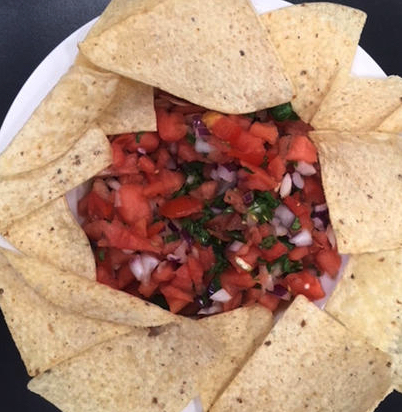
When The Washington Post was considering doing a feature story about my book, Diet Simple, among the recipes they tested was my chili. They loved it! The whole-front-page “Food” section feature was written. No one would ever guess my chili is healthy. That’s why I call it “stealthy healthy!”
Katherine’s Chili Non-Carne
(excerpted from Diet Simple: 195 Mental Tricks, Substitutions, Habits & Inspirations (LifeLine Press)
Try making this recipe a day ahead of time so the flavors and textures have a time to develop. I love this simple, quick chili recipe. It’s meatless but you don’t miss the meat because it’s so flavorful and the meat-like texture is deceptive. You should use the amount of garlic or chili powder that appeals to you. I like it hot and spicy! I double the recipe, using a whole pound of dried black beans, so I have plenty for the week. I use this dish as a lunch or dinner alongside a green salad. I also serve it at parties as a dip next to my fresh tomato salsa, nonfat Greek yogurt, and guacamole. It’s perfect rolled up in a tortilla or stuffed in a taco with some reduced fat cheese.
Serves 4 as a main course, 8 or more as a dip or topping
1/2 Cup Water (To Hydrate the Bulgur)
1/2 Cup Bulgur (Cracked Wheat)
1 Tbsp Olive or Canola Oil, or more
1 Large Onion, Chopped
3 Large Garlic Cloves, Minced (more or less)
3 Tbsp Hot Chile Powder (try 50/50 Chipotle Chili, maybe a dash of smoked paprika, called “Pimentón,” and just a pinch of Cinnamon)
1 Large Fresh Green Pepper, Chopped
1 28- oz. Can Italian Plum Tomatoes, chopped, including the liquid
1 Pound Can Kidney or Black Beans, whichever is preferred
2 Seeded Jalapeño Peppers, chopped, if desired
Salt and Pepper to Taste
Place the bulgur in a microwavable bowl. Add the boiled water. Place in microwave for 3 minutes. Keep in the microwave while it fluffs up. Meanwhile, sauté the vegetables.
Sauté the onions and garlic in the oil over low heat in a large pot until soft, 15 or more minutes. Add the chili powder and simmer for a few more minutes. Add the Fresh Green Pepper and cook until al dente. Add all remaining ingredients including the bulgur and simmer slowly over low to medium heat until flavors are well blended and vegetables are cooked to the desired consistency … a few minutes or longer, if desired. Adjust seasonings to your preference. Since many canned items were used, additional salt will probably not be needed.
Calories per serving 320, Total Fat 7g, Saturated Fat 1g, Carbohydrate 59g, Fiber 13g, Protein 12g
Katherine’s Spicy Fresh Mexican Salsa with Mild Guacamole
(excerpted from Diet Simple: 195 Mental Tricks, Substitutions, Habits & Inspirations (LifeLine Press)
Fresh salsa – Pico de Gallo – doesn’t really need a recipe. These are proportions I have found pleasing. But you may want your salsa, with more or less onions, more spice, sweeter (add watermelon), parsley instead of cilantro… The options are endless.
22 servings
Ingredients
1 large onion, peeled and chopped (about ½ pound)
2 lbs fresh tomatoes, peeled, seeded and chopped (start with about 3-1/2 lbs) (Use canned tomatoes, if good tomatoes aren’t available)
3 – 4 jalapeño peppers (1 – 2 ounces), to taste
¼ cup chopped fresh cilantro
½ tsp salt, or to taste
3 – 4 Tbsp fresh lime juice or the juice from 1 – 2 limes (optional. I often skip the limes)
Add the onion to the tomatoes. Finely chop 2 of the jalapeño peppers to start with. Taste. If you desire more heat, add 1 – 2 more jalapeños. Mix in the cilantro. Add the salt depending on your taste. Mix in the lime juice.
20 calories, 0g fat, 5g carb, 1g fiber, 1g protein
Katherine’s Guacamole
There a a million recipes for Guacamole. You can keep it mild, or make it hot by adding hot peppers. Throwing in fresh salsa makes it chunky and yummy, too.
12 Servings
Ingredients
2 ripe avocados
1/3 cup chopped fresh cilantro
2 Tbsp lime juice
¼ tsp salt, or to taste
freshly ground black pepper, to taste
Cut avocados in half lengthwise and pull out the pits. Scoop out the meat. Place ina medium bowl and mash, keeping some large chunks. Mix in the cilantro, lime juice, salt and pepper. Taste to adjust seasoning.
50 calories, 5g fat, 1g sat fat, 3g carbs, 2g fiber, 1g protein
7 Steps For Realistic, Achievable New Year’s Resolutions: A Second Chance!
- At January 20, 2019
- By Katherine
- In Articles, News
 0
0
The new year is a valuable opportunity to improve the quality of your life and happiness… Lose weight, eat healthfully, exercise… But most of us make impossible new year’s resolutions, and have given up by now. Does that describe you?
Don’t get me wrong. Resolutions are good. For instance, losing weight, eating more healthfully, being more physically active, are often essential life goals leading to increased energy, health and happiness.
But “losing weight” – or achieving any goal – means nothing without deciding on shrewd, small, concrete changes which can easily be incorporated into your daily routine. Look for approaches that complement, not dominate, your life.
Setting Goals, Keeping Goals
excerpted from “Diet Simple”
I can’t stress enough that goals should be fun and liberating, not just another ball and chain that weighs you down and reminds you of your failures. (We all have them, believe me!)
Everyone’s goals are different, of course. I don’t presume to have a one-size-fits-all set of goals that works for everyone. Over the years, however, I have developed some goal-setting strategies that I think will make a real difference.
For success, your goals should be:
Realistic. Perfectionistic goals set you up for failure.
Small, behavioral steps. You can’t set a goal of losing 2 pounds, but you can set a goal of doing the things that will cause you to lose 2 pounds. For instance, bringing a yogurt snack to work or adding delicious vegetable dishes to lunch and dinner.
Positive. Instead of stating what you won’t do (“I’ve got to stop eating chips every night”), state what you will do (“I’ll prepare a delicious fruit salad to snack on in the evenings”).
Flexible. Setting a goal to “exercise every day” may not be possible because of unforeseen circumstances. But saying instead, “I will be physically active 5 out of 7 days,” or “I will increase my daily pedometer steps by 2,000 this week,” is certainly do-able.
Measurable. “I’ll eat more fruits and vegetables,” is a noble goal, but how will you know when you reach it? Give yourself specific criteria so you can reward yourself for a job well done. “I’ll make a delicious vegetable batch recipe this weekend,” or “I’ll add a vegetable soup or salad to lunches this week.”
Important to you. Your goal must come from your heart, not your spouse’s or parent’s.
In a supportive environment. Does your home and work environment make healthful behaviors easier or harder? Do you need to have healthful, tasty, ready-to-grab foods in your refrigerator? Do you need your spouse to participate more fully with your healthy lifestyle? Take a look at your environment to determine if it is supportive enough and you have the tools you need to achieve your goals.
The battle of the bulge will be won at the margins. Sweeping changes are impractical and won’t work!
This article is excerpted from my book, “Diet Simple.”
Anti-Sugar Extremists Take the Joy – and Health – Out of Living
- At January 19, 2019
- By Katherine
- In Articles, News
 0
0
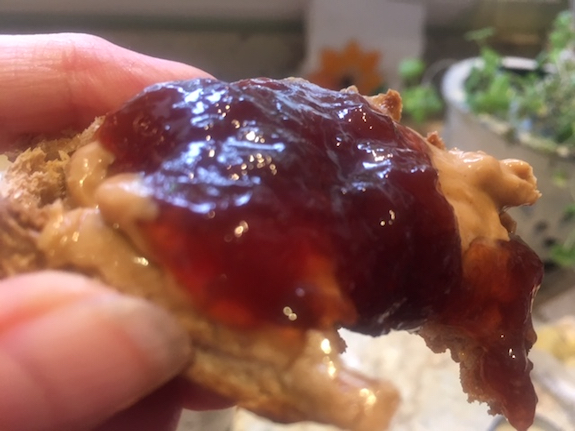
One of my favorite meals: peanut butter and jam on a toasted english muffin. Take that, sugar shamers!
I think most of us agree that extremism is, well, extreme! For most of you, extremism in politics or religion may first come to mind. But zealotry takes many forms and can hurt you in even worse, and more personal, ways when it comes to your health.
In the nutrition and food world, fanatics are far and wide, pronouncing this or that food as the death of us all, and others as saviors. Today, sugar is the demon. People exhaust themselves looking obsessively for grams of sugar on labels or on the internet.
I see too often, a look of shame when someone sheepishly “confesses” to eating a piece of chocolate or candy, a slice of birthday cake, ketchup, “too much” fruit, carrots, an ice cream cone when out with their kids, a latté, orange juice at breakfast, fruited yogurt, and more.
I mean, really, could bananas, carrots, or fruited yogurt be the cause of the world’s obesity epidemic? Or, more importantly, the cause of your weight problem?
Obviously, I jest. But many people are so misguided that they avoid essential sugar-containing foods. My heart goes out to them!
When health officials warn against too much sugar in the American diet, they’re not referring to fruit, 4 or 6 ounces of fruit juice daily, or yogurt – even if there is a tablespoon of jam on the bottom. They’re not referring to the occasional treat.
There is no scientific evidence that sugar in moderation, when included in an overall healthful diet, is harmful, except maybe if you don’t brush your teeth!
I am Grateful for My Neighbors Who Helped Me During the Snowstorm… Please Help Your Neighbors!
- At January 14, 2019
- By Katherine
- In Articles, News
 0
0

My angels – my neighbors – shoveled my stoop and walkway in front of my house. It helped me immensely. I feel so grateful for them!
My neighbors are angels. They shoveled me out of my home and cleared the “igloo” atop my car so that I could drive to the Salvation Army. The people there, recovering from drug and alcohol addictions, need me. I feel so much joy helping them. Some of you may already know that I teach them how to take care of their nutrition, health and wellness, so that they have a better chance of living healthfully during and after their recovery. And, perhaps, they may even have a better chance of recovering. I feel appreciated there. My colleagues, who work there 24/7 do much more than I.
So many people in your neighborhood need help getting around during emergencies. They may need to get to a grocery store, the hospital, their pharmacy. They may need water or shelter. But many of them will be too proud to ask.
I’m lucky that my neighbors know that I’m using crutches at the moment because of a sprained leg, and they help, whether I ask or not.
My guess is most of you do help people in need. I’m so grateful that my neighbors are among the angels in this world.
Should You “Detox”? A Few of My Intermittent Dieting Strategies
- At January 14, 2019
- By Katherine
- In Articles, News
 0
0
Should you “detox?” Did you gain weight last year? After your vacation or a business trip? Have you made a New Year’s Resolution to lose weight? Or have you given up on those resolutions? No need to give up! There are so many ways to lose weight quickly, most are unhealthy or backfire.
Intermittent dieting is in the news a lot! But be sure you are doing it in a way that is PERSONALIZED for you. That way it is enjoyable! And more likely to last. You can use your favorite strategy to lose weight but also to maintain it. That’s why finding a sustainable approach – one that is perfect for you, your lifestyle, your likes and dislikes – is critical.
I’ve found a way to lose weight fast that is satisfying, increases your energy and confidence, allows you to eat your favorite foods, is sustainable, good for you…and, most importantly, works like a charm! I call it my “Diet Simple Detox.” In fact, I’m doing my detox program now after some holiday weight gain.
One UNsuccessful way of Intermittent Dieting is fasting at breakfast and/or lunch. That usually backfires by causing craving and overeating as the day goes by, which is the opposite of what you need for weight loss.
Intermittent dieting is an approach that doesn’t need to be followed exactly how you might have read about it somewhere. Or in a way that someone you know is doing it. It absolutely can be personalized to your own needs and specifications!
I always give my clients the option and we decide the best way to go about it together. One of the most successful ways is to “semi-fast” in the evening (no need to be restrictive earlier in the day). The way I recommend doing it is to eat about 2/3 or 3/4 of your calorie needs before the evening and then skip dinner, or stick with something very low calorie such as a veggies, yogurt and/or fruit, a salad or soup. The two nights of semi-fasting allow you to eat more enjoyably overall, it can undo damage done during the week, and … surprise … it’s even healthy and enhances your energy.**
There have been numerous studies establishing that eating more during the day and less at night is more likely to aid weight loss. This confirms my observations and recommendations of the last 30 years (Ha Ha! I know, I’m a genius).
The key to quick weight loss and a successful semi-fast is to find two nights when semi-fasting would be easier for you. One of my clients semi-fasts on nights her husband is traveling, when she isn’t faced with eating a full meal with him; she has a satisfying veggie-centric soup. Another client simply doesn’t eat Monday and Tuesday nights (I couldn’t do it!). She lost 35 pounds before her wedding and has kept it off. A client who is a professor has two days when he teaches for ten hours. He gets home exhausted and has found he doesn’t need dinner those nights.
I personally have used this strategy most of my adult life, before knowing about the studies. My motto since the 1980s has been “Light at Night,” and it works. I generally eat light at night for weight maintenance and I’m doing my “Diet Simple Detox” now – after gaining some holiday pounds.
You could lose two to three pounds a week with my “Diet Simple Detox”!
** A growing body of evidence shows calorie restricting may reduce disease and extend life. There are many theories to explain this and one is that a lower metabolism causes less oxidation, cell proliferation (cancer), and decreases harmful chemicals and hormones in your body.
Men & Women Should Learn From Each Other About Weight Loss: “Healthline” Interviews Katherine
- At January 13, 2019
- By Katherine
- In Articles, News
 0
0
Cathy Cassata interviews Katherine for Healthline. Some excerpts…
You’ve heard it before: Men are from Mars, Women are from Venus
Cathy: Men and women often try to tackle weight loss differently, but they’re usually more successful with a similar approach. Here’s why.
Katherine: “Genetically, men tend to have more muscle and less fat mass than women due to higher levels of testosterone, which is why they need to eat more calories than women to maintain their same weight.
“This is because muscle burns more calories at rest than fat… That’s one reason why women need to build muscle,” Tallmadge told Healthline.
“When you lose weight, about half of what you lose is muscle so it’s really important to eat right and to strength train while losing weight to minimize losing muscle.” Read “4 Steps for Building Muscle” to learn how to increase fat loss and prevent muscle loss, by Katherine…
[Lesson: Everyone needs to strength train while losing weight, but particularly women]
Preferences for Food Differ
Tallmadge says men typically choose meat-related diets whereas women may focus on vegetables and fruits [and carbs].
“That’s why the Paleo and Atkins diets attract more men,” she said. “Meat diets may not work as well for women because men can get away with eating more calories and still lose weight while women can’t, and meat tends to be high in calories.”
[Lesson: Women need to eat more lean protein while men need to eat more fruits, vegetables and healthy carbs]
Psychosocial Factors
Katherine: “Men tend to take extreme measures when trying to lose weight, such as skipping meals all day.”
Read more about how men and women can learn from each other about how they diet and lose weight in Cathy Cassata’s excellent article in Healthline…
Should YOU do a Detox? Katherine Interviewed by “My Fitness Pal”
- At January 12, 2019
- By Katherine
- In Articles, News
 0
0

Detox with Katherine to make 2019 Your Happiest Year! Article by CASSIE SHORTSLEEVE FOR “MY FITNESS PAL”
Some excerpts from Cassie Shortsleeve’s “My Fitness Pal” article:
Katherine’s philosophy… “People often need to detox through the year for various reasons. I try to help them find a way that is sustainable and something they can return to over and over as the situation merits. Situations such as coming home from a vacation [which I personally am doing now], a lavish business trip or a holiday are often times when we eat more than usual and may not be able to be as physically active. The consequence is often weight gain,” said Katherine Tallmadge [Since returning from a vacation, I’m following my “detox” program, which YOU can do, too, in your own satisfying and personalized way].
“Recovering from slips is one of the hardest, but most important skills in maintaining healthy habits and weight-loss results…” said Tallmadge…
Continue reading Cassie Shortsleeve’s excellent article on “My Fitness Pal’s” Blog…
Proposed USDA Farm Bill Rule Threatens Food Security and Access to Vital Nutrition Programs
- At December 22, 2018
- By Katherine
- In Articles, News
 0
0
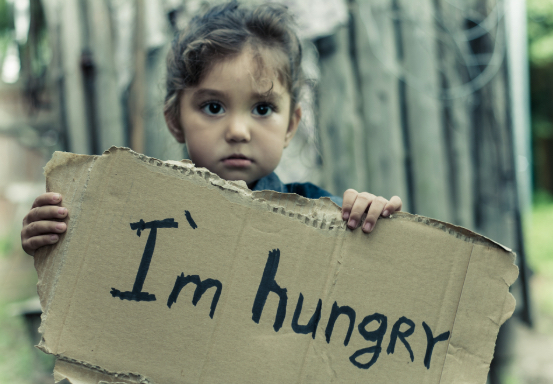
Urgent message from Katherine – The new farm bill, signed into law December 20 by President Trump, will serve the public by investing in a strong food safety net, nutrition education programs that promote healthy people, and a robust food system and strengthened economy, according to the Academy of Nutrition and Dietetics.
However, a proposed rule announced by the U.S. Department of Agriculture hours before the signing could decrease states’ flexibility to waive work requirements for people who receive benefits under the Supplemental Nutrition Assistance Program (SNAP).
“The farm bill, as signed into law, reinforces the inherent link between agriculture and nutrition by fostering access to nutrient-dense foods that promote health and providing consumer education that increases nutrition literacy and life management skills,” said registered dietitian nutritionist and Academy of Nutrition & Dietetics President Mary Russell.
“The bipartisan farm bill ensures the integrity of SNAP, while making targeted improvements for seniors and people with disabilities and modernizing systems and technology,” Russell said.
USDA’s proposed rule, however, would affect people’s eligibility for SNAP, which the Academy believes is highly effective in preventing food insecurity and alleviating poverty, and is linked with improved health and lower health care costs.
“SNAP helps one in eight Americans put food on the table and keeps more than 8 million people out of poverty. The Academy supports efforts to ensure states have the flexibility needed to improve people’s food security,” Russell said.
“Access to food is a key component of reducing food insecurity. Nutrition education through the SNAP-Ed program affords participants the opportunity to budget for and prepare healthy foods and maximize their purchasing ability,” Russell said.
###
The Academy of Nutrition and Dietetics is the world’s largest organization of food and nutrition professionals. The Academy is committed to improving the nation’s health and advancing the profession of dietetics through research, education and advocacy.
Katherine’s 5th Batch Recipe: Chocolate-Covered Holiday Treats!
My fifth and final 2018 weekly batch recipe is all about holiday celebrating. This batch is a fun – and messy – activity for children, and adults, of course. They make an impressive gift, or even a dessert or snack for a holiday gathering. They taste like fresh peanut butter cups, but unbelievably … every. single. ingredient … is natural and healthful!
Batches make the most of the time you spend in the kitchen and ease some stress from your life. I feature batch recipes in my books, Diet Simple and Diet Simple Farm to Table Recipes. Batches are your favorite delicious, quick and easy meals made ahead of time so that you always have something in the freezer or refrigerator, ready to eat, or serve for guests, on a moment’s notice. And, believe it or not, though it may take a little extra time to prepare the batches on the weekends, it actually saves time overall and calms the daily whirlwind of your life.
Chocolate-Covered Peanut Butter & Oat Balls
I always at least quadruple this recipe. It’s only four ingredients. It’s fast. It’s simple. These treats are so addictive, they’re gone in a flash, so be on your toes!
A Heaping 1/2 Cup of Peanut Butter (or any nut butter you like, such as Almond Butter)
3/4 Cup Old Fashioned or Quick Rolled Oats
1 Tablespoon Pure Maple Syrup
3/4 Cup semi-sweet chocolate chips, melted
Natural, Unsweetened Coconut Flakes (optional)
Chopped Roasted Nuts (optional)
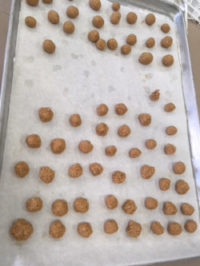 Mix oats, peanut butter and maple syrup. Roll into about 12 or more balls (the smaller the balls, the more chocolate on each one!) and place them on a baking sheet which is covered with parchment paper. Freeze about 15 minutes or until set.
Mix oats, peanut butter and maple syrup. Roll into about 12 or more balls (the smaller the balls, the more chocolate on each one!) and place them on a baking sheet which is covered with parchment paper. Freeze about 15 minutes or until set.
Pull the frozen balls out of the freezer. Roll them in the melted chocolate and, if you wish, sprinkle with chopped nuts and/or coconut. Melt the chocolate carefully to prevent it from burning. Use a double boiler and stir until melted, or use a microwave stirring every 30 seconds until melted.
You may need to heat the chocolate again as the frozen balls may harden the chocolate while you’re “working.” Once every ball is generously covered and every last bit of chocolate is used up, freeze until the balls are set, at least 15 minutes.
Pull them out of the freezer and enjoy. You can save them in a plastic container in your refrigerator for three weeks. The more you make, the better!
Adapted from Eating Well Magazine.
Roasted Vegetables: I Promise They’re Tastier Than French Fries!
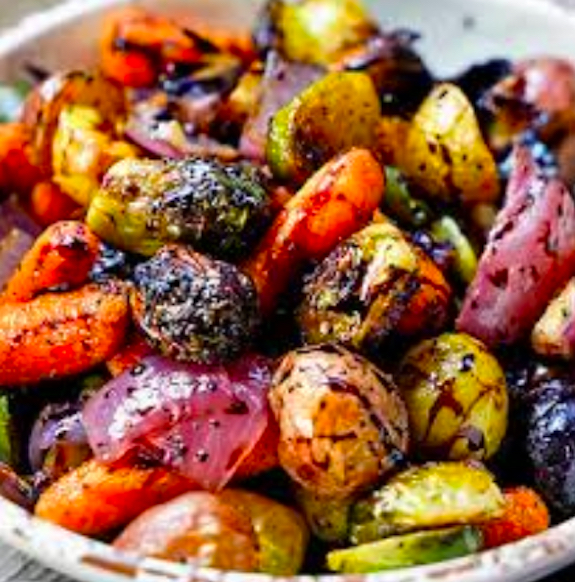
Roasted Vegetables, if done correctly, become caramelized, golden brown, and taste better than french fries. They also create an artistic presentation. Photo by KevinIsCooking.com
If roasted correctly, this stunning rainbow of vegetables can taste better than french fries. Yes. You heard me! Roasting for the ideal length of time caramelizes vegetables, conveying sweetness and expressing more of their aromatic flavors. They are crispy and golden on the outside with a tender inside. The array of vegetables satisfies your natural urge for a variety of color, texture, flavor and shape, leftover from cave man times, all of which, together, help prevent cravings and provide an array of nutrients, important for survival. Even in today’s space age, you still have that instinct for variety. Add a fruit, such as apples or peaches to create more sweet, if you wish.
My fourth weekly batch recipe, based on what you can find at your Farmers Market this weekend (beets, carrots, potatoes of all kinds, broccoli, and brussels sprouts), is Tastier Than French Fries! Roasted Veggies.
Batches are all about making the most of the time you spend in the kitchen and easing some stress from your life. I feature batch recipes in my books, Diet Simple and Diet Simple Farm to Table Recipes. Batches are your favorite delicious, quick and easy meals made ahead of time so that you always have something in the freezer or refrigerator, ready to eat, or serve for guests, on a moment’s notice. And, believe it or not, though it may take a little extra time to prepare the batches on the weekends, it actually saves time overall and calms the daily whirlwind of your life.
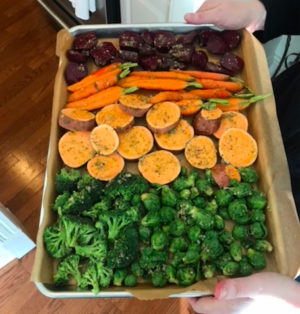
Beets, Carrots, Yukon Gold Potatoes, Brussels Sprouts, and Broccoli Create a Rainbow of Colors, Textures, Shapes & Flavors
Tastier Than French Fries! Roasted Veggies
By Katherine Tallmadge
Use this side dish with anything. It creates a colorful, artistic presentation and adds an assortment of flavors, shapes & textures, delightful to all palates. You can also use them cold in a salad, toss them in a soup, or add them to an omelette. They’re a great batch; they should last for a week.
Some roast better than others, such as cauliflower, brussels sprouts, carrots, beets, mushrooms, winter squash, tomatoes, onions, eggplant, bell peppers, and of course, we all know about potatoes!
1. Preheat oven to 400 degrees Farenheit,
2. Select the combination of vegetables you’d like to roast.
3. Cut the vegetables (and fruits, if used) in similar size pieces so that they cook evenly,
4. Place in a large bowl or plastic bag, add canola oil (it won’t burn at a high temperature like butter or olive oil), salt, pepper, and an herb of your choice, such as fresh Rosemary,
5. Toss or shake until all vegetables are coated (but not too greasy). Pour off any excess oil,
6. Place on a cookie sheet or baking pan covered with aluminum foil or parchment paper (prevents sticking to your pan), and place on the center rack in your oven,
7. Roast for 30 to 45 minutes, tossing the vegetables or shaking the pan occasionally to cook evenly,
8. Roast the vegetables until they are golden brown on the outside, but tender in the center – like a french fry!
9. Different vegetables, cut in varying sizes will take a longer or shorter time to reach perfection.
Katherine’s Weekly Batch Recipe: Roberto Donna’s Stuffed Shells with Ricotta & Roasted Eggplant

Enjoying Roberto Donna’s Stuffed Shells with Ricotta & Roasted Eggplant featured in my book, Diet Simple
My third weekly batch recipe, based on what you can find at your Farmers Market this weekend (Tomatoes, Eggplant, Garlic, maybe Basil, the Ricotta cheese, and something comparable to Parmesan – do some tastings!), is Roberto Donna’s Baked Shells with Ricotta and Eggplant. It is featured in my book, Diet Simple, and a gift from Washington’s most famous, James Beard Award-winning, Italian chef, Roberto Donna, currently Executive Chef at Al Dente Restaurant.
Batches are all about making the most of the time you spend in the kitchen and easing some stress from your life. I feature batch recipes in my books, Diet Simple and Diet Simple Farm to Table Recipes. Batches are your favorite delicious, quick and easy meals made ahead of time so that you always have something in the freezer or refrigerator, ready to eat, or serve for guests, on a moment’s notice. And, believe it or not, though it may take a little extra time to prepare the batches on the weekends, it actually saves time overall and calms the daily whirlwind of your life.
Roberto Donna’s Stuffed Shells with Ricotta and Roasted Eggplant
excerpted from “Diet Simple: 195 Mental Tricks, Substitutions, Habits & Inspirations”
This elegant dish, always a crowd pleaser, comes together quickly. Though it may be a little more complex than some of my other batches, it’s worth it! Using canned tomatoes and roasted peppers is perfectly fine in this recipe instead of using fresh, to save time. This unique Italian fare makes for an exquisite meal, or appetizer, minus loads of calories. And it can be refrigerated for use later, then re-heated easily with your microwave.
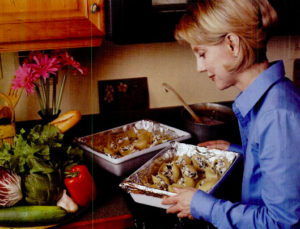
Katherine baking Roberto Donna’s Stuffed Shells with Ricotta & Roasted Eggplant, featured in her book, “Diet Simple”
Serves 4
8 oz. peeled and cubed eggplant, sprinkled with 1 Tbs. olive oil
8 oz. low-fat ricotta cheese
2 Tbs. capers, drained (optional)
Salt and freshly ground black pepper to taste
12 fresh basil leaves, chiffonade (place the basil leaves on top of each other so they’re in a pile, then slice diagonally in thin strips)
12 jumbo shells, cooked, drained and cooled (you may want to boil more than 12, as some fall apart)
2 Tbs. olive oil
4 Tbs. grated Parmesan, optional
Italian parsley leaves for garnish
Olive Oil Spray (optional)
Tomato Sauce (as an option, you can use a favorite commercial sauce):
1 1/2 cups canned plum tomatoes, or an equivalent amount of cooked fresh tomatoes
1/2 cup pureed tomatoes from a can, or an equivalent amount of cooked, pureed tomatoes
1/4 cup roasted, peeled, seeded red peppers (optional)
1 garlic clove, minced
4 tbsp grated Parmesan cheese, or an equivalent amount of a comparable cheese from the Farmers Market
Italian parsley leaves for garnish
1. Preheat oven to 450F,
2. Place eggplant cubes on nonstick baking sheet – if you use parchment paper on the pan, the eggplant will not stick. Roast about 15 minutes until crisp and golden. Remove from oven,
3. Mix Ricotta with the Parmesan cheese, capers, the and eggplant cubes in mixing bowl. Season with salt and pepper and 4 chiffonade basil leaves. Set aside,
4. Reduce oven temperature to 400F,
5. Cover baking dish with foil or parchment paper and spray with nonstick vegetable spray. Fill each shell with about 1 tablespoon ricotta cheese mixture, filling evenly among shells until used up. Place the shells on the baking dish. Brush tops of shells with 1 tablespoon olive oil (or spray with olive oil spray). Bake 10 minutes, or until crisped and golden brown at the edges,
6. Meanwhile, to make tomato sauce, purée tomatoes, remaining basil, rest of olive oil and garlic (or use your favorite commercial sauce). Season with salt and pepper,
7. Heat sauce over low heat, just until warm (Roberto says a simple sauce, without overcooking, is the best),
8. Remove and set aside,
9. To serve, spoon one-quarter of the sauce on the dish (use a heated dish, if possible), and place 3 stuffed shells on top. Drizzle a little extra sauce over each top and garnish with parsley leaf and extra Parmesan cheese, if desired. Repeat with remaining shells and sauce. Refrigerate if not using immediately,
10. To re-heat, place 3 shells on top of sauce on microwavable plate or a shallow bowl, cover with a glass bowl and microwave for about 2 minutes,
11. If you are serving the stuffed shells as an appetizer, just one shell per plate will do.
Per serving, approximately (depending on the type of Ricotta cheese you use):
360 calories
total fat 17 grams
saturated fat 6 grams
Fiber 4 grams
Protein 12 grams
Dear Katherine: I’m Nervous About the Holidays Approaching with All the Parties and Fattening Food Around. What Should I Do?
- At November 30, 2018
- By Katherine
- In Articles, News
 0
0
First things first: YES! You can have tons of fun – and eat your favorite scrumptious and unique holiday foods – with your family and friends and party party party… while still reaching your health and weight goals. I know this is important to you, so it is essential to me to help you do it!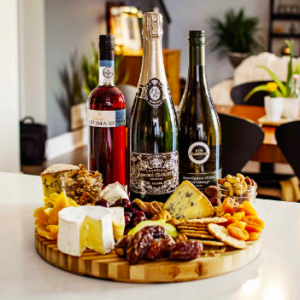
HOW?
Important question! But easier to solve, than you may fear. Since everyone’s life is different, how you handle the holidays has to be individualized.
I’m going to give you a bunch of ideas. Take a listen and choose the ones that fit your situation best. I guarantee you’ll find an answer that is perfect for you.
My “Top 40 Mental Tricks, Substitutions, Habits & Inspirations for the Holidays” on “The Boost with Elena Lipson” Podcast! Just 28 minutes long. It’s worth it …
Please send me more questions!
The holidays are a time for celebrating life and for bringing friends and families together. They also mean many opportunities for socializing, eating and drinking. My belief is that you can do it all, have fun, feel great and still stay in shape and good health during the holidays with just a little planning and support. Besides, what’s the alternative?
This Week’s Batch Recipe: Cauliflower Vichyssoise
My second weekly batch recipe, based on what you can find at your Farmers Market this weekend is Cauliflower Vichyssoise. It is a take on the French Classic Vichyssoise – leak and potato soup – substituting most of the potatoes for cauliflower. Even though Vichyssoise is usally served cold, in the winter I serve my Cauliflower Vichyssoise warm.
Batches are all about making the most of the time you spend in the kitchen and easing some stress from your life. I feature batch recipes in my books, Diet Simple and Diet Simple Farm to Table Recipes. Batches are your favorite delicious, quick and easy meals made ahead of time so that you always have something in the freezer or refrigerator, ready to eat on a moment’s notice. And, believe it or not, even though you’re spending time putting the batch together, overall, it actually saves time.
Soups are some of the best “batches” in the cold dark days of winter. They’re warm, filling, psychologically satisfying and sate the natural urge for comfort food in the winter. Eating soup also makes it easier to lose weight. How?
Classic studies have found that soups are effective weight loss foods. As long as the volume of a food is high (when water or air are incorporated into the food), people can feel full with fewer calories. In one study, researchers varied the water content in three different first courses to see how it would affect peoples’ intake at the main course. The study subjects were fed either 1) chicken rice casserole, 2) chicken rice casserole served with a glass of water, or 3) chicken rice soup – basically the casserole with water/broth added. The researchers found the subjects who ate the soup consumed 26 percent less, about 100 calories fewer, at the main course, compared to the other conditions, even though all three conditions provided the same amount of calories. As I always say, “A calorie isn’t always a calorie!”
Researchers surmise that a large food volume caused by water, even without added calories, helps us feel more satisfied for several reasons. It causes stomach stretching and slows stomach emptying, stimulating the nerves and hormones that signal feelings of fullness. Also, visually seeing a large volume of food can increase your ability to feel satisfied by it, even though the calories are relatively low. Finally, the larger a meal and the longer a meal goes on, studies show, your satisfaction declines and you lose interest in completing it. Water is the component in food which has the largest influence on how much you eat. This study, and many others like it, find eating a high-water-content, low-calorie first course, such as soup, enhances satisfaction and reduces overall calorie intake.
Cauliflower “Vichyssoise”
excerpted from Diet Simple Farm to Table Recipes: 50 New Reasons to Cook in Season
Cauliflower is in the species of foods called “brassica.” The brassica family of foods has extremely high nutritional values and contain high levels of antioxidants and nutrients such as vitamin C, selenium, calcium, potassium, folic acid and choline – important for the brain, as well as soluble fiber, which reduces cholesterol and helps level blood sugar. Brassica, a huge category of foods including broccoli, cabbages, mustard seeds and greens, also contain potent anti-cancer compounds which help detoxify carcinogens in the liver before they continue to circulate in your bloodstream. These compounds also aid your immune response with anti-viral and anti-bacterial properties.
4 to 8 Servings
Ingredients
1 Tbsp Canola Oil
2 Leeks
1 Head Cauliflower
1 Medium Potato
6 Cups Chicken Stock (or vegetable stock), fat removed
1 Cup 1% Milk
Salt and Freshly Ground Pepper
8 leaves Fresh Parsley, Chopped
Slice the white part of the leeks, cut the cauliflower into florets and set aside. Heat canola oil in an iron skillet over medium heat. Add sliced leeks, stirring frequently for about ten minutes until soft. Stir in the stock, cauliflower and potato. Reduce the heat, cover and simmer for about twenty minutes or until vegetables are soft. When mixture has cooled a bit, puree with the The Cuisinart Smart Stick… No mess, no fuss! (or blender or food processor), add the milk. Serve hot in the cool weather, cold in the hot weather. Add salt and freshly ground pepper to taste. Garnish with chopped parsley.
700 calories in the entire pot of soup
2019 Nobel Peace Prize Nominee, Chef José Andrés, Serving & Celebrating in My Washington, DC Kitchen
- At November 28, 2018
- By Katherine
- In Articles, News
 0
0

Chef José Andrés serving Smithsonian Folklife Festival “Food Culture USA” chefs and volunteers in my Washington, DC home’s kitchen
Food security promotes peace. The power of food provides people health, and happiness, and can help raise them from poverty, advancing their education and involvement in the world. And that is worth something! This has now been acknowledged by the enlightened nomination of local chef and hero, José Ramón Andrés Puerta, known as José Andrés, for the 2019 Nobel Peace Prize.
José began his American career with the opening of his tapas restaurant, Jaleo, in 1993 in Washington, DC.
At the time of Jaleo’s opening, I interviewed José for the University of the District of Columbia’s Public Radio Station (with a colleague). During that interview at Jaleo, José was generous, enthusiastic, and passionate; I was impressed by his sheer joy about food, life… everything. The small bites he served were delightful. Then, this twenty-something, a fresh immigrant from Spain, shared his future ambitions with us. They were fantastical aspirations only few could imagine, and even fewer could achieve. It seems he exceeded his!
José was a leader and award-winner among Washington, DC chefs soon after he arrived. His talent, energy, and hospitality fueled his popularity; and it grew swiftly, along with his many restaurant openings, and causes in which he founded or participated.

At the end of the two-week “Food Culture USA” Smithsonian Folklife Festival, the volunteer chefs and volunteers celebrated in my large Washington, DC Kitchen (José is in the far right)
I had the privilege of working alongside José on several occasions through the years. During the 2005 Smithsonian Folklife Festival, featuring “Food Culture USA,” and curated by my friend and colleague, Joan Nathan, José and I performed a food demonstration on-stage together (actually, José performed, as I stood beside him agog at his performance). He made gazpacho for the dazzled crowd (mainly a sprinkling of veggies pureed in a sea of Spanish olive oil!)… Something happened that afternoon that I’ve told very few, and it even slipped my mind until putting this piece together: There was a woman at our demo who worked with the Smithsonian who was very surly toward me; she even tried to keep me from talking. She didn’t think the topic of “nutrition” belonged at the festival (that was a general attitude among food enthusiasts at the time, and still lingers today). When José noticed her churlish reaction to me, he took me aside and assured me that I – and nutrition – were appreciated, and he encouraged me to ignore her and get out there and perform! This act of kindness, shown to me during a private, seemingly unimportant moment, was clearly prescient… His goodness has become legendary, and his interest in nutrition and food science is now generally known.
At the end of the two-week “Food Culture USA” Folklife Festival on the swelteringly hot National Mall (it’s held annually in July!), Joan Nathan planned a thank you celebration for the generous and self-sacrificing volunteers and chefs … at my place. Among them, José Andrés.
José is as down-to-earth as they come. I see him occasionally in the ‘hood, wearing an old t-shirt and jeans (forgive me, José), and always graciously responding to the few who might approach him.
Andrés emerged as a leader of the disaster relief efforts in Puerto Rico in the wake of Hurricane Maria in 2017. He organized a grass-roots movement of chefs and volunteers to establish communications, food supplies, and other resources and started serving meals. Andrés and his organization World Central Kitchen (WCK) served more than two million meals in the first month after the hurricane, according to Wikipedia.org.
“Named as one of Time Magazine’s ‘100 Most Influential People’ in both 2012 and 2018, and ‘Outstanding Chef’ and ‘Humanitarian of the Year’ by the James Beard Foundation, Andrés is an internationally-recognized culinary innovator, author, educator, television personality, humanitarian and chef/owner of ThinkFoodGroup. Andrés’ restaurant group includes 31 restaurants, ranging in a variety of culinary experiences from food trucks to his multi-location vegetable-focused fast casual, Beefsteak, and world-class tasting menus like Michelin starred minibar by José Andrés,” according to Jaleo.com
“Andrés is the only chef globally that has both a two-star Michelin restaurant and four Bib Gourmands. As a naturalized citizen, originally from Spain, Andrés has been a tireless advocate for immigration reform. Together with World Central Kitchen and #ChefsForPuertoRico, Andrés has served over 3.5 million meals in Puerto Rico following the devastation of Hurricane Maria in 2017, reaching communities in need across all 78 municipalities through 23 kitchens. Andrés has earned numerous awards including the 2015 National Humanities Medal, one of 12 distinguished recipients of the award from the National Endowment for the Humanities,” according to Jaleo.com
This Week’s Seasonal Batch Recipe: Thanksgiving Turkey, Veggie & Barley Soup
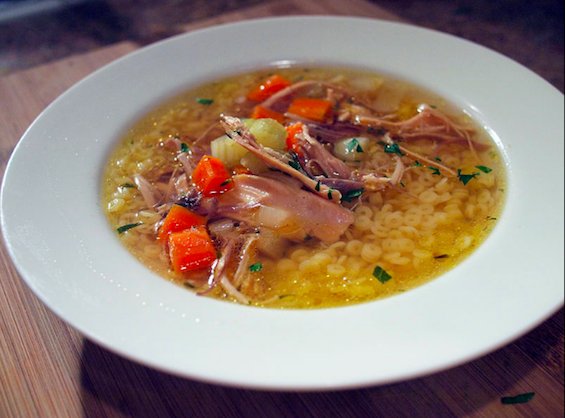
Turkey, Veggie & Barley Soup, an adaptation of Michel Richard’s Chicken, Mushroom & Barley Soup in my book, “Diet Simple: 195 Mental Tricks, Substitutions, Habits & Inspirations”
The second best part of Thanksgiving is leftovers! I try to encourage my clients to focus on healthy leftovers, of course, but perfection is never possible or even a healthy objective. One Thanksgiving, I saved the French Apple Cake dessert for breakfast the next morning (It’s better for your weight and health to eat the most fattening food earlier in the day – Sometimes, it’s all about STRATEGY!). It was one of the best breakfasts of my life!
This is the first recipe in my “Seasonal Batch Recipe” series. My advice: Make the most of the time you spend in the kitchen and ease some stress from your life by batch cooking. I feature batch recipes in my books, Diet Simple and Diet Simple Farm to Table Recipes. Batches are your favorite delicious, quick and easy meals made ahead of time so that you always have something in the freezer or refrigerator, ready to eat on a moment’s notice. And it actually saves time. When you get home from work in the evening, just zap the batch in the microwave and Voilà! Instant delicious, nutritious dinner.
Studies show you’re more likely to eat whatever is in your environment. If you surround yourself with yummy, healthy, wholesome foods, that’s what you’ll end up eating. It’s simple physics: You naturally take the path of least resistance. So why not make things easy on yourself? Plan to make a few batch meals, or even just one, this weekend so you and your family will have their home-made favorites at your fingertips all week long.
Let’s take advantage and start batching with America’s favorite holiday-for-leftovers!
Thanksgiving Turkey, Vegetable and Barley Soup
Adapted from Michel Richard’s Chicken, Mushroom and Barley Soup, excerpted from Diet Simple: 195 Mental Tricks, Substitutions, Habits & Inspirations
4 servings
Nothing could be simpler or more delicate than this dish. The flavors are rich and earthy. It contains all the elements of a complete meal. It’s nutritious and filling to boot. I feel honored that Michel Richard provided this recipe for Diet Simple. It fits perfectly as something you can cook, store in the refrigerator and eat for several meals and is a wonderfully delicious addition.
Ingredients:
2 Tbsp Olive Oil
2 Small Onions, Peeled and Diced
1 Pound Thinly Sliced Mushrooms, or other Vegetables
2 Quarts Unsalted Turkey Stock (defatted)
2 Tablespoons Light Soy Sauce
6 Tbsp Pearl Barley
4 Cloves Garlic, peeled and minced
Salt and Freshly Ground Black Pepper to taste
About 1 pound, boned, skinned and sliced Turkey into bite-size pieces or small slices
About 1-1/2 Cup (about 3 ounces) freshly grated Parmesan Cheese (Optional)
Heat the oil in a heavy medium saucepan over medium-low heat. Add the onion, cover and cook until translucent, for about ten minutes, stirring occasionally. Add the mushrooms – and/or other leftover vegetables. Increase heat to medium-high and cook uncovered until lightly browned, for about five minutes, stirring occasionally. Add the turkey stock, soy sauce, barley and garlic. Simmer gently for 45 minutes to cook barley and blend flavors. Season with salt and pepper. (This can be prepared ahead, cooled, covered and set aside at cool room temperature for up to four hours or refrigerated for several days.)
To serve, bring the soup to a light simmer, add turkey, reduce heat and simmer just until the turkey becomes warm, for about two to three minutes. Ladle into four soup plates. Pass Parmesan, if desired.
Nutritional Analysis:
Calories320
Total Fat5g
Saturated Fat2g
Cholesterol70mg
Sodium1,100 mg
Total Carbohydrate26g
Dietary Fiber6g
Soluble Fiber 1.20 g
Omega 3 Fatty Acids 0.1 g
Sugars1g
Protein 34g
Nutritional Analysis with Parmesan
Calories500
Calories from Fat 200
Total Fat22g
Saturated Fat9g
Cholesterol100mg
Sodium 1800mg
Total Carbohydrate28g
Today’s Lunch: My Take on the All American Hot Dog
Hot dogs! The all-American classic. My favorite version is a hot dog with mustard & onions. How in the world did I come up with that as a go-to meal (besides it being fast and easy)? Who knows! I never liked hot dogs, or mustard, or onions growing up. But, my tastes changed as I grew up. Children have a natural “neofoodphobia,” that is, they’re afraid of new food. But we grow out of it and experimenting with new foods can become a pleasure (uh, well, with most adults anyway!).
I still don’t really care for hot dogs, but I’ve discovered chicken sausages that are lighter and even tastier. They come in all kinds of different flavors: sweet italian, spicy italian, sun-dried tomato and basil, and more. I’ve never liked regular yellow mustard, but when I tried honey mustard, I was hooked. My Swedish mother swears by Swedish mustard, and I like its mild and slightly sweet flavor, too.
So, this has become my “take” on the All (~90%)-American hot dog with mustard & onions. I start with a chicken sausage, which I heat in the microwave.

My “bun” is usually a toasted 100% whole wheat English muffin, because that is what I keep on hand for everything, from creating peanut butter and jelly sandwiches (the peanut butter melts in the nooks and crannies!) to fried or scrambled eggs. Of course, to fit on the english muffin, I slice the chicken sausage/hot dog.

I discovered these wonderfully succulent and sweet mini onions at Quaker Valley Orchards found at either Rose Park’s or Dupont Circle’s Farmers Market. They get chopped and tossed on…

Next, I squirt some swirls of Swedish mustard (I believe it was bought at Ikea) over the top of everything…

I slice up some fresh tomatoes. The Japanese Kumato tomatoes from the grocery store are great this time of year. Add some fresh rosemary from my garden… And Voila!
Bon Appetit!
Meditation on the Beauty of Autumn and Our Ancient Ginkgo Trees
- At November 04, 2018
- By Katherine
- In Articles, News
 0
0

Ginkgo Trees Exhibiting Their Gorgeous Halo of Saffron-Yellow on the Streets of Washington, DC. This particular stand of Ginkgos is in Rose Park in Georgetown, DC’s East Village (photo by Judith Beerman)
Getting out in nature, among trees, in the fresh air, and even a little sun, is essential to your health, according to medical experts. Luckily, here in Washington, DC, there are still wild forests and waterways to enjoy close by and in every direction, but luckily right in the middle of the city, too.
Song for Autumn
by Mary Oliver from New and Selected Poems: Volume II (Beacon press)
In the deep fall
don’t you imagine the leaves think how
comfortable it will be to touch
the earth instead of the
nothingness of air and the endless
freshets of wind? And don’t you think
the trees themselves, especially those with mossy,
warm caves, begin to think
of the birds that will come — six, a dozen — to sleep
inside their bodies? And don’t you hear
the goldenrod whispering goodbye,
the everlasting being crowned with the first
tuffets of snow? The pond
vanishes, and the white field over which
the fox runs so quickly brings out
its blue shadows. And the wind pumps its
bellows. And at evening especially,
the piled firewood shifts a little,
longing to be on its way.
There is a controversy raging about a particular prolific city tree and whether to chop them down. Ginkgo trees are all over DC, on several blocks in Georgetown, a neighborhood here, and have been for at least 40 to 50 years, and some, for over 100, even perhaps 150 years or longer. “The 27th Street stand of Ginkgos in the East Village of Georgetown are the largest and oldest in the United States, according to National Arboretum staff,” said long-time Georgetown resident Nancy Flinn. Some neighbors don’t want them, at least not the female Ginkgos, because at a certain time of the year, they can be pretty messy and smelly. But not everyone agrees with the proposed solution of eliminating the trees. It’s a hot debate in a community, such as Georgetown, which values its trees and historic preservation.

“They’re glorious trees! They shouldn’t cut them down; it’s the reason I live here!” said Georgetown resident and world traveler, Lloyd Thorson, who believes the tree in front of his building, Downing and Vaux, on 30th Street, “must be at least 300 years old.”

Some experts date the tree back to at least the 1840s. Ginkgos grow very slowly, so getting to such a large size indicates it is quite old, probably at least 150 years old. Here, the Ginkgo next to Mr. Thorson, in a closer up photo, shows the wide girth of this ancient specimen.
“There are amazing Ginkgos on the U.S. Capitol grounds, including one near the Supreme Court that dates back to Frederick Law Olmsted’s landscaping [Olmsted designed NYC’s Central Park],” said Melanie Choukas-Bradley, author of The Joy of Forest Bathing: Reconnect with Wild Places & Rejuvenate Your Life, and other nature books, who leads nature walks sponsored by the Smithsonian Associates and the Audubon Naturalist Society. “Behind the Smithsonian castle … there are some beautiful Ginkgos,” Ms. Choukas-Bradley said.

They’s such an old plant species, Ginkgos are considered “living fossils,” dating back 270 million years, first appearing in the early Jurassic period.
“What a fabulous tradition to have in our historic village,” said Outerbridge Horsey, noted architiect and Georgetown neighbor, referring to the the Ginkgos’ provenance. Mr. Horsey is a co-founder of “Trees For Georgetown,” dedicated to “plant and maintain the trees that line the residential streets of our community.” Trees For Georgetown along with Casey Trees and the DC Urban Forestry Division, nowadays, only plant male Ginkgos, such as the “Princeton Sentry” in Georgetown, according to Mr. Horsey.

Ginkgo leaves are uniquely fan-shaped and prized for their beauty.
Ginkgo trees are either male or female. The females develop 1/2 to 3/4 inch seeds with a soft yellow-brown outer layer and a hard shell on the inside. The nut-like shells in the center of the seed are prized in Asia as a delicacy. You’ll often see Asian cooks gathering the Ginkgo seeds on DC sidewalks! To some Georgetowners, though, female Ginkgo seeds, once they drop and get crushed – often on sidewalks – are thought of as a smelly nuisance during the month their berries drop (about November/December). And herein lies the controversy: What to do about those stinkin’ berries?
The people who want to replace the old-growth, large, old female Ginkgo trees with young male trees say the fallen berries are slippery and dangerous, and the smell is noxious (not many would disagree with that assessment!). One neighbor lamented that the berries might affect the real estate value of his home if he needed to sell during the month that the berries have dropped.

Others are passionate about saving the Ginkgo Trees. They say Georgetown’s Ginkgos are historic, “old growth,” huge, beautiful, and provide much needed shade. New Ginkgos would take decades to match the size of the ones they’d be standing alongside in Georgetown. Besides, trees are naturally messy, all have their drawbacks and need maintenance: Slippery leaves… sticky pollen… dirty berries that stain… dangerous branches… nasty bird droppings… Is the only fix to chop down all the trees?
None of the solutions seem perfect. Sweeping or hosing down the Ginkgo berries off the sidewalks works, but only if everyone would cooperate and do their share. One neighbor said, “Little would be the task of most residents along 27th Street [where many Ginkgo trees live] to simply sweep the pods out of harm’s way now and again during the Fall season. Could those residents enjoy the pleasures of being out and about to conduct such sweeping? … [Together] with nearby neighbors? … Trash collectors could perhaps play a role as well.”
In years past, the District sprayed the Ginkgos annually to prevent the trees from reproducing and developing berries in the first place. But the spraying hasn’t been done consistently, and since the Ginkgos have to be sprayed at a specific time in their reproductive cycle, if it’s raining, the spray may not be effective. Perhaps the spraying could be made more effective if the DC government cooperates, and possibly sprayed twice, said one resident.
The Georgetown East Village neighbors who want to cut down their female Ginkgos were given permission to do the deed. But so much community angst has erupted over the possibility of losing these majestic trees, the decision has been put off until the Advisory Neighborhood Commission’s December 3rd meeting, when there will be a discussion and a vote by the entire ANC, the non-partisan neighborhood body made up of locally elected representatives known as Advisory Neighborhood Commissioners. The ANC must “support” removal for it to take place. Previous to that meeting, “there will be public notice and the opportunity to comment,” said Jim Wilcox, the ANC 2E06 Commissioner, who represents the neighborhood in Geogetown’s East Village in which this heated argument about chopping down the Ginkgo trees is on-going.
Enjoy Halloween Candy, But Don’t Get Hooked! 8 Strategies…
- At October 28, 2018
- By Katherine
- In Articles, News
 0
0

Enjoy Halloween Sweets, But Don’t Let Sweets Bingeing Get You Down, Affect How You Look, How You Feel, Or Your Health!
The holidays, wonderful times with family and friends, have their upsides, and their downsides. But you can minimize some downsides by heeding these cautionary tales. Starting with Halloween, the holidays can trip up even the most conscientious and healthy eaters, can wreck the fittest bodies, and ruin the most beautiful skin. This has happened to people I know, who eventually became clients.
One had lost and kept off 20 pounds successfully. The Halloween trap caught her by surprise. She bought several bags of Snickers, her favorite candy bar, and began a binge that didn’t end until the candy was gone – long before Trick or Treat even began! That brought her up a couple of pounds. Next, the holidays came and before you know it, she had gained almost ten pounds before winter was out.
Another client traces the beginning of her adult acne to overeating Halloween candies brought home by her children. She still battles it years later. The research on acne confirms sweets are a primary dietary reason for skin problems, especially acne in adults, and in teens whose acne doesn’t improve at the usual rate, according to Advances in Dermatology and Allergology.
With Halloween and the holidays looming, it is important to determine your strategy for dealing with the temptation of sweets: what you eat, how much, what you bring in your home, and what you serve others.
My philosophy is, without exception, all food should be enjoyed!
But there are special challenges posed with some foods, particularly sweets, which have been confirmed by solid science – it’s not just in your head! Understanding the science behind sweet craving and overeating can help you eat in a way that saves your body, your skin, and your health.
People have an inborn attraction to sweets. If you don’t believe it, simply watch an infant’s response to something sweet versus, say, a vegetable. There is an automatic acceptance, even joy, after eating something sweet. On the other hand, vegetables are an acquired taste, which may take 10 to 20 tries before acceptance, in addition to experiencing positive examples set by peers and parents. This is partly explained by evolution. We’ve been eating naturally sweet foods such as breast milk and fruit for millions of years. They contain life-sustaining nutrients, and a love for those foods helped keep us alive. Also, during evolution, an attraction to scarce calorie-dense foods, such as sweets and fats, improved our chances for survival, according to a NIH Director’s Blog article.
But there are other explanations. The research surrounding our attraction to sweets has stepped up in recent decades. Scientists are grappling with understanding the calorie imbalances causing the obesity epidemic, which is partly fueled by eating too many sweets.
Our brain chemistry holds an important clue. Research shows that sweets, like many antidepressants, increase the brain chemical, serotonin, which helps regulate mood and appetite. Without carbohydrates, your brain stops regulating serotonin. Eating carbohydrates improves mood; which is why a handful of candy corn may help you feel better.
When we’re stressed, anxious or depressed, serotonin levels can drop, and one way people modify their bad mood is by eating carbohydrates. But, Halloween and holiday sweet cravings may be uniquely influenced by seasonal changes, too. Studies show that as days get shorter and we are exposed to less sunshine, serotonin levels drop and this leads to increased carbohydrate cravings in susceptible people. Women are particularly vulnerable to sweet cravings, perhaps because their brains have less serotonin than men, according to the Journal of Psychiatry and Neuroscience. This leads to increased levels of depression, which may be the trigger for overeating in some women, depending on their coping mechanisms for depression.
There have been other explanations for women’s reported increased sweet cravings and indulging. Some researchers attribute the difference to the female hormone, estrogen. It’s been reported that sweet cravings change according to where a woman is in her menstrual cycle, circumstantial evidence that estrogen may play a role. But the findings are inconsistent, as some report increased cravings during menstruation, while others report higher cravings as a premenstrual symptom, a time when serotonin levels may be low. But studies have not confirmed a hormonal connection to sweet cravings, though there can be a connection to depression.
But the bottom line is clear: Females overeat sweets compared to males. A study of female rats found they ate more rat chow when it was sweetened, compared with males, according to a study in the American Journal of Physiology. In animals, having high levels of estrogen is associated with eating more sweets. This theory has yet to be proven in humans.
Cravings and overeating are difficult to study because they can be subjective and multifactorial.
Other researchers stipulate sweet cravings are mainly determined by culture or by psychological and behavioral factors, rather than physiology.
In some cultures, people don’t crave sweets because they haven’t been exposed to them as regularly as Americans. A study of chocolate, for instance, found that American women crave chocolate significantly more than Spanish women. And while a large percentage of American women reported increased chocolate cravings surrounding their menstrual period, Spanish women did not, according to the journal, Appetite.
Other studies confirm that exposure during childhood is the major determinant of what we crave and are susceptible to overeating.
I copied my mother’s love for sweets and baking; it was a fun activity we did together. In college, to combat loneliness, and heck just for fun, I over-indulged my love for sweets (as the pounds went up and up). I would regularly bake my favorite chocolate chip bars and caramel popcorn, both of which I made in childhood. Study after study shows the importance of parental modeling on a child’s preferences, according to a study in the journal, Nutrients.
Availability and proximity are two of the most important factors science have found influence what we crave and overeat and they probably trump all of the other reasons combined, according to a study in the European Journal of Nutrition. When tasty foods, such as sweets, are around, we simply eat more of them, according to The Annual Review of Nutrition.
Chances are, a combination of factors is responsible for cravings and overeating sweets at Halloween and the holidays. Holiday sweets are novel, they only come around once a year. They comes in small pieces so you fool yourself into thinking you’re not eating as much. You put it in bowls around the house and eat it mindlessly.
If you have a strong desire for sweets, it may be a sign that you’re depressed, anxious or stressed. But you don’t have to indulge in sweets to raise your serotonin levels or to feel good. Physical activity, stress management, meditation, spending time with loved ones are activities which will help reduce depression, anxiety and stress. Physiologically, they will increase seratonin and dopamine levels, two brain chemicals responsible for happiness, according to Frontiers in Psychology (My client discovered a psychological basis for her binges, which she is successfully averting these days).
Using candy to feel better is not a great solution for your waist line. It is so high calorie, it doesn’t take much to overeat and forget your weight loss plans. For the same calories in a candy bar, you could eat four apples, or maybe you couldn’t – and that’s the point!
Don’t get me wrong, I’m not urging you to be a Halloween Scrooge. I believe it’s possible to have fun with Halloween, and even eat Halloween candy, but still avoid some of the excesses that many of us have fallen victim to in the past. Here are a few suggestions:
- To reduce the possibility of seasonal cravings, make sure you’re getting 30 minutes to one hour of sunlight each day by taking a walk in the mornings or at lunch. You may be able to “catch up” on the weekend, if you didn’t get enough rays during the week,
- Eat plenty of healthy carbohydrates, such as fruits, vegetables, whole grains and legumes, to keep serotonin at optimum levels and reduce cravings of less healthy carbohydrates, such as refined sugar,
- If you feel driven to eat sweets, it may be a signal that you’re depressed, anxious or stressed. Reduce tension and anxiety by exercising, meditating or talking with loved ones. It’s important to understand the core of the problem and for that, you may need to seek help from a professional,
- If you want to lose weight, keep your candy – or other “extra” calories – to no more than 10% of your daily calories (that’s 200 calories for the average 2,000 calorie intake, or 150 for 1,500 calories). You may even get away with one big splurge on Halloween. But if you splurge for two or more days, it will probably effect your waist line negatively,
- If you can’t resist eating too much candy, wait to buy it on the day of the party or event (or, don’t buy it). This way, the candy won’t be sitting around as a constant temptation,
- Buy only what you need for the event and buy your least favorite candy. Give away the remaining candy at the end of the evening so that there’s nothing left,
- Try fun and healthier alternatives to sweets to have around your home and serve to family and guests, such as popcorn, roasted pumpkin seeds, sliced apples and fruit with nice dips,
- Most importantly, if you do find you overeat, lighten up, don’t dwell on the negative and get over it! Analyze objectively what you can do differently next time,
With awareness and good planning, you can have your sweets and eat them, too!
Cultural Competency Conference 9/18/18 to 9/20/18 Interact Effectively with Diverse Populations: Race, Equity, Sexual Orientation, Privilege, Power, Health Disparities
- At September 18, 2018
- By Katherine
- In Articles, News
 0
0
Cultural Competency Awareness, Action, and Advocacy is a free 3-day online learning event to support your personal and professional growth in key areas of cultural competency. Six interactive sessions will address topics such as privilege and power, race, equity, dis/ability, intersectionality, authentic dialog, sexual orientation, gender expression, and health disparities.
Interactive engagement activities available throughout the week will provide opportunities for personal reflection, making action plans, and building advocacy toolkits.
The virtual conference is an exciting learning event for professionals in all fields to engage in important and timely conversations with colleagues across the country and around the globe. If you haven’t registered yet, do it today by clicking the button below!
Register for the Virtual Conference
Continuing education credits will be available for most sessions!
Visit the individual session pages for additional information.
Join the Storytelling for Cultural Competence Experience!
Storytelling for Cultural Competence offers an advanced learning experience for the Virtual Conference to help you get started on your cultural competence journey, get the most out of the 2018 Virtual Conference, and carry you forward.
CONFERENCE SCHEDULE
Click titles for session descriptions, presenter information and event materials or download the printable flyer.
Tuesday, September 18
11:00 am – 12:30 pm Eastern
Keynote: Fundamentals of Diversity and Inclusion
(Dr. Anne Phibbs)
1:30 pm – 3:00 pm Eastern
Cultural Competency and Authentic Dialog
(Dr. Anne Phibbs)
Wednesday, September 19
11:00 am – 12:30 pm Eastern
Dis/ability, Race, and Equity
(Dr. Maggie Beneke)
1:30 pm – 3:00 pm Eastern
Sexual Orientation and Gender Expression within Families
(Dr. Jenifer McGuire)
Thursday, September 20
11:00 am – 12:30 pm Eastern
Health Disparities at the Intersection of Race, Ethnicity, and Disabilities
(Ms. Barbara Kornblau, J.D.)
1:30 pm – 3:00 pm Eastern
Capnote: Reflecting, Learning and Advocating
(Dr. Anne Phibbs & Andrew Crocker)
© 2018 Military Families Learning Network. All rights reserved.
Healthy Peach Cheesecake Parfait
Two weeks ago, I bought a huge bushel of peaches from my Farmers’ Market, and they were perfectly fresh today! I gave away as many peaches as I could to friends and neighbors when I got home from the market, but there were still some left. To save as many as possible, as soon as I brought them home from the market, I put them gently into my refrigerator, and in a glass bowl, to protect them from bruising, completely unsure as to the outcome.
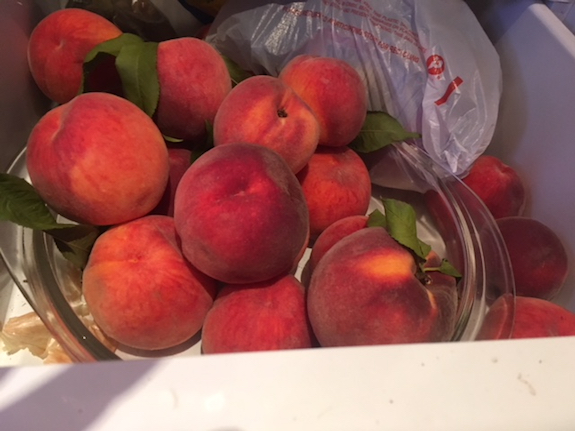
As soon as I got home from the Farmers Market, I carefully placed the ripe peaches in a glass bowl in the refrigerator
I cautiously tried one this weekend for a recipe I was hoping to make, and I was completely surprised at how perfect, sweet, and juicy they still were.
I highly recommend popping by your Farmers Market soon to get what may be some of the last of this season’s peaches.
Healthy Peach Cheesecake Parfait
This is an outrageously delicious dessert, especially because the main ingredient is sweet, tender, locally grown peaches (It was yummy with strawberries, too).
My Salvation Army Addiction Recovery class made this recipe this weekend, and it was a huge hit. My “Nutrition, Health & Wellness” classes include recipes and tastings designed to demonstrate how eating more fruits and vegetables can be deliciously fun. The recipes we make must be healthy, simple, inexpensive, quick, and with no cooking necessary.
For 10 Servings or More
Ingredients:
Use 3 medium bowls, one for each layer:
1 bowl:
Crush in Large Chunks: 9 Graham Crackers or 1-1/2 Cups Granola or Vanilla Wafers
Add Chopped Nuts, if desired
In 1 bowl, toss:
3 Cups sliced peaches
1 Tablespoon Granulated Sugar
In 1 bowl, Blend, then refrigerate until set, if desired:
8 Ounces Low Fat Cream Cheese
1 Cup Nonfat Greek Yogurt
2 Tablespoons Heavy Cream
1/2 Cup Powdered Sugar
1 teaspoon Vanilla Extract
Garnish with extra peaches, granola, and/or chopped nuts on top
Optional: Place a Sprig of Mint on Top
In a wine glass, martini glass, or clear cup, place a layer of the crushed graham crackers, a layer of the cheesecake mixture, then a layer of the sliced peaches. Repeat.
This recipe is adapted from “Life Made Sweeter.” More peach recipes…
The Sweetest Surprise … Yellow Watermelon!
The sweetest watermelon at the moment is yellow, according to moi after tasting every darn watermelon at Sunday’s Farmers’ Market. I’ve always avoided the yellow watermelon; I guess you could say I’ve been kinda prejudiced against a watermelon colored … yellow! But with fruit tasting so bland and mushy this year because of excessive rain, I was desperate to find something sweet. So I reluctantly tried a yellow one at a familiar farm stand. I was surprised by its sweet juicy-ness; the best at the market! Give up any watermelon biases you may have, and just try it 🙂
A yellow watermelon is a natural variety of watermelon hailing from Africa. It’s high in beta-carotene – which provides its yellow color – and vitamin C.
“To broaden the narrow watermelon gene pool, US Department of Agriculture researchers went back to wild watermelon relatives in Africa to find genes resistant to problems like watermelon vine decline, root-knot nematodes, zucchini yellow mosaic virus, and wilting diseases,” According to USDA’s monthly Agriculture Research Magazine.
What to do with yellow watermelon? Of course, any watermelon (even the yellow kind) is great completely naked, cubed in any salad, crushed into popsicle molds or a margarita. Its watery and slightly crunchy sweetness perfectly complements heat or salt in many recipes. Here are just a few of my favorites…
Katherine’s Fresh Summer Salsa with Watermelon
excerpted from Diet Simple Farm to Table Recipes: 50 New Reasons to Cook in Season!
Melon Chunks with Crumbled Feta and Fresh Mint
excerpted from Diet Simple Farm to Table Recipes: 50 New Reasons to Cook in Season!
Nora Pouillon’s Watermelon Gazpacho with Lime and Mint
excerpted from Diet Simple Farm to Table Recipes: 50 New Reasons to Cook in Season!
Nora Pouillon’s Watermelon Gazpacho with Lime and Mint
Nora Pouillon’s Watermelon Gazpacho with Lime and Mint
6 lbs seedless watermelon, cut up, rind removed
2 Tbs lime juice
2 Tbs lemon juice
1/2 jalapeno (or to taste)
1/2 c chopped red onion
2 minced garlic cloves (optional)
1/3 c packed, minced mint
1 diced zucchini
1 seeded and chopped green bell pepper
salt & pepper
cubed watermelon & fresh mint for garnish
Puree watermelon in batches until smooth. Leave some puree in the blender and add juices, jalepeno, onion and garlic. Puree again till smooth. Add mint and buzz till it’s just chopped.
In a large bowl, mix both purees. Stir in zucchini, green pepper, and watermelon cubes. Add salt & pepper to taste.
serves 4
Adapted from “Cooking with Nora” by Nora Pouillon
Pre-Diabetes is Reversible if You Do Something NOW
- At August 20, 2018
- By Katherine
- In Articles, News
 0
0
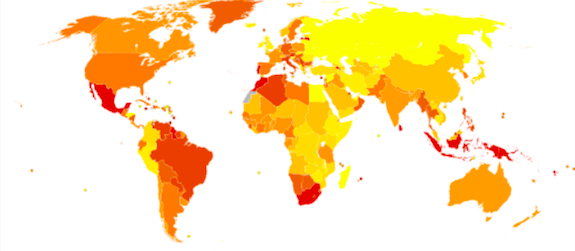
World wide diabetes deaths 2012. Red is the highest prevalence, then orange .. with the lightest yellow, the lowest prevalence
Many clients come to me feeling frightened about being diagnosed with “pre-diabetes,” or “borderline diabetes.” Don’t get me wrong, it is a scary diagnosis, as it’s a precurser to full-blown diabetes which could happen any time. But it’s reversible if taken seriously and within a short time frame. If you have it for too long, it becomes permanent diabetes and is not reversible (in some cases, this takes a few months, in others, a few years).
Another name for pre-diabetes is “insulin resistance,” because your body produces enough insulin, the insulin just doesn’t work as designed. The result is high blood glucose (glucose is the sugar found in blood), the same as if you had insulin-dependent diabetes, which means you have an insulin deficiency, and in that case, insulin shots are necessary. But insulin shots are not normally necessary if you just have insulin resistance. That’s because, in the case of insulin resistance, your body is sending out too much insulin – not too little.
Insulin is a hormone whose job it is to carry glucose from the blood to the cells where it is used for energy. After eating, glucose begins rising in the blood stream. Then insulin, produced and secreted by the pancreas, grabs the glucose, keeping it in a healthy range. Insulin’s next job is attaching to receptor sites on the cell wall so glucose can enter. It’s like a lock and key arrangement. Insulin is the key that opens the cell doors (the receptor sites), and lets the glucose in. But in the case of insulin resistance, the doors (or receptor sites) are blocked. The glucose and insulin, both, end up being dangerously high in the blood stream. High blood glucose can put you in a coma and cause death. Long term, it is associated with reduced blood flow, nerve and organ damage. Chronic high blood insulin – insulin is considered a “growth factor” – is associated with heart attack, cancers (especially colon), increases in belly fat and hunger.
Most people think that eating sweets caused their pre-diabetes, so they believe cutting back on sweets will reverse it. But they’re usually wrong. The cause is normally excess body fat (especially belly fat) and/or an inactive lifestyle (if you have the gene for diabetes in the first place). Once you’ve been diagnosed with insulin resistance or pre-diabetes, yes, what you eat makes a difference in the progression of the disease because your body, now, cannot metabolize too much blood glucose. But if all you do when diagnosed is change your diet, your disease will probably not get better, or will more likely, become worse. Instead, losing weight and exercising are the “cures.” The receptor sites become un-blocked and the insulin and glucose can be in normal ranges again.
Peaches! Peaches! More Peaches!
Peaches are so abundant right now, our local Farmers Market is practically giving them away. What to do with all those peaches? Freeze slices for peach smoothies all year long. And lots, lots more!
Katherine’s Summertime Peach Crisp with Roasted Nuts, Dried Fruit & Ginger
Fresh Kale and Summer Peach Salad with Toasted Almonds and Balsamic Vinaigrette
Creamy Summer Peach Fruit Smoothie
Swedish Waffles with Vanilla Bean Yogurt and Fresh Summertime Peaches
Nora Pouillon’s Chilled Cucumber Soup with Yogurt & Cilantro
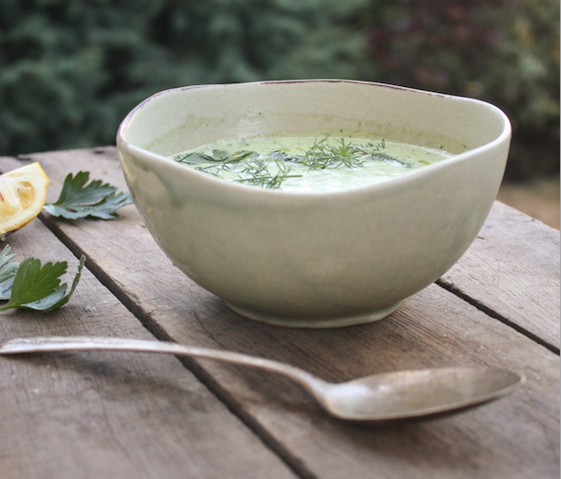 Excerpted from “Diet Simple Farm to Table Recipes: 50 New Reasons to Cook in Season!“
Excerpted from “Diet Simple Farm to Table Recipes: 50 New Reasons to Cook in Season!“
If you’re not sure you’ll like the idea of cold cucumber soup, you will! Give it a try, you won’t be sorry…
4 Servings
3 Cups Lowfat Yogurt
3 Medium Cucumbers, peeled, seeded and cut into chunks
1 Medium Green Pepper, washed, seeded, and cut into chunks
4 – 6 Cloves of Garlic, peeled
Juice of 1 Lemon
Peel of 1 Lemon
1 Tablespoon Olive Oil
1/3 Cup Cilantro Leaves
1 Jalepeno Chili Pepper with seeds, stemmed
1 teaspoon sea salt
Cilantro sprigs, for garnish
Put the yogurt, cucumbers, green pepper, garlic, lemon juice and lemon peel, olive oil, cilantro, and jalapeno in a blender. Puree until smooth. Season to taste with salt and refrigerate.
ASSEMBLY: Pour the chilled soup into 4 bowls, garnish with cilantro.
Calories: 128
Note from Nora: “Since the fruit I use is organic, I always use the skins. I zest or peel my lemons or limes with a vegetables peeler. Then I peel off the white pith from the fruit (you need a sharp paring knife) and put the whole lemon or lime and its peeled skin into the blender.”
Kjerstin’s Swedish Cucumber Salad with Fresh Dill
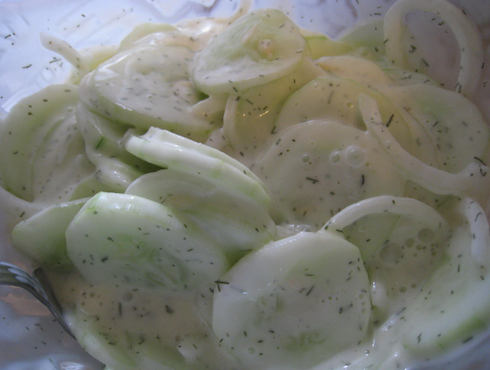 Excerpted from “Diet Simple Farm to Table Recipes: 50 New Reasons to Cook in Season!“
Excerpted from “Diet Simple Farm to Table Recipes: 50 New Reasons to Cook in Season!“
This recipe from my mother is a typical Swedish side dish (though I substituted yogurt for sour cream). When she (and I) serves it at parties, it is always a huge hit. It’s especially delicious using locally grown, just picked cucumbers. It’s great served alongside smoked salmon, but also any spicy dish, such as an Indian Curry.
1 English Cucumber, peeled and thinly sliced (any seasonal cucumber will do)
1 Cup White Wine Vinegar
1 Cup Water
2 Tbsp Salt
1 Tbsp Sugar
1 Tbsp Chopped Fresh Dill
1/2 Cup Low Fat or Nonfat Plain Greek Yogurt
1 Dash Pepper
Mix water, vinegar and salt. Add cucumber slices and let sit for about an hour. Drain well. In clean bowl, mix together yogurt, dill, sugar and pepper. Mix cucumber slices in the yogurt mixture. Let sit in refrigerator for at least one hour to blend flavors. Will last several days in the refrigerator.
Susan Belsinger’s Creamiest Summer Peach Fruit Smoothie
 Excerpted from “Diet Simple Farm to Table Recipes: 50 New Reasons to Cook in Season!“
Excerpted from “Diet Simple Farm to Table Recipes: 50 New Reasons to Cook in Season!“
“Another great combo is raspberries with peaches. Besides being quick and easy, the best thing about this recipe is that it tastes good and it is good for you! Sometimes when I know I’m going to be burning a lot of energy—I add a handful of dry oatmeal—if makes it thicker and more filling, adds protein, and keeps me going longer. Just double the recipe if you are making smoothies for two,” says Susan. I’d like to add that soymilk makes extra creamy smoothies. Try it!
Serves 2
About 1 to 1 1/2 cups peaches and/or other fruit, cut into chunks
About 1 tablespoon maple syrup or honey
1 cup cold soy milk
3 to 5 ice cubes
2 drops pure vanilla extract
Put the fruit in the blender. Drizzle the syrup or honey over it. Add the ice cubes. Pour the soy milk over all and add the vanilla. Blend until pureed and frothy. Serve immediately in a tall glass with a straw.
My Favorite 15 Minute – or Less – Summertime Recipes
Summer is my favorite time of year for food that needs NO COOKING!
Fresh Kale & Summer Peach Salad with Toasted Almonds and Balsamic Vinaigrette
Sweet Summertime Melon Chunks with Crumbled Feta & Fresh Mint
Fresh Summer Salsa with Watermelon
Zucchini Ribbons with Fresh Lemon Vinaigrette
Swedish Waffles, Vanilla Bean Yogurt & Fresh Summertime Peaches
Kjerstin’s Chicken Salad with Summer Grapes, Peaches & Toasted Walnuts
Creamiest Summertime Peach Smoothie
Kjerstin’s Cucumber Salad with Fresh Dill
Nora Pouillon’s Chilled Cucumber Soup with Yogurt & Cilantro
The Top 12 Anti-Aging Foods
- At August 11, 2018
- By Katherine
- In Articles, News
 4
4
It’s true. Science tells us you can slow the aging process and live longer, with a higher quality of life and health. Side benefits even include preventing wrinkles and gray hair! Each recommendation has been backed by a decades-long body of scientific evidence.
Yogurt: Possibly the most significant nutrition discovery in decades is all about your gut. The 100 million cells in your gastrointestinal tract, called the “microbiome,” contain bacteria that can make or break your health. Eating a diet with foods (yogurt is a prime example) containing healthy bacteria, called probiotics, boosts your immune system, preventing infection, enhancing immunity, helping prevent diseases from colds to cancer, even diabetes and obesity. Research is also finding that a healthy microbiome may play a role in reducing inflammation, a risk factor involved in illnesses ranging from colds to cancer, heart disease, arthritis and cognitive decline.
Olive Oil: Polyphenols, the nutrients in freshly harvested and carefully handled olive oil, are primarily responsible for its health benefits. They activate genes that reduce your chances for metabolic syndrome, the name for a group of risk factors (high blood pressure, cholesterol, and glucose) that together increase the risk for heart disease, America’s number-one killer. Polyphenols reduce cancer risk by lowering inflammation and cellular proliferation. They act as antioxidants*, reducing oxidation and cell damage, which leads to many degenerative diseases. They even reduce microbial activity and infections.
Tea: The flavonoids in fresh tea help your heart by keeping blood vessels unclogged and flexible, lower blood pressure, improve bone health, and even help your thinking and memory. The compounds called catechins in green tea help you lose weight. The antioxidants* in tea might reduce cancer risk, and an amino acid called L-theanine reduces stress and stress hormones that cause inflammation, dampening your immune system.
Kale: has the highest antioxidant* content of all vegetables. High in fiber, it is rich in minerals, B-vitamins, beta-carotene, and lutein, a compound which may help reduce the risk of age-related macular degeneration (the leading cause of preventable blindness), cataracts, and other eye diseases. Absorption of carotenoids, such as lutein, in your body is increased by cooking and by the presence of fat (so cook in a little healthy olive or canola oil!).
Salmon: Salmon is one of the few food sources of Vitamin D, an essential vitamin usually only obtained from sunshine. It’s a major source of the healthy fats, omega-3-fatty-acids, found in seafood. It’s established that omega-3-fatty-acids reduce inflammation, a risk factor for every disease from colds, heart disease, arthritis, to cancer. Omega-3s favorably effect a number of risk factors for cardiovascular disease and at the top of the list is reducing the risk of sudden death from heart attack. It concentrates in the brain and nervous system and may reduce the incidence of depression, and other conditions like Alzheimer’s Disease and cognitive decline.
Nuts: Nuts and seeds improve signs of biological aging by increasing telomere length. Telomeres, proteins found at the end of each chromosome (think of the plastic protector at the ends of shoe laces), preserve information in our genome and prevent cell death; they serve as a biological clock to determine the lifespan of a cell and an organism. Telomere length shortens with age and can be affected by various lifestyle factors. Shorter telomeres are associated with lower rates of survival and higher rates of disease such as heart disease, cancer, diabetes and osteoporosis.
Black and Blueberries: These fruits are superstars and have the highest level of antioxidants* in the fruit world. They’re high in compounds called anthocyanins, a group of potent plant nutrients, including antioxidants*. Anthocyanins provide the blue pigments in fruits and vegetables. They lower inflammation, and prevent several diseases including heart disease, cancers, diabetes, some metabolic disorders, and infections. They also protect vision and the nervous system.
Dark Chocolate: The most significant contribution of cocoa to health is improved blood flow. Cocoa flavonols, some of the healthy nutrients in cocoa, improve artery dilation, reduce blood clotting and therefore reduce heart disease risk, and lower blood pressure – the pressure on artery walls that prevents blood flow. Thus, flavonols are responsible for increasing oxygen and nutrition to the brain and other organs – improving brain function, among other things. Cocoa also contains polyphenols, another class of healthy nutrients with potent antioxidant* power, decreasing many signs of aging including cognitive decline, loss of memory, and heart disease.
Apples: A rich source of several flavonoid subclasses (healthy plant nutrients), particularly flavonols, anthocyanins, and flavones, are associated with less weight gain. They do it by reducing blood glucose (blood sugar), sending it into the muscles, where it is burned as energy, instead of increasing body fat. Body fat is not inert. It produces toxic chemicals causing inflammation, oxidation, insulin-resistance, and cancer-promoting cell growth. Keeping body fat at bay is associated with increased life span.
Butternut Squash: They’re a bustling factory of nutrients and plant compounds with potent powers of healing. When acting synergistically in a food, these nutrients provide a more powerful health punch than the individual nutrients alone. Some of the most important nutrients in squash are antioxidants*, such as beta-carotene, alpha-carotene and vitamin C, which are powerful substances believed to reduce inflammation, improve immune function and help prevent heart disease and cancers, among other benefits.
Oats: A good source of soluble dietary fiber, especially β‐glucan, oats lower LDL (bad) cholesterol and keep blood glucose at low levels after eating, a low glycemic, anti-diabetic affect not associated with most grains. The nutritional benefits of oats appear to go beyond fiber to biologically active plant nutrients with strong antioxidant* and anti‐inflammatory effects. Foods, such as oats – high in soluble fiber – delay stomach emptying, which increases feelings of fullness and are associated with weight loss. Oats are a prebiotic food, contributing to healthy bacteria in the gut, along with probiotic foods.
Concord Grape Juice or Red Wine: Research shows that Concord grape juice is similar to red wine in many respects. Both are high in a class of beneficial plant nutrients called polyphenols, antioxidants* that protect against heart disease, cancers and other signs of aging. Other polyphenols, called tannins, are responsible for the astringent flavor in cocoa, tea, grapes, and other fruits, are powerful antioxidants*. Concord grape juice and red wine also contain a tiny amount of a polyphenol called resveratrol, primarily in the skin of the grape, which has beneficial effects as anti-aging compounds, reducing oxidative damage, inflammation, telomere shortening and DNA damage. Other polyphenols found in the seed, proanthocyanidins, may also prevent cell proliferation and cardiovascular disease. Another class of antioxidant polyphenols in grapes are called flavonols. Grapes contain the flavonol, quercetin (in apples), and kaempferol (in broccoli), which are thought to reduce cellular proliferation and cancer. One study found that concord grape juice improved thinking ability and spatial memory.
*Antioxidants are compounds that absorb oxygen free radicals — molecules that cause oxidation in the body’s cells. Scientists believe that these molecules cause much of the diseases of aging, such as immune system decline, arthritis, heart disease, cancer and neurological impairments affecting cognition and balance. Think of oxidation as being similar to rusting. Or imagine an apple slice turning brown. By simply adding lemon juice, an antioxidant, the apple’s flesh stays fresh and prevents the browning or oxidation. A similar thing happens in your body. Oxidation is constantly occurring in your cells because of environmental pollutants, smoking, exposure to the sun, heat generated through basic metabolic functioning (digestion, for one), unhealthy diets and other factors. It takes a large supply of antioxidants to counter this.
Kids Eat Right Month: Make Chocolate-Covered Peanut Butter & Oat Balls!

Children aren’t born with healthy eating habits – they learn from their parents. With repetition and practice, healthy eating habits can become a way of life for the entire family.
August is Kids Eat Right Month™, when the Academy of Nutrition and Dietetics and its Foundation focus on the importance of healthful eating and active lifestyles for children and their families.
“Parents raise healthy eaters, bite by bite, meal by meal, as children transition from infants to teens and then to young adults,” said registered dietitian nutritionist and Academy Spokesperson Isabel Maples.
“Raising a competent eater takes years. Start by keeping mealtimes pleasant. Sit down regularly as a family to share meals, because positive attitudes about food grow from that. When there’s joy in eating, good nutrition can follow,” Maples said.
“As children grow, involve them more and more in the responsibility and decision making of meals and snacks. That might mean initiating teachable moments in the grocery store, enlisting your child’s help in planning meals or showing your teen how to prepare afterschool snacks,” Maples said. “Involving kids from the ground up gives them a sense of accomplishment and allows them to gradually develop key life skills about healthful food and good nutrition.”
Maples offers additional healthful eating habits that all families can begin today:
- Allow children to use their internal signals to decide how much to eat,
- Explore a variety of flavors and foods from different cultures and cuisines,
- Make food safety, such as washing hands, a simple part of every eating occasion,
- Teach basic skills for making positive food choices away from home.
“The more involved kids are, the more they will enjoy the fruits of their labors,” Maples said.
Chocolate-Covered Peanut Butter & Oat Bites
1/2 Cup Peanut Butter (or any nut butter you like, such as Almond Butter)
3/4 Cup Old Fashioned Rolled Oats
1 Tablespoon Pure Maple Syrup
1/2 Cup semi-sweet chocolate chips, melted
Natural, Unsweetened Coconut Flakes (optional)
Chopped Roasted Nuts (optional)
Mix oats, peanut butter and maple syrup. You can try this with a wooden spoon, but you’ll probably need to give up on that technique. Go ahead and throw your hands into the task! Your kids will especially love this part.
In the palm of your hand, roll into about 12 balls (the smaller the balls, the more chocolate on each one!) and place them on a baking sheet which is covered with parchment paper. Freeze about 15 minutes or until set.
In the meantime, place the chocolate chips into a microwave-safe bowl. To melt without burning, place in the microwave just 30 seconds at a time, while stirring in-between. You can also melt chocolate safely by doing so in a double boiler.
Roll the bites in the melted chocolate and, if you wish, sprinkle with chopped nuts and/or coconut.
Refrigerate until the bites are set, at least 15 minutes.
Adapted from Eating Well Magazine
Caprese Salad: A Simple Summertime Dish in 5 Minutes
Summertime, when the livin’ is easy… preparin’ meals should be easy too. With an abundance of fresh, natural and locally grown ingredients, there is no need to cook or spend more than five minutes in the kitchen preparing something delectable, mouth-watering, and perfectly balanced nutritionally.
Simply slice some vine-ripe tomatoes on a plate, spread about three ounces of mozzarella (and a touch of goat cheese, if you wish) on top, add a sprig of fresh basil – all from the Farmers Market. Sprinkle fresh extra virgin olive oil, balsamic vinegar, salt and pepper on everything.
Effortless! Only a plate and knife to rinse, and a fork to clean.
Nutritionally, this is a perfectly balanced meal, because it comprises the following four/five elements:
* At least half the plate is a fruit or vegetable,
* It contains 3 ounces of protein,
* The protein source is dairy,
* It’s topped with a heart-healthy fat, the freshest olive oil you can find.
The only element potentially missing is a whole grain. So add a hardy, toasted slice of whole rye or whole wheat bread with a shmear of olive oil and garlic. Or, smother a one cup serving of whole grain pasta with the salad.
Perfetto!
Start Your Day with Nauti Foods While Exercising on the Water
- At July 15, 2018
- By Katherine
- In Articles, News
 2
2

Katherine enjoying iced coffee from Nauti Foods, the floating food truck, while kayaking on the Potomac River
Running into (literally!) the Nauti Foods floating food truck is something I look forward to when I’m kayaking or stand-up-paddle boarding on the Potomac. The experience is as surreal as it is imaginative. I couldn’t believe my eyes when I first encountered Ari selling his array of high quality, and often locally sourced delicacies – on the water.
Some selections are quite healthy such as drinkable Gazpacho in a bottle from Soup-R-Girl, or extravagant, like the ice cream sundae on top of a freshly baked bun-shaped sugar doughnut! The “Nauti Monkey” is a frozen chocolate-dipped banana. You’ll also find Dolcezza Gelato, and traditional breakfasts like bagles and cream cheese. I always get the iced coffee with half and half (yes, the real thing).
It’s the ultimate repast al fresco! Bon Appetit!
Intensely Flavored Strawberry Sherbet in 5 Minutes
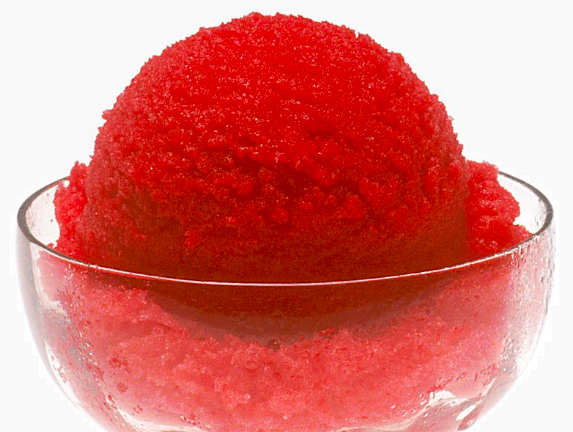
Berry Sherbet (Photo by Renee Comet, Photographer, for the National Cancer Institute – from Wikipedia.org)
5 Minutes? Yes, you heard right. Through the Salvation Army, I teach people recovering from drug and alcohol addiction – and often from the criminal justice system – the importance of including fruits and vegetables in their diets. Sound boring? It certainly could be. But not when we make recipes like this 5 Minute Strawberry Sherbet, adapted from a recipe by Kelly Senyei. It’s a sure-fire way to make anyone actually crave fruits for dessert in place of less healthy choices.
This sherbet (sherbets often contain dairy, while sorbets don’t) is luscious, creamy, and intensely flavorful. I bought the strawberries at the local Farmers Market for maximum succulence. The class hulled the berries and placed them evenly on a baking sheet. Then they (the strawberries, that is) went into the blisteringly cold Salvation Army walk-in freezer. While waiting for the berries to freeze, we reviewed a little lesson about the health benefits of strawberries. The class was especially excited hearing about strawberries’ potential for reducing inflammation, the risk for cancer, heart disease, diabetes, cognitive decline, for stimulating the immune system, and more. They learned about oxidation’s role in increasing disease, and how the more than 100 nutrients in strawberries serve as antioxidants, reducing the risk for those diseases.
I love teaching people who really need help and who benefit so much from my counseling and classes, from people with low literacy and low income, to sophisticated folks – in my classes and private practice. It is amazing how delicious food naturally attracts anyone to a healthy way of eating and living.
Here goes:
Place about 1 cup of Greek yogurt (plain or another flavor, like peach or vanilla) in a food processor. Add 8 cups of frozen strawberries, 2 Tablespoons of freshly squeezed Lemon or Orange Juice, and its zest if you like. Next, add honey or sugar to taste, about 4 to 6 Tablespoons.
Cut the recipe in half for a smaller party.
Blend in the food processor for 5 minutes straight – no peeking! And, voila… you have a rich dessert everyone will love. If you’d like to be extra fancy, serve it in a stemmed crystal glass.
A Luscious – Seemingly Sinful – Potato Dish Without Guilt for Breakfast, Lunch or Dinner
I love potatoes! Doesn’t everyone? There’s been so much potato-bashing, though, everyone seems afraid to eat them; and that’s a shame. Potatoes are filled with vitamin C, vitamin B-6, potassium, fiber, and antioxidants. Fingerlings are hard to find, but I found some to-die-for golden fingerlings at Trader Joe’s and at Farmers Markets. They have become a staple for their utter deliciousness. it’s a handy fact that they’re nutritious, too.
Their flavor is rich, buttery, and nutty. Their texture is velvety. All I do is boil the whole bag in salted water until a fork easily pierces the biggest one. I strain out the water and let them sit overnight, so they don’t get soggy. I can and eat them almost every day, wherever the mood takes me – keeping them in the frig in an air-tight container – until I run out, and boil some more.
My buttery tasting golden fingerlings with fried eggs, nonfat greek yogurt, and cherry tomatoes start with the potatoes, of course. I measure out 6 ounces (160 calories) of boiled potatoes; a surprisingly large amount, I’m happy to say.

Then I quickly fry the eggs in a teaspoon or two of canola oil in a non-stick pan. I prefer them over-easy. I sprinkle with freshly ground pepper and a bit of kosher salt.
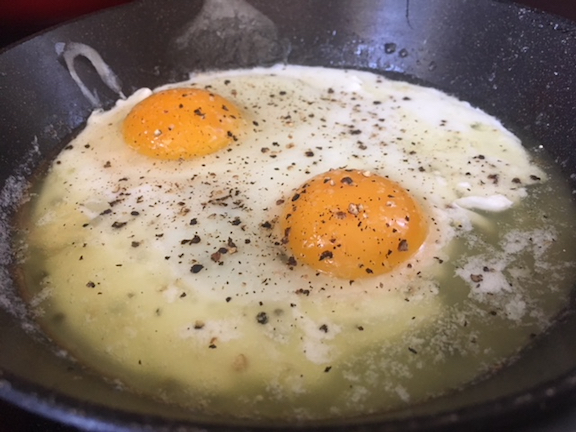
I plop the eggs atop the potatoes. I add quartered, fresh cherry tomatoes, and a dollop of plain, nonfat Greek yogurt (my favorite is Fage) on the side – and to me, it tastes like I’ve just smothered my potatoes in butter and sour cream. Wonderfully sinful. I add chopped cherry tomatoes for color, a glass of juice. And I have the PERFECT meal! It never fails to please…
The simple things in life are often the best. Don’t you agree?
Tai Chi’s Breathtaking & Bewildering Body & Brain Benefits
- At April 16, 2018
- By Katherine
- In Articles, News
 0
0

Katherine starts many of her “Nutrition, Health & Wellness” classes with Tai Chi (Photo by Brooks Grant, BGrant Photography)
When a study found tai chi increased bone mass and muscle strength, I had to learn more. Was everything scientifically established so far about improving bone and muscle unnecessary? No protein? No impactful exercise? No Calcium or Vitamin D? No hormone changes or medications? How could this easy, gentle series of martial arts movements – involving none of these factors – improve muscle and bone?
Tai Chi, a Chinese martial art, is a centuries-old mind and body practice. Tai chi is a combination of movement, breathing, attention, visualization, and rich psychosocial interactions with teachers and other students, according to Harvard Magazine. It is so easy and gentle, anyone can do it. Yet its benefits are vast; some so impressive – even counterintuitive – I had to research the science to believe it. After reviewing the studies, I’ve added tai chi to the all-encompassing arsenal of my health-boosting behavior-change programs.
In one of its publications, Harvard calls Tai Chi, known as “meditation in motion,” “medication in motion.” Tai Chi provides a host of benefits, including…
- Increasing bone and muscle health: After 12 weeks of Tai Chi, postmenopausal, osteopenic women experienced improved muscular strength and increased bone health. Tai chi apparently reduces the natural age-related oxidative damage that causes bone and muscle breakdown. The results were even stronger when the subjects drank green tea (assuming other age-related changes such as gray hair and wrinkles, too),
- Increasing balance and stability in older people, leading to decreased falling (in one study, a forty percent reduction) and fear of falling, even helping people with mild to moderate Parkinson’s Disease,
- Reducing pain caused by knee osteoarthritis, fibromyalgia, back pain, and perhaps neck pain,
- Enhancing ability to reason, plan, remember, and solve problems in older people, even those showng signs of mild cognitive impairment and dementia,
- Improving quality of life and mood in people with heart failure, and improved ability to exercise in people who experienced a heart attack, thus an effective cardiac rehabilitation technique,
- Increasing immune response, improving life for people with chronic health problems,
- Reducing stress and its inflammatory response.
I start many of my “Nutrition, Health and Wellness” classes with Tai Chi. In the photo above, I’m leading a community class sponsored by AmeriHealth Caritas DC, hosted by Lyndia Grant of Lyndia Grant and Associates, LLC held at Trinity College in NE Washington, DC.
13 Surprising, Simple & Powerful “Foods As Medicine” You Should Try
- At March 21, 2018
- By Katherine
- In Articles, News
 0
0

A responsibility I take very seriously – and one I avidly enjoy – is discovering the best nutrition therapy, or “Foods as Medicine,” for each of my clients’ unique life enhancing, healing needs, and even for improving some rare conditions. Over the years, I’ve come across some very simple, strange, and powerful solutions which have been successful and ones from which you might benefit.
Tea for increasing bone and muscle strength: Studies are finding that regular tea drinking may reduce age-related inflammation and oxidation causing muscle and bone breakdown resulting in increased bone mass and muscular strength.
Green Tea for speedier weight loss: Certain compounds in tea, and especially green tea, have been found to burn body fat. Caffeine slightly increases fat-burning, but the combination of caffeine and green tea catechins [a type of flavonoid] is even more effective.
Chocolate improves erectile dysfunction: The flavanols in cocoa help maintain a healthy vascular system, relax blood vessels, reduce blood clotting, oxidative damage, and improve blood flow – to every part of the body.
Chocolate reduces wrinkles: After drinking cocoa for 24 weeks, women experienced reduced wrinkles and increased skin elasticity, reducing the effects of sun damage and aging.
Mushrooms boost the immune system, improving diseases from colds to cancer. Used medicinally since at least 3,000 BCE, mushrooms appear to increase the effects of chemotherapy, and lengthen survival of cancer patients. Mushrooms, considered “pre-biotics,” enhance the digestive tract’s healthy bacteria, the “microbiome,” thus providing your body with extra disease-fighting properties.
Mushrooms reduce fatigue: They act on the muscular system, the body antioxidant system, cardiovascular system, hormone system, and immune system, all of which improve liver function, blood circulation, and blood glucose regulation, among other benefits.
Tart cherries (dried or concentrated) and tart cherry juice reduce pain from gout and neuropathy, improve muscle recovery after intense exercise, and enhance sleep quality: Scientists hypothesize that the presence of hundreds of compounds – especially anthocyanins – in cherries are responsible for the benefits. But there are probably as yet undiscovered properties which contribute to their health strengthening qualities.
Hydrolyzed Collagen reverses the pain of arthritis, the aging of joints, bones, muscles, skin, and reduces cellulite. Collagen is the most abundant protein in the animal kingdom important for joints, bones and skin. Taken as a supplement, collagen needs to be “hydrolyzed” into tinier molecules called “collagen peptides” so it can effectively enter your body’s cells and your body can utilize it.
Coffee extends exercise performance: Once banned by the International Olympic Committee, caffeine stimulates the neuromuscular system to increase your body’s ability to exercise longer, with less fatigue, than it would absent caffeine.
Yogurt reduces body fat: The probiotic cultures in yogurt have been found to prevent insulin resistance, diabetes, and body fat. People who eat yogurt are leaner than those who eschew.
Egg yolks reduce cataracts and macular degeneration, the leading cause of blindness: Egg yolks contain compounds called lutein and zeaxanthin, also found in deep leafy greens. But they’re more powerful in egg yolks because lutein and zeaxanthin need to be eaten with fat, found in egg yolks (but not in greens), to be effective.
Beans clear acne and improve skin: There is strong evidence that a diet with foods causing the lowest blood sugar responses (a low glycemic diet) may be the best solution for clear skin. Beans are not only nutritious, but are very low on the glycemic index scale.
Extra Virgin Olive Oil – but ONLY when newly harvested – reduces metabolic syndrome: The nutrients in olive oil, polyphenols, responsible for its superior health benefits, disappear with time, light, and heat exposure. But when high in polyphenols, for instance, the first six months after harvest, EVOO “turns on” several genes which lower blood glucose, blood cholesterol and blood pressure,
Salmon reduces Alzheimer’s Disease (AD): Studies show inflammation is a major cause of AD and cognitive decline. Omega-3-Fatty Acids, which salmon contains in abundance, have proven abilities to reduce inflammation.
Nuts for weight loss: Even though nuts are quite caloric, people eating nuts are more likely to have lower body weights. Nuts are satiating; they make us feel full. Adding nuts to meals, especially breakfast, decreases overall calorie intake, making weight loss easier.
Potatoes have sustained many cultures for thousands of years. Think Russia, Scandinavia, Ireland, South America. Without potatoes, Vitamin C deficiency would have flourished. Especially in northern climates where citrus fruit and many other high vitamin C fruits and vegetables cannot be grown. They have an undeserved bad rap! They’re filled with fiber, potassium, Vitamin B-6, some iron, and – believe it or not – they are low calorie for a starchy food, only 110 calories for 5.3 ounces. Eaten plain, the concern is real, though. as they raise blood glucose quite high. But eaten with fat such as when they are sautéd or roasted in oil, eaten with a proten, such as salmon or chicken, even Greek yogurt instead of sour cream, as they would be in a meal, those foods will lower the blood sugar response (glycemic index) to much lower levels.
Enjoy!
Processed Food? You’d Be Surprised How Delish!
While making meals from scratch has been the paragon of nutritional virtue, it is increasingly unrealistic for most people in our crazy busy lives to even contemplate. And while processed, pre-prepared, packaged, frozen, vacuum packed, and even canned options seem like an abomination to many of you, they can be more nutritious – and many times quite yummy – for a fraction of the cost of a restaurant meal.
I’ve always enjoyed BBQ, but have never quite gotten the hang of making a really delicious one. The best BBQ I’ve ever had was in Texas – and it took days to make! BBQ in restaurants I’ve found too greasy, filling, and expensive. But I recently discovered a pre-packaged one in a local grocery store’s refrigerator section that is mouthwatering. For only 200 calories in a 1/2 cup serving – it is perfect for me (and, of course, most men could have twice that much). Try it yourself!
Reverse Winter Bloat and Blues!
- At March 05, 2018
- By Katherine
- In Articles, News
 0
0
Are you experiencing the winter blues? Bloat? More cravings than usual? It seems these occurances are running rampant right now. January and February are tough months for many people nation-wide.
The most probable causes are in your control and involve decreases in both sunlight and physical activity. Together, they can contribute to the blues and enough of a calorie imbalance to cause weight gain. Here’s how.
- Sunlight. Some people are particularly susceptible to light deprivation, caused by the decrease in daylight hours during the winter. This affects the neurochemical serotonin, responsible for your mood and appetite, prompting increased food cravings and weight gain.
- Physical Activity. When it’s cold outside, we’re less physically active and cut back on subtle calorie-burning activities such as short walks and light outdoor chores. These caloric expenditures may only add up to about 100 calories per day, but this translates into a 3-4 pound weight gain (or more) during the winter months.
What to do to both improve your mood and curb your cravings?
- Increase exposure to sunlight. Bundle up and go outside to reverse the symptoms of light deprivation. You’ll feel refreshed and less bored, and your appetite may be more controllable. The amount of needed daylight varies for each individual. In general, the more the better. One hour daily in the morning, ideally at sunrise, is most helpful. If you’re not an early bird, several hours on the weekends may help make up for a lack of sun during the week. Some people may benefit from getting daily “light therapy” which would be prescribed by your doctor. Some popular products are from “sunbox.”
- Up your activity level, even just a little. During just one exercise bout, your brain releases feel-good chemicals, called endorphins into your body. These chemicals reduce pain, increase feelings of well-being and elevate your mood. If you’re regularly active, these benefits multiply. A brisk 30-minute walk just three times a week relieves major depression just as effectively as an antidepressant in most adults, according to a study published in the Archives of Internal Medicine. Wear a pedometer to keep track of your activity level and to motivate you to get more.
- Increase your intake of a colorful array of fruits and vegetables. These low-cal but filling carbohydrates increase serotonin production, helping to regulate mood and appetite. They also help you feel more satisfied for fewer calories, and research shows adding them to a meal could save at least 100 calories (translating to 4 – 5 pounds during the colder months)…some tips:
- To lower the calories and increase the portion size of a favorite recipe, pump up the volume by adding vegetables as often as you can. This way, you can eat your usual portion for fewer calories.
- Choose fresh fruits over dried fruits or juices. For 100 calories, you could eat 1/4 cup of raisins or two cups of grapes. (You’re more likely to fill up on the grapes.)
- Start lunch or dinner with a hearty, satisfying and yummy bowl of soup or a large and colorful vegetable salad with a delicious vinaigrette.
- Turn main courses into soups or salads by adding broth or vegetables.
The Vitamin Supplement Everyone Should Be Taking
- At February 26, 2018
- By Katherine
- In Articles, News
 0
0

My philosophy has always been to get your nutrients from food, not vitamin supplements. I base my advice on the body of scientific evidence finding significant negative effects, or no effects – of vitamin and antioxidant supplementation (starting with a gound-breaking study published in the New England Journal of Medicine finding antioxidant supplements had such negative effects on the subjects, it had to be halted early). Accordingly, nutrition professionals are cautious before making recommendations, as they should be. In fact, one way to smoke out a “quack nutritonist” – someone unqualified to practice nutrition – is learning that they’re selling supplements.
That’s not to say that some supplements aren’t useful. When personalized to fit your needs, some may be beneficial – even critical – for your health. Nonetheless, taking supplements cannot substitute for the benefits of eating the nutrients in food … except for one.
The need for this supplement started revealing itself a couple of decades ago. Children, and some adults, began exibiting symptoms of a life-threatening deficiency disease, one we virtually hadn’t seen since the turn of the 20th century, when 60 to 80 percent of children suffered from it. Subsequently, the disease was mostly iradicated by supplementing food. Nutritionists determined what was needed in the food supply based on lifesyle and consumption patterns in that era, and this calculation prevented the defiency disease … until now.
Why is food supplementation no longer working? Modern technology, changes in food consumption patterns and in lifestyles. These same changes in American life have created many health discoveries. Sometimes you don’t know the value of something until it’s missing! Not only have we experienced an outbreak of the deficiency disease, we uncovered many more negative effects of its inadequacy, and thus, reasons why this nutrient is paramount to health.
Vitamin D is a nutrient taken for granted for millions of years because we got enough of it naturally from the sun. But increasingly, Americans are not exposed to sunshine. We spend most of our time indoors on our computers or in our cars. When we venture outside we’re using sunscreen, which blocks not only harmful ultraviolet (UV) rays which cause skin cancer, but also prevents the skin from absorbing the UV rays necessary for producing Vitamin D in our bodies.
Vitamin D deficiency has caused unexpected consequences. It is a hormone present in almost all of your cells. Its effects are vast. We learned definitively in the early 20th century that its deficiency causes soft bones (rickets) which literally bow a child’s legs because they can’t hold up his/her weight. Further, new research is finding its deficiency may increase your risk for autoimmune diseases such as diabetes, also cancers, heart disease, infectious diseases, schizophrenia, multiple sclerosis, Parkinson’s disease. You get the picture… It’s a big deal!
Because there is very little in food, adding 100 IUs of vitamin D to a cup of milk since the 1930s has prevented rickets successfully until today’s lifestyles changed the predicted amount of sun exposure and milk consumed. And because vitamin D deficiencies seemingly vanished, we were unaware of how contributory it was to health.
The prevailing National Academy of Sciences Food and Nutrition Board recommendation for vitamin D has been 400 IUs daily. Today, it’s unclear how much vitamin D each person needs to take because of variable sun exposure. But there seems to be a consensus among vitamin D scientists that blood values should be at least 50 ng/mL and there seems to be no benefit of going higher than 75 ng/mL (though most medical labs consider 30 as adequate). My clients take anywhere from 1,000 IUs to 4,000 IUs (the safe upper limit – UL) daily to achieve 50 ng/mL. Recommendations for sun exposure vary, but in general, it’s been recommended that careful exposure of the hands, arms and face 2 to 3 times a week for 15 minutes is probably sufficient (Res Medica, Volume 268, Issue 2, 2005). But talk to your doctor about your individual needs.
Vitamin D, a fat soluble vitamin which is stored in your body, can be toxic when too much supplement is taken. Though, natural sources in food and from the sun cannot cause overdoses. In Europe in the 1950s, cases of soft tissue, heart and brain calcification, leading to mental retardation and other birth defects, were discovered to have been caused by excessive vitamin D added to the food supply. Ergo, supplementation has since been removed or scaled back in Europe.
Just like all nutrients, it’s important not to get too little – or too much. I call it the “Goldilocks effect,” because it needs to be “just right!”
Revised: Why Is Eating Yogurt Daily – And Your Gut’s Health – Creating a Healthcare Revolution?
- At February 12, 2018
- By Katherine
- In Articles, News
 0
0
Possibly the most significant nutrition discovery in decades is all about your gut, and it can make or break your health, in ways that are shocking. I’m not exaggerating when I say that it has caused a health care revolution. A healthy gut affects every organ in your body – from your brain to your toes – and, for a variety of reasons, most Americans (and that could be you) have an unhealthy gut, one that causes disease and distress. I believe eating yogurt daily is one of the only methods, and certainly the easiest one, we can use to make up for the healthy gut we abused and lost while growing up and now as adults. Why is this critical for your future and your health, as well as the health of your children, friends, relatives, and your elderly parents?
For years, I’ve wondered why people who regularly ate this versatile food seemed more likely to enjoy superior health, fight off illness more effectively, lose body fat more easily – while keeping, and even increasing muscle, seemed more alive, energetic and happy (and even if those benefits were a figment of my imagination). Thankfully, scientific research is now backing my observations of 25+ years. This has been a remarkable nutrition discovery. We always knew the microbiome (the 100 million cells in your gastrointestinal tract) was important, but the new studies show the effects of a healthy or unhealthy microbiome are vast, more than we ever could have imagined. The tired, old saying, “You are what you eat,” Is truer than we ever realized!
The health of your microbiome starts in utero, continues at birth, and in infancy. If you were breastfed, you have many health advantages. For instance, you are less likely to be obese or have diabetes later in life. That’s because breast milk is filled with healthy microbes, called probiotics (and prebiotics, which I’ll discuss later), which boost your immune system. They also decrease insulin resistance, thus lowering your blood sugar and insulin levels. Insulin is a “growth factor” which, when too high, is correlated with heart attack, colon cancer, and other cancers, and is a precurser to diabetes. It is also associated with increased inflammation, a risk factor for diseases from colds and flu, to arthritis, even mental health and risk for cognitive decline and Alzheimer’s.
One cause leading to an unhealthy microbiome in developed countries, is a diet composed of low fiber, refined foods, and a dearth of whole grains, fruits and vegetables. You need these high fiber foods (called prebiotics) to nourish the probiotics, and together in the GI tract they form the critical prebiotic/probiotic duo creating a microbiome teeming with healthy microbes that fight off chronic and acute diseases.
One study found when children are given a high level of antibiotics, they experience more obesity, diabetes and infections later in life when compared with children who received less antibiotic therapy. Of course, antibiotics save lives! But they not only destroy bad, disease-causing bacteria, they also destroy the healthy microbes/bacteria. Scientists are working on finding a balance that would make antibiotics kinder to the good microbes which naturally kill off disease.
It seems the healthiest microbiomes start in infancy, and once that window is closed, it may be very hard, if not impossible, to make up for it as adults. As you age, healthy gut microbes decrease, but when you’re elderly particularly, you are more prone to disease-causing microbes such as Salmonella and E-Coli, making the need for a healthy microbiome more important than ever.
As of yet, there is no test to measure your gut microbes, or the health of your microbiome. We don’t even know everything that we need to be looking for! The gastrointestinal tract is still quite mysterious and idiosyncratic. I work with many clients with GI issues, and their solutions vary widely.
That’s why I believe foods such as yogurt, which contain natural probiotics, are critical to your health. I push all my clients to eat yogurt daily, and I do as well. When someone tells me they don’t like it, I insist they try every flavor or type imaginable until they find one they enjoy. There are even yogurts that are more like desserts, so I encourage people to enjoy those if those are the only yogurts they find delicious (yes, deliciousness is important!). Plain Greek yogurt can be used in place of sour cream in recipes.
Why Is Eating Yogurt Daily – and Your Gut’s Health – Creating a Health Care Revolution?
- At February 12, 2018
- By Katherine
- In Articles, News
 1
1
Possibly the most significant nutrition discovery in decades is all about your gut, and it can make or break your health, in ways that are shocking. I’m not exaggerating when I say that it has caused a health care revolution. A healthy gut affects every organ in your body – from your brain to your toes – and, for a variety of reasons, most Americans (and that could be you) have an unhealthy gut, one that causes disease and distress. I believe eating yogurt daily is one of the only methods, and certainly the easiest one, we can use to make up for the healthy gut we abused and lost while growing up and now as adults. Why is this critical for your future and your health, as well as the health of your children, friends, relatives, and your elderly parents?
For years, I’ve wondered why people who regularly ate this versatile food seemed more likely to enjoy superior health, fight off illness more effectively, lose body fat more easily – while keeping, and even increasing muscle, seemed more alive, energetic and happy (and even if those benefits were a figment of my imagination). Thankfully, scientific research is now backing my observations of 25+ years. This has been a remarkable nutrition discovery. We always knew the microbiome (the 100 million cells in your gastrointestinal tract) was important, but the new studies show the effects of a healthy or unhealthy microbiome are vast, more than we ever could have imagined. The tired, old saying, “You are what you eat,” Is truer than we ever realized!
The health of your microbiome starts in utero, continues at birth, and in infancy. If you were breastfed, you have many health advantages. For instance, you are less likely to be obese or have diabetes later in life. That’s because breast milk is filled with healthy microbes, called probiotics (and prebiotics, which I’ll discuss later), which boost your immune system. They also decrease insulin resistance, thus lowering your blood sugar and insulin levels. Insulin is a “growth factor” which, when too high, is correlated with heart attack, colon cancer, and other cancers, and is a precurser to diabetes. It is also associated with increased inflammation, a risk factor for diseases from the cold, to arthritis, even mental health and risk for cognitive decline and Alzheimer’s.
One cause leading to an unhealthy microbiome in developed countries, is a diet composed of low fiber, refined foods, and a dearth of whole grains, fruits and vegetables. You need these high fiber foods (called prebiotics) to nourish the probiotics, and together in the GI tract they form the critical prebiotic/probiotic duo creating a microbiome teeming with healthy microbes that fight off chronic and acute diseases.
One study found when children are given a high level of antibiotics, they experience more obesity, diabetes and infections later in life when compared with children who received less antibiotic therapy. Of course, antibiotics save lives! But they not only destroy bad, disease-causing bacteria, they also destroy the healthy microbes/bacteria. Scientists are working on finding a balance that would make antibiotics kinder to the good microbes which kill off disease naturally.
It seems the healthiest microbiomes start in infancy, and once that window is closed, it may be very hard, if not impossible, to make up for it as adults. As you age, healthy gut microbes decrease, but when you’re elderly particularly, you are more prone to disease-causing microbes such as Salmonella and E-Coli, making the need for a healthy microbiome more important than ever.
As of yet, there is no test to measure your gut microbes, or the health of your microbiome. We don’t even know everything that we need to be looking for! The gastrointestinal tract is still quite mysterious and idiosyncratic. I work with many clients with GI issues, and their solutions vary widely.
That’s why I believe foods such as yogurt, which contain natural probiotics, are critical to your health. I push all my clients to eat yogurt daily, and I do as well. When someone tells me they don’t like it, I insist they try every flavor or type imaginable until they find one they enjoy. There are even yogurts that are more like desserts, so I encourage people to enjoy those if those are the only yogurts they find delicious (yes, deliciousness is important!). Plain Greek yogurt can be used in place of sour cream in recipes. I used it on my Swedish waffles (picture above), along with fruit, and it’s a delight!
Seize the New Year!
- At January 10, 2018
- By Katherine
- In Articles, News
 0
0

What are your hopes, dreams and desires for 2018? Have you reached and sustained your health and weight goals? The new year is a valuable opportunity to improve the quality of your life and happiness. Come over, tell me about your goals and dreams so I can help you accomplish them in 2018! Here are some ideas to start with…
Now, move mindfully into 2018 filled with ideas, possibilities and plans! Analyze people who will continue to be important, ideas to explore, places to spend time, important events and things to carry over from last year to this year.
CREATE A “SENSE OF URGENCY”
An important aspect of making major changes in the world or in your own life is to feel a sense of urgency about your goal. A sense of urgency, according to The Dalai Lama in “The Art of Happiness” and our “western style” research, can be achieved two ways:
1) Remind yourself of your positive vision for success. For example, visualize yourself at your goal weight, healthy, feeling energetic and confident (see “Dream” in my book, Diet Simple). Is there a special event coming soon? A wedding? Reunion? Summer at the beach? You get the idea. But also…
2) Ponder the negative consequences of not making a particular change (a little fear can be a good thing – but just a little). For instance, in the morning as you’re considering two options: getting out of bed to exercise or sleeping just a little longer. Ask yourself: “Do I want to feel good today? Or do I want to feel crummy today?” Another example, as you’re driving home from work and deciding to grab some carry-out or to go home to eat the healthy meal you’ve already planned. Ask yourself: “Do I want to achieve my weight loss goal (insert positive vision here) or will I accept being the same weight and having the same health problems for another year?” “Do I want to stop taking these darn medications or will I be taking them forever – and even increasing the dosage? What will my doctor say?” “What kind of example am I setting for my children, my spouse? Is this a behavior I can be proud of?” etc. You get the idea…
ACHIEVE INCREASED HAPPINESS
If you want to be happy, outline the consequences of your actions and act on your long term goals when making a decision to do something or not. Ask yourself “Which decision will improve my life?” Also, ask yourself, “Which decision may feel good right now but is counterproductive and will prevent me from achieving my goal?” helps you grow and become a happier person. It increases your general happiness level because you are making decisions which contribute to your long-term well-being.
THE DOWNWARD SPIRAL OF GIVING IN
Usually, when you do something that feels good momentarily, such as giving in and staying in bed for 30 more minutes of sleep in the morning instead of exercising, or grabbing a coffee cake at the coffee shop when you originally planned on just buying coffee, your happiness level may increase (“oooh, this feels yummy!”) – but it’s only a temporary blip of happiness. It goes back to the same level it did before – once the temporary experience wears off – and nothing changes for the better in your life. You may even become more depressed as you give-in to these unfulfilling momentary desires and continue into a downward spiral.
MAKE THE HARDER, BUT MORE SATISFYING CHOICE
If, instead, you say to yourself, “I’m getting out of bed NOW! I’ll feel terrible if I don’t, and I’ll never achieve my goals,” or “Will stopping to get carry-out change my life for the better? I’d be better off going home and eating something healthy as I want to lose weight, lower my cholesterol, wear that special outfit, etc,” or “I really don’t need that coffee cake, and I’ll feel terrible after eating it, and will it make me happier at the end of the day?” “Will this increase my happiness for the short term? Or for the long term?” Another more extreme example might be a drug addict relapsing. It feels great momentarily, but the feeling doesn’t last.
When you make a more thoughtful decision, which contributes to a better life – physical or psychological – you are more likely to achieve your life’s hopes, dreams and goals. You can actually increase your happiness level, feel happier more often and grow as a person.
WHY IT’S NOT ALWAYS EASY
There are so many things distracting you. It is not always easy in our society to make healthy decisions. It’s easier – and the norm, in fact – to be overweight and unhealthy. But, I’m convinced it is possible to be healthy in an unhealthy world with planning, practice, determination, and support (I’m here any time you need me!) – Besides, what’s the alternative?
It takes effort to train your mind to work this way, but this is how we become better people and we advance as a society.
Call me to help you achieve your New Year’s Goal and keep the results!
The New Tax Bill Could Damage Non-Profits & Charities: Give now!
- At December 23, 2017
- By Katherine
- In Articles, News
 0
0
To get the most out of your philanthropic dollar, donate TODAY to your favorite charity. The new tax bill will have a major impact on charitable and non-profit organizations around the world. It takes effect January 1, 2018 and “would fundamentally weaken the ability of charitable organizations to raise money, provide services, and benefit our communities. Charitable giving could drop as much as $20 billion a year,” according to UNICEF’s website (United Nations International Children’s Emergency Fund), which is an organization which “works for the survival, protection, and development of children worldwide.” The UNICEF website added, “If you’re no longer going to be itemizing deductions then you might maximize your charitable contributions before year’s end,” quoting H & R Block, a tax preparation and filing service.
A charitable organization I’m most intimately involved with is The Salvation Army. I spend several hours per week there counseling recovering drug and alcohol users on how to live healthy lifestyles once they’re ready to face the world. Many of them have never known love in their lives. Some are raised by alcoholic, drug-addicted or absent parents or families; they are often physically, sexually and emotionally abused, homeless and desperate. They have nowhere else to go except The Salvation Army where they are welcomed with open arms and hearts.
A particular story shocked me, but it is just one out of many. One of my clients, at the age of five, was thrown down the stairs by her mother. After she tumbled to the bottom of the stairs her mother jumped on her head, cracking her skull. She was then taken away from her mother and sent to live with alcoholic relatives who abused her. This is according to her private medical chart; the young woman did not speak of it.
Another man in his forties was unjustly incarcerated for 22 years. He was finally exonerated based on new evidence, but the best of his life was over. Amazingly, as many of my clients there, he had a positive attitude when speaking with me, and said he felt “blessed” (his words), but has been struggling with heroin addiction. Again, he didn’t share his tale of woe, it’s something I had to read about in his personal history, which as a medical professional, is part of my duties: to understand a person’s life, history, health, etc. so I can help them to the best of my ability.
Many of my clients there have experienced injustices of all kinds. For instance, being incarcerated for nine or more years simply for “intent to distribute” drugs. Yes. That is a crime, but I feel the punishment is excessive. Then these poor souls become lost in the system – if they hadn’t already, torn from their families, uneducated, and damaged with nowhere to go except back to their negative environments.
Americans have always been generous people with big hearts. Please give now to The Salvation Army, one of the highest rated charities in the world and, of course, a personal favorite. But it is just one of millions, like UNICEF that make a difference in peoples’ lives. You could contact me (Katherine@PersonalizedNutrition), if you like, about medical supplies needed!
Katherine’s Top 40 Healthy Holiday Tips – Listen to the Podcast!
- At December 19, 2017
- By Katherine
- In Articles, News
 0
0
Personalize your favorite strategies for enjoying yourself while staying healthy and fit through the holiday season. Listen to my “Top 40 Mental Tricks, Substitutions, Habits & Inspirations for the Holidays” on “The Boost” Podcast with Elena Lipson – and me!
The holidays are a time for celebrating life and for bringing friends and families together. They also mean many opportunities for socializing, eating and drinking. My belief is that you can do it all, have fun, feel great and still stay in shape and good health during the holidays with just a little planning and support. Besides, what’s the alternative?
Even if you’ve mastered your daily routine of self-care, the holidays present new challenges like travel, crazy schedules, fattening delicious foods everywhere, increased family and work obligations and pressures.
On the “The Boost Podcast,” I remind you, among other things, that you can eat with abandon, even your favorite holiday foods, like peppermint bark or potato pancakes, you can sleep more, reward yourself with sexy lingerie or a massage, go to great parties… In fact, you should!
Diet Simple Tip# 132 For Party Goer’s: The 25 Percent Blowout!
- At December 04, 2017
- By Katherine
- In Articles, News
 0
0
Here’s some rocket science: What happens when you go to four or five parties in a week, and you eat yourself silly at each one? You’ll make a good social impression, but the impression on the scale at the end of the week will be even more impressive.
It’s difficult for serious party goers to keep food intake and calories under control. Every sideboard and dining table is loaded with food, and every bottle is filled with caloric libations.
In Diet Simple’s Chapter, “The Party Goer’s Guide to Perfect Weight,” which is especially appropriate for party animals, anyone who entertains (or is entertained) frequently for pleasure or for business, or those who go home for the holidays, Tip #132, “The 25 Percent Blowout,” shares sage advice:
At the height of the holiday season, you might find yourself invited to four parties in a week. Go to all of them – and indulge at one.
**Excerpted from Diet Simple: 195 Mental Tricks, Substitutions, Habits & Inspirations
Tip# 139: Give Away Leftovers! 5 Ways to Stay Slim Through the Holidays
- At November 24, 2017
- By Katherine
- In Articles, News
 0
0
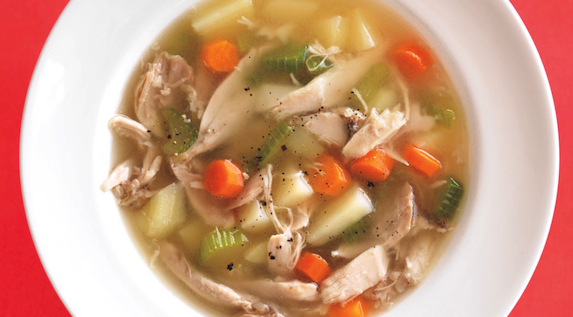
Goody’s Vegetable Soup (made with turkey stock and leftover Thanksgiving turkey) in “Diet Simple: 95 Tricks, Substitutions, Habits & Inspirations” A perfect way to enjoy the holidays and stay slim, too!
In tip#139 of Diet Simple, I share a little reminder that… it’s not the holiday meal that puts the weight on, it’s eating the high calorie leftovers again… and again… and again… on Friday… Saturday… Sunday…and beyond… Get rid of them (I’m pretty sure a homeless shelter would appreciate them)! But keep the tasty and healthy turkey, bones, and veggies to make a yummy soup that’ll soothe your loved ones’ souls – and bodies.
Splurging is great. but I recommend you get back to normal eating as soon as possible. Think of the Thanksgiving feast as one lovely day, and then, indulge yourself with the love of friends and family the rest of the weekend. Besides, isn’t love, friendship and thankfulness the most important parts of the holidays?
Soup is perfect for 5 reasons…
Soups are an especially good use for your leftovers. Why? They are satisfying in many ways: First, they are easy to throw together (as an example, Goody’s Vegetable Soup in “Diet Simple). Second, psychologically, soups warm your body and soul. Third, physically, they are yummy and filling, yet low in calories. Fourth, soups using Thanksgiving leftovers are brimming with nourishment from the most nutrient-dense foods available: veggies! And fifth, soups slow you down, calm you, help you eat more leisurely and mindfully. And mindfulness helps your body and mind in surprising ways.
I’ve written about the “Science of Slimming Soups,” in Diet Simple and on my blog, and you’ll be amazed at the results!
A Fall Menu for Guests with Dietary Food Restrictions

Butternut Squash Soup with Curry and Ginger – from “Diet Simple Farm to Table Recipes: 50 New Reasons to Cook in Season!” (squash, onions and ginger from Farmers Market)
Cooking for special guests with food restrictions can seem an ominous task. It often means that none of your favorite special occasion recipes work, risking disappointing your guests with a less than delcious meal.
I was recently faced with entertaining a friend who couldn’t eat grains, starch, sugar, dairy, eggs, legumes, peanuts, almonds, garlic, or alcohol … You get the picture! But my friends said I did it well, so I thought I would share my menu with you.
First, since my food choices were limited, the recipes were likely going to be fairly simple. so choosing the best ingredients was paramount. Obviously, that meant I bought just about everything from the local Farmers Market.
As Hors d’oevres, I served Guacamole Stuffed Cherry Tomato Halves. On most diets, vegetables are unlimited, so you can’t go wrong with them. My quacamole was simply mashed avocado with salt and pepper. You can stuff the cherry tomato halves with anything – tuna or smoked salmon salad, tabouleh, etc. I also served pistachio nuts in a side dish (always with a spoon to prevent spreading germs).
As the first course, I served Butternut Squash Soup with Curry and Ginger, always a hit. I created this recipe years ago, because I couldn’t find a butternut squash soup recipe with no cream. Of course, this made it perfect for this special menu. All I had to do was to excluded the garlic.
As the main course, I served a crab cake, topped with a tiger shrimp and 2 scallops as decoration. All bought that day from Stachowski’s in Georgetown. The guests were overwhelmed with the freshness, sweetness and delicacy of the seafood. And I confirmed that nothing in the crabcake was verboten. With most of these diets, protein is not limited, but I chose seafood to be on the healthier side. My side dishes were Haricot Vert sauteed in olive oil with sweet onions and red peppers.
And for color, golden and red beets simply boiled with salt and sliced, were served alongside.
Of course, I really wanted dessert to be special. But I was limited to fruit. Hmmm… I’ve eaten roasted fruit, like apricots and peaches, and sauteed fruit in butter and brown sugar. The butter and brown sugar were out, so I decided to roast fruit, which I had never done before. I looked up a few recipes, found fresh pineapple and fresh figs at the grocery store and thought long and hard about what I could roast them in. Could they be roasted alone? I couldn’t find any recipe this simple and I was afraid to try it. It seemed that the fruit would need some kind of fat and sweetener to make it special. But I couldn’t use butter or sugar. Instead, I chose coconut milk, hazelnut oil, and a little honey. I tossed the fresh pineapple pieces and fig halves, in a bowl with the mixture, added pecans, and placed them on a cookie sheet with parchment paper (nothing sticks to it). Roasted til the pineapple was golden brown.
But that wasn’t enough. I needed something creamy with it… ice cream or whipped cream were out of the question. But I heard that coconut milk was popular with the alternative dieting crowd (even though it riases bad cholesterol more than anything else!), so I looked up how to make something creamy out of it. Turns out, it gets nice and fluffy when whipped with a beater. I served it alongside the fruit. And it was a hit!
With a willingness to experiment, try new recipes, and to please your friends who want to eat great food but may be on special diets, it’s worth it to take your cooking into a new direction. My dinner was probably hit and miss. But my friends appreciated my effort and I’m sure enjoyed at least most of it!
Yoga for Low Back Pain
- At September 28, 2017
- By Katherine
- In Articles, News
 0
0
“At least 80% of adults experience low back pain at some point in their lifetime… In a large survey, more than a quarter of adults experienced low back pain in the past 3 months,” according to the National Institutes of Health’s National Institute of Neurological Disorders and Stroke (NINDS).
“Recent studies in people with chronic low back pain suggest that a carefully adapted set of yoga poses may help reduce pain and improve function (the ability to walk and move). Studies also suggest that practicing yoga (as well as other forms of regular exercise) might have other health benefits such as reducing heart rate and blood pressure, and may also help relieve anxiety and depression,” according to a NCCIH article.
Yoga, meaning “unity” in Sanskrit, “unites a mind and body practice,” according to a National Institutes of Health National Center for Complementary and Integrated Health (NCCIH)
Yoga is believed to have originated in the 5th or 6th centuries BCE in India. But it didn’t become popular in the west until the 20th Century. Just twenty years ago, if you practiced yoga, you may have been skeptically regarded as a “hippie” or “a little too new age.” But today, there seems to be a yoga studio on every corner. In fact, it’s become so mainstream, that my physical therapist recommended yoga to me for healing from my particular knee and back surgeries of last year (I’ve been a practicioner for at least ten years), though I adapt poses to my individual needs, per her instructions (and which you should do per your doctor’s instructions).
I recommend yoga or any other mindfulness meditation practices for my clients when changing their lifestyle habits. It is a simple yet powerful tool that can help you transform your health and your life. The mindfulness you can experience with yoga (or other forms of meditation) can help you become more focused and clear, for concentration to be more sustained. It can help you handle emotional situations more effectively by improving decision making and reducing impulsivity, as I relate in my article, “Mindfulness in Eating and Living,” and I describe in my book, “Diet Simple.”
How to Pick the Best Cantaloupe and Delight Your Friends!
- At August 27, 2017
- By Katherine
- In Articles, News
 0
0
I’m not exaggerating! I think I’ve become the most popular person in the area and I credit it to a new variety of cantaloupe called Flavorburst. I buy them at the Dupont Circle Farmers Market on Sundays from Spring Valley Orchard and Farm in West Virginia. Perfectly sweet, juicy, and velvety in texture. Because of their thin skin, they pack more meat than a huge cantaloupe, and are only $2.00 each. I’ve shared them with neighbors, friends, colleagues, clients, and community organizations.
In fact, I get so many orders for them, I had to buy 20 last week (no one wants to get up early enough on a Sunday morning!). There are still 6 left on my windowsill from a week ago because I’ve perfected how to choose enough to last almost two weeks: ripe, medium ripe and unripe. This is how: An unripe Flavorburst Cantaloupe has a small, green circle at the top. Keep these on your windowsill or kitchen counter until their ripe.
A ripe cantaloupe, on the other hand, develops a larger, yellower circle, with tiny cracks, and smells cantaloupe-y. Slice it, serve and share it immediately, or place it in an airtight baggie in the refrigerator for a couple of days.
True Food: A Truly Delicious Experience for Healthy Foodies
- At August 22, 2017
- By Katherine
- In Articles, News
 0
0
I encourage my clients to explore new and delicous ways of enjoying food. In fact, in my weight loss or lifestyle transformation programs, all favorite food is included. Why? Because “taste” will always be the primary reason we humans are willing to eat something. Good tasting food kept us alive during evolution. Anything that tasted bad might have killed us! We still have that instinct today.
So, if a “diet” or “healthy” dish you’re eating isn’t delicious, or it’s something with which you’re getting bored, you won’t stick with your healthy lifestyle. Eating food that you love is the only sustainable way to live.
This brings me to my client, Noah Arber’s, story, as she told it to me …
“Katherine! I had an incredible dining experience at True Food Kitchen in downtown Bethesda, Maryland – and many other locations – that I think your other clients might want to know about. I believe this restaurant is unique, from the food they serve, to the modern and trendy decor. They not only serve delicious and appealing food, but every item on their menu is made using colorful, fresh, and healthy ingredients. It was so enjoyable, I went back the next day. Not only was there a delicious variety to choose from, but I felt good after my meal, knowing I had put fresh, non-fatty or processed ingredients into my body. Even after trying their fruity sangria and their flourless chocolate cake, I was still down half a pound the next morning!
The first time there, my friend and I started our meal with the “Torched Avocado,” with cucumber noodles, mushrooms, snap peas, radishes, sesame, and turmeric ponzu. Next was the “Shiitake Lettuce Cups,” with tofu, jicama, sambal, thai basil, and cachew. These dishes were beautifully presented and bursting with flavors I had never tasted before – not to mention I was eating fresh, healthy ingredients.
For our entrees, we enjoyed “The Ancient Grains Bowl” with miso glazed sweet potato, turmeric, charred onion, snow peas, grilled portobello, avocado and hemp seeds. The following day, we tried the “Spaghetti Squash Casserole,” with caramerlized onion and fresh mozzarella, and the “T.L.T. Sandwich,” on multigrain toast with smoked tempeh, butter lettuce, tomato, avocado, and vegan mayonnaise. Our side was “Roasted Sweet Potato and Kale Salad.”
Needless to say, I enjoyed all the foods I tried. They were some of the most delectable dishes I’ve experienced in the D.C. food scene. I ordered their True Food cookbook, so I can make the recipes at home. I would definitely recommend you tell your friends, family, and especially your clients about it. It was truly a healthy, and most importantly, a deliciously indulgent experience. Who says you can’t eat healthfully and enjoy yourself too?”
Sweet Summertime Melon Chunks with Crumbled Feta and Fresh Mint

Sweet Summertime Melon Chunks with Crumbled Feta and Fresh Mint (from “Diet Simple Farm to Table Recipes”)
Excerpted from “Diet Simple Farm to Table Recipes: 50 New Reasons to Cook in Season!“
It’s melon season and a vast number of varieties are now available, and will be for quite a while. These days melons come in an amazing array of colors, shapes, textures, and flavors. Use a combination of any melons for this very simple, yet elegant recipe. This is an unusual combination of flavors and textures, and a delight on the palate. Use any kind of melon that happens to be in season.
Serves 8
2 pounds melon chunks (about 1 small cantaloupe or seedless watermelon)
½ pound Feta Cheese or other similar cheese
8 small mint leaves, Chiffonade (Basil will also work)
Combine ingredients in a large bowl and serve!
I’m In Tomato Heaven Recipe! Greek Salad with Heirloom Tomatoes
I’m in tomato heaven! Tomatoes are my favorite vegetable (maybe because they’re actually a fruit!). It all started with my Grandmother. She would plant dozens – or it seemed like dozens to a child – of tomato plants every year in her huge vegetable garden. We’d pick them ripe from the vine, and eat them while still warm from the summer sun. I’ll never forget how soft, juicy, and red throughout they were. I feel so lucky that today, we have our Farmers Markets growing these kinds of spectacular specimens… of all shapes, sizes, colors, textures, and flavors!
Heirloom tomatoes are old varieties of tomatoes which have been passed down through generations. They are tastier, but more delicate, because they’re bred to be picked and eaten right away – they’re not bred to travel (as many of the tomatoes in the grocery store may be). Heirloom varieties have natural resistance to pests, disease and are better able to tolerate local conditions without too much extra energy, pesticides or water. Locally, organically produced food saves water, energy and encourages a region’s unique varieties of fruits and vegetables.
Greek Salad with Heirloom Tomatoes
excerpted from “Diet Simple Farm to Table Recipes: 50 New Reasons to Cook in Season!” by ME (only $4.95)
Serves 8
Ingredients:
Vinaigrette:
2 Tablespoons Freshly Harvested Extra Virgin Olive Oil
2 Tablespoons Freshly Squeezed Lemon Juice (1 Lemon)
1 Tablespoon Chopped Fresh Oregano or Basil (or 1 tsp dried)
1 Clove Garlic, Minced (optional)
Salt and Pepper to Taste (Salt is not necessary with the cheese and olives)
Vegetables:
2 cucumbers, peeled, seeded and sliced into a half-moon shape
1 onion, peeled and chopped coarsely
1 medium yellow, purple or green bell pepper, cored, seeded, chopped into large bite-size pieces
1 cup pitted Kalamata or other Greek Olives
4 Heirloom Tomatoes, quartered, and cut into large, bite-size pieces (or any vine-ripe tomatoes)
4 ounces Feta or Goat Cheese, broken into small bits
Instructions:
Combine the vinaigrette ingredients in a large salad bowl and whisk until blended. Add the cucumbers, onion, pepper, and olives and toss into vinaigrette. Let sit for twenty minutes to marinate. Add the heirloom tomatoes and cheese when ready to serve.
Tomatoes are one of the “superfoods.” Men who consumed 10 or more servings of tomato products a week had a 35% decrease in risk of prostate cancer relative to those who consumed 1.5 servings or fewer per week. This is largely attributed to “lycopene” in the tomatoes, which is also in other red fruits such as watermelon, pink grapefruit and guava. Men with lycopene levels in the top 20% had a 46% decrease in risk of heart attack compared to those in the bottom 20%. Lycopene is a potent scavenger of gene-damaging free radicals. But don’t expect to get it from a supplement. You must eat the tomato as you need the whole food to receive the benefits! But because lycopene is fat-soluble, you must eat the tomato with an oil of some kind for it to be available to your body.
Lycopene (Red fruits such as tomatoes, watermelon, guava): Many studies have shown that lycopene-rich foods reduce the risk of prostate cancer, but the mechanism behind that reduction was not well understood until now. A recent study found that lycopene has a substantial protective effect against prostate cancer by interfering with the genes that would allow the prostate cancer cells to grow and survive. The American Institute for Cancer Research recommends that men take advantage of lycopene’s cancer-preventing effects and fill their diets with foods such as tomatoes, watermelon and guava.
Katherine’s Mantra for Transforming Your Life: Never Give In!
- At July 10, 2017
- By Katherine
- In Articles, News
 0
0
Thank you for writing me with your well wishes over the past few weeks. Your responses to my articles documenting my recent personal challenges have been heart-warming. I’ve especially enjoyed hearing your stories – many of you my clients – of how the skills I’m sharing in these pages are ones that have helped you maintain your healthy and happy lives. During my (25+ year) career, I’ve felt privileged to hear about your own life challenges through which you are working.
People look at my life and think it’s easy for me, and sometimes even tell me I couldn’t possibly relate to them or help them. I’m writing my story to disabuse you of that notion. Though, my clients very quickly perceive how similar my life has been to theirs, and understand why I’m so empathetic with their concerns.
“I’m no sacrosanct preacher looking down at a congregation of sinners. I’ve been there … And I know what it takes to come back from those depths of despair – and to stay on top!” I said in my book, Diet Simple. And I’d like to demonstrate how you can do the same, like my clients have, through the many years I’ve served them, and continue to do so.
I’ve been documenting my life’s recent transformation because I believe the steps I’m taking are relevant to anyone who wants to change their lives for the better. Everyone goes through hard times, and one of the most difficult, yet important skills for maintaining a healthy and happy lifestyle, is recovering from set backs.
One of my mantras through the years that I borrowed from Winston Churchill has been, “If you’re going through Hell, keep going … Never give in, never give in, never, never, never!” It is not always easy, including for me. That’s because we’re human and imperfect. But I firmly believe that we must live by this philosophy when it comes to doing good in the world or for ourselves.
In fact, studies of successful weight loss maintainers found that one of the differences between people who lose weight and keep it off versus those who relapse and gain their weight back is recovering from slips, instead of allowing them to snowball; seeing “mistakes” as normal, being kind to oneself, and getting over them.
My best case study demonstrating how powerful your response to slips can be is of Melissa, who spent many years struggling with her health and her weight. Today, Melissa is 50 pounds lighter than when we first started working together, maybe 15 years ago, and she’s kept it off for the past five years. But her journey was not an easy one. Melissa has insulin-dependent diabetes and was sent to me by her doctor to lose weight and improve her health. She desperately wanted to lose weight. She was 5’5″ tall, and slowly gained weight through her adult life until she weighed 200 pounds. She and her doctor wanted her to weigh under 150.
Like many people in Wahington, DC, Melissa is a highly educated, hard-working professional. She successfully directs a non-profit organization helping abused children. You could say Melissa – and her husband, John – are “workaholics.” They live for their work.
For at least ten years, Melissa would successfully change her habits and lose weight. Sometimes 20, sometimes 30 pounds. She’d feel happy, healthy, on top of the world; she loved the way she looked. But inevitably, when she’d go through difficult times – perhaps a holiday, a stressful family event, or a challenging work situation – she would slip up. And of course, you’re thinking, that’s normal, right? Well, Melissa didn’t feel that way. Any deviation from what she thought she should be doing made her feel so terrible that she’d fall into a depression. She was a perfectionist; and hard on herself. She started cancelling appointments, and wouldn’t return my calls. She disappeared. I lost contact with her. She gave up, felt ashamed. I felt terrible.
But amazingly she’d come back within a year or two – or three, though unfortunately having gained some, if not all, of her weight back. I was always happy to see her and pleased she was trying again. After about three failed attempts, we had (another) serious heart-to-heart about her perfectionism. We discussed her “disappearances,” which always led to weight re-gain. We discovered they were related to a slip she was ashamed of, or a time her work load or family life got too busy. She promised to never lose contact again. She agreed that no matter how hard things got that we would work through it together, no matter what.
Many times during our sessions (often by phone because she was so busy), Melissa would feel down and want to give up. But she promised to get in touch the next day(s) and to keep our appointment the following week, even if she felt she didn’t do well. This time we worked together, she kept her promises. Over time, she got used to “slipping up” now and then; she started regarding her slips as normal… okay… to be expected… and sometimes even planned as “splurges” or “taking a break.” Melissa had to learn how to get through the tough times, to put up with being too busy or stressed, feeling unsuccessful, or not getting results. And eventually, she’d always bounce back.
I enjoy staying in contact with Melissa. She sends me photos of herself at a gala, or in a new fabulous outfit, so I can see she’s having fun and staying fit. I like to keep up with how she and John are doing, and appreciate her staying in touch.
You could say I have a rewarding job. I would agree with you! Now, if I could only be perfect… Hmmmm
Working Through the Pain: Priming Your Mind for Change
- At July 03, 2017
- By Katherine
- In Articles, News
 0
0
I don’t know if you’ve noticed, but we humans don’t always think or behave rationally, even when it comes to our own self-interest. In fact, we can be so stubborn that we stand by while watching our own self-destruction. Sure, we want to make positive changes in our lives, and may even know what to do, but often can’t seem to overcome our inertia.
Changing your thinking, your emotions, and perhaps parts of your self-image may be necessary for becoming happier, healthier, more energetic, or achieving your ideal body weight. In the third installment describing my recent life transformation, I am sharing my progression through these steps (for the umpteenth time in my life), toward recovery from some difficult times.
Whether healing from an illness, surgeries, or even just experiencing a long run of being too busy to exercise or take care of yourself… Beginning again, becoming fit, or healthy can be a painful process and can seem almost impossible to achieve.
In my case, after knee and back surgeries, spending a good deal of time being sedentary, and even bed-bound, I tried jumping back into life too quickly many times. These false starts had the effect of delaying my healing, furthering my pain, exhaustion, and depression. I had to learn to take baby steps (funny, something I’m told I’m very good at helping my clients with while working toward improving their lives). I had to notice how my thinking, self-talk, emotions, and even my own identity were interfering with my successful recovery.
One of my revelations was that my self image as a fit and physically active person affected me negatively and slowed my progress for a couple of reasons. First, my inability to be physically active while recovering from surgeries made me perhaps more depressed than would be expected. That depression kept me from the world, isolated, and of course, we all know, that made my situation worse: physically and psychologically. Second, when I finally got the will to start moving, I didn’t know how to start slowly. I jumped right in, taking difficult yoga classes and walking too much. That caused pain and discouraged me from continuing to try. And this prolonged my convalescence.
After many such failures, I decided to try joining the world again. But this time, taking my own advice and doing it one baby step at a time! For this to work, I had to change my thinking. It is the cornerstone of any behavior change: Noticing your thoughts and deciding how to react to them. I decided it was time to notice the negative thoughts in my head that led to counterproductive behavior. Noticing self-defeating – and irrational – thoughts, such as “I’ll never be myself again,” or “I don’t want to go out and be seen unless I’m completely back in shape,” allowed me to change them to more rational and productive thoughts, such as, “of course, I’ll always be myself! And, besides, a little improvement is good for anyone,” or “people will still accept and like me, even if I’m not in great shape.” This officially is “cognitive therapy,” an accepted pre-requisite for behavior change, and one I use extensively to help my clients. My willingness to begin this process allowed me to accept my humanness, my need to proceed slowly. I decided to share my experience after finding so many people were surprised that this process could be difficult for me, the “expert.” I also wanted to share my experience so others would feel assured that this transformation is possible for anyone.
Before you can change the way you think, though, you’ll need to develop a sense of urgency about your goal, if you haven’t already. A sense of urgency, according to The Dalai Lama in “The Art of Happiness” – and scholars in this important field of psychological research, can be achieved two ways:
1) Remind yourself of your positive vision for success. For example, visualize yourself at your ideal fitness level, your goal weight, or see yourself feeling happy, healthy, energetic, and confident (see “Dream” in my book, Diet Simple), and
2) Ponder the negative consequences of not making a particular behavior change (a little fear can be a good thing – but just a little). I mean, after all, did I really want to feel terrible for the rest of my life? This may seem like an absurd question to ask yourself, but when your behavior doesn’t lead to positive outcomes, what else could the counter-productive behavior mean? What outcomes could you possibly expect besides negative ones? You may try this yourself by asking, for instance, in the morning as you’re considering two options: getting out of bed to exercise or sleeping just a little longer, “Do I want to feel good today? Or do I want to feel crummy today?” Another example, as you’re driving home from work and deciding to grab some carry-out or to go home to eat the healthy meal you’ve already planned. Ask yourself: “Do I want to achieve my weight loss goal (insert positive vision here) or will I accept being the same weight and having the same health problems for another year?” “Do I want to stop taking these darn medications or will I be taking them forever – and even increasing the dosage? What will my doctor say?” “What kind of example am I setting for my children, my spouse? Is this a behavior I can be proud of?” etc. You get the idea…
ACHIEVING INCREASED HAPPINESS
Outlining the consequenses of your actions and acting on your long term goals, as opposed to momentary desires, helps you grow as a person and become a happier person, according to scientific research. It increases your general happiness level because you are making decisions which contribute to your long-term goals.
THE DOWNWARD SPIRAL OF GIVING IN
Usually, when we do something that feels good momentarily, such as giving in and staying in bed for 30 more minutes of sleep in the morning instead of exercising, or grabbing a coffee cake at the coffee shop when we originally just planned on buying coffee, our happiness level may increase (“oooh, this feels yummy!”) – but it’s only a temporary blip of happiness. It goes back to the same level it did before – once the temporary experience wears off – and nothing changes for the better in our lives. We may even become more depressed as we continue to “give-in” to these unfulfilling momentary desires and dive into a downward spiral.
MAKING THE HARDER, BUT MORE SATISFYING CHOICE
If, instead, we say to ourselves, “I’m getting out of bed NOW! I’ll feel terrible if I don’t, and I’ll never achieve my goals,” or “Will stopping to get carry-out change my life for the better? I’d be better off going home and eating something healthy as I want to lose weight, lower my cholesterol, etc,” or “I really don’t need that coffee cake, and I’ll feel terrible after eating it, and will it make me happier at the end of the day?” “Will this increase my happiness for the short term? Or for the long term?” Another more extreme example might be a drug addict relapsing. It feels great momentarily, but the feeling doesn’t last.
When you make a more thoughtful decision, which contributes to your longterm health – physical or psychological – you are more likely to achieve your life’s hopes, dreams and goals, you can actually increase your happiness level, feel happier more often and grow as a person.
WHY IT’S NOT ALWAYS EASY
It is not always easy in our society to make the healthy decision. It’s easier – and the norm, in fact – to be unfit, overweight and unhealthy. But, I’m convinced it is possible to be healthy in an unhealthy world with planning, practice, determination, and support (I’m here any time you need me!) – Besides, what’s the alternative?
It takes effort to train your mind to work this way, but this is how we become better people and we advance as a society.
Meditating on the Potomac: First Steps to Overcoming Barriers to Regaining My Identity
- At June 26, 2017
- By Katherine
- In Articles, News
 1
1

My friend Katy and I Experiencing Mindfulness While Kayaking on The Potomac River (Photo by Ari from Nauti Foods, the floating “food truck” on The Potomac River)
I’m sharing my journey toward getting my life back, after some rough times, almost losing my health, and my sense of self, because I know the process can be difficult – and even painful – for anyone. I know, because it’s been my job – and my passion – for more than 25 years: helping my clients transform their health and their lives to better themselves and to increase their happiness. Ironically, I haven’t experienced these joys for myself for quite a while, so it’s my turn to tough it out. And I can tell you, after many setbacks, it’s not for sissies!
In my story’s first installment, I described the importance of mindfulness as a foundation for self understanding and successful life change. It reduces anxiety, helps you focus, and leave worries about the past and future behind. This helps you work through problems more effectively, according to scientific research from the National Institutes of Health. I needed to keep my focus on the present, to relax, to feel hopeful, and to force myself out of my depression. I needed to be willing to work at overcoming my exhaustion after almost two years of knee and back pain, ultimately leading to surgeries on both, and sidelining me for the duration.
You see, I spent a lifetime being physically active. This was a part of my identity, a way I excelled in the world. I started gymnastics in pre-school (it was called “tumbling” then). I went on through my adulthood to continue practicing gymnastics, cheerleading, dance, swimming, scuba, fencing, climbing, skating, archery, aerobics, strength training, stand up paddle boarding, yoga …You name it, I’ve done it, and excelled almost immediately at anything I tried (even basketball, though I’m 5’2″).
It’s funny that I only recently realized that this loss of my physicality may have been the underlying cause of my depression and endless exhaustion – because it was an integral part of my identity and self-worth. I never realized how much pride I took – wrongly or rightly – in being fit, active, and in exceptional (not just good) shape. I was always a leader, a teacher, and set the example for thriving and living a healthy life. I bounced back from negative experiences easily, and taught my clients to do the same. But somehow I couldn’t this time. I actually felt embarrassed to let anyone know, outside a few of my closest friends and family, just how badly I felt. I stopped exercising (by necessity), I gained weight, I stopped going out, I stopped socializing, and even dealing with my business. I isolated myself, even though I knew this behavior was hurting my health in every way.
I finally came to understand why I was not recovering as expected while listening to a friend’s account of his wife’s reaction to the fear of potentially losing her singing voice (she’s a singer) after the successful removal of a stage 1, non-malignant cancer on one of her vocal cords. The experience left her inconsolable, silent, uncommunicative, miserable, and angry with everyone. No amount of love, support, or reassurance from the experts helped. Her reaction and behavior went beyond normal proportions. Why? Perhaps because using her voice was an integral part of her identity, and the fear of losing it, even an irrational fear, was too frightening to face, let alone talk about, or deal with.
Facing and working through that kind of loss and fear can be paralyzing. Admittedly, it’s taken me way too long to begin my recovery. And every day I’m too tired – or too stubborn – to advance, I damage myself further.
If you inexplicably don’t take steps to improve your life in ways you know would be helpful – and your loved ones are encouraging – perhaps exploring how your self image has been or will be affected, will help get you started. This is a major barrier to overcome for anyone trying to change a habit, even one which is self-destructive.
Mindfullness has been essential for me to finally start taking the small steps toward getting my life back, and feeling like myself again. (Funny, taking small steps is the cornerstone of my life-change programs, and my book, Diet Simple.) Studies clealry show you can achieve mindfulness through meditation. But I believe any activity that absorbs your heart and mind, relaxes you, and focuses you on the present moment, can improve your mindfulness. Mindfulness allows you to work through your worries more effectively, to let go of thoughts and feelings that won’t help, while concentrating on positive behaviors that will advance you toward your long term goal of increased happiness, however you define it.
This weekend, mindfulness came to me through kayaking with a friend on the beautiful Potomac River. What wonderful resources in Washington, DC (we rented a kayak from the Key Bridge Boathouse)! I was able to step into another world, completely relax, and focus on Mother Nature, just a few blocks from home. A couple of weekends ago, I escaped to the Pennsylvania countryside. Music and reading elevate me too (anything but the news, please).
Personalize your way of becoming more mindful so you can start making small steps to improve your life. And try to be patient with yourself.
More later ..
Katherine’s Crepe-Style Swedish Waffles with Succulent Strawberries
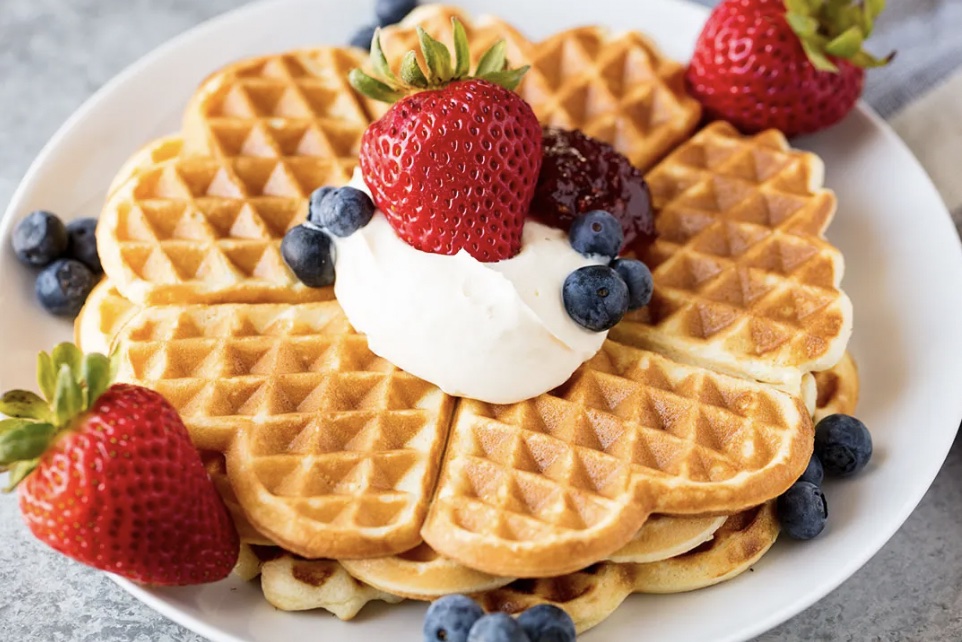
Late spring and early summer strawberries are especially sweet and succulent, especially if they are grown locally and picked at peak ripeness. I experienced a very decadent way of enjoying them while relaxing during a recent respite in the Pennsylvania countryside, with my friend, Anna: Smothering heart-shaped Swedish waffles. These aren’t ordinary waffles; they’re crepe-thin, crispy, buttery, and simply divine. Traditionally served on “Waffle Day,” in Sweden, celebrating “Our Lady’s Day,” on March 25th, 9 months before Christmas (also known as the Christian holiday of “Annunciation”). Enjoy…
Katherine & Anna’s Luxurious Swedish Waffles with Strawberries
Serves… You decide the number!
3 eggs
1 dl (3.4 ounces) Flour
6 dl (2.4 cups) Whole Milk (or 1% Milk)
1/4 cup melted, cooled Butter (or Canola Oil or Walnut Oil for a nutty flavor)
Pinch of Salt, Sugar, or Vanilla (optional)
Topping:
1/2 cup (or more) Plain Yogurt, Whipped Cream or Ice Cream
1 cup (or more) Strawberries, other fruit, or preserves like Swedish Lingonberries
1 teaspoon Maple Syrup or Confectioner’s Sugar (optional)
A sprinkling of chopped Roasted Nuts (optional)
1 sprig of fresh Mint (optional)
Whisk the ingredients together in a pitcher. Grease the waffle iron with butter or oil for the first waffle. Since butter (or oil) is in the recipe, the waffle iron will not need to be greased again.
Pour a small amount of the mixture into the Euro Cuisine Eco Friendly Heart Shaped Waffle Maker per product instructions. When golden brown, carefully lift the waffle and place in the center of your plate (smother in butter if you’re being especially care-free and decadent). Place the yogurt, ice cream or whipped cream, berries or other fruit, and roasted chopped nuts, if you wish, on the waffle. Drizzle maple syrup on top. Finish with a sprig of mint.
Lingonberry preserves are widely used in Sweden. They’re sweet and tart, and taste great with plain yogurt or sour cream. They make great toppings for crepes and Swedish waffles.
If you want more of a decadent cake-like dessert, thinly spread butter on the waffle, then sift confectioner’s sugar on top.
NOTE: Using butter, whole milk, ice cream and whipped cream make these delectable waffles occasional dessert treats, and I recommend using them sparingly. When Anna and I prepared them last weekend, we used 2% milk and butter in the recipe. I topped my waffle with Chobani nonfat plain yogurt with a little maple syrup drizzled on top. Anna used whipped cream!
How A Little Help from my Friends and Mindfulness Meditation Saved my Life!
- At June 11, 2017
- By Katherine
- In Articles, News
 0
0
I experienced tough times the past couple of years. Of course, I’m no exception. We all have tough times. That’s life, isn’t it? “You can’t feel joy unless you’ve felt pain…” But after being in pain and inactive for so long, I got to the point where I was physically and mentally exhausted and depressed. Symptoms like debilitating headaches and stomach pain took over and kept me from living life fully. I had to change, but it was tough. I was taking one step forward and two steps back for a while.
We’ll talk about my personal issues during the past couple of years in my next installment. For now, I’ll be in the present and try to talk you into the same. You may know that I work with clients helping them turn their lives around, to live healthier, happier, and more energetically, through gentle counseling in nutrition, exercise, spirituality, stress management, and life organization. So, I feel fortunate to know the process. I thought I would share my “metamorphosis” with you, so perhaps you might gain some insight for yourself
Attempting to recover, my first step was allowing myself to have more positive experiences. I say “allowing myself” because I had to take action to get out of my negative state. No one could do it for me. I forced myself to start listening – and responding – to the friends, loved ones, and health care professionals in my life to get out of isolation, back to socializing a little more with good friends, participating in good causes, and exercising a little. This meant “working through the pain,” an admonishment I came to detest, but one I knew was true (I had already been evaluated medically).
I started reading a book called “The Book of Joy,” co-authored by The 14th Dalai Lama and Archbishop Desmund Tutu. Two of the most joyful, spiritual, and productive men on earth who have suffered their share of heartache. If they can overcome their obstacles – exile, refugee life, apartheid, targets of hate and prejudice – can’t we?
In “The Book of Joy,” both spiritual leaders emphasize meditation or prayer as the foundation of a happy life. They meditate, pray, have quiet time, for several hours every morning. Can I do that? Will I do that? Should I expect my clients to do that? Well, probably not. But I and my clients can personalize our own way to re-create happy lives. There are so many “centering” techniques that are scientifically proven to help many health conditions. In the past, I learned deep belly breathing and progressive relaxation as techniques, but I had gotten away from the practice.
Second step: I decided my personalized way to center myself and become more mindful would be Mindfulness Meditation with a little yoga thrown in. I do a little in the morning, and spurts here and there through the day. And if I can do it, you can do it – that is, in your own way. Like you, I’m a hard working professional (and I’m including stay-at-home Moms and Dads). I don’t have a lot of time. But as a health care professional and life coach, I know by many years of experience that there are certain priorities in life that cannot be ignored, or the consequences are dire.
Changing the way you think and calming your mind are the cornerstones of understanding yourself and achieving any behavior or life change. But you have to learn how to be “mindful” first. “Mindfulness is the ability to be present, more focused, and clear; for concentration to be more sustained, and for attention to be on what’s happening, instead of on thoughts, memories, and associations,” said Jack Killen, when he was the Deputy Director of the National Institutes of Health’s National Center for Complementary and Alternative Medicine.
“There is neurobiological research that demonstrates that mindfulness engages pathways in the brain… [they] allow your brain to be focused on what is here and now… [so you’re] more able to think through a problem, less likely to be distracted by issues that won’t help,” said Killen. “Meditation is one way of exercising neurological pathways in the brain which help us become more mindful.”
So, how do I or you choose a way to become more mindful… a way that fits your lifestyle, beliefs, and personality? Here’s what I did one weekend toward this goal: I left the city to visit a good Swedish friend in the beautiful and serene countryside of Pennsylvania.
During the drive to the Pennsylvania countryside, I called a few friends I haven’t talked to in a while. That felt good. I was enjoying the drive. My headache was disappearing. When I got there, my happiness was overflowing, my headache was gone. Being in the countryside, and being with a good friend, somehow motivated me to pop out of bed early (my headache came back, ugh!). I started with a cup of coffee (strong, smooth Swedish style), then sat in a comfortable chair facing the trees. I began deep belly breathing, centering my mind on the moment, checking each part of my body for signs of stress, and then relaxing it (progressive relaxation). I put on some favorite music (rock ‘n roll was my pleasure at the moment). I spontaneously got up and started dancing. I continued with the deep breathing and some yoga exercises. My headache finally left me again. The worst of my stomach pain was gone went I recently went off anti-inflammatory medications I was taking, based on my doctor’s and pharmacist’s recommendations.
Am I cured? Well… Life is a continuous learning experience. I work at my deep breathing, stretching and light exercising continuously. Training your brain to be more mindful “is a bit like going to the gym and working out your muscles. It takes time and practice for the beneficial brain pathways to become established, similar to building muscular strength and flexibility,” said Killen.
Along with the breathing exercises, I made an effort to get back in touch with and socialize with the people I care about. But those were only steps one and two! I still needed to work on much more. Getting back to exercising my body more regularly was the next big hurdle. I don’t know how long it will take to get to my former fit self, or even a better self. But at least I’m off to a good start. And you can be, too! But be sure to check with your doctor so any serious medical condition is ruled out.
I’ll keep you posted!
The Right Amount of Alcohol Can Benefit Your Health
- At May 22, 2017
- By Katherine
- In Articles, News
 0
0
Nutrition is a complicated science. Some of what we know makes complete sense, but often the science seems counter-intuitive. For instance, most people know that fruits and vegetables are good for you, but they don’t know that alcohol can be good for you, too. The confusion often stems from the fact that nutrition isn’t usually an “all or nothing” matter. It’s also dangerous to assume that “if a little is good, more is better.” Nutrition science is more like a “Goldilocks” situation: It’s unhealthy to have too little or too much of anything. In nutrition, the amount of a food or nutrient needs to be “just right” in order to benefit your health.
Alcohol is a perfect example. Through the decades, most studies have shown that light to moderate alcohol intake is connected to a reduction in all causes of death (except for breast cancer). But drinking zero alcohol, or too much alcohol, in many studies, have been associated with increased death rates. Your cardiovascular system particularly benefits from the right amount of alcohol. A recent study published in the journal, Clinical Nutrition, found that only light drinking (1 to 7 drinks per week) was associated with a reduced risk of heart failure. Previous studies have also found light drinking to be beneficial for metabolic syndrome, the cluster of conditions that occur together that increase your risk of stroke, heart disease, and diabetes (high blood pressure, blood sugar, cholesterol, triglycerides and excess belly fat). But too much drinking is clearly associated with increased death rates. And all scientific experts agree, if you don’t drink, this is not enough of a reason to start. Simple healthy living surpasses benefits of light drinking.
To learn more about wine’s and alcohol’s health effects, read my article about it.
Health authorities recommend women stick with a maximum of 1 serving of alcohol daily, and men maximize at 2. The definition of one (1) serving:
Springtime Strawberry and Goat Cheese Salad
Four Tips for Choosing the RIGHT Olive Oil
My clients regularly ask me how important using olive oil is. Of course, we have all heard about olive oil’s health benefits. But there is still understandable confusion. I’m regularly asked, “How does olive oil compare to other oils? How does it work? What kind of olive oil is best? How much should I use?” My answer: It depends…
These are important questions as more and more science is finding that the nutrients in olive oil, called “polyphenols,” are responsible for its superior health benefits. Increased longevity, reductions in cardiovascular disease, metabolic syndrome, obesity, diabetes, and various cancers, are among the benefits, confirmed a 2015 review of studies published in the British Journal of Nutrition. But olive oils can vary significantly in their polyphenol content. There are four times more phenolic compounds in high quality extra virgin olive oil versus low quality or refined olive oil – 232 mg vs 62 mg per kilogram of oil – so it is important you choose the right olive oil.
“99 percent of olive oil’s health benefits are related to the presence of the phenolic compounds, not the oil itself,” said Nasir Malik, NIH Scientist. “And without the polyphenols, you might as well use the less expensive canola oil.”
Surprisingly, when tested by the U.S. Department of Agriculture, polyphenols were low in most commercially available olive oils. They also didn’t live up to international quality standards defining extra virgin olive oil. These standards require an acidic pH, necessary to protect the nutrients. And the olive oils’ pH had degraded – even in the highest end gourmet shops – according to studies conducted at the University of California at Davis Olive Center.
That’s because olive oil’s polyphenol content diminishes, and its acidic pH degrades over time, as days, weeks, and months go by after harvest. Other factors play a role, too: the harvesting methods, the age of the trees, the ripeness of the olives, the processing, and the storage. Since time, heat, and light affect polyphenol content, choose olive oil that:
- Is no more than one year old (look for the harvest date on the label),
- Is in an air-tight, dark glass, or tin container,
- Is stored in a cool environment, and
- Smells and tastes like olives, which could be fruity, grassy, or peppery.
Is olive oil better for your health than other oils? The answer is yes, according to a new study in Nutrition & Diabetes. For one, “The risk of type 2 diabetes reduced by 13% with increasing intake of olive oil up to 15 to 20 grams per day (3 to 4 teaspoons),” according to the study. When refined olive oil, or other oils, were compared, fresh extra virgin olive oil was more beneficial for the prevention and management of diabetes. It was associated with lower fasting blood glucose, and Hemoglobin A1C, a three-month average of blood glucose and an important marker for diabetic complications.
Other studies have found high polyphenol olive oil improves health in many ways:
- Increasing levels of good cholesterol (which helps clear artery-clogging fat from the bloodstream),
- Improving artery wall health and functioning (important for healthy blood pressure, blood flow, reducing blood clots, and the risk of cardiovascular disease), and
- Reducing oxidation and inflammation processes involved in many diseases from infections to cancer.
To take full advantage of your olive oil’s flavor and health benefits, save your recently harvested, high quality extra virgin olive oil for drizzling on vegetables, salads, or anything! When cooking with high heat, i.e., stir frying, use canola oil or nut oils instead, as they can be less expensive, and have higher smoking points so can tolerate higher temperatures without burning.
My favorite vinaigrette: Mix 1 or 2 tablespoons of olive oil with 1 or 2 tablespoons of freshly squeezed lemon juice, salt and pepper. The proportion of olive oil to lemon juice depends on how tart you like your vinaigrette. You can also add a smidge of mustard or herbs. Serve!
One shop in Georgetown which consistently sells high quality olive oils is Georgetown Olive Oil company. It is locally owned and operated at 1524 Wisconsin Avenue. The shop displays rare-to-find information, such as the oils’ date of harvest, provenance, and detailed descriptions. And you can taste any of the oils at any time. I highly recommend this cozy and friendly specialty shop where they clearly understand what makes a great olive oil!
For more detailed information on olive oil, read my Washington Post article: “Most Olive Oil is not as Healthful as You Think”
My Favorite Asparagus Recipes
Spring has always seemed more like the new year to me than January first. Perhaps my inspiration comes from longer, warmer, sunlit days, delicate vegetables and fruits, like asparagus and strawberries, finally popping up, flowers blooming everywhere. Neighbors begin venturing out of winter hibernation with their first happy greetings of the year, with sounds of their children playing in the street. Celebrations are occurring all over the city showing off our beauty and splendor to the tourists. In fact, I think I’ll make my New Year’s Resolution today! And it’ll be easy – preparing batches of veggie salads – or soups, at least weekly, to help me and my friends shed some of our winter “padding.” Making delicious veggies your main course at dinners (lunches, too) helps manage your weight easily. Asparagus is one of my major harbingers of spring. Here I’d like to share some of my favorite asparagus recipes excerpted from my book, Diet Simple Farm to Table Recipes: 50 New Reasons to Cook In Season!, where you’ll find dozens of other seasonal recipes:
Chilled Asparagus in a Creamy Tarragon, Shallot and Roasted Walnut Vinaigrette
Salad of New Potatoes and Asparagus with Lemony Garlic Herb Mayonnaise
Pasta with Pesto, Roasted Asparagus and Cherry Tomatoes
Asparagus Salad in a Vietnamese-Style Dressing
Is Butter Good For You?
- At April 10, 2017
- By Katherine
- In Articles, News
 0
0
Butter is Back! And it’s even good for you? These declarations can be illustrated by the dizzying array of delicious butters now available: besides the old-fashioned American butters, you can easily find the extra rich Irish and French Butters, and a variety of premium, grass-fed, and organic farmers market butters extolled for their superiority, and with a premium price tag to match. Is this a food lover’s dream come true? Even some nutritionists have joined the bandwagon, and yours truly has been confused.
This seemingly good news may have started with the widely read earth shattering 2002 New York Times Magazine story, “What if it’s All Been a Big Fat Lie?” by Gary Taubes, featuring a big, fat, juicy piece of steak on the cover. More recently, Mark Bitman wrote a 2014 New York Times story covering a scientific study in the March 2014 Annals of Internal Medicine journal concluding that eating saturated fat, the so-called artery-clogging, demonic fat in butter, did not raise a person’s risk of heart disease. This exciting news, covered in just about every print and broadcast media outlet around the world, seemed to reverse decades of medical advice saying the opposite was true.
So, how do we hash out the truth?
This is an important question as one in every four deaths of Americans are from heart disease, so it’s a critical issue concerning the health of the majority of Americans – and my clients, who rely on me to get it right. After all, what’s more important than your health?
Upon exhaustive research, I’ve found the answer, interestingly, is not too different than conclusions made by Harvard scientist, Ancel Keys, and other respected scientists in the 1950s, 60s, and 70s: that the type of fat – not total fat – is responsible for the rise in heart disease because of its affect on blood cholesterol levels.
But how important is blood cholesterol level? A multitude of factors increase heart disease risk, such as calcification, inflammation, blood pressure, high triglycerides, diabetes, obesity, inactivity, smoking, family history, gender, and age. But, apparently, the correlation between high LDL(bad) cholesterol levels and heart disease has been well established and is still deemed significant to your risk of heart disease and your health. Conclusion: Keep LDL low (under 100) and HDL high (Over 40) to prevent heart disease risk.
And the most recent clinical study – the gold standard of scientific studies – has confirmed the worst (if you’re a butter lover, that is): Replacing the saturated fat in butter with unsaturated oils, not only raises HDL (good) cholesterol – which clears fat and reduces placque in the arteries – using oils instead of butter also reduces artery-clogging LDL (bad) cholesterol from the bloodstream. Conclusion: Use oil instead of butter to reduce heart disease risk. So, it seems the advice hasn’t changed since Ancel Keys discovered the superior health of Mediterraneans who used oil instead of butter.
In a recent Harvard School of Public Health’s analysis of the controversy, the scientists review decades of research showing the successful reduction in heart disease risk by doing things like replacing butter (high in saturated fat) with oil, replacing steak with salmon, and eating a plant-based diet based on fruits, vegetables and whole grains for the reduction of LDL cholesterol, the increase in HDL cholesterol, the resulting effect on lowering heart disease risk, and improving your overall health. Conclusion: “Butter is not back!” said Harvard’s Walter Willett.
So, what about those New York Times articles? Well… Caveat Emptor! Don’t believe everything you read, and consider the source (be sure the information comes from a peer-reviewed, scientific journal, and compare it to other established science).
To say this Swede, raised on cream and butter, is disappointed, is an understatement! But I still use luxurious butter sparingly, when I deem necessary!
And it’s a relief to know that all these years, helping my hundreds of clients lower their LDL and raise their HDL cholesterol levels by substituting butter with healthy oils and other lifestyle changes has not been a waste! WHEW! No rioting necessary 🙂
The Top 5 Food Do’s & Don’t’s Affecting Heart Disease Risk
- At March 27, 2017
- By Katherine
- In Articles, News
 0
0
In 2012, 45.4% of all heart disease deaths could be attributed to inadequate intake of certain foods, according to a recently published study in the Journal of the American Medical Association.
We’ve known for decades that what you eat significantly affects heart disease risk factors such as high blood pressure, high cholesterol, hemorrhages, diabetes, and inflammation. These results were based on a variety of different kinds of studies – epidemiologic, prospective, and clinical trials – set out to quantify the effect of specific foods on heart disease deaths.
The Intake of These Top 5 Foods, In Order of Predominance, Affect Your Heart Most Dramatically
1. High Sodium: Sodium, usually eaten in the form of salt, which is half sodium, pulls fluid into your blood vessels. This extra fluid increases the force of the blood against artery walls, reducing the flow of blood to your organs, making it harder for your heart to pump the blood efficiently, and damaging your heart. This excess force (or “pressure”) stresses the artery walls, potentially causing tears, blood clots, aneurysms and strokes. The recommendation is to take in less than 2,300 mg daily. Most Americans eat at least double that.
2. Low Nuts and Seeds: Epidemiological studies have found for decades that nut and seed eaters around the world have fewer heart attacks. The oil in nuts contains nutrients which seem to have a positive impact on heart function and increases good cholesterol, which helps prevent bad cholesterol from clogging the arteries. Also, studies show nuts and seeds help keep body weight down, a major risk factor for heart disease. Eat 2 ounces per day for maximum effect.
3. High Processed Meats: Processed meats such as hot dogs, bacon, sausage, bologna and ham are a major sodium source. They’re also usually high in saturated fats, which increase bad cholesterol. Since they are the highest dietary factor correlated with cancer, this gives you another reason to minimize processed meats. But when on the occasions that you might eat them, to minimize potential damage, pair with foods high in potassium and antioxidants, such as fruits and vegetables. Potassium and antioxidants may help neutralize the effects of sodium and the chemicals used in meat processing.
4. Low Omega-3-Fatty Acid Fish: Omega-3-Fatty Acids help prevent heart disease in many ways. They prevent irregular heart beat, reduce fatty placques inside artery walls, decrease blood clotting, tryglycerides (blood fats), increase good cholesterol and decrease inflammation. The American Heart Association recommends eating about 12 ounces of fatty fish weekly.
5. Low Fruit and Vegetables: Fruits and vegetables have many qualities responsible for the reduction of heart disease risk. They are high in potassium, which helps neutralize the effect of sodium on blood volume by pulling fluid from the arteries, reducing the blood’s pressure on the artery walls. They are high in water content, which studies show helps you feel more full with fewer calories, thus aiding weight loss (high body fat is the primary controllable risk factor for heart disease). Health authorities at the National Institutes of Health, and the U.S. Dietary Guidelines recommend 5 cups of fruits and/or vegetables daily. They should comprise at least half of the volume on your plates.
Blueberry Soup Fuels Bikers at the House of Sweden
- At March 26, 2017
- By Katherine
- In Articles, News
 0
0
On Sunday, March 19, the House of Sweden hosted the Washington Area Bicyclists Association for their 15th annual Vasa Ride. This lively WABA tribute to the renound annual 90 K Swedish Vasaloppet Cross Country Ski Race, uses bicycles instead.
Sunday’s bike ride, though, was a kinder and gentler version of the Swedish ski race, which is a tribute to the founding of a free Sweden. The first Swedish “Vasaloppet” was carried out in 1521 by Gustav Eriksson when he led occupation forces in an uprising against Danish rule from the town, Salen. This resulted in Eriksson, better known as Gustav Vasa, becoming a free Sweden’s first King and Vasaloppet’s namesake. But it wasn’t until 1922 that this endurance race was established and held its first run, also starting in Salen, with 136 skiiers, and took 7 hours, 32 minutes and 49 seconds in sleet and snow for the victor.
This year’s March 4, 2017 Vasaloppet registered 15,800 participants from 43 nations, and is the largest and longest ski race in the world. The winner, Norwegian John Kristian Dahl, won the race after 4 hours and 8 minutes.
Several years ago, the Swedish Embassy and WABA got together to create the annual Vasa Ride, with bikes, since D.C. doesn’t usually have enough snow for a 90 km cross country ski race. The Vasa Ride has four levels of riders who choose to ride for either 59, 31, 16 or 8 miles. On March 29, the House of Sweden, as usual, was a beautiful, light-filled respite from the cold, long ride. The Swedes generously provided the home base and refreshments, including the traditional Vasaloppet “Blueberry Soup,” though the American bikers’ consumption paled in comparison to almost a liter drunk by each skiier in the real Vasaloppet.
“The blueberry soup was warm and filling after the cold 30 mile ride, and it tastes better than I thought it would,” said Robert Bernstein, a WABA member who came from Ellicott City, Maryland.
The Swedish Embassy’s Air Force Attache, Per Danielson, coordinated the Swedish Embassy’s hosting his second year in a row. Danielson was a Swedish exchange student living in Richmond thirty years ago. And with this former exchange student leading, current Swedish exchange student volunteers served blueberry soup at Sunday’s event.
“It’s often the first ride of the year for Washington area cyclists, and is a fundraiser for WABA,” said Nick Russo, WABA’s Events Coordinator. WABA’s mission is “to create a healthy, more livable region by promoting bicycling for fun, fitness, and affordable transportation; advocating for better bicycling conditions and transportation choices for a healthier environment; and educating children, adults, and motorists about safe bicycling,”
Nuts & Seeds Reduce Signs of Aging by Increasing Telomere Length
- At March 11, 2017
- By Katherine
- In Articles, News
 0
0
Nuts and seeds improve signs of biological aging by increasing telomere length. Telomeres, proteins found at the end of each chromosome (think of the plastic protector at the ends of shoe laces), preserve information in our genome and prevent cell death; they serve as a biological clock to determine the lifespan of a cell and an organism. Telomere length shortens with age and can be affected by various lifestyle factors. Shorter telomeres are associated with lower rates of survival and higher rates of disease such as heart disease, cancer, diabetes and osteoporosis.
“Older people with shorter telomeres have three and eight times increased risk to die from heart and infectious diseases, respectively. Rate of telomere shortening is therefore critical to an individual’s health and pace of aging. Smoking, exposure to pollution, a lack of physical activity, obesity, stress, and an unhealthy diet increase oxidative burden and the rate of telomere shortening” according to a National Institutes of Health Review.
A new study found that “nuts and seeds intake was positively and linearly associated with telomere length.” After analyzing DNA and telomere length of study participants, researchers found: “Adults of the same age had more than 1.5 years of reduced cell aging if they consumed 5% of their [calories] from nuts and seeds,” according to the study in The Journal of Nutrition, Health and Aging.
What does that mean for you? If your calories needs are average, and about 2,000 per day, and you would like 5% of your calories to come from nuts and/or seeds, eat about 1/2 ounce or 1/2 a handful per day – or more. I generally recommend an ounce a day for those of us watching our weight and at least 2 ounces a days for those who get to eat unlimited calories (2 ounces daily is associated with a significantly reduced risk for heart disease).
I sprinkle them on my oatmeal each morning! My recipe …
A New Recipe For Improving Seasonal Allergy Symptoms
- At March 06, 2017
- By Katherine
- In Articles, News
 0
0
My clients who suffer from seasonal allergies were hit hard this year – and earlier than usual. The warm February temperatures caused Washington’s flowering trees and shrubs to come out of their winter slumber gloriously. Our famed cherry trees and camellias are almost in full bloom. Even my hydrangeas’ buds are peaking out.
This beautiful display does not feel so beautiful for people with spring allergies. They often have symptoms, caused by the flowers’ pollen, which impact their quality of life: lack of sleep, reduced productivity at work or school, emotional stress and embarrassment…. and the medications designed to improve those symptoms, depending on the person, may be no better, and cause dry mouth, sleeplessness, and drowsiness. A new study set out to test if certain strains of beneficial probiotic bacteria would reduce symptoms and improve quality of life during allergy season for its sufferers.
The study, published in the American Journal of Clinical Nutrition, the first randomized, double blind, placebo-controlled trial – the gold standard of human research – testing this hypothesis, divided 178 allergy sufferers into two groups and tested them during spring allergy season for eight weeks. One group received the probiotic supplement*, the other received the placebo.
The study found the probiotic group experienced improved quality of life symptoms compared to the placebo group. That said, scientists are still working out which of the beneficial probiotic bacteria work best with individual allergens, when to start taking them, and which probiotic bacteria will react most positively with a person’s specific microbiota (the 100 million bacterial organisms in your digestive tract), as each person’s microbiota is different. They mentioned that starting probiotics at a younger age may be more effective, too.
In the meantime, I believe eating foods which naturally contain beneficial probiotic bacteria, such as yogurt, is the best solution for trying to reduce your allergy symptoms. In fact, I recommend eating yogurt every day! Though, I don’t recommend counting on supplements because, as of now, no probiotic supplements have passed the tests allowing them to make a health claim.
Here’s one of my favorite yogurt recipes developed by Georgetown resident, cookbook author, and my friend Najmieh Batmanglij, and found in my book, Diet Simple…
Najmieh Batmanglij’s Yogurt and Spinach Dip
*(Lactobacillus gasseri KS-13, Bifidobacterium bifidum G9-1, and Bifidobacterium longum MM-2 provided by Wakunaga of America Co Ltd)
Are you an “Apple” or a “Pear?” If you have the “Apple Shape,” You May Have a Higher Risk for Dementia
- At February 27, 2017
- By Katherine
- In Articles, News
 0
0
Having a “pear” or “apple” shape can determine the health of a woman’s body – and mind. Of course, Eve knew all about the troubles an apple could bring.
If you gain weight in your chest and belly, you have an apple shape. If your weight gain is in your hips and thighs, you’re a pear. Studies have long shown that if your body fat is concentrated primarily in the middle – like an apple, it is more biologically active and is correlated with health problems like heart disease, high blood pressure, diabetes and cancer.
This study, published in the Journal of the American Geriatrics Society found that as body weight increased in post-menopausal women, cognitive function decreased. But the worst cognitive decline occurred when high body weight was coupled with an apple shape compared to the pear shaped body fat distribution.
This troubling result seems to coincide with studies showing a higher risk of dementia in people with high blood pressure, heart disease or diabetes, the risk of which is heightened by having the apple-shaped body fat distribution.
If you’re overweight, you may still be healthy, as long as you’re physically active and eat healthfully. But if your excess weight is carried mostly around the middle, it would be wise to keep track of your health, especially your blood pressure, blood glucose and cholesterol, and lose weight so that your waist circumference* measures 35″ or less, which is what health authorities recommend for women (40″ or less for men).
*Your accurate waist circumference is measured at the level of your belly button (not the smallest part of your middle).
Vitamin D Boosts Muscle Strength, Power & Velocity While Lowering Body Fat
- At February 21, 2017
- By Katherine
- In Articles, News
 0
0
 A new study reports that Vitamin D effects certain genes which are involved in muscle and fat mass and function. This could mean there is an important yet simple solution to the natural decline of muscle as we age, which could have many benefits – decreasing disease, falls, broken bones, and subsequent hospital and nursing home stays.
A new study reports that Vitamin D effects certain genes which are involved in muscle and fat mass and function. This could mean there is an important yet simple solution to the natural decline of muscle as we age, which could have many benefits – decreasing disease, falls, broken bones, and subsequent hospital and nursing home stays.
As we age, muscle mass and strength decrease, to the point where our muscles actually become “marbled” with fat (think bacon!), reducing their ability to function and our ability to live independent lives, according to the National Institute on Aging. That’s because muscle mass is essential for movement, balance, and even immune function. So if we don’t strength train as older adults, we’re more likely to lose our independence and end up in nursing homes, creating a massive public health burden, according to the study published in the journal PLOS ONE, and partly funded by the National Institutes of Health.
That said, we’ve known for years, and I’ve written about, the importance of working out, eating the right amount of protein, carbohydrate and fat, eating an anti-inflammatory, anti-oxidative diet filled with plant nutrients like polyphenols, (found in tea, fruits & vegetables), and living a low stress life. But there are other factors which come into play that scientists are studying. One may be Vitamin D, the “sunshine vitamin.”
In the past several years, researchers are finding that Vitamin D may be instrumental in preventing diseases from colds, heart disease to cancer. Even multiple sclerosis, parkinson’s disease and insulin dependent diabetes. And now, Vitamin D seems to be correlated with an increase in muscle mass and a decrease in body fat. Yet the most needy population, the elderly, is usually deficient. That’s because Vitamin D is produced by being exposed to sunshine. Today, many of us don’t go outdoors and when we do we’re wearing sunscreen. That particularly pertains to the aging population, whose muscle mass can mean independence – or the loss of it.
How much Vitamin D does improving muscle mass require? What should your blood level be? Ask your doctor, but perhaps also share this recent data with him/her: “[The National Academy of Sciences’ Food and Nutrition Board’s] review of data suggests that persons are at risk of deficiency relative to bone health at serum 25OHD levels of below 30 nmol/L (12 ng/mL). Some, but not all, persons are potentially at risk for inadequacy at serum 25OHD levels between 30 and 50 nmol/L (12 and 20 ng/mL). Practically all persons are sufficient at serum 25OHD levels of at least 50 nmol/L (20 ng/mL). Serum 25OHD concentrations above 75 nmol/L (30 ng/mL) are not consistently associated with increased benefit.”
Most of us will need to get Vitamin D from a supplement because it’s in very few foods (egg yolks, salmon) and most of us don’t get enough sunlight. Again, ask your doctor about your personal situation. But, the latest recommendation from some Vitamin D researchers is 1,000 IU per day but up to 4,000 daily is safe (Vitamin D can be toxic at much higher levels)… This level is higher than the official National Academy of Sciences’ Food and Nutrition Board because they determine how much Vitamin D is needed to prevent rickets (a Vitamin D deficiency disease which softens the bones). They say the jury is still out as to how much is good for your overall health. The NAS scientists believe that more definitive research needs to be done to change their recommendation. In the meantime, it doesn’t hurt for healthy people to increase their vitamin D intake to up to 4,000 IU daily.
A New Diet Strategy for the New Year: Semi-Fasting
- At February 13, 2017
- By Katherine
- In Articles, News
 0
0
When it comes to dieting, I’ve heard everything, tried everything and studied everything. The challenge is always: How do you eat fewer calories than you need to lose weight and avoid starving? I’ve discovered in my 25+ years of practice that for weight loss to last, the diet must be enjoyable, flexible, healthy, and fit into busy lifestyles. That means fad diets or extremely strict or punishing diets are best avoided. The results just can’t last. And the studies back me up.
Instead, I’ve found certain personalized “strategies,” can really work for lasting results. One of my favorites right now is what I call a “semi-fast.” How it’s done depends on my clients’ lifestyle, abilities and preferences.
I used to believe that fasting was to be avoided as it lowers metabolism and could lead to bingeing. But new studies and my clients’ experiences have changed my opinion – 180 degrees. Nutrition and solving weight problems is a constantly evolving science and I’m always looking for easy ways for people to manage being at their ideal weight and be happy – and healthy, of course.
I first heard about the success of the “semi-fast” at an American Institute for Cancer Research conference. Cancer researchers are always looking for successful weight loss techniques since body fat is one of the most potent cancer risk factors. A British study divided women into two groups: One group was on a consistently low calorie plan. That is, they ate the same amount of calories daily, about 1,200. The other group ate more daily calories – say, 1,500 – but they cut their calorie intake in half twice a week. The study results were amazing. The group that fasted twice a week were more successful. They enjoyed their diet more, were more likely to stick with it, and achieve lasting results.
I always give my clients the option and we decide the best way to go about it together. One of the most successful ways is to fast in the evening. The way I recommend doing it is to eat about 2/3 of your calorie needs before the evening and then skip dinner, or stick with something very low calorie such as a veggies, yogurt or fruit. The two nights of fasting allows you to eat a more enjoyable diet, it can undo damage done during the week, and a growing body of evidence shows calorie restricting may reduce disease and extends life. There are many theories to explain this and one is that a lower metabolism causes less oxidation, cell proliferation (cancer), and decreases harmful chemicals and hormones in your body.
There have also been studies showing that eating most of your calories during the day and less at night is more likely to aid weight loss. One of the keys to the semi-fast is to find two nights when fasting would be easier. One of my clients fasts on nights her husband is traveling, when she isn’t faced with eating a full meal with him. Another has just decided that every Monday and Tuesday night she doesn’t eat – and she lost 50 pounds before her wedding and has kept it off.
I personally have used this strategy most of my adult life, before knowing about the studies. My motto since the 1980s has been “Light at Night,” and it works!
Meal Timing’s Influence on Weight Loss
- At October 03, 2016
- By Katherine
- In Articles, News
 0
0
I’ve written a lot about how factors beyond calories – such as meal size, balance, and timing – affect your ability to lose weight and improve your health. A new study in The American Journal of Clinical Nutrition confirms what I’ve observed during the 20-plus years of my personalized nutrition counseling practice. And that is, having your larger meal at dinner or at lunch can make the difference between losing and not losing weight, even if the same food – and the same calories – are eaten.
This clinical trial – the gold standard type of study, because it controls all conditions so it can determine a cause and effect – took 80 randomly assigned healthy overweight or obese women and fed one group a larger meal at lunch and a smaller meal at dinner for twelve weeks. The second group was given the opposite condition: a smaller meal at dinner and a larger meal at lunch.
The groups experienced significantly different results. While both groups lost weight, the small dinner group lost more weight. They also achieved a lower fasting insulin and improved insulin resistance, a precurser to diabetes. Your insulin level is important for your health. Higher insulin levels correlate with a higher rate of heart attack and colon cancer – and possibly other cancers – as it is considered a “growth factor,” which increases cellular proliferation in the body.
“Light at night” has been my mantra since I first started working with clients, though it was poo poo’d by so many of my colleagues and doctors through the years. Well, science is finally starting to catch up with my recomendations!
A Lethal, Cancer-Causing Bacteria Killed by Yogurt and Kefir
- At August 07, 2016
- By Katherine
- In Articles, News
 0
0
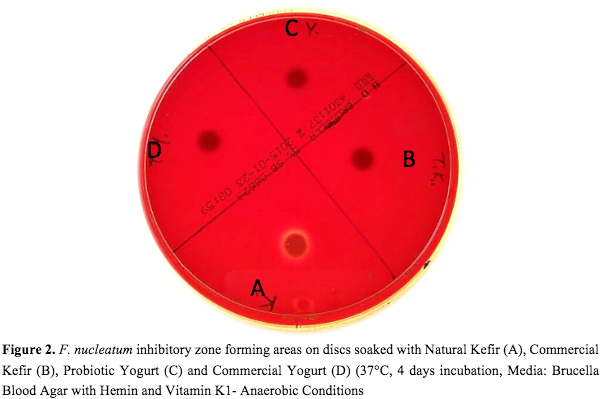
Inhibition of F. nucleatum by natural kefir, probiotic yogurt, commercial yogurt and commercial kefir samples
You’ve all heard about the health benefits of the probiotic bacteria found in yogurt and other similar fermented dairy products such as kefir. This recently published study provides more evidence of yogurt cultures’ actions against serious disease-causing pathogens, such as Fusobacterium nucleatum.
F. nucleatum can cause diseases in the mouth, teeth, brain, pleura, lungs and liver. It induces fetal death in pregnant women and can lead to colon cancer by binding to the lining of the gastrointestinal tract, according to a recent study in the journal, Functional Foods in Health and Disease.
In this study, when yogurt and kefir were added to a petri dish filled with F. nucleatum and incubated for 3 days, there appeared clear zones where the yogurt and kefir were placed. Thus showing inhibition of the growth of F. nucleatum. Interestingly, the plain milk used for the yogurt and kefir did not show an inhibitory effect, but the higher the concentration of the kefir and yogurt probiotic bacteria, the more F. nucleatum’s growth was inhibited.
“Previous studies have indicated that fermented dairy products can cause probiotic effects such as improvement in digestive system health, serum cholesterol reduction, and improvement in lactose tolerance, improved immune function, control of irritable bowel symptoms, as well as anticarcinogenic properties. Kefir is known to have positive effects on health and especially intestinal health. Therefore, these findings are important for showing an inhibition effect of fermented dairy products against a pathogen and possible carcinogen. These results suggest that regular consumption of natural fermented dairy products especially kefirshould be included in a functional diet. The impact of these cultured dairy products could be promising and warrants further investigation with in vivo studies,” according to the authors of the study.
13 Steps to Survive the Summer Heat
- At July 12, 2016
- By Katherine
- In Articles, News
 0
0
I was alarmed the other day when a client texted me that he had lost 5 pounds after running. He is an athletic 200 pound man, but heavy water loss, caused by running in this heat, could have serious consequences. The worst: death by heat stroke.
Before a heat stroke occurs, people show signs of exhaustion, weakness, perhaps headaches and dizziness. My client was so weak, he couldn’t finish his run.
How does your body’s system break down to cause heat stroke?
Normally, water carries heat away from your internal organs. The heat travels through your bloodstream to your skin, causing you to sweat, preventing serious damage to occur. As the sweat evaporates, this allows you to cool off and maintain a safe body temperature, optimal functioning, and health.
But when the fluid in your blood runs out of water, your body’s core literally starts cooking, you stop sweating and organs begin to breakdown.
Daily water intake must be balanced with losses to maintain total body water. Once you start feeling thirsty, you’ve probably lost about 1 percent of your body water and are dehydrated. With a 2 percent water loss, you could experience serious fatigue and cardiovascular impairments. It’s important to note that individual fluid needs differ depending on your sweat rate, the environmental temperature, your clothing, humidity and other factors.
Hydration tips
As summer temperatures hit, here are a number of important tips.
– Drink enough water to prevent thirst.
– Monitor fluid loss by checking the color of your urine. It should be pale yellow and not dark yellow, too smelly or cloudy.
– For short-duration (less than 60 minutes), low-to-moderate-intensity activity, water is a good choice to drink before, during and after exercise.
– Any time you exercise in extreme heat or for more than one hour, supplement water with a sports drink that contains electrolytes and 6 percent to 8 percent carbohydrates. This prevents “hyponatremia” (low blood sodium), which dilutes your blood and could also lead to serious impairment and death.
– Begin exercise well-hydrated. Drink plenty of fluids the day before and within the hour before, during and after your exercise session.
– Avoid alcohol the day before or the day of a long exercise bout, and avoid exercising with a hangover.
– Consider all fluids, including tea, coffee, juices, milk and soups (though excluding alcohol, which is extremely dehydrating). The amount of caffeine in tea and coffee does not discount the fluid in them, even if they have a slight diuretic effect, according to the most recent report by the National Research Council’s Food and Nutrition Board.
– Eat at least five cups of fruits and vegetables per day for optimum health, as they all contain various levels of water and the all-important nutrient potassium.
– During exercise, for those who experience high sodium losses, eat salty foods in a pre-exercise meal or add an appropriate amount of salt to sports drinks consumed during exercise. Orange juice is high in potassium. Dilute juices, such as V-8 or orange juice, 50/50 with water so that the drinks are 6 percent carbohydrate solutions (the same as sports drinks), which will empty from your stomach quicker than 100 percent juice (juices are naturally 12 percent solutions), allowing the electrolytes and water to quickly reach your heart and organs.
– Following strenuous exercise, you need more: Protein to build muscle, carbohydrates to refuel muscle, electrolytes to replenish what’s lost in sweat, and fluids to help rehydrate the body. Low-fat chocolate milk is a perfect, natural replacement that fills those requirements.
– You can also replace fluid and sodium losses with watery foods that contain salt and potassium, such as soup and vegetable juices.
– For long hikes, when you’ll need food, dried fruit and nut mixtures contain high amounts of potassium, sodium, protein, carbs and calories — though continue to drink plenty of water.
– To determine your individualized need for fluid replacement: During heavy exercise, weigh yourself immediately before and after exercise. If you see an immediate loss of weight, you’ve lost valuable water. Drink 3 cups of fluid for every pound lost; use this figure to determine the amount of water (or sports drink) you’ll need to drink before and during your next exercise session to prevent weight/water loss in the future.
Cured Red Meats Increase Risk of Many Cancers
- At July 07, 2016
- By Katherine
- In Articles, News
 0
0
You might want to cut back on the cold cuts, bacon and other processed meats. The World Health Organization is out with a new report that says cured meats and red meat increase the risk of colon and stomach cancer.
A group of 22 scientists from the IARC,The WHO’s International Agency for Research on Cancer in Lyon, France, evaluated more than 800 studies from several continents about meat and cancer. The studies looked at more than a dozen types of cancer in populations with diverse diets over the past 20 years.
Based on that analysis, the IARC classified processed meat as “carcinogenic to humans,” noting links in particular to colon cancer. It said red meat contains some important nutrients, but still labeled it “probably carcinogenic,” with links to colon, prostate and pancreatic cancers.
A Creamy Peach & Ginger Surprise
Fresh, juicy peaches are in season and I have a new peach recipe you’ll love. Surprise: It’s made with Greek Yogurt (though it tastes like cream). Try it and your taste buds will zing! This amazing recipe was developed by the CHOBANI Company’s French-trained chefs, and I got a chance to watch a demonstration with a tasting. This is a lovely dessert containing all the health benefits of yogurt and peaches! Your family and guests will be delighted!
CHOBANI
Peach + Ginger
Yields four, 4 oz servings
INGREDIENTS
2 cups Chobani Non-Fat Plain Greek Yogurt
2 tsp. candied ginger, small dice 4 tbsp. toasted almonds, sliced
2 tsp. fresh thyme, picked
2 tbsp. honey
1 cup Peach and Ginger Compote
PEACH AND GINGER COMPOTE INGREDIENTS
4 yellow peaches, peeled, cored, small dice
1 tbsp. fresh ginger, minced
1 teaspoon lemon juice
1/2 cup sugar
METHOD
- Cook peaches, ginger, lemon juice, and sugar for 20 minutes or until tender. Let cool completely.
- Scoop 1/2 cup of yogurt into each of 4 bowls. Top each bowl of yogurt with 1/4 cup peach
and ginger compote, 1/2 tsp candied ginger, 1 tbsp toasted almonds and drizzle with 1/2 tbsp of honey. Garnish with thyme.110 calories per serving, 0 Fat, 5 mg cholesterol, 35 mg sodium, 17 g carbohydrate, 1 g fiber, 8 grams protein
What is a “Healthy” or “Natural” Food? Katherine Explains on NBC News
- At June 16, 2016
- By Katherine
- In Articles, News
 0
0
What is a “healthy” food? Everyone has their own opinion! “We used to believe sugary cereals were fine, as long as they were fortified with certain vitamins and minerals [according to the Food & Drug Administration’s definition],” I told Tom Costello, NBC Nightly News Correspondent on the NBC Nightly News on May 11.
But that definition was based on 30-year-old standards when “low fat” was the science of the day. And today, “some of the healthiest foods on the planet are high in fat,” I told Costello on The Today Show on May 12.
The FDA sets standards for labels indicating the food’s fat, saturated fat, sodium, cholesterol and nutrient content, and whether or not a food qualifies, and can be labeled as: “Healthy.” Since nutrition is an evolving science, some of those standards have changed, and the FDA is in the process of revising them.
For instance, when a company produces a product, say, a granola or a snack which contains nuts – which we know today are healthy, but high in fat – the word “healthy” cannot be on the label, as the FDA guidelines have not caught up with today’s science that some fats are actually good for you.
But that does not mean that we should trash everything we ever learned about. It is still important to balance our lives with fruits and vegetables, exercise, and keeping our calorie needs in mind. Healthy fats, such as those in nuts, avocadoes, olive oil, salmon, and certain fried foods and dressings, are important, but that isn’t a license to binge, or … to fear and abstain from any foods containing sugar – fruit, 100% fruit juice, sweet vegetables like carrots, milk, and yogurt (even with fruit on the bottom!).
Balance is everything! Eating sugar-free is just as unhealthy as eating fat-free. Avoiding foods containing any hint of sugar, and even natural sugar, I believe, will be the next diet fad you’ll want to avoid!
Katherine’s Diet Tip #3: Eat Salmon to Lose Weight!
- At June 13, 2016
- By Katherine
- In Articles, News
 0
0
Recent studies show that omega-3 fatty acids can reduce body weight gain and chronic inflammation through the improvement of the bacteria in your gastrointestinal tract (the microbiota).
The authors of this new study published in the International Journal of Obesity found feeding your child salmon may prevent obesity later in life, too. But how? The authors theorize the reason is that these increased tissue levels of omega-3 fatty acids [found in abundance in salmon, herring, anchovies and sardines], may prevent antibiotic-induced alteration in gut microbiota in children, and obesity later in life.
“Elevated tissue levels of omega-3 fatty acids significantly reduce body weight gain and the severity of insulin resistance, fatty liver and dyslipidemia [high cholesterol] resulting from early life exposure to ezithromycin [an antibiotic],” said the authors.
These results makes sense to me for at least two reasons:
It’s already been established that babies who are breast fed – and breast milk is loaded with probiotics – are less likely to be overweight later in life. Also, probiotics (for instance, found in yogurt) improve the health of the microbiota. So, apparently, an improvement in the microbiota is one reason why probiotics may help manage weight in children through their lifespan. This study showed that probiotics can help undo the harm to the gastrointestinal tract caused by early antibiotic use. Learn more about probiotics and the microbiota…
Omega-3 fatty acids are known for their anti-inflammatory properties. They have been hailed for decreasing heart disease risk, cancer risk, cognitive decline, Alzheimer’s Disease -and now – increase of healthy gut bacteria and obesity. Learn more about omega-3 fatty acids…
So, eat your salmon – or any fatty fish – to lose weight! The American Heart Association recommends 12 ounces per week.
Katherine’s Diet Tip #2: Download Your Calories!
- At June 06, 2016
- By Katherine
- In Articles, News
 0
0
What’s one of the most effective, enjoyable, and simple changes – for weight loss and health – you can make in your eating? Simple: Add breakfast to your day. Katherine explains to Washingtonian Magazine…
Also, CNN spoke with Katherine about breakfast. Here’s a part of that conversation.
What exactly is it about breakfast that makes it so beneficial? And are all are breakfasts created equal? A study from Pediatrics looked at 2,000 teenagers and found that teens who ate breakfast weighed less, exercised more and ate healthier food than their classmates who didn’t eat breakfast. More studies have confirmed this link with breakfast and adults, too.
CNN: Explain the real benefits of eating breakfast. In your experience, have you seen among your patients the same results this study showed: that people who aren’t eating breakfast actually weigh more? How is that?
Tallmadge: In one study, people who ate more in the beginning [of] the day ate fewer overall. As soon as you start eating, you start raising your metabolism; your whole body is burning calories earlier in the day. Helps control your appetite. People who skip breakfast — victims of vending machines. The pickers — they eat overall more calories, tend to eat more. In another study, people who ate larger breakfasts and lunches, with lighter dinners, were more likely to manage their weight.
CNN: What about for the people who say, “I just don’t have time to eat breakfast”? What are your tips?
Tallmadge: I know we’re all busy, but everyone has to make time to eat breakfast. In Diet Simple I have tons of ways people can fit breakfast into a busy day!
Scientific studies confirm breakfast eaters get more nutrients for the whole day, are more likely to lose and maintain healthy weights, have more energy, concentrate better, and eat fewer overall calories during the day.
I have great ideas for easy and delicious breakfasts in Diet Simple. My favorite breakfast? a warm bowl of oatmeal cooked in milk with fruit and nuts… even a peanut butter sandwich with yogurt and fruit, or eggs on whole grain toast with spicy chicken sausage… Do you like lox on a whole grain bagel? How about whole grain blueberry pecan pancakes? All excellent choices… Bon Appetit!
Katherine’s Diet Tip #1: Minesweep for Calorie Bombs!
- At May 31, 2016
- By Katherine
- In Articles, News
 0
0
Are you ready for summer? I mean, is your body ready … to shed the heavy coats and sweaters, to wear lighter weight, more form-fitting clothes? If not, or if you would just like to learn some good tips, follow me here every Monday with proven strategies to lose weight, improve your health or just increase your knowledge about nutrition. Through early summer, we’ll be losing weight together, so you’ll be ready for the warmer days to come!
Losing weight is not about discipline or will power. It’s about controlling your environment. Period.
We all have different strengths and weaknesses which must be considered when cutting calories or making any other healthful lifestyle changes. Let’s talk about me, Katherine Tallmadge. One of my main weaknesses is chocolate. I can’t stop with one piece. That’s simply not “normal” for me. I’ll occansionally indulge my passion with a small piece of dark chocolate, but I’ve learned never to bring home a full box of chocolate-covered caramels. It will be gone in a day or two, max.
I’m no better with chips. I have no self-control, and I know it. So I’ll occasionally buy a 1-ounce bag. But a big bag? Never!
One of my strengths (finally, something positive!) is that I love fruit. I stock up on cut-up fruit so I always have it at my fingertips.
You have to recognize your own “mines.” I advise everyone to minesweep the kitchen for those calorie bombs that can explode your weight. Have a hard time resisting ice cream? Then get rid of the half gallon. Candy bar pitfall? Toss out the leftovers from the Easter season.
Minesweeping your kitchen periodically to get rid of things you shouldn’t have in the house in the first place will save a tremendous amount of calories over time. Add the things that you like and should be eating, and you’ll do even better! Be good to yourself and make your negative behaviors hard and your good behaviors easy.
If just one candy bar is replaced by an apple every day, you’ll save 175 calories. That adds up to about 18 pounds lost in one year!
* Excerpted from “Diet Simple: 195 Mental Tricks, Substitutions, Habits & Inspirations” (LifeLine Press) by Katherine Tallmadge
Prenatal Fruit Intake Boosts Cognition in Infants + Springtime Strawberry Salad
Some of the most interesting nutrition studies I’ve read have to do with the prenatal diet and subsequent effects in children. The subject is vast and the outcomes amazing. Did you know that when pregnant moms drink high amounts of carrot juice during pregnancy, their toddlers are more likely to choose carrots over other vegetables? Or, that the more varied a pregnant mom’s diet, the more her child will choose and enjoy a wider variety of foods? All proven by science!
So it’s no surprise that a new study published in The Lancet found that prenatal fruit consumption is correlated with superior cognition in the mothers’ one-year-old infants – though there was no effect if fruit was only fed to the child during the year after birth. So, what may explain this finding?
Evolution may explain, in part, this advantage of fruit-eating. During the neolithic (stone age) period about 12,000 years ago and for thousands of years thereafter, we subsisted mainly on fruits and vegetables; which comprised about 65% of our calories, according to S. Boyd Eaton, from the department of Anthropology at Emory University in an interview and in his essay, “Evolution, Diet and Health.” That may mean that brain development is still dependent on the same high level of vitamins, minerals, antioxidants, and other positive nutrients that kind of diet would provide. And this could help explain why, even today, a high fruit diet is correlated with so many positive health benefits: reduced incidence of diabetes, heart disease, cancer, arthritis, eye disease, and other conditions. Keep in mind, too, that the health-giving Mediterranean Diet had 12 to 13 servings of fruits and vegetables daily, and it’s known as one of the healthiest diets on the planet.
Fruit is so easy to eat every day, and the local fruit season is just beginning to get exciting. I was most fortunate to receive one of the most delicious dishes I’ve ever eaten this weekend when my friend and neighbor, Mike Gardner, brought me his salad:
Only Certain Fruits & Vegetables May Cause Weight Loss
- At March 01, 2016
- By Katherine
- In Articles, News
 3
3
For the first time, scientists have discovered certain fruits and vegetables – and not others – are associated with preventing weight gain over the course of many years regardless of calories, according to a recent Harvard study published in the British Medical Journal. These fruits and vegetables contain a class of phytonutrients called flavonoids, a plant compound with anti-inflammatory and anti-oxidant properties, among other benefits.
“The particular fruits and vegetables associated with less weight gain are rich sources of several flavonoid subclasses, particularly flavonols, anthocyanins, and flavones. Animal models and short term human studies provide evidence for underlying mechanisms that relate flavonoids to weight: several flavonoid subclasses have been shown to decrease calorie intake, increase blood sugar uptake in muscle in humans, and decrease blood sugar uptake in fat tissue in test tube studies. Other studies, predominantly focusing on green tea, a rich source of the flavan-3-ol subclass of flavonoids, provide evidence to suggest that flavonoids may decrease fat absorption, increase energy expenditure, and inhibit body fat synthesis,” according to the study.
In the study, anthocyaninins, the blue pigment in many fruits and vegetables, were mainly found in blueberries and strawberries, among others. Flavan-3-ols were mainly from tea, apples, pears, and peppers.
So, while it’s important for your health and weight management to eat at least 5 cups of fruits and vegetables daily, you may want to consider adding these very specific fruits and vegetables to your routine. “An Apple A Day…”
Can Daily Grape Juice Reduce Stress?
- At February 14, 2016
- By Katherine
- In Articles, News
 0
0
Can anything relieve stress in today’s high stress world? This is an important question to answer as studies show high stress can reduce your ability to think straight and increase your blood pressure; conditions which could be dangerous in certain complex, every-day tasks, such as driving. A University of Leeds study of one of the most harried population groups – working moms – found just 12 ounces of concord grape juice daily improved their ability to think by increasing their spatial memory in a driving performance test. And the effect lasted over time.
Concord grapes are high in a class of phytochemicals (beneficial plant chemicals) called polyphenols, antioxidants which are concentrated in many fruits, some vegetables and in wine, tea and cocoa. They protect against heart disease by reducing blood clot formation. They also prevent cellular and organ damage caused by oxygen radicals, molecules which are believed to be a primary cause of many diseases including cancer and cardiovascular disease.
Certain polyphenols, such as anthocyanins, which give grapes and blueberries their purple pigment, have been found to reverse both physical and mental deficits in aging rats. Preliminary studies in humans, including this study, are showing similar promising results.
Learn more about the health benefits of concord grapes, concord grape juice and wine…
Kale! Kale! Everywhere!
Kale and Spinach Gratin with Garlic, Rosemary, and Thyme
(excerpted from Diet Simple Farm to Table Recipes)
Serves 6
1 pound Kale, cleaned and stems removed
2 pounds Spinach, cleaned and stems removed
1 Tablespoon Olive or Canola Oil
1 Large Garlic Clove, minced
2 teaspoons fresh Rosemary, chopped (or 1 tsp dry)
1 teaspoon fresh Thyme leaves, chopped (or ½ tsp dry)
1 recipe Olive Oil Bechamel Sauce (see recipe)
Salt and Freshly Ground Pepper to taste
¼ Cup Parmesan or Gruyere Cheese, freshly grated
Preheat oven to 400 degrees F. Wash the Kale and Spinach and remove the tough stems. Chop roughly. Heat the oil in a large iron skillet over medium-low heat. Add the garlic and cook until it just begins to color. Add the greens, the rosemary, and thyme to the pan, and let cook a couple of more minutes while stirring until the greens are wilted.
Stir the Bechamel sauce into the greens. Add salt and pepper. Pour into an oiled 2-quart soufflé or heat resistant glass dish and sprinkle the cheese on top. Bake at 400 degrees F for 20 to 30 minutes, or until the top is just beginning to brown.
Olive Oil Bechamel Sauce
This is a classic French white sauce, but using healthy olive oil instead of butter.
Makes 2.5 cups
3 Cups 1% Milk
2 Tablespoons Olive Oil
2 Tablespoons Flour
Salt and Ground Pepper to taste
Pinch of grated nutmeg (optional)
Simmer the milk in a saucepan on medium-low heat. Meanwhile, heat the olive oil in a heavy skillet. Add a bit of flour, and when it sizzles, add the rest. Stir constantly with a wooden spoon or whisk over medium heat. Do not brown. Whisk in the hot milk. Return the mixture to the heat, stirring until the sauce thickens. Reduce to low making sure it does not burn. Add salt, pepper and nutmeg to taste.
Deep Green Leafy Vegetables have the highest antioxidant content of all vegetables. High in fiber, they are rich in minerals, B-vitamins, beta-carotene, and lutein, a compound which may help reduce the risk of age-related macular degeneration (the leading cause of preventable blindness) and other eye diseases such as cataracts. Absorption of carotenoids, such as lutein, in your body is increased by cooking and by the presence of fat (so cook in a little healthy olive or canola oil!).
New Study: The Glycemic Index of Foods Varies From Person to Person
- At December 27, 2015
- By Katherine
- In Articles, News
 0
0
The “Glycemic Index” may not be so cut-and-dry. What’s healthy for other people may not be healthy for you!
We all have friends who, no matter what they eat, stay skinny. But the opposite is more common: most of us are incredibly frustrated because, it seems, no matter how hard we try, we just cannot lose weight. Now we may understand at least one reason why.
A study published in the journal, Cell, in November, analyzed people’s glycemic (blood glucose) response, or blood sugar’s rise and fall after a meal. Controlling blood sugar is important for preventing and controlling diabetes, maintaining a healthy weight, and general all-around health. What you eat affects your blood sugar, insulin, and health levels, so a healthy diet containing mostly low glycemic index foods has been thought to be one way to control your health.
Some of the study’s results were typical and expected; glucose levels correlated with weight and age. The more overweight or older we are, the higher our blood sugar rises after meals – that is, we become more diabetic-like.
But the scientists also found important differences between individuals. First, and this was predictable: if the same person ate the same meal at different times, their blood sugar level responses remained relatively the same. But – and this was the unpredictable result of the study – different people eating the same meal at the same time produced highly variable results.
Researchers believe the differences might be explained by the quality of the gut microbiome, the understanding of which may revolutionize nutrition and health. It turns out that the bacterial organisms in the digestive tract — about 100 million of them (10 times the number of human cells), collectively called the microbiome — are akin to a fully functioning organ, and can have a positive or negative effect on human health. For instance, a healthy microbiome improves insulin sensitivity – reducing your chances of getting diabetes – and enhances your ability to lose body fat.
This – the quality of your microbiome, for instance – calls into question things like the glycemic index (GI), which assigns a food’s value based on peoples’ average glycemic response to a food. That’s because, if each person’s blood sugar responds differently at different times with different foods, then the GI index would be incorrect for people with different-than-average blood sugar responses, even for foods generally believed to be healthy.
There is some good news, though! The researchers used the data to create an algorithm that predicted the glycemic response of the participants. When they used this data to tailor diets for people, they saw improved blood sugar responses. These findings could be used to develop personalized and individual diets that don’t rely on averages. This just may crack the case for those having difficulty getting fit.
This is why I find it so important to PERSONALIZE your diet. One size doesn’t fit all!
Supplement Manufacturers Sued and Arrested for False Claims
- At December 27, 2015
- By Katherine
- In Articles, News
 0
0

The United States Department of Justice brings criminal charges against popular supplement manufacturers
There are a LOT of dietary supplements on the market. They all make lots of claims about what they can do for your body and health – many in particular tend to trumpet their ingredients, especially if they’re “all natural.”
Well, the Department of Justice thinks we can’t trust what the supplements tell us. DOJ brought civil and criminal actions against 117 – yes, you read that correctly, 117 – individuals and entities. Of those, 89 have so far been the subject of cases.
Some are accused of mislabeling because the product has ingredients not listed on the label. Others are charged with making claims about what the supplement can do without adequate supporting scientific evidence. An Assistant Attorney with DOJ said they brought these actions “so consumers know the serious health risks of untested products.”
One particularly bad case is USPlabs LLC, which made both workout and weight loss supplements. DOJ alleges that USPlabs used synthetic stimulants instead of natural plant extracts that they advertised. Further, USPlabs is charged with knowing that one supplement, OxyElite Pro, might cause liver toxicity and secretly selling OxyElite despite telling the FDA it would stop. Because of this, 6 employees have been arrested, and company assets have been seized.
You can read more information about UPSlabs and other companies in their press release. But use this as a warning, and be careful what supplements you buy! You should always do your research on supplements before you add them to your routine – talk to a health professional if you can! At the very least, though, be glad that someone is working toward your best interest.
Just Say No! Handling Holiday Food Pushers & Proselytizers
- At December 20, 2015
- By Katherine
- In Articles, News
 0
0
One of my clients, who came to me to lose about thirty pounds, had a real problem. He loves to eat and he loves to please people. In fact, he said pleasing people is the main reason he overeats. This tendency becomes especially troublesome over the holidays when friends, family and colleagues invite him for meals. My kind client literally cannot say no to anything.
As a result, he says holidays are a time of joy, but also frustration, because his need to be polite is in stark conflict with his goal of trimming down. Many of us can appreciate his dilemma. Holiday delicacies can be difficult to navigate, especially if you’re trying to avoid gaining a pound per week from Thanksgiving to the New Year. And that can bring out the best and the worst in people, hosts and guests alike.
We all know hosts who aren’t satisfied until they convince us, beg us, to eat more, more, more. Their misguided entreaties are hard to resist, if only because we want to be polite.
To be fair, food pushers aren’t bad people at heart. Your mom, your spouse, your friends – they just want to please you. They’re people who think they have your best interests at heart and know more about what and how much food (and drink) you should be consuming than you do. It seems these people aren’t happy until they’ve stuffed you as if you’d just ended a hunger strike.
My clients and I have tried various tactics through the years, most of them utter failures. For instance, I’ve found the worst thing you can say to a food pusher is, “No thanks, I’m on a diet”… or “Thanks, I’m watching it.”
You might as well say, “Talk me into it!” Your excuse is giving the food pusher a double signal – that you really want it, but have to refuse. It’s also insulting, as though you’re saying the food isn’t good enough for your refined tastes. And, finally, it may bring up guilty feelings in the pusher, that they should be “watching it” too. All of which challenge the pusher to seduce you.
No excuse seemed to work as I tried to fight back the food pushers’ advances, including explaining that I wasn’t hungry. I even went through a phase of telling people I’m allergic to this or that. Sadly, that didn’t work, either.
I didn’t start sensing positive results from my refusals until I learned the most basic rule of all: never give excuses. And I’m delighted to say that one of the foremost authorities on etiquette told me that this approach is both appropriate and wise.
“The best answer is a simple but firm ‘No thank you,’” declared Judith Martin, syndicated columnist who writes as Miss Manners. “Once you give an excuse, you open yourself to argument.”
Miss Manners also offered clear advice in her column to food pushers, and their “endless patter of coercion – ‘Oh, come on, one won’t hurt you, I made this especially for you, it doesn’t have any calories, you’re too thin anyway, it’s good for you, you’re not going to make me eat leftovers tomorrow.’ Miss Manners asks them to cut it out.”
“To offer and provide food is lovely, but to badger people into eating it isn’t pleasant,” Martin told me. “Politeness consists of offering food and drink without cajoling or embarrassing people into taking it.”
But families may present a more complex and challenging case. I somehow doubt my family would have heeded Miss Manners’ advice when I was growing up. I was so hounded to eat more, more, more! It seemed almost every dinner became a power struggle, even though I kept asserting that I was simply not hungry. The holidays were the worst. With all that food around, what I was eating seemed impossibly meager to my family.
Scientists have now concluded that pushing food on children is a big mistake. It ruins their ability to self-regulate food intake based on their natural hunger signals. Infants know naturally when to eat and when to stop. But, by around age four or five, if children are pushed or rewarded to eat more than they naturally want, they’ll start overeating regularly.
When I became an adult, I again tried to assert myself, but to no avail. During visits to my grandparents in Sweden, for instance, every day I felt overstuffed from too many fattening (and, yes, delicious) Swedish meatballs, cheeses and cakes. Inevitably with each visit, I came home several pounds heavier. While “no thank you” was fine for hosts, I had to use a different tactic with my family. They just didn’t take “no” for an answer!
I decided the solution was to take a more positive approach. There was no changing the fact that my family wanted to please me with food. So I decided I’d drop subtle hints and compliments to guide them into serving me food that wasn’t going to make me look and feel like a Swedish meatball.
This technique of continued positive reinforcement took several years (in psychology, it’s called “shaping”), but it eventually worked beautifully. When they served seafood, salads, fruits – food I wanted more of – I complimented lavishly. “Sweden has the best fish in the world!” “I just love your salads!” (which was all true, by the way). You get the idea. Over time, whenever I’d visit, they’d lavish me with what they learned that I especially loved: seafood, salads and fruits. (Yes, I also loved the fattening stuff, but that was easily obtained and I wanted to limit my indulgences without announcing it).
The same technique can work with your coworkers, friends and family, and it doesn’t have to take years. At Thanksgiving or over the holidays, instead of focusing on what you don’t want or can’t have, and using turn-off words such as “healthy” or “diet,” simply compliment your hosts and stay positive so they’ll know what pleases you. Instead of, “Oh, I can’t have that,” when offered the 1600 calorie prime rib, say: “I’m really in the mood for a crunchy, delicious salad!” Instead of saying: “fried calamari is so fattening,” say: “Steamed shrimp sounds yummy!” Instead of: “I can’t have dessert, I’m watching it,” say: “The meal was so satisfying, I can’t have another bite!” or “I’m really craving fresh raspberries!”
My client was thrilled when he tried this tactic with his family and friends, and has been successfully losing weight ever since. He was surprised at how a simple compliment could stop food pushers in their tracks and is looking forward to using the techniques over the holidays.
Even Miss Manners agrees that using simple compliments is okay as long as you don’t go into too much detail. In the end, no food pusher can resist a happy guest.
Of course, as a guest, you have obligations too. While issuing compliments and saying “no thank you” is perfectly acceptable, forcing your likes, dislikes and opinions about food on the host or other guests can be downright unappetizing.
Today, it seems almost impossible to escape people on this diet or that, freely espousing their strident views and suspect theories. My clients regularly complain that their guests expect them to cater to their particular dietary requirements – no carbohydrates, no fat, no white flour, no sugar, ad nauseum. While it may be fine to be following a diet, expecting the host to be a short order cook is unfair. And discussing dietary views at the table is a no-no. It can make people feel uncomfortable, guilty, and even angry. Today, food is political. It’s also very personal. Everyone has their own strongly held views.
“This attitude that other people haven’t seen the light and you have to make them see the light makes the experience of eating unpleasant,” says Martin. “Cooking has improved enormously over the decades, but the experience of eating has gone downhill because people are so self righteous and willing to boss other people around.”
What I’ve come to realize is that when we visit family or friends for holiday parties or meals, there is a joint obligation at work, a sort of unspoken agreement. We should visit friends and loved ones with a generous spirit, grateful for the meal provided. We’re there to have fun and enjoy. On the other hand, hosts have an obligation not to force their hospitality on guests, compelling them to eat more than they wish. It’s not polite, is counter-productive and feels uncomfortable to notice or comment on what or how much a person is eating.
Eat Soup and Lose Weight!
Soup. Nothing warms the body or soul like it. And studies show, eating it helps you lose weight. My clients who make batches of soup this time of year do – as do I. That’s great news because during this time of year, we all crave hearty, satisfying dishes, which are almost always fattening – with most soup being the exception…
Classic studies have found that as long as the volume of the food is high, even if the volume is just water with no added calories, people can feel full with fewer calories. In one study, researchers varied the amount of water in a food eaten as a first course to study this effect. Subjects were fed one of three contitions: either chicken rice casserole, chicken rice casserole served with a glass of water or chicken rice soup. The subjects who ate the soup consumed 26 percent fewer calories at the main course compared to the other conditions.
In another study, the researchers served salads of various sizes and calorie levels before a main course to determine the effect on the calorie intake of the whole meal. They found that people consumed the fewest overall calories—100 calories fewer—when they were served the largest, lowest-calorie salad before a meal. Vegetables are foods that have a naturally high water content. The higher a food’s water content, the higher its volume, but the lower its calorie density.
Researchers surmise that a large food volume caused by water or air, even without added calories, influences satiety in a variety of ways. When the water is incorporated into the food (as opposed to just a glass of water), it causes stomach stretching and slows stomach emptying, stimulating the nerves and hormones that signal feelings of fullness. Also, visually seeing a large volume of food can increase your ability to feel satisfied by it. Finally, the larger a meal and the longer a meal goes on, studies show, your satisfaction declines and you lose interest in completing it. Water is the component in food which has the largest influence on how much you eat. These studies show eating a high-water-content, low-calorie first course enhances satiety and reduces calorie intake at the next course. This effect persists over time.
One of my favorites found in my new book: “Diet Simple Farm to Table Recipes: 50 New Reasons to Cook in Season!” is featured in the photo above, Cauliflower Vichyssoise…
New Studies on Cocoa: Reduces Wrinkles and Protects Against Alzheimer’s Disease
- At November 29, 2015
- By Katherine
- In Articles, News
 0
0
For most people, chocolate is a delicious treat to enjoy in moderation. Some new scientific work, though, may give you an excuse to treat yourself more often.
The first, a study published in the Journal of Nutrition, examined the effects of cocoa on the moderately sun damaged skin of women aged 43 to 86. The participants drank flavanol-enhanced cocoa drinks, containing 320 mg flavanols** daily, over 24 weeks. It’s been established in previous studies that flavanols in cocoa – and other foods – help maintain a healthy vascular system, relax blood vessels (lowering blood pressure), reduce blood clotting – an aspirin-like affect –reduce oxidative damage, and improve blood flow. This new study found that women who drank the flavanol – fortified cocoa drink (containing the equivalent of about 4 tablespoons of cocoa daily**) experienced reduced wrinkles and increased skin elasticity, thereby reducing the effects of sun damage and aging – probably due mostly to their antioxidant and anti-inflammatory properties.
Cocoa flavanols may impact brain aging, too, according to a recent Journal of Alzheimer’s Disease review. Previous research has shown that flavanols contribute to healthy brain aging and cognitive decline prevention by improving blood flow to the brain and reducing the oxidative and inflammatory damage which occurs with aging. But cocoa harvesting and production produces highly variable levels of flavanols in cocoa products. So scientists are looking for more consistent methods for developing cocoa flavanol formulas containing higher levels of flavanols. “The ultimate goal of this review is to provide recommendations for future developments of cocoa extracts as a therapeutic agent in AD [Alzheimer’s Disease].”
These results could mean big things down the line for brain and skin health! Meanwhile, keep in mind that flavanols are also found in tea, wine and many fruits and vegetables. Also, nutrition studies tend to use concentrated forms of nutrients so the effects are more measurable and significant. Conclusion: eat a plant-based diet!
Read more extensive information on cocoa and its health benefits…
Katherine’s Chocolate for Health Tips:
If you’re eating chocolate for health benefits, you’ll need to be very discriminating in your selections.
You’ll get more flavanols, and therefore health benefits, with less processing. The first choice is cocoa, which isn’t Dutch processed – as when cocoa is “Dutch processed with alkali” the flavanols are reduced. Look for chocolate which has the highest percentage of cocoa as possible and to save calories, look for chocolate with lower fat and sugar levels. In general, cocoa is your best first choice. Second choice is a semisweet or bittersweet chocolate with a high cocoa percentage. Some chocolates go as high as 85% cocoa, but legally can be as low as 35%. I recommend no more than an ounce a day, which may be about 110 – 150 calories, depending on the chocolate. Any more than that and you’re probably going to take in too many calories for weight control
**The numbers:
Type of Chocolate Mg Flavonols Calories
1.3 oz Dark Chocolate Bars, Average*: 82 mg 187
1.3 oz Milk Chocolate Bars, Average*: 42 mg 198
1 TBSP Unsweetened Cocoa Powder, Average*: 75 mg 12
*USDA’s Nutrient Data Laboratory
Tea Has Amazing Health Benefits – Green or Black Tea
- At November 20, 2015
- By Katherine
- In Articles, News
 0
0
Need an excuse to break for afternoon tea at work? A new study found green or black tea, in a very concentrated form, can improve your overall health in many different ways.
As I wrote in my Washington Post article, tea has long been known for its antioxidant and anti-inflammatory properties. So researches decided to extract one of the most active compounds in tea to see what would happen. The extract, called “AssuriTEA,” was given to subjects in different doses. They found all doses had benefits, but most of the benefits were experienced in the subjects with the largest dose. After taking the extract for 28 days, the subjects showed improved antioxidant levels (which protects you from almost all diseases), lower blood glucose levels, and increased energy. They also found lower systolic blood pressure at both dosages and lower diastolic blood pressure at the higher dosage.
Even though we don’t have access to this extract; no matter; I recommend using “whole” tea leaves anyway: The whole food is always better! Studies use concentrated forms of foods so they can more easily measure results. This study, published recently in the journal “Functional Foods in Health and Disease,” confirms the health benefits of tea are impressive – I know what I’m doing at 3 o’clock today! You?
Short Bouts of High Intensity Exercise may be as Effective – or Better Than – Walking
- At November 19, 2015
- By Katherine
- In Articles, News
 0
0
For people with Type 2 Diabetes or anyone trying to lose weight, we all know physical activity is a key part of health management. Walking (low – to – medium intensity exercise) is effective, but takes time to get your 10,000 daily pedometer steps.
So what I’m about to tell you may be good news if you have limited time: A new study, recently published in the journal, Circulation, shows there may be an alternate and effective way to lose weight, lower blood pressure, glucose, and cholesterol. People were divided into two groups; one group did 30 minutes of exercise, five days a week at 65% of their target heart rate, while the other did 10 minutes of exercise, three times a day, 5 days a week at 85% of target heart rate. Those who were assigned to the high intensity group ended up exercising more. They also showed larger improvements in glucose levels, lipid profiles (cholesterol), body weight, and cardiovascular fitness as compared to the lower intensity group.
Were the improvements due to the intensity of the exercise or the fact that the high intensity group ended up exercising more? No matter. This study, and others I’ve seen, show short bursts of high intensity exercise will get the results you need to manage your health, so I recommend it to anyone with limited time, and with the ability to exercise intensely.
But if you have even less time, you may not even have to do 10 minutes.
Researchers at the University of Copenhagen in Denmark found ten seconds works! Their study found that a full ten minutes of high intensity exercise may not be necessary and that most people can’t tolerate that amount of intensity. The Danish study found four 10 second bouts of intense exercise may do the trick. The researchers came up with a formula they called 10-20-30: Start with 30 seconds of regular intensity exercise (bike or walking, etc), increase to 20 seconds of medium intensity, then accelerate to 10 seconds of high intensity exercise, and repeat 4 times. And while their subjects were only exercising for 12 minutes they were achieving significant health results, such as lower blood pressures.
That said, my experience with hundreds of clients over the years, proves walking works! You can lose body fat, lower blood pressure, glucose, and cholesterol by walking – not to mention improve thinking and memory, increase energy levels and self-esteem, reduce arthritis pain, and even improve gastrointestinal health. But, if you don’t have the time or the patience for long stretches of walking, don’t worry, as it seems there are other ways to get results! Bump up your exercise intensity for shorter periods of time through the day.
Bottom line: Just move! If walking is your preferred way, that will get you the results you want. But these studies show short bursts of high intensity exercise may also gets results, and perhaps even better results.
For me: I’ll stick with walking to keep my knees and back happy. Though, occasionally, I’ve included four 10-20-30 intervals while getting my 10,000 daily pedometer steps. It seems to improve my endurance, especially when I drink my cafe latte before exercise!
Strong Legs are Linked to a Stronger Brain
- At November 17, 2015
- By Katherine
- In Articles, News
 0
0
Want to make sure your mind stays sharp later in life? Strengthen your legs to strengthen – even increase – your brain.
Everyone wonders what they can do to stay of sound mind as we age. Well, now we may have a strategy: get strong gams!
Researchers studied twins over a period of 10 years. What they found was promising. Those who had increased leg power at the start of the study showed improved cognitive aging after the 10 years. They also found those with stronger legs had larger gray matter volume.
Because of these findings, published recently (November 10th) in the journal Gerontology, researchers intend to do bigger and longer studies. They even plan to look at how other areas of strength might correlate with improved cognition. While they do that, I’m going to do more squats and lunges…after I take a nice, long walk to make sure I can do crosswords for a long time!
Yogurt’s Vast Array of Health Benefits
- At November 16, 2015
- By Katherine
- In Articles, News
 0
0
Yogurt has long been considered a healthy option, as it’s packed with protein, calcium, potassium and other nutrients. It’s a great way to get probiotics, which are important for improving digestive health; but also a vast array of health conditions.
Yogurt consumption has been shown to improve bone health (eating yogurt lead to better bone mineral density) and cardiovascular health (yogurt-eaters were 31% less likely to develop high blood pressure), lower one’s risk of getting Type 2 diabetes, and be a useful tool in weight management.
Many of these benefits come from the probiotics found in yogurt, which are associated with a myriad health improvements. Evidence shows that probiotics could help prevent Type 2 diabetes by preventing insulin resistance and allowing your body to more readily burn body fat. But probiotic benefits may go beyond that. Some studies have even shown that probiotics led to improvements in immune functions in HIV-infected patients.
The research is clear: yogurt is a great addition to any diet, particularly if you want to improve your immune response and powers of healing, bone, heart, gastrointestinal health or improve your weight. Pick some up today! I believe any type will do… as long as you eat at least one or two cups per day.
Trying to Lose Weight? Skip the Diet Soda and Go To The Tap!
- At November 13, 2015
- By Katherine
- In Articles, News
 0
0
People trying to lose weight look for any way to cut calories. We tend to consume a lot of calories in liquid form, so people often think diet beverages are a great way to help them lose weight. But researchers have a better (and cheaper!) solution: good old fashioned water.
In a recent American Journal of Clinical Nutrition study, participants on a weight-loss plan were asked to cut out diet drinks in favor of water after lunch over 24 weeks. Compared to those who stuck with diet soda, those who drank H2O saw greater weight loss and better insulin resistance.
Water is cheaper than diet beverages and is great for digestion. So if you’re looking to improve your health and slim down, skip the can and head for the tap! Your stomach will thank you.
Reason? This study I’ve written about shows artificial sweeteners may reduce your ability to burn body fat, but there may be other reasons, too…
Your Weight Affects Arthritis Flare-Ups and Remissions
- At November 11, 2015
- By Katherine
- In Articles, News
 0
0

Your size affects whether rheumatoid arthritis, a painful and debilitating form of arthritis, flares up or goes into remission. A recent study looked at whether Body Mass Index (BMI) – your weight – had any relationship with rates of long-tern remission of early rheumatoid arthritis (ERA). They looked at patients in the normal (BMI 18.5-24.9), overweight (25-29.9), and obese (≥30) ranges.
Results showed that rheumatoid arthritis sufferers who are at healthy weights were able to stay in remission longer than people in the overweight and obese ranges, who were less likely to achieve long-term remission.
What does that all mean? Your body weight (BMI) isn’t the final word in health, but it shows that weight control and management might play a part in rheumatoid arthritis treatment.
Up Your Orange Intake! Doses of Vitamin C Shown to Effectively Eliminate Cancer Cells
- At November 10, 2015
- By Katherine
- In Articles, News
 0
0
Researchers have studied the effects of Vitamin C, most famously found in oranges, for some time, but results have been mixed. Some studies showed success while others did not, though some of the discrepancy may be explained by how the Vitamin C was administered; injections worked while oral consumption did not.
A recently published study builds on these past findings and might explain the results. Researchers found that Vitamin C is most effective in an oxidized form, meaning it has been combined with oxygen. They specifically found that high doses of oxidized Vitamin C killed mutated colorectal cells. The treatment slowed tumor growth in mice and, in one result, “dramatically changed” the metabolic profile of the mutated cells within just one hour of treatment.
The most exciting part, though? Oxidized Vitamin C has “selective toxicity”, meaning the treatments killed off cancer cells without harming normal cells.
The study was done on mice, so future steps would have to include human testing to make sure the results carry over, but the outcomes are promising and would be a major breakthrough in cancer treatment. Regardless, I’m using these findings as an excuse to add more delicious oranges to my diet!
co-authored by Nik Nartowicz
A Gluten-Free Reality Check
- At August 17, 2015
- By Katherine
- In Articles, News
 0
0
 A whopping 21 percent of Americans are currently making an active attempt to eat gluten-free, according to a Gallup poll published July 23. That dwarfs the 1 percent of the U.S. population diagnosed with celiac disease, the only medical condition that requires gluten-free products for someone with the disease to live a healthy life.
A whopping 21 percent of Americans are currently making an active attempt to eat gluten-free, according to a Gallup poll published July 23. That dwarfs the 1 percent of the U.S. population diagnosed with celiac disease, the only medical condition that requires gluten-free products for someone with the disease to live a healthy life.
More and more Americans are on the anti-wheat warpath trend, as the label “gluten free” appears on everything from craft beer to cat food. For those with celiac disease, a life-threatening autoimmune disorder that destroys the gastrointestinal tract, going gluten-free is critical to avoid damage to the small intestine. For everyone else, though, it is an unnecessary, and – potentially unhealthy, diet.
The gluten-free industry
Such facts haven’t stopped the food industry from taking advantage of the trend, and gluten-free products have grown to represent a $9 billion market in 2014, according to the Burdock Group, which specializes in food market research, among other issues.
Gluten-free foods, especially refined foods processed to make them gluten-free (many made with potato starch or rice starch), cheat the consumer out of the many health benefits of whole grains — such as wheat, barley and rye — and can be seriously lacking in critical nutrients such as fiber iron, zinc, folate, niacin, thiamine, riboflavin, calcium, vitamin B12, phosphorus, fiber and iron.
A whole grain contains all three parts of a grain: the bran, germ and endosperm, as opposed to a refined grain which only contains the endosperm. The nutritional riches are mostly found in the bran and the germ. Decades of research, conducted predominantly on gluten-containing whole wheat, according to Joanne Slavin a professor in the department of food science and nutrition at the University of Minnesota in St. Paul, has found that people who eat whole grains, containing all three parts of the grain, are less likely to be overweight or have diabetes, heart disease or even many cancers, including colorectal cancer, and head and neck cancer in women.
“Whole grain cereals can protect the body against the increased oxidative stress that is involved and/or associated with all the major chronic diseases: metabolic syndrome, obesity, diabetes, cancers, and cardiovascular disease,” according to a comprehensive review in Nutrition Research Reviews. “Whole-grain cereals are good sources of antioxidants (thirty-one compounds or groups of compounds are listed picture above). Some specific mechanisms are today well recognized. For example, food structure influences satiety and the slow release of sugars recommended for type 2 diabetes. Dietary fiber improves gut health, and the antioxidant and anti-inflammatory properties of most phytochemicals can help prevent cancer and cardiovascular disease.
The U.S. Dietary Guidelines Advisory Committee, a group of scientists convened to offer nutrition recommendations for Americans to the federal government, said dietary patterns of the American public are suboptimal and are causally related to poor individual and population health and higher chronic disease rates.” The scientists recommended diets higher in fruits, vegetables, and whole grains than is currently consumed.
“Across all ages and both sexes, the US population does not meet the goal for whole grain intake, The inadequate intake of whole grains leads to underconsumption of several … nutrients of public health concern. “
Most gluten-free processed foods are not made with nutrient-rich, health-protecting whole grains. Furthermore, the gluten-free label has very little to do with the nutritional value of a food. French fries, and many candies, for example, are naturally gluten-free.
People without celiac disease who follow a gluten-free diet (many of whom aren’t even aware of what gluten is or what contains gluten, according to a hilarious recent Jimmy Kimmel piece) have been known to cite numerous reasons for doing so. A common one is a feeling of lethargy or ill health that has come to be associated with eating gluten. However, the feeling of wellness that many attribute to the removal of gluten from their diets is more likely due to the absence of the refined carb- and sugar-laden snacks and desserts that happen to contain the protein (so why not simply remove those foods but keep the healthy gluten-containing foods?).
If you are concerned that you may have celiac disease, you should have your doctor, preferably a gastroenterologist, perform an intestinal biopsy — and you shouldn’t cut gluten until you know for sure that you need to.
Celiac disease cannot be self-diagnosed, and a patient must be eating gluten for the disorder to be properly identified. Until then, you should treat the gluten-free trend as any other fad diet: Don’t get sucked in by the hype.
Bountiful Berries
There are very few foods that match the beautiful color and intense flavor of berries. And, fortunately, these fruits are nutrition superstars.
For many years, most berries were regarded as nutritionally inferior because of their lack of traditional essential nutrients such as vitamins A and C. But that was before scientists recently discovered the presence of large amounts of beneficial phytochemicals (“phyto” is Greek for plant).
Apparently, each berry contains at least 100 nutrients and phytochemicals, the plant compounds with potent powers of healing. Some of the most important phytochemicals in berries are antioxidants, powerful substances believed to reduce inflammation, improve immune function and help prevent heart disease and cancers.
Antioxidants are compounds that absorb oxygen free radicals — molecules that cause oxidation in the body’s cells. Scientists believe that these molecules cause most of the diseases of aging, such as immune system decline, arthritis, heart disease, cancer and neurological impairments affecting cognition and balance. Think of oxidation as being similar to rusting. Or imagine an apple slice turning brown. By simply adding lemon juice, an antioxidant, the apple’s flesh stays fresh and prevents the browning or oxidation.
A similar thing happens in your body. Oxidation is constantly occurring in your cells because of environmental pollutants, smoking, exposure to the sun, heat generated through basic metabolic functioning, unhealthy diets and other factors. It takes a large supply of antioxidants to counter this. Berries have been found to have one of the highest antioxidant scores of all fruits and vegetables.
But there are other good reasons to eat berries. The berry family contains 300 to 400 beneficial, disease-fighting chemicals. The phytochemicals in berries, depending on the type, also stimulate the immune system, reduce inflammation, enhance cancer-fighting enzymes, positively influence hormone metabolism, have antibacterial and antiviral effects and may even reverse some aspects of brain aging.
The most potent berries are the more deeply colored varieties, especially blackberries, blueberries and cranberries, followed by raspberries, strawberries and cherries (not technically a berry, but similar nutritionally) but all more potent than most other fruits. Their color (blue/purple) is provided by one of the most powerful phytochemicals, called anthocyanins, which berries synthesize to protect themselves from the elements.
Anthocyanins, a type of polyphenol (polyphenols are also found in other fruits and vegetables), reduce inflammation, according to a 2015 article in the American Journal of Clinical Nutrition, which plays a role in protecting against cancers, heart disease, and other chronic diseases. They may also play a role in preventing risk of Alzheimers and Parkinson’s Diseases, according to many years of animal research published in a 2014 article in Neural Regeneration Research.
Cranberries, may be responsible for helping to prevent urinary tract infections, stomach ulcers, gum disease and even ear infections in children. Cranberries are also effective against antibiotic-resistant bacteria — and 20 percent of urinary tract infections are resistant to antibiotics. The phytochemicals in cranberries work by blocking the disease-causing bacteria and preventing it from adhering to human cell walls.
“There is strong experimental evidence that cranberry bioactives have favorable effects on blood pressure, glucose metabolism, lipoprotein profiles, oxidative stress, inflammation, and endothelial (the lining of blood vessels),” said Jeffrey Bloomberg, et al, in the journal, Advances in Nutrition. But all berries have strong health benefits.
A study published in 2014 in the Journal of Nutrition found a reduction in insulin resistance, especially with Anthocyanins (found in abundance in berries). According to the study, these benefits can be “found with intakes readily achieved in the diet.” They may even improve bone density in women, according to a study published in 2012 in the Journal of Bone Mineral Research and a 2014 article in Osteoporosis International. This may be caused by their antioxidant and anti-inflammatory properties, which may help prevent bone breakdown.
A study published in Neurology in 2012 found a high flavonoids diet (found in berries among other fruits and vegetables) was correlated with a reduction in the incidence of Parkinson’s Disease in men.
Resveratrol
New research has found that raspberries, blueberries, cranberries and huckleberries contain a phytochemical called resveratrol, also present in wine, which is thought to help prevent cancer, cardiovascular disease, and is implicated as an important compound for health.
Strawberries contain large amounts of phytochemicals called ellagitannins, which are also in raspberries and blackberries. Studies at the UCLA Center for Human Nutrition found those berries are capable of inhibiting a number of key steps in the development of cardiovascular disease and may have immense potential for the prevention and treatment of heart disease and stroke. Strawberries are also high in antioxidant Vitamin C and folic acid, important in preventing birth defects.
“Strawberries contain a variety of bioactive compounds that can promote longevity and quality of life. For humans, these compounds can act as antioxidants, serve as anti-inflammatory agents, improve cell to cell communication, cause cancer cells to die, detoxify carcinogens — a number of benefits consistent with health and disease risk reduction.” said Dr. Burton-Freeman at an American Academy of Nutrition and Dietetics conference.
While most of what scientists know about berries has been determined in animal studies and in labs using cell cultures, new human studies are showing promising results.
Berries are an ideal food. Besides being absolutely delicious and colorful on a plate, they’re loaded with nutrients, vitamins, minerals, fiber, and they’re low in calories. They have maximum flavor and nutrient content when picked at ripeness. Freezing them when ripe or buying ripe frozen berries is a great alternative. But, simply ripening a berry on your kitchen counter will increase its phytochemical content, too.
Berries can be eaten morning, noon or night – whatever your preference. I eat berries every morning on my oatmeal. In the summer, I’ll use any fresh local berry but in the winter, I stick with frozen blueberries.
“Berries are extremely versatile; they fit perfectly with any meal or snack,” says Janie Hibler, author of “The Berry Bible” (William Morrow, 2004). In “The Berry Bible,” Hibler provides a berry encyclopedia and berry recipes ranging from smoothies, drinks, and breads to soups, salads, salsas, main courses, and desserts.
So, what are some ways we can eat berries every day?
“A no-brainer,” she says, “is a berry smoothie for breakfast.” For lunch, she says, throw a handful into your salad. For snacks, carry dried berries and nuts. At dinner, berries go beautifully with meats, grains and main courses.
You will eat more berries if you simply keep them on hand and ready to grab. Get them now when they’re fresh and freeze them yourself. Frozen blueberries are fun snacks for kids to pop in their mouths, like hard candy. You can also make berry popcicles, syrups for pancakes and spritzers.
Berry Coulis
Hibler recommends always having berry purees, or “coulis” on hand. “A sauce rivaled by none,” she says. But they also are great added to drinks, smoothies, yogurts, cereal, you name it.
To make a coulis, rinse and drain the berries, process in a food processor. Add a little sugar or even liqueur, if desired. It will keep in your refrigerator for three to four days or be frozen for a month.
Some of my favorite berry recipes:
Spinach and Strawberry Salad with Toasted Almonds and Balsamic Vinaigrette
Katherine’s Spicy Mexican Salsa with Strawberries
Soupe aux Fraises et Rhubarbe (Strawberry Rhubarb Soup)
Kjerstin’s Curried Chicken Salad with Strawberries and Toasted Almonds
Burning Body Fat with Coffee: 9 Tips for Your Fitness & Health
- At March 22, 2015
- By Katherine
- In Articles, News
 0
0
You’ve heard about coffee’s benefits. But have you heard them all? What about its fat-burning potential? Earl Williams, owner of Georgetown’s Definitions Personal Trainers’ Gym, interviews Katherine Tallmadge (me), about coffee, the scientific facts about its health and fitness benefits, and 9 tips for how you can make coffee work for you.
Earl: I developed Metabolic Resistance Training (MRT) to help clients optimize fat burn and I’m always looking for other ways to complement this. What are the benefits of drinking coffee for those who exercise with the goal of fat loss?
Katherine: The caffeine in coffee enhances physical performance. “Caffeine may act directly on muscle to enhance its capacity to exercise,” according to “Essentials of Exercise Physiology,” by William D. McArdle and Frank L. Katch. It facilitates the use of fat as fuel for exercise, thus sparing the body’s limited glycogen reserves, according to McArdle and Katch. “Coffee can be a positive part of a sports diet if a person chooses to drink a cup of coffee before they work out,” said Nancy Clark, author of Sports Nutrition Guidebook. Coffee / caffeine also increases metabolism causing the body to burn more calories, according to a study published in the American Journal of Clinical Nutrition (1).
Earl: Coffee drinkers commonly add sugar, artificial sweeteners, milk, syrups, etc. How do these additives affect the benefits of drinking coffee?
Katherine: Most of them add calories. So, keep in mind that one syrupy, high calorie drink (some as high as 500 calories — 1⁄4 of one day’s calorie needs) can make the difference between losing and not losing weight. That said, a Latte or Cappuccino are especially good to drink, not only because of the caffeine, but also because of the protein, carbohydrate, potassium and other nutrients contained in the milk.
Earl: Is there a window of time before, during, or after the workout that coffee should be consumed?
Katherine: “People have different sensitivities and reactions to caffeine,” said Clark. But, “peak concentration is within 30 and 120 minutes after ingestion to exert an influence on the nervous, cardiovascular and muscular systems,” according to McArdle and Katch.
Earl: Any guidance on the daily amount consumed?
Katherine: That would be personalized and depend on a person’s tolerance level of coffee/caffeine. But “drinking the amount of caffeine (330 mg*) in 2.5 cups of coffee one hour before exercising significantly extends endurance in intense aerobic exercise,” according to McArdle and Katch. Which means you can exercise longer before feeling its effects, thus increasing endurance.
Earl: Caffeine in coffee helps mobilize fat in tissues and the bloodstream making the fatty acids available as fuel for exercise—thus sparing and making accessible—muscle and liver glycogen for performance. What are fatty acids?
Katherine: Fat, called triglycerides, partly comes from food and ends up in the bloodstream. When you exercise regularly (every 24 hours), fat/triglycerides are sent into the muscles where it is burned as fuel. If you do not exercise often enough, the triglycerides stay in the bloodstream causing obesity, high bad (LDL) cholesterol and high blood triglycerides – all associated with an increased risk of heart disease.
Earl: The fitness community once thought coffee was a diuretic and could not provide the hydration water could. Is this still the case?
Katherine: Coffee and tea are now considered good hydrators, according to the most recent scientific analysis and report by the National Academy of Science’s Food and Nutrition Board (2).
Earl: Under what circumstances should coffee be avoided?
Katherine: You should ask your doctor if you should avoid or limit coffee, especially if you have high blood pressure or are pregnant.
Earl: What are some of the other health benefits of drinking coffee?
Katherine: The research is promising. Some recent studies suggest that coffee may be associated with a reduced incidence of all causes of death and cardiovascular disease (3), of Type 2 Diabetes (4), Parkinson’s Disease (5), Alzheimer’s (6), Multiple Sclerosis (7), liver cancer(8) – the second leading cause of cancer deaths world-wide – and perhaps other health conditions. Of course, though exciting, the research is just in its beginning stages. More controlled human clinical studies are needed to learn more specifics as to why and how coffee may or may not work to improve your health.
Earl: Any other thoughts about coffee?
Katherine: It is important that the exerciser test the effect of different levels of coffee/caffeine on their performance several times to determine the ideal amount and achieve the best level of performance before any major competition or long term bout of exercise.
(8) World Cancer Research Fund International’s Continuous Update Project (CUP)
Do It Now! New Year’s Resolutions Really Work
- At January 05, 2015
- By Katherine
- In Articles, News
 0
0
The GOOD news: According to the author of a study published in the Journal of Clinical Psychology, “You are ten times more likely to change by making a New Year’s resolution.” The study showed that 50 percent of people who seized the New Year as an opportunity for change met their goals.
The BAD news: It’s not that simple. There are some basic steps you need to follow to turn a wish for change into reality. Here’s what the study shows will work:
7 Steps to Making Your New Year’s Resolution Stick
1. Set Your Positive Long Term Goal. Have an exciting vision of yourself having achieved your goal. See yourself – how you look and feel – crossing a goal line, as professional athletes do; envision how great you’ll look in those upcoming wedding photos; see your doctor congratulating you for your success
2. Develop a Specific Action Plan for the Year. “In one year I will achieve a 50-pound weight loss.” Develop a sense of urgency about your goal by pondering the negative consequences of not making your goal, “How would it feel to be the same weight next year?”
3. Break up your Goal into Bite-Size Pieces. It’s more gratifying to achieve your goals every day or every week. For instance, instead of thinking about your year’s goal, say, “I will lose 1 pound per week,” or “daily I will eat fruit and/or veggie snacks.” Again, ponder the consequences of your actions, “Should I roll back into bed instead of getting up to exercise? Do I want to feel good today – or do I want to feel crummy today?”
4. Reward yourself for your Successes. The latest research finds financial rewards can be very successful. But daily pats on the back are important, too.
5. Don’t Make a Backup Plan, as you are less likely to work toward your main goal and may more readily accept failure
6. Develop Genuine Confidence. It’s a potent predictor of who succeeds.
7. Expect Occasional Slips. Studies of successful weight losers show they experience similar stressors and slips as relapsers, they just react differently to them: They pick themselves up, dust themselves off and start all over again.
The battle of the bulge is won at the margins. Sweeping dietary overhauls are impractical and don’t work over time. Shrewd, small, concrete, positive changes which can be easily incorporated into your daily routine lead to success.
What’s More Damaging: Sugar? or Artificial Sweeteners?
- At October 08, 2014
- By Katherine
- In Articles, News
 1
1
Katherine’s 5 Tips are at the end of the article…
For years, my clients have asked me, “Is it better to eat ‘sugar-free’ yogurt? Or, yogurt with fruit on the bottom with all that sugar? What about sugar in my coffee? Sugar-sweetened beverages, like soft drinks?” My answer has alway been, to my clients’ surprise, “A little sugar won’t hurt. Eat the yogurt you enjoy the most, even if there’s a little jam at the bottom! And a teaspoon of sugar in your coffee shouldn’t do any harm.” New scientific research may prove my moderate approach has been right all along.
Artificially sweetened beverages and foods are seen as guilt-free pleasures, because they are lower in calories – or even zero calories – compared to other similar foods. You may think of them as a great choice when you’re trying to lose weight or trying to keep blood sugar in check. But some surprising new research suggests that artificial sweeteners might actually do the opposite, “by changing the microbes living in our intestines [1],” according to experts at The National Institutes of Health.*
To explore the impact of various kinds of sweeteners on the zillions of microbes living in the human intestine (referred to as the gut microbiome), an Israeli research team first turned to mice. One group of mice was given water that contained one of two natural sugars: glucose or sucrose; the other group received water that contained one of three artificial sweeteners: saccharin (the main ingredient in Sweet’N Low®), sucralose (Splenda®), or aspartame (Equal®, Nutrasweet®). Both groups ate a diet of normal mouse chow.
To their surprise, the researchers discovered that many animals in the artificial sweetener groups—especially those that drank saccharin-sweetened water—developed a condition called glucose intolerance, which is characterized by high blood glucose levels and is an early warning sign of increased risk for developing type 2 diabetes. In contrast, the animals that drank sugar water remained healthy.
The result was puzzling. These mice weren’t consuming natural sugars, so what was raising their blood glucose levels? The researchers had a hunch that the answer might lie in the gut microbiome—since those microbes play a vital role in digestion. Their suspicions were borne out. When they used DNA sequencing to analyze the artificial sweetener group’s gut microbiome, they found a distinctly different collection of microbes than in the animals drinking sugar water.
The next step was to distinguish whether these changes in the microbiome resulted from high blood glucose, or caused it. When the researchers used antibiotics to wipe out the artificial sweetener group’s gut microbes, their blood glucose levels returned to normal—evidence that the gut microbes were actively causing glucose intolerance. Additional proof came from experiments in which the researchers transplanted microbes from both groups of mice into the intestines of a mouse strain that had been raised in a sterile environment from birth. The germ-free mice that received microbes from the artificial sweetener group developed glucose intolerance; those getting microbes from the sugar group did not.
But what about humans?
The research team examined clinical data from 400 people taking part in an ongoing nutrition study. That analysis showed that, compared to people who didn’t use artificial sweeteners, long-term users of artificial sweeteners tended to have higher blood glucose levels and other parameters often associated with metabolic diseases like diabetes, obesity, and fatty liver.
Next, the researchers asked seven healthy human volunteers, who had never previously consumed foods or beverages containing artificial sweeteners, to consume the daily maximum dose of saccharin allowed by the U.S. Food and Drug Administration for six consecutive days. Of the seven volunteers, four developed glucose intolerance, while three maintained normal blood glucose regulation. The researchers then took intestinal microbes from human volunteers and transplanted them into germ-free mice. Microbes from humans with glucose intolerance also triggered glucose intolerance in the mice, while microbes from humans with normal blood glucose had no effect.
Previous studies have associated changes in the gut microbiome with obesity and diabetes in humans [2, 3, 4]. But the latest findings, which still must be confirmed in larger studies and by other groups, advance our knowledge one step further by suggesting that artificial sweeteners may be one of what’s likely to be an array of factors with the power to shape such changes. Who knows what the next piece of that fascinating puzzle might be?
Katherine’s 5 Tips
- Use artificial sweeteners with caution,
- Just a spoonful of sugar/jam/honey can’t hurt – maximum 10% of your calorie needs – for example, if you need 1,500 calories per day, enjoy 150 calories worth of sweets per day,
- As usual, moderation is key. If you have trouble eating too many sweets, find out why and click for strategies,
- Eat plenty of yogurt, which contains natural probiotics, to populate your gastrointestinal tract with healthy microbes (they may help reduce body fat and insulin resistance),
- Eat plenty of high fiber foods, considered “prebiotics,” which increase the effectiveness of the probiotics, helping your gastrointestinal tract stay healthy,
- If you have an interest in learning more about sugar substitutes, take a look at the Center for Science and Public Interest’s “Sweet Nothings: Safe or Scary… The Inside Scoop on Sugar Substitutes.”
References:
[1] Artificial sweeteners induce glucose intolerance by altering the gut microbiota. Suez J, Korem T, Zeevi D, Zilberman-Schapira G, Thaiss CA, Maza O, Israeli D, Zmora N, Gilad S, Weinberger A, Kuperman Y, Harmelin A, Kolodkin-Gal I, Shapiro H, Halpern Z, Segal E, Elinav E. Nature. 2014 Sep 17.
[2] Microbial ecology: human gut microbes associated with obesity. Ley RE, Turnbaugh PJ, Klein S, Gordon JI. Nature. 2006 Dec 21;444(7122):1022-3.
[3] A metagenome-wide association study of gut microbiota in type 2 diabetes. Qin J, Li Y, Cai Z, Li S, Zhu J, Zhang F, Liang S, Zhang W, Guan Y, Shen D, Peng Y, Zhang D, Jie Z, Wu W, Qin Y, Xue W, Li J, Han L, Lu D, Wu P, Dai Y, Sun X, Li Z, Tang A, Zhong S, Li X, Chen W, Xu R, Wang M, Feng Q, Gong M, Yu J, Zhang Y, Zhang M, Hansen T, Sanchez G, Raes J, Falony G, Okuda S, Almeida M, LeChatelier E, Renault P, Pons N, Batto JM, Zhang Z, Chen H, Yang R, Zheng W, Li S, Yang H, Wang J, Ehrlich SD, Nielsen R, Pedersen O, Kristiansen K, Wang J. Nature. 2012 Oct 4;490(7418):55-60.
[4] Gut metagenome in European women with normal, impaired and diabetic glucose control.Karlsson FH, Tremaroli V, Nookaew I, Bergström G, Behre CJ, Fagerberg B, Nielsen J, Bäckhed F. Nature. 2013 Jun 6;498(7452):99-103.
*The article above is from the National Institutes of Health
Photo by www.sugar.org
Two Large Meals (Breakfast & Lunch) are Best at Controlling Weight
- At May 21, 2014
- By Katherine
- In Articles, News
 2
2
- Mark Indre began eating a larger breakfast and a lighter dinner… “I have lost more than 35 pounds and have kept it off for more than two years with Katherine’s Diet Simple program.”
A new study confirmed what I’ve suspected for the twenty (or more) years I’ve been a diet counselor. Eating hearty meals earlier in the day instead of in the evening leads to weight loss and better health, even when the same foods and same calories are eaten.
A recent study published in the scientific journal, “Diabetologia,” found people with Type 2 Diabetes eating a large breakfast and lunch – and no dinner, as compared with those eating six small meals with the same calories – lost more body fat, liver fat, and improved insulin sensitivity.
That’s not to say you shouldn’t be eating dinner, as scientists often exaggerate conditions to get measurable results in their studies. But you can likely use the study’s conclusions to make positive changes for your health and weight, as did my client, Mark Indre.
“I lost more than 35 pounds and have kept it off for more than two years,” said Mark Indre.
Some points to consider…
Does this sound familiar? You get home from work, stressed and ravenous. You head straight for the kitchen, grab a bowl of nuts or a plate of cheese and crackers. You nibble as you’re preparing dinner. After dinner, you settle on the couch, most likely in front of the television, and zone out with some favorite snacks, such as popcorn, chips, nuts, ice cream, peanut butter or sweets—whatever is tasty and easy to grab.
Welcome to the typical American evening! For many people, it’s an endless graze that doesn’t stop until they go to bed.
Evening overeating is an issue that contributes to many peoples’ weight problems. I’ve been surprised at just how many people struggle with this. I used to myself. Even disciplined people who carefully watch their intake during the day break down at night. I can’t count how many times I’ve heard these refrains: “I’m fine during the day, my problem’s at night,” or “If I could control my eating at night, my weight problem would probably disappear…. ”
This is important because more and more research is confirming the importance of eating lighter at night and heavier during the day – for health, not just weight. A recent study published in “Diabetologia” found people who at a large breakfast and lunch – and no dinner, as compared with people with type 2 diabetes who ate 6 small meals – lost body fat and improved insulin sensitivity. This occurred while eating the same calories, just distributed differently.
It’s become clear to me that evening overeating is not just an isolated problem but the convergence of a host of lifestyle issues—stress, exhaustion, loneliness, disorganized eating and hunger.
In today’s fast-paced world, many people are constantly hopping from meeting to meeting or from chore to chore during the day and don’t have time to sit down and eat a decent meal. So we become ravenous. In the evening, there’s more time for eating, so we not only eat larger meals, but continuous ones. Those who are tired or stressed find that food is an easy way to reward themselves at the end of the day. Food can provide a little companionship for the lonely or depressed. Researchers who have identified “night eating syndrome,” the most severe form of evening overeating that affects about five percent of obese people seeking treatment, say it is stress-related.
“We believe it’s a stress disorder which causes people to eat more than one-third of their calories after the evening meal,” says obesity researcher Albert J. Stunkard, who has studied nighttime overeaters since the 1950s and recently co-authored “Overcoming Night Eating Syndrome: A Step-by-Step Guide to Breaking the Cycle” (New Harbinger Publications, 2004).
Evening overeating is an important problem to solve because Americans who eat most of their daily intake of food at night eat more overall calories, according to a study reported in the Journal of Nutrition. And that makes them more susceptible to weight problems.
“The late-night period was when the highest-density foods were eaten. Eating a high proportion of daily intake in the late evening, compared to earlier in the day, was associated with higher overall intake,” researcher John M. de Castro concluded in the study, which analyzed food diaries of about 900 men and women.
De Castro, professor and chair of the department of psychology at the University of Texas at El Paso, also found that evening eating was less satisfying for people, which may help explain why they eat more.
“In the evening, you get lower satiety. People tend to eat very large meals but then eat again shortly afterward,” said de Castro.
For those who succumb to nighttime overeating, I recommend you attack this problem by assessing why this may be happening to you and then devising specific personalized strategies for eating lighter at night. Some points to consider:
Breakfast: De Castro’s study found that a “high proportional intake in the morning is associated with low overall daily intake.” This finding confirms my experience of 25+ years: Eating a bigger breakfast is the single most effective way of curbing evening overeating. Other studies have confirmed the importance of breakfast for maintaining weight loss.
I advise my clients to eat one-third of their daily calories in the morning. For most people, that’s at least 600 calories, much more than they’re used to consuming.
While solving other issues such as end-of-day stress, exhaustion and emotional issues are important, too, I’ve found that nothing works unless morning eating is beefed up first. Eating more in the morning is a scary proposition for many people who fear that they’ll continue their evening overeating on top of the bigger breakfast. But my clients who bite the bullet and give it a try are amazed to find that it reduces cravings and gives them a sense of control, so that it is easier to eat more moderately later in the day.
Interestingly, de Castro found that people are more sated with the food they eat in the morning. “If they eat a large breakfast, they’ll wait a long time before eating again. They get a lot of bang for the buck,” says de Castro.
Organized eating: Researchers have found that most people with the more severe “night-eating syndrome” don’t have regular meal and snack times. I have also found this is true for evening overeaters. Most overeating is due simply to undereating throughout the day and poor planning. I hear so many people say “I have no will power,” or “I hate myself because I have no discipline.” But they somehow regain their “discipline” and “will power” by simply planning and eating regular daytime meals and snacks.
That’s why I advocate cooking in large batches and regular grocery shopping so that you have healthy and delicious foods at your fingertips when you get home from work in the evenings.
Trigger foods: Many people who overeat in the evenings have “trigger” foods, specific foods they crave and are more likely to overeat, such as chips, chocolate or peanut butter. The experts find the avoidance of trigger foods can reduce evening overeating.
Assessing hunger: Your body lets you know what it needs. One key to lasting weight management is being in touch with your body and its signals. In the evening, before eating, get rid of distractions, take a few deep breaths and stop to think if you’re physically hungry. If you’re hungry, eat. If you’re not, or if you’re not sure, you shouldn’t eat.
Stress management: Many people overeat in the evenings as a way to cope with the stress and exhaustion they may feel or to reward themselves at the end of a hard day. But this is a self-defeating response to stress or rewards. When you come home, never head straight for the kitchen. Instead, hop in the shower or tub to decompress, take a walk or stretch. Once relaxed, then decide what you’d like for dinner. Better yet, hopefully you’ve already planned your dinner.
Of course, these actions are only possible if you’ve fed yourself properly during the day and you’re not ravenous.
Reducing behavioral associations: Like Russian scientist Ivan Pavlov’s famous dogs, we can train ourselves to salivate and crave food in connection with just about any activity. Playing cards, eat. Watching a movie, eat. Going to the mall, eat. Talking on the phone, eat. Reading in bed, eat. Watching TV, eat. The experts recommend you eat only when seated at your dining or kitchen table, without distractions, so that you don’t develop an association between eating and any activity, place or person. The only stimulus for eating should be hunger. Distractions tend to reduce inhibitions to overeating.
When to eat: There is no hard-and-fast rule governing the timing of your last meal in the evening. I recommend that evening calories don’t exceed lunch or breakfast calories and that you eat at least two-thirds of your day’s calories before dinner. It’s important to go to bed feeling light, not full. This way, you awake hungry for a big breakfast.
Tired of Blizzard Bloat? Reversing Winter Weight Gain
- At February 24, 2014
- By Katherine
- In Articles, News
 0
0
Have you noticed your weight creeping up this winter? Are you experiencing more cravings than usual, especially for heartier, more fattening foods? Well, take heart. You’re not the only one experiencing “blizzard bloat,” the creeping up of body fat hitting a large number of people during the winter months.
In the animal kingdom, fattening up in winter is critical for survival. Animals overeat to store enough excess fat to survive until spring. The human animal has a similar natural instinct, probably leftover from the days when food was scarce in winter and shivering in the cold caused us to burn our fat stores too quickly, leaving us too thin to survive (aaaah, those were the days!). But now, with temperature control, improved agricultural techniques and a cupcake shop on every corner, that leftover but highly frivolous instinct just causes trouble. Because of modern conveniences, we humans fatten up following the old instincts when we no longer need to!
Though these old instincts are plausible as a cause of winter weight gain, there are more complex—and controllable—causes too. The most important probably involve decreases in both sunlight and physical activity. Together, they can contribute to enough of a calorie imbalance to cause weight gain. Here’s how.
- Sunlight. Some people are particularly susceptible to light deprivation, caused by the decrease in daylight hours during the winter. This affects the neurochemical serotonin, responsible for your mood and appetite, prompting increased food cravings and weight gain.
- Physical Activity. When it’s cold outside, we’re less physically active and cut back on subtle calorie-burning activities such as short walks and light outdoor chores. These caloric expenditures may only add up to about 100 calories per day, but this translates into a 3-4 pound weight gain (or more) during the winter months.
What to do to both improve your mood and curb your cravings?
- Increase exposure to sunlight. Bundle up and go outside to reverse the symptoms of light deprivation. You’ll feel refreshed and less bored, and your appetite may be more controllable. The amount of needed daylight varies for each individual. In general, the more the better. One hour daily in the morning, ideally at sunrise, is most helpful. If you’re not an early bird, several hours on the weekends may help make up for a lack of sun during the week. Some people may benefit from getting daily “light therapy” which would be prescribed by your doctor. Some popular products are from “sunbox.”
- Up your activity level, even just a little. During just one exercise bout, your brain releases feel-good chemicals, called endorphins into your body. These chemicals reduce pain, increase feelings of well-being and elevate your mood. If you’re regularly active, these benefits multiply. A brisk 30-minute walk just three times a week relieves major depression just as effectively as an antidepressant in most adults, according to a study published in the Archives of Internal Medicine. Wear a pedometer to keep track of your activity level and to motivate you to get more (I recommend the latest “Omron” models).
- Increase your intake of a colorful array of fruits and vegetables. These low-cal but filling carbohydrates increase serotonin production, helping to regulate mood and appetite. They also help you feel more satisfied for fewer calories, and research shows adding them to a meal could save at least 100 calories (translating to 4 – 5 pounds during the colder months)…some tips:
- To lower the calories and increase the portion size of a favorite recipe, pump up the volume by adding vegetables as often as you can. This way, you can eat your usual portion for fewer calories.
- Choose fresh fruits over dried fruits or juices. For 100 calories, you could eat 1/4 cup of raisins or two cups of grapes. (You’re more likely to fill up on the grapes.)
- Start lunch or dinner with a bowl of broth-based vegetable soup or a big vegetable salad with low-calorie dressing.
- Turn main courses into soups or salads by adding broth or vegetables.
The Gluten Free Craze
- At February 06, 2014
- By Katherine
- In Articles, News
 0
0
Do you need Gluten Free? 29% of Americans are trying to avoid gluten… Gluten free food has grown to a $4 billion industry
See me explain how a gluten-free diet may do more harm than good by clicking above or on ABC-7
This article appeared in The Huffington Post
Hear me – and three other experts – discuss “The Gluten-Free Craze” on National Public Radio’s The Diane Rehm Show.
It’s all the rage right now; in fact, you may be thinking of going on a gluten-free diet. Before you do, here are some things to think about:
First, you are likely to miss out on critical nutrients and health benefits only gained with gluten-containing whole grains (see below for the list). Most of those studies you’ve heard about proving the benefits of whole grains have used gluten-containing wheat, America’s (and the Mediterranean Diet’s) staple grain.
Second, a gluten-free diet is a therapeutic diet for those with debilitating celiac disease, a serious auto-immune disorder which virtually destroys the intestinal tract. But celiac only affects about 1% of the population.
Third, the danger of self-diagnosing and taking gluten out of your diet prematurely is that you will would never be able to get an accurate diagnosis of your symptoms. An intestinal biopsy is the only way to detect celiac definitively.
People try a gluten-free diet because they are overweight, feel tired, bloated, and/or depressed, and find reducing gluten correlates with feeling better or losing weight. But that is more likely because they’ve cut out excess calories found in many flour-based snack foods and sweets. They mistakenly attribute feeling better to taking out gluten.
Fourth, gluten-free diets can be seriously nutrient-deficient, low in fiber, iron, folate, niacin, thiamine, riboflavin, calcium, B12, phosphorus, and zinc. That’s because so many “gluten-free” products are made with refined, unenriched grains and starches, which contain plenty of calories, but very few vitamins and minerals.
The new $4 billion gluten-free industry is taking advantage of Americans’ desperation to feel better and lose weight. There has been an explosion of gluten-free junk foods, which has fueled this trend, and I hope you don’t become a victim.
But I have great news… many clients have thought they might need a gluten-free diet, but when we worked together at improving their nutrition and life balance, symptoms vanished! Perhaps that could be you? If you take the following steps and find you do need a gluten-free diet, it can fill all your nutritional requirements, but only if done CAREFULLY…
Do You Need A Gluten-Free Diet? A Step-by-Step Guide
1. Have a complete check-up with your family physician,
2. Consult with appropriate specialists, such as an allergist for wheat allergy and a gastroenterologist for celiac or another GI disease, A. If you have a wheat allergy, you must avoid wheat, but you do not have to avoid gluten from other grains, B. If you have celiac disease, you must avoid gluten – even the tiniest amounts (you must be eating gluten for the diagnosis to be made),
3. If you do not have a wheat allergy or celiac, visit a registered dietitian to verify that you are eating a balanced diet with plenty of nutrient-dense, naturally fiber-rich foods and adequate physical activity. A healthy diet and lifestyle reduces negative gastrointestinal symptoms, inflammation, boosts the immune system, improves brain function, reduces depression, and anxiety. If you are overweight, lose weight, as body fat can be toxic and produces hormones and pro-inflammatory chemicals which regulate metabolism, the immune system, inflammation, and the progression of artery hardening, so that when you have less body fat, you get many biological benefits, and feel better,
4. If symptoms persist, though in most cases they do not, you may be one of the rare people who are “gluten sensitive.” To confirm the diagnosis, and if a gluten-free diet is absolutely necessary for you – even though a gastroenterologist has verified you do not have celiac disease – visit your gastroenterologist, or the University of Maryland’s “Center for Celiac Research,” where they specialize in, among other things, detecting “gluten sensitivity,” which may be a newly identified disorder.
What is Gluten?
Gluten is a protein in wheat and some other grains, such as rye and barley. A gluten experiment in Food Science at the University of Maryland left a lasting impression on me about the function and importance of gluten. I kneaded bread dough under flowing water. As I kneaded the dough, the starch slowly washed away. What remained was a rubbery mass – the gluten – the protein in wheat which gives bread its structure.
Gluten-Containing Foods
Barley, Bulgur, Cereal Binding, Couscous, Durum, Einkorn, Emmer, Filler, Farro, Graham Flour, Kamut, Malt, Malt Extract, Malt Flavoring, Malt Syrup, Oats which are not labeled “Gluten-Free” because they have been contaminated by gluten in the field or in the processing plant, Rye, Semolina, Spelt, Triticale, Wheat, Wheat Bran, Wheat Germ, Wheat Starch, and others…
Naturally Gluten-Free Whole Grains
Eat these instead of buying processed “gluten free” foods.* Brown Rice, Whole Corn, Gluten-Free Oats, Millet, Teff, Sorghum, Wild Rice, Buckwheat, Amaranth, and Quinoa.*
Wheat Allergy
WA is an adverse immunologic reaction to wheat proteins, a classic food allergy affecting the skin, gastrointestinal tract or respiratory tract.**
Celiac Disease
CD is an immune-mediated enteropathy (intestinal disease) triggered by the ingestion of gluten in susceptible individuals. The onset of symptoms is usually gradual and characterized by a time lag of months or years after gluten introduction.**
Gluten Sensitivity
When both allergic (WA) and autoimmune mechanisms (CD) have been ruled out (diagnosis by exclusion criteria), individuals who experience distress when ingesting gluten may be considered as having GS, though there is no definitive test for this diagnosis and it has not yet been proven by science that it exhists.* *
** “Spectrum of gluten-related disorders: consensus on new nomenclature and classification,” BMC Medicine 2012, 10:13 doi:10.1186/1741-7015-10-13; Sapone, Bai, Ciacci, Dolinsek, Green, Hadjivassiliou, Kaukinen, Rostami, Sander, Schumann, Ullrich, Villalta, Volta, Catassi, Fasano.
It is critical that you are examined by a gastroenterologist before switching to a Gluten-Free diet. Why? Once you eliminate gluten, it is virtually impossible to diagnose celiac, and the diagnosis of celiac, an extremely serious auto-immune disorder, should be your primary concern.
My Favorite Gluten-Free Guides
“Gluten-Free Diet: A Comprehensive Resource Guide” by Shelley Case, R.D.*
“Easy Gluten-Free” by Tricia Thompson, M.S., R.D. and Marlisa Brown, M.S., R.D.*
“Gluten-Free, Hassle Free” by Marlisa Brown, R.D., C.D.E.*
Anyone giving gluten-free dietary advice should be a registered dietitian, and have the “R.D.” after their name.
Don’t forget, Diet Simple is filled with recipes, including some marked “Gluten-Free!”
Hear me – and three other experts – discuss “The Gluten-Free Craze” on National Public Radio’s “Diane Rehm Show”…
See me explain how a gluten-free diet may do more harm than good by clicking above or on ABC-7
This article appeared in The Huffington Post
Winterizing Your Workout Wardrobe
- At January 26, 2014
- By Katherine
- In Articles, News
 0
0
Are you a weather weenie? STOP! That may cause you to gain weight – and feel depressed for lack of sunshine – every winter. Too bad because you don’t have to. With the right clothing (and attitude) you can go outside and play in below freezing temperatures and feel as snug-as-a-bug-in-a -rug. Of course, as a Swede, I learned these tricks of the north long ago. My secret? If the weather is in the twenties or above, well-chosen layers, layers and more layers. Here’s what I mean:
Top and Bottom Layer 1: Tank top and leggings. These are from The Four Seasons Health Club, where I hold lectures and consult.
Top Layer 2: Add a short-sleeved t-shirt. This cotton t-shirt is from the Four Seasons Health Club.
Top Layer 3: Cotton turtleneck from The Gap.
Top Layer 4: A thick, warm hoodie from Athleta, Georgetown.
Bottom Layer 2 atop the leggings: Insulated leggings for men and women from Sportobin.com. These leggings are so soft and warm, you can stop here to protect your bottom half, no matter how cold.
In single digit weather, Top Layer 4: I wear a ski jacket atop the turtleneck and stop there! But in the twenties or above, if you are active walking or exercising, the layers are best, and the ski jacket will make you feel too hot, believe it or not.
Top Layer 5: Cashmere headband from Betsy Fisher, to cover my ears, and a wool scarf and mittens from The Gap. The addition of the Swedish hand-knit wool sweater is for when the weather is in the twenties and low thirties.
Essential: The right shoes for snow, ice and rain: Mephisto insulated, water-proof walking boots from Comfort One Shoe Store, Georgetown. Now I’m ready for my daily 3-mile walk from Georgetown to the Memorial Bridge and back. Gotta keep that body fat down!
Final Layer: A soft, warm robe in front of a roaring fire. This one from the Four Seasons Health Club. Ahhhhhhhh…
Baby, it’s cold outside! But with the right clothing you can go outside and enjoy!
Busted! Weight Loss Supplement Companies Sued for Diet Scams
- At January 12, 2014
- By Katherine
- In Articles, News
 1
1
Want thinner thighs by applying an almond-scented cream? How about eating all you want, yet losing weight by adding a powder to your food? Safe pills which cause weight loss?
Sounds good to me, too! But…
The weight loss industry is exploding with consumers spending $66 billion on weight loss products. Taking advantage of America’s obesity epidemic with false promises and lose-weight-quick schemes, supplement companies are raking in the dollars. I mean, who doesn’t want to lose weight with no effort? Watch my CNN interview on The Situation Room with Wolf Blitzer for the whole story…
Katherine’s Detox Diet: 7 Simple Steps
- At December 02, 2013
- By Katherine
- In Articles, News
 2
2

Email Katherine for your Personal Detox Diet and to Personally Coach You Through This Challenging Time of Year! Katherine@KatherineTallmadge.com
Living at a spa to lose 3 pounds in a week impractical? Okay, create a “Home Health Spa” by doing the following:
1. Minesweep for Calorie Bombs – Banish any “risky,” fattening or unhealthy foods from the house,
2. Control Your Environment – Stock your home (and office) with delicious, healthy foods, such as the batch recipes from Diet Simple, and Diet Simple Farm to Table, and piles of clean, chopped, ready-to-grab fruit and veggie dishes and snacks, with delicious dips
3. Hit the Ground Running – Start Every Day with Physical Activity. Don’t even think about it! Before checking email, taking phone calls, or applying make-up (I know – I’m horrible!), get out the door for a walk, jump on your home treadmill, go to bootcamp or to the gym. Diet Simple gives you creative ways to increase your physical activity or email Katherine if you need personalized coaching.
4. Eat Breakfast Every Morning – Preferably at home, so you’re not tempted by the bagel-the-size-of-your-head at the office. Skimping on breakfast usually backfires and causes over-eating later. Diet Simple is filled with enticing breakfast ideas … or email Katherine to help you discover that perfect breakfast which will help you control your appetite every day.
5. Eat Light at Night – Soup is ideal for feeling satisfied with fewer calories so you don’t go to bed feeling too full. Wake up hungry for a good breakfast in the morning, Diet Simple and Diet Simple Farm to Table are filled with delicious soup ideas…
6. Eat plenty of yogurt – a Harvard study found people who ate yogurt regularly had lower body weights. A more recent study showed when the bacteria in your gastrointestinal tract improves – which is caused by the probiotics in yogurt – it may help you lose weight. I actually have clients who lose weight more quickly and effectively when they include daily yogurt in their diet,
7. Sleep at least 7 to 8 Hours – Sleep disturbances are correlated with weight problems,
8. It Takes A Village – Spend your time with like-minded people and avoid people who will sabotage your goals. This is an important feature of being at a spa which makes it so easy. If your spouse or friends are not on board, it will be difficult to stick with any plan. In Diet Simple, Katherine gives you ideas for handling the people in your life. Or, email Katherine for Personalized Coaching.
The Battle of the Bulge is Won at the Margins. Sweeping Dietary Overhauls are Impractical and Don’t Work Over Time!
Katherine’s Detox Diet to Lose Weight Fast
1. Eat your large, balanced – delicious – breakfast you’ll enjoy (examples in Diet Simple) comprising at least 1/3 of your day’s calories
2. Add a Veggie Soup Before Each Lunch and Dinner. Katherine’s “Cleansing” Veggie Soup
3. At Lunch and Dinner, eat only lean proteins, fruits and veggies (Yogurt, fruits and veggies are UNLIMITED) until you lose your desired weight!
4. You must build up to at least 12,000 steps per day average, or email Katherine to find creative ways to burn those calories!
This may not be considered a genuine “detoxifying cleanse” but that’s good! It contains real food you can actually chew…Delicious, satisfying, loaded with nutrients and naturally fiber-rich, for natural “cleansing!”
Email Katherine for Your Personalized Detox Diet Plan. Custom-Designing Your Diet Makes Everything Easier and More Enjoyable!
Six Slimming Strategies for Surviving the Holidays Without the Bloat
- At December 02, 2013
- By Katherine
- In Articles, News
 0
0

Email Katherine to Speak on These Fascinating Topics at Your Organization's December Seminars & Conferences Katherine@KatherineTallmadge.com
Holidays are a time for celebrating life and for bringing families together. They also mean many opportunities for socializing, over-eating and drinking. Remember, the “holidays” are only 3 days, not every day between Thanksgiving and New Years! And, isn’t looking and feeling your best your priority? How about the praises from friends and family you haven’t seen since last year? Or even your doctor, who is thrilled with your improved health and blood test results…
Overcoming the 6 Saboteurs with Katherine’s 6 Slimming Strategies for Surviving the Holidays Without the Bloat
1. Variety: It is the single most important factor determining how much you eat. Variety? Think about it: You’re at a party where there are seven types of cookies on the table. How many will you have? One of each? Maybe a few more of your favorite? What if there were only one type of cookie? You’d have one, maybe two at the most. When there are three pies on the holiday table – pumpkin, apple and pecan, won’t you have a slice of each? What if there were only one type of pie, say, apple? Wouldn’t you just have one slice?
Why? Studies show our instinct for variety evolved over millions of years so that we would get enough nutrients to survive. But today, because we are exposed to a variety of fattening foods – especially at restaurants, buffets, or parties – variety is a significant factor contributing to overeating and the obesity epidemic.
Bottom Line: How can you use variety to lose weight? Serve a variety of healthy foods to yourself and your family, have them accessible, ready-to-eat. Would you prefer a bowl of sliced apples or a fruit salad with a variety of fruits? Why do we love salad bars so much? Because there is a beautiful array of colors, flavors, textures and shapes from which to choose. Diet Simple’s menu plans are filled with variety to help you stay on your plan and lose weight. Having trouble? Email Katherine for Personalized Coaching...
2. Volume…Eating more to eat less: As long as the volume of the food is high, people can feel full with fewer calories. In one study, researchers varied the amount of water in a food eaten as a first course and found subjects who ate soup before a meal consumed 26 percent fewer calories at the main course. In another study, the researchers served salads before a main course, and found people ate about 100 calories fewer at the following meal.
Why? A large food volume caused by water incorporated into the food – as in vegetables, fruits and soups – even without added calories, improves your feelings of fullness in a variety of ways. (1) It causes stomach stretching and slows stomach emptying, stimulating the nerves and hormones that signal feelings of fullness, (2) Visually seeing a large volume of food can increase your ability to feel satisfied by it, and (3) The larger a meal and the longer a meal goes on, you lose interest in completing it. Water in food keeps calories low and has the largest influence on how much you eat. These studies show eating a high-water-content, low-calorie first course enhances satiety and reduces calorie intake at the next course.
Bottom Line: If you eat a low calorie soup or salad before every meal, you could save 200 calories daily and lose 20 pounds in a year with this simple change alone. Diet Simple, and Diet Simple Farm to Table are filled with delicious soup and salad recipes you and your family will love. Having trouble? Email Katherine for Personalized Coaching..
Find out how Simple, Sumptuous Soups can Speed Up Your Weight Loss…
3. Serving Size: Simply the amount of food you are served will affect how full you feel and how much you eat. When people are served varying amounts of the same food, they will feel satisfied with the smaller portion. But when served more, they eat more without realizing it, sometimes 300 to 800 more calories. If the effect persists beyond two days, those extra calories, added daily over the course of a year, would pack on 30 to 80 pounds in one year.
Why? We humans find portion size difficult to judge, and don’t adjust our intake. Also people tend to eat in units. If we’re given a bag or a portion of something, there’s a compulsion to finish it, especially if it’s a tasty, high calorie food. So, when served larger portions, we adjust our level of satiety to accommodate greater calorie intakes. Fortunately, studies have also found that the reverse is true.
Bottom Line: Control the food that is put in front of you. When good-tasting, lower-calorie foods or portion-controlled meals are available, we will eat those and feel just as satisfied. If that saves 300 calories at lunch and dinner – that’s 60 pounds lost in one year. Diet Simple, and Diet Simple Farm to Table are filled with wonderful ideas and recipes to help you stay on your program. Having trouble? Email Katherine for Personalized Coaching…
4. Food Pushers: To be fair, “food pushers,” as I call them, aren’t necessarily bad people. Your mom, your spouse, your friends-they just want to please you. They are people who think they have your best interests at heart. My clients and I have tried various tactics through the years, most of them utter failures. I’ve tried explaining that I wasn’t hungry. I even went through a phase of telling people I was allergic to this or that. That didn’t work, either. And I learned that the worst thing you can say to a food pusher is, “No thanks, I’m on a diet” or “Thanks, I’m watching it.”
Why? You might as well say, “Talk me into it!” (1) Your excuse is giving the food pusher a double signal – that you really want it but have to refuse, (2) It might also sound insulting, implying that the food isn’t good enough for your refined tastes, (3) And finally your response might make the pusher feel guilty, as if he or she should be “watching it,” too. All of these things challenge the food pusher to seduce you.
Bottom Line: I finally began to make headway when I learned the most basic rule of all: Never give excuses. I’m delighted to say that one of the foremost authorities on etiquette told me that this approach is both appropriate and wise. “The best answer is a simple but firm ‘No thank you,'” declared Judith Martin, the syndicated columnist who writes as Miss Manners. “Once you give an excuse, you open yourself to argument.” Save at least 200 calories per day by saying “No thank you” to your food pusher and lose 20 pounds in one year! Katherine shares many ideas for handling food pushers in Diet Simple. Having trouble? Email Katherine for Personalized Coaching...
5. Sweets: are everywhere during the holidays. People have an inborn attraction to sweets. If you don’t believe it, simply watch an infant’s response to something sweet versus, say, a vegetable. There’s an automatic acceptance, even joy, after eating something sweet. On the other hand, vegetables are an acquired taste, which may take 10 – 20 tries before acceptance.
Why? This is partly explained by evolution. We’ve been eating naturally sweet foods such as breast milk and fruit for millions of years. They contain life-sustaining nutrients, and a love for those foods helped keep us alive. Also, during evolution, an attraction to scarce calorie-dense foods, such as sweets and fats, improved our chances for survival.
Bottom Line: Because we have a natural urge for sweets, include something naturally sweet at every meal, such as fruit (remember the importance of variety?). My clients who try this find their cravings for high calorie, super-sweet foods reduce. Another strategy would be to go ahead and eat a tiny sweet each day, say, 10% of your daily calories. Or, splurge once a week on a large dessert. Eat a 150 calorie treat instead of a 300 calorie treat daily and lose 15 pounds in a year! In Diet Simple, Katherine has many ideas for having your sweets and eating them too! Having trouble? Email Katherine for Personalized Coaching…
Learn more about sweets, the science behind our sweet cravings and strategies for coping.
6. Physical Activity: Simply put, during the holidays you’re so busy, you may feel you have less time to exercise. This is why I and all my clients wear pedometers, a tiny device which measure your steps. We find the pedometer encourages us to walk just a little more here and there.
Bottom Line: Just 2,000 steps – or one mile – more per day (only 15 to 20 minutes) will burn about 100 to 200 more calories and that saves 10 to 20 pounds in a year! In Diet Simple, Katherine gives you many creative ways to increase your physical activity – to fit your unique needs for weight loss – so you barely notice you’re exercising! Having trouble? Email Katherine for Personalized Coaching…
4 Surprising Strategies for Reducing Sweets’ Addictive Hold on You
- At November 20, 2013
- By Katherine
- In Articles, News
 0
0
Click the video above or watch on CNN
Our attraction to sweets is primal. We’ve been attracted to sweets for millions of years. During our evolution, sweet foods kept us alive: breast milk, fruit, which are also relatively concentrated calorie sources, got us through regular famines and kept us alive. We are descended from those survivors!
Sweets light up the pleasure centers of our brain, similar to addictive substances. Have you ever noticed, the more sweets you eat, the more you crave? Are you more attracted to sweets during certain times of the year?
With the holidays looming, clients are streaming in desperately worried about how to handle their sweet cravings and prevent the predictable five to ten pound weight gain over the holiday season. Watch my CNN video (above) for 4 surprising strategies to reduce sweets’ addictive hold on you. And, believe it or not, you can have your sweets and eat them too! For more detailed information on sweets and cravings, read the article on my blog, originally published in The Washington Post, with updates in my more recent articles in Livescience.com and The Huffington Post.
And please visit me for personalized coaching this holiday season… Or, invite me to give a presentation to your organization…
Sleep Clears the Brain of Toxins
- At October 18, 2013
- By Katherine
- In Articles, News
 0
0
BRAIN MAY FLUSH OUT TOXINS DURING SLEEP
An NIH-funded study suggests sleep clears the brain of damaging molecules associated with neurodegeneration. A good night’s rest may literally clear the mind. Using mice, researchers showed for the first time that the space between brain cells may increase during sleep, allowing the brain to flush out toxins that build up during waking hours. These results suggest a new role for sleep in health and disease. The study was funded by the National Institute of Neurological Disorders and Stroke (NINDS), part of the NIH.
“Sleep changes the cellular structure of the brain. It appears to be a completely different state,” said Maiken Nedergaard, M.D., D.M.Sc., co-director of the Center for Translational Neuromedicine at the University of Rochester Medical Center in New York, and a leader of the study.
For centuries, scientists and philosophers have wondered why people sleep and how it affects the brain. Only recently have scientists shown that sleep is important for storing memories. In this study, Dr. Nedergaard and her colleagues unexpectedly found that sleep may be also be the period when the brain cleanses itself of toxic molecules.
Their results, published in Science, show that during sleep a plumbing system called the glymphatic system may open, letting fluid flow rapidly through the brain. Dr. Nedergaard’s lab recently discovered the glymphatic system helps control the flow of cerebrospinal fluid (CSF), a clear liquid surrounding the brain and spinal cord.
“It’s as if Dr. Nedergaard and her colleagues have uncovered a network of hidden caves and these exciting results highlight the potential importance of the network in normal brain function,” said Roderick Corriveau, Ph.D., a program director at NINDS.
Initially the researchers studied the system by injecting dye into the CSF of mice and watching it flow through their brains while simultaneously monitoring electrical brain activity. The dye flowed rapidly when the mice were unconscious, either asleep or anesthetized. In contrast, the dye barely flowed when the same mice were awake.
“We were surprised by how little flow there was into the brain when the mice were awake,” said Dr. Nedergaard. “It suggested that the space between brain cells changed greatly between conscious and unconscious states.”
To test this idea, the researchers inserted electrodes into the brain to directly measure the space between brain cells. They found that the space inside the brains increased by 60 percent when the mice were asleep or anesthetized.
“These are some dramatic changes in extracellular space,” said Charles Nicholson, Ph.D., a professor at New York University’s Langone Medical Center and an expert in measuring the dynamics of brain fluid flow and how it influences nerve cell communication.
Certain brain cells, called glia, control flow through the glymphatic system by shrinking or swelling. Noradrenaline is an arousing hormone that is also known to control cell volume. Similar to using anesthesia, treating awake mice with drugs that block noradrenaline induced unconsciousness and increased brain fluid flow and the space between cells, further supporting the link between the glymphatic system and consciousness.
Previous studies suggest that toxic molecules involved in neurodegenerative disorders accumulate in the space between brain cells. In this study, the researchers tested whether the glymphatic system controls this by injecting mice with labeled beta-amyloid, a protein associated with Alzheimer’s disease, and measuring how long it lasted in their brains when they were asleep or awake. Beta-amyloid disappeared faster in mice brains when the mice were asleep, suggesting sleep normally clears toxic molecules from the brain.
“These results may have broad implications for multiple neurological disorders,” said Jim Koenig, Ph.D., a program director at NINDS. “This means the cells regulating the glymphatic system may be new targets for treating a range of disorders.”
The results may also highlight the importance of sleep.
“We need sleep. It cleans up the brain,” said Dr. Nedergaard.
BODY FAT – It’s Not Just A Matter Of Appearance
- At October 07, 2013
- By Katherine
- In Articles, News
 0
0
Body Fat – It’s Not Just A Matter Of Appearances
It Can Also Be Toxic
We used to think that body fat was inert. But new research has found that fat tissue produces toxic chemicals, causing inflammation, oxidation, insulin resistance, and cancer-promoting cell growth caused by an increased level of “growth factors.” These chemicals circulate through the body and correlate with many cancers (including aggressive prostate, breast, and colon cancers), heart disease, diabetes, arthritis, muscle weakness, bone loss and other disastrous conditions. Why? But, more importantly:
But, Take Heart! Even if you’re overweight, there are many things you can do to improve your odds of avoiding these diseases! Read on…
Inflammation
Inflammation, caused by excess body fat among other things, contributes to illnesses which are chronic, costly, and corrode our quality of life. Inflammation is a silent killer. You don’t see it or even feel it until after many years when it blossoms into full-blown diseases, such as heart disease, cancer, Alzheimer’s, arthritis, muscle weakness or bone loss.
How could inflammation contribute to so many seemingly unrelated illnesses? Inflammation is your natural defense against disease-causing pathogens and it can happen anywhere in your body. When you cut your finger and it becomes red, swollen and painful, that’s inflammation at work. It’s your body’s way of fighting infection and it’s a lifesaver. Once healing begins, inflammation ceases and the body resumes normal functioning. But that immune response – which is constantly on patrol preventing diseases throughout our body, in our blood vessels and organs – can be a double-edged sword. Sometimes, it doesn’t shut down and inflammation becomes chronic. In the blood vessels, inflammation causes fatty plaque to rupture, form blood clots and leads to heart attack or stroke.
Inflammation may also contribute to insulin resistance, a precursor to diabetes. And emerging research is finding that inflammation may produce genetic mutations which cause and spread cancer. It’s even a culprit in weakening muscular strength and reducing bone mass as we age. There is also evidence that in the brain, inflammation attacks nerve cells, and may contribute to dementia and Alzheimer’s disease. The cause of chronic inflammation can be genetic or environmental. Scientists have found that excess body fat, a sedentary lifestyle, eating a poor diet, smoking, and high blood pressure, all increase various inflammatory biomarkers and contribute to chronic inflammation and disease.
Your doctor may be able to measure your level of inflammation with a test measuring your blood’s “C-Reactive Protein” or CRP.
Oxidation
What exactly is oxidation? Oxidation, caused by excess body fat among other things, is similar to rusting. An example of oxidation is an apple slice turning brown when exposed to air (oxygen). But simply adding lemon or any citrus juice, an antioxidant, keeps the apple’s flesh fresh, and prevents the browning or oxidation from occurring. Our bodies are constantly “rusting” or experiencing oxidation. Oxidation is responsible for many of the conditions of aging including, but not limited to, heart disease, cancer, arthritis, bone loss, muscle weakness, neurological impairments affecting cognition and balance.
Oxidation is constantly occurring in your cells due to excess body fat, unhealthy diets, environmental pollutants, smoking, the sun, the heat generated through basic metabolic functioning/digestion, and other factors. It takes a large supply of antioxidant-rich foods, and regular amounts at every meal, to counter this.
High Glucose and Insulin
Excess body fat causes high glucose and insulin in your blood stream. High glucose has serious consequences for your cardiovascular system, can lead to blindness, kidney disease, impotence, and is a precurser to diabetes. High insulin levels are associated with heart attack and colon cancer, uncontrolled cell growth and their “growth factors” contributing to various cancers and other diseases.
What To Do About Body Fat?
Exercise Type: Many people believe that a hard work-out in the gym will lead to weight loss: NOT! I have so many clients who have done this for years and their fat hasn’t budged. You’ve seen them in the gym yourself: People who’ve come in year after year after year, and they’re still as overweight now as they were when they started. I know it’s frustrating. Just ask Joe, Elizabeth and Grace. They’re major athletes. Elizabeth is a champion rower, Grace is close to being a pro tennis player, and Joe “works out more intensely than men half his age!” So, what gives?
While strength training and yoga are wonderful for your body and mind, they do very little toward losing weight, no matter how hard your workout is. You need cardiovascular exercise – simply moving – to lower body fat. What do I mean by moving? Walking is ideal! Yes, simply walking. I and all my clients use pedometers to determine if we’re getting enough cardiovascular activity, or walking, daily.
My goal for weight and health maintenance is about 10,000 steps daily (average). That’s about 5 miles or 1.5 hours accumulated through the day. If you want to lose weight, usually it takes about 12,000 steps. If you’re in a hurry to lose weight, or want to get off – or lower – medications for high blood pressure, high cholesterol, or diabetes, try 15,000 steps per day (average). It will transform your health and your life! Just ask Joe, Elizabeth and Grace – who have lost body fat for the first time in years – and are now true believers in simply WALKING!
Are YOU dangerouly overweight? Find out with my 8 simple steps…
Minimizing the Damage if You Are Overweight
Cardiovascular activity seems to be, by all accounts, the fountain of youth! It naturally clears glucose from your bloodstream and that keeps insulin levels low. It lowers blood pressure, clears fat and bad cholesterol quickly and efficiently after meals, and increases good cholesterol, thus reducing your risk for heart disease. People who are more active have less disease and live longer. Although obesity increases the risk for insulin resistance and type II diabetes, a study reported in the Annals of Internal Medicine showed that cardiovascularly fit obese people with a BMI above 27 cut their diabetes rate in half. The study showed even obese people received an independent effect from exercise.
Nutrition: Eat plenty of antioxidant-rich and ant-inflammatory foods. Eat in a way which minimizes blood sugar and insulin spikes, and cholesterol clogging your arteries.
To accomplish this, eat more…
Antioxidant-Rich and Anti-Inflammatory Foods: Plant foods such as fruits, vegetables, legumes, and whole grains should be eaten at each meal to counteract the negative effects of oxidation and inflammation. Berries and Deep Green Leafy Vegetables have been found to have some of the highest antioxidant scores of all fruits and vegetables. But every fruit and vegetable will provide healthy anti-oxidants and health benefits. Supplement your diet with nuts, fresh olive oil, tea, and consistent, small amounts of alcohol.
Anti-inflammatory Foods, such as…
Fish: The omega 3 fatty acids, DHA and EPA, found in fish, are the compounds most consistently found to reduce inflammation. It’s been confirmed in large observational studies as well as controlled clinical intervention trials that fish and fish oil reduce heart disease by decreasing inflammation, arrhythmia, blood clotting, CRP and other inflammatory markers. High fish diets have also been found to reduce the incidence of Alzheimer’s and dementia. Marine-derived omega-3’s may also reduce cancer risk, arthritis, asthma, psoriasis, and other inflammatory diseases.
Flax Seeds and Walnuts: New research has found that the plant version of omega-3 fatty acids, ALA, found in flax seeds, walnuts, and canola oil reduce inflammation. A clinical intervention study published in the Journal of Nutrition found ALA reduces multiple cardiovascular disease risk factors, including the reduction of CRP and other inflammatory markers. The researchers also found that as CRP lowered, good (HDL) cholesterol increased, a double benefit and an added protection from heart disease.
Vitamins E and C-rich foods: A study found that supplementation with vitamins E and C reduced inflammatory markers and improved asthma, an inflammatory condition, in children. Vitamin E is high in nuts, seeds, and oils, especially wheat germ oil, sunflower seeds, and almonds. Vitamin C is high in fruits and vegetables, especially strawberries, oranges, cantaloupe, tomato juice, mangos, cauliflower, broccoli and sweet potatoes. Another study published in the Journal of Nutrition found that when people ate regular doses of vegetable soup causing high vitamin C levels in their blood, biomarkers of inflammation decreased.
Fruits and Vegetables: Food high in antioxidants play an important anti-inflammatory role since oxidation is part of the inflammatory process. Studies show people who eat diets low in antioxidants – that is, low in fruits and vegetables – have more inflammatory diseases, like heart disease, cancer, rheumatoid arthritis, dementia and Alzheimer’s.
The Mediterranean Diet: A study published in the Journal of the American Medical Association found that people eating a Mediterranean style diet had significantly reduced CRP and other inflammatory biomarkers. They also had reduced insulin resistance, a precursor to diabetes. The Mediterranean diet group ate at least nine to eleven ounces of fruit, four to six ounces of vegetables, one to two ounces of walnuts, 14 ounces of whole grains or legumes daily, and increased their consumption of olive oil. While the control group ate the same level of carbohydrates, protein and fat, they didn’t eat as much complex carbohydrates, fiber or olive oil and ate more saturated fat and cholesterol.
Vegetarian Diets: A study published in the Journal of Nutrition found that long term vegetarians had markedly lower CRP levels (and their blood vitamin C levels were higher).
Eat less…
Reducing refined sugar, sweets and flour will help reduce blood sugar and insulin
Red meat and processed meats are correlated with heart disease and various cancers. New research shows this may be related to its disruptive effects in the microbiome, the bacterial environment of the gastrointestinal tract, which can make our break our health.
Additional Behaviors for Minimizing the Damage of Being Overweight
Keep calories at low but healthy levels while still feeling full (in Diet Simple you can determine your personalized calorie needs). Increase consumption of high- fiber, high-water- containing, nutrient- dense, low-calorie foods such as fruits, vegetables, whole grains and legumes. Reduce consumption of nutrient-poor, calorie- dense processed and refined foods such as chips, crackers and sweets.
Overall Calorie Reduction: Calorie restriction reduces oxidation, a contributor to inflammation. Calorie restriction also reduces inflammatory markers.
Ideally, Lose Body Fat. It will reduce oxidation, inflammation, negative hormone levels, cancer-promoting growth factors and cell proliferation. Most scientists will agree that weight loss is probably the most effective way to reduce inflammation, oxidation and cancer-promoting cellular proliferation. We used to believe that body fat was inert. But new research has found that adipose tissue produces pro-inflammatory compounds which may help explain why obesity is correlated with heart disease, cancer, arthritis, and other inflammatory diseases.
Preventing Prostate Cancer Through Diet and Lifestyle
- At October 03, 2013
- By Katherine
- In Articles, News
 1
1
Nutrition makes a difference!
by Viggy Parr with contributions by Katherine Tallmadge
When men move to the United States or adopt a more westernized diet, their prostate cancer rates increase dramatically.
Based on international comparisons of prostate cancer rates in different countries and over time, studies where researchers examine the lifestyle and health of a group in one location and compare that to the lifestyle and health of a group in a different location—have shown that Asian men, who have some of the lowest worldwide rates of prostate cancer, increase their risk of that cancer when they adopt a Western (American) diet with more animal foods. A recent study (Ahmedin et al, 2010) found that rates of prostate cancer are rising in countries with formerly low rates, such as Japan and Singapore because of westernization, including a sedentary lifestyle, diets filled with animal fats, and rising rates of obesity. These results prove that there is not necessarily a genetic protection against prostate cancer in Asian men, but rather a strong environmental factor.
I hope that the following lifestyle advice can benefit all men and help them to significantly reduce their risk of prostate cancer and help them to live a long and healthy life! (1) Learn more about PSA testing controversies..
1. Body fat: The American Institute for Cancer Research recommends at least 30 minutes of physical activity each day to reduce body fat and help prevent cancer in general. This recommendation is particularly important for prostate cancer.
“Although most men will develop prostate cancer if they live long enough, the cancer often remains dormant and never impacts their health. Only a small minority of men will develop the aggressive form of prostate cancer that can be fatal,” ccording to Karen Collins, MS, RDN, a registered dietitian and nutrition advisor for the American Institute for Cancer Research (AICR).
Overweight men are more at risk for aggressive prostate cancer than men of normal weight. The reasons behind this are not entirely clear; Collins suggests that the hormone changes involved in weight gain or even obesity-caused chronic low-grade inflammation could be the culprit. Inflammation is associated with many cancers for reasons that are not fully understood. Collins explains that inflammation could set off changes in cell signaling pathways that could lead to changes in cell growth and reproduction and the cell’s ability to self-destruct, ultimately leading to cancer.
- Bottom line: You don’t have to spend hours at the gym to get the cancer-preventing health benefits of exercise—a simple walk through the neighborhood can do wonders for your health. Exercise can be fun, too—try an active game of golf or badminton with friends, yoga, kayaking, paddle boarding, volleyball, swimming—any activity that gets your heart pumping is perfect!
- Body fat: 8 Steps to Determine – Are YOU dangerously overweight? Learn more about PSA testing controversies!
2. Lycopene (Red fruits such as tomatoes, watermelon, guava): Many studies have shown that lycopene-rich foods reduce the risk of prostate cancer, but the mechanism behind that reduction was not well understood until now. A recent study found that lycopene has a substantial protective effect against prostate cancer by interfering with the genes that would allow the prostate cancer cells to grow and survive. The American Institute for Cancer Research recommends that men take advantage of lycopene’s cancer-preventing effects and fill their diets with foods such as tomatoes, watermelon and guava.
- Bottom line: Fill your diet with lycopene-rich foods such as tomatoes, watermelon, and red grapefruit. Remember—the cancer-fighting properties of lycopene in tomatoes are much stronger when the tomatoes are cooked, such as in marinara sauce or tomato soup.
- Source: Rafi, MM, S Kanakasabai, MD Reyes, and JJ Bright. “Lycopene modulates growth and survival associated genes in prostate cancer.” Journal of Nutritional Biochemistry 2013.
3. Selenium: The AICR recommends incorporating selenium-rich foods into your diet to help decrease your prostate cancer risk. Selenium is essential to proper immune system and thyroid functioning, and it has been shown to be anti-carcinogenic. In addition to its powerful preventive effects, selenium may also slow prostate tumor growth. One of the best sources of selenium is the Brazil nut. Besides being a great selenium reservoir, Brazil nuts are high in protein, fiber, magnesium, and phosphorus, along with vitamin E, vitamin B6, calcium, and iron, just to name a few. These nutrient powerhouses can also help lower cholesterol.
- When paired with vitamin E, selenium packs an extra punch in preventing prostate cancer. Almonds are a great source of vitamin E and have a host of other health benefits, as well.
- Bottom line: Enjoy selenium-rich foods such as brazil nuts, sunflower seeds, eggs, mushrooms, grains, and onions to help lower your risk of prostate cancer.
- Source: Yang, Jun. “Brazil nuts and associated health benefits: A review.” LWT-Food Science and Technology 42(10): 2009.
4. Cruciferous vegetables: Consumption of vegetables in the crucifer family, including broccoli, cauliflower, and cabbage has recently been linked to a decrease in prostate cancer risk. Chemicals in vegetables like broccoli can suppress the growth of prostate cancer cells and therefore prevent development of the disease.
- Source: Watson, GW, LM Beaver, DE Williams, RH Dashwood, and E Ho. “Phytochemicals from Cruciferous Vegetables, Epigenetics, and Prostate Cancer Prevention.” The American Association of Pharmaceutical Scientists Journal: 2013. http://www.ncbi.nlm.nih.gov/pubmed/23800833
- Bottom line: Even if delicious, nutritious foods like broccoli and cauliflower don’t definitively reduce your risk of prostate cancer, they are still incredibly healthful foods with a huge variety of proven benefits. Toss some broccoli into your salad or replace the mashed potatoes with some smashed cauliflower!
5. Vegetable fats: A long-term study of men with prostate cancer found that men who ate more vegetable fats (think nuts, avocados, and nut oils) had a significantly reduced risk of dying from any cause. Simply swapping ten percent of daily carbohydrates for vegetable fats lowered the men’s risk of death by 26 percent, and swapping vegetable fats for ten percent of daily animal fat reduced the men’s risk of death by a whopping 34 percent.
- Bottom line: Instead of cooking foods in trans-fatty oils or bacon fat, use olive or peanut oil. Foods such as nuts, avocados, peanut butter, and olives are good sources of vegetable fats, as well.
- Source: Richman, Erin L., Stacey A. Kenfield, Jorge E. Chavarro, Meir J. Stampfer, Edward L. Giovannucci, Walter C. Willett, and June M. Chan. “Fat Intake After Diagnosis and Risk of Lethal Prostate Cancer and All-Cause Mortality.” JAMA Internal Medicine 2013. http://www.ncbi.nlm.nih.gov/pubmed/23752662
6. Animal fats: Frequent meat-eaters beware: studies have shown that diets high in animal fats can increase your risk for prostate cancer. Studies of the often vegetarian Seventh-Day Adventists show decreased rates of prostate cancer in that population compared to the national average.
- Source: Le Marchand, Loic, Laurence N. Kolonel, Lynne R. Wilkens, Beth C. Myers, and Tomio Hirohata. “Animal Fat Consumption and Prostate Cancer: A Prospective Study in Hawaii.” Epidemiology 5(3): 1994. http://www.ncbi.nlm.nih.gov/pubmed/8038241
- Milk: A recent studyfound that whole milk, which is high in animal fat, is associated with more aggressive, fatal prostate cancer. Skim/low-fat milk was associated with less aggressive prostate cancers. Some researchers believe that the calcium in milk may be behind milk’s association with prostate cancer, while others believe that natural growth factors in milk are the true cause. Men are urged to be careful about calcium supplements—as with many types of foods, it’s necessary to find the middle ground between too much and too little calcium. Whereas excessive calcium (1200-1500+ mg/day) is associated with increased prostate cancer risk, adequate calcium consumption in general is pretty clearly associated with lower risk of colon cancer. According to Collins, “You’d hate for men to get the idea that they should totally minimize their calcium intake, since some calcium in moderate amounts doesn’t seem to increase prostate cancer risk.”
- Source: Song, Y, JE Chavarro, Y Cao, W Qiu, L Mucci, HD Sesso, MJ Stampfer, E Giovannucci, M Pollak, S Liu, and J Ma. “Whole milk intake is associated with prostate cancer-specific mortality among U.S. male physicians.” Journal of Nutrition 143(2): 2013. http://www.ncbi.nlm.nih.gov/pubmed/23256145
- Bottom line: It’s not a bad idea to reduce your meat intake. If you do eat meat, opt for leaner meats such as chicken and fish instead of fatty beef. It also wouldn’t hurt to cut back on milk or switch to skim milk.
7. Soy: Stanford researcher Dr. David Feldman has found that soy can have protective effects against prostate cancer. Genistein, a soy phytochemical, can boost calcium absorption by protecting a vitamin D-derived chemical, calcitriol, against breakdown. A study involving rats found that when placed on a high-soy diet and given supplements of calcitriol, the rats were much less likely to grow prostate tumors.
- Bottom line: This doesn’t mean that you should load up on soy and vitamin D—some of the mice in the soy-vitamin D study developed hypercalcemia, a condition that occurs when there is too much calcium in the blood. Enjoy minimally processed, nonfermented forms of soy every now and then, such as tofu and soy milk.
- Source: Studying D, Soy and Prostate Cancer. AICR Newsletter. http://www.aicr.org/publications/newsletter/2013-winter-120/studying-d-soy-and-prostate.html
- Source: http://www.huffingtonpost.com/craig-cooper/soy-and-chocolate-too-muc_b_756604.html
8. Fried foods: A new study from the University of Washington has found that regularly eating fried foods such as French fries and fried chicken could increase your prostate cancer risk. The high heats involved in deep-frying create new molecular compounds that may be carcinogenic. You don’t necessarily need to swear off doughnuts and fries forever—the study also found that men who ate fried foods one to three times a month did not have an increased risk for prostate cancer.
- Bottom line: Try to replace fried foods with fresh foods whenever possible, but if you simply have to have a doughnut or fries, limit yourself to one or two indulgences per month.
- Source: Stott-Miller, Marni, Marian L. Neuhouser, and Janet L. Stanford. “Consumption of deep-fried foods and risk of prostate cancer.” The Prostate 73(9): 2013. http://www.ncbi.nlm.nih.gov/pubmed/23335051
9. Omega–3 fatty acids: A recent study by Dr. Theodore Brasky and colleagues found that high blood levels of omega-3 fatty acids is associated with an increased risk of prostate cancer. However, the study suffers from several serious methodological flaws. The study did not examine any aspects of diet in the volunteers, nor did they ask if the men were taking fish oil supplements. All assessments of omega-3’s were performed by measuring omega-3 blood levels. Karen Collins of AICR cautions that the real issue is all about balance; the balance of omega-3’s and omega-6’s (another type of essential dietary fat) seems to be very important for inflammation. People who eat little to no fish and fill their diets with processed foods may have inadequate consumption of omega-3’s, whereas someone else could go too far in the other direction and throw off that delicate balance by eating a low fat diet with omega-3 supplements. There is likely a tipping point at which omega-3’s cease being helpful and start to be harmful due to the imbalance that too many omega-3’s can cause, much like calcium and milk. It’s important to recognize that although omega-3’s are important, the rest of the diet and lifestyle must also be taken into account. For example, the Inuits, the native people of Greenland, have a diet rich in fish, giving them plenty of omega-3’s. The Inuits also have incredibly low rates of prostate cancer.
- http://www.cnn.com/2013/07/12/health/salmon-cancer-time/index.html (Brasky research)
- Brasky, TM, AK Darke, X Song, CM Tangen, PJ Goodman, IM Thompson, FL Meyskens, Jr., GE Goodman, LM Minasian, HL Parnes, EA Klein, and AR Kristal. “Plasma Phospholipid Fatty Acids and Prostate Cancer Risk in the SELECT Trial.” Journal of the National Cancer Institute: 2013. http://jnci.oxfordjournals.org/content/early/2013/07/09/jnci.djt174.abstract
- Dewailly, E, G Mulvad, H Sloth Pedersen, JC Hansen, N Behrendt, and JP Hart Hansen. “Inuit are protected against prostate cancer.” Cancer Epidemiology, Biomarkers & Prevention: 12(9): 2003. http://www.ncbi.nlm.nih.gov/pubmed/14504206
Conclusion
By eating in accordance with the most up-to-date scientific evidence, you could help reduce your risk for prostate cancer. Start by filling your diet with lycopene-containing foods like tomatoes, watermelon, and grapefruit, selenium-rich foods like brazil nuts, eggs, and mushrooms, vegetable fats like nuts and avocados, and cruciferous vegetables like broccoli and cauliflower. What you add in is just as important as what you leave out—try to cut back on red meat, whole milk, and fried foods. Top everything off with at least 30 minutes of exercise each day and you’ll be doing both yourself and your family a whole lot of good. Collins points out that “for cancer overall, we are discovering so many protective compounds in food that we should focus on variety rather than a few superstars to eat over and over again.” Take her advice and mix it up once in a while. If you follow all of the tips in this article, you’ll be taking full advantage of the most up-to-date prostate cancer prevention science and improving your overall health along the way!
Sources:
Jemal, Ahmedin, Melissa M. Center, Carol DeSantis, and Elizabeth M. Ward. “Global Patterns of Cancer Incidence and Mortality Rates and Trends.” Cancer Epidemiology, Biomarkers & Prevention 2010. http://cebp.aacrjournals.org/content/19/8/1893.long
Learn more about PSA testing controversies!
Prostate Cancer: How Useful is PSA Screening?
- At October 03, 2013
- By Katherine
- In Articles, News
 2
2
After reviewing thousands of studies, the U.S. Preventive Services Task Force Report on the Screening of Prostate Cancer was highly critical of the dependence on PSA testing for prostate cancer screening. The study concluded PSA screening and the resulting treatment can do more harm than good, and doesn’t prevent deaths from prostate cancer. The report was published in the scientific journal, The Annals of Internal Medicine last year.
“A high PSA test does not mean a man has prostate cancer or is at very high risk of developing it…The large majority of men with an elevated PSA blood test do NOT have prostate cancer,” said Timothy Wilt, a taskforce member and professor of medicine at the Minneapolis VA Center for Chronic Disease Outcomes Research “Science now shows us that screening for prostate cancer with the PSA blood test is very unlikely to help men live longer or prevent prostate cancer death,” said Wilt.
“In addition, PSA testing leads to considerable harms not only with the blood tests but with downstream consequence of testing. This is true even in the group of men (ages 55-69) who may be at greatest possible benefit,” added Wilt.
A Personal Story
This report concerns me as recently, men in my life went through prostate cancer scares. Their experiences led me to investigate the real story behind prostate cancer’s prevention and treatment protocols. I was surprised to find that these men, and many like them, were needlessly exposed to life-threatening procedures and lived with their miserable consequences simply because of a higher than usual PSA test.
The saddest story is of my 80-year-old friend, John, who went through a prostatectomy. He was dead a few years later from heart failure, but after the prostate cancer surgery, his psychological and physical health rapidly deteriorated; his last years were pure misery, plagued by incontinence and impotence caused by (unnecessary?) prostate surgery. In the second case, my 60-year-old friend Mark was found with a higher PSA level than usual this year. He went through a biopsy – which found no cancer. He and his family were frightened, then relieved. My other 59-year-old friend, David, went through a biopsy last year because of a higher than usual PSA, with a finding of no cancer, but with complications from the biopsy. A year later, David’s PSA was back down to his usual level.
Did Mark or David need to be exposed to the dangers of a biopsy because of a higher than usual PSA? Should John have been advised to take such extreme measures during his final years? Probably not, according to the U.S. Preventive Services Task Force Report on the Screening of Prostate Cancer.
Learn more about prevention of prostate cancer through diet and lifestyle…
Task Force Analysis and Recommendations
“Prostate biopsies result in serious harms in about 1 in 3 men including: pain, fever, bleeding, infection, transient urinary difficulties, and need for hospitalization,” said Wilt, task force member and co-author of a follow-up study, “Long Term Harms After Treatment for Prostate Cancer,” in the January 2013 British Medical Journal.
The task force reported: “Convincing evidence demonstrates that the PSA test often produces false-positive results (approximately 80% of positive PSA test results are false-positive when cutoffs between 2.5 and 4.0 μg/L are used) (4). There is adequate evidence that false-positive PSA test results are associated with negative psychological effects, including persistent worry about prostate cancer. Men who have a false-positive test result are more likely to have additional testing, including 1 or more biopsies, in the following year than those who have a negative test result (5). Over 10 years, approximately 15% to 20% of men will have a PSA test result that triggers a biopsy, depending on the PSA threshold and testing interval used (4). New evidence from a randomized trial of treatment of screen-detected cancer indicates that roughly one third of men who have prostate biopsy experience pain, fever, bleeding, infection, transient urinary difficulties, or other issues requiring clinician follow-up that the men consider a ‘moderate or major problem’; approximately 1% require hospitalization (6).”
“Periodic digital rectal examinations could also be an alternative strategy worthy of further study. In the only randomized trial demonstrating a mortality reduction from radical prostatectomy for clinically localized cancer, a high percentage of men had palpable cancer (17). All of these approaches require additional research to better elucidate their merits and pitfalls and more clearly define an approach to the diagnosis and management of prostate cancer that optimizes the benefits while minimizing the harms.”
“Older age is the strongest risk factor for the development of prostate cancer,” and while most men have prostate cancer, they rarely die from it.
“The Task Force recommendations provide up to date high-value, science-based health care recommendations, encourage patients and providers to know the facts, and choose wisely,” said Wilt. “I discuss these recommendations with confidence with my patients knowing it helps provide them with optimal patient-centered, science-directed health care. No major health organization recommends PSA testing. At best PSA testing results in a small benefit for a few but all are subject to testing and possible treatment harms.”
“While the task force did not consider cost, PSA testing and subsequent treatment are expensive, cost ineffective, low value care, according to an American College of Physicians recommendation,” said Wilt.
Solutions From the Task Force
“We must do better. We need better tests, more effective and less harmful treatments, and more selective use of current options. In the case of PSA testing and treatment for prostate cancer, less testing and treatment results in better health outcomes, and lower costs, a winning combination,” said Wilt.
“One approach for men and their physicians still wanting PSA testing would be to test PSA less frequently – every 2 to 4 years – rather than every year, and not to begin testing until age 55. Also, stop testing in men with a life expectancy less than 15-20 years (age 70 or earlier if with serious other medical conditions) and to raise PSA levels that define abnormal, for instance, from 3 or 4 to approximately 8 to 10,” said the Task Force.
“Other suggested but not proven strategies are to evaluate abnormal PSA values with noninvasive tests like a special type of MRI looking for ‘hot spots’ to biopsy that may be more likely to signal aggressive cancers and if absent hopefully avoid unnecessary biopsies, detection and treatment of “low risk” disease (these men comprise 60-80% of men currently diagnosed). Treatment harms include: immediate risks of surgery or radiation and longer term bowel, urinary and sexual dysfunction. Therefore for most men choosing not to have the PSA blood test …and choosing observation rather than early treatment if detected with PSA testing is a wise health care choice,” said Wilt, based on the report results. “Health care providers should convey and support this information. We need better tests and treatment options and wiser use of available methods.Genetic testing is not of proven value yet,” said Wilt.
“We could also work to try and not label ‘low risk disease’ as cancer because it has a very benign long term natural history but doctors and patients fear cancer and treat almost all aggressively resulting in harm without benefit,” said Wilt.
“In addition, despite evidence that more expensive ‘advanced’ therapies (robot surgery, IMRT or photon raidotherapy) are not more effective or safer than traditional therapies or observation – especially for low risk disease – new research shows they are increasingly used and very profitable-thus driving up the cost of care to patients and society without benefit,” added Wilt.
Obviously, more research into prostate cancer screening is needed to help men make the best decisions about their health. Learn more about prevention through diet and lifestyle!
Fighting the Freshman Fifteen
- At September 03, 2013
- By Katherine
- In Articles, News
 0
0
Any change in your life: Leaving home for college, Getting a new job, Getting Married, Moving… Disrupts your healthy routine. It’s important to be aware of these habit changes so you can protect your health and healthy weight!
Melissa is 19 years old and spent her first year at college gaining about 15 pounds. She was pretty miserable when I first met her in June. But, thankfully, we spent the summer working together to lose the weight and she’s exactly where she wants to be before returning. At 5 foot 1, she now weighs in at a very reasonable 115 pounds. Melissa is thrilled with her new body. She feels more confident, more energetic, and happier than she did before—and she can finally wear skinny jeans!
But Melissa’s weight gain is not unusual. A 2003 Cornell University study found that college freshmen gain an average of 4 pounds in just the first 12 weeks. Some contributing factors include: all-you-can-eat buffets for breakfast, lunch, and dinner; late-night study sessions, which beget late-night snack fests; alcohol—and lots of it; a heavy course load that leaves little time for physical activity; and on and on.
Some factors adding to this weight gain are…
- Being faced with all-you-can-eat buffets at breakfast, lunch and dinner,
- Late-night studying – and the snacking and eating late which inevitably goes along with it… fattening take-out dinners of pizza or Chinese food,
- Alcohol- and lots of it,
- Pressure to take too many classes so precluding physical activity in the regular routine,
- Skipping breakfast or lunch time, then overeating between meals and later in the day and into the night.
I understand the struggle: I’ve been there. My weight gain occurred during my sophomore year—my first year away from home. I ate all my favorite foods any time I wanted (ice cream, pastrami sandwiches, chocolate chip bars, chips). And I went from being very physically active in high school—cheerleading, dancing, and more—to doing virtually nothing in college. I was getting flabby—and fast. I distinctly remember complaining to my grandmother how tired I felt. Her unsympathetic admonition,”You’re too young to feel this tired!” shocked me into action and I immediately started changing my ways.
For Melissa and other students going back to school this fall, the temptation to return to unhealthy habits will arise. You’re up to the challenge. Try these tips:
• Figure out when to fit in a healthy breakfast, lunch, and dinner. Skipping meals can promote overeating.
• Determine when you can be physically active. For instance, will you be able to get your physical activity by walking to and from classes on certain days? Will you need to hit the gym on others?
• Wear a pedometer to ensure you’re getting at least the daily 10,000 steps it takes to maintain your weight—and more if you want to lose weight.
• Sign up for an exercise class for credit. During my later college years, I took scuba diving, rescue diving, deep diving, tennis, fencing—basically, anything that allowed me to get credit for staying active and learning a new and interesting sport. This is also a way to meet other people with similar interests.
• Schedule your routine so that you are not hungry at night. If you must study late into the night, drink diet sodas or green tea (my favorite is Jasmine scented), and munch on fruits and veggies.
• Dump friends (subtly, of course) who push you to overindulge.
• Cultivate friendships with healthier folks who share your commitment to staying in shape.
You don’t have to undo your hard-earned summer results.
College weight gain is not inevitable!
4 Steps for Strengthening Muscles: Some Surprising News
- At August 21, 2013
- By Katherine
- In Articles, News
 14
14

I’ve been asked to share my personal regimen. Well, here it is – throughout the article, but also, look at the very end… Along with some personalized strategies for YOU!
One of my 50-something clients, who lost twenty pounds with a few “Diet Simple” tricks, increased pedometer steps, and weight training, confided in me that she feels sexy for the first time in years! On the tennis court, she performs better, is more flexible, stronger and quicker. Who could ask for more in your 40s, 50s, 60s – or even older?
My clients regularly ask me, “How do I maximize my workouts to gain muscle as quickly and effectively as possible?”
My answer: “What you eat and when you eat it profoundly improves your ability to build muscle mass and strength, and new surprising studies show an ancient beverage and a simple stretching routine can make a huge difference, too. Let me explain…”
1. Your Workout
While nutrition is important, the quality of your strength training workout is a key factor for building muscle mass. The National Institute on Aging recommends strength training all of your major muscle groups at least three times a week for 30 minutes. I encourage all my clients to get some kind of strength training so that when they lose weight, they not only look more toned and have more strength (who wants to be a flabby skinny person?), they’re healthier. This can be accomplished by working with a skilled trainer, but also through vigorous yoga and pilates – whenever there is resistance and you work your muscles to exhaustion – that is, you can’t do just one more pushup – you’re building muscle.
It’s also important to build muscle because the more lean muscle you have, the more calories your body burns because muscle mass increases metabolism. That’s why a man who weighs the same as a woman can eat so much more, and will lose weight more easily. He has relatively more muscle so he burns more calories, even at rest!
Studies of 80-year-olds show muscular strength can mean the difference between independence and a nursing home… it improves balance, walking, and reduces falls.
But it’s not easy to build muscle for a variety of reasons.
First, muscle mass declines as you age, starting in your mid 30s. An average person will lose five to seven pounds of muscle between age 35 to age 50 due to disuse. For every pound of muscle lost, you lose the capacity to burn 35 to 50 calories per day. That means if you’ve lost seven pounds of muscle by the age of 50, at 50 calories per muscle, that’s 350 calories you can’t eat just to prevent weight gain, let alone lose weight.
Second, weight loss causes muscle loss. When you lose weight, about half of what you lose is muscle -though you can minimize muscle loss by eating right (so read on!). This makes it even harder to keep the weight off because you’re reducing your muscle and therefore your metabolism as you lose pounds.
This brings us to the obvious: Building muscle as you age, eating the right kinds of foods to make that happen – and to minimize muscle loss as you lose weight – is essential to keeping lean.
Now for the nutrition…
2. Protein
Protein is essential for healthy living. It is one of the most important nutrients in the human body, second only to water. Bone health, muscle function, muscle strength, muscle mass and immune function — all are impaired with a low protein intake. But how much protein do we need?
New research has found that eating the right amount of protein – and at the right times – is essential not only for your health, but also for effective muscle gain and weight loss. Eating enough protein while losing weight is more likely to minimize muscle loss and maximize fat loss. Keeping muscle stores high is critical as losing muscle decreases resting metabolic rate, making it harder to maintain a healthy weight and lose body fat.
The National Academy of Sciences, in a recent report, recommended Americans eat at least 15% of their calories as protein but never exceed 35 percent, as that may be when adverse symptoms begin to appear (Low carb diets are often as high as 80% protein, and have many adverse health consequences).
If you’re losing weight or are worried about muscle or bone loss, consider increasing your protein.
How Much Protein? A personalized formula: The studies of aging populations find about 1.2 grams of protein per kilogram of (2.2 lbs is 1 kg) helps to reduce age-related muscle – and bone – loss. This amount should also be adequate for you to maximize your workouts, especially if you are in your mid-30s or older. Though some in the body-building community believe you can go as high as 1.6 grams of protein per kg of body weight. You may also need this higher amount if you’re sick or bed-bound to minimize muscle loss.
Example: So, if you weigh 150 pounds, this means the amount of protein you should eat is: 150 lbs (divided by 2.2 lbs per kilogram) = 68 kg; 68 kg X 1.2 grams of protein per kg of ideal body weight = 82 grams protein daily. For the maximum amount of protein, multiply 68 kg X 1.6 grams of protein per kg = 109 grams of protein per day
Where Do I Get Protein? Protein can be found in a wide range of foods. Animal protein is in seafood, lowfat dairy, poultry and eggs. Vegetarian protein can be found in legumes, soy, vegetables and grains. And while it’s true that high-protein foods often bring fat and calories along as uninvited guests, it doesn’t have to be that way. The lowest-calorie animal protein sources are the leanest. Go for seafood or poultry with no skin. Skim/lowfat milk, nonfat/lowfat yogurt, lowfat cheeses are also great options. Soy products also provide great low-calorie options and are high quality proteins similar to meat.
Toss four ounces of poultry or seafood or 12 ounces of spiced tofu into your salad and gain 28 grams of high-quality protein and no more than 150 to 200 calories.
8 ounces milk/yogurt: 8 grams protein
8 ounces Greek Yogurt: 20 grams
1/2 cup cooked beans/tofu: 8 grams protein
1 ounce fish/chicken/cheese (the leaner the meat, the more protein and the fewer calories): 7 grams protein
1 large egg: 7 grams protein
1/2 cup cooked or one ounce dry (1 slice bread) grain: 3 grams protein
1/2 cup cooked or one cup raw vegetables: 2 grams protein
3. Timing is Everything!
Eat a food or beverage high in protein (with some carbohydrate) 20 minutes before, and again, immediately after your strength training workout or after a vigorous cardiovascular workout, such as tennis, swimming, or kayaking, or even just a long walk. When you work out, you break down your muscles. Taking in protein when your muscles are being broken down and are metabolically active will build your muscle mass and strength more effectively. You also need to make sure you hydrate yourself properly!
My personal regimen includes drinking some skim milk before my workout – all you need is about 1/2 cup – and eating yogurt immediately after my workout or after yoga. If I forget the yogurt, I’ll run to the nearest coffee shop after my workout and buy a skim latte for my protein, which contains milk, or soy milk. But, I like yogurt the best: It contains important probiotics which keep your gastrointestinal tract healthy. It also contains high quality protein, carbohydrate, calcium, potassium and magnesium – important nutrients which you need to replenish your muscles. Eating immediately after your workout could have other benefits: It prevents the “extreme hungries” some people feel after heavy exercise, and it could prevent muscle cramps, according to a client who used to have muscle cramps regularly until she started eating yogurt after her exercise.
Current thinking among protein researchers is that protein is most bioavailable for your muscles (and your cells and organs) if eaten in relatively small quantities through the day. For women, 20 grams per meal is what the body can utilize efficiently. For men, that can go up to 30 grams per meal. So, with my personal protein goal being 60 grams per day, I’m sure to have about 20 grams in the morning, 20 grams mid-day and about 20 grams in the evening, as my body may not benefit from more at one sitting.
If you’re a man who needs 100 grams per day, you could spread out your protein intake through the day to 4 meals – separated by at least two hours – of about 25 grams each. So an 8 ounce steak at night, containing 56 grams of protein, just won’t cut it!
A new study found tea improves muscular strength. Tea? Apparently, as we age, oxidative stress and inflammation cause age-related muscle and bone breakdown. Tea’s healthy compounds, called “polyphenols,” reduce oxidative stress and inflammation, preventing this breakdown, and even improve muscular strength and bone mass. In a recent study funded by the National Institutes of Health’s National Center for Complementary and Alternative Medicine, when post-menopausal women with osteopenia (the beginning of osteoporosis – brittle bones) were given tea and/or Tai Chi exercises, after six months, the tea alone caused an improvement in muscle strength and bone-building biomarkers. Learn more about the health benefits of tea… So did the Tai Chi alone – certainly not a rigorous or impactful exercise, which we’ve been taught all along was necessary for muscle and bone building! Apparently, Tai Chi also reduces inflammation and oxidative stress.
With the amazing results of this study in mind, it makes sense that any foods high in anti-oxidants and anti-inflammatory compounds, such as fruits and vegetables, may help improve bone and muscle strength. And, if Tai Chi helps improve bone and muscle mass, shouldn’t other forms of meditation or meditative exercise, such as yoga? More research is needed to establish the facts, but these results certainly are promising.
See more specifics of my own personal regimen below!

KT walking in the’hood! In addition to some facts about my own regimen written throughout this article, read more about my personal regimen below… (Photo by Zach Lipson)
In the meantime, I’m drinking tea every day, doing vigorous yoga at least 2 to 3 times a week, working with a trainer once a week, walking A LOT to keep body fat down, at least 10,000 pedometer steps is a daily average, in my posture-improving MBT shoes, from Comfort One Shoe Store (ask for Manager, Shawn O’Neill), eating plenty of yogurt, and my own delicious batch recipes filled with healthy foods found in Diet Simple and Diet Simple Farm to Table Recipes (only $4.95) to keep my muscles and bones strong, and my body in shape!
8 Steps to Determine: Are YOU Dangerously Overweight?
- At August 12, 2013
- By Katherine
- In Articles, News
 0
0
My clients regularly ask me: Could the height/weight charts in doctors’ offices be correct?
Really?
My answer: That depends…
(This article was also published in The Huffington Post)
Don’t use height/weight charts alone to determine your ideal body weight. Researchers designed the latest body mass index (BMI) charts for use in combination with additional personal information. A group of scientists from the National Institutes of Health (NIH) who specialize in how weight affects health crafted the guidelines after reviewing hundreds of studies conducted over the past several decades — only then did the experts make their recommendations to health professionals.
The guidelines help physicians, and registered dietitians like me, evaluate and make recommendations for clients. But you can also use the BMI charts, along with your doctor’s advice, to help you decide what your appropriate weight should be.
8 Steps
- Determine your Body Mass Index (BMI), or the relationship between weight and height that researchers have associated with body fat and health risk. BMI is calculated by dividing your weight in kilograms by height in meters squared (kg/m2). But there is a BMI chart (below) so you don’t have to make the calculation yourself!
- If you are categorized as “overweight,” it is ideal for you to lose weight. That said, weight loss treatment is particularly important – and recommended – when you have two or more health risk factors, such as smoking, inactivity. I would define “inactivity” as under 10,000 pedometer steps daily (averaged over a week), or any of the following: High blood pressure, low HDL (good) cholesterol, high LDL (bad) cholesterol, high triglycerides (blood fat), impaired fasting glucose, a family history of premature heart disease, or a high waist circumference – measured at the belly button – of greater than 35″ for women or 40″ for men. The presence of abdominal fat is correlated with disease risk. We used to think body fat was inert, but it isn’t, it’s toxic! Fat tissue produces hormones and pro-inflammatory chemicals, which regulate metabolism, the immune system, inflammation, the progression of artery hardening, and the development of cancers, so that when you have less body fat, you get many biological benefits.
- If you are categorized as “obese,” weight loss treatment is recommended,
- Your initial weight loss goal should be to reduce body weight by about 10% from your starting weight. This should take about six months, depending on how much you have to lose. You can lose one-half to three pounds per week safely (assuming your calorie intake is appropriate, the more cardiovascular exercise you do, the faster you can lose),
- If more weight loss is needed, another attempt at weight reduction can be made,
- After the desired weight loss is achieved, a weight maintenance program consisting of dietary therapy, physical activity, and behavior therapy should be continued indefinitely,
- You will need to follow lifestyle therapy for at least six months, according to the NIH guidelines, before your doctor prescribes drug therapy or surgery. Though the safety of drug therapy has not been established and 50% of surgery patients re-gain the weight,
- For the very obese, with a BMI over 40, or a BMI over 35 with significant adverse health conditions, obesity surgery may be an appropriate option.
NOTE: Highly muscular people, usually professional athletes or body builders, may register as “overweight,” but that may be because of high muscle mass, instead of fat. More muscle is not generally thought of as unhealthy, so if you’re categorized as “overweight” because you have more muscle, weight loss would not be recommended in these cases.
Obesity Rates Declining? Nothing Short of Miraculous!
- At August 10, 2013
- By Katherine
- In Articles, News
 0
0
I was asked by the newly launched Washington Post TV’s “On Background” to discuss last week’s news reports of the first decline in childhood obesity in decades. Childhood obesity decreased in 19 states, according to the latest Centers for Disease Control data. This modest decline is nothing short of miraculous because overall, America’s food and physical activity environment seems worse than ever. Calorie-dense snack foods and fast foods are everywhere – easily and cheaply available. Children and adults spend even more time sitting in front of computers, televisions, in classrooms and cars than just a few years ago. This reversal means families, parents, caretakers, teachers, and schools are making huge efforts to overcome these negative influences.
Reversing obesity in our culture, where overweight is the norm (2 out of 3 adults and 1 out of 3 children are overweight or obese), takes effort ; it’s not an accident! Adults are making better – harder – choices for children. Americans may be slowly internalizing the need for healthy eating and exercise. Just as smoking was once considered normal adult behavior, we’re gradually realizing that mindful meals and physical activity must be made a societal norm. And that’s great news… for children, for their families, and for our country, which spends billions of dollars annually on obesity and its related diseases, including type 2 diabetes, heart disease, cancer, and more.
“Obese children are more likely to become obese adults and suffer lifelong physical and mental health problems,” according to the CDC. “Obesity rates in low-income preschoolers, after decades of rising, began to level off from 2003 through 2008 and now are showing small declines. However, too many preschoolers are [still] obese,” continued the report.
Are you dangerously overweight? Find out by checking out my 8 Steps!
Some reasons given for the successful reversal of obesity:
It seems small, simple changes have been responsible for this amazing improvement in the health of children. The power of small changes is described in my Diet Simple chapter: “Easy Solutions for Your Kids,” with tons of ideas easily integrated into your family life. Just adding fruits and/or vegetables at each meal or 15 extra minutes of daily physical activity can make a huge difference in a child’s health and weight. For fun, easy recipes and tips, buy Diet Simple: 195 Mental Tricks, Substitutions, Habits & Inspirations, and for more recipes, buy Diet Simple Farm to Table Recipes.
Katherine Featured on CBS Evening News, 2010
Are you dangerously overweight? Find out by checking out my 8 Steps!
Katherine’s Ten Commandments for Flat Abs This Summer
- At July 31, 2013
- By Katherine
- In Articles, News
 1
1

Katherine Presenting "Achieve Your Ideal Health and Weight While Juggling Your Crazy, Busy Life!" exclusively for the Four Seasons Spa
Have you relegated your best suits, bathing suits and skinny jeans to the dark recesses of your closet? Aren’t you tired of going undercover every summer to avoid exposing your less-than-supple body? Wouldn’t it be nice to have beautifully defined arms, legs, and a flatter belly?
So, before you dump on (or just plain dump) your workout for not giving you killer abs and the slim body you dream of, you should know the real culprit could be your diet-and even your high-stress lifestyle.
When it comes to going from fat to flatter abs, new research shows that what you eat is just as important as how–or even how much– you work out. And lifestyle counts, too, because while stress doesn’t just mess with your head-it can also induce a pooch. And that killer work-out? It may not be slimming your body the way you hope!
As a longtime weight-loss specialist, I can assure you that a slim body and flat abs aren’t an impossible dream or something seen only on fitness models. In fact, I’ve helped thousands of people (myself included) whittle flabby middles into beautiful flatter bellies by combining an eating plan especially designed to decrease fat and bloating with aerobic exercise, strength training and stress management.
With my plan, you’ll build a show-off body that is the center of attention when you’re wearing a fitted business suit, a bathing suit, a pair of skinny jeans–or nothing at all!
Let’s Get Started … with Katherine’s Commandments…
I. Diet Simple Tip #77: Do Some Calorie Shifting
Americans traditionally eat a large dinner – one that we attack with zeal. Is it any wonder we gain so much weight? Rearrange your days’ calories so you’re eating one third in the morning, one third mid-day and no more than one third at night. For most of you, that means you’ll be eating a larger breakfast – about 600 to 700 calories, and a lighter dinner than usual.
Bottom Line: Lose 30 pounds
Eating relatively light dinners at night, and shifting more of the calories to breakfast and lunch – so that you’re eating 2/3 to 3/4 of your calories before dinner – and you arrive at dinner just barely hungry, can easily save you 300 calories a day
II. Diet Simple Tip #28: Shop at the Farmers’ Market
I’ll never forget my Grandmother’s home-grown tomatoes. They were soft, plump, sweet, deep red, and still warm from the day’s sun – the kind you only get fresh from the vine. At your farmers market, you’ll find fruits and vegetables picked at peak ripeness, which means maximum flavor, texture, and nutrition. And when food tastes better, you eat more. That’s a SCIENTIFIC FACT!
Bottom Line: Lose 36 pounds
Adding salads, vegetable soups and fruits to your daily meals will help you cut back on other more fattening foods. Studies show starting each meal with a salad saves at least 100 calories – and that’s without dieting! For a summer treat, try my Gazpacho or Cool Cucumber Soup… in my new Diet Simple Farm to Table Recipes
III. Diet Simple Tip #36: Hit the Ground Running
No one believes me when I tell them they can burn 600 calories before work or before even waking up! They’re even more surprised when I explain that’s the best way to do it. Try this: Wake up in the morning. Yawn. Roll out of bed, go to the bathroom, have a drink of water, and slip on some exercise clothes. Start moving. Right away! Exercising first thing in the morning is one of the best things you’ll ever do for yourself. And before you know it, it’s over with before you’re even awake!
Bottom Line: Lose 28 – 42 pounds
All it takes is thirty minutes in the morning: just walking briskly will burn up to 28 pounds in a year. Another great thing about morning exercise: no midday heat to contend with. Wear a pedometer and make sure you’re getting at least 10,000 steps a day. Men LOVE the Nike Fuel Band… Women’s favorite: the Fitbit!
IV. Diet Simple Tip #43: Listen When You Chew
Actually, you don’t have to go that far. But you should focus your entire attention on your food so you enjoy and savor every bite. When you eat on autopilot, when your mind is somewhere else, you don’t enjoy your food very much. More important, “mindless” eating generally turns into overeating and doesn’t provide physical or psychological satisfaction.
Bottom Line: Lose 21 pounds
Once you start focusing your attention on the food in front of you – relax and take a few deep breaths before eating – you’ll almost automatically eat a little less. In fact, even if you leave only a few extra bites on your plate, it could add up to a savings of 200 or more calories daily
V. Diet Simple Tip #45: Write it and Lose It
The food diary is the main tool for self-examination of your eating habits. Socrates told us that the road to wisdom is to know ourselves. This is never more true than in your eating habits.Research shows self-monitoring – keeping a food journal in this case – is the most highly correlated behavior for successful behavior change and weight loss.
Bottom Line: Lose 23 pounds
If keeping a journal enhances your attentiveness and helps you eat less here or there or even think twice about that vending machine candy bar, you could save 220 calories per day.
VI. Diet Simple Tip #76: Fight the Beast
Hunger is pretty rational. It tells you when you need to eat and when you’ve had enough. Cravings, on the other hand, are cruel and capricious. They always demand more, more, more! Using a scale of 0 – 10, rate your body’s hunger signals before and after eating.
Bottom Line: Lose 30 pounds
If you listen to your body signals and regularly eat when your stomach says you’re hungry and stop when you are no longer hungry, before you are too full, you save at least 300 calories a day.
VII. Diet Simple Tip #103: Cook More Than You Can Eat
A strange suggestion to find in a weight loss book? Believe it or not, it’s among the best approaches for shedding extra pounds because the foods you cook today become nutritious leftovers for later. Having delicious, healthy food at your fingertips when you need it can save you hundreds of calories each and every day because you’ll be less likely to irrationally grab high-calorie restaurant or to-go meals and fattening snacks.
Bottom Line: Lose 30 – 42 pounds
A meal cooked at home, including those delicious leftovers (“Batches” in Diet Simple), can save you 300 to 400 calories at dinner. Get tons of ideas in my new Diet Simple Farm to Table Recipes.
VIII. Diet Simple Tip #132: The 25 Percent Blowout
During a summer vacation, you might find yourself invited to four parties in a week. Go to all of them – and indulge at ONE. Here’s some rocket science: What happens when you go to four or five parties or restaurants in a week, and eat yourself silly at each one? You’ll make a good social impression, but the impression on the scale at the end of the week will be even more impressive.
Bottom Line: Lose 9 pounds
No matter how much you eat at a special event, remind yourself that you saved at least 600 calories at the other end where you practiced self-control. If you do a similar thing throughout the summer, you can plan on saving a whopping 31,000 calories!
IX. Diet Simple Tip #185: Fish For Health
After all this talk about the dietary dangers of meals out, I think it’s worth mentioning one standard entrée, seafood, that always pays off. Seafood starts out so lean and low in calories that even when the dish is drenched in butter, the result won’t bust your buttons.
Bottom Line: Lose 22 pounds
A comparison: One 16-ounce prime rib has 1,300 calories. The baked potato and sour cream is 330. Oh, and the Caesar salad? 310! If you order grilled seafood and vegetables instead, you’ll save about 1,500 calories – and that’s just in one Saturday night!
X. Diet Simple Tip #1: The Sundae Solution
Now it’s official: You can eat a chocolate sundae every day and still lose weight!
Bottom Line: Lose 9 – 35 pounds
A tablespoon of regular chocolate syrup has about 50 calories. Pour it over fruit, and your total is about 110 to 160 calories. Compare that to the usual snacks – a candy bar has about 250 calories, and an ice cream cone has about 500 – and you can see why substituting the ice cream with fruit in your sundae can lead to impressive amounts of weight loss. Make the switch every day, and you can count on losing nine to 35 pounds in a year.
Six Slimming Strategies for Your Summer Vacation
- At July 30, 2013
- By Katherine
- In Articles, News
 0
0

Katherine Tallmadge Kayaking on the Miles River during a recent vacation with a hand-carved Greenland paddle by Bob Baugh
A new client came in feeling desperate: She gained 10 pounds on her summer vacation. I’ve heard this sad story before; but it doesn’t have to end this way! In fact, just the opposite…
Cruise Control
Two of my clients recently reported shock at losing weight on their Mediterranean cruise vacations. Lorraine, a 53-year-old public health specialist in Washington, D.C., came home from a cruise and was surprised to find she had lost two pounds. Rick, a professor of psychiatry and behavioral sciences in D.C., lost six pounds during his 10-day cruise.
Both remarked that they had indulged in ice cream, desserts, pasta, bread, and other foods that they didn’t usually eat. Yet, they dropped weight on vacation, despite struggling to lose pounds at home. As soon as they returned, the pounds began piling on, and they came to me desperate to return to the seemingly magical weight-loss mode they had fallen into during vacation.
I agreed that it was confusing. Both claimed they weren’t trying to diet and had eaten without restriction. Lorraine didn’t exercise any more than usual and had proof: Her pedometer, which measures her daily steps, showed the same readings she recorded at home. Rick may have walked more than usual—he didn’t wear his pedometer—but that alone doesn’t explain a six-pound loss, especially given his decadent eating.
Most of us are accustomed to accidentally gaining weight on cruises, not losing it. Tasty, fattening food is available all day long. During every meal, you’ll have a few hors d’oeuvres, then an entree, and who can resist dessert? Even midnight buffets. It’s not uncommon to gain even a pound a day while on a cruise or vacation.
So, how did these cruises turn into weight-loss adventures? And how can you replicate the conditions that worked for my clients—without getting seasick in the process?
As Lorraine and Rick described their experiences, some patterns quickly emerged:
- They ate whatever they wanted, from desserts to bread to pasta,
- They didn’t exercise, though they walked a lot during stops in ports (about 12,000 steps a day, according to their pedometers),
- Every meal featured buffets, stocked with a wide array of fruits and vegetables.
My analysis? The variety and volume of fresh, healthy food helped to properly nourish my clients.
Variety: The Most Significant Factor Influencing How Much You Eat!
Studies indicate that variety, more than any other factor, influences how much we eat. The more diverse food options we encounter, the more we eat without even realizing it. The desire for dietary variety is important for health and helped humans to evolve. People who ate lots of different types of food each day were—and still are—more likely to obtain all the essential nutrients. Based on this theory, a buffet would lead to a higher calorie intake and weight gain. But Rick and Lorraine’s cruise buffets had an unusually large and varied number of beautifully prepared fruits and vegetable dishes, from fresh chopped fruit to salads and cold vegetable soups. While exposure to a variety of fattening foods causes weight gain, access to a variety of fruits and veggies promotes weight loss. Though they didn’t consciously realize it at the time, both Rick and Lorraine ate more fruits and veggies before, during, and between meals.
Volume: Feeling Full While Eating Fewer Calories?
Some foods are less energy dense than others—that is, they have fewer calories per gram—so filling your plate with more of those means you’ll be eating fewer calories without actually eating less food. Low density foods, which are low in calories but high-volume, help you feel full and satisfied while dropping pounds. Fruits and veggies are ideal, since they’ll fill you up without breaking your calorie bank; they’re correlated with a lower body weight. Eating high-volume, low-calorie foods affects how satisfied we feel in a number of ways. It causes stomach stretching and slows stomach emptying, stimulating the nerves and hormones that signal feelings of fullness. There’s also a visual component—seeing a large volume of food increases our ability to feel satisfied by it. Studies also suggest that when we eat large meals that last a long time, our satisfaction declines and we lose interest in finishing them.
Why They Ate Whatever They Wanted – And Lost Weight
Still wondering how Rick and Lorraine ate whatever they wanted, including desserts, and managed to lose weight? My analysis is that the fruits and veggies were so plentiful and took up so much room in their stomachs, they both ate less of everything else. Plus, they felt that they had eaten to their hearts’ content.
You too can get on “cruise control” at home and enjoy eating the right number of calories, feeling satisfied and even losing weight without trying. Rick and Lorraine’s cruise experiences are perfect examples of how this can happen. To replicate their results, consider having a buffet of fruit and veggie dishes in your home and office—morning, noon, and night. Pre-prepare a large variety of these, so they’re easily accessible and grab-able. And since exercise counts too, put on a pedometer and aim for the recommended 10,000 steps a day. (About 2,000 steps is one mile. The average office worker gets about 4,000 steps daily.)
Dishes you may find on your Mediterranean Cruise (all found in Diet Simple Farm to Table Recipes):
Melon Chunks with Crumbled Feta and Fresh Mint
Nora’s Watermelon Gazpacho
Fresh Summer Salsa with Watermelon
Six Strategies
(excerpted from “The Map for Frequent Travelers” in my book, Diet Simple)
• Ask yourself what’s most important to you about the vacation. Is it looking and feeling your best? Feeling energetic? Wearing your most beautiful, form-fitting outfits and bathing suits? Visiting with loved ones? Or is it eating every tempting food in sight?
• Always eat at regularly scheduled intervals. Have a large breakfast and stop for a healthy lunch. Don’t starve yourself during the day so that you irrationally overeat everything in sight whenever you’re around food.
• Set dining priorities. Suppose, for example, you’ve booked four dinners out. You will gain weight if you eat with abandon each time (plan on 1 pound per day). Decide in advance that one of those nights is going to be your “splurge night.” Order anything you want. Enjoy every bite. Savor each and every one of those calories. On the other three nights, order more carefully. You’ll still enjoy the experience of dining out, but you won’t take in more calories than your body can handle.
• Do your homework. Before you go to a restaurant, check out its website and menu. Take note of the courses that look tasty yet healthy. That way, you won’t be as tempted by the sights and smells of fattening options once you get there. Of course, as in any restaurant, the no-brainer healthy selection is a salad-like appetizer, a simple seafood preparation, such as grilled fish, fruit for dessert, and by all means…a glass of wine.
• Stay active. Don’t waste time in a gym: Sightsee! Many of my clients get unbelievable amounts of walking during sightseeing vacations: 20,000 to 25,000 steps per day isn’t unusual (roughly 2,000 steps make up a mile, and the standard steps-per-day goal is 10,000). That’s why you often don’t gain weight on trips to Paris or Rome even when you eat in fabulous restaurants every night. (Without the walking you would, though!) Bring a pedometer to track your steps. If you’re at the beach, swim—or walk along the ocean between chapters of your trashy romance novel.
• Bring a picnic. This is a no-brainer when staying with friends—it’s simply a polite and generous thing to do—or in a rental with a kitchen.
Surviving the Heat with the Right Fluids
- At July 24, 2013
- By Katherine
- In Articles, News
 1
1
This article appeared in The Huffington Post
I’ll never forget volunteering at the Marine Corps Marathon’s Finish Line Emergency Tent. The experience was horrifying and exhilarating at the same time.
I spoke at the marathon’s scientific conference the day before, and the other speakers — dedicated medical specialists who came from around the world — were amazing. Their expertise and dedication saved many lives at the marathon.
But what is seared in my brain forever are the exhausted runners stumbling into the emergency tent on the verge of death: Forced into ice-water baths, several doctors surrounding each tub struggling to get IVs into the runners to save their lives. It was heat stroke.
The runners were frighteningly disoriented: delicate young women and huge, strong men were screaming, cursing, defecating (the room reeked); they couldn’t remember their own names, let alone birth dates. After some time in the painful icy water, once their body temperatures were lowered, they were whisked off in waiting ambulances to nearby hospitals. Everyone survived that day.
The most essential nutrient: water
Nutrients don’t only come in the form of food; water is the most important, and often most forgotten, nutrient. You can last for some time without food, but only days without water. Your lean body mass contains about 70 percent to 75 percent water, with fat containing much less: about 10 percent to 40 percent water. Because of increased muscle mass, men’s and athletes’ bodies contain more water than bodies with proportionately lower muscle and higher fat, such as non-athletic women, people who are overweight and people who are older.
Water is:
– The solvent for important biochemical reactions, supplying nutrients and removing waste.
– Essential for maintaining blood circulation throughout your body.
– The maintainer of body temperature. As you exercise, your metabolism and your internal body temperature increase.
Water carries heat away from your internal organs before serious damage occurs, which can lead to heat stroke, and even death. The heat travels through your bloodstream to your skin, causing you to sweat. As the sweat evaporates, this allows you to cool off and maintain a safe body temperature, optimal functioning and health.
Daily water intake must be balanced with losses to maintain total body water. Losing body water can adversely affect your functioning and health. Once you start feeling thirsty, you’ve probably lost about 1 percent of your body water and are dehydrated. With a 2 percent water loss, you could experience serious fatigue and cardiovascular impairments. It’s important to note that individual fluid needs differ depending on your sweat rate, the environmental temperature, your clothing, humidity and other factors.
Hydration tips
As summer temperatures hit, here are a number of important tips.
– Drink enough water to prevent thirst.
– Monitor fluid loss by checking the color of your urine. It should be pale yellow and not dark yellow, too smelly or cloudy.
– For short-duration (less than 60 minutes), low-to-moderate-intensity activity, water is a good choice to drink before, during and after exercise.
– Any time you exercise in extreme heat or for more than one hour, supplement water with a sports drink that contains electrolytes and 6 percent to 8 percent carbohydrates. This prevents “hyponatremia” (low blood sodium), which dilutes your blood and could also lead to serious impairment and death.
– Begin exercise well-hydrated. Drink plenty of fluids the day before and within the hour before, during and after your exercise session.
– Avoid alcohol the day before or the day of a long exercise bout, and avoid exercising with a hangover.
– Consider all fluids, including tea, coffee, juices, milk and soups (though excluding alcohol, which is extremely dehydrating). The amount of caffeine in tea and coffee does not discount the fluid in them, even if they have a slight diuretic effect, according to the most recent report by the National Research Council’s Food and Nutrition Board.
– Eat at least five cups of fruits and vegetables per day for optimum health, as they all contain various levels of water and the all-important nutrient potassium.
– During exercise, for those who experience high sodium losses, eat salty foods in a pre-exercise meal or add an appropriate amount of salt to sports drinks consumed during exercise. Orange juice is high in potassium. Dilute juices, such as V-8 or orange juice, 50/50 with water so that the drinks are 6 percent carbohydrate solutions (the same as sports drinks), which will empty from your stomach quicker than 100 percent juice (juices are naturally 12 percent solutions), allowing the electrolytes and water to quickly reach your heart and organs.
– Following strenuous exercise, you need more: Protein to build muscle, carbohydrates to refuel muscle, electrolytes to replenish what’s lost in sweat, and fluids to help rehydrate the body. Low-fat chocolate milk is a perfect, natural replacement that fills those requirements.
– You can also replace fluid and sodium losses with watery foods that contain salt and potassium, such as soup and vegetable juices.
– For long hikes, when you’ll need food, dried fruit and nut mixtures contain high amounts of potassium, sodium, protein, carbs and calories — though continue to drink plenty of water.
– To determine your individualized need for fluid replacement: During heavy exercise, weigh yourself immediately before and after exercise. If you see an immediate loss of weight, you’ve lost valuable water. Drink 3 cups of fluid for every pound lost; use this figure to determine the amount of water (or sports drink) you’ll need to drink before and during your next exercise session to prevent weight/water loss in the future.
CNN Report Follow-up: Katherine Explains GMOs
- At July 08, 2013
- By Katherine
- In Articles, News
 2
2
Genetically Modified Foods: Part II
Your responses to my recent CNN interview were PASSIONATE – on both sides of the issue – regarding GMO’s health and environmental benefits.
Genetically modified organisms (GMOs) continue to spark passionate debate: Emotions run high regarding studies of the impacts of GMOs on health and the environment.
I was interviewed about GMOs by CNN’s “The Situation Room with Wolf Blitzer” which recently reported that Chipotle and many restaurants and food companies in the United States use GMOs. Though Chipotle is one of the few that voluntarily discloses its ingredients.
It’s important to note that scientists in general regard a GMO food nutritionally equivalent to a non-GMO food.
The U.S. government’s stance
GMOs are not allowed in any food certified as organic by the U.S. Department of Agriculture (USDA). However, in an online food Q&A, the U.S. Food and Drug Administration (FDA) stated that GMOs have been in the U.S. food supply for about 20 years. The agency also stated in a consumer update that “Foods from genetically engineered plants must meet the same requirements, including safety requirements, as foods from traditionally bred plants.” Such foods, the FDA added, “are generally as nutritious as foods from comparable traditionally bred plants… [They] have not been more likely to cause an allergic or toxic reaction than foods from traditionally bred plants.”
Additionally, Michael Jacobson, executive director of the Center for Science in the Public Interest, said there is no safety hazard in using genetically modified soybean oil over conventional soybean oil — a finding the respected organization highlighted recently in its Nutrition Action newsletter.
Hence, the federal government does not require that GMO or non-GMO foods be labeled.
“Food manufacturers may indicate, through voluntary labeling, whether foods have or have not been developed through genetic engineering, provided that such labeling is truthful and not misleading,” the agency stated. “FDA supports voluntary labeling that provides consumers with this information.”
Yes, the GMO debate is still heated and in full swing. There are pros to GM foods —increased yield in staple crops can help to combat world hunger, for example. (Viggy Parr contributed to this report)
Swedish Midsummer: Feast the Night Away!
For weeks on end, the sun never sets during Sweden’s summertime. It’s daylight round-the-clock. Every year, during one of those “white nights,” the Friday nearest the 24th of June, all of Scandinavia turns out to feast until morning. After long winter months of what seems like never-ending darkness, sun-starved Swedes join the rest of Scandinavia in celebrating the summer solstice – the year’s longest day.
Swedes call the celebration Midsummer Eve
It is more than just a holiday, however. Midsummer Eve, often lasting through Saturday – and sometimes the whole weekend – is the national excuse for the biggest parties of the year. The revelry is non-stop.
Beginning Friday morning, families gather to set the scene. Every spare piece of furniture is moved outdoors, setting up a festival atmosphere. Large wooden crosses are turned into maypoles decorated with flowers, ribbons and leafy branches.
The maypoles are raised, and hours of dancing, singing and community wide camaraderie get under way. By late afternoon the revelry has served its purpose. Gnawing hunger has prepared the celebrants for the main event: the feast, Sweden’s famed smorgasbord.
Smorgasbord is a Swedish invention and is literally a table of open-faced sandwiches. Though its origin was a simple array of hors d’oeuvres, smorgasbords today are exhaustive buffet-style spreads, the Swedish version being the best known.
There are appetizers, salads, main courses and desserts. The dishes signal summer’s first harvests: freshly clipped dill, tender root vegetables, fish and other seafoods, and strawberries grown in the country.
There are cured ingredients, as well. Pink rolls of cured salmon are wrapped around dill sprigs, with yellow mustard sauces and peppercorns alongside. There is marinated herring and coarse salt, as well as dill and other pickles. Dairy products also are important, including eggs, cheese and cream.
The traditional drink is aquavit, Swedish vodka spiced with anise and caraway. It is served in tiny schnapps glasses. The Midsummer toast, which loses something in translation, usually amounts to a unanimous gulp followed by a chant of “rah, rah, rah, rah.”
Actually, preparation of Midsummer food usually begins a couple of days before. Local fishermen stack their just-caught salmon in rickety wheelbarrows, roll them into town and go door to door displaying their wares for inspection by anxious cooks.
The fish are carefully examined in solemn transaction, the cook – usually my Grandmother – signaling the final selection with an abrupt, “This will do!” The fisherman nods, satisfied, and carries the fish to the kitchen where it lands on the table with a thud. The smell of the sea enters the house with the day’s catch. The best knife has been sharpened for this moment: the start of Midsummer Eve cooking.
Aquavit and Marcus Samuelsson’s Gravlax Club Sandwich
Gravlax and Mustard Sauce
Are Genetically Modified Foods Safe?
- At June 19, 2013
- By Katherine
- In Articles, News
 0
0
CNN’s “Situation Room with Wolf Blitzer” reported… that Chipotle Fast Food Restaurants have disclosed (good for them!) they are using some genetically modified foods
Katherine was interviewed recently for the report.
Genetically Modified Organisms: The GMO – in this case a food’s – genetic material has been altered, much like plant breeding, which has been going on for thousands of years. Nutrition and food scientists agree that a GMO food is safe and nutritionally equivalent to a non-GMO food. In fact, some foods have been altered to improve nutrition for undernourished people with great success. An example is Harvest Plus, an organization that has developed iron, zinc and vitamin A fortified seeds for farmers in underdeveloped countries like India.
Sustainable Farming: Farming which has a future, where soil, water, and the environment are protected for future generations.
Local/Seasonal: The movement which promotes eating foods grown locally and in season; when food is picked at peak ripeness for maximum nutrition, flavor, environmental protection, and sustainability. For CNN’s report (and Katherine’s article) on Farmers Markets and how they save your health and the environment…
Omega-6-Fatty Acids, high in soybean oil, compete with Omega-3-Fatty Acids in your body. If omega-6-fatty acid intake is too high in comparison to omega-3’s, this leads to increases in inflammation, a leading risk factor for many diseases including heart disease, cancer, etc. For details…
FREE: Diet Simple Farm-to-Table Spring Cookbook
Celebrate Your Transformation to a Healthier Lifestyle
I’m enthusiastically and gratefully giving you my most cherished spring recipes from my new upcoming Farm-to-Table cookbook FREE, because I appreciate you – my clients and friends – so much. I feel privileged to be part of your life – as your personal guide in your life and health transformation.
Creating a “Diet Simple” Support Community on Facebook
I really enjoy hearing from you, getting regular updates about your health, your family, and your life. So, I’m going to take it to the next level and form an online “Diet Simple” community on Facebook. It will be our online space to support each other, share our cooking adventures, and celebrate our ongoing transitions to a healthier lifestyle and body weight. To encourage you to get in the habit of Facebooking with me, I’m running a contest with prizes I think you’ll love! Follow the instructions below…
Click my book (above), and you’ll find my book to download…
Diet Simple Contest
1. Download and/or print my new Diet Simple Farm-to-Table Spring recipes,
2. Try one of the recipes – or more – and share a picture and your impressions on my “Diet Simple by Katherine Tallmadge” Facebook page,
3. Everyone who posts a comment or picture will be entered into the contest,
4. Refer a friend to do the same, they’ll be entered, and you’ll be entered into the drawing twice.
The Winner: Chooses From the Following Prizes
1. A guided, personal shopping trip to the Farmers Market,
2. Private chef-for-a-night (I cook dinner at your home while you provide the ingredients),
3. A 5-session nutrition counseling program,
4. A talk at your (local Washington, DC) workplace or conference, or
5. Come up with your own idea, and I’ll consider it!
Discover Puglia, Italy: The Source of the Mediterranean Diet
- At May 18, 2013
- By Katherine
- In Articles, News
 0
0

“I am very high on Puglia,” says Celebrity Chef, Mario Batali. “It is the next Tuscany for the American traveler…exotic... yet accessible”
Discover Puglia, Italy with me, and together, experience a rare, personalized, insider tour with local native, Silvestro Conte. Puglia, the source of the Mediterranean Diet and the most delicious food in the world, has amazing landscapes, mesmerizing beaches, 3,000+ years of history, exciting folklore, evocative art, gorgeous culture, and more.
Seven Reasons to Love Puglia
1. The History: 3,000+ years, still alive and part of our 21st century astoni-shingly advanced mindset. It’s alive in the languages, in the culture, in the cuisine, in the traditions and in the art. Unlike other parts of Italy, Puglia is a layercake of history.
2. The Food: “I am very high on Puglia,” says Celebrity Chef, Mario Batali. “It is the next Tuscany for the American traveler…exotic… yet accessible” Puglia’s Cuisine is the original source of the Mediterranean Diet. It’s not easy to summarize the rich simplicity and flavor of Puglia’s cuisine. Cooking is based on the FRESHNESS of the ingredients — from vegetables to seafood. You will taste and feel it at all the unique restaurants we will visit, with Silvestro’s extended family, and at the Epifani family mansion. Our tour base will be Ceglie Messapica, Silvestro’s hometown, and renowned as the Gastronomic Capital of Puglia.
3. The Wines: “This magical wine destination is a thin peninsula packed tight with stunning beauty and surrounded by some of the bluest waters in Europe,” says Wine Enthusiast Magazine, which listed Puglia as a “TOP TEN Wine Travel Destination for 2013.” Primitivo, Negroamaro have been enjoyed for over 2,000 years, and are now familiar to the world and celebrated by wine connoisseurs. We’ll visit some little or at all unknown, yet outstanding wineries. Not neglecting homemade wine….

"This magical wine destination is a thin peninsula packed tight with stunning beauty and surrounded by some of the bluest waters in Europe," said Wine Enthusiast Magazine, which listed Puglia a TOP TEN Wine Destination for 2013
4. The Olive Oil: Puglia is Italy’s greatest producer of olive oil. Some of the purest and most flavorful olive oil you will taste in Italy comes from here. More than 65 millions olive trees are masterpieces in themselves, contorted yet majestic. Our tour includes olive oil tasting at family mills. The Mediterranean Diet was born here.

A single Olive Tree Stands Next to a Trulli, mortarless homes from the 1200s (photo by Silvestro Conte)
5. The Beaches: Puglia boasts 500 miles of coastline (sand, rocks, cliffs), surrounded by turquoise blue waters. Take Pescoluse, for instance : given the kaleidoscopic color of the water and its fine white sand, you’ll be thinking you’re in the Caribbean…or the Maldives.
6. The Architecture: You’ll see structures you won’t find anywhere else in Italy, such as the trulli, the conical, mortarless stone farmhouses started in the 1200s. Historically the target of many invasions, Puglia is filled with fortified farmhouses or masserie. All invaders left their architectural mark, including the mesmerizing baroque style in Lecce (known also as “Florence of Puglia”).
7. The People: the Pugliese people take to the highest level the typical Italian’s warm and welcoming attitude. Guided by Silvestro, you’ll learn about the traditions, languages, wines, olive oil, pasta, bread, cheeses and mozzarella at small old family farms, ceramics, pizzica, an ancient folk dance..
When: September 14 – 22, 2013 (7 full days, 7 nights, arriving in Bari September 15)
The size of the group will be limited to 18, so please book early!
For more detailed information, contact: Silvestro Conte (202)290-5835 Silvestro@YourItalia.com www.YourItalia.com
On CNN: An Egg-A-Day Does Not Increase Heart Disease or High Blood Pressure Risk (Breakthrough Study)
- At February 01, 2013
- By Katherine
- In Articles, News
 0
0
My clients regularly ask me, “Should I be eating eggs? My doctor tells me they’re ‘poison,’ and to avoid eggs because they’ll increase my cholesterol.”
My response? “That’s OLD NEWS!” Read the updated scientific reports on eggs and find out why…
Most of the studies I’ve seen conclude that eggs are fine, I’ve reported in “7 Bad Foods That Are Good for You” in The Washington Post & “Eggs Don’t Deserve Their Bad Reputation, Studies Show” in LiveScience.com’s Expert Voices Op-Ed — and may even improve your health, as they contain nutrients difficult to find in other foods (see below). More importantly, a report by Ying Rong of Huazhong University of Science and Technology and her colleagues published in the British Journal of Medicine in January, reviewed 17 different egg studies.
The study concluded, “Higher consumption of eggs (up to one egg per day) is not associated with increased risk of coronary heart disease or stroke. The increased risk of coronary heart disease among diabetic patients and reduced risk of hemorrhagic stroke associated with higher egg consumption in subgroup analyses warrant further studies.”
The bottom line: Your nutritional needs and food choices should be personalized. You should enjoy food and eating, as it is one of the basic pleasures in life!
The much-maligned egg deserves more respect
My grandmother’s favorite food in the whole wide world was eggs (see recipe below). She loved eggs so much, we named an egg cooking style after her. The “grandmommy egg” was soft-boiled for three minutes. As it sat in an egg cup, we would slice off the top third so the runny yolk would form a delicious and naturally creamy sauce for the white.
Unfortunately, during the last decades of her life, my grandmother came to see eggs as poison and avoided one of her real food pleasures. Health authorities were warning the public against eating eggs for fear that they were a major cause of high cholesterol levels — the bad kind, low-density lipoprotein, known as LDL — and increased risk of heart disease.
New studies show that the caution may have been an exaggeration.
Yes, increased blood cholesterol levels can raise the risk of heart disease. Eggs are high in dietary cholesterol. But does eating eggs raise blood cholesterol and cause heart disease? This is where the story gets somewhat complicated, so stay with me, folks, and I’ll try to make sense of all of this.
First, the research
Most epidemiological research — the kind of research that studies large populations over time and analyzes their diets and their health — has found no connection between eating eggs and increases in heart disease. On the other hand, controlled clinical studies — where researchers feed subjects specific amounts of cholesterol and measure the effect on blood — do show a slight increase in blood cholesterol with increases in dietary cholesterol, though how much depends on genetic factors.
Cholesterol is an important component of all human and animal cells and influences hormone biology, among other functions. Since your body naturally has all it needs from producing its own cholesterol, there is no dietary requirement for more cholesterol. But the American diet contains plenty, since we eat a lot of animal products. All animal products contain some cholesterol, but they also contain saturated fat, an even more significant culprit in heart-disease risk.
“The major determinant of plasma LDL level is saturated fat,“said Alice Lichtenstein, professor of nutrition science and policy at the Friedman School of Nutrition Science and Policy at Tufts University.
And while eggs are high in cholesterol (186 milligrams, 184 of them in the yolk), they’re relatively low in saturated fat (1.6 grams in the yolk).
“In most people, for every 100 milligrams reduction in dietary cholesterol, one would predict a reduction in LDL levels of 2.2 points on average,“said Wanda Howell, professor of nutritional sciences at the University of Arizona.
In fact, during my 20 years of counseling people with high cholesterol, just reducing their saturated fat intake to a range of 4 percent to 7 percent of their calories, causes their blood cholesterol levels to plummet (I usually recommend 4% if you need a dramatic reduction in LDL cholesterol) — a double benefit.
Interestingly, people in Japan — consumers of some of the largest quantities of eggs in the world (averaging 328 eggs consumed per person per year — have low levels of cholesterol and heart disease compared with other developed countries, especially the United States. Why? In part, it‘s because the Japanese eat a diet low in saturated fat.
Americans do just the opposite. Research has shown that we usually have our eggs alongside foods high in saturated fat, such as bacon, sausage and buttered toast. This meal pattern raises LDL levels and makes the effect of eating eggs worse than it actually is.
So how many eggs can you eat? That depends on a number of factors. The American Heart Association no longer includes limits on the number of egg yolks you can eat, but it recommends that you limit your cholesterol intake to 300 milligrams daily, or 200 milligrams if you have heart disease or if your LDL is greater than 100. You decide where that cholesterol comes from!
Other experts go further and say an egg a day is fine.
“The amount that one egg a day raises cholesterol in the blood is extremely small, so small in fact that the increase in risk in heart disease related to this change in serum cholesterol could never be detected in any kind of study,“ said Walter Willett, professor of epidemiology and nutrition at Harvard’s School of Public Health.“Elevations in LDL of this small magnitude could easily be countered by other healthy aspects of eggs.“
Based on the research, my recommendation is if you eat a healthful diet, go ahead and eat an egg a day, says Katherine on CNN. On the other hand, if your cholesterol is high and if you eat the typical American diet — high in saturated fat, devoid of fruits, vegetables and fiber — maybe you shouldn’t be eating an egg a day.
But will taking eggs out of an unhealthy diet make a positive difference? Probably not. I can‘t tell you how many times during my career I‘ve heard people say, “I‘ve cut out eggs, but my cholesterol is still high!“The impact of a healthy, balanced diet cannot be denied here.
Good for you
Assuming you’re eating a healthy diet, here are some ways you may benefit by eating eggs.
Protein. Eggs are considered the gold standard that other proteins are measured against. Because of the superior amino acid mix, an egg’s six grams of protein are absorbed easily and efficiently used by the body. The egg is also low-calorie (74 calories).
Choline. Yolks are one of the best sources of this essential nutrient. Choline is needed for brain development in a growing fetus and may also be important for brain function in adults.
Lutein and Zeaxanthin. These two, important, beneficial phytochemicals found in egg yolks (as well as kale and spinach) help prevent eye diseases, especially cataracts and age-related macular degeneration. While eggs contain less lutein and zeaxanthin than greens, these phytochemicals are more absorbable because of the presence of fat in the yolk.
Vitamin D. Eggs are one of the few natural sources of Vitamin D, important for the bones and teeth. Vitamin D aids the absorption of calcium, which is important for the heart and colon, as well.
To bring this all together, here is a recipe that is a regular meal for me any time of the day — quick, easy, delicious, nutritious!
Eggs Scrambled with Onion, Garlic and Sweet Cherry Tomatoes
Servings: 1
Sauté 1/4 sweet onion and a smashed garlic clove over medium-high heat in 1 teaspoon canola or olive oil until almost soft. Add a handful of chopped tomatoes to the pan (or any other vegetables you happen to have, such as chopped spinach, kale, mushrooms or peppers) and cook for another 5 minutes. Turn down the heat to very low. In a separate bowl, whisk two eggs. Pour eggs into the pan containing the onion, garlic and tomato — add 1 ounce low-fat cheese, if you wish. Stir continuously until eggs are cooked. Pour over toasted, whole rye bread.
The Study: British Medical Journal 2013; 346 doi: http://dx.doi.org/10.1136/bmj.e8539 (Published 7 January 2013)
Study Conclusions: “Higher consumption of eggs (up to one egg per day) is not associated with increased risk of coronary heart disease or stroke. The increased risk of coronary heart disease among diabetic patients and reduced risk of hemorrhagic stroke associated with higher egg consumption in subgroup analyses warrant further studies.”
Bottom Line: “Your nutritional needs and food choices should be personalized. You should enjoy food and eating, as it is one of the basic pleasures in life!”
Sieze the New Year!
- At January 05, 2013
- By Katherine
- In Articles, News
 0
0
What are your hopes, dreams and desires for 2013? The new year is a valuable opportunity to improve the quality of your life and happiness. Here’s how to make the best of it…
Now, move mindfully across the threshold into 2012 filled with ideas, possibilities and plans! Analyze people who will continue to be important, ideas to explore, places to spend time, important events and things to carry over from last year to this year.
CREATING A “SENSE OF URGENCY”
An important aspect to making major changes in the world or in your own personal habits is to feel a sense of urgency about your goal. A sense of urgency, according to The Dalai Lama in “The Art of Happiness” – and scholars in this important field of psychological research, can be achieved two ways:
1) Remind yourself of your positive vision for success. For example, visualize yourself at your goal weight, healthy, feeling energetic and confident (see “Dream” in my best-selling book, Diet Simple), and
2) Ponder the negative consequences of not making a particular behavior change (a little fear can be a good thing – but just a little). For instance, in the morning as you’re considering two options: getting out of bed to exercise or sleeping just a little longer. Ask yourself: “Do I want to feel good today? Or do I want to feel crummy today?” Another example, as you’re driving home from work and deciding to grab some carry-out or to go home to eat the healthy meal you’ve already planned. Ask yourself: “Do I want to achieve my weight loss goal (insert positive vision here) or will I accept being the same weight and having the same health problems for another year?” “Do I want to stop taking these darn medications or will I be taking them forever – and even increasing the dosage? What will my doctor say?” “What kind of example am I setting for my children, my spouse? Is this a behavior I can be proud of?” etc. You get the idea…
ACHIEVING INCREASED HAPPINESS
Outlining the consequenses of your actions and acting on your long term goals, as opposed to momentary desires, helps you grow as a person and become a happier person, according to scientific research. It increases your general happiness level because you are making decisions which contribute to your long-term goals.
THE DOWNWARD SPIRAL OF GIVING IN
Usually, when we do something that feels good momentarily, such as giving in and staying in bed for 30 more minutes of sleep in the morning instead of exercising, or grabbing a coffee cake at the coffee shop when we originally just planned on buying coffee, our happiness level may increase (“oooh, this feels yummy!”) – but it’s only a temporary blip of happiness. It goes back to the same level it did before – once the temporary experience wears off – and nothing changes for the better in our lives. We may even become more depressed as we continue to “give-in” to these unfulfilling momentary desires and continue into a downward spiral.
MAKING THE HARDER, BUT MORE SATISFYING CHOICE
If, instead, we say to ourselves, “I’m getting out of bed NOW! I’ll feel terrible if I don’t, and I’ll never achieve my goals,” or “Will stopping to get carry-out change my life for the better? I’d be better off going home and eating something healthy as I want to lose weight, lower my cholesterol, etc,” or “I really don’t need that coffee cake, and I’ll feel terrible after eating it, and will it make me happier at the end of the day?” “Will this increase my happiness for the short term? Or for the long term?” Another more extreme example might be a drug addict relapsing. It feels great momentarily, but the feeling doesn’t last.
When you make a more thoughtful decision, which contributes to your longterm health – physical or psychological – you are more likely to achieve your life’s hopes, dreams and goals, you can actually increase your happiness level, feel happier more often and grow as a person.
WHY IT’S NOT ALWAYS EASY
It is not always easy in our society to make the healthy decision. It’s easier – and the norm, in fact – to be overweight and unhealthy. But, I’m convinced it is possible to be healthy in an unhealthy world with planning, practice, determination, and support (I’m here any time you need me!) – Besides, what’s the alternative?
It takes effort to train your mind to work this way, but this is how we become better people and we advance as a society.
THE RESOLUTION SOLUTION:
HOW TO MAKE YOUR RESOLUTIONS SUCCESSFUL
“Forty to 50 percent of American adults will make New Year’s resolutions for self improvement. Scientific research indicates you are ten times more likely to change by making a New Year’s resolution compared to non-resolvers with the identical goals and comparable motivation to change,” says John C. Norcross, PhD, Professor of Psychology, University of Scranton and coauthor of “Changing for Good.”
Dr. Norcross recommends the following strategies, based on studies tracking successful New Year’s resolvers, and their differences with unsuccessful resolvers:
* Make realistic, attainable goals (See “Tiny Changes, Lasting Results” in Diet Simple’s Introduction),
*Develop a specific action plan (Fill out “Your Personal Goal Worksheet” in Diet Simple),
* Establish genuine confidence that you can keep the resolution despite the occasional slip. Confidence is a potent predictor of who succeeds in the new year! (creating your “sense of urgency” will be useful here – see above)
* Publicly declare your resolution. Public commitments are generally more successful than private decisions,
* Track your progress by recording or charting. Studies show self-monitoring one of the most important behaviors correlated with successful change (see “Write it to Lose It” in Diet Simple),
* Reward your successes (see “Get Sexy Lingerie” or “Kiss Your Spouse” in Diet Simple),
* Arrange your environment to help, rather than hinder, you. Limit exposure to high-risk situations and create reminders for your resolutions (see all of Diet Simple!),
* Expect occasional slips in your resolutions (see “Lighten Up!” in Diet Simple). Studies of successful weight loss maintainers show they experience just as many stressors and slips as weight relapsers; no one’s perfect after all (sorry to disillusion you)! The maintainers pick them self up, dust themselves off, and start all over again!
* Cultivate social support (see all of Diet Simple!). Successful weight loss maintainers are more likely to cultivate support from friends, loved ones, or professionals. It does take a village!
The Battle of the Bulge is Won at the Margins. Sweeping Dietary Overhauls are Impractical and Don’t Work Over Time!
Shrewd, Small, Concrete Changes Which Can be Easily Incorporated into Your Daily Routine Lead to Success!
Music and poetry move me deeply, and in ways I don’t always understand. All we know is after hearing something, we feel so much better. I’ve made some selections that have made a difference for me and hope you enjoy them too.
Study: Exercise Reduces Appetite, But Only Certain Types of Exercise
- At November 09, 2012
- By Katherine
- In Articles, News
 0
0
A new study comfirmed what I’ve experienced about exercise: Cardiovascular exercise (walking, dancing, skating, rowing, etc) reduces appetite, but, strength training does not.
The study…
Abstract
Objective: To investigate the effect of 12 weeks of aerobic (AER) compared with resistance training (RES) on perceived hunger and fullness, together with appetite-related hormones in both the fasted state and postprandially.
Method: Thirty-three inactive, overweight and obese men (age 49![]() ±
±![]() 7 years; BMI 30.8
7 years; BMI 30.8![]() ±
±![]() 4.2
4.2![]() kg/m2) were allocated to either AER exercise (n
kg/m2) were allocated to either AER exercise (n![]() =
=![]() 12), RES exercise (n
12), RES exercise (n![]() =
=![]() 13) or a control group (CON; n
13) or a control group (CON; n![]() =
=![]() 8). AER and RES completed 12 weeks of training (3 sessions per week), while CON continued their sedentary routine. Perceived hunger and fullness, together with appetite-related hormones (active ghrelin, leptin, insulin, pancreatic polypeptide (PP), and peptide tyrosine tyrosine (PYY)) were assessed pre and post-intervention in the fasted state and in response to oral glucose consumption (1284
8). AER and RES completed 12 weeks of training (3 sessions per week), while CON continued their sedentary routine. Perceived hunger and fullness, together with appetite-related hormones (active ghrelin, leptin, insulin, pancreatic polypeptide (PP), and peptide tyrosine tyrosine (PYY)) were assessed pre and post-intervention in the fasted state and in response to oral glucose consumption (1284![]() kJ; 75
kJ; 75![]() g carbohydrate).
g carbohydrate).
Results: Both AER and RES training elicited a decrease in fat mass (p![]() <
<![]() 0.05), while CON did not. There was no difference in perceived hunger either in the fasted state (p
0.05), while CON did not. There was no difference in perceived hunger either in the fasted state (p![]() >
>![]() 0.05) or in response to caloric consumption (p
0.05) or in response to caloric consumption (p![]() >
>![]() 0.05) following the intervention in any group. In contrast, both fasting and postprandial perceived fullness was higher following AER exercise (p
0.05) following the intervention in any group. In contrast, both fasting and postprandial perceived fullness was higher following AER exercise (p![]() <
<![]() 0.05), but not RES exercise or CON. These observations were not associated with alterations in fasting or postprandial active ghrelin, PP or PYY, although fasting and postprandial leptin was reduced following both AER and RES training (p
0.05), but not RES exercise or CON. These observations were not associated with alterations in fasting or postprandial active ghrelin, PP or PYY, although fasting and postprandial leptin was reduced following both AER and RES training (p![]() <
<![]() 0.05).
0.05).
Conclusion: Aerobic exercise training is associated with an increase in satiety, while an equivalent period of resistance training is not.
For more information about exercise’s physiological benefits…
For the full study…
Learn Ancient Rules of Balanced Living for Today’s Stressful Lives: A Symposium November 16/17
- At November 07, 2012
- By Katherine
- In Articles, News
 0
0

Sister Joan Chittister with Maria Shriver and Bono (Photo Courtesy Leadership Conference of Women Religious)
Every day I notice that conflict, confusion, and isolation are familiar feelings for so many of us. We are over-scheduled, multi-tasking automatons running from one appointment to another—when not glued to our computers, smartphones, televisions, and cars.
And we are too busy. Too busy to exercise, eat right, sleep enough, relax, or socialize with family and friends. Too busy to spend time enriching our lives with new subjects to study, engaging in creative hobbies, or volunteering in our communities. Too busy for living lives of balance and fulfillment. Our lifestyles are wreaking havoc with our health, happiness and the very fabric of our society. What to do?
I, for one, have turned to the 6th century wisdom of Benedict of Nursia because “Life is a teacher of universal truths” whether you live in the 6th or the 21st century,” writes Joan Chittister, OSB*, a Benedictine nun, in her book, The Rule of Benedict: Insights for the Ages. The hard-won wisdom passed down from Benedict is as alive and applicable today as it was when it was written 1,500 years ago, as evidenced by the scholars who have studied Benedict and his wisdom through the ages.
Benedict—Saint Benedict as we now know him—was living in Italy at a time of chaos, in a society ravaged by war. Tired of the decadent culture surrounding him in Rome where he was studying, he sought meaning and purpose in his life (sound familiar?). He left to live a simple life in the countryside where other spiritual seekers found him. He eventually founded 12 monasteries, which resulted in his Rule of Benedict, a succinct manual (just 93 pages), described by Chittister in her book’s introduction as a guide to “the logic of daily life lived well.”
“Benedictine spirituality is the spirituality of the 21st century because it deals with the issues facing us now—stewardship, relationships, authority, community, balance, work, simplicity, prayer, and spiritual and psychological development,” writes Chittister, who formerly headed a Benedictine monastery. “Its currency lies in the fact that Benedictine spirituality offers more a way of life and an attitude of mind than it does a set of religious prescriptions.”
Embracing this wisdom, Benedictine communities, monastic and non-monastic, have sprung up all over the world. In fact, one such organization, The Friends of Saint Benedict, headquartered in Washington, D.C., is offering its First Annual Symposium on Benedictine Spirituality on November 16 & 17, featuring Sister Joan*, and a roundtable discussion with other Benedictine scholars.
She notes, “The Benedictine way of life is credited with having saved Europe from the ravages of the Dark Ages. In an age bent again on its own destruction, the world could be well served by asking how.”
Join me and learn more about how the ancient wisdom of Benedict can be used to help us to create calm in a world of chaos, offering love and acceptance in a world of hate and violence at the Friends of Saint Benedict’s Symposium on Benedictine Spirituality on November 16 & 17.

Sister Joan Chittister (4th from right) with various religious leaders (Photo Courtesy Leadership Conference of Women Religious)
*Joan Chittister, OSB, former prioress of the Benedictine Sisters of Erie, Pennsylvania and a leader among women monastics, is an internationally known speaker and writer, author of 45 books, and a voice of clarity on spirituality, women’s empowerment, justice and the search for meaning. Her ideas—carried in books, columns, and Internet platforms– have encouraged people inside and outside the church, people in prisons, people in work and out of work, and people facing every conceivable life transition. She serves as Co-Chair of the Global Peace Initiative of Women, a partner organization of the UN, facilitating a worldwide network of women peace-builders.
Experts Read the Tea Leaves: 7 Tips for Tea Drinkers
- At October 31, 2012
- By Katherine
- In Articles, News
 3
3
“Experts Read the Tea Leaves” is published in the November 1 Washington Post.
A tea timeout is my favorite way to de-stress a day. It feels so civilized to relax with a warm cup of jasmine-scented green tea or perhaps the traditional English treat, black tea with milk – “white,” as they say. No wonder the fathers of our country took up arms for their right to drink it. Still, with all the myths we hear about nutrition, I’ve always wondered, is tea as healthful as many people believe?
Although tea has been enjoyed around the world for some 5,000 years, it wasn’t until relatively recently that scientists started searching for the facts.
From the 1970s to the 1990s, epidemiological studies – the kind following large populations’ eating and disease patterns – found tea drinking might be associated with better health. But no clear cause-and-effect relationship between health and tea was established.
Recent studies have been promising. What did they find? Just about every cell in the body could potentially benefit from tea – with virtually no downsides.
- All true tea (white, green, oolong and black, as opposed to herbal varieties) comes from one plant: Camellia sinensis. The differences are in how they are processed, with white and green being the least processed, oolong in the middle and black the most processed. The processing changes the nutritional profile and some of the health effects. But no matter the process, all tea leaves are dense with flavonoids, health-promoting chemicals found in fruits, vegetables, whole grains and most plants.
“About one-third of the weight of a tea leaf is flavonoids, which is high, especially when you consider there are virtually no calories,” said Jeffrey Blumberg, professor of nutrition science and policy at Tufts University and chairman of the tea symposium. “A serving of tea is like adding a serving of fruits or vegetables to your diet.”
- But can tea produce more health benefits than fruits or vegetables? Flavonoid research results are exciting but mixed, and there is still a lot to learn. There are “small but possibly significant health effects, but study quality needs to improve. . . . The variety, geography, processing and brewing of tea must be considered since it will dramatically change flavonoid content and possibly associated health benefits,” Dwyer said, adding, “Tea is not a drug, and to expect a drug-like effect is unrealistic.” So, while not a miracle cure-all, there is some exciting news about tea:
●It helps your heart by keeping blood vessels unclogged and flexible. Blood pressure and stroke risk were reduced in epidemiological and clinical studies (even with sugar added). In a double-blind, randomized study in which hypertensive men drank one cup of black tea daily, both systolic and diastolic blood pressure were reduced. The blood-pressurelowering effect was maintained even after a large intake of fatty, sugary food, whichusually constricts blood vessels, showing that “cardiovascular protection can be achieved even without much sacrifice and with normal intakes,” said Claudio Ferri, a professor at Italy’sUniversity of L’Aquila School of Internal Medicine and co-author of the study. Healthier blood vessels create better blood flow, which means all of your organs, including the brain, are receiving more blood, oxygen and nutrients, enhancing your body’s ability to fight disease. So, healthier blood vessel linings might be one reason why tea consumption seems associated with so many benefits.
●It improves bone health. After drinking four to six cups of green tea daily for six months, post-menopausal women with low bone mass (osteopenia) achieved an improvement in certain short-term measures of bone health in a National Institutes of Health-funded study conducted at Texas Tech University Health Sciences Center. They also improved muscular strength. Tea reduced oxidative stress and inflammation, preventing the usual bone and muscle breakdown.
●It can help your thinking. When your brain receives better blood flow and oxygen, and inflammation and oxidative stress are reduced, there is improved cognitive function, according to studies. In fact, a 25 percent reduction in impairments of activities of daily living was found when adults drank three to four cups of tea daily
●It might reduce cancer risk. Many animal and test-tube studies have found anticancer effects of tea, but human studies have been less consistent. “In lab studies, compounds in tea show a lot of cancer fighting promise. Many act as antioxidants, slow tumor growth and even increase cancer cell death,” said Alice Bender of the American Institute for Cancer Research. “But the evidence is too limited and inconsistent to make any conclusions about tea and cancer risk for humans.”
● It can help you lose weight. Not only does tea have fewer calories than most beverages (zero without milk and sugar), but certain compounds in tea, and especiallygreen tea, have been found to burn body fat. Caffeine slightly increases fat-burning, but recent studies show “the combination of caffeine and green tea catechins [a type of flavonoid] is even more effective at increasing energy expenditure and fat oxidation, though the effect is small, burning 100 calories over 24 hours, or a loss of 2.8 pounds over 12 weeks,” said Rick Hursel of Maastricht University, co-author of one study.
● It can help you destress. An amino acid called L-theanine, in combination with caffeine, might reduce stress. Several studies have shown that this combination, which occurs naturally in tea, reduces cortisol, the stress hormone, while improving mental alertness. “Tea consumption can positively affect mood and may improve creative problem solving, as compared to water,” said Suzanne Einother, a Dutch researcher from Unilever (maker of Lipton tea), at the symposium. Tea is not a drug, which means the health effects are mild and might not even be noticeable, depending on your genetics. That said, a wealth of evidence seems to show that the British had the right idea. Perhaps it’s time we all had a tea habit.
7 tips for tea drinkers
1. “Tea catechins are stable in dry tea leaves but diminish as brewed tea is held/stored. To make sure you are consuming the tea phytonutrients (flavonoids) that may promote health, brew tea fresh,” nutritionist Beverly Clevidence of the USDA’s Agricultural Research Service said in an e-mail. To maintain the healthful nutrients in tea, leaves should be kept away from light and heat in an airtight container.
2. Many people believe tea is dehydrating and don’t recommend it as a hydrating fluid. But the National Academy of Sciences has refuted that claim, saying tea and coffee are as hydrating as water.
3. Some avoid tea because of its effect on iron absorption, but the effect is small. If you have iron-deficiency anemia, drink tea between meals to minimize interference, and eatyour iron-containing foods with vitamin C-containing foods to maximize iron absorption.
4. Milk (or any protein, for that matter) might bind with and prevent absorption of some flavonoids but could enhance absorption of others. Studies have been too limited to determine the extent of the effect.
5. Drink tea throughout the day to keep the flavonoids in your system and get maximum benefit — various studies have suggested between one and six cups a day — but don’t forget a balanced diet.
6. Stick with the tea you enjoy most, whether white, green, oolong or black. All impart health benefits, and the studies are not detailed or numerous enough to choose one over another. “While fermentation causes green tea to become black, digestion may convert black tea back to green,” Jeffrey Blumberg, professor of nutrition science and policy at Tufts, said.
7. Be wary of bottled ready-to-drink teas or products containing tea extracts or supplements, as there is no way of knowing their flavonoid content, if any. (Many are very low or nonexistent.)
Coping with Halloween Sweets… And Beyond
- At October 23, 2012
- By Katherine
- In Articles, News
 0
0
Click “Play” OR You can watch this video on CNN
Read this article by Katherine in The Huffington Post
The holidays – starting with Halloween – can trip up even the most conscientious dieter. This happened to a client who had lost and kept off 20 pounds successfully. The Halloween trap caught her by surprise. She bought several bags of Snickers, her favorite candy bar, and began a binge that didn’t end until the candy was gone – long before Trick or Treat even began! That brought her up a couple of pounds.
The holidays came and before you know it, she had gained almost ten pounds before winter was out.
With Halloween and the holidays looming, it’s important to determine your strategy for dealing with the temptation of sweets: what you eat, what you bring in your home, and what you serve others. My philosophy is that all foods can be enjoyed in moderation. But there are special challenges posed with some foods, particularly sweets, which have been confirmed by solid science – it’s not just in our heads! Understanding the science behind sweet craving and overeating can help us eat in a more moderate and healthy way.
People have an inborn attraction to sweets. If you don’t believe it, simply watch an infant’s response to something sweet versus, say, a vegetable. There’s an automatic acceptance, even joy, after eating something sweet. On the other hand, vegetables are an acquired taste, which may take 10 – 20 tries before acceptance. This is partly explained by evolution. We’ve been eating naturally sweet foods such as breast milk and fruit for millions of years. They contain life-sustaining nutrients, and a love for those foods helped keep us alive. Also, during evolution, an attraction to scarce calorie-dense foods, such as sweets and fats, improved our chances for survival.
But there are other explanations. The research surrounding our attraction to sweets has stepped up in recent decades. Scientists are grappling with understanding the calorie imbalances causing the obesity epidemic, which is partly fueled by eating too many sweets.
Our brain chemistry holds an important clue. Research shows that sweets, like many antidepressants, increase the brain chemical, serotonin, which helps regulate mood and appetite. Without carbohydrates, your brain stops regulating serotonin. Eating carbohydrates profoundly improves mood; which is why a handful of candy corn will make you feel better.
When we’re stressed, anxious or depressed, serotonin levels can drop, and one way people modify their moods is by eating carbohydrates. But, Halloween and holiday sweet cravings may be uniquely influenced by seasonal changes, too. Studies show that as days get shorter and we are exposed to less sunshine, serotonin levels drop and this leads to increased carbohydrate cravings in susceptible people. Women are particularly vulnerable to sweet cravings because their brains have less serotonin than men.
There have been other explanations for women’s reported increased sweet craving and indulging. Some researchers attribute the difference to the female hormone, estrogen. It’s been reported that sweet cravings change according to where a woman is in her menstrual cycle, circumstantial evidence that estrogen may play a role. But the findings are inconsistent, as some report increased cravings during menstruation, while others report higher cravings as a premenstrual symptom, a time when serotonin levels may be low.
But the bottom line is clear: Females overeat sweets compared to males. A study of female rats found they even ate more rat chow when it was sweetened, compared with males, according to a study in the American Journal of Physiology. In animals, having high levels of estrogen is associated with eating more sweets. This theory has yet to be proven in humans.
Cravings and overeating are difficult to study because they can be so subjective and multifactorial. Other researchers stipulate sweet cravings are mainly determined by culture or by psychological and behavioral factors, rather than physiology.
In some cultures, people don’t crave sweets because they haven’t been exposed to them as regularly as Americans. A study of chocolate, for instance, found that American women crave chocolate significantly more than Spanish women. And while a large percentage of American women reported increased chocolate cravings surrounding their menstrual period, Spanish women did not.
Other studies confirm that exposure during childhood is the major determinant of what we crave and are susceptible to overeating.
I copied my mother’s love for sweets and love of baking; it was a fun activity we did together. In college, to combat loneliness, and heck just for fun, I over-indulged my love for sweets (as the pounds went up and up). I would regularly bake my favorite chocolate chip bars and caramel popcorn, both of which I made in childhood. Study after study shows the importance of parental modeling on a child’s preferences.
Availability and proximity are two of the most important factors science has found influences what we crave and overeat and they probably trump all of the other reasons combined. When tasty foods, such as sweets, are around, we simply eat more of them.
Chances are, a combination of factors is responsible for cravings and overeating sweets at Halloween and the holidays. Holiday sweets are novel, they only comes around once a year. It comes in small pieces so you fool yourself into thinking you’re not eating as much. You put it in bowls around the house and eat it mindlessly.
If you have a strong desire for sweets, it may be a sign that you’re depressed, anxious or stressed. But you don’t have to indulge in sweets to raise your serotonin levels or to feel good. Physical activity, stress management, spending time with loved ones are activities which will also help reduce depression, anxiety and stress. (My client discovered a psychological basis for her binges, which she is successfully averting these days).
Using candy to feel better is not a great solution for your waist line. It is so high calorie, it doesn’t take much to overeat and forget your weight loss plans. For the same calories in a candy bar, you could eat four apples, or maybe you couldn’t – and that’s the point!
Don’t get me wrong, I’m not urging you to be a Halloween Scrooge. I believe it’s possible to have fun with Halloween, and even eat Halloween candy, but still avoid some of the excesses that many of us have fallen victim to in the past. Here are a few suggestions:
- To reduce the possibility of seasonal cravings, make sure you’re getting 30 minutes to one hour of sunlight each day by taking a walk in the mornings or at lunch. You may be able to “catch up” on the weekend, if you didn’t get enough rays during the week,
- Eat plenty of healthy carbohydrates, such as fruits, vegetables, whole grains and legumes, to keep serotonin at optimum levels and reduce cravings of less healthy carbohydrates, such as refined sugar,
- If you feel driven to eat sweets, it may be a signal that you’re depressed, anxious or stressed. Reduce tension and anxiety by exercising, meditating or talking with loved ones. It’s important to understand the core of the problem and for that, you may need to seek help from a professional,
- If you want to lose weight, keep your candy – or other “extra” calories – to no more than 10% of your daily calories (that’s 200 calories for the average 2,000 calorie intake, or 150 for 1,500 calories). You may even get away with one big splurge on Halloween. But if you splurge for two or more days, it will probably effect your waist line negatively,
- If you can’t resist eating too much candy, wait to buy it on the day of the party or event (or, don’t buy it). This way, the candy won’t be sitting around as a constant temptation,
- Buy only what you need for the event and buy your least favorite candy. Give away the remaining candy at the end of the evening so that there’s nothing left,
- Try fun and healthier alternatives to sweets to have around your home and serve to family and guests, such as popcorn, roasted pumpkin seeds, sliced apples and fruit with nice dips,
- Most importantly, if you do find you overeat, lighten up, don’t dwell on the negative and get over it! Analyze objectively what you can do differently next time,
With awareness and good planning, you can have your sweets and eat them, too!
Five-Year-Old Figure Skating Champion: My Niece, Madeleine
- At October 12, 2012
- By Katherine
- In Articles, News
 0
0
My niece, Madeleine, is a phenomenon – brains, beauty, and brawn. Just watch her figure skating at age 5 in 2004/5… The costumes were designed and executed by her mother, my sister-in-law, Suzanne, a huge talent herself. Madeleine is now very active in 4-H.
Most Olive Oil is Not as Healthful as You Think
- At September 12, 2012
- By Katherine
- In Articles, News
 2
2
The expensive olive oil in your kitchen cabinet is likely not as fresh, nutritious, or high in quality as you assume.
Does that mean you won’t receive the expected health benefits when using olive oil bought on America’s grocery shelves? Probably not.
This issue first came to my attention at a Mediterranean Diet Conference I attended in Florence, Italy, co-sponsored by New York University’s Department of Dietetics and the James Beard Foundation. The following story was originally published on September 13 in The Washington Post… Read the article in Livescience.com
Olive Oil Gets Worse with Age
You feel good about using olive oil, right? You know it’s good for you, tasty and easy to use. Still, to get the most benefits — and the best bang for your buck – there’s more you should know.
“The health benefits of olive oil are 99 percent related to the presence of the phenolic compounds, not the oil itself,” says Nasir Malik, research plant physiologist at the U.S. Agriculture Department’s Agricultural Research Service.
Malik is referring to the polyphenols in olive oil, nutrients also found in wine, tea, cocoa and many fruits and vegetables that have been discovered over the past decade to be the substances responsible for the bulk of olive oil’s health benefits, without which “you might as well use canola oil,” Malik says.
And when tested, polyphenols were surprisingly low in most commercially available olive oils, according to a recently published study conducted by the Agricultural Research Service, co-authored by Malik.
They also don’t live up to international or U.S. Agriculture Department quality standards, according to studies conducted by the University of California at Davis Olive Center.
The good stuff
Polyphenols decrease heart disease risk factors by lowering blood pressure and cholesterol, reducing blood clotting and improving the health of artery linings.
Researchers have discovered genes that, when activated, reduce your chances for metabolic syndrome, the name for a group of risk factors (high blood pressure, cholesterol, and glucose) that together increase the risk for heart disease, America’s No. 1 killer. Fresh, high-polyphenol olive oil affects these genes in a positive way, reducing your risk for metabolic syndrome and heart disease. But low-polyphenol olive oil does not have the same effects, according to a recent study.
Polyphenols also reduce cancer risk by lowering inflammation and cellular proliferation. They act as antioxidants, reducing oxidation and cell damage, which leads to many degenerative diseases. They even reduce microbial activity and infections.
These biological benefits explain, in part, why the Mediterranean diet, high in olive oil, has been linked with superior health. But there is an advantage even the poorest of the poor in Mediterranean countries have enjoyed since at least 4,000 B.C.: freshly harvested olive oil. That’s because olives were growing on trees in their own back yards; it was plentiful and cheap. But its freshness had been taken for granted.
Waning quality
Studies show that as days, weeks and months go by after harvest, the polyphenol content and health benefits of the oil diminish.
“Think of olive oil as olive juice with a maximum two-year shelf life,” says Selina Wang, research director at the U.C.-Davis Olive Center.
Several factors are responsible for the polyphenol content of olive oil, according to the experts:
●Harvesting method: Rougher treatment and exposure to the elements reduces polyphenols.
●The age of the trees: Older trees contain significantly more.
●Olive maturation: Green olives contain more polyphenols than ripe olives, though it’s easier to extract more oil from riper olives.
●Processing: The less processing the better. “Extra virgin” olive oil, which is cold-pressed only once, has the highest polyphenol levels. Two presses (“virgin” olive oil), reduces polyphenol content further, and oil with three extractions contains only about half the value of “virgin” olive oil. Highly refined or “light” olive oils, which use heat or chemicals in the refining process, have significantly lower polyphenol levels.
●Storage: Any exposure of the harvested olives or the oil to heat, light or air will reduce polyphenol content. (If you’re using extreme heat in cooking, you’ll most likely lose the polyphenols anyway, so you might as well use canola oil, which contains more heart-healthy omega-3 fatty acids.)
The Quest
Marcia Horting and her husband, Marc Marzullo, who visit Italy regularly, are on a constant quest for great olive oil. “We look for oils produced by single vineyards, co-ops in small towns like Volpaia, or high-quality Tuscan producers that are grassy and spicy,” says Horting, a consultant in Gaithersburg. She has noticed that in the bigger stores in Paris and Rome serving tourists, “older olive oils are sold at the same prices as the more recent harvest.”
Luckily, you no longer have to travel to Italy for high-quality extra virgin olive oil, as they are now being produced in the United States. They’re more likely to be fresh — and with a price you can afford. California is the leader of the olive oil-producing states, but Texas, Oregon, Arizona and Georgia are producing a small amount.
It’s tricky knowing the olive oil you’re buying is high-quality, fresh extra virgin olive oil. In most U.S. stores, I have found olive oil with harvest dates on perhaps one out of 20 bottles. Some have “sell-by” dates, which are usually two years after harvest (already too old!), though there are no standards for a sell-by date, so there is no guarantee how old your olive oil is unless there is a harvest date. Olives are harvested once annually, usually in the fall/winter, depending on the region. Look for a harvest date within the past year.
Even if it has a harvest date, you still won’t know whether it has been harvested and handled to maximize polyphenol content.
The way I handle this is by going to a specialty shop where the owners are familiar with the olive farm from which the olives were harvested and the oil processed, or somewhere that I know sells California or Texas olive oil. I make sure the container is opaque. It has to have a harvest date within the past year. I keep it in a cool, dark cabinet at home, and use it up quickly. I save expensive olive oil for drizzling on salads and use canola oil for cooking, especially with high heat.
The more consumers demand harvest dates and proper handling, the more these products will become available.
What to look for
Advice from Dan Flynn, executive director of the UC-Davis Olive Center:
●Look for a harvest date on the label (it should be no more than one year old). Freshness is important for quality and nutrition. Some retailers are becoming more savvy about this.
●Color is not an indicator of freshness. Some people think a strong green tint means better quality, but some olive varieties are just greener than others. Some high-quality olive oils are a golden color.
●Buy olive oil in a container that protects the oil from light. That could be dark glass or a tin.
●People need to taste truly fresh oil. I believe most people are used to an oil that is not fresh, and that’s what they think it should taste like. There’s a high-quality product available at the same price. Extra virgin olive oil has a special flavor and freshness. Once people taste fresh extra virgin olive oil, they’ll want to continue choosing it.
●Olive oil should smell fruity and taste and smell like olives. Some describe high-quality olive oil as “grassy” or “peppery.”
For maximum nutrition, quality and flavor, ideally, the olive oil you buy should not be more than one year old. It should say “extra virgin.” It should be harvested carefully, processed quickly and minimally, stored in a cool dark environment, and opened and used without too much exposure to air.
Recently, I’ve been approached by local Washington, D.C. shops who say they specialize in selling fresh olive oils and have been advising their customers all along of the importance of these factors. These are Secolari and Ah Love Oil and Vinegar.
Shedding the Freshman Fifteen: Back to School in Skinny Jeans!
- At September 12, 2012
- By Katherine
- In Articles, News
 0
0
Melissa is thrilled with her new body. She feels more confident, more energetic, she’s happier – and can finally wear skinny jeans! Melissa is 19-years-old and spent her first year at college gaining about fifteen pounds. She was pretty miserable when I first met her in June. But, thankfully, we spent the summer working together to lose those fifteen pounds and she’s exactly where she wants to be before returning. At a slight five feet, one inches, she is a very reasonable 115 pounds. I’m so happy for her because every young person deserves to feel and look their best. It’s such a burden to be young and overweight.
But Melissa’s weight gain is not unusual. A Cornell University study found college freshmen gain an average of 4 pounds in just the first twelve weeks. Some factors adding to this weight gain are…
- Being faced with all-you-can-eat buffets at breakfast, lunch and dinner,
- Late-night studying – and the snacking and eating late which inevitably goes along with it… fattening take-out dinners of pizza or Chinese food,
- Alcohol- and lots of it,
- Pressure to take too many classes so precluding physical activity in the regular routine,
- Skipping breakfast or lunch time, then overeating between meals and later in the day and into the night.
I remember the first year I left home for college, I’d eat all my favorite foods any time I wanted (ice cream, pastrami sandwiches, chocolate chip bars, chips). My physical activity level also plummeted. I went from being very physically active in high school – in cheerleading, dancing, and more – to nothing in college. I was getting flabby- and fast – and I distinctly remember complaining to my grandmother how tired I felt. My Grandmother’s unsympathetic admonition, “You’re too young to feel this tired!” shocked me into action and I immediately started changing my ways.
For Melissa and all children and young adults going back to school this fall, there is a risk of falling into unhealthy habits and re-gaining hard-fought results over the summer. This is how Melissa and many of my young clients are handling the challenge:
- Lay out your daily schedule of classes ahead of time, since each day is different depending on required classes and activities,
- Figure out when to fit in a healthy breakfast, lunch and dinner,
- Determine when you can be physically active. For instance, will you be able to get your physical activity by walking to and from classes on certain days? Will you need to hit the gym on others?
- Wear a pedometer (The “Omron HJ 303” is the one I currently recommend, or if you have money to burn, try the fitbit) to make sure you’re getting at least the daily 10,000 steps it takes to maintain your weight… More if you want to lose weight,
- Sign up for a Physical Education class for credit (YEAH!). When I was in college, I took scuba diving, rescue diving, deep diving, tennis, fencing – whatever I could to get credit for being physically active and to learn new and interesting sports. This is also a way to meet other people with similar interests (I found the cutest, most interesting guys were into scuba diving… And fencing gave me a great butt – which I still have today!),
- Schedule your routine so that you are not hungry at night. If you must study late into the night, drink diet sodas, green tea (my favorite is Jasmine scented), and munch on fruits and veggies.
- Dump your unhealthy friends (subtly, of course) who push you to overindulge,
- Cultivate new friendships with healthier folks who share your commitment to staying in shape.
I’ve found that many of my teenaged and college-aged clients end up eating healthier than their parents- and they love every moment. Every child deserves to be healthy, fit, and happy – and to wear skinny jeans, if they wish!
Katherine’s Weekly Market Recipe: Kjerstin’s Chicken Salad with Summer Grapes, Peaches and Toasted Walnuts
“I didn’t know grapes tasted this sweet!” says client after client, after I offer them a taste of locally-grown grapes from Quaker Valley Orchards. They are sweet as can be, and so delicate, they could never be found in a store – they’re not the hard, sour, traveling variety which passes for grapes these days.
Today is the 5th of “Katherine’s Weekly Market Recipes,” all of which are designed to be delicious, easy, quick, family-friendly, nutritious (heart-healthy & diabetes-friendly), and to highlight produce found at our local Farmers Markets this week. At your Farmers Market, you’ll find produce picked at peak ripeness, which means maximum flavor, texture and nutrition. You’re also helping save the environment when you buy at your Farmers Market. Here’s how…
This recipe, developed by my Swedish mother, would make a very nice luncheon offering. Top on a bagette or stuff in a tomato or half an avacado. Serve with pickles, carrot and celery sticks, radishes. Instead of the grapes or mandarine orances, you can use other seasonal fruits such as strawberries, peaches, or anything ripe and in season.
Serves 4
2 cups chicken breast meat, cooked, chopped (about 2 half breasts or 9 ounces)
1 pint Low sodium, nonfat chicken stock
1/3 cup small mild onion, chopped
1-1/2 cup celery, chopped
1 c seedless grapes, halved
2 ripe peaches, chopped
3 Tbsp Fresh Dill, Chopped
3 Tbsp Chopped fresh parsley
1 tsp or more to taste curry powder
1 ounce almonds or walnuts, toasted and chopped
1/4 cup any low fat ranch-style dressing
Poach the chicken breasts in low sodium, nonfat chicken stock until breasts are covered. Let cool and chop in bite-size pieces. Add the rest of the ingredients and chill. Serve chilled.
Per serving: 230 calories, 8 g fat, 1 g sat fat, 19 g carbohydrates, 3 g fiber, 20 g protein
Vacationing Without the Bulge
- At August 08, 2012
- By Katherine
- In Articles, News
 0
0
In summer, especially August, the pace slows down so much it’s as if the entire country breathes a huge sigh of relief (I know I do). Who cares if business is down a bit? It’s expected this time of year—and besides, it gives you a chance to take a well-deserved break and, if you feel like it, hop on a plane to the islands or drive to a nearby resort.
But vacations offer many opportunities for indulgences that can add up to extra pounds if you’re not careful. I have two philosophies regarding vacation indulgences:
Option A: Enjoy yourself with abandon the whole time, just be prepared to gain a few pounds. If you do choose to go this route, be sure to resume your healthy routine as soon as you get home; if you don’t, you risk those pounds staying with you long after your trip ends.
Option B: Avoid gaining vacation pounds altogether. And it’s not as hard as you think. In fact, many of my clients enjoy themselves even more on vacation when they stay active and eat less heavily.
“My husband and I had a better time when we weren’t just sitting around eating during our annual visit to Greece,” says Vicky, a 40-year-old lawyer. “We made a point of taking walks together and doing more sightseeing than in the past. This gave us more energy and we were surprised at how good it felt!”
I hear this from clients like Vicky regularly. You can actually enjoy your vacation more if you just plan and prioritize a little. Here are some strategies to think about:
• Ask yourself what’s most important to you about the vacation. Is it looking and feeling your best? Feeling energetic? Wearing your most beautiful, form-fitting outfits and bathing suits? Visiting with loved ones? Or is it eating every tempting food in sight?
• Always eat at regularly scheduled intervals. Have a large breakfast and stop for a healthy lunch. Don’t starve yourself during the day so that you irrationally overeat everything in sight whenever you’re around food.
• Set dining priorities. Suppose, for example, you’ve booked four dinners out. You will gain weight if you eat with abandon each time (plan on 1 pound per day). Decide in advance that one of those nights is going to be your “splurge night.” Order anything you want. Enjoy every bite. Savor each and every one of those calories. On the other three nights, order more carefully. You’ll still enjoy the experience of dining out, but you won’t take in more calories than your body can handle.
• Do your homework. Before you go to a restaurant, check out its website and menu. Take note of the courses that look tasty yet healthy. That way, you won’t be as tempted by the sights and smells of fattening options once you get there. Of course, as in any restaurant, the no-brainer healthy selection is a salad-like appetizer, a simple seafood preparation, such as grilled fish, fruit for dessert, and by all means…a glass of wine.
• Stay active. Don’t waste time in a gym: Sightsee! Many of my clients get unbelievable amounts of walking during sightseeing vacations: 20,000 to 25,000 steps per day isn’t unusual (roughly 2,000 steps make up a mile, and the standard steps-per-day goal is 10,000). That’s why you often don’t gain weight on trips to Paris or Rome even when you eat in fabulous restaurants every night. (Without the walking you would, though!) Bring a pedometer to track your steps. If you’re at the beach, swim—or walk along the ocean between chapters of your trashy romance novel.
• Bring a picnic. This is a no-brainer when staying with friends—it’s simply a polite and generous thing to do—or in a rental with a kitchen.
When I stayed at my friend Bob’s place in St. Michaels, Md., recently, I brought one canvas bag of groceries and an insulated bag for perishable items. Knowing most people don’t eat the kind of healthy breakfast I like, I brought two kinds of whole-grain cereals, a bag of roasted slivered almonds, 2 pounds of berries, some fresh-squeezed orange juice, and a gallon of 1 percent milk. Guess what? Everyone enjoyed eating my big breakfast each morning and even carried over the habit once they got home. They felt better for it, and began losing weight to boot.
I also brought vine-ripe tomatoes and a huge pasta salad filled with farm-fresh vegetables, mozzarella, and my delicious basil vinaigrette. It ended up serving four people for lunch one day. Everyone was happy and all this healthy eating gave me room for my weekend splurge: beer floats!
The goal of traveling is to take a vacation from stress and boredom, not from the hard-won healthy practices that you’ve begun to employ—and that make you look and feel so great.
Cruise Control: Lose Weight on a Cruise Without Trying
- At July 30, 2012
- By Katherine
- In Articles, News
 0
0
Two of my clients recently reported shock at losing weight on their Mediterranean cruise vacations. Lorraine, a 53-year-old public health specialist in Washington, D.C., came home from a cruise and was surprised to find she had lost two pounds. Rick, a professor of psychiatry and behavioral sciences in D.C., lost six pounds during his 10-day cruise.
Both remarked that they had indulged in ice cream, desserts, pasta, bread, and other foods that they didn’t usually eat. Yet, they dropped weight on vacation, despite struggling to lose pounds at home. As soon as they returned, the pounds began piling on, and they came to me desperate to return to the seemingly magical weight-loss mode they had fallen into during vacation.
I agreed that it was confusing. Both claimed they weren’t trying to diet and had eaten without restriction. Lorraine didn’t exercise any more than usual and had proof: Her pedometer, which measures her daily steps, showed the same readings she recorded at home. Rick may have walked more than usual—he didn’t wear his pedometer—but that alone doesn’t explain a six-pound loss, especially given his decadent eating.
Most of us are accustomed to accidentally gaining weight on cruises, not losing it. Tasty, fattening food is available all day long. During every meal, you’ll have a few hors d’oeuvres, then an entree, and who can resist dessert? Even midnight buffets. It’s not uncommon to gain even a pound a day while on a cruise or vacation.
So, how did these cruises turn into weight-loss adventures? And how can you replicate the conditions that worked for my clients—without getting seasick in the process?
As Lorraine and Rick described their experiences, some patterns quickly emerged:
- They ate whatever they wanted, from desserts to bread to pasta.
- They didn’t exercise, though they walked a lot during stops in ports (about 12,000 steps a day).
- Every meal featured buffets, stocked with a wide array of fruits and vegetables.
My analysis? The variety and volume of fresh, healthy food helped to properly nourish my clients.
Variety
Studies indicate that variety, more than any other factor, influences how much we eat. The more diverse food options we encounter, the more we eat without even realizing it. The desire for dietary variety is important for health and helped humans to evolve. People who ate lots of different types of food each day were—and still are—more likely to obtain all the essential nutrients. Based on this theory, a buffet would lead to a higher calorie intake and weight gain. But Rick and Lorraine’s cruise buffets had an unusually large and varied number of beautifully prepared fruits and vegetable dishes, from fresh chopped fruit to salads and cold vegetable soups. While exposure to a variety of fattening foods causes weight gain, access to a variety of fruits and veggies promotes weight loss. Though they didn’t consciously realize it at the time, both Rick and Lorraine ate more fruits and veggies before, during, and between meals.
Volume
Some foods are less energy dense than others—that is, they have fewer calories per gram—so filling your plate with more of those means you’ll be eating fewer calories without actually eating less food. Low density foods, which are low in calories but high-volume, help you feel full and satisfied while dropping pounds. Fruits and veggies are ideal, since they’ll fill you up without breaking your calorie bank; they’re correlated with a lower body weight. Eating high-volume, low-calorie foods affects how satisfied we feel in a number of ways. It causes stomach stretching and slows stomach emptying, stimulating the nerves and hormones that signal feelings of fullness. There’s also a visual component—seeing a large volume of food increases our ability to feel satisfied by it. Studies also suggest that when we eat large meals that last a long time, our satisfaction declines and we lose interest in finishing them.
They Ate Whatever They Wanted – And Lost Weight
Still wondering how Rick and Lorraine ate whatever they wanted, including desserts, and managed to lose weight? My analysis is that the fruits and veggies were so plentiful and took up so much room in their stomachs, they both ate less of everything else. Plus, they felt that they had eaten to their hearts’ content.
You too can get on “cruise control” at home and enjoy eating the right number of calories, feeling satisfied and even losing weight without trying. Rick and Lorraine’s cruise experiences are perfect examples of how this can happen. To replicate their results, consider having a buffet of fruit and veggie dishes in your home and office—morning, noon, and night. Pre-prepare a large variety of these, so they’re easily accessible and grabable. And since exercise counts too, put on a pedometer and aim for the recommended 10,000 steps a day. (About 2,000 steps is one mile. The average office worker gets about 4,000 steps daily.)
Seafood Risks and Benefits
- At June 04, 2012
- By Katherine
- In Articles, News
 0
0
Seafood is a source of potent omega-3-fatty acids, a type of polyunsaturated fat important for your health, particularly your heart and brain. To get these benefits, experts recommend you get at least 4 to 11 grams of omega-3-fatty acids weekly (1.1 grams/day for women, 1.6 grams/day for men). Cold water fish contain the highest levels.
It’s ideal to eat fish high in omega-3-fatty acids, yet low in mercury.
Mercury is an environmental pollutant which seeps into the earth’s waters and into our seafood. Nearly all fish and shellfish contain traces of mercury, with some containing more than others, according to the Food and Drug Administration. And with the fear of mercury poisoning from fish, many are confused about what and how much to eat.
Ironically, the most vulnerable to mercury’s hazards – children and pregnant or nursing women – have the highest need for the nutrients in seafood.
Some guidelines:
1) DON’T eat shark, swordfish, king mackerel or tilefish,
2) DO eat up to 12 ounces of a variety of seafood low in mercury:
- Five of the most commonly eaten fish which are low in mercury are shrimp, canned light tuna, salmon, pollock, and catfish
- Albacore tuna has more mercury than light tuna, so limit it to 6 ounces per week
3) CHECK local advisories about fish caught in local lakes, rivers and coastal areas
4) Low Mercury, High Omega-3-Fatty Acid Seafood: Salmon, Herring, Sardines, Anchovies
7 So Called “Bad” Foods That Are Actually Good For You
- At May 23, 2012
- By Katherine
- In Articles, News
 5
5
Are you shying away from bad foods that are actually good for you? With all the hoopla about healthful eating, it’s hard to separate fact from fiction.
As a nutrition consultant, I’ve come to realize there is no shortage of surprises and superstitions in the world of nutrition. As a follow-up to my recent Washington Post article, “5 So-Called Health Foods You Should Avoid,” I thought it would be fun to give you reasons to enjoy some of your favorite so-called “bad” foods that could actually be good for you, originally published in The Washington Post…
Gluten and Wheat
They are “the most demonized ingredients beyond high fructose corn syrup and hydrogenated oil,” said Melissa Abbott, culinary director at the Hartman Group, a company specializing in consumer research.
Yet decades of studies have found that gluten-containing foods, such as whole wheat, rye and barley, are vital for good health, and are associated with a reduced risk of diabetes, heart disease, cancer and excess weight.
“Wheat is a good source of fiber, vitamins and minerals,” said Joanne Slavin, nutrition professor at the University of Minnesota. She added that the confusion about gluten, a protein, has caused some people to avoid eating wheat and other grains.
Only about 1 percent of the population – those with celiac disease or wheat allergy – cannot tolerate gluten and must eradicate it from their diet to ease abdominal pain and other symptoms, including the ability to fully absorb vitamins.
One reason wheat-free or gluten-free diets are popular is that people who don’t eat wheat often end up bypassing excess calories in sweets and snack foods. Then they start feeling better, lose weight, and mistakenly attribute their success to gluten or wheat avoidance. Learn more about a gluten free diet and who may benefit from it…
Eggs
Eggs also don’t deserve their bad reputation. In recent decades, their high cholesterol content has been thought to play a role in increasing LDL (“bad”) cholesterol and heart disease risk. But cholesterol in food is a minor factor contributing to high blood cholesterol for most people, and studies have not confirmed a correlation between eggs and increased heart disease risk. The major determinant of LDL (bad) cholesterol is saturated fat, and while eggs are high in cholesterol – 184 milligrams in the yolk – they’re relatively low in saturated fat – about 1.6 grams in the yolk.
Interestingly, some of the biggest egg eaters in the world, the Japanese, have low cholesterol and heart disease rates, in part because they eat a diet low in saturated fat. In contrast, Americans eat eggs alongside sausage, bacon, and buttered toast.
“The amount that one egg a day raises cholesterol in the blood is extremely small,” says Walter Willett, professor of epidemiology and nutrition at Harvard’s School of Public Health. “Elevations in LDL (bad) cholesterol of this small magnitude could easily be countered by other healthy aspects of eggs.” Learn more about eggs…
Potatoes
Potatoes have been blamed for increasing blood glucose levels, insulin resistance, excess weight and Type 2 diabetes. A recent Harvard study that followed large populations and their disease rates linked potato eating with being overweight, blaming it on the blood glucose rise.
But many foods, including whole-wheat bread and whole-grain cereals, cause similar spikes in blood glucose, and are correlated with superior health and lower body weights. How could the higher body weight in the Harvard study be explained? The study lumped all potato products together, including potato chips and french fries, very fattening versions of potatoes usually eaten in large portions alongside hamburgers, hot dogs, and sodas.
“It’s an easy food to attack; but the meal pattern may be the culprit,” said David Baer, a research leader at the Agricultural Research Service of the Department of Agriculture. “Other epidemiological studies have not verified a connection between potatoes and weight gain or any diseases, and no clinical studies have shown a connection.” Learn more about the Harvard study…
Potatoes are a great source of potassium, Vitamin C and fiber that many cultures – Scandinavians, Russians, Irish, and Peruvians – relied on as a nutritious staple for centuries. And they were not fat.
Fruits
People often ask me if fruit is too high in sugar, especially for diabetics. This fear of fruit, I believe, is left over from the Atkins craze, which discouraged eating some fruits on the grounds that they are high in carbohydrates.
Avoiding fruit could actually damage your health. Study after study over many decades shows that eating fruit can reduce the risk of some cancers, heart disease, blood pressure and fruit. Lean how fruit reduces diabetes risk…
Fruit is high in water and fiber, which help you feel full with fewer calories, one reason why eating it is correlated with lower body weight. Even though they contain simple sugars, most fruits have a relatively low glycemic index. That is, when you eat fruit, your blood sugar raises only moderately, especially when compared with refined sugar or flour products.
Several health organizations, including the U.S. Dietary Guidelines, the National Cancer Institute, and the American Heart Association, recommend Americans eat at least five cups of fruits and vegetables a day because of their superior health benefits.
Soy
Though popular for centuries in many Asian cuisines, soy is sometimes seen as dangerous after studies found elevated rates of breast cancer among rats when they were fed a concentrated soy derivative. But studies looking at whole soy foods in humans have not found a connection. In fact, the reverse may be true.
Soy, “when consumed in childhood or adolescence may make breast tissue less vulnerable to cancer development later in life and probably has no effect on breast cancer risk when consumption begins in adulthood,” said Karen Collins, registered dietitian and nutrition adviser with the American Institute for Cancer Research.
Actually, Collins said, the evidence is so strong for protection against heart disease that the FDA allowed a health claim for labels on soy food products.
Alcohol
Alcohol is feared because of the potential for abuse and alcoholism and complications such as liver disease, which are valid concerns.
But decades’ worth of research shows that moderate alcohol consumption “can reduce deaths from most causes, particularly heart disease, and it raises HDL (good) cholesterol,” the USDA’s David Baer said.
Wine may have additional benefits because its grapes are filled with nutrients called polyphenols, which reduce blood-clotting, inflammation and oxidation.
The key is to drink alcohol moderately and with meals. What’s moderation? One serving daily for women and two servings for men, with a serving being 5 ounces of wine, 12 ounces of beer or 1.5 ounces of spirits. Learn more about wine…
Fried Foods
While it’s true that frying food usually increases its caloric content, that doesn’t necessarily make it unhealthful.
As long as food is fried in healthful oil instead of butter, shortening, or trans fat, and it’s eaten in moderation, it isn’t less healthy. In fact, fat-soluble vitamins A, D, E, and K, and heart-healthy, cancer-preventive carotenoids such as beta-carotene (e.g., carrots, sweet potatoes), lycopene (e.g., tomatoes) and lutein/zeaxanthin (deep-green leafy vegetables such as spinach and kale), need fat in order to be absorbed by the body.
“The consumption of certain fats, such as saturated fatty acids and trans fatty acids [fats that are solid at room temperature],is associated with an . . . increased risk of cardiovascular disease. On the other hand, the unsaturated fats, monounsaturated fatty acids and polyunsaturated fatty acids [canola, safflower and olive oils] have significant metabolic benefits and are health promoting,” said the 2010 U.S. Dietary Guidelines Advisory Committee. Learn more about healthy fats…
Read my Washington Post “Local Living” cover story 24 May 2012
and
Eating to Save the Planet
- At May 14, 2012
- By Katherine
- In Articles, News
 3
3
Katherine explaining “Farmers Markets: Good For You, Good For The Environment” Watch on CNN
For those of you who want to make a contribution toward saving the planet, you may want to consider changing what you eat. One simple way to do that? Buy locally and seasonally at your Farmers Market.
What you eat profoundly affects not only your health, but the environment, too. This is important news because when it comes to environmental issues and halting global warming, many of us feel overwhelmed and helpless. So it’s amazing that something as simple as making better food choices can reduce global warming by lowering greenhouse gases, saving land, and conserving diminishing water and energy supplies.
Your protein choice will make the most significant difference on the environment (and your health). Producing meat requires six to seventeen times more land than growing vegetable protein, 26 times more water. And producing vegetables is up to 50 times more energy efficient than meat production, according to a study in the American Journal of Clinical Nutrition.
Eating vegetable protein will also save your health. Decades of research has found that plants contain compounds (phytochemicals) with potent powers of healing. People who eat a plant-based diet are leaner, have less cancer, heart disease and diabetes.
But when eating more fruits and vegetables, it’s important to consider how and where they’re grown. Environmental resource conservation is reduced if food is transported long distances and grown in large industrial farms which specialize in only one or a few foods. Locally, organically produced food saves water, energy and encourages a region’s unique varieties of fruits and vegetables. Heirloom varieties, for example, have been passed down through generations, have natural resistance to pests, disease and are better able to tolerate local conditions without too much exra energy, pesticides or water.
How you can protect the environment through your food choices:
* Buy seasonally and locally at farm stands and farmers’ markets,
* Eat a plant-based diet,
* Reduce meat consumption,
* Use heirloom varieties, whenever possible,
* Buy organic whenever possible.
This article was excerpted from: The Journal of the American Dietetic Association 2007; 107: 1033 – 1043 “Position of the American Dietetic Association: Food and Nutrition Professionals Can Implement Practices to Conserve Natural Resources and Support Ecological Sustainability”
Healing Nutrition
- At May 06, 2012
- By Katherine
- In Articles, News
 1
1
It’s scary thinking of my mother going through surgery. I’m especially concerned that she maintain her active life here in Westlake Village, California. Mom has tons of friends, she volunteers at the Thousand Oaks Civic Arts Center, and she and Dad even work as Crossing Guards at local elementary schools. They regularly attend concerts at Hollywood Bowl (she LOVES Pink Martini),visit wineries, well, you get the idea. They may be “retired,” but they’re definitely not retired from living life!
To get her back to fighting form as soon as possible, she’s following my special “Healing Diet.” My healing diet worked beautifully after her hip replacement surgery 5 years ago; she healed quickly, and without the weight gain she dreaded. So I’m back again repeating the performance!
What you eat profoundly affects your ability to recover from surgery or heal from any injury. Everyone’s nutritional needs are different, but there are general rules of thumb for maximizing your body’s ability to heal through foods.
Healing Nutrition Principles
Because you’re sick or recovering from an illness or surgery, you are inactive. That means your calorie need is usually quite low (there are exceptions), but to heal properly, your nutrient intake must be high. It’s challenging to keep calories low, yet nutrients high; but it is very do-able, and I have successfully helped many people (including my mother) recover from surgeries and illnesses without weight gain, and even some weight loss – while at the same time – healing quickly and effectively. To do this, concentrate on nutrient-dense, low calorie healing foods, eaten at regular time through the day.
Protein
Protein is one of the most important nutrients in the human body, second only to water. Protein is critical for healing. Immune function is impaired without enough. The antibodies essential to protecting your body against pathogens are made of protein. Protein builds muscle and tissue, broken down after injury or surgery.Without enough protein, your body has no chance to heal.
Certain vulnerable populations, such as the elderly, children, and those who already have compromised immune systems, should be particularly careful to eat enough protein – even more than the recommended dietary allowance – for maximized protection. Your protein needs should be individualized and, to maximize your body’s ability to absorb and use the protein, should be eaten in small amounts through the day. Stick with lean, low calorie protein sources since you’re not active (see examples below). Learn more about protein…
Fats and Oils
The type of fat you eat can improve healing and the effectiveness of your body’s immune response because fat ends up in all of your body’s cell walls. It acts as a cell lubricant, improves flexibility and communication between cells. If the fat you eat is saturated – solid at room temperature – as in butter or animal fat – this decreases cellular flexibility and functioning. Learn more about healthy, healing fats… Eat healthy fats at each meal, but keep your fat intake low, as fats are high in calories, and since you’re inactive, you must keep your calorie intake low.
Berry Bonanza
- At April 29, 2012
- By Katherine
- In Articles, News
 0
0
There are very few foods that match the beautiful color and intense flavor of berries. And, fortunately, these fruits are nutrition superstars.
For many years, most berries were regarded as nutritionally inferior because of their lack of traditional essential nutrients such as vitamins A and C. But that was before scientists recently discovered the presence of large amounts of beneficial phytochemicals (“phyto” is Greek for plant).
Apparently, each berry contains at least 100 nutrients and phytochemicals, the plant compounds with potent powers of healing. Some of the most important phytochemicals in berries are antioxidants, powerful substances believed to reduce inflammation, improve immune function and help prevent heart disease and cancers.
Antioxidants are compounds that absorb oxygen free radicals — molecules that cause oxidation in the body’s cells. Scientists believe that these molecules cause most of the diseases of aging, such as immune system decline, arthritis, heart disease, cancer and neurological impairments affecting cognition and balance. Think of oxidation as being similar to rusting. Or imagine an apple slice turning brown. By simply adding lemon juice, an antioxidant, the apple’s flesh stays fresh and prevents the browning or oxidation.
A similar thing happens in your body. Oxidation is constantly occurring in your cells because of environmental pollutants, smoking, exposure to the sun, heat generated through basic metabolic functioning, unhealthy diets and other factors. It takes a large supply of antioxidants to counter this. Berries have been found to have one of the highest antioxidant scores of all fruits and vegetables.
But there are other good reasons to eat berries. The berry family contains 300 to 400 beneficial, disease-fighting chemicals. The phytochemicals in berries, depending on the type, also stimulate the immune system, reduce inflammation, enhance cancer-fighting enzymes, positively influence hormone metabolism, have antibacterial and antiviral effects and may even reverse some aspects of brain aging.
The most potent berries are the more deeply colored varieties, especially blackberries, blueberries and cranberries, followed by raspberries, strawberries and cherries (not technically a berry, but similar nutritionally) but all more potent than most other fruits. Their color is provided by one of the most powerful phytochemicals, called anthocyanins, which berries synthesize to protect themselves from the elements.
“Anthocyanins play a role in . . . protecting against cancers of the gastrointestinal tract,” says Ronald Prior, nutritionist at the Arkansas Children’s Nutrition Center in Little Rock. “Blackberries have been shown in animals to protect against colon and esophageal cancer.” A preliminary human study found blueberries inhibited blood clotting, a risk factor in cardiovascular disease.
The anthocyanins in berries also may be responsible for improving some aspects of aging, such as memory, motor coordination, balance, vision and even symptoms of Alzheimer’s disease, according to many years of animal studies.
“Blueberries have interesting, surprising qualities,” said Prior. “We’re hoping foods such as blueberries can help prevent Alzheimer’s disease in humans as they do in rats.”
The scientists found similar effects in cranberries, which have additional phytochemicals called tannins. They may be responsible for helping to prevent urinary tract infections, stomach ulcers, gum disease and even ear infections in children. Cranberries are also effective against antibiotic-resistant bacteria — and 20 percent of urinary tract infections are resistant to antibiotics. The tannins work by blocking the disease-causing bacteria and preventing it from adhering to human cell walls.
Resveratrol
New research has found that raspberries, blueberries, cranberries and huckleberries contain a phytochemical called resveratrol, also present in wine, which is thought to help prevent cancer, cardiovascular disease, and is implicated as an important compound in the health benefits of the “French Paradox.”
Strawberries contain large amounts of phytochemicals called ellagitannins, which are also in raspberries and blackberries. Studies at the UCLA Center for Human Nutrition found those berries are capable of inhibiting a number of key steps in the development of cardiovascular disease and may have immense potential for the prevention and treatment of heart disease and stroke. Strawberries are also high in antioxidant Vitamin C and folic acid, important in preventing birth defects.
Most of what scientists know about berries has been determined in animal studies and in labs using cell cultures. But the few human clinical studies are showing promising results. Human studies on berries are limited because they’re very expensive, and as one scientist explained, “You can’t patent a berry!” This means that big pharmaceutical companies are unwilling to foot the research bill. Groups such as blueberry or strawberry growers fund some, but it’s up to Uncle Sam to find out if we can save millions on medications and hospitalizations by simply eating more berries.
Berries are an ideal food. Besides being absolutely delicious and colorful on a plate, they’re loaded with nutrients, vitamins, minerals, fiber, and they’re low in calories. They have maximum flavor and nutrient content when picked at ripeness. Freezing them when ripe or buying ripe frozen berries is a great alternative. But, simply ripening a berry on your kitchen counter will increase its phytochemical content, too.
Berries can be eaten morning, noon or night – whatever your preference. I eat berries every morning on my oatmeal. In the summer, I’ll use any fresh local berry but in the winter, I stick with frozen blueberries.
“Berries are extremely versatile; they fit perfectly with any meal or snack,” says Janie Hibler, author of “The Berry Bible” (William Morrow, 2004). In “The Berry Bible,” Hibler provides a berry encyclopedia and berry recipes ranging from smoothies, drinks, and breads to soups, salads, salsas, main courses, and desserts.
So, what are some ways we can eat berries every day?
“A no-brainer,” she says, “is a berry smoothie for breakfast.” For lunch, she says, throw a handful into your salad. For snacks, carry dried berries and nuts. At dinner, berries go beautifully with meats, grains and main courses.
You will eat more berries if you simply keep them on hand and ready to grab. Get them now when they’re fresh and freeze them yourself. Frozen blueberries are fun snacks for kids to pop in their mouths, like hard candy. You can also make berry popcicles, syrups for pancakes and spritzers.
Berry Coulis
Hibler recommends always having berry purees, or “coulis” on hand. “A sauce rivaled by none,” she says. But they also are great added to drinks, smoothies, yogurts, cereal, you name it. To make a coulis, rinse and drain the berries, process in a food processor. Add a little sugar or even liqueur, if desired. It will keep in your refrigerator for three to four days or be frozen for a month.
Some of my favorite berry recipes:
Spinach and Strawberry Salad with Toasted Almonds and Balsamic Vinaigrette
Katherine’s Spicy Mexican Salsa with Strawberries
Soupe aux Fraises et Rhubarbe (Strawberry Rhubarb Soup)
Kjerstin’s Curried Chicken Salad with Strawberries and Toasted Almonds
Strawberry – or any Berry – Granita
Dark Chocolate-Dipped Strawberries
Originally Published in The Washington Post
Earth Day: Because it is Right
- At April 22, 2012
- By Katherine
- In Articles, News
 0
0
At times I feel overwhelmed by the obesity epidemic; the issues seem insurmountable. In that way, I have a lot in common with people trying to “fix” the environment. Which is why I felt empowered when I was told: “Do it just because it is right, even without a goal in mind,” by Wendell Berry, renowned conservationist, author, poet, and farmer, visiting the Washington National Cathedral today for an Earth Day lecture. Berry was referring to the importance of “Being critical of our society’s industrial and financial values… You must oppose these things whether or not you expect to be successful, because it is the right thing to do.” But he said he was heartened that today “at least there is a public conversation,” compared to the 1960s, when he started his advocacy work.
He gave me hope for continuing my obesity-epidemic-fighting efforts, even though financial interests seem to wield more influence than protecting the health and welfare of the world, and at times success seems beyond reach in my lifetime.
This year, Berry was awarded the 44th Jefferson Lecture by the National Endowment of the Humanities. “Wendell Berry is an American treasure whose prose and poetry have— with subtlety, intelligence, and conviction—helped open our eyes to the importance of respecting and living with nature,” said NEH Chairman Jim Leach. “Tilling the land of his Kentucky forebears, he is a 21st-century Henry David Thoreau.”
Earth Day marked the Washington National Cathedral’s kick-off for a year of talks by nationally acclaimed speakers, authors and theologians on the environment. In that spirit, the Cathedral’s Environmental Advocacy Group has compiled small steps we can each take which, collectively, can have a positive impact on our environment. So if you are feeling overwhelmed at the prospect of global warming, extinctions, and the like, perhaps it would help to focus on more do-able changes you can make in your life. Pick just one:
Today I will:
__Turn off the lights, TV, and computer when I leave the room,
__Pick up and throw away any trash I see on the ground,
__Take a shorter shower,
__Adjust my thermostat by three degrees.
This week I will:
__Bike, walk, carpool, or use public transportation,
__Take a day of rest,
__Change at least five light bulbs in my home to compact fluorescents or LEDs,
__Consciously combine trips and errands,
__Take the stairs instead of the elevator,
__Hang clothes on a drying rack or the line instead of using the dryer.
This month I will:
__Use cloth shopping bags,
__Clean out my closets and donate unused items,
__Check the tire pressure on my car,
__Buy more local and organic produce.
What you eat profoundly affects the environment, and the changes are easier than you think! Learn more…
Salmon Says…
- At April 06, 2012
- By Katherine
- In Articles, News
 0
0
It’s Salmon Season!
“After years of fattening up in the ocean, adult salmon return to their ‘home’ river to spawn,” said M.J. Gimbar, Fishmonger for Black Restaurant Group, which runs Blacksalt Fish Market and Restaurant on MacArthur Blvd in Palisades. “This is extraordinary as the salmon find the exact same spot where they were born to lay their own eggs, and this process is repeated for generations to come.” “The wild Pacific King Salmon are the first to make it up the rivers and are just starting to arrive in Washington,” said Bob Moore, owner of Canon’s Seafood in Georgetown.
Nothing compares to the beautiful, naturally bright-pink wild Pacific salmon for flavor or for omega 3 fatty acid content. Before I share several delicious ways of preparing and enjoying salmon, I’ll explain why it’s so important nutritionally.
I first became interested in the power of omega-3 fatty acids when psychiatrists I work with began prescribing them for their depressed patients. Then I started hearing about their benefits for arthritis and a host of other diseases. And I couldn’t help but wonder, could it be possible that one simple change in the diet could provide so many benefits?
The connection between omega-3 fatty acids and health was first observed in the 1970s. Scientists noted that compared with their counterparts in Scandinavia, Greenland Eskimos had a reduced rate of heart disease, rheumatoid arthritis and other conditions even though they were eating a high-fat diet. The scientists hypothesized that the type of fat — marine derived — might play a role.
Since then, study after study has confirmed that omega-3 fatty acids, a type of polyunsaturated fat found primarily in fish, have a potent and positive effect on heart disease patients. Omega-3s prevent irregular heart beat, reduce plaque inside artery walls and decrease blood clotting, triglycerides (blood fat), blood pressure and inflammation.
“Omega-3s favorably affect a number of risk factors for cardiovascular disease and at the top of the list is reducing the risk of sudden death from heart attack,” says Penny Kris-Etherton, a nutrition professor at Pennsylvania State University.
But the healing powers of omega-3s don’t stop there. Research suggests they may reduce the risk of diabetes, reduce insulin resistance in people with diabetes, enhance bone density and inhibit proliferation of cancer cells in the breast, prostate and colon and improve skin condition by curbing psoriasis. Inflammatory diseases such as rheumatoid arthritis, ulcerative colitis and Crohn’s disease seem to improve with more omega-3s. In infants, it improves cognition and visual acuity. And emerging research indicates omega-3s may boost levels of the brain chemicals serotonin and dopamine, decreasing depression and violent behavior.
While not an answer to every ailment, omega-3 fatty acids possess considerable healing powers. As an indication of their importance, the Food and Nutrition Board of the National Academy of Sciences recently established a minimum daily requirement: 1.1 grams for adult women, 1.6 grams for adult men.
But in nutrition, balance is everything. Learn more about omega 3 fatty acids…
Enjoy some of Katherine’s favorite salmon recipes…
Salad of New Potatoes and Asparagus in a Lemony-Garlic-Herb Mayonnaise
Topped with Poached Salmon (see photo below)
Broiled Salmon in a Mustard Seed Crust
Asparagus Already? Katherine’s Favorite Asparagus Recipes
- At April 01, 2012
- By Katherine
- In Articles, News
 0
0
If any food says SPRING loudly and clearly, it’s ASPARAGUS!
Asparagus season is earlier than usual because of the record-setting warm winter weather, and I, for one, am grateful. As someone who almost exclusively buys my produce from the farmers’ markets, I’ve been feeling a bit bored with winter’s kale, potatoes and beets… Kale and potatoes and beets, oh my!
I have several luscious asparagus recipes I’ve been dying to get into. Before I share them with you, let me tell you why asparagus is so good to eat (besides being uniquely delicious).
Asparagus is packed with nutrients. Low in calories, it’s an excellent source of folic acid, thiamin, vitamin C, and B6. Asparagus, like other fruits and vegetables, is sodium- fat- and cholesterol-free. It is an important source of potassium and nutrients for boosting your immune system, reducing inflammation, lowering blood pressure, and preventing heart disease and cancer. Asparagus is especially high in glutathione, one of the body’s most potent cancer fighters, according to the National Cancer Institute. It’s also high in rutin, which is valuable in strengthening the blood vessels.
When buying asparagus, it should be bright green with tight, firm tips. And you’ll need to get to the farmer’s market early, as it goes fast! I’m not the only one eager for change…
My favorite asparagus recipe is one I developed with my client, Rebecca. We made a mess in her kitchen with several bundles of asparagus in each corner. We roasted it, steamed it, and sauteed it. We tried a variety of dressings and accompaniments.
The result? “Chilled Asparagus in a Creamy Tarragon, Shallot, and Roasted Walnut Vinaigrette.” How delicious is it? Let me just say my friend Cindy Mize, who I immortalized in my book, Diet Simple, as having just lipstick and fingernail polish in her refrigerator (during her younger days in Washington), says she can’t sleep knowing it is in her refrigerator. In her new life as president of Miami Capital Properties in Key Biscayne, Florida, she has many dinner parties at which my asparagus recipe is featured. After her dinner guests leave, she says she sneaks to the refrigerator at midnight to scarf up the leftover. I can hardly believe the transformation of this southern gal who claimed she would only eat “brown” or “white” food: but I guess that illustrates the power of a great recipe!
A few of Katherine’s favorite asparagus recipes…
Chilled Asparagus in a Creamy Tarragon, Shallot and Roasted Walnut Vinaigrette
Salad of New Potatoes and Asparagus with Lemony Garlic Herb Mayonnaise
Pasta with Pesto, Roasted Asparagus and Cherry Tomatoes
Asparagus Salad in a Vietnamese-Style Dressing
Puree of Asparagus Soup with Tarragon
Chef Janis McLean’s Asparagus Frittata
- Cindy Mize during her non-vegetable-eating days in Washington, D.C.
Liquid Calories
- At March 27, 2012
- By Katherine
- In Articles, News
 1
1
Listen to Katherine discussing juicing on National Public Radio’s Kojo Nnamdi Show on WAMU 88.5 FM.
Juicing is all the rage these days, with juice cleanses, celebrity juicers, and Starbucks opening its first Juice Bar. On National Public Radio’s Kojo Nnamdi Show, I discussed juicing and juices. Find the link below…
I’ve been drinking orange juice every morning of my life. You’d think I’d be sick of it by now. But every morning, I look forward to my “sunshine in a glass,” and it never disappoints. Especially on those occasions when it’s fresh-squeezed. I could live on the stuff. Just thinking of it makes me salivate!
But I save my juice for 4 ounces in the morning because, while it packs a nutritional punch, it also puts on pounds, and fast! Here’s how…
My client, Caroline, who was successfully losing weight, was disappointed one recent week that she didn’t lose weight as usual. It didn’t make sense to either of us. Her food intake was stellar. She was even a little more physically active than usual. It wasn’t until we reviewed her food diary thoroughly that we discovered the culprit was liquid calories, and they added up in a way that surprised her. In her case – as is the case with many of us – that extra glass of wine or mixer, juice as a snack here and there, can add up in ways we don’t expect.
Liquid calories in just about any form, whether alcohol, juices, or sodas, are stealth calories. They come in undetected under the radar screen but have an impact that can be enormous. Scientific evidence is confirming that though these liquids count as calories, our bodies don’t detect them the same way they would if we were eating solid food. When we eat calories in the form of solid food, we naturally compensate by reducing the rest of our meal’s or day’s food intake. But when people ingest liquid calories, studies show, they don’t compensate for them by eating fewer calories.
“Fluid calories do not hold strong satiety properties, don’t suppress hunger and don’t elicit compensatory dietary responses,” says Richard D. Mattes, MPH, PhD, RD, Professor of Foods and Nutrition at Purdue University. “When drinking fluid calories, people often end up eating more calories overall.”
This may help explain the results of the Harvard Nurses Health Study of more than 50,000 women over eight years. The researchers found those who increased their intake of sugar-sweetened beverages, such as sodas or fruit punch, from one per week to one or more per day, increased their calories by 358 daily and gained significant weight. Women who reduced their intake cut their calories by 319 calories and gained less weight. Earlier studies demonstrated that consumption of sugar-sweetened soft drinks increased the likelihood of obesity in children, but this is the first finding from a long term observational study in adults.
The mechanisms controlling hunger and thirst are completely different, and liquids, even if they contain calories, don’t seem to satisfy hunger even if they quench your thirst. Physiologically, your thirst is quenched once your blood and cell volume is increased by water. This signals your brain that you are no longer thirsty.
Hunger is regulated in your stomach and intestines. While you’re eating, nerves in the stomach wall detect that it is stretching and send satiation signals to the brain. The intestines also release nerve regulators and hormones. At the same time, the hunger hormone, ghrelin, released by the stomach when it is empty, goes down. All of which help you feel satiated.
There are several theories explaining why liquid calories cause lower satiety and increased overall calorie intakes, but it’s still not fully understood. First, cognitively, people have a harder time realizing that liquids count. Also, the mouth-feel of a liquid versus a solid may generate different signals, less time and involvement with food, and reduced psychological satisfaction. Finally, liquids, because they travel more quickly through the intestinal tract, alter the rate of nutrient absorption, which can affect satiety hormones and signaling. It’s likely that all of these reasons are relevant.
Emerging research is finding the hunger hormone ghrelin may play a physiological role.
“When the number and type of calories are the same, the calories in liquid form won’t suppress ghrelin as effectively as if the same calories were in solid form,” says David E. Cummings, associate professor of medicine at the University of Washington and the Veterans Affairs Puget Sound Health Care System.
While Cummings hasn’t tested many types of fluids and their varying effects on ghrelin, other researchers have found drinking fluids may produce varying degrees of satiety, depending on what they contain.
It’s fairly well-established that alcoholic beverages and sugary liquids, especially sodas and fruit drinks aren’t completely registered or compensated for and simply add extra calories.
“Some beverages cross over the line into being a food,” says Barbara J. Rolls, professor of nutritional sciences at Pennsylvania State University. She conducted studies which found people felt more satiated and consumed fewer calories when they had milk-based drinks at the beginning of a meal. The high protein levels in addition to cognitive beliefs about milk being a food may make it more satiating. Also, fluids with food in them, such as soups, are very satiating.
But most caloric fluids Americans consume are not satiating. When you consider that an appropriately sized meal is anywhere from 400 to 700 calories, and one Big Gulp is 640 calories, you understand the scope of the problem! A Starbuck’s Frappuccino can total anywhere from 300 to 600 calories. One glass of wine contains at least 100 calories. And one mixed drink can set you back 300 calories or more. Double or triple these numbers at any given party, tack on the calories in your meals, and you can understand how weight gain is the inevitable result.
My clients who have become aware of liquid calories have achieved impressive results. Take Bob Levey, former Washington Post columnist. Bob wrote about the importance of cutting out his daily lemonade in his successful weight loss effort. My other client, Julie, easily switched her daily Frappuccino to a skim coffee latte and saved 250 calories. My friend, Linda, slowly phased out her daily soda by adding more and more ice to it each week until she was only drinking water. She lost 30 pounds over a year.
Most people find reducing liquid calories is an easy change. Since liquid calories don’t contribute to feelings of satiety, cutting them doesn’t lead to feelings of deprivation or hunger. And there are so many great substitutes. The one liquid that’s important to keep drinking is water. In the winter time, I love sipping water as herbal teas through the day. In the summer, it’s selzer with a twist of lemon or lime, and the occasional diet soda.
Of course, if we are mindful of our calorie intake, a moderate daily dose of wine or other caloric beverage can easily be integrated into our routines. The key is mindfulness and moderation.
Listen to Katherine discussing juicing on National Public Radio’s Kojo Nnamdi Show on WAMU 88.5 FM.
Harvard Study: Fruit Reduces Diabetes Risk
- At March 19, 2012
- By Katherine
- In Articles, News
 0
0
-
- Swedish Strawberries (Photo: Swedish Embassy)
People are always asking me if fruit is too high in sugar to eat, especially if you have diabetes. This fear of fruit, I believe, is leftover from the Atkins craze, making foods like fruits, and even vegetables like carrots, verboten. This is one of the most tragic consequences of this diet fad, because avoiding fruit can actually damage your health.
People who eat fruit have a lower incidence of Type 2 Diabetes, the most common form of the disease, according to a recently published Harvard study. But this study isn’t alone in its conclusions. It corroborates decades of research showing the nutritional value and health benefits of fruits.
Fruit is high in water content and fiber, which help you feel full with fewer calories. Even though it contains simple sugars and carbohydrates, most fruits have a relatively low glycemic index, that is, when you eat it, your blood sugar raises only moderately, especially when compared with refined sugar or flour products.
Fruit is loaded with nutrients scientists believe protect people from major chronic diseases such as heart disease, cancer, type 2 diabetes, and more. The potassium in fruit helps lower blood pressure and actually helps neutralize the blood pressure-raising affects of sodium.
Eating more fruits and vegetables – as high as 5 cups per day or more – is a habit which could help you stabilize and even reverse Type 2 Diabetes. Yes, it is possible!
And, the best part of fruit? It’s delicious! It’s easy to eat, to pack in your lunch box for the office or school, and it’s such a refreshing snack or dessert. What could be better?
Dietary flavonoid intakes and risk of type 2 diabetes in US men and women
Nicole M Wedick, An Pan, Aedín Cassidy, Eric B Rimm, Laura Sampson, Bernard Rosner, Walter Willett, Frank B Hu, Qi Sun, and Rob M van Dam
From the Departments of Nutrition, Epidemiology, and Biostatistics, Harvard School of Public Health, Boston, MA; Channing Laboratory, Department of Medicine, Brigham and Women’s Hospital and Harvard Medical School, Boston, MA; the Department of Nutrition, Norwich Medical School, University of East Anglia, Norwich, United Kingdom; and the Departments of Epidemiology and Public Health and Medicine, Yong Loo Lin School of Medicine, National University of Singapore, Singapore.
Supported by NIH grant from the National Heart, Lung, and Blood Institute.
Abstract
Background: Data from mechanistic studies support a beneficial effect of specific flavonoids on insulin sensitivity. However, few studies have evaluated the relation between intakes of different flavonoid subclasses and type 2 diabetes.
Objective: The objective was to evaluate whether dietary intakes of major flavonoid subclasses (ie, flavonols, flavones, flavanones, flavan-3-ols, and anthocyanins) are associated with the risk of type 2 diabetes in US adults.
Design: We followed up a total of 70,359 women in the Nurses’ Health Study, 89,201 women in the NHS II, and 41,334 men in the Health Professionals Follow-Up Study who were free of diabetes, cardiovascular disease, and cancer at baseline.
Results: During 3,645,585 person-years of follow-up, we documented 12,611 incident cases of type 2 diabetes. Higher intakes of anthocyanins were significantly associated with a lower risk of type 2 diabetes after multivariate adjustment for age, BMI, and lifestyle and dietary factors. Consumption of anthocyanin-rich foods, particularly blueberries and apples/pears, was also associated with a lower risk of type 2 diabetes. No significant associations were found for total flavonoid intake or other flavonoid subclasses.
Conclusion: A higher consumption of anthocyanins and anthocyanin-rich fruit was associated with a lower risk of type 2 diabetes.
Katherine on “The Daily Show with Jon Stewart”
- At March 17, 2012
- By Katherine
- In Articles, News
 13
13
Milk: “It Does A Body Bad?” … Ed Helms Reports!
The Daily Show’s Ed Helms (“The Office”) Investigates Weapons of Mass Destruction you may be harboring in YOUR OWN REFRIGERATOR!
Robin ‘Poldark’ Ellis Charms Washington, D.C. and Me
- At March 09, 2012
- By Katherine
- In Articles, News
 3
3
It’s official. Now that I’ve met Robin Ellis in person during his recent Washington, D.C. visit, I have gone completely gaga over this talented and elegant actor, chef, and author, and his warm and lovely collaborator and wife, Meredith Wheeler. But I’m also charmed by his cookbook, website, and blog. I believe you will agree, and feel transported… inspired… to live a better, healthier life.
When I heard Robin Ellis was coming to D.C. to promote his new Mediterranean cookbook, I jumped into action, and so did a group of generous, community-minded people who came together to give Ellis and Wheeler a warm Washington, D.C. welcome. Washington Fine Properties’ Nancy Taylor Bubes opened her home and her heart to more than 80 guests, the American Institute of Wine and Food co-sponsored, Bistrot Le Zinc Executive Chef, Janis McLean, demonstrated one of Ellis’s signature recipes, and at least twenty guests and fans brought dishes from Ellis’s book.
Ellis is known worldwide as the swashbuckling Captain Ross Poldark, the lead character in the classic BBC Masterpiece Theater series, “Poldark,” originally aired in the 1970s, but recently hailed as “a cure for your ‘Downton Abbey’ blues,” by Los Angeles Times media critic, Robert Lloyd, after viewing the series for the first time. I agree with Mr. Lloyd: but expect a LOT more action, excitement, and ribaldry!
The Washington Post’s food writer, Bonnie Benwick (also an avid admirer) said “Over 29 episodes, social and political intrigue ensue, with heaving bosoms and rugged landscapes and a soaring musical score,” You can enjoy watching the original “Poldark,” on IMDB. It aired for the first time on Acorn TV, an excellent streaming website. It is run by a company where I, incidentally, conducted wellness programs (it’s a small world, isn’t it?). There is a new version, which Robin Ellis generously applauded, though I can’t bring myself to watch it, loving the original so much. Ellis has written a book about his experience, “Making Poldark: Memoir of a BBC/Masterpiece Theater Actor.”
For the past twenty years, Robin Ellis has lived in the south of France with his American wife, Meredith Wheeler, and their menagerie of animals, where he has collected and tested recipes while becoming an accomplished chef. I feel so fortunate he was willing to share his time, his talents, and his evocative stories and photos of his life in the south of France. His culinary experiences and travels, and even step-by-step recipe instructions, have been an inspiration.
Ellis was diagnosed with Type 2 Diabetes twelve years ago and has managed to keep the disease controlled, stay healthy, fit, and even optimistic. “After a few weeks of shock, and ‘why me,’ the diagnosis became an opportunity to get into shape,” said Ellis. “It opened up a whole new culinary path.” His new book, “Delicious Dishes for Diabetics: Eating Well with Type 2 Diabetes” (Skyhorse Publishing, 2011) is for anyone who loves Mediterranean classics. The Mediterranean diet is one I heartily endorse for anyone for superior health, but also, satisfying dining. I’ve witnessed the surprise, relief, and joy when my clients stabilize, and even reverse their Type 2 Diabetes. Robin Ellis did it and you can too!
See a few recipes and a beautiful video montage of Robin Ellis cooking in the south of France
Read The Washington Post’s story about my March 7 Robin Ellis event in Georgetown which contains details about Robin Ellis’ life and new cookbook
Read Robin’s own account of the Georgetown Event on his blog
Read about the Robin ‘Poldark’ Ellis cookbook reception in The Georgetown Dish
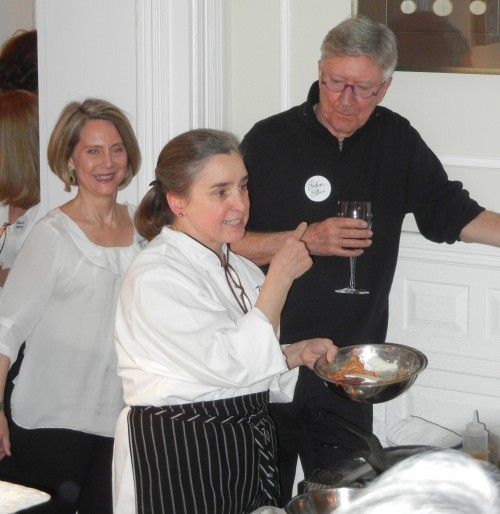
Janis McLean and Robin Ellis demonstrating “Salmon Fishcakes with a Sauce of Yogurt, Mustard and Dill”… Katherine “helping” in background. Photo by Robert Arnold

Friends/Volunteers Begin Preparations in the Kitchen. Katherine Tallmadge, Elizabeth Mautner, Zach Lipson, Johanna Medlin. Photo by Meredith Wheeler
Nancy Taylor Bubes’ dining table was brimming with simple yet sublime Mediterranean dishes “Roasted Eggplant Slices with a Walnut and Garlic Spread,” “Grilled Lamb Chops with Rosemary,” “Tzatziki,” “Fennel Salad with Parmesan Shavings,” “Minestrone,” “Grilled Strips of Duck Breast smothered in Walnut and Garlic Sauce,” “Rice and Spinach Torte,” “Tuna and White Bean Salad,” “Spinach Salad with Bacon and Avocado,” “Goat Cheeses served with Apple and Pear Slices,” and more…
Debbie Weil, Lisa Lambert, Hostess Nancy Taylor Bubes, Roxanne Fleming. Photo by Johanna Medlin
Michelle Molotsky, Robin & Meredith, and Robert Arnold
Katherine with Marcia Horting and Marc Marzullo
Helen Belletti and Robin Ellis
Robin Ellis with Hedvika Krone. Photo by Meredith Wheeler
Robin Ellis and Michele Reilly Hall. Photo by Helen Belletti
Robin & Meredith surprised me with a lunch invitation at D.C.’s iconic “Kramerbooks & Afterwards” the day after… I feel truly blessed!
The Whole Story: Grains of Truth
- At February 17, 2012
- By Katherine
- In Articles, News
 1
1
In the world of nutrition there seems to be no shortage of complexity and confusion. But I’ve found that simple and straightforward solutions are often strikingly successful. In no area is this more true than the remarkable power of whole grains. Over the years, countless clients have struggled with various gastrointestinal complaints such as constipation, bloating, or irritable bowel syndrome. Many have come to me after trying costly medications, usually with little relief.
In most cases, symptoms disappeared once they began increasing their fiber intake by eating adequate amounts of whole-grain foods. Some of my clients even teasingly call these foods their wonder drug. But while it’s true that whole grains are valuable for their fiber content, their benefits are much more vast. Whole grains play a profound role in health. A growing body of research shows whole grains- wheat, oats, rice, rye and corn, for example may help keep body weight down and prevent diabetes, heart disease and some cancers.
The importance of whole grains in health came to light in the 19th century when refining grains became popular-and its negative consequences were learned. In Asia, chickens were cured of symptoms of a human illness called beriberi, characterized by muscle wasting and nerve degeneration, when they were fed the discarded part of polished white rice. It was later found that the parts discarded during the refining process contain the essential nutrient, thiamin (a B vitamin) necessary to prevent beriberi.
In 1975, researchers Dennis Burkitt and Hugh Trowell published a book of scientific observations comparing the diet of Africans eating their native whole grains versus North Americans and British eating their diet of highly refined carbohydrates. The researchers described for the first time the role that whole, unrefined foods play in reducing the incidence of coronary heart disease, diabetes and cancer. Since then, numerous other research studies have chronicled the effects of whole grains on human health.
A whole grain has three parts: bran, germ and endosperm. The bran and germ contain fiber, Vitamin E, B vitamins (thiamin, niacin, riboflavin and pantothenic acid) minerals (calcium, magnesium, potassium, phosphorous, sodium, selenium and iron), protein, essential oils, antioxidants and phytochemicals (plant substances that may protect health). The endosperm contains mostly starch with a little protein and very few nutrients. When a grain is refined, turning whole wheat flour into white flour or brown rice into white rice, only the nutrient-poor endosperm is left. The riches found in the bran and germ are lost.
Food manufacturers and producers attempt to make up for the loss in nutrients by enriching refined grains (those found in breads, pasta, rice and cereals, for instance) with some essential nutrients, such as B vitamins and iron. But overwhelming scientific evidence has found major health differences in people who eat more whole grains compared to people who eat refined grains, proving enrichment doesn’t make up for the difference:
* Whole grains are our major source of fiber. The grain’s outer layer (the bran) keeps us regular and prevents constipation, hemorrhoids, diverticulitis and reduces risk for ulcerative colitis (Crohn’s disease).
* Whole-grain intake is strongly correlated with reduced cardiovascular disease. This is partly explained by the soluble fiber in grains (oats, rye and barley have the highest levels), which is associated with cholesterol lowering. But other substances in grains, such as antioxidants like Vitamin E, also play a role.
* People who eat more whole grains also have lower body weights, according to epidemiological research. This is attributed to the fiber, which promotes feelings of fullness in foods that are generally low in calories.
* Many studies have shown a strong link between whole-grain intake and reduced incidence of type II diabetes. This may be partly because the fiber in whole grains slows down stomach emptying, causing a lower rise in blood glucose and insulin. Also, whole grains contain nutrients such as Vitamin E and magnesium, which may help improve insulin sensitivity.
* Whole grains may also help prevent cancers, especially of the intestinal tract and maybe even breast cancer. Several theories have been put forth explaining the mechanisms. For one, the fiber speeds intestinal transit, which reduces exposure to potential carcinogens. Also, antioxidants enter the circulation through colon cells, providing long-term antioxidant protection through the entire digestive tract, according to Joanne Slavin, a professor in the department of food science and nutrition at the University of Minnesota in St. Paul. Ninety percent of a grain’s antioxidants aren’t released until they get to the colon, the last stage of digestion, where they may provide maximum protection against cancer.
Interestingly, grains are still a mystery to researchers. They are so complex and full of a multitude of different compounds, scientists are largely unsure of what components of the grain are responsible for the benefits.
“We’re not sure if the benefits are from the fiber or the phytochemicals,” says Simin Liu, assistant professor of medicine and epidemiology at Harvard. “In my opinion, it’s the thousands of phytochemicals in whole grains which produce most of the benefits.”
To prove his point, Liu points to a four-year National Cancer Institute-funded study of high-fiber cereals in which wheat bran was added in the processing as opposed to naturally occurring in a whole grain. Researchers were surprised to find the high-bran diet did not prevent colon polyps, often a precursor to cancer.
“The data doesn’t support the claim that added bran fiber or fiber supplements make a positive difference in colon cancer, which is why I like to use the term ‘whole grain foods’ instead of fiber. The data only point to whole foods,” says Liu.
But while whole grains provide this wide array of health benefits, most Americans don’t take advantage of them.
“American adults eat six to seven servings of refined grains but only one serving of whole grains a day, with children eating less than one serving-well below U.S. Dietary Guideline recommendations of at least three servings,” says Slavin.
While science continues its search for the answers, I recommend you switch from refined grain products to whole-grain products. Instead of white bread or crackers, choose whole wheat, whole rye or whole grain breads and crackers. Instead of white pasta or white rice, choose whole wheat pasta or brown rice or cereals made with whole oats or whole corn. Try unusual grains such as bulgur (crushed whole wheat), whole wheat couscous or exotic grain-like substitutes such as quinoa and amaranth.
But looking for whole-grain foods in your supermarket can be challenging. Many “whole wheat” or “multi-grain” breads, for instance, are made predominantly of white flour, even though the label may say “wheat flour.” Be sure the first ingredient on the nutrition label of your pasta, cereal, crackers or bread is a “whole” grain such as whole wheat, whole oats or whole rye. Also look for a whole-grain product containing 3 or 4 grams of fiber per 1 ounce (28 grams) or per 80- to 100-calorie serving. That signifies that the grain is likely in its most natural state.
Grains contain about 80 – 100 calories, 15 grams carbohydrate, 3 grams protein and 1 gram fat per 1 ounce or 28 gram serving, which plumps to about1/2 cup if cooked.
The grain family includes barley, corn, millet, oats, rice, rye and wheat. Amaranth, buckwheat and quinoa belong to a different botanical family. But they all contain protein, B vitamins, minerals and fiber, as well as antioxidants such as lignans and phenolic acids.
Though grains such as corn, oats, rice, rye and wheat are relatively easy to find and cook, other of these healthful ingredients may require a search and some guidance before cooking.
Amaranth. This tiny seed, often found in health food stores, can be used to make flour or pasta. Or buy the seeds and add them to your bowl of cereal, rice or stir fries.
Barley. This versatile grain makes a great pilaf or risotto; use the cooked leftovers in salads, stir fries or tuna salad.
Buckwheat. The seeds of the plant are used to make buckwheat flour, the basis of blini. Buckwheat groats are the hulled and crushed kernels of the seed and are usually cooked in a manner similar to rice. When the groats are toasted, they are called kasha. Add buckwheat to soups, stew, meatloafs or hamburgers. Cook buckwheat grits for a hot breakfast cereal.
Bulgur (also spelled bulghur). Made from whole-wheat berries that are steamed, partially de-branned, dried and crushed or cracked, bulgur is available in coarse, medium and fine grinds. A staple of the Middle Eastern diet, it is seen on the lunch or dinner table, in salads such as tabbouleh or stews. It can also be cooked like a rice pilaf.
Millet. Cracked millet can be cooked like couscous; another variation, pearl millet, can be cooked like rice or a hot breakfast cereal. Millet flour is used in roti, and Indian flatbread.
Quinoa. Pronounced Keen-wah, this grainlike product, is often found in health food stores. The toasted grains have a delicious roasted flavor and can be added to vegetable dishes or rice. Quinoa flakes make a hearty breakfast.
Do You Need Gluten-Free?
- At February 16, 2012
- By Katherine
- In Articles, News
 5
5
A jug of wine, NO loaf of bread, and thou?
See me explain how a gluten-free diet may do more harm than good on ABC-7
This article appeared in The Huffington Post
Hear me – and three other experts – discuss “The Gluten-Free Craze” on National Public Radio’s The Diane Rehm Show.
It’s all the rage right now; in fact, you may be thinking of going on a gluten-free diet. Before you do, here are some things to think about: First, you are likely to miss out on critical nutrients and health benefits only gained with gluten-containing whole grains.
Second, a gluten-free diet is a therapeutic diet for those with debilitating celiac disease, a serious auto-immune disorder which virtually destroys the intestinal tract. But celiac only affects about 1% of the population.
Third, the danger of self-diagnosing and taking gluten out of your diet prematurely is that you will would never be able to get an accurate diagnosis of your symptoms. An intestinal biopsy is the only way to detect celiac definitively.
People try a gluten-free diet because they are overweight, feel tired, bloated, and/or depressed, and find reducing gluten correlates with feeling better or losing weight. But that is more likely because they’ve cut out excess calories found in many flour-based snack foods and they mistakenly attribute feeling better to taking out the gluten. So, before you rush into a gluten-free diet, why not try something simple, say, an apple… or exercise? Or would you prefer a life of no bread, pasta or birthday cakes? It’s a tough row to hoe, and I’m here if you need me, as studies have found gluten-free diets can be seriously nutrient-deficient, low in fiber, iron, folate, niacin, thiamine, riboflavin, calcium, B12, phosphorus, and zinc. That’s because so many “gluten-free” products are made with refined, unenriched grains and starches, which contain plenty of calories, but very few vitamins and minerals.
The new gluten-free industry is making millions from Americans’ desperation to feel better. There has been an explosion of gluten-free junk foods, and I hope you don’t become a victim.
But I have great news… many clients have thought they might need a gluten-free diet, but when we worked together at improving their nutrition and life balance, symptoms vanished! Perhaps that could be you?
If you take the following steps and find you do need a gluten-free diet, it can fill all your nutritional requirements, but only if done CAREFULLY…
Do You Need A Gluten-Free Diet? A Step-by-Step Guide
1. Have a complete check-up with your family physician,
2. Consult with appropriate specialists, such as an allergist for wheat allergy and a gastroenterologist for celiac or another GI disease,
A. If you have a wheat allergy, you must avoid wheat, but you do not have to avoid gluten from other grains,
B. If you have celiac disease, you must avoid gluten – even the tiniest amounts (you must be eating gluten for the diagnosis to be made),
3. If you do not have a wheat allergy or celiac, visit a registered dietitian to verify that you are eating a balanced diet with plenty of nutrient-dense, naturally fiber-rich foods and adequate physical activity. A healthy diet and lifestyle reduces negative gastrointestinal symptoms, inflammation, boosts the immune system, improves brain function, reduces depression, and anxiety. If you are overweight, lose weight, as body fat can be toxic and produces hormones and pro-inflammatory chemicals which regulate metabolism, the immune system, inflammation, and the progression of artery hardening, so that when you have less body fat, you get many biological benefits, and feel better,
4. If symptoms persist, though in most cases they do not, you may be one of the rare people who are “gluten sensitive,” though hopefully not, as it’s a tough life. To confirm the diagnosis, and if a gluten-free diet is absolutely necessary for you – even though a gastroenterologist has verified you do not have celiac disease – visit your gastroenterologist, or the University of Maryland’s “Center for Celiac Research,” where they specialize in, among other things, detecting “gluten sensitivity,” which may be a newly identified disorder.
What is Gluten?
Gluten is a protein in wheat and some other grains, such as rye and barley. A gluten experiment in Food Science at the University of Maryland left a lasting impression on me about the function and importance of gluten. I kneaded bread dough under flowing water. As I kneaded the dough, the starch slowly washed away. What remained was a rubbery mass – the gluten – the protein in wheat which gives bread its structure.
Gluten-Containing Foods
Barley, Bulgur, Cereal Binding, Couscous, Durum, Einkorn, Emmer, Filler, Farro, Graham Flour, Kamut, Malt, Malt Extract, Malt Flavoring, Malt Syrup, Oats which are not labeled “Gluten-Free” because they have been contaminated by gluten in the field or in the processing plant, Rye, Semolina, Spelt, Triticale, Wheat, Wheat Bran, Wheat Germ, Wheat Starch, and others…
Naturally Gluten-Free Whole Grains
Brown Rice, Whole Corn, Gluten-Free Oats, Millet, Teff, Sorghum, Wild Rice, Buckwheat, Amaranth, and Quinoa.
Wheat Allergy
WA is an adverse immunologic reaction to wheat proteins, a classic food allergy affecting the skin, gastrointestinal tract or respiratory tract.*
Celiac Disease
CD is an immune-mediated enteropathy (intestinal disease) triggered by the ingestion of gluten in susceptible individuals. The onset of symptoms is usually gradual and characterized by a time lag of months or years after gluten introduction.*
Gluten Sensitivity
When both allergic (WA) and autoimmune mechanisms (CD) have been ruled out (diagnosis by exclusion criteria), individuals who experience distress when ingesting gluten may be considered as having GS.*
*“Spectrum of gluten-related disorders: consensus on new nomenclature and classification,” BMC Medicine 2012, 10:13 doi:10.1186/1741-7015-10-13; Sapone, Bai, Ciacci, Dolinsek, Green, Hadjivassiliou, Kaukinen, Rostami, Sander, Schumann, Ullrich, Villalta, Volta, Catassi, Fasano.
It is critical that you are examined by a gastroenterologist before switching to a Gluten-Free diet.
Why? Once you eliminate gluten, it is virtually impossible to diagnose celiac, and the diagnosis of celiac, an extremely serious auto-immune disorder, should be your primary concern.
My Favorite Gluten-Free Guides
“Gluten-Free Diet: A Comprehensive Resource Guide” by Shelley Case, R.D.*
“Easy Gluten-Free” by Tricia Thompson, M.S., R.D. and Marlisa Brown, M.S., R.D.*
“Gluten-Free, Hassle Free” by Marlisa Brown, R.D., C.D.E.*
*Anyone giving gluten-free dietary advice should be a registered dietitian, and have the “R.D.” after their name.
Don’t forget, Diet Simple is filled with recipes, including some marked “Gluten-Free!”
Hear me – and three other experts – discuss
“The Gluten-Free Craze” on National Public Radio’s The Diane Rehm Show.
See me explain how a gluten-free diet may do more harm than good on ABC-7
A Chocolate A Day? Health Benefits of Chocolate De-Mystified
- At February 11, 2012
- By Katherine
- In Articles, News
 6
6
Is it true that a chocolate a day will keep the doctor away? That’s what many chocolate companies would like you to believe in their Valentine’s Day advertisements. While it looks like cocoa has many health benefits, the chocolates you buy from your local stores may impart little of those benefits.
Are you celebrating Valentine’s Day with chocolate? Do you care about chocolate’s health benefits? Tell me about it below in my “Comments” section.
The cacao bean, grown mainly in Latin America, Africa and Asia, is loaded with beneficial compounds. In fact, its early uses, dating back 3,000 years were mainly medicinal. They have ranged from curing fatigue, angina, constipation, dental problems (tartar removal), dysentery, gout, an “overheated” heart, skin eruptions, fevers, and seizures. One doctor in the 1500s found it made people “extraordinarily fat” if used frequently and so it was prescribed for the thin and weak, according to an article in The Journal of Nutrition. It has been highly prized for centuries, which is reflected in its scientific name, Theobroma cacao, meaning “Food of the Gods.”
Eurpoeans discovered cocoa in the 1500s and over the next few centuries, chocolate, which we know and love so well was born. In this century, chocolate (processed cocoa with added fat, milk and sugar) has been enjoyed for its melt-in-your mouth texture and flavor, with its health giving properties largely forgotten by the civilized world, until recently.
In 1997, Harvard professor Norman K. Hollenberg published a landmark epidemiological study focused on cocoa. He found that high blood pressure was a rarity among Panama’s Kuna Indians who also didn’t experience the typical age-related increases. He at first attributed it to genetic protection. But, when the Kunas migrated to Panama City, their blood pressure increased, pointing to an environmental cause. Upon examination, Hollenberg found the Kunas drank large amounts of indigenous, unprocessed cocoa. Subsequent experiments conducted by Hollenberg and others, have found that cocoa, if high in flavanols, the beneficial plant compounds scientists believe impart most of cocoa’s benefits, relaxes the blood vessels, an important protection against hypertension and heart disease.
In the past ten years, cocoa research has intensified, mainly due to the largess of companies like Mars, Inc, most famous for Milky Ways and M&Ms. What’s striking is that candy companies, such as Mars and Nestle’s, have hired respected nutrition scientists and have been largely responsible for the advancement of cocoa research. Mars has collaborated with such institutions as Harvard, the University of California at Davis, and even the United States Department of Agriculture’s Agricultural Research Service. Through their research and others, many interesting discoveries about cocoa’s health benefits have been made.
The flavanols in cocoa help maintain a healthy vascular system, relax blood vessels, they reduce blood clotting – an aspirin-like affect –reduce oxidative damage, and improve blood flow. A study in the American Journal of Clinical Nutrition found cocoa also reduces inflammation. All of which reduces heart disease risk.
There have been some suggestion that flavanols can be used to treat vascular diseases like dementia, pre-eclampsia in pregnant women, and anything related to blood flow. Emerging research is looking into cancer as well.
But what about that chocolate bar in your vending machine? Are there any health benefits there? The answer: probably not much.
Most research about chocolate’s health benefits have used unsweetened cocoa or specially formulated high-flavanol chocolate. Unfortunately, these compounds are rarely in the chocolate we eat in 21st century America. Flavanols impart a bitter taste so they’ve been removed from most popular products to improve their flavor.
Most of the flavanols are in the cocoa beans and the level decreases with each processing step when it goes from the bean, to the cocoa powder and ultimately a finished chocolate product.
Since flavanols and their health benefits are a new discovery, chocolate companies are just beginning to see if there are ways to keep flavanols consistently high, but still have a tasty, popular product.
Katherine’s Chocolate-for-Health Tips
If you’re eating chocolate for health benefits, try my Dark Chocolate-Dipped Fruit recipe, for one, and be very discriminating in your selections.
You’ll get more flavanols, and therefore health benefits, with less processing. The first choice is cocoa, which isn’t Dutch processed – as when cocoa is “Dutch processed with alkali” the flavanols are reduced. Look for chocolate which has the highest percentage of cocoa as possible and to save calories, look for chocolate with lower fat and sugar levels. In general, cocoa is your best first choice. Second choice is a semisweet or bittersweet chocolate with a high cocoa percentage. Some chocolates go as high as 85% cocoa, but legally can be as low as 35%. I recommend no more than an ounce a day, which may be about 110 – 150 calories, depending on the chocolate. Any more than that and you’re probably going to take in too many calories for weight control.
The numbers:
Type of Chocolate Mg Flavonols Calories
1.3 oz Dark Chocolate Bars, Average*: 82 mg 187
1.3 oz Milk Chocolate Bars, Average*: 42 mg 198
1 TBSP Unsweetened Cocoa Powder, Average*: 75 mg 12
*USDA’s Nutrient Data Laboratory
Use this incredible chocolate fondue recipe for berries, sliced pears, bananas, or any favorite fruit!
Katherine’s Hot Cocoa:
1 tsp or 1 Tbsp unsweetened cocoa, to taste
1 tsp or 1 Tbsp honey
1 cup Skim Milk or 1% Milk or Soy Milk
Heat in microwave for 2 – 3 minutes and stir to blend the chocolate.
Using 1 teaspoon of cocoa and sugar, contains approximately 25 mg flavanols and 115 calories (zero saturated fat), depending on the milk used.
Using 1 Tablespoon of cocoa and sugar, contains approximately 75 mg flavanols and 153 calories
Are you interested in chocolate’s health benefits? How much chocolate do you eat? Let me know in my “comments” section below…
Maximizing Brain Health: Do’s and Don’ts
- At February 08, 2012
- By Katherine
- In Articles, News
 9
9
My clients regularly ask me: Do certain foods affect my brain and cognition?
My answer: an emphatic Yes! What you eat profoundly affects the brain, memory, and mental function.
Are you eating “Smart” foods? Please let me know by commenting at the end of this article in “Comments.”
“Nutrients are essential for brain function, and because all human beings must eat, we are all exposed,” said Martha Clare Morris, at a National Institutes of Health conference on brain function and preventing cognitive decline.
“The dietary components with the strongest evidence to date for dementia prevention include antioxidant nutrients, fat composition, and B vitamins,” said Morris, director of Nutrition and Nutritional Epidemiology at Rush Medical College in Chicago.
Antioxidant Nutrients
“The brain is particularly vulnerable to oxidative damage due to its high metabolic activity and the presence of relatively few antioxidant enzymes… Antioxidant nutrients (vitamin E, vitamin C, carotenoids, flavonoids) are a natural defense mechanism… Of the antioxidant nutrients, the evidence for brain protection is strongest for vitamin E; that for carotenoids, vitamin C, and flavonoids is limited and inconsistent but promising,” said Morris.
But when it comes to nutrients, both too little or too much can be dangerous. So I recommend you get those nutrients from food, not from supplements, which can be harmful and may disturb the natural nutritional balance of your brain.
Some examples of foods high in brain-protecting antioxidant nutrients:
Vitamin E: Sunflower seeds, almonds, sunflower oil, safflower oil, canola oil, hazelnuts, pine nuts, spinach, turnip greens, beet greens, dandelion greens, canned pumpkin, carrot juice, broccoli, sweet potato, sweet red peppers, mangos, papayas
Carotenoids, such as Beta-Carotene (orange), Lycopene (red), and Lutein (yellow/green): Orange, red, and deep green veggies and fruits, particularly…Carrot juice, carrots, butternut squash, pumpkin (or any orange-colored winter squash), sweet potato, greens such as spinach, collards, kale, turnip greens, beet greens, avocados, orange melons such as cantaloupe, red peppers, apricots, broccoli, plums, mangos papayas, plantains, Brussels sprouts, watermelon, asparagus, tomatoes, watermelon, pistachios
Vitamin C: Citrus fruits such as orange, lemons and grapefruit, peaches, sweet and hot peppers, papayas, pineapple, strawberries, broccoli,kiwi fruit, sweet potatoes, Brussels sprouts, kohlrabi
Flavonoids: Cocoa, green and black tea, citrus fruits, dark chocolate, red wine, apples, grapes, berries (read “Berry Bonanza” for more facts about berries), numerous fruits and vegetables. Tea is filled with antioxidants and anti-inflammatory nutrients, both of which reduce brain decline, and even slow down muscle and bone breakdown. Read about tea’s health benefits in my recent Washington Post article.
Fat Composition
Fat is an essential nutrient. But the type of fat you eat trumps everything. Fat ends up in all of your body’s cells, including your brain cells. It acts as a cell lubricant, improves flexibility and communication between cells. If the fat you eat is saturated – solid at room temperature – as in butter or animal fat – this stiffens and decreases cellular flexibility and functioning. Saturated fat also raises LDL cholesterol, and high cholesterol is correlated with cognitive decline. This may be why people who eat diets high in meat and animal fats suffer from a higher rate of dementia and Alzheimer’s.
A diet high in fish, on the other hand, is correlated with a reduced incidence of brain decline. Fish oil – omega-3-fatty-acid – concentrations are highest in the brain and nervous system. They are necessary for optimal functioning of the neurons, protect cells, decrease cell death and improve nerve transmission. Emerging research indicates Omega 3s may boost levels of the brain chemicals serotonin and dopamine, decreasing depression and violence.
“In 5 out of 6 of the clinical trials where people were given either a placebo or omega-3 fatty acids, on average, the symptoms of depression have been reduced by about 50%,” says Joseph Hibbeln, a psychiatrist at the National Institutes for Alcohol Abuse and Alcoholism. “This is true even when the subjects were already on anti-depressants and failing to respond to them.”
Hibbeln’s studies found an increase in depression, violence and homicides in countries who eat less fish as compared to countries who eat more fish. It may even improve conditions such as bipolar disorder and schizophrenia.
B Vitamins
“Vitamin B12 and folate … are widely believed to be protective risk factors of cognitive decline and Alzheimer’s disease,” said Martha Clare Morris. “Vitamin B12 deficiency results in a neurologic syndrome that involves impaired cognition. Recent interest in folate deficiency as a risk factor for dementia is primarily due to its effect on raising homocysteine concentration, which has been related to the risk of developing Alzheimer’s disease… Both low vitamin B12 and low folate status are associated with cognitive decline, and high folate exposure in persons with low vitamin B12 also may be associated with cognitive decline,” said Morris.
Balance is key, so eat food high in these nutrients instead of risking an imbalance caused by an overdose.
Folic Acid (Folate): Spinach, lentils, pinto beans, black beans, blackeyed peas, greens, soybeans, broccoli, asparagus
Vitamin B12: Found naturally only in animal foods such as seafood, chicken, fat free or low fat yogurt, milk
Smart Lifestyle
Physical Activity is the primary lifestyle factor impacting your brain’s health, as well as cardiovascular disease and diabetes prevention.
“Physical activity and exercise have been found, over the past several decades, to reduce the risk of a multitude of diseases including cardiovascular disease, breast and colon cancer, obesity, and type II diabetes,” said Arthur F. Kramer, at the National Institutes of Health’s conference on brain function and preventing cognitive decline. “Many of these diseases have been associated with diminished cognitive and brain health and serve as risk factors for age-associated neurodegenerative disorders such as Alzheimer’s disease. Therefore, physical activity appears to enhance cognition and brain health through disease reduction and prevention, but also has more direct effects on both brain health and cognition,” said Kramer, professor of psychology and neuroscience, Beckman Institute, University of Illinois, Urbana.
Mood
During just one exercise bout, your brain releases chemicals called endorphins into the blood stream. They reduce pain, increase feelings of well-being and elevate your mood. If you are regularly physically active, these benefits multiply. A study published in the Archives of Internal Medicine found that a brisk 30-minute walk just three times a week relieved major depression just as effectively as an antidepressant in middle-aged and older people.
Mental Alertness
Physical activity increases the oxygen to your brain, particularly the frontal regions where it increases reaction times, as reported in the journal, Nature. Physical activity also improves memory, mental function and reduces your chances for dementia and Alzheimer’s disease. Those who walked 18 miles or more per week experienced the most improvements. These studies were reported in the Archives of Internal Medicine and the journal, Neurology.
Social Networks
“A rich social network may provide better social support and consequently better access to resources and material goods. Large social networks also may enhance brain reserve by providing intellectual stimulation,” said Laura Fratiglioni at NIH’s conference on brain function and preventing cognitive decline. “In addition, neuropathological data have shown that subjects with a similar amount of neuropathological lesions had higher cognitive performances if they also had larger social networks,” said Fratiglioni, Professor of Geriatric Epidemiology, Karolinska Institute in Stockholm, Sweden.
Leisure Activities
Most studies have suggested “a protective effect of leisure activities, especially mentally stimulating activities, against dementia,” said Fratiglioni. “These activities, which include reading, playing board games and musical instruments, knitting, gardening, and dancing, often have been associated with a reduced risk of dementia. Furthermore, a recent review of prospective studies also has concluded that physical activity may reduce the risk of Alzheimer’s by approximately 45%. However, most physical activities also include social and mental components in addition to the physical component. Indeed, complex leisure activities composed of all three components of physical, mental, and social activities seem to have the most beneficial effect.”
Are you engaging in a “Smart” Lifestyle? Eating plenty of “Smart” foods? Please comment below in “comments,” and let me know how you are doing!
The French Culinary Institute’s Veal Stew with Carrots, La Boutarde: A Step-by-Step Pictorial Guide
Excerpted from Diet Simple
This stew is perfect for a chilly winter day, in front of a fire, with good friends, glasses of wine clinking. My client, Lloyd, and I made this stew yesterday using beef round cubes instead of veal and it took less than 30 minutes’ working time. Though it needs to simmer anywhere from 1 to 2 hours for the very lean beef or veal to become tender, almost to the point of falling apart – and melting in your mouth (Lloyd insisted we imbibe just a little while cooking – I acquiesced). As Lloyd and I were wrapping up our lesson, my next client Alex popped in and was immediately transfixed by the aromas. After a taste: “Delicious! I’m making it this weekend!” she said. No surprise there, as this beautiful and simple recipe is adapted from one of my favorite cookbooks: “The French Culinary Institute’s Salute to Healthy Cooking.”
The measurements do not need to be precise. You can add more vegetables, like celery, turnips, almost anything.
The veal rump is found at a butcher’s or specialty market (in Washington, D.C., that would be Eastern Market). But call ahead to be sure, and ask the butcher to chop it into stew meat cubes. A substitute would be veal shoulder, which is typically used for stews, but it is not as lean as the rump. If you’re on a budget or do not have a butcher easily accessible, beef round cubes are an excellent substitute.
4 servings (when you quadruple the vegetables, it will make at least 6 servings, each with more vegetables and less meat)
Ingredients:
1 Tablespoon Extra Virgin Olive Oil or Canola Oil
2 Pounds Veal Rump, well trimmed and cut into 2-inch cubes, seasoned with Salt and Freshly Ground White Pepper
2 Medium Carrots, cut into 1/2-inch slices (I quadruple the carrots)
1 Medium Onion, chopped
1-1/2 Cups Dry White Wine
1 Cup Water (or more Wine)
2 Medium Very Ripe Tomatoes, peeled, cored, seeded, and chopped (Canned Plum Tomatoes are terrific – again, I quadruple the amount)
2 teaspoons Herbes de Provence*
1 Bay Leaf
3 Small All-Purpose Potatoes, quartered (I like using the small new potatoes)
Directions:
Warm the oil in a large saute pan over medium-high heat. When hot, add no more than half the veal and sear for 3 minutes, or until the veal has evenly browned on all sides. Do not crowd the pan or scorch the meat. Using a slotted spoon, transfer the veal to a Dutch oven. Continue searing the veal until all of the meat has been browned. Season with salt and pepper.
In the same pan over medium heat, saute the carrots and onions for 3 to 5 minutes, or until the onions are translucent. Lloyd decided to simplify and used baby carrots.
Reduce the heat and stir in the wine. Using a wooden spoon, stir vigorously to lift the browned bits from the bottom of the pan.
Pour into the Dutch oven (or keep everything in your saute pan if it is big enough). Add the water (or Wine), Tomatoes, Herbes de Provence*, and the Bay Leaf (Lloyd decided to add mashed garlic). Place over medium heat and bring the stew to a boil. Reduce the heat to medium-low, cover, and simmer for one hour. Add the potatoes and simmer for 35 minutes, or until the potatoes and meat are tender (it may take a total of 2 hours of simmering for the meat to become melt-in-your-mouth tender).
Taste and adjust the seasoning. Remove the bay leaf. Voila!
*Herbes de Provence is a mixture of dried herbs that often includes basil, lavender, rosemary, sage, thyme, and others. Look for it in the spice section of your supermarket.
Nutrition information per serving: 437 calories, 12 g total fat, 4 g sat fat, 22 g carbohydrate, 4 g fiber, 60 g protein
“Veal Stew with Carrots, La Boutarde” originally appeared in “The French Culinary Institute’s Salute to Healthy Cooking,” by Alain Sailhac, Jacques Pepin, Andre Soltner, Jacques Torres, and the Faculty of the French Culinary Institute (1998).
New Year, New Life… Seize the Moment!
- At January 03, 2012
- By Katherine
- In Articles, News
 0
0
What are your hopes, dreams and desires for 2013? The new year is a valuable opportunity to improve the quality of your life and happiness. Here’s how to make the best of it…
Now, move mindfully across the threshold into 2013 filled with ideas, possibilities and plans! Analyze people who will continue to be important, ideas to explore, places to spend time, important events and things to carry over from last year to this year.
CREATING A “SENSE OF URGENCY”
An important aspect to making major changes in the world or in your own personal habits is to feel a sense of urgency about your goal. A sense of urgency, according to The Dalai Lama in “The Art of Happiness” – and scholars in this important field of psychological research, can be achieved two ways:
1) Remind yourself of your positive vision for success. For example, visualize yourself at your goal weight, healthy, feeling energetic and confident (see “Dream” in my best-selling book, Diet Simple), and
2) Ponder the negative consequences of not making a particular behavior change (a little fear can be a good thing – but just a little). For instance, in the morning as you’re considering two options: getting out of bed to exercise or sleeping just a little longer. Ask yourself: “Do I want to feel good today? Or do I want to feel crummy today?” Another example, as you’re driving home from work and deciding to grab some carry-out or to go home to eat the healthy meal you’ve already planned. Ask yourself: “Do I want to achieve my weight loss goal (insert positive vision here) or will I accept being the same weight and having the same health problems for another year?” “Do I want to stop taking these darn medications or will I be taking them forever – and even increasing the dosage? What will my doctor say?” “What kind of example am I setting for my children, my spouse? Is this a behavior I can be proud of?” etc. You get the idea…
ACHIEVING INCREASED HAPPINESS
Outlining the consequenses of your actions and acting on your long term goals, as opposed to momentary desires, helps you grow as a person and become a happier person, according to scientific research. It increases your general happiness level because you are making decisions which contribute to your long-term goals.
THE DOWNWARD SPIRAL OF GIVING IN
Usually, when we do something that feels good momentarily, such as giving in and staying in bed for 30 more minutes of sleep in the morning instead of exercising, or grabbing a coffee cake at the coffee shop when we originally just planned on buying coffee, our happiness level may increase (“oooh, this feels yummy!”) – but it’s only a temporary blip of happiness. It goes back to the same level it did before – once the temporary experience wears off – and nothing changes for the better in our lives. We may even become more depressed as we continue to “give-in” to these unfulfilling momentary desires and continue into a downward spiral.
MAKING THE HARDER, BUT MORE SATISFYING CHOICE
If, instead, we say to ourselves, “I’m getting out of bed NOW! I’ll feel terrible if I don’t, and I’ll never achieve my goals,” or “Will stopping to get carry-out change my life for the better? I’d be better off going home and eating something healthy as I want to lose weight, lower my cholesterol, etc,” or “I really don’t need that coffee cake, and I’ll feel terrible after eating it, and will it make me happier at the end of the day?” “Will this increase my happiness for the short term? Or for the long term?” Another more extreme example might be a drug addict relapsing. It feels great momentarily, but the feeling doesn’t last.
When you make a more thoughtful decision, which contributes to your longterm health – physical or psychological – you are more likely to achieve your life’s hopes, dreams and goals, you can actually increase your happiness level, feel happier more often and grow as a person.
WHY IT’S NOT ALWAYS EASY
It is not always easy in our society to make the healthy decision. It’s easier – and the norm, in fact – to be overweight and unhealthy. But, I’m convinced it is possible to be healthy in an unhealthy world with planning, practice, determination, and support (I’m here any time you need me!) – Besides, what’s the alternative?
It takes effort to train your mind to work this way, but this is how we become better people and we advance as a society.
THE RESOLUTION SOLUTION:
HOW TO MAKE YOUR RESOLUTIONS SUCCESSFUL
“Forty to 50 percent of American adults will make New Year’s resolutions for self improvement. Scientific research indicates you are ten times more likely to change by making a New Year’s resolution compared to non-resolvers with the identical goals and comparable motivation to change,” says John C. Norcross, PhD, Professor of Psychology, University of Scranton and coauthor of “Changing for Good.”
Dr. Norcross recommends the following strategies, based on studies tracking successful New Year’s resolvers, and their differences with unsuccessful resolvers:
* Make realistic, attainable goals (See “Tiny Changes, Lasting Results” in Diet Simple’s Introduction),
*Develop a specific action plan (Fill out “Your Personal Goal Worksheet” in Diet Simple),
* Establish genuine confidence that you can keep the resolution despite the occasional slip. Confidence is a potent predictor of who succeeds in the new year! (creating your “sense of urgency” will be useful here – see above)
* Publicly declare your resolution. Public commitments are generally more successful than private decisions,
* Track your progress by recording or charting. Studies show self-monitoring one of the most important behaviors correlated with successful change (see “Write it to Lose It” in Diet Simple),
* Reward your successes (see “Get Sexy Lingerie” or “Kiss Your Spouse” in Diet Simple),
* Arrange your environment to help, rather than hinder, you. Limit exposure to high-risk situations and create reminders for your resolutions (see all of Diet Simple!),
* Expect occasional slips in your resolutions (see “Lighten Up!” in Diet Simple). Studies of successful weight loss maintainers show they experience just as many stressors and slips as weight relapsers; no one’s perfect after all (sorry to disillusion you)! The maintainers pick them self up, dust themselves off, and start all over again!
* Cultivate social support (see all of Diet Simple!). Successful weight loss maintainers are more likely to cultivate support from friends, loved ones, or professionals. It does take a village!
The Battle of the Bulge is Won at the Margins. Sweeping Dietary Overhauls are Impractical and Don’t Work Over Time!
Shrewd, Small, Concrete Changes Which Can be Easily Incorporated into Your Daily Routine Lead to Success!
Music and poetry move me deeply, and in ways I don’t always understand. All we know is after hearing something, we feel so much better. I’ve made some selections that have made a difference for me and hope you enjoy them too.
Dying for Sweets?
- At October 21, 2011
- By Katherine
- In Articles, News
 0
0
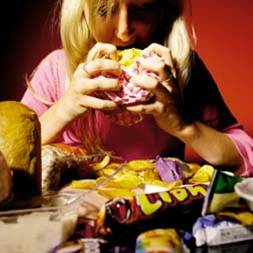 Dying for Sweets
Dying for Sweets
The Science Behind Cravings and What to do About Them
The holidays – starting with Halloween – can trip up even the most conscientious dieter. This happened to a client who had lost and kept off 20 pounds successfully. The Halloween trap caught her by surprise. She bought several bags of Snickers, her favorite candy bar, and began a binge that didn’t end until the candy was gone – long before Trick or Treat even began! That brought her up a couple of pounds. The holidays came and before you know it, she had gained almost ten pounds before winter was out.
If you don’t want this to happen to you…
It’s not just in your head – and you are not alone! There are special challenges posed with some foods, particularly sweets, which have been confirmed by scientific research. So if you don’t want to feel overstuffed, bloated, and stuck with extra depressing pounds you’ll have to fight to take off, listen up, I have some good advice for you…
With Halloween and the holidays looming, it’s important to determine your strategy for dealing with the temptation of sweets: what you eat, what you bring in your home, and what you serve others. My philosophy is that all foods can be enjoyed in moderation. Understanding the science behind sweet craving and overeating can help us eat in a more moderate and healthy way.
The Science
People have an inborn attraction to sweets. If you don’t believe it, simply watch an infant’s response to something sweet versus, say, a vegetable. There’s an automatic acceptance, even joy, after eating something sweet. On the other hand, vegetables are an acquired taste, which may take 10 – 20 tries before acceptance. This is partly explained by evolution. We’ve been eating naturally sweet foods such as breast milk and fruit for millions of years. They contain life-sustaining nutrients, and a love for those foods helped keep us alive. Also, during evolution, an attraction to scarce calorie-dense foods, such as sweets and fats, improved our chances for survival.
But there are other explanations. The research surrounding our attraction to sweets has stepped up in recent decades. Scientists are grappling with understanding the calorie imbalances causing the obesity epidemic, which is partly fueled by eating too many sweets.
Our brain chemistry holds an important clue. Research shows that sweets, like many antidepressants, increase the brain chemical, serotonin, which helps regulate mood and appetite.
“Without carbohydrates, your brain stops regulating serotonin,” says Judith Wurtman, the director of the women’s health research program at the Massachusetts Institute of Technology’s Clinical Research Center in Boston. “Eating carbohydrates profoundly improves mood; which is why a handful of candy corn will make you feel better.”
When we’re stressed, anxious or depressed, serotonin levels can drop, and one way people modify their moods is by eating carbohydrates. But, Halloween and holiday sweet cravings may be uniquely influenced by seasonal changes, too. Studies show that as days get shorter and we are exposed to less sunshine, serotonin levels drop and this leads to increased carbohydrate cravings in susceptible people.
“It’s seasonal; if they sold Halloween and Holiday candy in July, people wouldn’t be as interested,” says Wurtman.
Women are particularly vulnerable to sweet cravings because their brains have less serotonin than men, according to Wurtman.
There have been other explanations for women’s reported increased sweet craving and indulging.
Some researchers attribute the difference to the female hormone, estrogen. It’s been reported that sweet cravings change according to where a woman is in her menstrual cycle, circumstantial evidence that estrogen may play a role. But the findings are inconsistent, as some report increased cravings during menstruation, while others report higher cravings as a premenstrual symptom, a time when serotonin levels may be low.
But the bottom line is clear: “Females overeat sweets compared to males,” says Lisa Eckel, assistant professor of psychology at Florida State University in Tallahassee. Eckel completed a study on rats, published in the American Journal of Physiology, which found that female rats ate more rat chow when it was sweetened, compared with males.
“In animals, having high levels of estrogen is associated with eating more sweets,” says Eckel. This theory has yet to be proven in humans.
Cravings and overeating are difficult to study because they can be so subjective and multifactorial. Other researchers stipulate sweet cravings are mainly determined by culture or by psychological and behavioral factors, rather than physiology.
In some cultures, people don’t crave sweets because they haven’t been exposed to them as regularly as Americans. A study of chocolate, for instance, found that American women crave chocolate significantly more than Spanish women. And while a large percentage of American women reported increased chocolate cravings surrounding their menstrual period, Spanish women did not.
Other studies confirm that exposure during childhood is the major determinant of what we crave and are susceptible to overeating.
I copied my mother’s love for sweets and love of baking; it was a fun activity we did together. In college, to combat loneliness, and heck just for fun, I over-indulged my love for sweets (as the pounds went up and up). I would regularly bake my favorite chocolate chip bars and caramel popcorn, both of which I made in childhood. Study after study shows the importance of parental modeling on a child’s preferences.
Availability and proximity are two of the most important factors science has found influences what we crave and overeat and they probably trump all of the other reasons combined. When tasty foods, such as sweets, are around, we simply eat more of them.
Chances are, a combination of factors is responsible for cravings and overeating sweets at Halloween and the holidays.
“Holiday sweets are novel, they only comes around once a year. It comes in small pieces so you fool yourself into thinking you’re not eating as much,” says Wurtman. “You put it in bowls around the house and eat it mindlessly!”
Wurtman says if you have a strong desire for sweets, it may be a sign that you’re depressed, anxious or stressed. But she insists you don’t have to indulge in sweets to raise your serotonin levels or to feel good. Exercising, stress management, spending time with loved ones are activities which will also help reduce depression, anxiety and stress. (My client discovered a psychological basis for her binges, which she is successfully averting these days).
Using candy to feel better is not a great solution for your waist line. It is so high calorie, it doesn’t take much to overeat and forget your weight loss plans. For the same calories in a candy bar, you could eat four apples, or maybe you couldn’t – and that’s the point!
Don’t get me wrong, I’m not urging you to be a Halloween Scrooge. I believe it’s possible to have fun with Halloween, and even eat Halloween candy, but still avoid some of the excesses that many of us have fallen victim to in the past.
Here are a few suggestions.
- To reduce the possibility of seasonal cravings, make sure you’re getting 30 minutes to one hour of sunlight each day by taking a walk in the mornings or at lunch. You may be able to “catch up” on the weekend, if you didn’t get enough rays during the week,
- Eat plenty of healthy carbohydrates, such as fruits, vegetables, whole grains and legumes, to keep serotonin at optimum levels and reduce cravings of less healthy carbohydrates, such as refined sugar,
- Include a naturally sweet fruit in your meals – and within your healthy calorie allotment. Since we naturally crave a variety of flavors, including sweets, this will reduce sweet cravings beyond your calorie needs,
- If you feel driven to eat sweets, it may be a signal that you’re depressed, anxious or stressed. Reduce tension and anxiety by meditating, exercising or talking with loved ones. It’s important to understand the core of the problem and for that, you may need to seek help from a professional,
- If you want to lose weight, keep your candy – or other “extra” calories – to no more than 10% of your daily calories (that’s 200 calories for the average 2,000 calorie intake, or 150 for 1,500 calories). You may even get away with one big splurge on Halloween. But if you splurge for two or more days, it will probably effect your waist line negatively,
- If you can’t resist eating too much candy, wait to buy it on the day of the party or event (or, don’t buy it). This way, the candy won’t be sitting around as a constant temptation
- Buy only what you need for the event and buy your least favorite candy. Give away the remaining candy at the end of the evening so that there’s nothing left,
- Reduce the variety of what you buy as VARIETY is the biggest cause of overeating,
- Try fun and healthier alternatives to sweets to have around your home and serve to family and guests, such as popcorn, roasted pumpkin seeds, sliced apples and fruit with nice dips,
- Most importantly, if you do find you overeat, lighten up, don’t dwell on the negative and get over it! Analyze objectively what you can do differently next time,
With awareness and good planning, you can have your sweets and eat them, too!
Vitamin Supplements: Good For You? Dangerous?
- At October 13, 2011
- By Katherine
- In Articles, News
 4
4
 Original Content, The Washington Post
Original Content, The Washington Post
Multivitamins may increase death rates, according to a recent study published in the Annals of Internal Medicine. Only Calcium and Vitamin D were correlated with positive benefits.
This is alarming news as the study was large, well-conducted, and the women who participated had relatively high educations, incomes, and were healthy – a population which normally experiences superior health as compared to others. So how could these negative results be possible?
Let me explain…
Many of us want to include nutrients, the right vitamins and minerals in our diet. But we often don’t want to eat all the foods and calories required to get this balance. What we’re looking for is a magic supplement that will give us more energy, improve the quality and length of life and prevent the chronic diseases of today such as heart disease, cancer and diabetes.
While we know that certain foods have been shown to provide these benefits, can the right supplement do the same?
Leading researchers are increasingly convinced that while supplements can serve many positive purposes, they cannot take the place of a well-balanced diet, and may even be dangerous. Some background…
The Importance of Food
“The thousands of vitamins, minerals and phytochemicals [beneficial plant compounds] in whole foods act synergistically to create a more powerful effect than the sum of their parts, producing a result which cannot be recreated by supplements,” says Jeff Prince, vice president for education at the American Institute for Cancer Research.
Over the past century, nutrition experts gained a fuller appreciation of the need for a plant-based diet. Research began to show in the 1970s that certain patterns of eating, beyond vitamin and mineral intake, were influencing illnesses.
By the 1980s, they found that populations that ate more fruits, vegetables and high-fiber foods experienced lower rates of cancer, heart disease and diabetes. Also, by that time, discoveries had been made that newly discovered phytochemicals and certain vitamins and minerals acted as antioxidants and might prevent chronic diseases such as cancer and heart disease. After all, it had been found that people with high blood levels of two antioxidant vitamins (a form of vitamin A called beta carotene and vitamin E) had reduced lung cancer rates. It had also been observed that people who ate more dark-green leafy vegetables (high in beta carotene) experienced less lung cancer, even if they smoked.
Sensing a major breakthrough, the National Institutes of Health funded one of the biggest studies ever conducted. Known as the ATBC (Alpha-Tocopherol, Beta Carotene) Cancer Prevention Study, published in the New England Journal of Medicine in 1994, it tested the theory that the antioxidant vitamins beta carotene and alpha-tocopherol (vitamin E) would prevent lung cancer in smokers, the highest-risk population. After following 29,000 male smokers for six years, the stunned researchers found “a higher incidence of lung cancer among the men who received beta carotene supplements than among those who did not. In fact, this trial raises the possibility that these supplements may actually have harmful as well as beneficial effects.”
Needless to say, these revelations sent shock waves through the scientific community. “This study was a turning point in the nutrition field, especially when multiple studies kept confirming that supplements didn’t work at preventing cancers and heart disease,” says David Klurfeld, national program leader for human nutrition at the USDA’s Agricultural Research Service. “People think that we can pull out the fiber, pull out the antioxidants. But research does not back that up. Study after study says you gain the most benefit from whole foods.”
Personalized Nutrition
That is not to say that supplements are of no use. They can be of great benefit, when taken based on individualized needs. This study, and others like it, stress the importance of personalizing your supplements by reviewing your medical, family and personal history, your food intake, deciding what you might be lacking; THEN and only THEN making an educated decision, preferably with the help of a registered dietitian and your doctor.
Supplements simply can’t compete with better food choices. Consider these findings:
• When the ATBC Cancer Prevention study data was re-analyzed years later for consumption of fruits and vegetables, researchers found that while supplements did not prevent lung cancer, eating fruits and vegetables high in beta carotene (e.g., carrots, sweet potatoes), lycopene (e.g., tomatoes) and lutein/zeaxanthin (deep-green leafy vegetables such as spinach and kale) reduced lung cancer risk.
• A diet high in cereal and vegetable fiber (35 grams versus 15 grams) reduces the risk of colon cancer by 40 percent, according to recent findings in the EPIC (European Prospective Investigation into Cancer and Nutrition) study. But studies of fiber supplements have failed to find any benefits and some have found an adverse effect.
• A diet high in fruit reduces lung cancer risk by 40 percent, also according to new EPIC study findings. Another study found subjects with a high fruit intake had a 44 percent lower risk of lung cancer compared with subjects eating the least amount of fruit. But when subjects added beta-carotene supplements, there was no benefit from the fruit.
• Men who ate 10 servings of tomato products weekly reduced their risk of prostate cancer by 35 percent compared with men who ate fewer than 1.5 servings, according to a Harvard Health Professional study. While the benefit is largely attributed to the phytochemical lycopene, trials of lycopene so far have found it is less potent than the tomato.
• A diet high in fruits and vegetables reduced stroke risk by 28 percent, and fruit alone reduced the risk by 40 percent, according to a study published in the American Journal of Clinical Nutrition in 2003. No dietary supplements have been found that significantly reduce stroke risk.
• People who ate collard greens or spinach two to four times per week had a 46 percent decrease in risk for age-related macular degeneration (the leading cause of blindness) compared with those who ate these vegetables less than once per month, according to a study published in the Journal of the American Medical Association this year. No studies have found supplements prevent or improve macular degeneration.
• People who eat more soy have a decreased risk for coronary heart disease, breast cancer and prostate cancer. But when various components of soy foods have been isolated and studied, these finding have not been replicated, and some have found adverse effects.
• A diet high in antioxidant-rich foods helps prevent cardiovascular disease, but the studies of individual antioxidant supplements have been so inconclusive that the American Heart Association recently issued an advisory against taking them to reduce cardiovascular disease
“Researchers are working as fast as we can to find the most effective components in foods,” says Janet Novotny, research physiologist at USDA’s Human Nutrition Research Center in Beltsville. “But so far, studies have shown that while fruits and vegetables are associated with decreased risk of chronic disease, studies of the isolated compounds in fruits and vegetables haven’t shown an effect.”
Food and dietary patterns are complicated and expensive to study, and can defy the brightest minds and best intentions. In the meantime, the best advice is to eat a plant-based diet with at least five to nine servings of fruits and vegetables (you’ll get the most benefit with the higher amount), at least three to four servings of whole grains and regularly eat legumes as a side dish or occasionally as your protein source.
Read “My Health News Daily’s” Rachel Rettner’s article about this study.
Health Food Contest: Wine or Concord Grapes?
- At October 03, 2011
- By Katherine
- In Articles, News
 2
2
 Reader Question: Does Concord grape juice have the same antioxidant value as red wine? Can you address the issue of the value of alcohol as a health food, especially wine and most particularly red wine?
Reader Question: Does Concord grape juice have the same antioxidant value as red wine? Can you address the issue of the value of alcohol as a health food, especially wine and most particularly red wine?
This is a question which has intrigued me for years. I’m a huge fan of Concord grapes, the dark purple- almost black- intensely flavored grape in season now. I’ve always wondered, as I enjoy these delicate treats, if they, or juice made from them, would give me or my non-wine-drinking clients the same health benefits as red wine.
Recent research is bolstering the claims that Concord grape juice is similar to red wine in many respects, but the issue is very complex and the answer far from definitive.
To get the bottom of this mystery, let’s start at the beginning: with the grape. Concord grapes have one of the highest antioxidant scores among fruit, surpassed only by blueberries, blackberries and cranberries, according to Ronald Prior, research chemist and nutritionist at the Arkansas Children’s Nutrition Center in Little Rock. “Concord grapes contain at least fifty to sixty compounds which may play a variety of roles in the body,” says Prior.
Concord grapes are high in a class of phytochemicals (beneficial plant chemicals) called polyphenols, antioxidants which are concentrated in many fruits, some vegetables and in wine, tea and cocoa. They protect against heart disease by reducing blood clot formation. They also prevent cellular and organ damage caused by oxygen radicals, molecules which are believed to be a primary cause of many diseases including cancer and cardiovascular disease.
Certain polyphenols, such as anthocyanins, which give grapes and blueberries their purple pigment, have been found to reverse both physical and mental deficits in aging rats. Preliminary studies in humans are showing similar promising results.
Other polyphenols, called tannins, responsible for the astringent flavor in cocoa, tea, grapes, and other fruits, are powerful antioxidants.
Concord grapes also contain a tiny amount of a newly discovered polyphenol called resveratrol, primarily in the skin, which may help prevent cell proliferation and cancer. Other polyphenols found in the seed, proanthocyanidins, may also prevent cell proliferation and cardiovascular disease.
Another class of antioxidant polyphenols in grapes are called flavonols. Grapes contain the flavonols quercetin, also in apples, and kaempferol, also in broccoli, which are thought to reduce cellular proliferation and cancer.
“All of these compounds work in synergy to create health benefits,” says Beverly Clevidence, research leader of the Diet and Human Performance Laboratory at the United States Department of Agriculture’s Human Nutrition Research Center in Beltsville, MD. “They’re showing promise in our fight against cardiovascular disease, cancer, and even inflammatory diseases such as arthritis.”
But if you’re eating a standard American table grape, you may not be receiving many of these benefits. That’s because half of the antioxidants are in the seed and, to please the American consumer, table grapes (and raisins) have been bred to be seedless. Much of the rest of the antioxidants are in the skin. The darker the skin, the more beneficial compounds are present, which is why green and white grapes contain a small fraction of the antioxidants that red or purple grapes contain.
And that brings us to the juice of the grape. Since most of the antioxidants are found in the seed and skin of the grape – 80% unless the flesh is darker and has more antioxidants, a juice’s or wine’s antioxidant content will be higher if it includes the seeds and skin.
This is why red wine contains eight to ten times the polyphenol content as white wine. Red wine is made by mashing red or purple grapes with their skin and seeds and letting it sit to ferment, whereas white wine is made skin and seedless.
“Both wine’s and juice’s antioxidant content depends on the amount of exposure to the skin and seeds and how much extraction of the polyphenols occurs,” says Andrew Waterhouse, wine chemist at UC Davis. “With red wine, you get maximum extraction, with the darker reds usually containing more antioxidants.” Also, the more astringent the wine, the more tannins. Waterhouse says the presence of tannins is a good marker for all antioxidants: the more tannins, the more polyphenols, in general. Polyphenols are responsible for the flavor, the color and the preservation of wine.
The concept of wine as a health food has been intensively researched since the “French Paradox” was first described by French researcher Serge Renaud in the early 1990s. Renaud found that while the French ate the same fatty diet as Americans, they suffered only half the heart disease rates. He attributed that “paradox” to daily low dose wine drinking. His observation made sense since the Framingham study, a long term study established in 1948 which follows peoples’ diet and health, found a link between moderate alcoholic beverage intake and reduced death from coronary heart disease.
Since then, other large epidemiological studies have confirmed a link between moderate alcoholic beverage intake and reduction in heart disease, as compared to no alcohol or high alcohol intakes. But uncovering the most health-giving types of alcoholic beverages – wine or spirits – and even if alcohol itself plays a beneficial role, have been the subject of heated debate ever since.
On the pro-alcohol side, researchers have found in clinical studies that pure ethanol, in any form, raises HDL, or good cholesterol, by five to ten percent. But that doesn’t explain the whole beneficial effect of alcoholic beverages seen in studies. Researchers have found that wine, for instance, reduces blood clotting, hypertension-related and cardiovascular disease-related deaths and increases polyphenols in the blood, which researchers have found prevents various cardiovascular disease risk factors. But studies comparing pure alcohol with wine show that alcohol alone does not have all of these benefits. Some researchers doubt that ethanol is the most important beneficial ingredient in alcoholic beverages, and especially in red wine. In fact, in clinical studies, consuming high amounts of alcohol has been found to promote oxidation and inflammation, both of which are risk factors in the development of heart disease and cancer. But alcohol is often consumed together with antioxidants contained in the alcoholic beverage that may outweigh its negative effects. In addition, researchers believe alcohol may help the body absorb the antioxidant polyphenols.
“Alcohol may enhance the bioavailability of the antioxidants so that when you drink wine or other beverages or food high in antioxidants, you get more antioxidants in your blood,”
says John Folts, professor of medicine and nutritional sciences at the University of Wisconsin Medical School. “Very few people drink straight alcohol; they mix it with juices like cranberry, orange or tomato juice, which contain antioxidants.”
Food digestion produces increased oxidative stress and oxygen radicals for several hours after the meal. Eating plenty of antioxidants with meals, including wine, fruits and vegetables, helps reduce oxidation caused by the less healthy components of the meal, for instance, saturated fat or carcinogens. This may be another reason why the French get more benefits from drinking wine: they drink it with meals.
So, does Concord grape juice contain all the benefical compounds as red wine? Some compounds overlap. It helps that Concord grape juice is made by pressing and pulverizing the whole grape, including the seeds and the skin, before it is strained and made into juice, according to Welch’s spokesperson Geoffrey Raymond.
In preliminary animal and human clinical studies performed by Folts and colleagues, Concord grape juice and red wine produce similar cardiovascular benefits. They both raise levels of antioxidant polyphenols in the blood, reduce oxidative stress and blood clotting. But because Concord grape juice has half the polyphenol content by volume, you have to consume twice as much grape juice to produce the same effect you get from red wine.
Red wine is more than grape juice with alcohol. Each ounce of wine contains about 1-1/2 ounces of grapes, so it is more concentrated than juice. And the alcohol helps extract polyphenols as the wine ages. This changes the character of some of the polyphenols and different compounds are created, in ways that aren’t completely understood. These differences may help explain the potent health benefits of red wine found in studies.
“Think of red wine as whole grape extract,” says Waterhouse. “You’re getting the antioxidants out of the juice, the skin and the seeds plus the magnifying effect of the alcohol.”
Red wine contains different levels of antioxidants depending on how it’s processed. Antioxidant content will also vary depending on the variety of the grape, and exposure to sunshine and stress, which increases polyphenol content.
Trying to understand all the compounds and benefits is a complex issue. Experts agree grapes, grape juice and small doses of wine are good for you, but scientists are still unraveling the reasons why. For now, the recommendations are, if you’re an alcoholic beverage drinker, women should not exceed one 5-ounce serving and men should not exceed two 5-ounce servings of wine a day. Experts stress that while moderate wine intake may be beneficial for some, going above the recommendation can be dangerous for your health.
“Given the major problem that alcohol abuse is in many countries, it would not be good nutritional advice to tell people to start drinking wine for their health” says Dr Folts
If you don’t drink alcoholic beverages, eight ounces of Concord grape juice may provide similar benefits. In fact, eating a diet high in antioxidants has been proven to reduce cancer and heart disease, regardless of alcoholic beverage intake.
“People who eat several servings of fruits and vegetables a day have a high polyphenol intake,” says Beverly Clevidence. ”So if you don’t drink wine, just eat more fruits and vegetables!”
Harvard Study Finds Certain Foods – NOT Calories – Have a Strong Impact on Weight Gains and Losses
- At June 29, 2011
- By Katherine
- In Articles, News
 7
7
Individual foods are more important than calories when it comes to long term weight gains or losses, according to the study. Specifically, potatoes are associated with weight gain, along with sugar-sweetened beverages and meats, while foods like fruits, vegetables, whole grains, nuts and yogurt, are associated with weight loss, according to the study.
“Modest changes in specific foods and beverages, physical activity,TV-watching, and sleep duration were strongly linked with long-term weight gain. Changes in diet, in particular, had the strongest associations with differences in weight gain… The idea that there are no ‘good’ or ‘bad’ foods is a myth that needs to be debunked,” said a researcher in a press release. The study appears in the June 23, 2011, issue of the New England Journal of Medicine.
When I was contacted by USA Today reporter, Oliver St. John, to comment on the Harvard Study, this gave me an opportunity to look over the study so that I could offer an analysis which would help not only “USA Today” readers, but me and my clients better understand it.
I found some of the claims made regarding the study incomplete.
While this is an interesting study and confirms much of what we know about healthy and unhealthy foods, I’m concerned about the sweeping conclusions for the following reasons:
The Harvard study is epidemiological, the kind of study which analyzes large populations and their health outcomes. Because the facts cannot be precisely measured, as it would be in a clinical study -nobody is weighing and measuring the foods people are eating, their body weights, or their lifestyle patterns – the conclusions which can be made are limited. This is true for many reasons. First, there are no “controls” in the study; making it difficult to tease out confounding variables having an effect beyond the particular foods being studied. What I mean is: eating certain foods is associated with specific behavior patterns, so it’s impossible to determine if the effect (weight loss/gain) is due to the food or the behavior pattern. For instance, studies of whole-grain eating find it is a “marker” for engaging in many healthy behaviors. People who eat whole grains are more likely to exercise and eat more vegetables. SO when epidemiological studies find whole grain- eaters are healthier, one must ask: is the effect due to eating whole grains or the lifestyle associated with eating whole grains? The only way to answer this question is, once the epidemiological data is observed, to take the observations into a lab and do a controlled clinical study. The clinical study would need to control for everything – exercise, diet, body weight, etc – and change only whether people are eating refined or whole grains, to determine if the health effect is due to the whole grain eating or the lifestyle.
POTATOES
The Harvard study found potato-eating associated with weight gain. The researchers warned against eating potatoes, attributing the weight gain to the rise in blood sugar caused by potatoes.
I am not quite convinced. Why?
First, many foods cause rises in blood sugar – including whole wheat bread and whole grain cold cereals. But they aren’t associated with weight gain, in fact, quite the opposite.
Second, in America, most potatoes are eaten as french fries or potato chips, and these are very fattening versions of potatoes. So, the way potatoes are cooked – not the potato itself – may be why Harvard’s epidemiological study found potato-eating is associated with weight gain. This argument points to excess calories as a factor.
Also, and this may be an important factor explaining why potatoes are associated with weight gain. When people eat french fries, they are usually eating hamburgers and hot dogs alongside. Not only that, the beverage they’re drinking is SODA (a known contributor to obesity in adults and children). Therefore, instead of the potatoes causing the problem, could it be the meal pattern or high calorie lifestyle associated with people who eat french fried potatoes? In the United States, french fries are eaten together with fattening, unhealthy foods, known to be correlated with increased weight, diabetes, heart disease, you name it. Same with potato chips. People who regularly eat french fries, potato chips, and sodas also eat other fattening and unhealthy foods. In fact, studies show soda-drinking, for instance, is another “marker” but this time, for engaging in unhealthy behaviors like smoking and being sedentary. These confounding variables could influence the study’s results.
This brings me to the last piece of evidence – and what convinces me the most – that potatoes do not a cause weight gain: SWEDEN
In Sweden, people are no fatter than Americans, in fact, they’re slimmer. But, they eat potatoes every day, and often more than once a day. But when Swedes eat potatoes (and I’m sure of this as I am a Swede and visit often), they eat them in small portions, they’re boiled, topped with a little butter (oops), alongside FISH. Not burgers, not fried fish, just grilled, steamed, cured, smoked, or sauteed FISH.
So, if eating potatoes in Sweden is not associated with weight gain, could it be because the potatoes are cooked in a healthier way than in the United States and the meal pattern is a healthier one? 1) the potatoes are boiled, not fried, 2) the potatoes are eaten in smaller, more reasonable portions, and 3) the potatoes are more often eaten together with other healthy foods, such as fish – not burgers and sodas.
And, how do you explain all those poor, skinny Irish and Russians – heck, anyone living in the northern parts of the world – people who subsisted on and depended on potatoes as their only vegetable for centuries. Why didn’t the potatoes make them fat?
Do I believe potatoes are a wonder food? No. But I also do not believe potatoes are “POISON,” as some commentators have stated.
Should you be eating larger portions of watery vegetables and smaller portions of starchy vegetables, such as potatoes? Yes.
Do I occasionally enjoy French Fries and Potato Chips, known to be fattening, unhealthy foods? Yes I do.
Do I eat French Fries and Potato Chips on a regular basis? No, I do not. Do I wish I could?
Yes I do, but I’d rather be healthy and slim.
NUTS
 People eating nuts were more likely to have lower body weights, according to the Harvard Study. Their explanation is that nuts are satiating; they make us feel full, inferring that they lead to eating fewer calories overall. Clinical studies have found years ago that adding nuts to meals, especially breakfast, decreased overall calorie intake, making weight loss easier. This is one reason why I have been encouraging nut-eating for many years. Also, we’ve known for quite a while that nut-eaters around the world have fewer heart attacks and are healthier in other ways.
People eating nuts were more likely to have lower body weights, according to the Harvard Study. Their explanation is that nuts are satiating; they make us feel full, inferring that they lead to eating fewer calories overall. Clinical studies have found years ago that adding nuts to meals, especially breakfast, decreased overall calorie intake, making weight loss easier. This is one reason why I have been encouraging nut-eating for many years. Also, we’ve known for quite a while that nut-eaters around the world have fewer heart attacks and are healthier in other ways.
Does this mean you cannot gain weight eating too many nuts? No. Plenty of people eat too many nuts and can become overweight because of it. Nuts are healthy, but fattening little morsels. One ounce, or a small handful, contains about 180 calories. This is why I recommend most people eat one ounce per day. But if weight is not an issue, two ounces a day – or more, if you can afford the calories, is fine – and is even heart healthy. When I work with people wanting to gain weight healthfully, I advise snacking on nuts!
Are certain nuts better than others? I’m not convinced of this. Every time a new study comes out about a nut – any nut – it’s positive news. Certain nuts, though, are more commonly eaten, have a bigger consumer base, and more money to fund scientific studies. This may be why you hear about some nuts over others. It is also a very expensive and time-consuming process for a food to be approved for a health claim on a food label. So, only certain nut growers can afford to put health claims on their labels, and educate you about their health benefits.
While you already know each nut has a different look and flavor, each nut also has its own unique nutritional characteristics. For instance, almonds are the highest in protein and Vitamin E, and the lowest in artery-clogging saturated fat. Walnuts are the only nut with omega-3-fatty acids. Pecans have the highest antioxidant content. Pistachios contain lutein, a compound which may significantly improve eye health.
Bottom Line: Eat nuts every day.
They’re good for you and may help you eat fewer overall calories because they’re so satiating!
Yes, calories matter: So, stick with just one or two ounces, if weight is an issue. If not, eat more.
YOGURT
The study found yogurt-eating associated with lower body weights. Whole civilizations have known about yogurt’s health benefits for thousands of years.
When my mother was recovering from hip replacement surgery I advised her to live on yogurt, fruits and vegetables for healing AND to prevent weight gain from being immobile. It worked. She healed very quickly and lost a little weight at the same time. She was thrilled. I’ve repeated the same advice to my clients, when appropriate, and they’ve been thrilled with the results, too.
Yogurt has many positive qualities. I’m convinced: Yogurt is a Superfood; it may be one of the best overall foods you can eat. Yogurt creates a natural way to boost your immune system by providing probiotics which increase the healthy bacteria in your gastrointestinal tract, according to my friend and colleague, Jo Ann Hattner, MPH, RD, in her book, “Gut Insight.”
Probiotics are live bacteria that promote digestive health. As we age, it is thought that bacterial populations in our gut change – resulting in increased harmful, disease-causing bacteria and fewer protective bacteria. When you add probiotics you repopulate the gut with beneficial bacteria that protect against infection-causing toxins.
You also improve colon health by lowering pH of the colon, so it’s receptive to the beneficial bacteria and detrimental to the disease-causing bacteria, you protect the intestinal lining, and strengthen immunity. Exciting research is evolving on the health benefits of probiotics.
But correlating yogurt with lower body weights is complicated. Do you believe people who regularly eat french fries, potato chips, burgers and sodas eat much yogurt? I don’t think so. This is another case where lifestyle probably plays a huge role and why Harvard’s epidemiological study found yogurt was associated with lower body weights.
While it may be true that yogurt has health benefits causing leanness, this hasn’t been proven conclusively in clinical studies yet. There have been studies showing dairy foods are very satiating… That is, when you eat yogurt, you feel full in relation to the calories. And when you feel extra satiated by something, such as yogurt or nuts, it helps you eat fewer overall calories for the day. There is some evidence that the protein in yogurt may be especially high quality, spare lean muscle (and bone), and increase metabolism, thereby making weight loss a little easier. Diary products may also contain other bioactive compounds contributing to leanness. The Harvard researchers speculated the probiotics in yogurt may be responsible for the weight benefit. All of these reasons could be significant. But, the most significant factor probably is: Yogurt-eaters are more likely to live a healthy lifestyle, exercise, and eat other healthy foods.
My clients, family and friends have known this for years. Why? I love keeping up with the science and keep myself and them informed.
Swedish Gravlax & Mustard Sauce
Gravlax is salmon which is cured, smothered in a dry preparation of salt, pepper, sugar and dill, and refrigerated for a few days. A Scandinavian staple since the middle ages, when it was salted and slightly fermented before refrigeration was invented. It is served with Swedish hard or soft 100% coarse rye bread, on salads, with boiled potatoes, and almost always with plenty of dill and mustard sauce.
2-1/2 pounds fresh salmon (about 1 side of a salmon), cut in half
4 Tbsp Sugar
5 Tbsp Coarse Salt
1 Tbsp White Peppercorns, coarsely ground
1 Bunch Fresh Dill
Lemon and additional dill for garnish
Mix sugar, salt and pepper in a bowl. Set aside.
Place the salmon halves, skin side down, flesh side up, into a shallow baking pan or cutting board. Evenly distribute the sugar, salt, and pepper mixture over both pieces. Place all of the dill on the flesh side of one fish half. Place the other half on top of the first half so that the flesh sides are together, and the thick part of the top half lies on top of the thin part of the bottom half (see photo). Place in the shallow baking pan, and cover with plastic wrap, or into a large plastic bag. Keep in refrigerator for two to three days (at least 24 hours),while flipping every 12 or 24 hours.
To serve, scrape off the marinade, slice fish thinly and roll. Garnish with lemon pieces and dill. Serve with mustard sauce on the side. Serves 8 to 12.
Salmon, high in omega-3-fatty acids, is good for you!
Swedish Mustard Sauce
1-1/2 Tbsp Chopped Fresh Dill
3 Tbsp Gulden’s Mustard
1 Tbsp Sugar
3 to 4 Tbsp Vegetable Oil
All ingredients should be at room temperature. Place mustard in a small bowl, add sugar. Blend in the oil slowly. Add the dill and mix thoroughly.
Salmon, high in omega-3-fatty acids, is good for you!
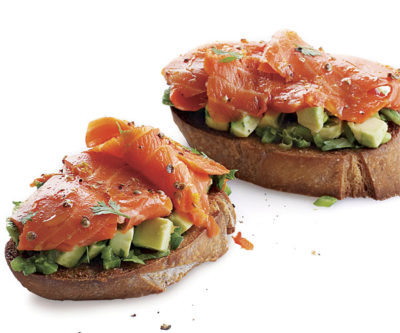
Marcus Samuelsson’s Gravlax Club Sandwich
Two Michelin Star – Aquavit Restaurant
excerpted from “Diet Simple: 195 Mental Tricks, Substitution, Habits & Inspirations”
(LifeLine Press)
This modern version of a gravlax presentation was invented by Chef Marcus Samuelsson, who arguably, made Manhattan’s Two Michelin Star Aquavit first soar the heights of popularity in the 1990’s. The Gravlax Club Sandwich combines the velvety textures of guacamole and gravlax, cured salmon (purchase or see recipe above), with crispy iceberg lettuce (or other greens) and chewy whole grain bread, preferably whole rye. If you want to make this sandwich and don’t happen to have gravlax, substitute smoked salmon for similar success.
I’ve used this recipe at parties. Just cut the sandwiches into smaller appetizer size sandwiches, into quarters, and place a tooth pick through all layers for easy grabbing. It’s always a hit.
Makes 5 sandwiches.
2 avocados
Juice from 2 limes
1/2 medium size red onion, finely chopped
1 medium-size ripe tomato, finely chopped
1 jalapeño pepper, cored, seeded and finely chopped
8 sprigs cilantro, finely chopped
Salt and freshly ground black pepper
10 thin slices of 100% whole grain rye bread, or whole wheat if rye is not available
5 thin slices of Gravlax
1 cup shredded iceberg lettuce (or other greens)
1. Mash the avocado with a fork and add the lime juice. Mix the chopped onion, tomato, jalapeño pepper, and cilantro and toss. Season with salt and freshly ground black pepper to taste.
2. Toast the bread slices lightly and let them cool.
3. Place a slice of gravlax on a slice of bread. Spread 1 to 2 tablespoons of the avocado mixture over the gravlax and sprinkle with shredded iceberg lettuce. Cover with a second slice of bread – or leave open-faced as the Swedes would do. Repeat with the remaining bread slices and gravlax.
1 Gravlax Club Sandwich: Calories 300, Total Fat 15g, Saturated Fat 2g, Cholesterol 5mg, Sodium 740mg, Total Carbohydrate 38g, Dietary Fiber 15g, Omega 3 Fatty Acids 0.82 g, Protein 11g
Omega-3-Fatty Acids: Superstars of the Nutrition World
- At June 21, 2011
- By Katherine
- In Articles
 0
0
On CNN: Katherine Discusses 5 Good-For-You Foods to Include in Your Diet This Year!
I first became interested in the power of Omega 3 when psychiatrists I work with began prescribing it for their depressed patients, finding it made positive improvements. Then I started hearing about its potential benefits for arthritis and other inflammatory diseases. Could it be possible that one nutrient could provide so many benefits?
The connection between Omega 3s and health was first observed in the 1970’s. Scientists observed that Greenland Eskimos had a reduced rate of heart disease, rheumatoid, arthritis and other ailments even though they ate a high fat and cholesterol diet. They hypothesized that the type of fat – marine derived – might play a role. Since then, study after study has confirmed that omega 3s in fish have a potent effect on reduction of heart disease.
Omega 3s work several ways in the heart. They prevent irregular heart beat, reduce fatty placques inside artery walls, decrease blood clotting, decrease triglycerides (blood fat), increase HDL (good cholesterol), and decrease inflammation.
“Omega 3 favorably effects a number of risk factors for cardiovascular disease and at the top of the list is reducing the risk of sudden death from heart attack,” says Penny Kris Etherton, distinguished professor of nutrition, Pennsylvania State University
But when it comes to the benefits of Omega 3’s that may be just the tip of the iceberg!
The two most potent omega 3 fatty acids are known as DHA and EPA. They’re usually found in a 50/50 or 60/40 ratio in fish. These fatty acids end up in every single cell membrane in the human body. They act as a cell lubricant, improve flexibility and communication between cells, and are important for cell metabolism and gene expression.
It’s been well-established that omega-3 fatty acids, a type of polyunsaturated fat found primarily in seafood, can improve your chances of living longer if you have heart disease. But its healing powers don’t stop there. Other organs may benefit. They have a positive impact from the womb to old age.
Omega 3’s reach is vast and the health benefits are intriguing the scientific community. While not an answer to every ailment, omega 3s are essential nutrients in the human body. Studies show that omega 3s may have significant physiological and psychological benefits.
In fact, Omega-3s are so important to human health, the National Academy of Sciences Food and Nutrition Board recently set a minimum daily requirement for the first time. For years we thought there was only one essential fatty acid, Omega 6 fatty acid (found in vegetable and soybean oils), but now scientists have added omega 3 to the list of essential nutrients humans must get from the diet.
But as we’ve discovered in nutrition, balance is everything. The two essential fatty acids, omega 6 and omega 3 must be in harmony with each other for proper functioning. If one or the other is too high or low, negative consequences result.
“If you eat too much omega 6, as is the case with today’s American diet, this promotes inflammation, blood clotting and constricts blood vessels,” says Artemis Simopoulos, president of the Center for Genetics, Nutrition and Health and the author of The Omega Diet (Harper Collins, 1999) “When your cells contain equal amounts of Omega 6 and Omega 3, as was the case with early humans, this promotes less inflammation, less constrictive blood vessels and prevents clot formation, all important functions in preventing many diseases.”
The ideal ratio of omega6 to omega3 is the hottest debate among omega3 researchers. Some say a ratio of 1:1 or even 2:1 is acceptable. If you followed the fatty acid recommendations of The National Academy of Sciences, and had an intake of 12 or 17 grams of omega 6 for women and men, respectively, and an omega 3 fatty acid intake of 1.1 and 1.6 for women and men, your ratio would be 10:1. But many omega 3 researchers say a ratio of 1:1 or even 2:1 or 5:1 is ideal. If you’re a typical American, your ratio could be as high as 12:1 or 15:1. Still others believe a specific ratio doesn’t matter. But they all agree on the need to get more omega3s.
Omega 3 concentrations are highest in the brain and nervous system. They are necessary for optimal functioning of the neurons, protect cells, decrease cell death and improve nerve transmission. Emerging research indicates Omega 3s may boost levels of the brain chemicals serotonin and dopamine, decreasing depression and violence.
“In 5 out of 6 of the clinical trials where people were given either a placebo or omega-3 fatty acids, on average, the symptoms of depression have been reduced by about 50%,” says Joseph Hibbeln, a psychiatrist at the National Institutes for Alcohol Abuse and Alcoholism. “This is true even when the subjects were already on anti-depressants and failing to respond to them.”
Hibbeln’s studies found an increase in depression, violence and homicides in countries who eat less fish as compared to countries who eat more fish. It may even improve conditions such as bipolar disorder and schizophrenia.
Bone density may be enhanced by omega 3 intake.
“Osteoporosis is lower in populations who eat more fish, such as Asians, when compared to Europeans who eat more calcium-containing foods” says Bruce A. Watkins, Ph.D., nutrition professor at Purdue University. The mechanisms aren’t completely understood, but omega 3’s may help support bone formation.
Omega 3 may also benefit the skin. The Greenland Eskimo studies found they don’t suffer much from psoriasis, a skin disease causing painful inflammation, redness and scales in its sufferers.
Laboratory studies have found that omega 3s suppress the hyperproliferation of the skin cells, which causes the disease to spread. When tested in humans, after 10 weeks, 60% of the subjects experienced a decrease in the area of psoriasis and a decrease in proliferation and inflammation.
“The dose is very essential,” says the researcher, Vincent Ziboh,Ph.D., professor, dept of dermatology, Univ of Ca at Davis. “The work is promising, but more research is needed to understand the mechanism and doses, and why it works for some but not others.”
Just as omega 3s inhibit proliferation of skin cells which causes psoriasis, new research is finding it inhibits proliferation of cancer cells in the breast, prostate and colon. This is a new area of research which hasn’t been tested widely. But, a new study found breast cancer patients responded better to chemotherapy and the cancer was less likely to spread when patients were given omega 3 fatty acids. There is epidemiological evidence that men who eat more fish have lower risk for prostate cancer.
There is evidence that omega3s may help prevent type 2 diabetes and improve diabetes by reducing insulin resistance.
The FDA recently approved Omega 3s for infant formulas because of the overwhelming evidence that it improves cognition and visual functioning in children. (mother’s breast milk provides it naturally, especially when she regularly eats fish)
Inflammatory diseases such as rheumatoid arthritis, ulcerative colitis, and Crohn’s disease may improve with omega 3 supplementation.
The studies are just beginning. More research needs to be done to understand who will benefit most from higher levels of omega 3 in their diets. Your genetics and environment play large roles in responsiveness to omega 3s. And while studies are very promising for a wide range of illnesses, the optimal amount of omega 3 and the ideal ratio of Omega 3 to Omega 6 are still hotly debated in the scientific community.
But what isn’t debated is that adult women need at least 1.1 grams and adult men need 1.6 grams daily, according to the Food and Nutrition Board of the National Academy of Sciences. Unfortunately, Americans don’t come even close to getting their omega 3 requirement. But we used to. Apparently, in our earlier evolutional stages, we ate plenty of wild greens, lean animals which grazed on high omega3 grasses, and fish high in Omega 3s, and our bodies evolved a need for it.
But today, omega 3s have largely been replaced with omega 6s, vegetables oils, especially soybean oil, which is used in large doses in processed foods and fast foods. And no longer do our animals graze on high omega 3 grasses, but on grains instead. This changes the fatty acid composition of the meat, to our detriment.
Most of the studies found a positive benefit with 500 to 1,000 mg of omega3s per day. The American Heart Association recommends all adults eat a variety of fish, particularly oily fish, at least twice weekly, which would provide an average of 500 mg daily. For patients with coronary artery disease, they recommend 1,000 mg daily, or double the seafood requirement (but never above 3,000 mg without a doctor’s supervision). Supplements are effective and may be used instead of eating the fish. Due to environmental pollutants found in fish, women of child-bearing age are recommended to keep their fish intake to no more than 12 ounces per week. But omega3 researchers believe the risk of not getting enough omega3 in your diet outweighs the potential risk of pollutants.
There are possible dangers to taking too much omega3 supplement. The inflammatory response is your immune system working, or overworking. This means that omega 3s are actually reducing your immune response when they reduce inflammation. So, large doses should be taken only with a doctor’s advice by people with compromised immune systems. There is also a slight increase in risk for hemorrhagic stroke or excessive bleeding.
As usual, I have to underscore balance. It may be safer to stick with food sources so you don’t go overboard and are more likely to stay in balance.
There is a vegetable source of omega 3, known as ALA. It’s found in flax seed oil, walnuts, and canola oil. The omega-3 fatty acid, ALA, is one which has to be converted to DHA and EPA, which means vegetable sources are less potent than fish oil. But it’s still a great idea to include them in your diet.
Some values of Omega-3’s in 3-1/2 ounces of Fish
Fish Omega-3’s (g)
Sardines in Sardine Oil 3.3
Atlantic Mackerel 2.5
Atlantic herring 1.6
Chinook Salmon 1.4
Anchovy 1.4
Atlantic Salmon 1.2
Tuna 0.5
Brook Trout 0.4
Catfish 0.3
Shrimp 0.3
Flounder 0.2
Found in: S.L. Conner and W.E. Conner, “Are Fish Oils Beneficial in the Prevention and Treatment of Coronary Artery Disease?” American Journal of Clinical Nutrition 66 (1997); 1020S – 1031S.
“Understanding Omega-3s” by Katherine Tallmadge, originally appeared in The Washington Post.
Cold- and Flu-Fighting Foods
- At January 22, 2011
- By Katherine
- In Articles, News
 0
0
What you eat profoundly affects your ability to fight disease. With all the nasty bugs going around this cold and flu season, it’s especially important to pay attention to boosting your immune system through nutrition. While every nutrient is important in your body’s ability to prevent and fight disease – from colds to cancer – certain nutrients play key roles. Eat foods high in these nutrients every day:
Protein
Protein is one of the most important nutrients in the human body, second only to water. The antibodies which protect your body against pathogens are made of protein, so without enough protein, your body has no chance. Eat protein at every meal. It is in a wide range of foods. Animal protein is in seafood, dairy, meat, poultry and eggs. Vegetarian protein can be found in legumes, soy, vegetables and grains.
Probiotics
The beneficial bacteria in live, active yogurt cultures may protect against infection-causing toxins, improve colon health, protect the intestinal lining, and strengthen immunity.
Fats and Oils
The type of fat you eat can improve the effectiveness of your body’s immune response because fat ends up in all of your body’s cell walls. To maximize your immune response, use oils in your cooking, instead of solid fat such as butter, stick with foods high in heart-healthy oils, such as nuts, avocados and seafood, which is high in omega-3-fatty acids.
Beta Carotene
Orange and deep green veggies and fruits, particularly…Carrot juice, carrots, butternut squash, pumpkin (or any orange-colored winter squash), sweet potato, greens such as spinach, collards, kale, turnip greens, beet greens, orange melons such as cantaloupe, red peppers, apricots, broccoli, plums, mangos papayas, plantains, Brussels sprouts, watermelon, asparagus
Vitamin C
Citrus fruits such as orange, lemons and grapefruit, peaches, sweet and hot peppers, papayas, pineapple, strawberries, broccoli,kiwi fruit, sweet potatoes, Brussels sprouts, kohlrabi,
Zinc
Oysters, lobster, crab, clams, fortified whole grain cereals, beans (legumes such as lentils, chick peas, black-eyed peas, soy beans, kidney beans, limas, pintos), turkey, lean beef and pork, whole grains such as buckwheat, whole wheat, cracked wheat (bulgur), oats, whole grain cornmeal, wild rice, yogurt, pine nuts, sunflower seeds, mixed nuts, peanuts
Magnesium
Whole grains such as buckwheat, wheat, oats, cornmeal, barley, brown rice, Also soybeans, pumpkin seeds, brazil nuts, cashews, greens such as spinach, beet greens, fish such as halibut, haddock and flounder and sole species, beans (legumes such as black beans, white beans, soy beans, navy beans, limas, black-eyed, great northern, kidney, chick peas,. lentils)
Vitamin E
Sunflower seeds, almonds, sunflower oil, safflower oil, canola oil, hazelnuts, pine nuts, spinach, turnip greens, beet greens, dandelion greens, canned pumpkin, carrot juice, broccoli, sweet potato, sweet red peppers, mangos, papayas
Vitamin D
New research indicates Vitamin D may augments the body’s ability to eliminate disease-infecting microbes. We get it from the sun and a few foods: fatty fish, egg yolks, fortified milk, orange juice, and cereals.
Cranberries
Have antibacterial qualities. Eat them dried for the highest levels of nutritious compounds.
White Mushrooms
Research at Tufts University shows white button mushrooms boost the immune system
Immune-Boosting Eating Strategies
* Eat a lean protein source at every meal – including breakfast, lunch and dinner. 20 grams for women and 30 grams for men is the amount most bio-available per sitting.
* Eat 5 cups of fruits and veggies per day – especially colorful varieties, eat at every meal and snack
* Eat a vegetarian meal every day using beans or soy beans for protein,
* Eat fish high in omega-3-fatty acids, such as salmon, herring, anchovies and sardines, at least two to four times per week, and vegetarian sources such as walnuts, ground flax seeds and canola oil,
* Use canola oil in your cooking and a fresh, newly harvested olive oil for drizzling,
* Eat whole grains at breakfast (such as cereal with skim milk or soy milk) and with sandwiches or wraps at lunch,
* Snacks: Try fat-free yogurt and fruit, fat-free yogurt dip or hummus with veggies,
* Toss nuts/seeds/dried cranberries in your whole grain cereal, your salad or your afternoon yogurt snack
* Skim milk or Soy lattes or teas are great snacks, too…
* Take a multivitamin-mineral supplement daily.
* Take a Vitamin D Supplement so that you are getting 1,000 to 2,000 IU/day
* If you are over 50, but particularly 65, look into supplementing your diet with Vitamin E, Vitamin B12, Zinc and probiotics such as lactobacillus in yogurt.
Of course, don’t forget to keep your blood moving by being moderately physically active with plenty of walking, yoga, etc. Get plenty of rest, wash your hands frequently, drink fluids (especially warm fluids which will send light steam into your nasal passages) and spend time with friends and loved ones. Studies have shown these habits increase your ability to conquer diseases – from colds to cancer.
Mindfulness in Eating and Living
- At January 09, 2011
- By Katherine
- In Articles, News
 1
1
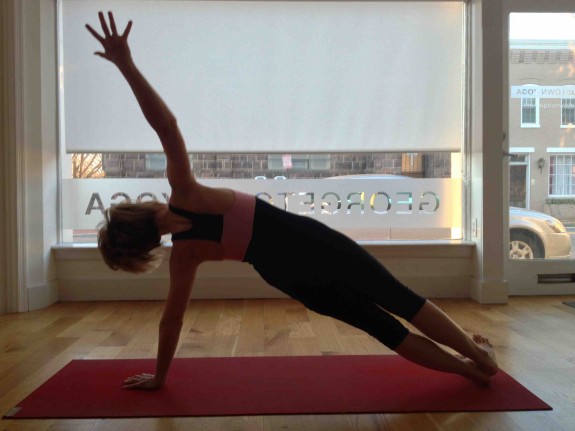
Mindfulness Through Yoga – Katherine doing a side plank
“There are many health benefits to being more mindful,” says Jack Killen, MD, Deputy Director of the National Institutes of Health’s National Center for Complementary and Alternative Medicine.
Meditation – and similarly centering prayer – for the religious among you, establishes pathways in the brain which improve impulse control, helping you work through problems and decisions more effectively. This simple, yet powerful, tool can transform your health and your life as it helps you make the decisions you need to make your life more satisfying, for instance, decisions about eating and exercise can be done more thoughtfully and purposefully..
In the Diet Simple chapter, “How to Beat Emotional Eating,” I give you a step-by-step guide to understanding how your feelings influence your eating.
The following are excerpts from a recent interview with Jack Killen explaining how meditation works to help you regulate your emotions, so you can reign them in to make healthier decisions for your long-term benefit:
Katherine: What is mindfulness?
Dr. Killen: Mindfulness is the ability to be present, more focused, and clear; for concentration to be more sustained, and for attention to be on what’s happening, instead of on thoughts, memories, and associations.
Katherine: Why is it important to be mindful? What are some scientifically proven benefits?
Dr. Killen: There is neurobiological research demonstrating that mindfulness engages pathways in the brain associated with emotion and impulse control, attention, and focusing. It allows your brain to be focused on what is here and now so you are better able to respond to situations appropriately. People who are more mindful are better able to handle emotional situations in more appropriate ways, are more able to think through a problem, are less likely to be distracted by issues that won’t help… There is evidence that you improve at mental tests, that emotion regulation is better and more appropriate, blood pressure is lower, stress hormones are lower, thereby reducing stress.
Katherine: How can one become more mindful? I understand prayer or meditation may be helpful?
Dr. Killen: There is a lot of evidence accumulating that meditation in all of its forms has beneficial physiological effects. Meditation is a way of exercising neurological pathways in the brain which help us become more mindful. But it is a bit like going to the gym and working out your muscles. It takes time and practice for the beneficial brain pathways to become established, similar to building muscular strength and flexibility.
Katherine: What are some examples of meditation which may have these kinds of emotional and behavioral benefits?
Dr. Killen: There are many ways you can train your mind to be more mindful. The jury is still out as to whether one is better than another. More likely, certain types of meditation will work well for certain people, and other kinds for other people. We are still working on how to measure and study meditation.
There are several types of meditation. “Mantra” meditation is repeating a phrase, or something with deep meaning over and over, or focusing on a candle, for instance. “Mindfulness” meditation is focusing on what is happening now instead of on thoughts, memories, and associations.
Katherine: Are yoga, tai chi, and other forms of exercise considered good ways to achieve mindfulness?
Dr. Killen: While mind/body interventions are difficult to research, there are some encouraging data. Yoga and meditation are intertwined in many ways. Studies suggest yoga is useful in increasing lung capacity, improving mood, well-being, posture, and there are similar benefits with Tai Chi. But there is a larger body of research on meditation and its benefits.
Katherine: Is there scientific evidence that these mind/body interventions such as meditation or yoga will promote healthier lifestyles?
Dr. Killen: This is what we are studying at the Center for Complementary and Alternative Medicine. Getting definitive answers to those questions through rigorous scientific research could make these kinds of health interventions more widely available. Important work going on right now is defining research methods. We need to understand, for instance, which yoga postures (“asana”) benefit your health and in what specific ways? If we want to make health interventions more widely available and accepted, we need to be able to describe their effects better, thus magnifying their benefits. We are currently studying if these mind-body interventions are a means to help people with metabolic syndrome, if they’d be useful in weight-control programs, helping people eat less, or more healthfully.
The Science of Slimming, Satisfying, Sumptuous Soups
- At January 09, 2011
- By Katherine
- In Articles, News
 0
0
Lose twenty pounds…
I love soups… Warm… Filling… Comforting… Psychologically Satisfying. What could be better right now than curling up with a hearty, delicious bowl of, say, Butternut Squash Soup with Curry and Ginger, Michel Richard’s Chicken Mushroom and Barley Soup*, A Classic Seafood and Tomato Soup*, Spiced Red Lentil Soup with Mint-Cilantro Raita*, Bordergrill Meatball Soup with Garlic and Cilantro*? (*all recipes found in “Diet Simple” and Diet Simple Farm to Table Recipes: 50 New Reasons to Cook in Season)… And it doesn’t hurt that studies show soups make it very easy to lose weight.
How? Classic studies have found that as long as the volume of a food is high, people can feel full with fewer calories. In one study, researchers varied the water content in three different first courses to see how it would affect peoples’ intake at the main course. The study subjects were fed either 1) chicken rice casserole, 2) chicken rice casserole served with a glass of water, or 3) chicken rice soup – basically the casserole with water/broth added. The researchers found the subjects who ate the soup consumed 26 percent less, about 100 calories fewer, at the main course, compared to the other conditions.
Researchers surmise that a large food volume caused by water, even without added calories, helps us feel more satisfied for several reasons. It causes stomach stretching and slows stomach emptying, stimulating the nerves and hormones that signal feelings of fullness. Also, visually seeing a large volume of food can increase your ability to feel satisfied by it, even though the calories are relatively low. Finally, the larger a meal and the longer a meal goes on, studies show, your satisfaction declines and you lose interest in completing it. Water is the component in food which has the largest influence on how much you eat. This study, and many others like it, find eating a high-water-content, low-calorie first course, such as soup, enhances satisfaction and reduces overall calorie intake.
Bottom Line: Lose 20 pounds
Start lunch or dinner with a bowl of broth-based vegetable soup OR turn main courses into soups by adding water or broth. Save 200 calories a day! Do this every day and lose twenty pounds in one year… Wasn’t that SIMPLE? And oh…. so painless!
NOW THIS IS SOMETHING I CAN LIVE WITH… FOREVER!
HOW ABOUT YOU?
Photo: Almond Board of California
ABC Primetime News Special: Celebrity Weight Loss
- At January 01, 2011
- By Katherine
- In Articles, News
 0
0
Katherine explains on ABC’s Primetime News Special, “Celebrity Weight Loss: What Really Happens” Why… For Your 2011 New Year’s Resolution, do yourself a HUGE favor… Just Say NO…. NO MORE DIETS!
Don’t be a sucker for the endless, unrealistic promises of these SMUT purveyors! Yes, you heard the usually mild-mannered Katherine Tallmadge correctly….
I hate fanatical diet programs! They take the joy out of eating. Heck, they take the joy out of living! And the research is pretty clear by now that too-tough diets simply don’t work for most people. Even if you lose weight initially, you’re going to get bored or frustrated with all the restrictions and gain your weight back. Or maybe the diet is just too darn unhealthy to stay on.
So if you ever see a diet which emphasizes eating a very low carbohydrate diet or even an extremely low fat diet, or if it recommends packaged foods, liquid supplements or diet pills, I recommend you run – quickly! – in the other direction. Because it’s not something which can – or should – be maintained.
- A good diet is one you can follow for life. One which you enjoy. It’s a strategy which makes you feel energetic and comfortable.
- It’s a way of living which science has shown will enhance your health, the quality of your life, and possibly even extend your life.
- A good diet is one which works with your lifestyle, whether you’re a full-time mom, a high powered professional – or a combination thereof!
- Studies verify weight loss maintainers follow diets with flexibility and choice, ones which can fit into their lives.
I’m passionate about helping people solve their weight problems which saps them of health, energy and happiness. Let alone all of the horrible and preventable life-threatening and chronic diseases which inevitably occur, like heart disease, stroke, cancer and diabetes.
Though the problem of overweight and obesity is a large one and seems to be growing (two thirds of all adults and one out of three children), it’s a manageable and solvable problem. One of the reasons people struggle so much with their weight is they make the mistake of believing they need to do something radical to lose weight – like restricting your eating to cabbage soup for every meal, fasting, cutting out all carbohydrates, cutting out all fats, constantly figuring out percentages of this or that nutrient, going on a liquid diet, or taking unsafe diet pills and supplements.
The studies which analyze successful weight loss maintainers versus weight relapsers confirm the radical diets actually backfire. So don’t get seduced by their empty promises. Stop being a sucker! If the diet is too strict, punishing or depriving, it can’t last, and the weight is gained back. If those diets produce anything, it’s eating disorders, feelings of deprivation and depression, and demoralizing yo-yo’ing weight.
Instead, make your 2011 Resolution to start…
- A way of eating you’ll love, and will always satisfy your hunger and cravings,
- A joyful lifestyle you’ll want to keep forever.
Look for a way of eating and living which will give you…
- A greater sense of well-being, less anxiety and depression,
- Increased metabolism, so your body burns fat more quickly and efficiently,
- A heart working more efficiently, decreasing your risk of a heart attack,
- Lower blood pressure, lower cholesterol, lower blood glucose levels,
- A boosted immune system that cuts your risk of cancer, colds, flu and disease, Stronger bones and stronger muscles,
- Improved techniques for coping with daily stresses and strains of your busy life.
As a weight loss counselor, one of the most valuable lessons I’ve learned is that weight loss doesn’t have to be – and can’t be – a depressing, depriving, angst-ridden chore. I’ve witnessed the joy, surprise and relief of clients as they learned that losing weight the “Diet Simple” way is an easy and positive experience.
This Looks Healthy, But Is It?
- At December 27, 2010
- By Katherine
- In Articles, News
 0
0
A restaurant meal may look like it’s good for you, but we had a lab count the actual calories. Here are the surprising numbers.
By Todd Kliman , Sara Levine , Ann Limpert
We set out to find out. We dispatched staff to pick up three-course meals from five restaurants, each with a different cuisine. Then we packed the food up in containers filled with dry ice and shipped it to a lab in Des Moines, Iowa, for burning—yes, burning—to measure its caloric content. We also had it tested for proteins, fats, and carbohydrates.
The results: Who knew that a three-course sushi dinner has more carbs than a three-course French dinner? Going out for Thai sounds like an excursion into light, bright cooking, but a meal at a Thai restaurant can be nearly as caloric as a certain New Orleans – Style restaurant. Note to all the lobbyists who chow down on the latter’s shrimp and grits and beignets several times a week: In one dinner you may be taking in more than a day’s worth of calories.
Lab results in hand, we invited two experts to help us make sense of the numbers. Walter Scheib, who as White House chef under Bill Clinton and George W. Bush was tasked with finding out the nutritional content for every meal he served to the First Family—and who went on diets with First Ladies—commented on each dish. Katherine Tallmadge, a DC nutritionist who has been a guest expert on TV shows from Food Network programs to Good Morning America, offered commentary and alternative recommendations for each meal.
Our hope is not that you’ll come away from this vowing to steer clear of these restaurants. Rather, we hope you’ll come away a wiser, healthier diner.
Menu
Vegetable Spring Rolls With Sweet-and-Sour Sauce
Roasted Duck With Red Curry Sauce, Side of White Rice
Thai Coconut Custard With Sweet Rice
Calories: 2,226
Carbs: 307 grams
Fat: 82 grams
Protein: 65 grams
Walter Scheib says: “[Spring rolls] are little grease sponges. But there are wonderful things called summer rolls, which are basically spring rolls that are fresher and lighter—and without the deep-fried part.”
“Thai desserts are based on rice and coconut. Go for sorbets or fruit ices—just not coconut ice cream, which is basically frozen butter. Ask if they’ve got a fresh mango with a squeeze of lime.”
“Most people think of Oriental cuisines as ‘light.’ When I worked at the White House, this is what Mrs. Clinton used to call gratuitous fat—fat in your food that you don’t necessarily see. You’ve got coconut milk, which is straight fat, and then the duck skin.”
What to get instead: Coconut milk is the biggest source of calories and fat on this diet-busting menu. Often you don’t even know it’s there. Instead look for dishes that get their flavor from citrus juices, spices, vinegars, and herbs.
Katherine Tallmadge, a Thai Restaurant regular, orders lemongrass soup, beef salad, and steamed whole fish: “If your main dish is a lot of food, you probably don’t want the extra rice. A cup is 200 calories.” If you’re going to have noodles, get cellophane noodles, made with mung beans instead of flour. And keep in mind that at many Asian restaurants, portions are served family-style and meant for sharing.
Photo: Washingtonian Magazine
New Study Finds Certain Foods Lead to Living Longer
- At December 22, 2010
- By Katherine
- In Articles, News
 0
0
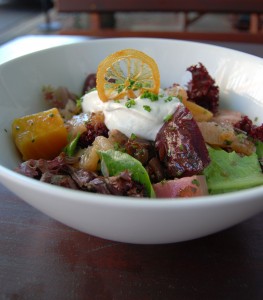 Eating Healthier Means Living Longer
Eating Healthier Means Living Longer
According to New Study in the Journal of the American Dietetic Association
Researchers found that diets favoring certain foods were associated with reduced mortality.
The leading causes of death have shifted from infectious diseases to chronic diseases such as cardiovascular disease and cancer. These illnesses may be affected by diet. In a study published in the January 2011 issue of the Journal of the American Dietetic Association, researchers found that diets favoring certain foods were associated with reduced mortality. Scientists investigated empirical data regarding the associations of dietary patterns with mortality through analysis of the eating patterns of over 2500 adults between the ages of 70 and 79 over a ten-year period.
By 2030, an estimated 973 million adults will be aged 65 or older worldwide. The objective of this study was to determine the dietary patterns of a large and diverse group of older adults, and to explore associations of these dietary patterns with survival over a 10-year period. A secondary goal was to evaluate participants’ quality of life and nutritional status according to their dietary patterns.
By determining the consumption frequency of 108 different food items, researchers were able to group the participants into six different clusters according to predominant food choices:
- “Healthy foods” (374 participants)
- “High-fat dairy products” (332)
- “Meat, fried foods, and alcohol” (693)
- “Breakfast cereal” (386)
- “Refined grains” (458)
- “Sweets and desserts” (339).
The “Healthy foods” cluster was characterized by relatively higher intake of low-fat dairy products, fruit, whole grains, poultry, fish, and vegetables, and lower consumption of meat, fried foods, sweets, high-calorie drinks, and added fat. The “High fat dairy products” cluster had higher intake of foods such as ice cream, cheese, and 2% and whole milk and yogurt, and lower intake of poultry, low-fat dairy products, rice, and pasta.
The study was unique in that it evaluated participants’ quality of life and nutritional status, through detailed biochemical measures, according to their dietary patterns. After controlling for gender, age, race, clinical site, education, physical activity, smoking, and total calorie intake, the “High-fat dairy products” cluster had a 40% higher risk of mortality than the “Healthy foods” cluster. The “Sweets and desserts” cluster had a 37% higher risk. No significant differences in risk of mortality were seen between the “Healthy foods” cluster and the “Breakfast cereal” or “Refined grains” clusters.
Photo by Polly Wiedmaier
# 1 THE SUNDAE SOLUTION
- At December 19, 2010
- By Katherine
- In Articles, News
 0
0
NOW it’s official: You can eat a chocolate sundae every day and still lose weight…
One of my clients, Jennie, almost always snacks in the afternoon. She view these snacks as ‘rewards” for getting through another day of drudgery. Of course, these same snacks contribute to her weight problem.
My advice to her (and I’m pretty proud of it ): Have a chocolate sundae every day.
I know this sounds strange, but here’s why it helps. The chocolate syrup that you pour over ice cream isn’t exactly lean, but that’s okay because underneath the chocolate – the sundae part – is fresh fruit instead of ice cream. Fruit is a lot better for you than ice cream, and the chocolate provides a slightly sinful incentive to make the switch seem worthwhile.
Almost any fruit works with chocolate syrup – strawberries, bananas, peaches, take your pick. Apart from the fact that a fruit sundae is deliciously fresh tasting, filling, satisfying, and low in saturated fat and calories, it makes a great substitute for other snacks that really load on the calories.
THE SUNDAE SOLUTION has been responsible for hundreds of people eating – and LOVING – more fruit. If you try it, you will too!
BOTTOM LINE: Lose 9 to 35 pounds
A tablespoon of regular chocolate syrup has about 50 calories. Pour it over fruit, and your total is about 110 to 160 calories. Compare that to the usual snacks – a candy bar or protein bar, for example, has about 250 calories, and an ice cream cone has about 500 – and you can see why substituting the fruit sundae can lead to impressive amounts of weight loss. Make the switch every day, and you can count on losing 9 to 35 pounds in a year.
Get more wonderful tips like this that will make your diet simple!
Click here to buy “Diet Simple,” the book
Omega-3s Superstars
- At December 11, 2010
- By Katherine
- In Articles
 0
0
Original Content: The Washington Post
I first became interested in the power of omega-3 fatty acids when psychiatrists I work with began prescribing them for their depressed patients. Then I started hearing about their benefits for arthritis and a host of other diseases. And I couldn’t help but wonder, could it be possible that one simple change in the diet could provide so many benefits?
The connection between omega-3 fatty acids and health was first observed in the 1970s. Scientists noted that compared with their counterparts in Scandinavia, Greenland Eskimos had a reduced rate of heart disease, rheumatoid arthritis and other conditions even though they were eating a high-fat diet. The scientists hypothesized that the type of fat — marine derived — might play a role.
Since then, study after study has confirmed that omega-3 fatty acids, a type of polyunsaturated fat found primarily in fish, have a potent and positive effect on heart disease patients. Omega-3s prevent irregular heart beat, reduce plaque inside artery walls and decrease blood clotting, triglycerides (blood fat), blood pressure and inflammation.
“Omega-3s favorably affect a number of risk factors for cardiovascular disease and at the top of the list is reducing the risk of sudden death from heart attack,” says Penny Kris-Etherton, a nutrition professor at Pennsylvania State University.
But the healing powers of omega-3s don’t stop there. Research suggests they may reduce the risk of diabetes, reduce insulin resistance in people with diabetes, enhance bone density and inhibit proliferation of cancer cells in the breast, prostate and colon and improve skin condition by curbing psoriasis. Inflammatory diseases such as rheumatoid arthritis, ulcerative colitis and Crohn’s disease seem to improve with more omega-3s. In infants, it improves cognition and visual acuity. And emerging research indicates omega-3s may boost levels of the brain chemicals serotonin and dopamine, decreasing depression and violent behavior.
While not an answer to every ailment, omega-3 fatty acids possess considerable healing powers. As an indication of their importance, the Food and Nutrition Board of the National Academy of Sciences recently established a minimum daily requirement: 1.1 grams for adult women, 1.6 grams for adult men.
But in nutrition, balance is everything. There is another essential fatty acid, omega-6. Each type of fatty acid has its important functions. But if the level of one of the fatty acids is too high, it competes with and interferes with the functioning of the other.
“If you eat too much omega-6, as is the case with today’s American diet, this interferes with omega-3 action, promotes inflammation, blood clotting and constricts blood vessels, and causes a huge array of diseases,” says Joseph Hibbeln, a psychiatrist at the National Institutes for Alcohol Abuse and Alcoholism.
However, the ideal ratio of omega-6 to omega-3 is a source of heated debate among researchers. If you followed the fatty acid recommendations of the National Academy of Sciences, your ratio would be 11 to 1. But many omega-3 researchers say a far lower ratio is ideal for optimal health. Still other researchers believe a specific ratio doesn’t matter but the amount of omega-6 and omega-3 you’re eating is important.
What all the scientists do agree on is the need to consume more omega-3s. Americans don’t come close to getting their omega-3 requirement. But we used to.
“Early humans ate plenty of high-omega-3 foods, wild greens, seafood, lean animals that grazed on high-omega-3 grasses, such as purslane, and our bodies evolved a need for it,” says Artemis Simopoulos, president of the Center for Genetics, Nutrition and Health and author of “The Omega Diet” (Harper Collins, 1999).
Today, the highest concentration of omega-3s is found in fish. The two most potent omega-3 fatty acids are known as DHA and EPA and are usually found in oily fishes, such as mackerel, salmon and tuna. These fatty acids end up in every single cell membrane in the human body. They act as a cell lubricant, improve flexibility and communication among cells.
Omega-3s are also found in plant sources, especially flaxseed oil, canola oil, walnuts and some vegetables. These fatty acids, while valuable, are not as beneficial as the more potent omega-3s found in fish.
But for those who are concerned about the discovery of mercury and other contaminants in seafood, plant sources are important to consider. These omega-3s occur as ALA, a type of fatty acid that must be converted in the body to the more usable forms of DHA and EPA.
Omega-6s are found in safflower, soybean and corn oil, which are in many processed foods. Because of Americans’ increased intake of processed and fast foods over the past 50 years, omega-6s have largely replaced omega-3s in the modern diet.
Though grass-fed animal meat, available in some stores and farmers markets, contains at least two times more omega-3s than grain-fed animal meat, it doesn’t come close to the levels you can find in fish. Animal scientists are working on improving the omega-3 fatty acid content of beef, chicken and other meats by feeding the animals flax and other high-omega-3 foods, but these products are a long way from being sold in your grocery store.
You can now buy omega-3-enhanced eggs from chickens that are fed algae, flax and/or fish. The reported amount of omega-3s contained in each egg, however, varies according to brand. These amounts of omega-3s are still considerably lower than levels found in fish.
Omega-3 supplements can be effective, though it is possible to take too much. For example, by reducing inflammation, omega-3s also may reduce the immune response. There is also a slight increased risk for hemorrhagic stroke or excessive bleeding. Large doses should be taken only under a doctor’s supervision.
How much fish do you need to consume? Most of the studies on omega-3s found a positive benefit with 500 to 1,000 milligrams per day. In response, the American Heart Association now recommends all adults eat a variety of fish, particularly oily fish, at least twice weekly (three-ounce portions), which would provide an average of 500 milligrams per day. For patients with coronary artery disease, the AHA recommends 1,000 milligrams daily — but never above 3,000 milligrams.
As usual, balance is paramount.
Here’s How You Can Get There
- At December 11, 2010
- By Katherine
- In Articles
 0
0
Original Content: Washington Post
I believe that low-carbohydrate diets should be approached cautiously. But if you’re determined to follow a low-carb diet, or if you’re trying to transition from a low-carb diet to a healthier one, here are several tips that will make your experience healthier and the results longer lasting:
• Eat at least 130 grams of carbohydrates daily. In a recent report, the National Academy of Sciences’ Food and Nutrition Board said you need a minimum of 130 grams of carbohydrate for brain function. (Low-carb diets vary but rarely recommend you eat more than 100 grams per day.) To maximize the nutrition and minimize the glucose and insulin response, focus on whole, natural foods and deemphasize processed and refined carbohydrates such as those made with white flour or sugar.
• Eat at least 25 grams of fiber daily. One of the keys to weight loss is to feel full with fewer calories. High-fiber foods help make this happen. Studies show that eating 25 grams for women and 38 grams for men is important for optimum health. Fiber comes in many different forms in food. It is concentrated in the skin of fruits and vegetables, such as apples, corn, and legumes. It is in the seeds of vegetables and fruits such as berries and cucumbers. It is found in the germ and bran or coating that surrounds wheat kernels and other grains. These essential parts of the grain are removed to create white flour and other refined grains.
• Minimize saturated fats. If there’s one thing science has shown fairly conclusively, it’s that saturated fat — found in animal fat — is bad news.
A diet high in saturated fat increases the risk for coronary artery disease by causing LDL (bad cholesterol) levels to rise. New evidence suggests this may also increase the risk for Alzheimer’s and dementia, and even increase belly fat, which is a risk factor for heart disease and diabetes. A diet high in red meat and animal fat has been correlated with several cancers.
To minimize saturated fat, choose seafood, poultry without skin, lean red meats and reduced fat or fat- free dairy products. Concentrate on established healthy fats found in fish, nuts, canola and olive oils.
• Get your essential nutrients. With an intake of approximately 160 grams of carbohydrates a day, you can still obtain the vital nutrients essential to health. Here is a basic breakdown:
• three servings of dairy or
calcium-fortified soy: 36 grams carbs
• three servings fruits: 45 grams carbs
• four servings vegetables: 20 grams carbs
• four servings grains, preferably whole: 60 grams carbs
• Don’t rely on supplements to replace foods. To their credit, most advocates of low-carb diets recommend supplements because they realize the diet is deficient in dozens, if not hundreds, of important nutrients. But supplements can never take the place of real food. A whole, natural food is the perfect package for the vitamins, minerals and beneficial phytochemicals your body needs not just to survive but to thrive. Studies on supplements have failed to show the same health-enhancing and cancer-preventing effects as a diet high in fruits and vegetables.
• Avoid processed low-carb foods. One of the positive things about the low-carb movement is that it persuaded people to reduce their intake of processed, refined foods (a k a junk foods) and instead turn to whole foods. But now the food industry has responded to the low-carb craze with low-carb foods with low nutritional value. These foods undermine the nutritional benefits gained by cutting out processed food. Besides, have you noticed that most of the low-carb foods contain the same number of calories — and often more saturated fat — as their high-carb counterparts?
• Increase physical activity. No matter what you eat, if you’re physically active, your body clears glucose and fat more quickly and efficiently from the blood stream so there is no need to worry about high insulin levels.
• Live a little! If you restrict yourself too much, your diet is doomed to fail. Research shows that those who successfully maintain weight loss reduce the fatty or sweet foods in their diet but still treat themselves occasionally. I’ve found a once-a-week splurge is good for the soul.
— Katherine Tallmadge
Work It In
- At December 10, 2010
- By Katherine
- In Articles
 0
0
Original Content, The Washington Post
You risk losing many of the benefits of calorie restriction once you stop dieting. But I’m convinced you can incorporate many of the discoveries of calorie-restricted diets into your life in a more moderate and sustainable way so that your health benefits can last:
• Exercise. It naturally clears glucose from your bloodstream and that keeps insulin levels low. It creates a condition physiologically similar to calorie restriction. People who are more active have less disease and live longer. Reducing refined sugar and flour may also help reduce blood sugar and insulin.
• Eat more foods high in antioxidants such as green tea and deeply colored vegetables and fruits: Berries, spinach, kale, cabbage and broccoli, pumpkin and carrots are some examples.
• To reduce inflammation, eat more foods high in omega-3 fatty acids — fatty fish such as salmon, herring and sardines, or vegetarian sources such as walnuts and flax seeds. Also, reduce saturated fats, found mostly in animal fats
• Lose weight. It will reduce metabolism, hormones, growth factors and cell proliferation.
• To keep calories at low but healthy levels while still feeling full, increase consumption of high- fiber, high-water- containing, nutrient- dense, low-calorie foods such as fruits, vegetables, whole grains and legumes. Reduce consumption of nutrient-poor, calorie- dense processed and refined foods such as chips, crackers and sweets.
— Katherine Tallmadge
Eat Less, Live Longer?
- At December 10, 2010
- By Katherine
- In Articles
 0
0
Original Content, The Washington Post
Lose weight! Feel great! Live longer!
Every diet guru makes the same claims. But can so many different plans get the same results? Can you achieve the same positive responses from the low-carb, high-saturated-fat Atkins regimen as you do from the abstemiously low-fat, almost vegetarian approach at the other extreme?
This may come as a surprise, but the answer is probably yes. While these regimens seem very different, they share a significant common theme: They restrict your calories and cause weight loss.
Scientists are finding there may be a more straightforward way to not only lose weight, but to avoid heart disease, cancer, diabetes and to even live longer. The secret is to focus sharply on reducing calories.
A growing body of scientific evidence shows that any time you restrict calories you will receive significant health benefits that may not only help you lose weight, but effect a series of biological mechanisms that may prolong your life. (It is important to note that once you go off these diets and if you gain weight, all of the positive benefits are lost.)
It works in animals. Rats fed calorie-restricted diets live 50 percent longer than their normally fed counterparts. Their quality of life is superior, too. They’re healthier, more active, their hormones are at more youthful levels and their immune function is superior. The same is true with fish, flies and worms. There have been preliminary positive results with rhesus monkeys and even humans.
The results of the first human study on calorie restriction, performed at the Washington University School of Medicine in St. Louis, are interesting.
“People on severe calorie restriction have a reduced risk of developing stroke, heart attack, arteriosclerosis and diabetes,” said Luigi Fontana, instructor of medicine at the university’s division of geriatrics and nutritional science and lead author of the study in the Proceedings of the National Academy of Sciences published last month.
“Since 40 percent of Americans die of these causes, these health improvements would increase many peoples’ life expectancy,” said Fontana. “Calorie restriction would also help reduce the 300,000 cases of preventable death due to obesity.”
The kind of calorie restriction being studied shouldn’t be confused with malnutrition (which occurs with starvation or semi-starvation when food is scarce) or in disordered eating. The important difference is while the calorie restrictors cut calories by 25 percent, they eat dietitian-designed, doctor-supervised diets containing all of their essential nutrients. They eat about 20 percent to 26 percent of their calories from protein, 28 percent from fat and the rest from high-volume, low-calorie, nutrient-dense carbohydrates such as fruits, vegetables, whole grains and legumes.
As pure science, calorie restriction makes a compelling case. Anecdotally, we’ve all seen how reducing calories restores health, energy and well-being in our friends and colleagues who are on diets and losing weight. But most don’t continue on those regimens, and, therefore, the benefits don’t last. As a practical matter, long-term severe calorie restriction is probably unworkable for most Americans, and it still hasn’t been proven that it’s healthy or safe for humans in the long run.
“Calorie restriction studies are provocative; but you may end up with deficiencies dangerous for your health,” says Fontana. “Chronic calorie restrictors are taking risks.”
But the research is finding that there are certain aspects of aging that we can change. There are several theories as to why and how calorie restriction prolongs your life. The reasons it reduces disease risk factors and prolongs life are probably varied:
• It lowers your metabolic rate. “The higher your metabolism, the more oxygen your body burns,” says Eric Ravussin, a professor at the Pennington Biomedical Research Center in Baton Rouge, La. “This produces ‘reactive oxygen species,’ which are byproducts of metabolism and are harmful.”
ROS damage the building blocks of life, including protein, lipids and genetic material, DNA. This leads to abnormal genetic signals, causing cancers and disregulation of cells, leading to organ damage, skin deterioration, and maybe even gray hair — all signs of aging.
• Calorie restriction reduces inflammation, which is one cause of many diseases, such as heart disease and arthritis. Also, calorie restriction reduces some “growth factor” hormones.
“When you eat extra calories, your body gets a signal that you’re growing and growth factor hormones promote cell proliferation, which may increase the risk of cancers, among other dangers,” says Fontana.
• Calorie restrictors also have lower hormone levels, body temperatures, plasma insulin levels, and higher levels of the hormone, DHEA. The same is also true about people who live longer, according to the Baltimore Longitudinal Study on Aging, an ongoing study funded by the National Institutes of Health.
• Calorie restriction reduces body fat, which research shows has many benefits.
“We used to think body fat was inert, But it isn’t,” says Fontana. “Fat tissue produces hormones, pro-inflammatory chemicals, which regulate metabolism, the immune system, inflammation and the progression of artery hardening, so that when you have less body fat, you get many biological benefits.”
There are many advantages to calorie restriction. But there are downsides to severe calorie restriction, too. In fact, scientists are not recommending it as a key way to stay healthy, since the research is not complete. Abnormally low metabolism can cause irritability or depression in some people or may backfire and lead to an eating disorder. If you eat too few calories and hormone levels lower too much, this may lead to infertility problems or increase chances of osteoporosis in women.
I believe that one of the real benefits of the low-calorie approach is that it places important emphasis on the central issue: reducing calories, rather than getting diverted into seemingly important, but in fact, peripheral matters, such as carb and fat counting.
Katherine Tallmadge is a Washington nutritionist and author of “Diet Simple” (Lifeline Press, 2004). Send e-mails to her at food@washpost.com.
© 2004 The Washington Post Company
The Numbers
- At December 10, 2010
- By Katherine
- In Articles
 0
0
The Numbers
Original content, The Washington Post
Here are some common foods and their saturated fat content (calories/grams saturated fat):
Butter, 1 tablespoon 102/7
Corn oil, 1 tablespoon 120/2
Olive oil, 1 tablespoon 119/2
Canola oil, 1 tablespoon 124/1
Prime rib, 1 ounce 110/11
Lean roast beef, 1 ounce 47/2
Skinless chicken breast1 ounce 48/0.3
Cheese, 1 ounce 100/6
Reduced fat cheese, 1 ounce 70/3
Whole milk, 1 cup 150/5
1 percent milk, 1 cup 102/1.5
Skim milk, 1 cup 86/0
— Katherine Tallmadge
So Saturated
- At December 10, 2010
- By Katherine
- In Articles
 0
0
Original Content, The Washington Post
Saturated fats are the “evildoers” of the nutrition world, and they come in the guise of some of the most delicious foods: butter, cream, cheese, chocolate, coconut, prime rib.
How could something so good be so bad? Well, first of all, let me assure you that not all saturated fats are created equal. In fact, some of the foods high in saturated fats have redeeming qualities that may mitigate their damage. Second, if there’s one thing I’ve learned in the field of nutrition, there’s never just one magic — or deadly — bullet.
I discovered the power of saturated fats while working with patients. I found when saturated fats are cut to extremely low levels, cholesterol levels drop precipitously. I was stunned at what a simple dietary change could achieve.
The National Academy of Sciences says Americans should minimize their intake of saturated fats, which play a role in raising bad cholesterol (LDL) and increasing the risk of cardiovascular disease, which kills half of all Americans.
Foods contain a mixture of fats, some of which are essential for health. Certain polyunsaturated fats (the omega-3 fatty acids in seafood, flax and walnuts, and omega-6 fatty acids in soybean and corn oil) are essential. You need them in your diet because your body can’t synthesize them, and you’ll develop deficiency symptoms without them.
Saturated fats are nonessential fats, which means that the body can make them on its own, so they’re not needed in the diet. Chocolate and animal fats found in dairy, meat, lard and tallow are high in a saturated fat called stearic acid. While other saturated fats raise LDL levels, stearic acid has been found to have a neutral effect on LDL. In fact, some folks in the chocolate, dairy and meat industries have pointed to this neutral effect as a reason to go ahead and enjoy these foods without worrying about the risk of heart disease.
But a new study appears to challenge this claim. Scientists have found that while it’s true that stearic acid doesn’t raise LDL levels, it still may increase the risk of cardiovascular disease because it increases fibrinogen and C-reactive protein levels in the blood. Fibrinogen and C-reactive protein are both indicators of inflammation, an emerging risk factor in cardiovascular disease development as well as cancer and many other diseases.
“This news is going to change the thinking about stearic acid being neutral,” said David Baer, lead investigator of the study, conducted at the Department of Agriculture’s Diet and Human Performance Laboratory in Beltsville.
In addition to stearic acid, there are three other common saturated fats — palmitic acid (found in palm oil, chocolate and meat), lauric acid (found in coconut) and myristic acid (the most potent LDL-raiser, found in dairy and coconut). These three fats raise not only LDL but also HDL, thus keeping constant that important ratio between the “bad” and the “good” cholesterol. Scientists are not sure how much protection this provides, despite the fact that HDL levels are high. These saturated fats may also cause inflammation, but the research isn’t definitive yet.
But some foods that are rich in saturated fat contain protective, healthy nutrients as well. Chocolate, for instance, contains antioxidants and anti-platelet factors. Coconut also contains antioxidants. There is some evidence that these benefits may help outweigh the risks from the saturated fat. But most experts believe it is still not good to eat large amounts of these foods.
Saturated fats, which are solid at room temperature, have other negative effects. When they’re high in the diet, they replace in the body’s cells the more positive unsaturated fats, which are liquid at room temperature. The saturated fats become incorporated into cell membranes and make the membranes more rigid, causing malfunctions leading to, among other things, insulin resistance.
“Saturated fats can reduce insulin’s ability to control blood glucose and in the long run may cause type 2 diabetes,” says Frank Hu, associate professor of nutrition and epidemiology at Harvard University’s School of Public Health.
Adding to the diabetes connection, a recent Johns Hopkins University study found that dietary saturated fat correlated with higher levels of belly fat, a known risk factor in heart disease, hypertension and diabetes. High-saturated-fat diets may even play a role in dementia and Alzheimer’s disease.
Unsaturated oils do just the opposite. If they’re prevalent in the diet and can compete successfully with saturated fat, they incorporate into the cell membranes instead and increase cell fluidity and flexibility, which is one of many reasons scientists believe they’re so beneficial to overall health.
In fact, there is also a theory that the ratio of polyunsaturated fat to saturated fat in the diet may be more influential in heart disease risk than the absolute numbers — yet another example of the importance of balance in the world of nutrition.
Several large studies have verified that when people replace saturated fat with unsaturated oils, a 40 percent to 65 percent reduction in heart disease deaths can be achieved, especially when a little omega-3 fatty acid is added. Interestingly, these studies showed only a modest reduction in LDL, which illustrates the importance of paying attention to other risk factors such as inflammation.
Comparatively, treatment with statin drugs that lower LDL cholesterol (arguably one of the most prescribed medications today) reduces heart disease deaths by only about 30 percent because it doesn’t remove all the risks. So even when taking statins, dietary change is essential.
“Diet and lifestyle change can work better than statins,” says Ernst Schaefer, director of the Lipid and Heart Disease Prevention Program at the New England Medical Center. “But the problem is compliance.”
Many people find it challenging to reduce the amount of saturated fat in their diets. Life without chocolate or butter seems draconian and a goal that is impossible to meet. But a heart-healthy diet need not be so austere if you keep balance and variety in mind.
The trouble comes with extremes, when you’re eating burgers, fries and a shake — all in one meal. Try this instead: Choose a leaner burger with a green salad and vinaigrette on the side and a bowl of berries and nuts for dessert. The antioxidants from the salad and berries, and the healthy fats from the nuts and vinaigrette just might counterbalance the saturated fat in the burger.
Another solution would be to try to always have surf with your turf. The anti-inflammatory compounds in the omega-3 fatty acids in fish may help counteract the inflammatory compounds in the beef.
“And if you burned what you ate through activity, this all wouldn’t be as much of a problem!” says Baer, research physiologist at USDA.
Know your saturated fats:
Health authorities say that if your LDL is lower than 100, you shouldn’t exceed 10% saturated fat calories. If your LDL is higher than 100, you should keep your saturated fat to no more than 7% of your total calories. I’ve found you can even take it lower, say 3 – 4% of calories- for more dramatic results. But you’ll never get to zero, as a little saturated fat is in just about everything, even some healthy foods!
10% 7% 3-4%
For the typical 2,000 calorie diet, that’s 22 grams, 15 grams, 7 – 9 grams
Here are some common foods and their saturated fat content
cal/g sat fat
Butter, 1 Tbsp 102/7
Corn Oil, 1 Tbsp 120/2
Olive Oil, 1 Tbsp 119/2
Canola Oil, 1 Tbsp 124/1
English Walnuts 185/2
Prime Rib, 1 oz 110/11
Lean Roast Beef, 1 oz 47/2
Skinless Chicken Breast, 1 oz 48/0.3
Wild Coho Salmon 39/0.3
Flounder 33/0.1
Cheese, 1 oz 100/6
Reduced Fat Cheese, 1 oz 70/3
Whole Milk, 1 cup 150/5
1% Milk, 1 cup 102/1.5
Skim Milk, 1 cup 86/0
Chocolate, 1 oz 135/5
Cocoa, 1 oz 75/2.5 (“Droste” Cocoa)
Coconut Milk, 1 cup 452/51
Every Day, in Many Ways
- At December 10, 2010
- By Katherine
- In Articles
 0
0
Original Content: The Washington Post
What are some ways we can eat berries every day?
“A no-brainer,” says Janie Hibler, author of “The Berry Bible” (William Morrow, 2004), “is a berry smoothie for breakfast.” For lunch, she says, throw a handful into your salad. For snacks, carry dried berries and nuts. At dinner, berries go beautifully with meats, grains and main courses. You can also make berry popcicles, syrups for pancakes and spritzers.
Hibler recommends always having berry purees or coulis on hand. “A sauce rivaled by none,” she says. But berries also are great added to drinks, smoothies, yogurts, cereal — you name it.
To make a coulis, rinse and drain the berries, puree them in a food processor and add a little sugar or even liqueur, if desired. It will keep in your refrigerator for three to four days or can be frozen for a month.
Whose Fault is Fat?
- At December 10, 2010
- By Katherine
- In Articles
 0
0
 Original Content, The Washington Post
Original Content, The Washington Post
Trying to lose weight and stay fit seems daunting at times. The proof of our universal difficulties is evident when you consider that most of us — two-thirds of the U.S. population — tip the scales with numbers higher than medical authorities say is healthful.
When my clients occasionally express hardships, I remind them that in our personal struggles to be slender and healthy, we face two fierce, unforgiving forces: our genetics and our environment. The origin of the frustrations we’re facing today can be traced back 100,000 or more years. By then, our genetic code reflected millions of years of evolution, and it hasn’t changed much since. But our environment has changed dramatically in the last several generations — too quickly for our genetics to adjust.
Our genetics guide us toward certain behaviors that we once needed to survive, according to S. Boyd Eaton, professor of radiology and anthropology at Emory University in Atlanta. But in the relative affluence of modern life, these behaviors now may cause us grief — and girth. “There is a dissonance between ‘stone age’ genes and ‘space age’ circumstances,” says Eaton.
So does the mismatch mean it’s impossible to be slim and fit?
We evolved in an environment where food was scarce; we faced regular famines and our food was obtained with great physical exertion through hunting and gathering. To overcome these obstacles, we developed certain characteristics that enabled us to survive.
For one, we feasted when food was available. Those who demurred when there was food around with, “No thanks, I’m not hungry,” probably didn’t survive.
We also became very efficient at storing body fat, according to Eaton, a trait that kept us alive through lean times. And the most concentrated sources of calories — sugar and fat — were most appealing to us. For millions of years, we survived mainly on fruit, according to Eaton, and that created a natural attraction to sweetness; fat tasted good to us because when food was scarce it was an efficient way of getting calories.
On top of that, our ancestors, in their struggle to survive, burned 3,000 to 3,500 calories a day (compared to the average adult rate today of 2,000).
So take these genetic predispositions that have been in place for millions of years and put them into modern life, particularly into the last half century, during which we have created an environment and culture of abundance without precedent. The U.S. agricultural system produces 3,800 calories per person per day, double what most people need — and we barely have to lift a finger to get any of it. Moreover, the marketing, availability, flavor and abundance of that food — much of it high-calorie, low-nutrient processed foods (which earn the most profit) — make healthful eating a challenge for everyone.
“Because of the deadly combination of the availability of fattening foods and our natural desire to eat it, we live in a toxic environment which is a perfect recipe for creating obesity,” says Kelly Brownell, Director of the Yale Center for Eating and Weight Disorders. “If you were starting a society from scratch to maximize the likelihood of people being overweight, it’s hard to imagine doing it much better.”
Brownell, the author of “Food Fight” (McGraw Hill, 2004) lists factors in the environment that make unhealthful eating more likely. Among them:
• Accessibility Studies show we’re more likely to eat whatever is in our environment. And our environment is chock-full of unhealthy, high-calorie foods. Vending machines and drive-in restaurants are open 24/7, fast foods and snack food are abundant in schools, and even places like gas stations and drugstores have become opportunities to buy food.
• Convenience For people in a hurry (and who isn’t today?), unhealthful foods are easier to acquire, whether from drive-in windows or local convenience stores on every corner.
• Taste It’s easy and cheap to make foods tasty by adding fat, sugar or salt. And most people prefer Haagen-Dazs to Brussels sprouts and Big Macs to broccoli.
“Human beings becoming increasingly obese in a world awash in tasty calories and convenience devices is as easy to understand as polar bears, with their thick white coats, overheating under the Sahara sun,” said David Katz, director of the prevention research center, Yale School of Medicine, at the Time/ABC News Summit on Obesity in May. “While it’s true that we have no native defenses against caloric excess or the lure of the couch, we do have one great asset to fix our weight problem: we’re smarter than the average bear.”
Katz, author of “The Way to Eat” (Sourcebooks, 2002), believes in “skill” power rather than will power. “Overcoming an obstacle begins with identifying it. Then we can apply skills and strategies to all of the obstacles we encounter in our efforts to be thin and healthy,” said Katz. We may not be able to change our genes, but we can change our personal environments. And research confirms the most successful long-term weight losers work at avoiding temptations.
Most of your craving and uncontrolled overeating will be conquered when you feed your body the healthful food it needs regularly during the day and you have the food at your fingertips when you need it.
“With the right dose of skill power, rather than will power, we can navigate safely around the nutritional hazards of the modern landscape,” said Katz.
© 2004 The Washington Post Company
Grains of Truth
- At December 10, 2010
- By Katherine
- In Articles
 0
0
 Original Content, The Washington Post
Original Content, The Washington Post
In the world of nutrition there seems to be no shortage of complexity and confusion. But I’ve found that simple and straightforward solutions are often strikingly successful. In no area is this more true than the remarkable power of whole grains.
Over the years, countless clients of mine have struggled with various gastrointestinal complaints such as constipation or irritable bowel syndrome. Many have come to me after trying costly medications, usually with little relief.
In most cases, symptoms disappeared once they began increasing their fiber intake by eating adequate amounts of whole-grain foods. Some of my clients even teasingly call these foods their wonder drug.
But while it’s true that whole grains are valuable for their fiber content, their benefits are much more vast. Whole grains play a profound role in health. A growing body of research shows whole grains — wheat, oats, rice, rye and corn, for example, may help keep body weight down and prevent diabetes, heart disease and some cancers.
The importance of whole grains in health came to light in the 19th century, when refining grains became popular — and its negative consequences were learned. In Asia, chickens were cured of symptoms of a human illness called beriberi, characterized by muscle wasting and nerve degeneration, when they were fed the discarded part of polished white rice. It was later found that the parts discarded during the refining process contain the essential nutrient, thiamin (a B vitamin) necessary to prevent beriberi.
In 1975, researchers Dennis Burkitt and Hugh Trowell published a book of scientific observations comparing the diet of Africans eating their native whole grains versus North Americans and British eating their diet of highly refined carbohydrates. The researchers described for the first time the role that whole, unrefined foods play in reducing coronary heart disease, diabetes and cancer. Since then, numerous other research studies have chronicled the effects of whole grains on human health.
A whole grain has three parts: bran, germ and endosperm. The bran and germ contain fiber, Vitamin E, B vitamins (thiamin, niacin, riboflavin and pantothenic acid) minerals (calcium, magnesium, potassium, phosphorous, sodium, selenium and iron), protein, essential oils, antioxidants and phytochemicals (plant substances that may protect health). The endosperm contains mostly starch with a little protein and very few nutrients. When a grain is refined, turning whole wheat flour into white flour or brown rice into white rice, only the nutrient-poor endosperm is left. The riches found in the bran and germ are lost.
Food manufacturers attempt to make up for the loss in nutrients by enriching refined grains (those found in breads, pasta, rice and cereals, for instance) with some essential nutrients, such as B vitamins and iron.
But overwhelming scientific evidence has found major health differences in people who eat more whole grains compared with people who eat refined grains, proving enrichment doesn’t make up for the difference:
• Whole grains are our major source of fiber. The grain’s outer layer (the bran) keeps us regular and helps prevent hemorrhoids, diverticulitis, and reduces risk for ulcerative colitis (Crohn’s disease).
• Whole-grain intake is strongly correlated with reduced cardiovascular disease. This is partly explained by the soluble fiber in grains (oats, rye and barley have the highest levels), which is associated with cholesterol lowering. But other substances in grains, such as antioxidants like Vitamin E, also play a role.
• People who eat more whole grains also have lower body weights, according to epidemiological research. This is attributed to the fiber, which promotes feelings of fullness in foods that are generally low in calories.
• Many studies have shown a strong link between whole-grain intake and reduced incidence of type II diabetes. This may be partly because the fiber in whole grains slows down stomach emptying, causing a lower rise in blood glucose and insulin. Also, whole grains contain nutrients such as Vitamin E and magnesium, which may help improve insulin sensitivity.
• This research is less consistent, but whole grains may also help prevent cancers, especially of the intestinal tract and maybe even breast cancer. Several theories have been put forth explaining the mechanisms. For one, the fiber speeds intestinal transit, which reduces exposure to potential carcinogens. Also, antioxidants enter the circulation through colon cells, providing long-term antioxidant protection through the entire digestive tract, according to Joanne Slavin, a professor in the department of food science and nutrition at the University of Minnesota in St. Paul. Ninety percent of a grain’s antioxidants aren’t released until they get to the colon, the last stage of digestion, where they may provide maximum protection against cancer.
Interestingly, grains are still a mystery to researchers. They are so complex and full of a multitude of different compounds, scientists are largely unsure of what components of the grain are responsible for the benefits.
“We’re not sure if the benefits are from the fiber or the phytochemicals,” says Simin Liu, assistant professor of medicine and epidemiology at Harvard. “In my opinion, it’s the thousands of phytochemicals in whole grains which produce most of the benefits.”
To prove his point, Liu points to a four-year National Cancer Institute-funded study of high-fiber cereals in which wheat bran was added in the processing as opposed to naturally occurring in a whole grain. Researchers were surprised to find the high-bran diet did not prevent colon polyps, often a precursor to cancer.
“The data doesn’t support the claim that added bran fiber or fiber supplements make a positive difference in colon cancer, which is why I like to use the term ‘whole grain foods’ instead of fiber. The data only point to whole foods,” says Liu.
But while whole grains provide this wide array of health benefits, most Americans don’t take advantage of them.
“American adults eat six to seven servings of refined grains but only one serving of whole grains a day, with children eating less than one serving — well below U.S. Dietary Guideline recommendations of at least three servings,” says Slavin.
While science continues its search for the answers, I recommend you switch from refined-grain products to whole-grain products. Instead of white bread or crackers, choose whole wheat, whole rye or whole grain breads and crackers. Instead of white pasta or white rice, choose whole wheat pasta or brown rice or cereals made with whole oats or whole corn. Try unusual grains such as bulgur (cracked whole wheat), whole wheat couscous or exotic grain-like substances such as quinoa and amaranth.
But looking for whole-grain foods in your supermarket can be challenging. Many “whole wheat” or “multi-grain” breads, for instance, are made predominantly of white flour, even though the label may say “wheat flour.” Be sure the first ingredient on the nutrition label of your pasta, cereal, crackers or bread is a “whole” grain such as whole wheat, whole oats or whole rye. Also look for a whole-grain product containing three or four grams of fiber per one ounce (28 grams) or per 80- to 100-calorie serving. That signifies that the grain is likely in its most natural state.
Katherine Tallmadge is a Washington nutritionist and author of “Diet Simple” (Lifeline Press, 2004). Send e-mails to her at food@washpost.com.
Grain Guide
The grain family includes barley, bulgur, corn, millet, oats, rice, rye and wheat. Amaranth, buckwheat, and quinoa belong to a different botanical family. But they all contain protein, B vitamins, minerals and fiber, as well as antioxidants. Though corn, oats, rice, rye and wheat are relatively easy to find and cook, other of these healthful ingredients may require a search and some guidance before cooking:
AMARANTH This tiny seed, often found in health food stores, can be used to make flour or pasta. Add the seeds to your bowl of cereal, rice or stir-fry.
BARLEY This versatile grain makes a great pilaf or risotto; use the cooked leftovers in a salad, stir-fry or tuna salad.
BUCKWHEAT The seeds of the plant are used to make buckwheat flour, the basis of blini. Buckwheat groats are the hulled and crushed kernels of the seed and are usually cooked in a manner similar to rice. When the groats are toasted, they are called kasha. Add buckwheat to soups, stew, meatloafs or hamburgers. Cook buckwheat groats for a hot breakfast cereal.
BULGUR (also BULGHUR) Made from whole-wheat berries that are steamed, partially de-branned, dried and crushed or cracked, bulgur wheat is available in coarse, medium and fine grinds. A staple of the Middle Eastern diet, it is seen in salads such as tabbouleh or stews. It can also be cooked like a rice pilaf.
MILLET Cracked millet can be cooked like couscous; another variation, pearl millet, can be cooked like rice or a hot breakfast cereal. Millet flour is used in roti, an Indian flatbread.
QUINOA Pronounced “KEEN-wah,” this grainlike product is often found in health food stores. The grain, which must be simmered, has a delicious roasted flavor and can be added to vegetable dishes or rice. Quinoa flakes, a hot cereal similar to oatmeal, make a hearty breakfast.
— Katherine Tallmadge
© 2004 The Washington Post Company
After Atkins
- At December 10, 2010
- By Katherine
- In Articles
 0
0
Original Content, The Washington Post
A new client shared a familiar story with me: This man, who has struggled with his weight for years, went on the Atkins low-carbohydrate diet, and the pounds seemed to melt away. But after a few months, they started to creep back on. Another woman on Atkins lost only part of her desired weight and then hit a plateau. Still others find that after success with Atkins, their cholesterol levels soar, a potential danger to their health. They all came to me fearful that going off the Atkins diet would mean gaining their weight back. But they knew they had to figure out a different way to achieve their goals permanently.
Their fears are well-founded and point to a central dilemma in weight loss: While losing weight is exhilarating and energizing, it also can be fleeting.
“Unless people transition, they’re going to fail, because the Atkins diet produces weight loss but not weight maintenance,” says James Hill, director of the Center for Human Nutrition at the University of Colorado in Denver. “If people lose weight with the Atkins diet, they need to consider their weight loss as Phase 1 and be prepared to keep it off differently, which would be Phase 2.” Hill was co-author of the Atkins diet study published in the New England Journal of Medicine last year. It found that those in the Atkins diet group had a greater weight loss after three and after six months compared with those on a low-calorie, low-fat diet. After one year, though, there was no difference between the two diet groups.
But weight regain is not a problem unique to the Atkins diet. The struggle has been going on for as long as people have been looking for quick-fix, formulaic diets. In the 1970s, people lost weight by cutting carbohydrates with Atkins or Scarsdale. The ’80s brought us high-protein, modified fasts (remember Oprah and Optifast?). In the ’90s, low-fat diets were the rage. Now we’ve come full circle with low-carb diets. All these diets work because they dramatically lower your calorie intake. But the challenge is the same no matter what diet you follow: At some point, you must transition from the diet to a healthy, everyday eating plan that will maintain your weight and enhance your health.
In 1994, Hill and others founded the National Weight Control Registry to study the characteristics of people who successfully maintain their weight losses (known as “maintainers”). People in the registry have lost an average of about 70 pounds and have kept it off for an average of seven years.
The registry and other studies have found many factors that separate successful weight-loss maintainers from unsuccessful regainers:
• Diet: The registry found maintainers eat a low-fat diet with 24 percent of their calories coming from fat, 19 percent from protein and 56 percent from carbohydrates (much of it low-calorie, complex carbohydrates). Only 1 percent eat a low-carbohydrate diet (with less than 24 percent of their calories from carbohydrates).
The registry and other studies have found that maintainers eat more vegetables and fewer calorie-dense foods, such as fried food, fats, fatty meats and sweets, and they often substitute low-fat for high-fat foods.
Maintainers reduce portion sizes, reduce frequency of snacking, and they eat foods such as cheese, butter, high-fat snacks, fried foods and desserts less than once a week. They become satisfied with smaller portions and are less attracted to sweet or fatty foods.
Regainers increase their fat intake while maintainers keep it consistently low. But maintainers don’t completely deny themselves. They changed their basic food patterns, but they allowed themselves fewer but more meaningful indulgences. Regainers, on the other hand, went on very restrictive diets not permitting themselves any room for favorite foods. They felt deprived and easily fell back into old patterns.
• Eating style: The registry found successful maintainers prepare and eat the majority of their food at home, dining out about once a week, which is less often than the general population. The registry and another study found maintainers are more likely to eat five times a day, while regainers are more likely to skip meals, snacking on candies and chocolates more often. The registry found that a strikingly high number of maintainers eat breakfast.
• Self-monitoring: The registry reported that 75 percent of maintainers weigh themselves at least weekly or daily. This helps them nip any minor weight gains in the bud. On the other hand, regainers either accept larger weight gains or don’t notice their weight creeping up until they gain a large amount. One study found that successful maintainers develop a “healthy narcissism” about their appearance and physical condition. The registry and numerous studies have found that maintainers monitor their eating by occasionally keeping food diaries to increase awareness.
• Physical activity: Nine out of ten of the registry participants engage in regular physical activity. “During weight loss, diet is the driver. But during weight maintenance, physical activity becomes the key,” says Hill, whose new book, “The Step Diet” (Workman, 2004), incorporates elements from registry findings.
• Coping skills: Most people have comparable levels of stress and unpredictability in their lives, but some are able to handle it more effectively than others. Maintainers are more likely to face their problems, while regainers react emotionally or avoid problems by sleeping, drinking or eating. Maintainers are also more likely to seek support from friends, family and professionals.
• Lifestyle: Many maintain weight loss only upon making major lifestyle adjustments. One study found when home-bound women became more involved in activities outside of their homes, they were more likely to maintain weight loss. They became more confident and took responsibility for their lives and their size. The activities you choose to engage in and the people you spend time with influence weight-maintenance success. Often this means making new, healthier friends and including spouses in your lifestyle changes. Spousal support is necessary for long-term success, even if it may not be necessary short term.
• Goals and expectations: Maintainers are more likely to be patient, setting small, reachable goals. They accept dietary change as part of their lives rather than as part of a temporary diet. They realize they need to be continually conscious of their food and activity levels and work at staying in shape.
The evidence is clear: The battle of the bulge is won at the margins. Sweeping dietary overhauls are impractical and don’t work over time. Shrewd, small, concrete changes that can be easily incorporated into your daily routine lead to success.
Katherine Tallmadge is a Washington nutritionist and author of “Diet Simple” (Lifeline Press, 2004). Send e-mails to her at food@washpost.com.
© 2004 The Washington Post Company
Accept No Substitutes: Dangerous Supplements?
- At December 10, 2010
- By Katherine
- In Articles, News
 0
0
 Original Content, The Washington Post
Original Content, The Washington Post
Taking multivitamins, Vitamin B-6, Folic Acid, Magnesium, Zinc, Copper, and particularly Iron, may increase death rates, according to a recent study published in the Annals of Internal Medicine. Only Calcium and Vitamin D were correlated with positive benefits.
Let me explain…
Many of us want to include nutrients, the right vitamins and minerals in our diet. But we often don’t want to eat all the foods and calories required to get this balance. What we’re looking for is a magic supplement that will give us more energy, improve the quality and length of life and prevent the chronic diseases of today such as heart disease, cancer and diabetes.
While we know that certain foods have been shown to provide these benefits, can the right supplement do the same?
Leading researchers are increasingly convinced that while supplements can serve many positive purposes, they cannot take the place of a well-balanced diet, and may even be dangerous.
The Importance of Food
“The thousands of vitamins, minerals and phytochemicals [beneficial plant compounds] in whole foods act synergistically together to create a more powerful effect than the sum of their parts, producing a result which cannot be recreated by supplements,” says Jeff Prince, vice president for education at the American Institute for Cancer Research.
Over the past century, nutrition experts gained a fuller appreciation of the need for a plant-based diet. Research began to show in the 1970s that certain patterns of eating, beyond vitamin and mineral intake, were influencing illnesses.
By the 1980s, they found that populations that ate more fruits, vegetables and high-fiber foods experienced lower rates of cancer, heart disease and diabetes. Also, by that time, discoveries had been made that newly discovered phytochemicals and certain vitamins and minerals acted as antioxidants and might prevent chronic diseases such as cancer and heart disease. After all, it had been found that people with high blood levels of two antioxidant vitamins (a form of vitamin A called beta carotene and vitamin E) had reduced lung cancer rates. It had also been observed that people who ate more dark-green leafy vegetables (high in beta carotene) experienced less lung cancer, even if they smoked.
Sensing a major breakthrough, the National Institutes of Health funded one of the biggest studies ever conducted. Known as the ATBC (Alpha-Tocopherol, Beta Carotene) Cancer Prevention Study, published in the New England Journal of Medicine in 1994, it tested the theory that the antioxidant vitamins beta carotene and alpha-tocopherol (vitamin E) would prevent lung cancer in smokers, the highest-risk population. After following 29,000 male smokers for six years, the stunned researchers found “a higher incidence of lung cancer among the men who received beta carotene supplements than among those who did not. In fact, this trial raises the possibility that these supplements may actually have harmful as well as beneficial effects.”
Needless to say, these revelations sent shock waves through the scientific community. “This study was a turning point in the nutrition field, especially when multiple studies kept confirming that supplements didn’t work at preventing cancers and heart disease,” says David Klurfeld, national program leader for human nutrition at the USDA’s Agricultural Research Service. “People think that we can pull out the fiber, pull out the antioxidants. But research does not back that up. Study after study says you gain the most benefit from whole foods.”
That is not to say that supplements are of no use. They can be of great benefit, when taken based on individualized needs. This study, and others like it, stress the importance of personalizing your supplement needs by reviewing your medical, family and personal history, your food intake, THEN and only THEN, decide what you might be lacking and make an educated decision, preferably with the help of a registered dietitian and your doctor. Supplements simply can’t compete with better food choices. Consider these findings:
• When the ATBC Cancer Prevention study data was re-analyzed years later for consumption of fruits and vegetables, researchers found that while supplements did not prevent lung cancer, eating fruits and vegetables high in beta carotene (e.g., carrots, sweet potatoes), lycopene (e.g., tomatoes) and lutein/zeaxanthin (deep-green leafy vegetables such as spinach and kale) reduced lung cancer risk.
• A diet high in cereal and vegetable fiber (35 grams versus 15 grams) reduces the risk of colon cancer by 40 percent, according to recent findings in the EPIC (European Prospective Investigation into Cancer and Nutrition) study. But studies of fiber supplements have failed to find any benefits and some have found an adverse effect.
• A diet high in fruit reduces lung cancer risk by 40 percent, also according to new EPIC study findings. Another study found subjects with a high fruit intake had a 44 percent lower risk of lung cancer compared with subjects eating the least amount of fruit. But when subjects added beta-carotene supplements, there was no benefit from the fruit.
• Men who ate 10 servings of tomato products weekly reduced their risk of prostate cancer by 35 percent compared with men who ate fewer than 1.5 servings, according to a Harvard Health Professional study. While the benefit is largely attributed to the phytochemical lycopene, trials of lycopene so far have found it is less potent than the tomato.
• A diet high in fruits and vegetables reduced stroke risk by 28 percent, and fruit alone reduced the risk by 40 percent, according to a study published in the American Journal of Clinical Nutrition in 2003. No dietary supplements have been found that significantly reduce stroke risk.
• People who ate collard greens or spinach two to four times per week had a 46 percent decrease in risk for age-related macular degeneration (the leading cause of blindness) compared with those who ate these vegetables less than once per month, according to a study published in the Journal of the American Medical Association this year. No studies have found supplements prevent or improve macular degeneration.
• People who eat more soy have a decreased risk for coronary heart disease, breast cancer and prostate cancer. But when various components of soy foods have been isolated and studied, these finding have not been replicated, and some have found adverse effects.
• A diet high in antioxidant-rich foods helps prevent cardiovascular disease, but the studies of individual antioxidant supplements have been so inconclusive that the American Heart Association recently issued an advisory against taking them to reduce cardiovascular disease
“Researchers are working as fast as we can to find the most effective components in foods,” says Janet Novotny, research physiologist at USDA’s Human Nutrition Research Center in Beltsville. “But so far, studies have shown that while fruits and vegetables are associated with decreased risk of chronic disease, studies of the isolated compounds in fruits and vegetables haven’t shown an effect.”
Food and dietary patterns are complicated and expensive to study, and can defy the brightest minds and best intentions. In the meantime, the best advice is to eat a plant-based diet with at least five to nine servings of fruits and vegetables (you’ll get the most benefit with the higher amount), at least three to four servings of whole grains and regularly eat legumes as a side dish or occasionally as your protein source.
Have Your Fill: How to Eat Just the Right Amount for You
- At December 10, 2010
- By Katherine
- In Articles
 0
0
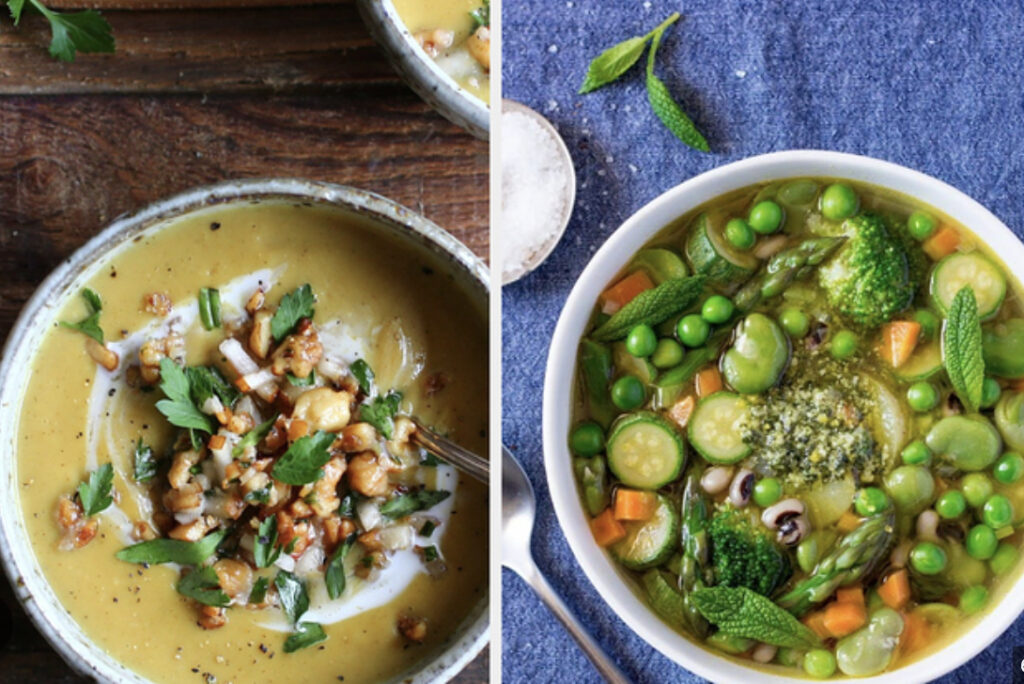
It’s not rocket science: Eat fewer calories than you burn and you’ll lose weight.
But somehow it seems almost impossible to do. How could something so simple be so hard? The dilemma we all face is how to eat less without feeling hungy and deprived. The solution, while not as important for short-term weight loss, is essential to weight maintenance. Any diet that keeps us hungry is doomed to fail over the long haul.
For decades, scientists have been digging for clues about what influences the decisions to start and stop eating. They have found that our bodies have a complex physiological signaling system that tells us when we’re hungry and when we’ve had enough. When you’re eating, nerves in the stomach wall detect your stomach is stretching. They send satiation messages to the brain and you start to feel full. When food is sensed in the intestines, several substances are activated there as well, including nerve regulators and hormones such as cholecystokinin (CCK).
The physiological sensation of hunger has been more difficult for researchers to pin down. Emerging research points to ghrelin (pronounced GRELL-in), a hormone sent into your bloodstream by the stomach when it is empty.
The level of ghrelin “goes up before meals — making you hungry — while the other satiating hormones go up after eating [with ghrelin going down], causing you to stop,” says David E. Cummings, associate professor of medicine at the University of Washington and the Veterans Affairs Puget Sound Health Care System. “With these two systems, you have physiological control over pre-meal hunger and post-meal satiety.”
Of course, we’re not automatons governed strictly by physiology. The decision to eat is also governed by things we can control.
“In humans, ghrelin may not be the only driver. Initiation of meals is a complex process that deals with social cues, smells, sights and more,” says Phil Smith, co-director of the Office of Obesity Research at the National Institute of Diabetes & Digestive & Kidney Diseases.
Evidence suggests that many factors are related to your satisfaction with a meal and ultimately, your ability to lose and maintain weight:
Portion Size
In a series of widely known experiments over the past five years, researchers found that the amount of food you are served will affect how full you feel and how much you eat. In the studies, people were given varying amounts of macaroni and cheese, submarine sandwiches and bags of popcorn or chips. In each case, when they were served smaller portions, they ate those portions and felt satisfied. But when they were given larger portions, without realizing it, the subjects (including children, in other similar studies) ate significantly more — sometimes 50 percent more.
This effect persisted. Over two days, when portions were 50 percent larger at each meal, subjects ate 16 percent more (328 extra calories in women and 522 extra calories in men per day). When the portionswere 100 percent larger, subjects ate 26 percent more (531 extra calories in women and 806 extra calories in men).
Those extra calories, added daily over the course of a year, would pack 50 pounds more on women and 80 pounds more on men.
“This is a case where physiological satiety cues are overridden by environmental cues such as large portions and the easy availability of food,” says Barbara Rolls, co-author of the studies and a professor of nutritional sciences at Pennsylvania State University in University Park. “When served larger portions, people adjust their level of satiety to accommodate greater calorie intakes.”
Fortunately, studies also have found that the reverse is true. When good-tasting, lower-calorie foods or portion-controlled meals are available, people will eat those and feel just as satisfied. In fact, studies of successful weight loss maintainers find they easily adjust to smaller, more appropriate portions of higher-calorie foods.
An interesting study showed that preschool-age girls who regularly overeat can be taught how to change their behavior by learning to pay attention to their natural hunger and satiety signals.
Water and Air Content
Barbara Rolls, Professor and Director of the Laboratory for the Study of Human Ingestive Behavior, and colleagues, found that as long as the volume of the food is high, people can feel full with fewer calories.
In one study, participants who drank milkshakes blended with more air, compared with the same shakes containing less air, ate 12 percent less at the next meal without realizing it.
In another experiment testing this phenomenon, Rolls served subjects one of three meals. They were served either Chicken & Rice Casserole, Chicken & Rice Casserole with a glass of water, or Chicken & Rice Casserole with water added, making it into a soup. Only in the condition where the subjects ate the soup, did thy feel full, while eating 25% fewer calories.
Next, the researchers served salads of various sizes and calorie levels before a main course to determine the effect on the calorie intake of the whole meal. Participants consumed the fewest overall calories — 100 calories fewer — when they were served the largest salad before a meal.
How Does This Work?
Researchers surmise that a large food volume caused by water or air, even without added calories, influences satiety in at least three ways:
-It causes stomach stretching and slows stomach emptying, stimulating the nerves and hormones that tell you when it’s time to put down the fork,
-Seeing a large volume of food can increase your ability to feel satisfied by it, and
-Finally, the larger a meal is and the longer a meal goes on, studies show, your satisfaction declines and you lose interest in completing it
Pump It Up
Get back to basics and listen to your body signals. Start by rating your hunger on a five-point scale:
0 = ravenous
1 = hungry
2 = could eat, could wait
3 = satisfied, no longer hungry
4 = uncomfortably full
5 = stuffed
Give yourself a rating before you start eating and another rating when you finish. You should eat when you’re hungry (1) and stop when you’re no longer hungry (3)*
To feel full with fewer calories, try these tips from Barbara Rolls, author of “Volumetrics,” whose research shows that people have greater success with weight loss when they eat larger servings of foods that have a high water content, such as cooked grains, vegetables, fruits, soups and stews:
• To lower the calories and increase the portion size of a favorite recipe, pump up the volume by adding vegetables as often as you can. This way, you can eat your usual portion for fewer calories
• Choose fresh fruits over dried fruits or juices. For 100 calories, you could eat 1/4 cup of raisins or two cups of grapes. (You’re more likely to fill up on the grapes.)
• Whip air into your yogurt and fruit snack by putting it into a blender and turning it into a smoothie.
• Try air-popped popcorn (3 cups is only 90 calories) or flaky or puffed cereals.
• Start lunch or dinner with a bowl of broth-based vegetable soup or a big vegetable salad with low-calorie dressing.
• Turn main courses into soups or salads by adding water or vegetables.
— Katherine Tallmadge
© 2004 The Washington Post Company
In the Night Kitchen
- At December 10, 2010
- By Katherine
- In Articles
 0
0
Original Content: Washington Post
Does this sound familiar? You get home from work, stressed and ravenous. You head straight for the kitchen, grab a bowl of nuts or a plate of cheese and crackers. You nibble as you’re preparing dinner.
After dinner, you settle on the couch, most likely in front of the television, and zone out with some favorite snacks, such as popcorn, chips, nuts, ice cream, peanut butter or sweets — whatever that’s tasty and easy to grab.
Welcome to the typical American evening! For many people, it’s an endless graze that doesn’t stop until they go to bed.
Evening overeating is an issue that contributes to many peoples’ weight problems. I’ve been surprised at just how many people struggle with this. I used to myself. Even disciplined people who carefully watch their intake during the day break down at night. I can’t count how many times I’ve heard these refrains: “I’m fine during the day, my problem’s at night,” or “If I could control my eating at night, my weight problem would probably disappear. . . . ” It’s become clear to me that evening overeating is not just an isolated problem but the convergence of a host of lifestyle issues — stress, exhaustion, loneliness, disorganized eating and hunger.
In today’s fast-paced world, many people are constantly hopping from meeting to meeting or from chore to chore during the day and don’t have time to sit down and eat a decent meal. So we become ravenous.
In the evening, there’s more time for eating, so we eat not only larger meals, but continuous ones. Those who are tired or stressed find that food is an easy way to reward themselves at the end of the day. Food can provide a little companionship for the lonely or depressed. Researchers who have identified “night eating syndrome,” the most severe form of evening overeating that affects about 5 percent of people who seek obesity treatment, say it is stress-related.
“We believe the night eating syndrome is a stress disorder. One of the characteristics of the syndrome is that sufferers eat at least one-third of their calories after the evening meal,” says obesity researcher Albert J. Stunkard, who has studied nighttime overeaters since the 1950s. He recently co-authored “Overcoming Night Eating Syndrome: A Step-by-Step Guide to Breaking the Cycle” (New Harbinger Publications, 2004).
Evening overeating is an important problem to solve because Americans who eat most of their daily intake of food at night eat more overall calories, according to a study reported in the Journal of Nutrition in June. And that makes them more susceptible to weight problems.
“The late-night period was when the highest-density foods were eaten. Eating a high proportion of daily intake in the late evening, compared to earlier in the day, was associated with higher overall intake,” researcher John M. de Castro concluded in the study, which analyzed food diaries of about 900 men and women.
De Castro, professor and chair of the department of psychology at the University of Texas at El Paso, also found that evening eating was less satisfying for people, which may help explain why they eat more.
In the evening, you get lower satiety. People tend to eat very large meals but then eat again shortly afterward, de Castro said.
For those who succumb to nighttime overeating, I recommend you attack this problem by assessing why this may be happening to you, and then devise personalized strategies for eating lighter at night. Some points to consider:
Breakfast: De Castro’s study found that a “high proportional intake in the morning is associated with low overall daily intake.” This finding confirms my experience of 20 years: Eating a bigger breakfast is the single most effective way of curbing evening overeating. Other studies have confirmed the importance of breakfast for maintaining weight loss.
I advise my clients to eat one-third of their daily calories in the morning. For most people, that’s at least 600 calories, much more than they’re used to consuming.
While solving other issues such as end-of-day stress and exhaustion is important, too, I’ve found that nothing works unless morning eating is beefed up first. Eating more in the morning is a scary proposition for many people who fear that they’ll continue their evening overeating on top of the bigger breakfast. But my clients who bite the bullet and give it a try are amazed to find that it reduces cravings and gives them a sense of control, so that it is easier to eat more moderately later in the day.
Interestingly, de Castro found that people are more sated with the food they eat in the morning. “If they eat a large breakfast, they’ll wait a long time before eating again. They get a lot of bang for the buck,” says de Castro.
Organized eating: Researchers have found that most people with the more severe “night-eating syndrome” don’t have regular meal and snack times. I have also found this is true for evening overeaters. Most overeating is due simply to undereating throughout the day and poor planning. I hear so many people say “I have no will power,” or “I hate myself because I have no discipline.” But they somehow regain their discipline and will power by simply planning and eating regular daytime meals and snacks.
That’s why I advocate cooking in large batches and regular grocery shopping so that you have healthy and delicious foods at your fingertips when you get home from work in the evenings.
Trigger foods: Many people who overeat in the evenings have “trigger” foods, specific foods they crave and are more likely to overeat, such as chips, chocolate or peanut butter. The experts find the avoidance of trigger foods can reduce evening overeating.
Assessing hunger: Your body lets you know what it needs. One key to lasting weight management is being in touch with your body and its signals. In the evening, before you eat, get rid of distractions. Take a few deep breaths and stop to think if you’re physically hungry. If you’re hungry, eat. If you’re not, or if you’re not sure, you shouldn’t eat.
Stress management: Many people overeat in the evenings as a way to cope with the stress and exhaustion they may feel or to reward themselves at the end of a hard day. But this is a self-defeating response either way. When you come home, never head straight for the kitchen. Instead, hop in the shower or tub to decompress, take a walk or stretch. Once relaxed, then decide what you’d like for dinner.
Of course, these actions are only possible if you’ve fed yourself properly during the day and you’re not ravenous.
Reducing behavioral associations: Like Russian scientist Ivan Pavlov’s famous dogs, we can train ourselves to salivate and crave food in connection with just about any activity. Playing cards, eat. Watching a movie, eat. Going to the mall, eat. Talking on the phone, eat. Reading in bed, eat. Watching TV, eat.
The experts recommend that you eat only when you are seated at the dining or kitchen table, without distractions, so that you don’t develop an association between eating and any activity, place or person. The only stimulus for eating should be hunger. Distractions tend to reduce inhibitions to overeating.
When to eat: There is no hard-and-fast rule governing the timing of your last meal in the evening. I recommend that evening calories don’t exceed lunch or breakfast calories and that you eat at least two-thirds of your day’s calories before dinner. It’s important to go to bed feeling light, not full. This way, you awake hungry for a big breakfast.
Coping With Food Pushers
- At December 10, 2010
- By Katherine
- In Articles
 0
0
Original Content: Washington Post
One of my clients, who came to me to lose about 30 pounds, has a real problem. He loves to eat, and he loves to please people. In fact, he said pleasing people is the main reason he overeats. This tendency becomes especially troublesome during the holidays when friends, family and colleagues invite him for meals. My kind-hearted client literally cannot say no.
As a result, he says holidays are a time of joy but also frustration, because his need to be polite is in stark conflict with his goal of trimming down.
Many of us can appreciate his dilemma. Holiday delicacies can be difficult to navigate, especially if you’re trying to avoid gaining weight from Thanksgiving to the New Year. And that can bring out the best and the worst in people.
We all know hosts who aren’t satisfied until they convince us, beg us, to eat more, more, more. Their entreaties are hard to resist, if only because we want to be polite.
To be fair, “food pushers,” as I call them, aren’t necessarily bad people. Your mom, your spouse, your friends — they just want to please you. They are people who think they have your best interests at heart and know more than you do about what and how much food (and drink) you should be consuming.
My clients and I have tried various tactics through the years, most of them utter failures. I’ve tried explaining that I wasn’t hungry. I even went through a phase of telling people I was allergic to this or that. That didn’t work, either. And I learned that the worst thing you can say to a food pusher is, “No thanks, I’m on a diet” or “Thanks, I’m watching it.”
You might as well say, “Talk me into it!” Your excuse is giving the food pusher a double signal — that you really want it but have to refuse. It might also sound insulting, implying that the food isn’t good enough for your refined tastes. And finally your response might make the pusher feel guilty, as if he or she should be “watching it,” too. All of these things challenge the food pusher to seduce you.
But I finally began to make headway when I learned the most basic rule of all: Never give excuses. I’m delighted to say that one of the foremost authorities on etiquette told me that this approach is both appropriate and wise.
“The best answer is a simple but firm ‘No thank you,'” declared Judith Martin, the syndicated columnist who writes as Miss Manners. “Once you give an excuse, you open yourself to argument.”
Martin also offered clear advice in her column to food pushers, and their “endless patter of coercion — ‘Oh, come on, one won’t hurt you . . . I made this especially for you . . . it doesn’t have any calories . . . you’re too thin anyway . . . it’s good for you . . . you’re not going to make me eat leftovers tomorrow.’ Miss Manners asks them to cut it out.”
“To offer and provide food is lovely, but to badger people into eating it isn’t pleasant,” Martin told me. “Politeness consists of offering food and drink without cajoling or embarrassing people into taking it.”
While “no thank you” is fine for hosts, I learned I had to use a different tactic with my family.
During visits to my grandparents in Sweden, for instance, every day I felt overstuffed from too many fattening (and, yes, delicious) Swedish meatballs, cheeses and cakes. Inevitably with each visit I came home several pounds heavier.
I decided I’d drop subtle hints and compliments to guide them into serving me food that wasn’t going to make me look and feel like a Swedish meatball.
This technique of continued positive reinforcement took several years (in psychology, it’s called “shaping”), but it eventually worked. When they served seafood, salads, fruits — food I wanted more of — I complimented lavishly. “Sweden has the best fish in the world!” or “I just love your salads!” (which was all true, by the way). Over time, whenever I’d visit, they’d feed me what they learned I loved: seafood, salads and fruits. (Yes, I also loved the fattening stuff, but that was easily obtained, and I wanted to limit my indulgences without announcing it.)
The same technique can work with your colleagues, friends and family, and it doesn’t have to take years. At Thanksgiving or during the holidays, instead of focusing on what you don’t want or can’t have, and using turn-off words such as “healthy” or “diet,” simply compliment your hosts and stay positive. Instead of saying “I can’t have dessert, I’m watching it,” say “The meal was so satisfying, I can’t have another bite!”
When given a choice at, say, the Thanksgiving meal, a work party, a potluck, or in restaurants, instead of, “I don’t eat mashed potatoes and gravy,” say: “The green beans look fabulous!”
My client tried these tactics with his family and friends and has been losing weight ever since. He was surprised at how a simple compliment could stop food pushers in their tracks.
Even Miss Manners agrees that this approach is okay as long as you don’t go into too much detail. In the end, no food pusher can resist a happy guest.
Of course, as a guest, you have obligations, too, which I’ll discuss in my next column.
Katherine Tallmadge is a Washington nutritionist and the author of “Diet Simple” (Lifeline Press, 2004). Send e-mails to her at food@washpost.com.
© 2004 The Washington Post Company
Rough It
- At December 10, 2010
- By Katherine
- In Articles
 0
0
Original Content: The Washington Post
Our grandmothers have been extolling the virtues of “roughage” for generations. Turns out, they were right. But the benefits of roughage, aka fiber, are far more vast than grandmother ever realized.
High fiber diets have been shown to reduce the occurrence of several chronic diseases. Because of this, in 2002 the expert scientists on the National Academy of Sciences’ Food and Nutrition Board, the group which issues periodic dietary recommendations for Americans, for the first time recommended Americans double their daily fiber intake to 38 grams for men and 25 grams for women. That’s the level they found is protective against heart disease.
Fiber is mainly carbohydrate, the undigestible part of plant foods (fruits, vegetables, whole grains, legumes, and nuts)– it travels unchanged through the intestines. Fiber comes in many different forms in food. It is concentrated, for instance, in the skin of fruits and vegetables, such as apples, corn, and legumes, the seeds of vegetables and fruits such as berries and cucumbers, and the germ and bran or coating which surrounds wheat kernels and other grains. These essential parts of the grain are removed to create white flour and other refined grains.
Americans eat very little fiber – half of what is recommended, eating a highly refined diet, instead. And if you’re on a low carb diet, you’re lucky to be eating any. There are plenty of great reasons to increase your intake of fiber. My clients who do discover multiple benefits.
Easier Weight Loss
Not eating enough fiber may be one reason why people are getting fatter.
A study published in the American Journal of Clinical Nutrition last year found that women with the highest fiber intake had a 49 percent lower risk of major weight gain compared with women eating less fiber.
High fiber diets are usually lower in calories. Though fiber is mainly carbohydrate, very little of it, if any, is actually digested. So, with foods high in fiber, you’re actually eating food which only partially counts as calories (and you thought that was only in your dreams!).
High fiber foods are also bulky, and often watery foods, which means they fill you up for fewer calories. Studies have shown adding high fiber foods, such as vegetables, before or during a meal decreases the overall calorie content of the meal by about 100. While saving 100 calories a day may not sound like much, it translates into losing ten pounds in one year.
Another factor which helps you feel satisfied with fewer calories is the “chew” factor, High fiber foods require more chewing and take longer to eat, which leads to more physical and psychological satisfaction with your meals.
Improve Intestinal Function
Digestive disorders are on the rise and a main reason may be the dearth of fiber in our diets. For most digestive disorders such as reflux disease, constipation, diarrhea, hemmorhoids, diverticulitis, ulcerative colitis, Crohn’s disease and irritable bowel syndrome, a higher fiber diet relieves symptoms and can even prevent the disorder in the first place.
Many people with these disorders, particularly Crohn’s disease or diarrhea, think they should avoid fiber, but that’s a mistake for most. Fiber increases bulk and motility and this relieves pressure, keeps everything regular and more comfortable for the whole gammit of intestinal disorders.
Imagine fiber as a dry sponge in your intestinal tract. Fiber pulls water into the system, keeping everything larger, softer and moving more quickly and easily.
Lower Diabetes Risk
Numerous studies have shown that high fiber diets improve diabetes control and may even prevent diabetes. In fact, it’s been estimated that fiber, especially cereal fiber from whole grains, reduces diabetes risk by about 35 percent.
There are several theories explaining why this may be true. First, high fiber foods tend to have a lower glycemic index. This means that after eating, blood sugar levels rise less (diabetes is characterized by high blood sugar). And studies confirm that people eating high fiber diets usually have lower fasting insulin levels, an indicator of overall lower blood sugar levels.
Also, high fiber foods contain many nutrients which may improve diabetes. For one, magnesium, a nutrient found in whole grains, legumes, tofu and some vegetables, improves insulin resistance, a cause of Diabetes Type II, the most prevalent type of diabetes. Vitamin E, found in whole grains and nuts, may also improve insulin resistance.
Prevent Heart Disease
Fiber helps prevent heart disease in a variety of ways. Lower circulating insulin caused by a high fiber diet reduces heart disease risk and heart attacks. Also, research shows viscous fiber found in legumes, oats, rye, barley and some fruits and vegetables, reduces LDL cholesterol (the bad kind which correlates with heart attack). In fact, it has been estimated by the NAS expert panel that for every gram of soluble fiber you eat, you’ll reduce heart disease risk by 2.4 percent.
High fiber diets reduce triglycerides, or blood fat, another heart disease risk factor. New evidence shows fiber intake is linked to lower C-reactive protein, an indicator of inflammation, which is an emerging heart disease risk factor.
Whole grains and some legumes contain many beneficial healthful substances, including phytoestrogens, which affect circulating hormone levels and may impact heart disease positively. Diets high in fruits and vegetables, containing high levels of the nutrient potassium, also significantly lower blood pressure and stroke.
High fiber foods such as dark green vegetables, legumes and fortified cereals contain the nutrient, Folate (or folic acid). Researchers have found that low blood levels of folate are linked to heart disease.
Reduce Cancer Risk
In populations eating low dietary fiber, doubling fiber intake from foods could reduce the risk of colorectal cancer by forty percent, according to recent findings in the EPIC study (European Prospective Investigation into Cancer and Nutrition), an on-going study of 500,000 people in 10 European countries.
In fact, the majority of studies suggest that dietary fiber is protective against colon cancer, according to the NAS expert panel’s report on fiber. But, a few important studies have not found a link so the issue remains to be resolved, concluded the report.
Several mechanisms have been proposed for this beneficial effect. First, because it pulls water into the intestinal tract, fiber dilutes carcinogens and other tumor-promoters, and causes a more rapid transit, thus causing less exposure of your body to potentially damaging substances. Fiber also causes other beneficial chemical reactions, such as lowering the ph. And lower insulin levels caused by high fiber diets are correlated with lower colon cancer risk. The EPIC researchers stressed that foods supplying fiber also contribute many other nutrients and phytochemcials (beneficial plant chemicals) that have been linked to cancer protection, according to the study reported in The Lancet last year.
Reasons given for some disappointing results connecting fiber to cancer prevention are that the benefits of dietary fiber may not occur until fiber intake is sufficiently high, and Americans eat very low levels, compared with Europeans, so it’s hard for scientists to measure an effect in American diets. Also, some studies tested fiber supplements, as opposed to fiber in food, and researchers say that’s a completely different animal.
Human studies specifically looking at fiber supplements haven’t shown good results and did not find a lower incidence of colon polyps, a precursor to colon cancer. In fact animal studies suggest fiber supplements might increase cell proliferation, which suggests a negative effect, increasing one’s risk of developing cancer rather than reducing the risk.
Scientists believe that fiber supplements will probably not produce most of the health benefits found with high fiber foods (regardless of what the commercials on TV say), except for improved gastrointestinal function and slightly lower LDL, if the supplement is made from viscous fibers such as guar gum or psyllium. But fiber supplements’ role in chronic disease prevention remains unproven. It’s best to get fiber from whole foods in your diet.
Adding Fiber To Your Diet
The key to adding fiber while preventing gas or cramps sometimes associated with increased fiber intake, is eating fiber consistently, adding it slowly, and drinking plenty of fluids. If you eat a low fiber diet and suddenly at a party scarf down a large bowl of baked beans, you may suffer negative side effects. To prevent this, Leslie Bonci, author of “The American Dietetic Association Guide to Better Digestion,” recommends adding fiber by just five gram increments each week until you get to the recommended daily intake of 25 grams for women and 38 grams for men. Then, it’s important that you consistently eat regular amounts of fiber throughout each day.
Fiber content of selected foods:
Grains
Whole grains and are the largest source of fiber in your diet.
Grains Grams fiber
whole wheat bread, 1 slice (1 oz) 1.4
whole wheat spaghetti, 1/2 cup cooked 2
Bulghur, ½ cup cooked 4
Brown Rice, ½ cup cooked 2
Wasa Sourdough Rye Crispbread, 2 slices 4
air popped popcorn, 1 cup 1.0
Oats, ½ cup dry 4
Swiss Muesli, ½ cup 4
Post Great Grains Cereral, ½ cup 4
Kashi Good Friends Cereal, ½ cup 6
Fruits
Fruits contain about 2 grams per 4 ounce serving, but they vary.
Fruits Grams fiber
apple 3.5
apricot 1.8
banana 2.4
blueberries, 1/2cup 2.05
cantaloupe, 1/4 melon 1.0
cherries, 10 1.2
grapefruit, 1/2 1.6
grapes, 10 0.3
grapes, 1 lb. 2.7
mango 3.7
orange 2.6
peach 1.9
pineapple, 1/2 cup 1.1
strawberries, 1 cup 3.0
kiwifruit 2.6
Vegetables
Vegetables contain 1 – 2 grams per serving, or 1/2 cup cooked or 1 cup raw.
Vegetables, 1/2 cup cooked Grams fiber
asparagus 1.0
beans, green 1.6
beets 2.0
broccoli 2.2
Brussels sprouts 2.3
Cabbage 1.4
carrots 2.3
cauliflower 1.13
cucumbers, sliced 1 cup 0.8
eggplant 1.2
greens 2.0
mushrooms 2
onions 1.5
zucchini squash 1.3
pepper 1.0
tomato 1.0
Starchy Vegetables, 1/2 cup cooked Grams fiber
corn 2.9
green peas 3.6
parsnip 2.7
potato, with skin 2.5
Legumes
Legumes are a great protein source and can substitute for meat. They average 6 grams of fiber per 1/2 cup cooked serving.
Legumes, 1/2 cup cooked Grams fiber
kidney beans 7.3
lima beans 4.5
navy beans 6.0
Those Liquid Calories
- At December 10, 2010
- By Katherine
- In Articles
 0
0
Original Content: Washington Post
My client Caroline, who had been losing weight successfully for a month, was disappointed one recent week when she failed to do so. It didn’t make sense. Her food intake was stellar, and she had been even a little more physically active than usual. It wasn’t until we reviewed her food diary thoroughly that we discovered the culprit: liquid calories. They added up in a way that surprised her.
As for many of us over the holidays, that extra glass of wine or mixer here and there adds up in ways that you might not expect. Though liquid calories in alcohol, juices or sodas are stealthy, their impact can be enormous.
When food is consumed before or during a meal, the volume and caloric content of that food will limit what else you eat fairly proportionately. Most caloric drinks consumed before or during a meal are not satiating and have little or no effect on how much you eat in one sitting or over the course of several meals.
Scientific evidence is confirming that our bodies don’t detect the calories in these liquids the same way as when we eat solid foods.
“Fluid calories do not hold strong satiety properties, don’t suppress hunger and don’t elicit compensatory dietary responses,” says Richard D. Mattes, professor of food and nutrition at Purdue University. In fact, “when drinking fluid calories, people often end up eating more calories overall.”
It’s fairly well established that alcoholic beverages and sugary liquids, especially sodas and fruit drinks, simply add more calories.
This may help explain the results of the recent Harvard Nurses’ Health Study of more than 50,000 women over eight years. Researchers found that those who increased their intake of sugar-sweetened beverages, such as sodas or fruit punch, from one per week to one or more per day consumed an average of 358 extra calories per day and gained a significant amount of weight. The women who reduced their intake cut their calories by an average of 319 and gained less weight.
Studies in previous years demonstrated that consumption of sugar-sweetened soft drinks increased the likelihood of obesity in children, but this is the first finding from a long-term observational study in adults.
The mechanisms controlling hunger and thirst are completely different: Although liquids may contain calories, they don’t seem to satisfy hunger even if they quench your thirst. Physiologically, your thirst is quenched once your blood and cell volume are increased by water. This sends signals to your brain that you are no longer thirsty.
In contrast, hunger is regulated in your stomach and intestines. While you’re eating, nerves in the stomach wall detect that the stomach is stretching and send satiety signals to the brain. The intestines also release nerve regulators and hormones. At the same time, the level of the hunger hormone (called ghrelin), which is released by the stomach when it’s empty, is suppressed. All this helps you feel full.
Because liquids travel more quickly than food through the intestinal tract, they alter the rate of nutrient absorption, which can affect satiety hormones and signals.
Several theories may help explain why liquid calories cause lower satiety, increasing overall calorie intake, but the process is still not fully understood. The mouth feel of a liquid versus solid food may generate different signals; it takes less time and involvement to gulp down a drink, and that might reduce the psychological satisfaction of eating.
New research has found that ghrelin doesn’t work as well with liquids: “When the number and type of calories are the same, the calories in liquid form won’t suppress ghrelin as effectively as if the same calories were in solid form,” says David E. Cummings, associate professor of medicine at the University of Washington and the Veterans Affairs Puget Sound Health Care System.
A study that will be published soon in the journal Appetite tested the effect of drinking water, diet cola, regular cola, 1 percent milk and pulpy orange juice during meals. It found that drinking water or diet cola had no effect on the total caloric intake of the meal. But with the caloric beverages, each of which contained 150 calories, the subjects consumed 105 more calories overall at each meal.
“People need to be mindful of the calories in beverages,” says Barbara J. Rolls, who conducted the study and is co-author of “The Volumetrics Weight-Control Plan” (HarperTorch, 2003). “Most people think calories in beverages don’t count and that’s how they get into trouble.”
When you consider that an appropriately sized meal is anywhere from 400 to 700 calories, and one 44-ounce Super Big Gulp is 800 calories, you understand the scope of the problem. A 16-ounce Starbucks blended coffee Frappuccino is 470 calories. A single mixed drink can set you back 300 calories or more. One glass of wine contains at least 100 calories. Double or triple these numbers at any given party, tack on the calories in your meals, and you can understand how weight gain is the inevitable.
My clients who have become aware of liquid calories have achieved impressive results. Take Bob Levey, former Washington Post columnist, who wrote about the importance of cutting out his daily lemonade in his successful weight loss effort. Another client, Julie, easily switched from her daily Frappuccino to a cafe skim latte (coffee with steamed nonfat milk) and saved 250 calories. My friend Linda slowly phased out her daily soda ounces by filling her glass with increasing amounts of ice each week. She lost 30 pounds over a year.
Since liquid calories don’t contribute to feelings of satiety, cutting back on them doesn’t make people feel deprived; most find the change is an easy one to make. There are so many great substitutes. The one liquid that’s important to keep drinking is water. In the wintertime, I love sipping (mostly water) herbal teas through the day. In the summer, it’s seltzer with a twist of lemon or lime, and the occasional diet soda.
Of course, if we are mindful of our calorie intake, a moderate daily dose of wine or other caloric beverage can easily be integrated into our routines. Moderation is the key.
Katherine Tallmadge is a Washington nutritionist and author of “Diet Simple” (Lifeline Press, 2004). Send e-mails to her at food@washpost.com.
© 2004 The Washington Post Company
Supermarket Dining: 10 Smart Ways to Eat In
- At December 10, 2010
- By Katherine
- In Articles
 0
0
Original Content: Washington Post
The first time I walked into Wegmans, I felt overwhelmed by the choices. I wanted to sample everything. So brace yourself whenever you go into any store with such a dazzling array of options. With good decisions and a clear plan, you can have an enjoyable — yet not-too-filling- — lunch in a supermarket. Here is my guide:
1. Walk a lap around the store and survey all the options. If you are famished, grab a low-calorie food such as a fruit or salad to take the edge off your hunger before you decide what to buy. Choice is great, but it can get you into trouble. “Variety has an enormous passive effect on calorie intake,” says Susan B. Roberts, professor of nutrition at Tufts University School of Medicine. “The higher the variety of items you are confronted with, the more most people consume without even realizing it.”
2. Plan your meal. Your goal is to find a satisfying, balanced meal containing about 500 to 600 calories for women or 700 calories for men. Half of the meal should be fruits or vegetables for your nutritional needs, but also because studies show they help you feel full without too many calories. One- quarter of your meal should be a grain — whole grain, if possible, for instance, from whole-wheat bread (two one-ounce slices) or brown rice (about one cup). The other quarter should be a protein, which might be three to six ounces of chicken, seafood, lean beef, lean pork or vegetarian protein sources such as tofu or legumes.
3. Stick with items for which you have nutritional information. “Calories at a glance” are posted at each prepared food station, but more complete nutrition information is posted on the Web site (www.wegmans.com)where you can find the carbohydrate, protein, fat, fiber, sodium, vitamin and mineral content of the foods.
4. Start with vegetables and fruit. The Wegmans black takeout plate, found at the Wokery, is divided into four sections, each of which holds one cup. Fill one-quarter with vegetables such as sauteed green beans (110 calories per cup) and the second quarter with cut fruit, such as strawberries, watermelon and pineapple (100 calories per cup). Try to choose as many colors, shapes and textures of fruits and vegetables as you can find to take advantage of our natural desire for variety. Each color represents a unique class of nutrients. Studies show that people who eat a wide variety of fruits and vegetables eat more of them and are leaner and healthier.
5. Select a grain, preferably whole. If you would like rice, fill the third quarter of your plate with steamed rice (160 calories per cup). Make the portions level, not heaping, so they don’t contain more than one cup. You could also choose a whole-grain roll (170 calories), a slice of whole-wheat pizza or the brown-rice sushi (140 calories). Avoid the larger or fattier breads such as bagels (240 to 420 calories each), muffins (420 to 510 calories each), scones (at 4.2 ounces, 420 calories each) or croissants (at 2.5 ounces, 250 calories each).
6. Steer clear of the Sub Shop, where the 14-inch sub uses a 12-ounce slab of bread. Bread is about 80 calories per ounce, so the bread alone contains about 960 calories, more calories than you want your whole lunch to be.
7. Choose a lean protein. Go to the Wokery and select the pepper steak (80 calories per cup), pork with scallions (120 calories per cup) or chicken with vegetables (160 calories per cup). If you’ve chosen a whole-wheat roll to make your own sandwich, go to the deli counter and choose four to six ounces of the Wegmans seasoned roast beef (30 calories per ounce), Columbus fire roast pork (35 calories per ounce)or the Healthy Choice mesquite chicken breast (30 calories per ounce). Vegetarians might try the vegetarian chili (180 calories per cup). To hold down the calories try to take as little of the Wokery sauce as possible. Ask for a slotted spoon if necessary.
8. Fulfill your calcium requirement. Go to the dairy case for skim milk, calcium-fortified soy milk, yogurt or soy yogurt (90 to 150 calories).
9. Avoid the obvious pitfalls, such as anything deep-fried, crispy or creamy. Such items are loaded with calories. Also, be careful about the liquid calories. Stick with items for which you have nutritional information.
10. Want a menu, ready to go? Jane Andrews, Wegmans corporate nutritionist, suggests the following healthy meals without excessive calories:
• Spicy red lentil soup, (Prepared Foods section, 12 ounces, 255 calories) with cheddar cheese (Cheese Shop, 1 ounce, 110 calories) and 1 large apple (Produce, 100 calories), ice water. Total: 465 calories.
• Just roast beef (Deli, 4 ounces, 120 calories) on whole-wheat or multigrain roll (Bakery, 2 ounces, 170 or 230 calories) with mustard (10 calories) and fresh cut fruit (Prepared Foods, 1 cup, 100 calories), ice water. Total: 400 or 460 calories.
• Beef, chicken or seafood and vegetable stir-fry (Wokery, 1 cup, 120 calories) with sauteed green beans or mushrooms (Wokery, 1 cup, 110 calories), fried rice (Wokery, 1 cup, 220 calories), shrimp spring roll (80 calories), ice water. Total: 530 calories.
• Roasted vegetable and provolone wheat wrap (Prepared Foods, 6 rolls 405 calories), clementines (Produce, 2 small; 80 calories). Total 485 calories.
• Vanilla yogurt (Dairy, 6 ounces, 150 calories), fresh cut fruit (Prepared Foods, 1 cup, 100 calories), roasted almonds (Bulk Foods, 22 almonds, 170 calories.) Total: 420 calories.
Katherine Tallmadge is a Washington nutritionist and the author of “Diet Simple” (Lifeline Press, 2004). Send e-mails to her at food@washpost.com.
© 2005 The Washington Post Company
Like Mother, Like Daughter
- At December 07, 2010
- By Katherine
- In Articles, Recipes
 0
0
How Parents Influence Their Childrens’ Eating Habits…
Like it or Not!
During occasional moments of frustration, mothers the world over sometimes wonder if they have any influence over their children on any issue. But we all know from our personal experiences how important our moms (and dads) are. They profoundly influence what we think, what we do, what we enjoy, what we dislike, whom we date, and how we live our lives.
Moms particularly influence what and how much we eat and, more broadly, how we regard food. There’s a large and growing body of scientific research that demonstrates that Moms are the single most important influence over their children’s eating habits.
Even children agree, though they may not like to admit it, that moms have a powerful effect on their behavior, including their eating habits. In fact, parents, with mom being number one, outranked sports celebrities as the person children aged 8 – 17 “would like to be most,” according to the Family Nutrition and Physical Activity survey conducted by the American Dietetic Association Foundation.
Like mother, like daughter is a phrase with deeper meaning than we often appreciate. Studies show daughters copy their mother’s eating habits – whether they like it or not.
Take me, for example. I grew up with a lovely mother who happened to have a weight problem. She went on diet after diet. She seemed unhappy with her body, her weight, and therefore, herself. Her shame and frustration made a big impression on me and scared me about the miseries of being overweight and dieting. I was determined not to repeat her experience.
But, being a child, I was relatively powerless over my destiny. Studies show daughters of dieting or restricting mothers are more likely to diet or develop eating problems – and I certainly did both. While I didn’t want to repeat my mother’s experience, I inevitably did.
My experience is typical for women across the country. Study after study shows the importance of parental modeling, especially with mothers and daughters, on a child’s eating habits.
Very early in life, children begin learning about eating and foods. Mom provides most of the information absorbed by the child concerning what to eat, when to eat and when to stop. Problems occur when Mom gives faulty signals, often inadvertently, possibly because she has eating and weight problems of her own, which creates eating and weight problems in her children, particularly daughters.
Parents, typically it’s the mothers, provide the structure, choose the food and reinforce certain eating practices either by reinforcement or through modeling. The mother’s dieting and weight control experience influences the children in ways they may not even realize. Moms who eat in response to the external cues of, for instance, the presence of tasty foods, as opposed to hunger, have children who do the same and are often overweight. This could happen simply through the child observing the parent and absorbing those lessons.
Weight problems are on the rise and so are behaviors such as dieting, restricting, bingeing and eating disorders. Not only is rigid dieting harmful to the mother, it can be dangerous for children and could effect their eating habits and weight in a negative way. These behaviors start as early as preschool. Researchers recently discovered that half of 5-year-old girls know all about dieting. And when researchers look further, they find it’s easy to predict which girls are diet-savvy. They’re the ones with mothers who are dieting.
It’s been established that a girl’s eating is significantly related to the mother’s eating pattern and body weight. Heavier girls, girls who have problems overeating, are more likely to have mothers who are overweight, binge, and feel out of control of their eating. In studies, obese mothers and girls ate larger quantities of food in less time than did their thinner counterparts.
Several things can influence your child’s eating and weight. Mom has significant influence on a child’s food preferences and eating patterns. For instance, when Mom tries to control intake by restricting a food which is available in the home, that food becomes more desirable to the daughter and can cause her to binge – followed by feelings of remorse and negative self-image. When mom tries to have too much control over a child’s eating, this prevents the child from understanding naturally when to eat and when to stop.
Moms who have weight problems tend to try to control or restrict inappropriately, thus setting up eating and weight problems in their children. It’s ironic, because the very problem mom is trying to prevent, she actually fosters because of her overcontrol, which limits the child’s natural abilities for self-control or self-regulation.
Also, if a young girl regularly observes restricting or overeating behaviors in Mom, she adopts the same eating patterns simply through natural observation and modeling, even if mom tries to shield her by encouraging healthy eating. It’s been documented that overweight children often have moms who binge or diet. Moms can unwittingly create eating problems in their children this way.
How you reinforce your children can undermine their ability to self-regulate, for instance, encouraging them to ‘clean the plate,” to eat at certain times, to eat in response to feelings and emotions, or rewarding them with sweets and tasty food. These patterns start the child on a course of life long eating habits which will serve her well – or not.
Studies show heavier moms were more likely to exhibit eating unrelated to hunger – in response to the presence of tasty foods or emotional factors. Daughters of these moms tend to exhibit the same eating and also tend to be more overweight.
Studies show that children will develop food preferences based on what is provided in the home by their moms. In studies conducted at Pennsylvania State University, kids’ fat preferences and fat intakes were linked to parental fatness, so the heavier parents had kids who were preferring and eating diets that were higher in fat, said Leann Birch, professor and head of the department of human development and family studies at Pennsylvania State University. Parents modeling healthful dietary behaviors is associated with lower fat eating patterns and lower dietary fat intake in their children.
“Kids really will learn to prefer calorie dense foods, and this could in fact be one of the factors that contribute to diets that are too high in calories and too high in fat,” said Birch.
Studies also demonstrate the strong influence of modeling. If parents don’t eat vegetables, children don’t. If parent don’t drink milk and drink sodas instead, children replace milk with sodas. Even if parents try to encourage their children to eat healthier than they do, the studies clearly find that children do not respond by eating healthfully, unless their parents actually do it themselves.
The studies are very clear that it’s what mothers do, not what they say, which registers with their children most strongly. “Do as I say, not as I do,” is not effective at shaping healthy eating habits in children. What moms eat, what moms make available in the home, shapes food preferences and eating habits from the womb until adulthood.
Women who eat a wider variety of foods during pregnancy or breast feeding give birth to children who are more accepting of new foods. One study found that women who drank large amounts of carrot juice while pregnant gave birth to babies who responded more positively to carrots!
Fruit and vegetable eating is a behavior often measured and studied because science has found people who eat more fruits and vegetables are significantly healthier. Nutrition scientists want to learn what behavior will help children love fruits and vegetables naturally.
What they have discovered is remarkably simple.
“Children choose to eat the foods they are served most often and they tend to prefer to eat the foods which are available in the home,” says Theresa Nicklas, Professor of Pediatrics at Baylor College of Medicine, Houston.
Moms who regularly eat vegetables and offer vegetables to their daughters have daughters who prefer vegetables. If, on the other hand, Mom encourages eating vegetables but doesn’t personally model the behavior, those daughters will not prefer vegetables. It can really backfire if you induce your child to eat fruits and vegetables because they are good for them. The only factor which will convince kids – or adults for that matter – to eat anything, is taste. You will be most effective if you simply eat and enjoy fruits and vegetables, convincing your child that they are absolutely yummy, and make them easily available to your children.
These studies have been repeated with various eating behaviors. Since childhood milk drinking is predictive of calcium intake and bone mineralization in girls and bone fractures in older women, it has been studied extensively. Scientists have found if Mom drinks milk, daughters drink and prefer milk. But if Mom drinks soda instead, the daughter prefers soda, and studies show that means she gets less calcium and has less dense bones. Interestingly, if Mom encourages the daughter to drink milk and drinks soda instead, it doesn’t fly. The daughter will still prefer and drink sodas.
Looking back on my childhood, this is another area in which my mother influenced me, whether I liked it or not. I was one of the “unlucky” children in my neighborhood that wasn’t allowed to drink sodas. The only beverages available in our home were milk and juice. Milk was consumed at every meal – by everyone – mom, dad and all the kids. My friends teased me and snuck me sodas when I visited them. But – my guess is – because sodas weren’t available in my home, I never developed a soda-drinking habit. To this day, I drink milk at meals and only infrequently drink diet sodas, if any. Needless to say, I’m very thankful for this influence even though at the time, it made me feel very uncool and sorry for myself!
With the strong practical and emotional support from Mom and the whole family, it is very possible for children to live in a balanced, nutritionally sound and healthy way. But without it, it’s close to impossible to do so. The family environment Mom creates is a very powerful force that fosters early habits, shapes daily routines, and molds lifelong expectations. The family unit is where good things can happen and where you can build a strong foundation for good health and good food that will allow your family to overcome the negative influences of the outside world.
Here are some ideas to harness your considerable power to help your children love eating healthfully:
1. Children eat what is available to them and learn to prefer vegetables and healthy, wholesome foods if they are frequently and positively offered and enjoyed by the whole family. Studies show children sample new foods more often when they observe their parents eating it, especially if coupled with parental attention and encouragement.
2.Regardless of your weight, if you model healthy eating behavior, this will have a positive effect on your child’s eating and weight.
3.Never put your child on a diet, never tell her she is overweight, never restrict her access to any foods in your house. Don’t single her out or treat her differently than anyone else in your family. These reactions backfire and could make what may be a temporary phase of chubbiness in your child’s life to a serious weight problem.
4.Instead of restricting access to unhealthy or high calorie foods, get rid of them! Children learn to love foods which are available, and if there are only healthy foods available, no restriction will be necessary.
Roberto Donna’s Stuffed Shells with Ricotta and Eggplant
excerpted from Diet Simple
Washington, DC chef and restaurateur, Roberto Donna of Galileo is committed to introducing others to the real flavors of Italy. Born in Torino, the Piedmont Region of Italy, Donna is the recipient of the 1996 James Beard Award for Best Chef in the Mid-Atlantic and is Chairman of the Gruppo Ristoratori Italiani, an organization dedicated to presenting authentic Italian food culture in the United States. As an active member of Share Our Strength and The James Beard Foundation, he participates in numerous charityevents nationwide.
This simple main course comes together quickly and makes for a delicious Italian meal minus loads of calories.
Serves 4
8 oz. peeled and cubed eggplant, sprinkled with 1 Tbs. olive oil
8 oz. low-fat ricotta cheese
2 Tbs. capers, drained (optional)
Salt and freshly ground black pepper to taste
12 fresh basil leaves
12 jumbo shells, cooked, drained and cooled
2 Tbs. olive oil
4 Tbs. grated Parmesan, optional
Italian parsley leaves for garnish
Olive Oil Spray (optional)
Tomato Sauce (as an option, you can use a favorite commercial sauce):
1 1/2 cups canned plum tomatoes
1/2 cup tomato sauce from can
1 garlic clove, minced
4 tbsp fat-free sour cream
1. Preheat oven to 450F.
2. Place eggplant cubes on nonstick baking sheet and roast about 15 minutes until crisped and golden. Remove from oven. Mix ricotta with capers and eggplant cubes in mixing bowl. Season with salt and pepper and 4 minced basil leaves. Set aside.
3. Reduce oven temperature to 400F.
4. Cover baking dish with foil and spray with nonstick vegetable spray. Fill each shell with about 1 tablespoon ricotta cheese mixture, filling evenly among shells until used up. Brush tops of shells with 1 tablespoon olive oil (or spray with olive oil spray). Bake 10 minutes, or until crisped and golden brown at the edges.
6. Meanwhile, to make tomato sauce, purée tomatoes, remaining basil, rest of olive oil and garlic in food processor. Season with salt and pepper and stir in sour cream. Heat mixture over low heat until warmed through. Remove and set aside.
7. To serve, spoon one quarter of the of sauce on dish and place 1 stuffed shell on top. Drizzle a little extra sauce over each top and garnish with parsley leaf. Repeat with remaining shells and sauce. Refrigerate if not using immediately.
8. To reheat, place 3 shells on top of sauce on microwavable plate or shallow bowl, cover with a glass bowl or microwavable plastic and microwave 2 minutes.
Daily Value
Calories 360
Calories from Fat 160
Total Fat 17g 27%
Saturated Fat 6g 29%
Cholesterol 35mg 11%
Sodium 580mg 24%
Total Carbohydrate 38g 13%
Dietary Fiber 4g 16%
Sugars 10g
Protein 12g
Vitamin A 25%
Vitamin C 25%
Calcium 15%
Iron 10%
Copyright by Katherine Tallmadge.
Overweight Teens becomes An Increasing Epidemic
- At December 07, 2010
- By Katherine
- In Articles
 0
0
“Disorganized Eating” Is Cause
Nutritionist, Katherine Tallmadge, responds…
“The number of overweight adolescents has tripled within the past two decades and the problem is becoming a serious epidemic,” according to the Surgeon General in his Call to Action to Prevent and Decrease Overweight and Obesity. Leading nutritionist Katherine Tallmadge, M.A., R.D., believes the root of the problem is “disorganized eating” patterns among adolescents and young adults.
In her new book, Diet Simple, out in January 2004 from LifeLine Press, Tallmadge emphasizes how changing life-styles and habits have led to large weight gains and health risks for teens. Teens are often left in control of their own meals leading to irregular patterns including eating on the run or snacking continually in front of their TV and computer screens. America’s youth is unaware that this is a potentially deadly habit, which therefore increases their risk of diabetes, heart disease, cancer, and stroke.
In Diet Simple, Tallmadge provides solutions to “disorganized eating,” which is both a family and a cultural problem. She presents 192 simple, small changes that can be used in order to achieve significant weight loss within three months to a year. As a spokesperson for the American Dietetic Association, member of the U.S. Department of Health and Human Services Nutrition Education Task Force and advisor to Head Start Centers, the President’s Counsel of Physical Fitness and Sports, and several colleges, and high schools, Tallmadge has been working for twenty years with teens and adults and understands exactly how to get teens and their families into eating patterns that reduce weight and increased levels of energy by:
- Saving time and money while eating food that is completely satisfying
- Reducing the risk of “out of control” eating including emotional eating and overeating, which then leads to obesity
- Improving mental focus to make permanent health changes in diet and nutrition
Tallmadge is the leading expert on how to permanently lose weight and change your life for the better while balancing the needs of health, career and family. Nearly 11 million people have seen Tallmadge through her regular interviews on NBC News, Fox News, CNN, and ABC’s 20/20, and heard her on National Public Radio. She also reported on food and nutrition as a correspondent and producer for the Television Food Network.
For more information or to schedule an interview with Katherine Tallmadge, please contact Katherine at 202-833-0353
###
LifeLine Press is dedicated to bringing you the latest news and groundbreaking research in the fields of alternative health, nutrition, wellness, and child development. Our mission is to provide timely and accurate information for consumers concerned about their health.
For Successful Weight Loss, It’s the Little Things That Count
- At December 07, 2010
- By Katherine
- In Articles
 0
0
New Book Shows How Small Changes Add Up to Big Weight Loss over Time
Did you know that if you add salad to your lunch and dinner you could lose 36 pounds a year? Or that eating four frozen dinners a week could result in an 18-pound loss?
When it comes to dieting, time is on your side. Make one or two minor changes in your eating or activity habits, and over the course of three months, you will begin to see significant weight drop. But you won’t feel as if you are dieting-and that’s the whole point.
KATHERINE TALLMADGE, RD, author of Diet Simple (LifeLine Press, January 2004), has compiled 154 easy tips, substitutions, mental tricks, and inspirations that have helped her clients shed from 10 to 50 pounds a year-effortlessly and without feeling deprived.
During her twenty years as a weight-loss and nutrition counselor in Washington, D.C., Tallmadge has discovered that modifying small habits is easy. Over time, the extra calories saved or burned add up to staggering weight loss. This is the Diet Simple approach.
With Diet Simple, every individual can customize a plan that best fits his or her eating, exercise, and work habits. Readers will find:
- 192 proven weight-loss strategies to match any appetite or lifestyle
- 55 Recipes from world-famous chefs for preparing low-cal, gourmet convenience meals ahead of time
- Delicious Diet Simple Meal Plans in which the calories and nutritional balance have already been worked out
- Dozens of expert tips to control emotional eating, reduce stress, and stay motivated for permanent weight loss
- Tried-and-true strategies for bar-hoppers, frequent travelers, non-cooks, midlife women, workaholics, and disorganized eaters
- The “Metabolism Toolbox”-a scientific formula for calculating your own body’s calorie-burning capabilities
Based on solid science and years of proven success, Diet Simple offers the easiest, most painless way for anyone to lose weight the healthy way.
To schedule an interview with Katherine Tallmadge, contact:
Katherine at 202-833-0353
Defying the Holiday “Hang Over”
- At December 07, 2010
- By Katherine
- In Articles
 0
0
Katherine Tallmadge, nutrition and weight loss expert, and author of DIET SIMPLE, shows how to overcome “holiday overindulgence”
Here’s some rocket science: What happens when you go to three or four parties a week, and eat yourself silly at each one? You’ll make a good social impression, and an even bigger impression on the scale. Add that plus five weeks’ worth and you’ll have five extra pounds of holiday “hang over” your belt.
“For social butterflies, a weight gain of up to two to five pounds over the holidays is common,” says Tallmadge, a Washington, D.C. based weight-loss and nutrition consultant and author of DIET SIMPLE 192 Mental Tricks, Substitutions, Habits & Inspirations (LifeLine Press, 2004). And the studies confirm Tallmadge’s experience. (see studies below)
“Several social occasions per week often leave us with thousands more calories than we need,” says Tallmadge.
Tallmadge’s Diet Simple Program was recently hailed by Good Housekeeping Magazine as both nutritionally sound and easy to follow. Her program is simple: It allows you to make simple, individualized changes which fit into your life-style and personality. This way you lose weight without the pain and suffering of being on a depressing diet.
Tallmadge’s 20 years’ experience of helping thousands lose weight permanently has enabled her to develop a plan that retools the mind into eating in a whole new way. Here are a few of tips so you don’t end up feeling like a stuffed turkey by the time New Year’s rolls around:
* The 25 Percent Blowout: Never stay at home for the sake of worrying about your weight. If you are invited to four social gatherings for the week, go to all – but indulge at only one. You can allow yourself to splurge while still saving your waistline.
* Savor each bite: Particularly at parties, we tend to gulp food without even thinking about it. You start talking and before you know it, you’ve consumed everything on your plate. Be aware of what you are eating. Fifteen crackers plus the trimmings can be equal to one meal.
* Say no to food pushers by complimenting lavishly: Let’s face it. Your family and friends love you and want to show you they care through the food they serve you. But you have to be firm and use a positive approach (NEVER tell people you’re “on a diet” or “watching it”). Instead, try “That looks wonderful. Your meal was so delicious, I can’t make room for one more bite!”
* Write it and lose it! A major study showed that while people had trouble getting through the holidays without weight gain, the most successful at managing their weight monitored their eating (see studies below).
How can obese weight controllers minimize weight gain during the high risk holiday season? By self-monitoring very consistently.
Boutelle KN, Kirschenbaum DS, Baker RC, Mitchell ME.
Institute of Psychology, Illinois Institute of Technology, Center for Behavioral Medicine, Chicago, USA. kerri.boutelle@childrenshc.org
This study examined the efficacy of augmenting standard weekly cognitive-behavioral treatment for obesity with a self-monitoring intervention during the high risk holiday season. As hypothesized, the intervention group self-monitored more consistently and managed their weight better than the comparison group during the holidays. However, both groups struggled with weight management throughout the holidays.
These findings support the critical role of self-monitoring in weight control and demonstrate the benefits of a low-cost intervention for assisting weight controllers during the holidays.
Holiday weight gain: fact or fiction?
Roberts SB, Mayer J.
Energy Metabolism Lab, USDA Human Nutrition Research Center on Aging, Tufts University, Boston, MA 02111, USA.
On average, weight gain during the 6-week winter period from Thanksgiving through New Year averaged only 0.37 kg. However, weight gain was greater among individuals who were overweight or obese, and 14% gained >2.3 kg (5 lb). In addition, among the entire population, weight gain during the 6-week holiday season explained 51% of annual weight gain.
These results suggest that holiday weight gain may be an important contributor to the rising prevalence of obesity.
Katherine Tallmadge, M.A., R.D.
Harper’s Bazaar called Katherine Tallmadge, MA, RD, “the best nutritionist in Washington, D.C.” Tallmadge is an American Dietetic Association Spokesperson, an advisor to eDiets.com, Shape Magazine, The National Enquirer, and more. She has appeared on ABC’s 20/20, NBC Nightly News and the Today Show, CNN’s Anderson Cooper and Wolfe Blitzers News Programs, Jon Stewart’s The Daily Show on Comedy Central, Fox News, National Public Radio and others. Tallmadge has also been featured in The New York Times, Newsweek, USA Today, The Washington Post, The New York Post, The Washington Post, Good Housekeeping Magazine, and Family Circle Magazine, among others.
To schedule an interview with Katherine Tallmadge, please contact Katherine at 202-833-0353
LifeLine Press is dedicated to bringing you the latest news and groundbreaking research in fields of health, nutrition, wellness, and child development. Our mission is to provide timely and accurate information for consumers concerned about their health.
Are You A Disorganized Eater?
- At December 07, 2010
- By Katherine
- In Articles
 0
0
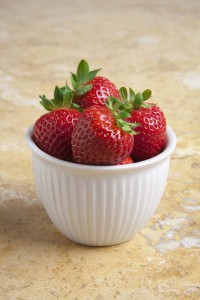 by Katherine Tallmadge, M.A., R.D.
by Katherine Tallmadge, M.A., R.D.
If you have time for everything but regular meals, it’s time to establish some new habits.
Do you:
- feel as if you need a wife, mother, or maid to take care of you?
- get so busy that you forget to eat?
- wait until your refrigerator is barren to grocery shop?
- let yourself get ravenous, and then grab any food you can find?
- graze through the day but never sit down for a real meal?
If this describes you, you are a disorganized eater. Disorganized eaters often gain unwanted pounds, have a hard time losing weight, and are in need of better nutrition.
Weight-loss and nutrition consultant Katherine Tallmadge, author of Diet Simple (LifeLine Press, Jan. 2004), says that the major reason for weight problems is simply a lack of planning. In her new book, she serves up dozens of tips specifically geared for people whose eating, shopping, cooking, and exercise habits stand between them and their weight goals.
Many people are under the mistaken impression that they don’t have time to shop and cook in a way that diet programs require. To the contrary, says Tallmadge. Changing some of the key behaviors behind disorganized eating will save you time, money, and psychological stress.
Best of all, you will drop pounds, have more energy, and be healthier.
Tallmadge’s Diet Simple Plan has helped hundreds of disorganized eaters lose weight and keep it off by modifying a few behavior patterns that lie at the heart of their weight problem. Adopt one or two of the strategies below and you will lose weight.
- Stock your office with quick and healthful foods-especially breakfast stashes and afternoon snacks.
- Get in the habit of “batch cooking”-cooking large amounts of soups, stews, and main-course salads to eat throughout the week.
- Always shop with a grocery list, and shop at regular intervals.
- Stash frozen dinners at work for nights when you work late.
- Eat out just once a week-at a really good restaurant.
- Incorporate more physical activity into your routine-e.g., park farther away; use stairs; take a five-minute walk once an hour.
- Keep a supply of frozen vegetables at home.
Katherine Tallmadge: 202-833-0353
Fit and Frugal
- At December 07, 2010
- By Katherine
- In Articles
 0
0
Original Content: The Washington Post
There is, I believe, one widespread myth in the world of food and nutrition that urgently needs to be debunked. That myth is that it is too expensive to eat a nutritious diet.
Lately, I’ve seen reports in the media that say eating healthy is very costly, but that doesn’t jive with my professional or personal experience. When my clients switch to healthier diets, they tell me their food costs plummet. When I was a poor college student and 20-something professional starting out, having little money to spend on food kept me healthier than ever! In today’s economic crisis, I and my clients are experiencing the same thing, cutting back on food expenses forces a person to eat healthier.
Am I just being naïve? Could my experiences be so off-base?
Some argue that eating healthy is expensive in several respects.
First, they say that 1,500 calories of McDonald’s burgers and fries is cheaper than 1,500 calories of healthy food. While this may be true, this argument rests exclusively on considerations of calories and neglects to take into account the quality and the health benefits of the calories consumed. It also fails to recognize the astronomical health costs of being overweight or unhealthy as a result of regular (though cheap) fast food dining.
Second, they contend that eating frugally, which requires shopping and cooking, is time-consuming and has significant opportunity costs; that is, you could be doing more valuable things with your time. I find this argument unpersuasive because I believe it both overemphasizes the time required to prepare a good meal and fails to account for the positive benefits of food preparation. Anyone who has strolled through the Farmer’s Market with a friend, cooked a healthy meal with family members and children chipping in, or felt the warmth and nurturing of sharing a home-made meal would dispute that these activities are wastes of time and have no value.
Third, some argue that inexpensive food doesn’t taste good. My personal experiences and those of my clients’ suggest that the exact opposite is true. Is there anything tastier than a summer watermelon? A crisp, Fall apple? Or a piping hot bowl of home-made chicken soup? These are some of the simplest, most healthy and inexpensive items you can eat, according to the US Department of Agriculture’s Economic Research Service (ERS).
I’ve been heartened by a number of studies which confirm my own experience and demonstrate it is possible to eat delicious, healthy food at reasonable prices.
Let’s take a look at fresh fruits and vegetables. I think we can all agree – and scientific evidence confirms – that a healthy diet can be largely defined as one which contains at least five cups of fruits and vegetables. But the price of fresh produce is often cited as too exorbitant for the average consumer and is one reason why Americans fall alarmingly short of the recommendation.
But the reality is fresh produce gives you some of the best bang for your buck. In fact, in June 2008, the US Department of Agriculture’s Economic Research Service studied the prices of produce throughout the country. They concluded “A person needing 2,000 calories per day could meet the dietary recommendations for fruit and vegetables for under $2.50 per day.”
Why the disconnect between perception and reality?
“Our advice to consumers is they need to be savvy. Don’t just consider the cost per pound, but think about the number of servings you’re getting,” says Jane Reed, Agricultural Economist with USDA’s ERS and co-author of the study.
The researchers said people may balk at paying $1.36 cents for a pound of peaches because they don’t realize they’re getting four fruit servings at just 37 cents per 1 cup serving. Some don’t mind paying 75 cents for a soft drink but would object to paying 75 cents for an apple. There’s a perception that these aren’t important foods, that they’re side dishes. But plant foods such as fruits, vegetables, legumes, whole grains, are the foundation of a healthy diet, a Mediterranean diet, too, and should make up the majority of what you’re eating if you want to stay healthy.
Things to consider when you’re buying fruits and vegetables are seasonality, comparing the number of servings in the can or frozen container to the price. Canned vegetables, for instance, contain liquid which is included in the total weight, but the liquid is thrown out and not eaten. Many people find the convenience and shelf-life of frozen produce outweighs the small price difference. Throwing out rotted fresh produce, of course, is no savings, which is why planning your weekly meals and shopping with a list is always an important money saver.
Planning and organization is emphasized by all the experts as important for saving money. Take an inventory of what you have on hand and shop from a list based on your needs and weekly menu plan. And make good use of leftovers.
My clients call me the leftover queen. When I was in college, I first mastered batch cooking. I found that I could save money and time by making big batches which I could eat – and share with friends – through the week. I built my meals around beans, a very inexpensive, but excellent protein source. I ate plenty of vegetables, fruits and skim milk (it’s all I could afford!). Some of my favorites were a very tasty veggie chili, split pea soup with ham, chicken corn soup, carrot yogurt soup, lasagna, Asian chicken or tofu stir fries, and spicy bean- and grain-based salads. I made them in huge pots on my boyfriend’s two electric burners or my tiny group house kitchen– later my efficiency apartment. I had wonderful impromptu dinner parties and delicious leftovers for days! I couldn’t afford to eat out so there were no temptations there. Funny, I still batch cook and usually build meals around beans and other plant foods. It’s not only inexpensive, it’s healthy, delicious, and it saves time (my clients agree).
Shopping and preparing food at home is not only cheaper, but studies show people who lose weight and keep it off prepare most of their meals at home, so you’re killing two birds with one stone.
A study confirmed that when families switched to healthier diets and lost weight, their food budget decreased while protein and nutrient density of their meals increased.
The study, published in the Journal of the American Dietetic Association in 2002, gave 24 families, each with an obese 8 – to 12-year-old child, lower calorie diets with increased nutrient density. After 12 months, the children and parents lost a significant amount of weight and the total cost of the diet significantly decreased.
Among the families, servings of unhealthy, high calorie, nutrient-poor foods decreased (high fat/sugar foods), and servings of low calorie, nutrient-dense foods increased (lean protein sources, fruits/vegetables, etc.). The reduced intake of the unhealthy foods had the greatest impact on the cost of the diet, according to the authors.
High fat and sugar, calorie-laden convenience foods such as bakery goods, snack foods, fried foods and sodas can be very expensive. A 10 ounce bag of potato chips is $2.59 (ten servings of a high fat/calorie, nutrient-poor food), which may seem like a cheap source of calories. But you could buy four pounds (16 servings) of fiber and vitamin-C rich fresh red potatoes – or three pounds (12 servings) of vitamin, mineral and beta-carotene-rich carrots – for the same price! In the long run, the nutritious food wins hands down. The calorie density is lower but the nutrient density is higher.
Also, when switching to a healthier diet, many people cut down on the amount and portion size of expensive, fatty meat cuts. Switching to smaller portions of leaner meats, poultry and vegetarian protein sources is not only a healthy savings, but often a cost savings, too.
This is all great news, but none of this research explains why the majority of Americans still don’t eat a healthy diet. There may be barriers such as inability or lack of desire to cook or, for some with lower incomes, difficult access to grocery stores. But, in my opinion, the studies and my own experience rule out expense as a barrier!
“Within the limitations of your budget, you can set a table that has variety and distinction. You can serve gourmet food… It is not the basic cost of the food but the care with which it is selected and prepared that makes it gourmet rather than pedestrian,” James Beard in “How to Eat Better for Less Money” (Simon and Schuster, 1970)
Shopping List
Tips for Healthy Inexpensive Meals
Plan before you go shopping by taking an inventory of what you have on hand and what you’ll need,
* Make a shopping list to avoid impulse purchases or costly mistakes,
* If your storage space permits, buy in large quantities,
* Buy store brands, as they usually cost less,
* Compare prices based on how many servings you’ll get,
* Build your meals around legumes and whole grains, less expensive, but nutritious protein sources,
* Buy seasonally. Food will usually be cheaper when it is in season,
* Buy locally. The less a food has to travel, often the less expensive it is,
* Buy cheaper meat cuts such as the beef round,
* Buy whole chickens and cut them up yourself,
* Batch cook, divide into servings and save the leftovers in the refrigerator or freezer for future meals,
* Bring lunches to work. Simple sandwiches, salads, soups, wraps and leftovers make terrific meals at work,
* Make sure each meal is balanced with at least four food groups, and plenty of fruits or vegetables at each meal,
* Compare the cost of a home made version verses a store- or restaurant-made version of the same dish.
* Try canned salmon or frozen fish filets to save money on seafood
* Compare the fresh, canned and frozen version of your foods. Buy the one which gives you the best price for the serving size,
* USDA’s Center for Nutrition Policy and Promotion has many ideas for saving money while eating healthy meals at http://www.cnpp.usda.gov/foodplans.html. For a copy of CNPP’s “Recipes and Tips for Healthy, Thrifty Meals,” call the government printing office at: 202-512-1800, $5.50 each (GPO Stock number: 001-000-04680-2).
Katherine’s Chile Non-Carne
excerpted from Diet Simple (LifeLine Press, 2004)
I love this simple, quick – ten minutes – chili recipe. Of course, there’s zillions of ways to make chili, most don’t need a recipe. But this one’s easy to follow and everyone loves it. It’s meatless but you don’t miss the meat because it’s so flavorful. You should use the amount of garlic or chili powder that appeals to you. I like it hot and spicy!
I double the recipe so I have plenty for the week. I use this dish as a lunch or dinner alongside a green salad. I also serve it at parties as a dip next to fresh tomato salsa, light sour cream and guacamole. It’s perfect rolled up in a tortilla or stuffed in a taco with some reduced fat cheese. Great for informal super bowl or Halloween parties.
Serves 4
1 Tbsp Olive or Canola Oil, or more
1 Large Onion, Chopped
3 Large Garlic Cloves, Minced
3 Tbsp Hot Chile Powder
1 Large Fresh Green Pepper, Chopped
1 28- oz. Can Italian Plum Tomatoes, Chopped, including the liquid
1 Pound Can Kidney or Black Beans, whichever is preferred
1/2 Cup Water or Bouillon (To Hydrate the Bulgur)
1/2 Cup Bulgur (Cracked Wheat).
2 Seeded Jalapeno Peppers, Chopped, if desired
Salt and Pepper to Taste
Saute the onions and garlic in the oil over low heat in a large pot until soft, 15 or more minutes. Add the chile powder and simmer for a few more minutes. Add the Fresh Green Pepper and cook until al dente. Meanwhile, soak the bulgur in the boiling water for 15 minutes. Add all remaining ingredients including the bulgur and simmer slowly over low to medium heat until flavors are well blended and vegetables are cooked to the desired consistency … a few minutes or longer, if desired. Adjust seasonings to your preference. Since many canned items were used, additional salt will probably not be needed.
Calories 320
Total Fat 7g 10%
Saturated Fat 1g 6%
Cholesterol 0mg 0%
Sodium 730mg 31%
Total Carbohydrate 59g 20%
Dietary Fiber 13g 54%
Soluble Fiber 1.59 g
Omega 3 Fatty Acids 0.07 g
Sugars 17g
Protein 12g
Vitamin A 70%
Vitamin C 120
Calcium 15%
Iron 30%
Five (Very) Simple Healthy, Environment- and Cost-Saving Diet Tips
- At December 07, 2010
- By Katherine
- In Articles
 0
0
See Katherine’s interview on Fox TV
Here are five simple tips for making you and your family healthier, happier, and more energetic, saving on food costs, helping the planet, reducing your medical costs and the stresses and burdens on our nation’s health care system:
* Move toward a more plant-based, vegetarian lifestyle. Experiment with new bean and soybean recipes. Try just one new vegetarian dish per week – or per day – depending on your goals. Cutting back on meats keeps you healthier, reduces your carbon footprint and saves money.
* Eat more locally and seasonally. Produce and other foods produced locally are cheaper, tastier, more nutritious and help save the environment.
* Eat more meals from home. Make “batches” you can use for several meals. This saves money on labor costs in restaurants. But also, studies show people who eat more from home are more likely to maintain healthy weights and eat healthier. Having more family meals at home also keeps children healthier and at ideal weights.
Great recipes!
* Work toward eating five cups of fruits and/or vegetables per day. This reduces you and your family’s risk for cancer, heart disease, obesity and inflammatory diseases. It’s also cheap if you consider fruits and vegetables’ cost on a “per serving” basis.
* Increase physical activity: and keep it simple! Buy a pedometer… My favorite is the Omron HJ 112 or 113. Increase your steps by 2,000 per day until you get to 10,000 steps (minimum!). You’ll lose weight, get healthier, save money on medical costs and drugs. Studies show being overweight doubles medical costs, so being more physically active will save you and our country money on your medical problems.
Five “Healthy Eating” Foods for 2010
- At December 07, 2010
- By Katherine
- In Articles
 0
0
See Katherine’s CNN interview
Go Green
You thought green tea was healthy! (and it is – it reduces cancer and heart disease risks and boosts the immune system). But wait until you hear the latest news: it actually helps reduce BELLY FAT! Scientists have known for decades that habitual tea drinkers were leaner than non-tea-drinkers. But now, more clinical studies hove proven it may be true. Here’s the theory of how it works: Tea catechins (highest in green tea) prevent norepinephrine from breaking down. Norepinephrine plays important roles in metabolism and fat breakdown. The caffeine in green tea also plays a role in fat breakdown and metabolism and magnifies the affect of the catechins.
Why is belly fat more affected that other body fat? We know that belly fat has increased metabolic activity than other fat – which is why it plays such a negative role in health. When you have too much of it – when a man’s waist (measured at the belly button level) is larger than 40” and a woman’s waist is larger than 35” – it is a serious risk factor for the metabolic syndrome, that constellation of diseases: heart disease, hypertension, high cholesterol and diabetes, which is so deadly. But, the metabolic activity of belly fat means it is more susceptible to the positive effects of tea catechins and caffeine… YAY!
This increases your metabolism to the tune of about 50 – 100 extra calories burned per day (that may seem small, but could amount to 5 – 10 pounds lost – or kept off per year). But you have to drink three to six servings per day to achieve these results, according to the studies. I don’t know about you, but this sounds like a no-brainer!
Think Red
The concept of wine as a health food has been intensively researched since the “French Paradox” was first described by French researcher Serge Renaud in the early 1990s. Renaud found that while the French ate the same fatty diet as Americans, they suffered only half the heart disease rates. He attributed that “paradox” to daily low dose wine drinking. His observation made sense since the Framingham study, a long term study established in 1948 which follows peoples’ diet and health, found a link between moderate alcoholic beverage intake and reduced death from coronary heart disease.
Since then, other large epidemiological studies have confirmed a link between moderate alcoholic beverage intake and reduction in heart disease, as compared to no alcohol or high alcohol intakes.
But wine has special properties over and above mere alcohol, mainly because of all of the healthy compounds in the grape. And red wine has ten times the benefits as white wine because 80% of the antioxidants in the grape are in the skin and seeds. Red wine is mashed with the skin and the seeds while white wine is made skin- and seed-less. Wine reduces blood clotting, raises HDL (good) cholesterol, reduces risk of heart disease, diabetes and many cancers. But be sure you consume moderately, consistently and with meals. Women – no more than five ounces per day and Men – no more than ten ounces per day. Read more about the health properties of wine!
Remember Rye
Americans don’t each much rye, especially WHOLE rye. But I’d like to change that! My scandinavian folks have known about all the healthy benefits of rye for centuries. Now studies have proven it reduces heart disease risk because it lowers LDL cholesterol – and maybe for other reasons, too.
In the world of nutrition there seems to be no shortage of complexity and confusion. But I’ve found that simple and straightforward solutions are often strikingly successful. In no area is this more true than the remarkable power of whole grains.
While it’s true that whole grains are valuable for their fiber content, their benefits are much more vast. Whole grains play a profound role in health. A growing body of research shows whole grains- wheat, oats, rice, rye and corn, for example may help keep body weight down and prevent diabetes, heart disease and some cancers.
A whole grain has three parts: bran, germ and endosperm. The bran and germ contain fiber, Vitamin E, B vitamins (thiamin, niacin, riboflavin and pantothenic acid) minerals (calcium, magnesium, potassium, phosphorous, sodium, selenium and iron), protein, essential oils, antioxidants and phytochemicals (plant substances that may protect health). The endosperm contains mostly starch with a little protein and very few nutrients. When a grain is refined, turning whole wheat flour into white flour or brown rice into white rice, only the nutrient-poor endosperm is left. The riches found in the bran and germ are lost.
Food manufacturers and producers attempt to make up for the loss in nutrients by enriching refined grains (those found in breads, pasta, rice and cereals, for instance) with some essential nutrients, such as B vitamins and iron. But overwhelming scientific evidence has found major health differences in people who eat more whole grains compared to people who eat refined grains, proving enrichment doesn’t make up for the difference:
* Whole-grain intake is strongly correlated with reduced cardiovascular disease. This is partly explained by the soluble fiber in certain grains (oats, RYE and barley have the highest levels), which is associated with cholesterol lowering. But other substances in grains, such as antioxidants like Vitamin E, also play a role.
* Many studies have shown a strong link between whole-grain intake and reduced incidence of type II diabetes. This may be partly because the fiber in whole grains slows down stomach emptying, causing a lower rise in blood glucose and insulin. Also, whole grains contain nutrients such as Vitamin E and magnesium, which may help improve insulin sensitivity. Whole rye bread, in particular, has a low glycemic index, which means it causes a lower rise in blood glucose after eating it than even whole wheat bread – and so is ideal for people with diabetes.
But looking for whole-grain rye in your supermarket can be challenging. Be sure the first ingredient on the nutrition label of your crackers or bread is “whole” rye.
Say: Salmon
Salmon is well known for its high omega-3-fatty-acid content, important for brain and heart functioning as well as reducing inflammation and its related diseases (learn more about omega-3-fatty acids).
But what you may not have know is that salmon is one of the few food sources of vitamin D. Vitamin D is the only nutrient we get from the sun – in fact we’re dependent on the sun to get enough. But since our lifestyles have changed and we’re indoors so much, or we use sunscreen, vitamin D deficiency has become rampant. This new lifestyle and its consequences has taught researchers that vitamin D is much more important than we ever imagined.
We’ve known for decades that vitamin D is necessary for calcium deposition in the bones and healthy bone mass. But, recently researchers have connected vitamin D deficiency with heart disease, hypertension, insulin-dependent diabetes, many cancers and even multiple sclerosis.
This is why for the past few years, I’ve asked all of my clients to get their vitamin D blood levels checked at their doctor’s office. It could save your life!
But in the meantime, eat your salmon! The American Heart Association recommends all adults eat a variety of fish, particularly oily fish, at least twice weekly.. that would include salmon, herring, sardines and anchovies.
Bon Appetit!
Savor Soy
Soy has been around for centuries. It was first domesticated as a Chinese crop during the Chou Dynasty (11th to 7th Century BC). Soy is a complex food filled with hundreds of beneficial nutrients. How it affects your body may depend on your genetics, your age, or your gender. It may also depend on your diet. For instance, if you replace a high animal fat/saturated fat/cholesterol diet with soy, the benefits could be huge simply because of the contrast, as soy contains very little saturated fat, mostly healthy polyunsaturated fat and no cholesterol. On it’s own, however, SOY:
* Is the only plant source of complete, high-quality protein containing all of the essential amino acids, comparable to animal protein.
* Is one of the best plant sources of iron – and it’s absorbed well by the body. A key to absorption is the presence of Vitamin C, high in fruits and vegetables.
* Contains healthy fats and no cholesterol. Replacing high fat meats and dairy products with soy is a way to keep your protein intake high, but reduce artery-clogging saturated fat and cholesterol.
* Reduces LDL (bad) cholesterol. For each 1% decrease in blood cholesterol, a 2% drop in heart disease risk is expected, according to the National Academy of Sciences Food and Nutrition Board.
Beyond those health benefits, medical studies are underway to determine if links exist between consuming SOY and:
* Reducing breast cancer risk. Breast cancer is low in Asian countries where soy is eaten in abundance. Epidemiological studies, the kind which follow populations over time measuring their diet and health, have found that women in China who have eaten soy over a longer period in their lives – since childhood as opposed to introduced in adulthood – have a reduced risk for breast cancer.
* Preventing prostate cancer. The incidence of prostate cancer in soy-heavy Asian countries is low. Results from epidemiological studies are mixed. A controlled study of men who included soy in a healthy diet found they significantly reversed their prostate cancer risk to the point where they were able to forego treatment, compared to men following a standard diet.
* Relieving menopausal symptoms. It has been theorized that the soy isoflavones – very weak estrogen-like compounds in soy – may reduce hot flashes and osteoporosis. A limited amount of human studies have been inconclusive, though some individuals report positive effects.
If soy is eaten since childhood, it may have a stronger effect because of how the soy isoflavones affect hormone levels. Scientists believe hormone levels may affect cancer risk. Whether it is proved to be a cure-all or not, whole soy foods, such as soy beans, edamame, tofu, tempeh, soy milk and soy protein – as opposed to isolated soy supplements such as the isoflavones such as genestein and daidzein (some animal studies have found negative affects of the pure isoflavones) – make a healthy addition to any diet.
Immune-System Boosting Nutrition
- At December 07, 2010
- By Katherine
- In Articles, News
 0
0
Check out CNN’s article and video featuring Katherine’s immune-boosting tips:
What you eat profoundly affects your ability to fight disease. With all the nasty bugs going around this cold and flu season, it’s especially important to pay attention to boosting your immune system through nutrition. While every nutrient is important in your body’s ability to prevent and fight disease – from colds to cancer – certain nutrients play key roles:
Protein
Protein is one of the most important nutrients in the human body, second only to water. Bone health, muscle function, muscle strength, muscle mass and immune function — all are impaired with a low protein intake. In fact, the antibodies which are essential to protecting your body against pathogens, are made of protein, so without enough protein, your body has no chance. Certain vulnerable populations, such as the elderly, children, and those who already have compromised immune systems, should be particularly careful to eat enough protein – in fact, even more than the recommended dietary allowance – for maximized protection.
Protein can be found in a wide range of foods. Animal protein is in seafood, dairy, meat, poultry and eggs. Vegetarian protein can be found in legumes, soy, vegetables and grains. And while it’s true that high-protein foods often bring fat and calories along as uninvited guests, it doesn’t have to be that way. The lowest-calorie animal protein sources are the leanest. Go for eggs, seafood, poultry with no skin, skim milk, nonfat or lowfat yogurt, and lowfat cheeses are also great options. Soy products also provide great low-calorie options and are high quality proteins similar to animal protein.
Protein foods have other benefits. Fish, legumes, seeds, nuts contain immune-boosters zinc and iron (but in too high quantities, for instance in megadose vitamin pills, can backfire and suppress the immune system). Dairy products (keep them fat-free or low fat) are naturally loaded with magnesium, potassium and calcium – all important for immune function. Beans and soy beans are high in iron, zinc and magnesium.
Fats and Oils
The type of fat you eat can improve the effectiveness of your body’s immune response because fat ends up in all of your body’s cell walls. It acts as a cell lubricant, improves flexibility and communication between cells, and is important for cell metabolism and gene expression. If the fat you eat is saturated – solid at room temperature – as in butter or animal fat – this decreases cellular flexibility and functioning. So, to maximize your immune response, use oils in your cooking, such as olive and canola oil and stick with foods high in heart-healthy fats, such as nuts, avocados and fatty fish, which is high in omega-3-fatty acids. Minimize animal fats in dairy products, red meats, butter, cream and desserts.
Vitamins and Minerals
Studies show all nutrients are involved in your immune response but taking high doses of certain nutrients can cause imbalances, backfire, and actually suppress your immune response. So it’s ideal to get your vitamins and minerals from a nutrient-rich, balanced diet. Though you may benefit from taking a basic multi-vitamin and mineral supplement to cover your bases. And there may be some exceptions depending on your own nutritional status (best to get personalized advice from your dietitian and doctor)…
Vitamin D
New research has found Vitamin D augments the body’s ability to eliminate disease-infecting microbes, and most of us are deficient in Vitamin D, which we get from the sun and very few foods. Your doctor should check your vitamin D status at your next visit to make sure your blood values are adequate to fight infection, among other things. That said, most of us need a vitamin supplement with vitamin D, usually somewhere between 1,000 and 4,000 IU/day. But check your blood values first. They should be somewhere between 50 and 75 for most people. Click my “Vitamin D” article above…
For Those Over 50
Vitamin E
Studies from Tufts University found that vitamin E supplementation may help fight the common cold and other upper respiratory tract infections. The recommendation is about 400 IU/day
Zinc
Zinc helps fuel the production of infection-fighting white blood cells so a lack of zinc reduces immune response and illness recovery time is prolonged. The elderly are particularly vulnerable to deficiencies and may even need more than normal. So here’s another case where a supplement may be useful. When zinc supplements were given in a nursing home, residents reduced their risk of contracting pneumonia, according to researchers from the Jean Mayer USDA Human Nutrition Research Center on Aging at Tufts University.
Vitamin B 12
Vitamin B 12, another nutrient important for immune function, is poorly absorbed in many elderly patients (and is missing from the diet of vegans) which is why your vitamin B 12 status should be checked by your doctor and you may need a supplement – in the form of an injection. For most of us, though, B 12 is easily obtained and absorbed by eating any animal products.
Probiotics
Ground-breaking research in the past decade shows the good bacteria in the gut, which aids immune response, reduces insulin resistance – a precursor to diabetes, reduces body fat, maintains muscle, improves absorption of important nutrients, and lowers as we age, making us susceptible to many diseases from cold to cancer. There is evidence that eating more of the good bacteria, such as lactobacillus in yogurt and kefir, may help your immune response. Check out my article about probiotics for more info.
The following is a list of foods containing key immune-boosting nutrients.
Include them in your diet every day:
High Beta Carotene Foods
Orange and deep green veggies and fruits, particularly…Carrot juice, carrots, butternut squash, pumpkin (or any orange-colored winter squash), sweet potato, greens such as spinach, collards, kale, turnip greens, beet greens, orange melons such as cantaloupe, red peppers, apricots, broccoli, plums, mangos papayas, plantains, Brussels sprouts, watermelon, asparagus
High Vitamin C Foods
Citrus fruits such as orange, lemons and grapefruit, peaches, sweet and hot peppers, papayas, pineapple, strawberries, broccoli,kiwi fruit, sweet potatoes, Brussels sprouts, kohlrabi,
High Zinc Foods
Oysters, lobster, crab, clams, fortified whole grain cereals, beans (legumes such as lentils, chick peas, black-eyed peas, soy beans, kidney beans, limas, pintos), turkey, whole grains such as buckwheat, whole wheat, cracked wheat (bulgur), oats, whole grain cornmeal, wild rice, yogurt, pine nuts, sunflower seeds, mixed nuts, peanuts
High Magnesium Foods
Whole grains such as buckwheat, wheat, oats, cornmeal, barley, brown rice, Also soybeans, pumpkin seeds, brazil nuts, cashews, greens such as spinach, beet greens, fish such as halibut, haddock and flounder and sole species, beans (legumes such as black beans, white beans, soy beans, navy beans, limas, black-eyed, great northern, kidney, chick peas,. lentils)
High Vitamin E Foods
Sunflower seeds, almonds, sunflower oil, safflower oil, canola oil, hazelnuts, pine nuts, spinach, turnip greens, beet greens, dandelion greens, canned pumpkin, carrot juice, broccoli, sweet potato, sweet red peppers, mangos, papayas
Cranberries
Have antibacterial qualities. Eat them dried for the highest levels of nutritious compounds
Have a myriad of beneficial health effects. They’ve been shown to boost the immune system, especially in relation to cancer. Called a “drug-botanical interaction,” mushrooms appear to increase the effects of chemotherapy, and lengthen survival.
Mushrooms also reduce fatigue.They act on the muscular system, body antioxidant system, cardiovascular system, hormone system, and immune system, all of which improve liver function, blood circulation, and blood glucose regulation, among other benefits.
Immune-Boosting Eating Strategies
* Eat a lean protein source at every meal – including breakfast, lunch and dinner. 20 grams for women and 30 grams for men is the amount most bio-available per sitting.
* Eat 5 cups of fruits and veggies per day – especially colorful varieties, eat at every meal and snack
* Eat a vegetarian meal every day using beans or soy beans for protein,
* Eat fish high in omega-3-fatty acids, such as salmon, herring, anchovies and sardines, at least two to four times per week, and vegetarian sources such as walnuts, ground flax seeds and canola oil,
* Use canola oil in your cooking and a fresh, newly harvested olive oil for drizzling,
* Eat whole grains at breakfast (such as cereal with skim milk or soy milk) and with sandwiches or wraps at lunch,
* Snacks: Try fat-free yogurt and fruit, fat-free yogurt dip or hummus with veggies,
* Toss nuts/seeds/dried cranberries in your whole grain cereal, your salad or your afternoon yogurt snack
* Skim milk or Soy lattes or teas are great snacks, too…
* Take a multivitamin-mineral supplement daily.
* Take a Vitamin D Supplement so that you are getting 1,000 to 2,000 IU/day
* If you are over 50, but particularly 65, look into supplementing your diet with Vitamin E, Vitamin B12, Zinc and probiotics such as lactobacillus in yogurt.
Of course, don’t forget to keep your blood moving by being moderately physically active with plenty of walking, yoga, etc. Get plenty of rest, wash your hands frequently, drink fluids (especially warm fluids which will send light steam into your nasal passages) and spend time with friends and loved ones. Studies have shown these habits increase your ability to conquer diseases – from colds to cancer.
Deep Purple
- At December 07, 2010
- By Katherine
- In Articles
 0
0
Original Content, The Washington Post, Wednesday, October 6, 2004; Page F01
Reader Question:
Lately Larry King [a paid spokesman for Welch’s] has been touting Welch’s Concord grape juice on TV, implying it has the same antioxidant value as red wine. Is this true? Can you address the issue of the value of alcohol as a health food, especially wine and most particularly red wine?
This is a question which has intrigued me for years. I’m a huge fan of Concord grapes, the dark purple- almost black- intensely flavored grape in season now. I’ve always wondered, as I enjoy these delicate treats, if they, or juice made from them, would give me or my non-wine-drinking clients the same health benefits as red wine.
Recent research is bolstering Welch’s claims that Concord grape juice is similar to red wine in many respects, but the issue is very complex and the answer far from definitive.
To get the bottom of this mystery, let’s start at the beginning: with the grape. Concord grapes have one of the highest antioxidant scores among fruit, surpassed only by blueberries, blackberries and cranberries, according to Ronald Prior, research chemist and nutritionist at the Arkansas Children’s Nutrition Center in Little Rock. “Concord grapes contain at least fifty to sixty compounds which may play a variety of roles in the body,” says Prior.
Concord grapes are high in a class of phytochemicals (beneficial plant chemicals) called polyphenols, antioxidants which are concentrated in many fruits, some vegetables and in wine, tea and cocoa. They protect against heart disease by reducing blood clot formation. They also prevent cellular and organ damage caused by oxygen radicals, molecules which are believed to be a primary cause of many diseases including cancer and cardiovascular disease.
Certain polyphenols, such as anthocyanins, which give grapes and blueberries their purple pigment, have been found to reverse both physical and mental deficits in aging rats. Preliminary studies in humans are showing similar promising results.
Other polyphenols, called tannins, responsible for the astringent flavor in cocoa, tea, grapes, and other fruits, are powerful antioxidants.
Concord grapes also contain a tiny amount of a newly discovered polyphenol called resveratrol, primarily in the skin, which may help prevent cell proliferation and cancer. Other polyphenols found in the seed, proanthocyanidins, may also prevent cell proliferation and cardiovascular disease.
Another class of antioxidant polyphenols in grapes are called flavonols. Grapes contain the flavonols quercetin, also in apples, and kaempferol, also in broccoli, which are thought to reduce cellular proliferation and cancer.
“All of these compounds work in synergy to create health benefits,” says Beverly Clevidence, research leader of the Diet and Human Performance Laboratory at the United States Department of Agriculture’s Human Nutrition Research Center in Beltsville, MD. “They’re showing promise in our fight against cardiovascular disease, cancer, and even inflammatory diseases such as arthritis.”
But if you’re eating a standard American table grape, you may not be receiving many of these benefits. That’s because half of the antioxidants are in the seed and, to please the American consumer, table grapes (and raisins) have been bred to be seedless. Much of the rest of the antioxidants are in the skin. The darker the skin, the more beneficial compounds are present, which is why green and white grapes contain a small fraction of the antioxidants that red or purple grapes contain.
And that brings us to the juice of the grape. Since most of the antioxidants are found in the seed and skin of the grape – 80% unless the flesh is darker and has more antioxidants, a juice’s or wine’s antioxidant content will be higher if it includes the seeds and skin.
This is why red wine contains eight to ten times the polyphenol content as white wine. Red wine is made by mashing red or purple grapes with their skin and seeds and letting it sit to ferment, whereas white wine is made skin and seedless.
“Both wine’s and juice’s antioxidant content depends on the amount of exposure to the skin and seeds and how much extraction of the polyphenols occurs,” says Andrew Waterhouse, wine chemist at UC Davis. “With red wine, you get maximum extraction, with the darker reds usually containing more antioxidants.” Also, the more astringent the wine, the more tannins. Waterhouse says the presence of tannins is a good marker for all antioxidants: the more tannins, the more polyphenols, in general. Polyphenols are responsible for the flavor, the color and the preservation of wine.
The concept of wine as a health food has been intensively researched since the “French Paradox” was first described by French researcher Serge Renaud in the early 1990s. Renaud found that while the French ate the same fatty diet as Americans, they suffered only half the heart disease rates. He attributed that “paradox” to daily low dose wine drinking. His observation made sense since the Framingham study, a long term study established in 1948 which follows peoples’ diet and health, found a link between moderate alcoholic beverage intake and reduced death from coronary heart disease.
Since then, other large epidemiological studies have confirmed a link between moderate alcoholic beverage intake and reduction in heart disease, as compared to no alcohol or high alcohol intakes. But uncovering the most health-giving types of alcoholic beverages – wine or spirits – and even if alcohol itself plays a beneficial role, have been the subject of heated debate ever since.
On the pro-alcohol side, researchers have found in clinical studies that pure ethanol, in any form, raises HDL, or good cholesterol, by five to ten percent. But that doesn’t explain the whole beneficial effect of alcoholic beverages seen in studies. Researchers have found that wine, for instance, reduces blood clotting, hypertension-related and cardiovascular disease-related deaths and increases polyphenols in the blood, which researchers have found prevents various cardiovascular disease risk factors. But studies comparing pure alcohol with wine show that alcohol alone does not have all of these benefits. Some researchers doubt that ethanol is the most important beneficial ingredient in alcoholic beverages, and especially in red wine. In fact, in clinical studies, consuming high amounts of alcohol has been found to promote oxidation and inflammation, both of which are risk factors in the development of heart disease and cancer. But alcohol is often consumed together with antioxidants contained in the alcoholic beverage that may outweigh its negative effects. In addition, researchers believe alcohol may help the body absorb the antioxidant polyphenols.
“Alcohol may enhance the bioavailability of the antioxidants so that when you drink wine or other beverages or food high in antioxidants, you get more antioxidants in your blood,”
says John Folts, professor of medicine and nutritional sciences at the University of Wisconsin Medical School. “Very few people drink straight alcohol; they mix it with juices like cranberry, orange or tomato juice, which contain antioxidants.”
Food digestion produces increased oxidative stress and oxygen radicals for several hours after the meal. Eating plenty of antioxidants with meals, including wine, fruits and vegetables, helps reduce oxidation caused by the less healthy components of the meal, for instance, saturated fat or carcinogens. This may be another reason why the French get more benefits from drinking wine: they drink it with meals.
So, does Concord grape juice contain all the benefical compounds as red wine? Some compounds overlap. It helps that Concord grape juice is made by pressing and pulverizing the whole grape, including the seeds and the skin, before it is strained and made into juice, according to Welch’s spokesperson Geoffrey Raymond.
In preliminary animal and human clinical studies performed by Folts and colleagues, Concord grape juice and red wine produce similar cardiovascular benefits. They both raise levels of antioxidant polyphenols in the blood, reduce oxidative stress and blood clotting. But because Concord grape juice has half the polyphenol content by volume, you have to consume twice as much grape juice to produce the same effect you get from red wine.
Red wine is more than grape juice with alcohol. Each ounce of wine contains about 1-1/2 ounces of grapes, so it is more concentrated than juice. And the alcohol helps extract polyphenols as the wine ages. This changes the character of some of the polyphenols and different compounds are created, in ways that aren’t completely understood. These differences may help explain the potent health benefits of red wine found in studies.
“Think of red wine as whole grape extract,” says Waterhouse. “You’re getting the antioxidants out of the juice, the skin and the seeds plus the magnifying effect of the alcohol.”
Red wine contains different levels of antioxidants depending on how it’s processed. Antioxidant content will also vary depending on the variety of the grape, and exposure to sunshine and stress, which increases polyphenol content.
Trying to understand all the compounds and benefits is a complex issue. Experts agree grapes, grape juice and small doses of wine are good for you, but scientists are still unraveling the reasons why. For now, the recommendations are, if you’re an alcoholic beverage drinker, women should not exceed one 5-ounce serving and men should not exceed two 5-ounce servings of wine a day. Experts stress that while moderate wine intake may be beneficial for some, going above the recommendation can be dangerous for your health.
“Given the major problem that alcohol abuse is in many countries, it would not be good nutritional advice to tell people to start drinking wine for their health” says Dr Folts
If you don’t drink alcoholic beverages, eight ounces of Concord grape juice may provide similar benefits. In fact, eating a diet high in antioxidants has been proven to reduce cancer and heart disease, regardless of alcoholic beverage intake.
“People who eat several servings of fruits and vegetables a day have a high polyphenol intake,” says Beverly Clevidence. ”So if you don’t drink wine, just eat more fruits and vegetables!”
Sweet Temptations
- At December 07, 2010
- By Katherine
- In Articles
 0
0
Original Content: Washington Post, Wednesday, October 20, 2004; Page F01
With the holidays looming, it’s important to determine your strategy for dealing with the temptation of sweets: what you eat, what you bring in your home, and what you serve others. My philosophy is that all foods can be enjoyed in moderation. But there are special challenges posed with some foods, particularly sweets, which have been confirmed by solid science – it’s not just in our heads!
Understanding the science behind sweet craving and overeating can help us eat in a more moderate and healthy way.
People have an inborn attraction to sweets. If you don’t believe it, simply watch an infant’s response to something sweet versus, say, a vegetable. There’s an automatic acceptance, even joy, after eating something sweet. On the other hand, vegetables are an acquired taste, which may take 10 – 20 tries before acceptance. This is partly explained by evolution. We’ve been eating naturally sweet foods such as breast milk and fruit for millions of years. They contain life-sustaining nutrients, and a love for those foods helped keep us alive. Also, during evolution, an attraction to scarce calorie-dense foods, such as sweets and fats, improved our chances for survival.
But there are other explanations. The research surrounding our attraction to sweets has stepped up in recent decades. Scientists are grappling with understanding the calorie imbalances causing the obesity epidemic, which is partly fueled by eating too many sweets.
Our brain chemistry holds an important clue. Research shows that sweets, like many antidepressants, increase the brain chemical, serotonin, which helps regulate mood and appetite.
“Without carbohydrates, your brain stops regulating serotonin,” says Judith Wurtman, the director of the women’s health research program at the Massachusetts Institute of Technology’s Clinical Research Center in Boston. “Eating carbohydrates profoundly improves mood; which is why a handful of candy corn will make you feel better.”
When we’re stressed, anxious or depressed, serotonin levels can drop, and one way people modify their moods is by eating carbohydrates. But, holiday sweet cravings may be uniquely influenced by seasonal changes, too. Studies show that as days get shorter and we are exposed to less sunshine, serotonin levels drop and this leads to increased carbohydrate cravings in susceptible people.
“It’s seasonal; if they sold holiday sweets in July, people wouldn’t be as interested,” says Wurtman.
Women are particularly vulnerable to sweet cravings because their brains have less serotonin than men, according to Wurtman.
There have been other explanations for women’s reported increased sweet craving and indulging. Some researchers attribute the difference to the female hormone, estrogen. It’s been reported that sweet cravings change according to where a woman is in her menstrual cycle, circumstantial evidence that estrogen may play a role. But the findings are inconsistent, as some report increased cravings during menstruation, while others report higher cravings as a premenstrual symptom, a time when serotonin levels may be low.
But the bottom line is clear: “Females overeat sweets compared to males,” says Lisa Eckel, assistant professor of psychology at Florida State University in Tallahassee. Eckel completed a study on rats, which will be published in the November issue of the American Journal of Physiology, which found that female rats ate more rat chow when it was sweetened, compared with males.
“In animals, having high levels of estrogen is associated with eating more sweets,” says Eckel. This theory has yet to be proven in humans.
Cravings and overeating are difficult to study because they can be so subjective and multifactorial. Other researchers stipulate sweet cravings are mainly determined by culture or by psychological and behavioral factors, rather than physiology.
In some cultures, people don’t crave sweets because they haven’t been exposed to them as regularly as Americans. A study of chocolate, for instance, found that American women crave chocolate significantly more than Spanish women. And while a large percentage of American women reported increased chocolate cravings surrounding their menstrual period, Spanish women did not.
Other studies confirm that exposure during childhood is the major determinant of what we crave and are susceptible to overeating.
I copied my mother’s love for sweets and love of baking; it was a fun activity we did together. In college, to combat loneliness, and heck just for fun, I over-indulged my love for sweets (as the pounds went up and up). I would regularly bake my favorite chocolate chip bars and caramel popcorn, both of which I made in childhood. Study after study shows the importance of parental modeling on a child’s preferences.
Availability and proximity are two of the most important factors science has found influences what we crave and overeat and they probably trump all of the other reasons combined. When tasty foods, such as sweets, are around, we simply eat more of them.
Chances are, a combination of factors is responsible for cravings and overeating sweets at Halloween.
“Holiday candy is novel, it only comes around once a year. It comes in small pieces so you fool yourself into thinking you’re not eating as much,” says Wurtman. “You put it in bowls around the house and eat it mindlessly!”
Wurtman says if you have a strong desire for sweets, it may be a sign that you’re depressed, anxious or stressed. But she insists you don’t have to indulge in sweets to raise your serotonin levels or to feel good. Exercising, stress management, spending time with loved ones are activities which will also help reduce depression, anxiety and stress. (My client discovered a psychological basis for her binges, which she is successfully averting these days).
Using candy to feel better is not a great solution for your waist line. It is so high calorie, it doesn’t take much to overeat and forget your weight loss plans. For the same calories in a candy bar, you could eat four apples, or maybe you couldn’t – and that’s the point!
Don’t get me wrong, I’m not urging you to be a Holiday Scrooge. I believe it’s possible to have fun eating sweets during the holidays, but still avoid some of the excesses that many of us have fallen victim to in the past. Here are a few suggestions.
To reduce the possibility of seasonal cravings, make sure you’re getting 30 minutes to one hour of sunlight each day by taking a walk in the mornings or at lunch. You may be able to “catch up” on the weekend, if you didn’t get enough rays during the week,
-
- Eat plenty of healthy carbohydrates, such as fruits, vegetables, whole grains and legumes, to keep serotonin at optimum levels and reduce cravings of less healthy carbohydrates, such as refined sugar,
- If you feel driven to eat sweets, it may be a signal that you’re depressed, anxious or stressed. Reduce tension and anxiety by exercising, meditating or talking with loved ones. It’s important to understand the core of the problem and for that, you may need to seek help from a professional,
- If you want to lose weight, keep your candy – or other “extra” calories – to no more than 10% of your daily calories (that’s 200 calories for the average 2,000 calorie intake, or 150 for 1,500 calories). You may even get away with one big splurge. But if you splurge for two or more days, it will probably effect your waist line negatively,
- If you can’t resist eating too many sweets, wait to buy them at the last possible minute (or, don’t buy it). This way, the sweets won’t be sitting around as a constant temptation
- Buy only what you need for the the holiday meal. Give away the remaining sweets at the end of the evening so that there’s nothing left,
- Try fun and healthier alternatives to sweets to have around your home and serve to family and guests,
- Most importantly, if you do find you overeat, lighten up, don’t dwell on the negative and get over it! Analyze objectively what you can do differently next time,
- With awareness and good planning, you can have your sweets and eat them, too!
Restaurant Eating Without the Bulge
- At December 07, 2010
- By Katherine
- In Articles
 0
0
By Katherine Tallmadge, M.A., R.D.
TABLE OF CONTENTS
Restaurant Eating Without The Bulge
Italian Dining Without Adding a Notch To Your Belt
Pasta Dishes
Pasta Menu Recommendations
Salads and Sides
Salad, Sides and Appetizer Recommendations
Main Courses
Main Course Recommendations
Pizzas and Subs
Desserts
Dessert Recommendations
Wine
Restaurant Eating Without The Bulge
I love going out to restaurants. The whole ambiance is delightful. I enjoy the solicitude of the staff, watching the people, and simply taking a quiet hour or two to relax and enjoy good food. There are times when I go out and choose healthfully, and there are other times I enjoy a good splurge and overindulge, either choice is perfectly normal.
For me, eating out is a special occasion. For millions of Americans, however, it’s a way of life. I know more than a few people who eat out all three meals 5, 6, even 7 days a week. That’s when restaurant food could present problems if you don’t know what you’re doing.
Let’s face it, one reason that the dishes we get in restaurants are so delicious is that they’re swimming in richness, and chefs choose their ingredients and cooking methods for their effects on the palate, not for their health properties or low-calorie contents. An occasional splurge won’t do any lasting damage. Indulging – or, to be frank, overindulging – on a regular basis will add some serious weight if you aren’t careful.
If you eat out frequently, I recommend some basics. Before you go, or even decide on a restaurant, look at the restaurant’s website and menu so that you know what to expect and make a note of some of the courses you think would be tasty yet healthy. This way, you’re not so tempted by the sights and smells of the fattening foods you’ll inevitably be surrounded by once you get there.
Second, if you have read about the restaurant and chef, then you may have some idea of how heavy-handed the chef is with butter or other fattening ingredients; or whether the restaurant serves a sole diner a portion that could feed four. But if the place is new to you then look around you for clues. Take a walk to the rest rooms and look at the food on other diners’ plates. How big are the servings? Are the meats, veggies, pastas swimming in sauce? What do you smell? Don’t be afraid to ask the wait staff for help. Finally, it is ok to ask for a take-home bag if the serving size is too much.
Set some priorities. Suppose, for example, you’ve booked four meals out this week. You certainly won’t lose weight, and you may even gain weight, if you eat with abandon each time. What you can do, however, is decide in advance that one of those nights is going to be your “splurge night.” Order anything you want. Enjoy every bite. Savor each and every one of those special calories. On the other three nights, order more carefully. You’ll still enjoy the experience of dining out, but you won’t take in more calories than your poor body can handle. In my book, Diet Simple, I call this strategy “The 25 Percent Blowout.”
Some diet plans and nutrition fanatics forbid, or at least discourage, eating at restaurants and enjoying yourself with abandon at all. I cannot agree. My Diet Simple approach is designed to help you enjoy your meals – enjoy life, for that matter – feel satisfied, but maintain your health and a healthy weight. Eating out with friends or family is a wonderful experience. No eating plan has a chance to last if it’s not enjoyable. What I do advise is eating (and ordering) smart. By all means, enjoy your meals away from home – but take a few simple steps to keep the calories under control.
In my new column for Washingtonian.com, starting soon, I’m taking the guess-work out of restaurant dining to help you choose healthier, lighter meals – and not just settle for fish and vegetables (though this is sometimes the most delicious choice when made by a great chef). Each month, we’ll choose three similarly – themed restaurants at differing price scales. I will give you specific menu suggestions which will allow you to enjoy your restaurant experience without adding a notch to your belt!
To give you some perspective, the average woman should eat about 1,800 to 2000 calories daily to maintain her weight. The average man, about 2,200 to 2400. My menu recommendations are based on this assumption. But a person’s calorie needs can vary widely depending on his height, weight, age and degree of fitness and activity level. To find your individualized calorie needs for weight maintenance, weight loss or even weight gain, find the personalized formula in “Stoking Your Metabolism.”
Once you determine your days’ calorie needs, I find people feel best and avoid blood sugar and appetite highs and lows, with their accompanying cravings, when they eat 1/3 of their days’ calories in the morning, 1/3 mid-day and no more than 1/3 of their days’ calories in the evenings. So, for the gals, that means your meals should be no more than about 600 calories, but if you prefer to have more food at dinner – my recommendation would be 800 at the most for a dinner out. For the guys, meals are no more than 750 calories – or 900 max for dinner out. These rules aren’t carved in stone, but they’ll give you some context when I give you recommendations or you go to a restaurant’s website to view the calorie content of some of their offerings.
Italian dining without adding a notch to your belt… at high end “Tosca,” mid-range “DaMarco” and inexpensive “Olive Garden”
The beauty of traditional Italian cooking is its simplicity: Italians have a no-fuss approach to cooking so their extraordinary ingredients shine. A little olive oil, salt and pepper, maybe an herb or two,– and voila… a light, healthy masterpiece! But for this magic to happen, the freshness of the basic ingredients is vital. Italians (in Italy) have access to the most delicious produce, nuts, grains, olive oil, pasta, cheese, seafood in the world – because they still get it from their own backyards, the neighborhood farm or the fisherman nearby. This freshness and high quality is why simplicity works – no complex cooking styles or sauces necessary, which in turn, keeps calories down and health up, especially because serving sizes are still traditionally small.
But this is where real Italian cooking and most American Italian restaurants part ways. Most Americans expect a lot of food on the plate for their money. We call it “value.” But when restaurants are expected to serve such huge amounts of food for low prices, the quality of the ingredients suffer, fattier methods of cooking, and gooier sauces are used to compensate. This is one reason why Americans who regularly eat in restaurants are fatter, according to research. In fact, one study found if a person ate in a restaurant 12 times or more per month, they were eating 20% more calories… and that can pack on the pounds very quickly!
This is not to say it’s impossible to eat healthfully in an American Italian restaurant. You just have to go in with your eyes wide open! Of course, as in any restaurant, the no-brainer healthy selection is a salad-like appetizer, a simple seafood preparation, such as grilled fish, and fruit for dessert.
But when in Rome, we want to do what the Romans do – and that’s eat pasta! Drink wine! Linger over several courses of beautiful food…! More on the Mediterranean Diet…
I’ll be giving you many examples of delicious and light menu choices so take heart. You don’t need to be disappointed – just alert and careful… Italians do interesting things with vegetables and seafood. Mussels and clams cooked in broths, or raw bar style. The beef or seafood carpaccios are excellent light and tasty choices. And always check the side-dishes and appetizers. Small servings of pastas that involve vegetables and light sauces are tasty examples. Of course, if we ate more Italian-sized portions and preparations, we’d be fine. Italians in Italy eat lightly – small pasta portions, salads, vegetables, and simple grilled fish.
Pasta Dishes
This is where Tosca (http://www.toscadc.com) shines. There, you’ll find house-made pastas in the traditional Italian amount of “six to eight ounces per pasta dish,” (about one-and-a-half to two cups of cooked pasta) said Executive Chef, Massimo Fabbri.
Da Marco Ristorante (http://www.damarcorestaurant.com), on the other hand, fills their plates to capacity. “Every pasta dish contains at least three to four cups of cooked pasta,” said Chef Giuliana Fortini, the wife of owner Marco Fortini, who makes the fettuccini and the raviolis from scratch.
For comparison’s sake, cooked pasta is 200 calories per cup (two ounces dry), quite low in calories, that is if the portion is the smaller, traditional Italian size. Of course, that’s before the olive oil, meats, cheese or sauces are added (that’s the fattening part).
Keeping that in mind, a pasta dish at Da Marco with its three to four cups of pasta would start at 600 to 800 calories before any toppings are added. That means a whole pasta dish would be a meal for two people once it has its toppings, as owner Marco Fortini likes to be generous with his meats and cheeses and says he serves at least ¼ lb. with his dishes. One pasta dish at Da Marco would feed three people in Italy as a first course, and maybe four people, depending on the amount of meat, cheese, and sauce used in the dish. So, I recommend you share one pasta dish between three or four people if you would like additional courses, such as wine, salad, a main course or a dessert.
At Tosca, with the additional meats and sauces, I would consider a pasta dish an entire meal for one person, depending on the toppings, as it would be several hundred calories lighter than a Da Marco pasta dish, containing half the pasta. But, it would still be at least 400 calories, so if you’d like to have another course at Tosca, share your pasta dish with one or more people or, says Chef Fabbri, “ask for a half portion.”
At Olive Garden (http://www.olivegarden.com), based on the calorie and nutrient content of their dishes, which can be found on line, I believe the pasta dishes – calorie-wise, if not quality-wise – are comparable to the dishes at Da Marco, averaging 1,000 calories, based on the serving size information given me by Mr. and Mrs. (Chef) Fortini.
Pasta Menu Recommendations
I recommend sharing all of the pasta dishes or getting a half portion
Tosca
Pasta alla chitarra integrale con salsa di pomodoro e pomodorini ciliegia
Housemade whole wheat square spaghetti with tomato sauce and cherry tomatoes
Linguine ai frutti di mare e pomodoro leggermente piccante
Linguini with a seafood assortment in a lightly spicy tomato sauce
Raviolini ripieni di pomodoro biologico saltati all acqua di pomodoro
su salsina al pesto
Raviolini filled with organic tomato pulp, sauteed with tomato water
and served on a basil pesto sauce
Pappardelle alla carota biologica con ragu di coniglio locale e timo fresco
Carrot flavored pappardelle with a rabbit ragu in a white wine sauce and fresh thyme
Da Marco
Linguine or penne pasta
Pasta with homemade tomato sauce
Penne Caprese
Penne pasta with cubes of fresh mozzarella and tomatoes with a light touch of anchovy paste and balasamic vinegar
Gnocchi di patate
Housemade potato dumplings served in a pesto or tomato sauce
Linguine con le Vongole
Linguine pasta with clams in a tomato or white wine sauce
Linguine ai Gamberi
Linguine pasta with fresh shrimp in a white wine and garlic sauce (avoid the rose sauce which is made with butter and cream)
Fettuccine ai Funghi Porcini
Fresh housemade pasta with imported Porcini mushrooms, extra virgin olive oil and garlic
Olive Garden
Linguine alla Marinara
Children’s Menu Spaghetti & Tomato Sauce
Salads and Sides
In all of these restaurants, it’s tricky to have more than one course. Even the salads and appetizers can contain the calories of whole meals. For instance, the salads at Da Marco contain one quarter pound of cheese or meats, according to Fortini, which is the maximum recommended by health experts for an entire meal – and alone can contain 400 calories, or more. The cheese/nuts salads at Tosca, according to Chef Fabbri, provide two ounces of cheese and one ounce of nuts, also about 400 calories. With dressing, that will come to 500 + calories for a salad in both restaurants. So, if the salad contains cheese or meats, it is your main course. Add a glass of wine, and fruit for dessert and consider it dinner!
On the other hand, if you order the house salad, ¼ pasta portion in Da Marco or Olive Garden or ½ pasta portion in Tosca, you may be able to choose a light entrée and still have a glass of wine (woo hoo!).
Salads, Sides, and Appetizer Recommendations
Tosca
Insalata mista organica delle fattorie al condimento di aceto balsamico e olio novello
Organic mix greens salad with balsamic vinegar and extra virgin olive oil dressing
Capesanta arrosto su purea di fave, pancetta la quercia e salsa al tartufo nero
Roasted scallops with pureed fava beans, braised domestic Pancetta
and black truffle sauce
Zuppetta fredda di sedano con mortadella in due modi, e pistacchi Italiani
Chilled celery soup with Mortadella two ways and Italian pistachios
Sautéed cauliflower
Sautéed mushrooms
Warm spinach salad with pine nuts
Grilled asparagus “grandmother style”
Da Marco
House Salad:
Mixed greens in balsamic & extra virgin olive oil w/cucumber, tomatoes, onion
Bruschetta
Fresh tomatoes, basil and garlic on toasted Italian bread
Crostino
Black and green olive spread on toasted bread with a side of artichokes
Olive Garden
Chicken & Gnocchi (One serving)
Garden-Fresh Salad
Minestrone
Mussels di Napoli
Pasta e Fagioli
Zuppa Toscana
Main Courses
In all three restaurants, many of the main courses contain at least one half pound of meat, chicken or seafood. This is too much for most people to eat in one meal. Usually, the health recommendation is three to four ounces of protein per meal. But I can look the other way with 6 ounces if the seafood or meat is extremely lean, such as shellfish or a white fish. But, you’d be better off sharing the protein in most main courses, then ordering extra vegetables to round out the meal. Da Marco owner, Marco Fortini says his chicken and veal main courses contain about eight ounces of meat.
Tosca’s Branzino is about seven ounces, the pork tenderloin about 10 – 12 ounces and the Halibut about eight ounces, according to Chef Fabbri. Fabbri also stresses that only one tablespoon of sauce is used with the meats and fish, keeping calories down “otherwise it’s a soup!” he says he “just brushes the top for color.”
Some appetizers or salads make excellent main courses and contain just the right amount of protein for a healthy meal. This way, you can afford a salad, pasta, some wine, and maybe even dessert (YAY)!
Main Course Recommendations
Tosca
Branzino del Mediterraneo con zabaglione all’aceto balsamico
e spinaci ai pinoli ed uvette (recommend sharing)
Roasted Mediterranean sea bass with a balsamic vinegar sabajon
and sautéed spinach with pine nuts and raisins
Filetto di maiale in crosta di funghi selvatici, fagiolata marinata all’aglio novello, zucchini biologici e salsa al Marsala (recommend sharing)
Wild mushroom crusted pork tenderloin, bean salad marinated with spring garlic,
organic zucchini and Marsala wine sauce
Halibut arrosto in crosta di nocciole Piemontesi, baby granturco, fagiolini
e salsa al burro e limone (recommend sharing)
Pan roasted Halibut in a Piedmont hazelnut crust served with baby corn, green beans
and butter-lemon sauce
Duo di carpaccio di pesce alla Tosca
Tosca interpretation of artic char and tuna carpaccio
Insalata di astice con pomodori heriloom, cetrioli “diva”, pisellin e Bellavista
Lobster salad with heirloom tomatoes, diva cucumbers, english peas and Bellavista
Capesanta arrosto su purea di fave, pancetta la quercia e salsa al tartufo nero
Roasted scallops with pureed fava beans, braised domestic Pancetta
and black truffle sauce
Da Marco
Vitello Pizzaiola (recommend sharing)
Tender slices of veal sautéed with red wine topped with homemade tomato sauce with a side of linguine tomato sauce
Filetto di Pesce (recommend sharing)
Lighly fried tilapia with a side of housemade fettuccine in a lemon or tomato sauce
House Salad
Mixed greens in balsamic & extra virgin olive oil w/cucumber, tomatoes, onion with grilled chicken or shrimp
Olive Garden
Herb-Grilled Salmon
Venetian Apricot Chicken
Children’s Menu Grilled Chicken with pasta & broccoli
Children’s Menu Cheese Pizza
Children’s Menu Chicken Fingers with Broccoli
Pizzas and Subs
For the more casual Italian meal, you may prefer a pizza or submarine sandwich. My recommendation: Be Ready to Share!
The sub sandwiches in Da Marco are probably at least 1,000 calories each. The bread, when weighed by Chef Fortini, is 1/3 pound – that’s about 5 ounces. And with most plain breads being 70 to 80 calories per ounce that means the bread alone is 350 to 400 calories. Then they “fill the sub so it’s as full as possible, so for example one-third pound of meat is typical (another 250 calories – it it’s lean, to 500 calories – for cured, fatty Italian meats). Then we add oil (another 100+), vinegar, cheese (another 100+) and vegetables,” said Chef Fortini. “People usually eat a whole one.” Oops!
I have the same recommendation for the “individual” pizzas. Olive Garden’s starts at 910 calories. With meat toppings, add another 260 calories. Veggies only add 40 calories at the most. Da Marco’s pizza with a 14” thin crust probably starts at about 1,500 calories, plain.
My recommendation would be to have a salad and a portion of the pizza – “individual” or not!
Desserts
We all love sweets, but they tend to be calorie bombs. So, to treat myself, I occasionally (not too often) will eat a dessert for dinner. When I was growing up, one of my favorite dinners cooked by my Swedish mother was crepes with lingonberries and whipped cream. Yummy! Who wants to waste calories on the dinner when all you really want is the Tiramisu, the cappuccino mousse cake, or the warm cherry cobbler with vanilla ice cream? They’re usually just as many calories as the whole meal. Or, if you simply can’t go that deeply into debauchery, I recommend a very light, healthy dinner of, say, lobster tail and salad, or tuna carpaccio with greens or a light seafood soup … followed by the fattening dessert of your choice. Either way, you can have your cake and eat it too! But the following recommendations are exceptions and shouldn’t add a notch to your belt.
Dessert Recommendations
Tosca
Granita al cocomero e melone
Watermelon and cantaloupe granita
Selection of 3 sorbets
Da Marco
Ooops… can’t find anything… except for those “calorie bombs” I discussed
Olive Garden
Berries & Zabaione
Children’s Menu Sundae
Wine
I’m a great believer in wine’s therapeutic value and almost never eat a meal in a great Italian restaurant without a glass. Wine is only 25 calories per ounce – a glass contains anywhere from 4 – 6 ounces. And, as long as we follow health recommendations: maximum 5 ounces daily for women and 10 ounces daily for men, I always encourage my clients to celebrate their meals with a good “salute!” And plenty of eau du Potomac is always at arms’ reach as well! (no bottled water, please, for the environment’s sake!)
The Protein Puzzle
- At December 07, 2010
- By Katherine
- In Articles
 0
0

The Washington Post
By Katherine Tallmadge
When I work with clients who are interested in losing weight I urge them to avoid falling into an easy, tempting but very unhealthy trap: making draconian cuts in their consumption of protein. Not all of us are on low-carb, high-protein diets. We love our soup and salad at lunch, and adding protein can mean adding calories.
Protein is essential for healthy living. It is one of the most important nutrients in the human body.
“Bone health, muscle function, muscle strength, muscle mass and immune function — all are impaired with a low protein intake,” says Carmen Castaneda, protein researcher and acting director of the Nutrition, Exercise Physiology and Sarcopenia Laboratory at the Human Nutrition Research Center on Aging at Tufts University.
But how much protein do we need, dieting or not?
I first became interested in this issue when I came across a study that found that people who ate the recommended dietary allowance of protein experienced alarming bone losses as compared with those who ate higher protein levels. This grabbed my attention. The recommended dietary allowance (RDA) is a guideline for healthful eating that is set by the Food and Nutrition Board of the National Research Council of the National Academy of Science. The amount of protein it recommends depends on several factors, such as sex and age. But if the study found that people who were eating the recommended amount of protein were still losing bone mass, what could it mean for those of us who weren’t eating even the minimum requirement? Or for those of us who were trying to lose weight by cutting back on protein?
New research has found that a higher protein diet is essential to effective weight loss: it’s more likely to minimize muscle loss and maximize fat loss. Keeping muscle stores high is critical for several reasons.
“Losing muscle decreases resting metabolic rate, making it harder to maintain a healthy weight and lose body fat,” says William Evans, director of the Nutrition, Metabolism, and Exercise Laboratory at the Donald W. Reynolds Center on Aging at the University of Arkansas for Medical Sciences.
Protein is also essential for bone health. Should we risk bone loss tomorrow to lose pounds today?
Your bones, composed of protein, calcium and other minerals, are constantly in a state of flux and in need of replenishment to keep them strong and dense. Until age 30, you are building bone mass. After your early thirties, you’re losing it. It’s critical to maximize your bone mass, so that your bones are strong and dense enough to prevent osteoporosis. Osteoporosis leads to humped backs, broken bones and pain for its 10 million sufferers in the United States.
For many years, scientists have observed that protein undernutrition was associated with osteoporosis, frailty and bone fractures. But the relationship had never been fully understood until researchers decided to test the theory for the first time in a group of 855 participants from the Framingham Study (originally established in 1948). Researchers analyzed food intake and bone mass every other year for four years. Their findings, published in the Journal of Bone and Mineral Research in 2000, were dramatic.
The subjects eating the lowest protein diets lost the most bone mass — 4 percent in four years. People who ate the highest protein diets experienced the smallest losses — less than 1.5 percent in four years. Think about it: If you’re losing as much as 4 percent of your bone mass in four years, that means that one-fifth of your bone mass will be lost in 20 years. That is not a positive development.
And while these studies were conducted on older men and women (68-plus years old), Katherine Tucker, Associate Professor of Nutritional Epidemiology at Tufts University, says the data may be important to people of all ages.
“At younger ages, you need the protein to build the bone, and after age 30 you need the protein to protect the bone from being lost,” said Tucker. “Keeping bones is a life-long effort,” she said.
This study and others have shown that eating about 20 percent of your calories as protein protected bone mass most efficiently — but that’s more than the recommended dietary allowance (RDA) for protein, which is about 15 percent of calories.
Should the requirement be changed?
It’s been reported for years that high-protein diets result in high levels of calcium in the urine, and it’s been assumed that this would affect bone mass negatively and might produce kidney stones. But it appears, instead, to be a function of just how much protein is consumed and how balanced the diet is. The National Academy of Sciences, in a recent report, recommended Americans never exceed 35 percent of their calories as protein, as that may be when adverse symptoms begin to appear. Other researchers surmise that if protein is extremely high while carbohydrates are very low, this may be responsible for the negative consequences.
It may take years before this new research is confirmed by additional studies and in turn can result in changes in the offcial recommended protein levels.
In the meantime, it would not be harmful to increase protein intakes to 20 percent of calories, says NAS food and nutrition board protein panelist Peter Garlick.
“Even though the National Academy of Science’s Food and Nutrition board did not change the RDA for protein because we’re still waiting for more evidence to show that it’s necessary, these are safe and reasonable levels,” said Garlick.
In Pursuit of Protein
Although for most Americans the recommended dietary allowance of protein may be adequate, if you’re losing weight or are worried about bone loss, consider increasing your protein.
Protein can be found in a wide range of foods. Animal protein is in seafood, dairy, meat, poultry and eggs. Vegetarian protein can be found in legumes, soy, vegetables and grains. And while it’s true that high-protein foods often bring fat and calories along as uninvited guests, it doesn’t have to be that way.
The lowest-calorie animal protein sources are the leanest. Go for seafood, poultry with no skin, lean veal cuts, pork tenderloin, lean beef cuts such as the round or tenderloin or 95 percent lean hams (less than 3 grams of fat per ounce). Soy products also provide great low-calorie options.
Toss four ounces of lean beef, chicken or seafood or 12 ounces of spiced tofu into your salad and gain 28 grams of high-quality protein and no more than 150 to 200 calories.
HOW MUCH PROTEIN DO I NEED?
At present, the recommended dietary allowance for protein is computed using the following formula:
0.37 grams of protein per pound of body (this usually means people are eating about 15 percent of their calories as protein).
But some evidence suggests that to protect bones and muscle we can consume more, though the amount of protein should never be more than 35 percent of daily calories.
So, if you weigh 150 pounds, this means the minimum amount is:
150 pounds X 0.37 grams protein per pound = 55.5 grams of protein
But you could safely increase your protein intake:
150 pounds X 0.45 grams protein per pound = 67.5 grams of protein
150 pounds X 0.55 grams protein per pound = 82.5 grams of protein
So, the sample 150-pound active woman should get between 67.5 and 82.5 grams of protein per day
WHERE DO I GET PROTEIN?
8 ounces milk/yogurt . . . . . . . . . . . . . . . . . . . . . . . . . . . 8 grams protein
1/2 cup cooked beans/tofu . . . . . . . . . . . . . . . . . . . . . . . . 8 grams protein
1 ounce meat/fish/chicken/cheese (the leaner the meat,
the more protein and the fewer calories). . . . . . . . . . . 7 grams protein
1 large egg . . . . . . . . . . . . . . . . . . . . . . . . . . . . . . . . . . . 7 grams protein
1/2 cup cooked or one ounce dry
(1 slice bread) grain . . . . . . . . . . . . . . . . . . . . . . . . . . . 3 grams protein
1/2 cup cooked or one cup raw vegetables . . . . . . . . . . . . 2 grams protein
— Katherine Tallmadge
Katherine discusses a healthy vegetarian diet with Chef Emeril Lagasse on Discovery Channel’s “Emeril Green.”
- At December 07, 2010
- By Katherine
- In Articles
 0
0
Vegetarianism is a lifestyle which many studies find promotes good health. However, it must be practiced with knowledge in how to get appropriate protein and nutrients.
There are mainly two types of vegetarians: vegans, those who eat only plants and lacto/ova vegetarians, those who will also consume animal by-products such as dairy and eggs. In order to get levels of the nine essential amino acids equal to the highest quality protein, vegans (those who eat only plant foods) must eat soy protein, the only vegetable protein as complete as animal protein, or mix beans and grains and receive Vitamin B-12 supplementation (only found in animal products). If not done carefully, vegans also risk low levels of calcium, vitamin D, and iron.
On the other hand, lacto-ova vegetarianscan receive complete proteins in the animal by-products (dairy and eggs) they consume, as well as by eating soy protein and mixing beans with grains each day.
You should eat a high quality protein at each meal. To determine your protein needs, read:
The American Dietetic Association has developed this “Daily Food Guide for Vegetarians”
Milk and Milk Alternatives Group: 6 to 8 servings daily
- 1/2 cup milk, yogurt, fortified soymilk
- 3/4 oz. natural cheese
- 1/2 to 1 cup cottage cheese
- 1/4 cup calcium-set tofu
- 1 cup cooked dry beans (soy, white, navy, great northern, kidney)
- 1/4 cup almonds
- 3 Tbsp Sesame Tahini or Almond Butter
- 1 cup cooked or 2 cups raw bok choy, Chinese cabbage, broccoli, collards, kale, okra
- 1 Tbsp blackstrap molasses
- 5 Fig
Dry Beans, Nuts, Seeds, Eggs, and Meat Substitutes Group: 2 – 3 servings daily
- 1 cup cooked dry beans, lentils, or peas
- 2 cups soy milk
- 1/2 cup tofu or tempeh
- 2 ox. vegetarian “meats” or soy cheese
- 2 eggs or 4 egg whites
- 1/4 cup nuts or seeds
- 3 Tbsp nut or seed butters
Fruit Group: 2 – 4 servings daily
- 3/4 cup juice
- 1/4 cup dried fruit
- 1/2 cup chopped, raw fruit
- 1/2 cup canned fruit
- 1 medium size piece of fruit such as banana, apple or orangeVegetable Group: 3 – 5 servings daily
- 1/2 cup cooked or chopped raw vegetables
- 1 cup raw, leafy vegetables
- 3/4 cup vegetable juice
Bread, Cereal, Rice, and Pasta Group: 6 – 11 servings daily
- 1 slice (1 ounce) bread
- 1/2 small bagel, bun or English Muffin (or 1 ounce)
- 1 ounce ready to eat cereal
- 2 Tbsp Wheat Germ
- 1/2 cup cooked (1 ounce dry) grains, cereal, rice or pastaSaturated Fats, sweets: use sparinglyOther essentials for those who consume little or no animal products:
- Vitamin B-12 fortified foods or a supplement
- Vitamin D-fortified foods or a supplement
- Omega-3 Fats: 1 to 2 daily servings; 1 tsp flaxseed oil, 3 Tbsp walnuts, 4 tsp canola oil
Congress Flunks on Healthy Living
- At December 07, 2010
- By Katherine
- In Articles
 0
0
By: Katherine Tallmadge
If I had a dollar for every time I’ve heard someone in Congress quote the Hippocratic oath during this year’s debate on health care reform — “First, do no harm” — I could retire early. What I have not heard quoted by anyone is an admonition almost as well-known and much more appropriate to the current debate: “Physician, heal thyself.”
As a nutrition and diet consultant in Washington who has worked with members of Congress and congressional staff over the past two decades, I have more than a passing knowledge of the people now making decisions that will affect the health of millions of Americans. And I can tell you they are about the last people in the world who can speak about what it takes to be in good health.
Congress’s lifestyle precludes balanced eating or regular physical activity. Lawmakers — and their staffs — work long, 10-to-14-hour days. They rarely see daylight. Walking to work a few blocks or eating a balanced breakfast is thought to be a waste of time. There are parking spaces to fill and a breakfast meeting with cheese Danishes and who needs exercise when you can have all the coffee you need to stay alert? Lunch breaks are frowned upon, and needing a good night’s sleep is a sign of weakness. Healthful eating and exercise smack of elitism (you didn’t mention arugula, did you?), and relaxation and time for family are for sissies. “It’s a very intense life. Long hours are expected, and your job is everything. You’ll make the sacrifices, including health, exercise, family,” says one of my clients, who worked as a staffer in the offices of one of the most prominent health care proponents (and yo-yo dieters) in Congress before finally deciding she had to quit. She described working on Capitol Hill as “a toxic combination of stress, long hours and unhealthy food.”
Another client broke up with her senator boyfriend because she couldn’t take the unhealthful lifestyle she was inevitably being dragged into. It was beginning to affect her health and weight and at the same time was negatively affecting their relationship.
“It was too painful to be a part of such an unhealthy life,” she explained. “His work was everything. He wasn’t finished at the office until late every night. By then he was ravenous, as he never fed himself proper meals during the day and would inhale huge steak dinners. He was becoming more and more overweight and was being warned by his doctor to shape up. I tried to get him to exercise with me, go walking, or just come home to have healthy meals. But nothing worked. He seemed to be stuck in this unhealthy lifestyle and couldn’t give it up.”
Junk food is pervasive on Capitol Hill. It’s found in abundance — from the candies, cookies and snacks given by lobbyists on everyone’s desks, to the vending machines in office hallways, to the well-stocked candy desk that has been on the Senate floor for 40 years. Who needs balanced meals? Members and staffers regularly grab free food at the continual receptions down the hall or across the street. They live on canapés, cheese and crackers, prime rib, chocolate mousse. Their waistlines expand, but they just buy new clothes, and besides, nobody notices or mentions the result. We’re doing important work here!
The few members inclined to be healthy have access to a House or Senate gym with showers and cut-up fresh fruit. If they need to stay late at work, a cafeteria with a whole crew must, by law, stay to feed them (subsidized by taxpayers). If they travel beyond this tiny and exclusive universe, they are driven, flown and “handled.” And if, heaven forbid, members fall ill, they have access to the best medical care and health insurance in the country. There are even medical offices in the Capitol where members and staffers have access to doctors or nurses as needed at no cost to them. Of course, they work hard and deserve this kind of care. But who doesn’t?
With the limos and the staff and the constant schedule of business breakfasts, lunches and dinners, members of Congress don’t really live like other people. Except in a sense, they do. Their bad habits are an exaggerated version of the things their constituents do, making them overweight and out of shape and ultimately a huge burden to all of us who have to spend money on health care.
Let’s hope that lawmakers can somehow get past their own disregard of good health and make the right choices for the rest of us. We need a system that keeps people healthy, one that actually prevents the most serious and costly chronic diseases, most of which are caused by poor eating choices, a sedentary lifestyle and/or excess body fat. As Congress works hard to reform health care, there is a temptation to simply upgrade the current very expensive system instead of developing an actual health promotion system.
Sound too simple? Well, it isn’t! In my personalized nutrition practice, by teaching people healthful habits of eating and physical activity, I see “miracles” every day. My clients — and others who are lucky enough to work with health care professionals such as me — get taken off diabetes drugs, blood pressure drugs, cholesterol drugs, arthritis pain medications and antidepressants. Studies show that people who improve their eating and activity habits and achieve their ideal body weight report an improved quality of life, level of energy, mobility, general mood and self-confidence. They experience improvements in their physical health and interactions with others.
We either ignore or simply pay lip service to the importance of prevention, perhaps because our “health care system” has no incentives for disease prevention. Who profits when people are healthier? Certainly, Big Pharma, insurance companies, hospitals and junk food manufacturers would lose their obesity cash flow bonanza of the past decades.
Some proposals that will start making a difference are no-brainers and won’t cost taxpayers: labeling calorie content on restaurant menus, getting vending machines with sodas and junk foods out of schools and getting rid of junk food ads and violent video games and television for underage children. We should teach respect for personal health in schools — nutrition, physical activity, cooking and stress management — for students and their parents. After-school physical activity and healthful snack programs should be available for children who live in poor homes or unsafe neighborhoods. Nutrition and weight loss counseling by qualified dietetics professionals should be reimbursed by Medicare, Medicaid and insurance companies.
So why aren’t we doing any of this? One reason may be that the people who make the laws don’t understand the need to take care of oneself and adopt prevention. And they don’t understand it, because very few of them actually practice it.
There are exceptions, of course. Rep. Ron Kind (D-Wis.) starts every morning running or cross-training in the House gym. And his personal experience has shaped the kind of remedies he sees as necessary. Kind proposes giving tax credits for going to gyms and supports legislation that would require schools to inform parents of their children’s participation in physical education programs. “It’s very easy to lose touch with what most people have to do — even if you’re conscientious,” says Kind.
My plan for health care reform, then, is to start at the beginning, with the people debating, writing and ultimately enacting health care legislation. President Obama is a pretty good role model — assuming he cuts back on those hamburgers he seems to like so much and finally quits smoking. Now it’s time for Congress to follow his lead. Members of Congress and political leaders need to understand what leads to good health — and practice it. Then they’ll be in a position to tell the rest of the country what to do.
Katherine Tallmadge, president of Personalized Nutrition, is a counselor, author (“Diet Simple,” 2004) and speaker and has designed nutrition, wellness and weight loss programs for individuals, government and corporations for more than 20 years.
© 2009 Capitol News Company, LLC
Blizzard Bloat
- At December 07, 2010
- By Katherine
- In Articles
 0
0
Watch out for Winter Weight Gain
Have you noticed your weight creeping up this winter? Are you experiencing more cravings than usual, especially for heartier, more fattening foods? Well, take heart. You’re not the only one experiencing “blizzard bloat,” the creeping up of body fat hitting a large number of people during the winter months.
In the animal kingdom, fattening up in winter is critical for survival. Animals overeat to store enough excess fat to survive until spring. The human animal has a similar natural instinct, probably leftover from the days when food was scarce in winter and shivering in the cold caused us to burn our fat stores too quickly, leaving us too thin to survive (aaaah, those were the days!). But now, with temperature control, improved agricultural techniques and a cupcake shop on every corner, that leftover but highly frivolous instinct just causes trouble. We humans fatten up just for the fun of it!
Though these old instincts are plausible as a cause of winter weight gain, there are more complex—and controllable—causes too. The most important probably involve decreases in both sunlight, and its negative side-effects, and physical activity. Together, they can contribute to enough of a calorie imbalance to cause weight gain. Here’s how.
Sunlight. Some people are particularly susceptible to light deprivation, caused by the decrease in daylight hours during the winter. This affects the neurochemical serotonin, responsible for your mood and appetite, prompting increased food cravings and weight gain.
Physical Activity. When it’s cold outside, we’re less physically active and cut back on subtle calorie-burning activities such as short walks and light outdoor chores. These caloric expenditures may only add up to about 100 calories per day, but this translates into a 3-4 pound weight gain during the winter months.
What should you do to both improve your mood and curb your cravings?
Increase your exposure to sunlight. Bundle up and go outside to reverse the symptoms of light deprivation. You’ll feel refreshed and less bored, and your appetite may be more controllable. The amount of needed daylight varies for each individual. In general, the more the better. One hour daily in the morning, ideally at sunrise, is most helpful. If you’re not an early bird, several hours on the weekends may help make up for a lack of sun during the week. Also, try taking little walks outdoors at lunchtime or any time you can get a break during daylight hours.
Increase your activity level, even just a little. During just one exercise bout, your brain releases feel-good chemicals, called endorphins into your body. These chemicals reduce pain, increase feelings of well-being and elevate your mood. If you’re regularly active, these benefits multiply. A brisk 30-minute walk just three times a week relieves major depression just as effectively as an antidepressant in most adults, according to a study published in the Archives of Internal Medicine. Wear a pedometer to keep track of your activity level and to motivate you to get more (I recommend the “Omron HJ 112”).
- Increase your intake of a colorful array of fruits and vegetables. These low-cal but filling carbohydrates increase seratonin production, helping to regulate mood and appetite. They also help you feel more satisfied for fewer calories, and research shows adding them to a meal could save at least 100 calories (translating to 4 or 5 pounds during the colder months).
Some Tips:
- To lower the calories and increase the portion size of a favorite recipe, pump up the volume by adding vegetables as often as you can. This way, you can eat your usual portion for fewer calories.
- Choose fresh fruits over dried fruits or juices. For 100 calories, you could eat 1/4 cup of raisins or two cups of grapes. (You’re more likely to fill up on the grapes.)
- Start lunch or dinner with a bowl of broth-based vegetable soup or a big vegetable salad with low-calorie dressing.**
- Turn main courses into soups or salads by adding broth or vegetables.
- Try the following recipes
The Flat Abs Diet
- At December 07, 2010
- By Katherine
- In Articles, Recipes
 0
0
(with recipes)
(excerpted from Katherine Tallmadge’s SHAPE Magazine article)
Just can’t get rid of your flabby belly, even though you do sit-ups and crunches until you’re ready to drop? Or maybe you’re so mortified by the condition of your fat abs that you’ve relegated your best suits, bathing suits and skinny jeans to the dark recesses of your closet.
Before you dump on (or just plain dump) your workout for not giving you killer abs, you should know the real culprit could be your diet-and even your high-stress lifestyle.
When it comes to going from fat to flatter abs, new research shows that what you eat is just as important as how–or even how much– you work out. And lifestyle counts, too, because while stress doesn’t just mess with your head-it can also induce a pooch.
As a longtime weight-loss specialist, I can assure you that flat abs aren’t an impossible dream or something seen only on fitness models. In fact, I’ve helped thousands of people (myself included) whittle flabby middles into beautiful flatter bellies by combining an eating plan especially designed to decrease fat and bloating with aerobic exercise, strength training and stress management.
Following are eight strategies from the country’s leading weight loss, nutrition and stress experts, all designed to take you from fat abs to flatter abs in just four weeks, plus delicious recipes that fill you up without making you feel or look bloated. With my plan, you’ll build show-off abs that are the center of attention when you’re wearing a fitted suit, a bathing suit, a pair of skinny jeans–or nothing at all!
Tired of going undercover every summer to avoid exposing your less-than-ripped abs? From analyzing your protein needs, eating more fiber and less salt to reducing stress, the following eight strategies are all the secrets you need to build a better, bare-it belly worthy of any bathing suit. So make this the summer you finally ditch the beach shifts and baggy shorts you’ve been hiding behind.
Tip 1. Personalize Protein Intake!
When you lose weight or body fat, unfortunately, you lose muscle along with it, so even if you lose weight, you’ll still be flabbier! But new research has found that finding the right amount of protein to eat, distributing it strategically through the day, and before and after work-outs, is essential for not only effective weight loss, it’s more likely to minimize muscle loss and maximize fat loss, taking you from fatter to flatter abs. Keeping muscle stores high is critical for several reasons.
“Losing muscle decreases resting metabolic rate, making it harder to maintain a healthy weight and lose body fat,” says William Evans, director of the Nutrition, Metabolism, and Exercise Laboratory at the Donald W. Reynolds Center on Aging at the University of Arkansas for Medical Sciences.
In addition, bone health, muscle function, muscle strength, muscle mass and immune function – all are impaired with an inadequate protein intake.
But, how much protein do you need? And, how can it be maximized to protect – and even build – muscle as you lose body fat?
In Pursuit of Protein
Although for most Americans the recommended dietary allowance of protein may be adequate, if you’re losing weight or are worried about the inevitable bone and muscle loss which accompanies aging (starting in your 30s!), consider increasing your protein.
Protein can be found in a wide range of foods. Animal protein is in seafood, dairy, meat, poultry and eggs. Vegetarian protein can be found in legumes, soy, vegetables and grains. And while it’s true that high-protein foods often bring fat and calories along as uninvited guests, it doesn’t have to be that way.
The lowest-calorie animal protein sources are the leanest. Go for seafood, poultry with no skin, lean veal cuts, pork tenderloin, lean beef cuts such as the round or tenderloin or 95 percent lean hams (less than 3 grams of fat per ounce), fat free dairy products such as skim milk, yogurt and cheeses. Soy products also provide great low-calorie options. Toss two to four ounces of lean beef, chicken or seafood or 12 ounces of spiced tofu into your salad and gain 14 to 28 grams of high-quality protein and no more than 100 to 200 calories.
How much protein do I need?
At present, the recommended dietary allowance (RDA) for protein is computed using the following formula:
0.37 grams of protein per pound of ideal body weight (this usually means people are eating about 15 percent of their calories as protein). Though, this may not be enough if you’re trying to build muscle or prevent muscle loss while dieting, exercising heavily or aging.
New evidence suggests that to protect bones and muscle, to achieve flatter abs and a fitter, more muscular body, we should consume more, though the amount of protein should never be more than 35 percent of daily calories (we’re not talking Atkins Diet levels here). Balance is everything. It’s important to avoid eating too much – or too little!
Personalized Protein Formulas
If you’re trying to maintain muscle, multiply your ideal weight by 0.45 grams of protein per pound
Sample for a (ideally) 200-lb man: 200 lbs x 0.45 grams protein per pound = 90 grams protein daily (in no more than 30 gram increments per meal *see below)
Sample for a (ideally) 130-lb woman: 130 lbs x 0.45 grams protein per pound = 59 grams protein daily (in no more than 20 gram increments per meal *see below)
If you’re trying to build muscle, and you’re weight training, multiply your weight by 0.55
Sample for a (ideally) 200-lb man: 200 lbs x 0.55 grams protein per pound = 110 grams protein daily (in no more than 30 gram increments per meal *see below)
Sample for a (ideally) 130-lb woman: 130 lbs x 0.55 grams protein per pound = 72 grams protein daily (in no more than 20 gram increments per meal *see below)
If you’re a serious body-builder, multiply your ideal weight by 0.69
Sample for a (ideally) 200-lb man: 200 lbs x 0.69 grams protein per pound = 138 grams protein daily (in no more than 30 gram increments per meal *see below)
Sample for a (ideally) 130-lb woman: 130 lbs x 0.69 grams protein per pound = 90 grams protein daily (in no more than 20 gram increments per meal *see below)
How is protein most effective?
You cannot eat a large amount of protein in one meal and expect it to be effective. Protein must be distributed through the day in no more than 20 gram increments per sitting (for women) and 30 gram increments for men. A “sitting” is separated by at least two hours. Eating an amount above these levels at any one meal or snack cannot be utilized as protein in your body, so it is wasted as pure calories. To maximize the availability of protein to your muscles (and not waste it) you’ll need to distribute it more evenly through the day. For most of you, that means finding ways to eat more protein earlier in the day and less in the evening (when most of you get the lion’s share of your protein). And possibly even adding high protein foods, such as nonfat yogurt, a skim latte or even edamame (fresh soy beans) to your mid-morning and afternoon snacks.
There is also evidence that if you eat protein 30 minutes before your workout and a little immediately after, this will enhance muscle-building. But remember, don’t bother exceeding the total of 20 grams for women or 30 grams for men, unless there is at least two hours between feedings. For instance…
Women: eat 10 grams before the workout and 5 – 10 grams aferward
Men: eat 10 – 15 grams before the workout and 10 – 15 grams afterward
WHERE DO I GET PROTEIN?
8 ounces milk/yogurt . . . . . . . . . . . . . . . 8 grams protein
1/2 cup cooked beans/tofu . . . . .. . . . . . 8 grams protein
1 ounce meat/fish/chicken/cheese (the leaner the meat,
the more protein and the fewer calories). . 7 grams protein
1 large egg . . . . . . . . . . . . . . .. . . . . . . . . . 7 grams protein
1/2 cup cooked or one ounce
dry (1 slice bread) grain . . . . . . . . . . . . . 3 grams protein
1/2 cup cooked or 1 cup raw vegetables . . 2 grams protein
Tip 2. Eat more fiber
Not eating enough fiber may be a major reason people are getting fatter and flabbier, says leading fiber researcher David Jenkins, M.D., Ph.D., professor of nutrition and medicine at the University of Toronto, and a member of the National Academy of Sciences’ Food and Nutrition Board. To ditch the fat and show off firm, beautiful abs, you need to eat at least 25 grams of fiber (women) daily (38 grams for men) he says. Fiber, which is the indigestible part of fruits, vegetables, legumes and whole-grain foods, helps give you flat abs for three reasons:
- The “bulk” factor Imagine a dry sponge. That’s what fiber is like. When it fills with water in your digestive tract, it makes everything move through more quickly. Not eating enough fiber causes constipation, which can make your stomach stick out and add up to five pounds more on the scale.
The “fill” factor Because high-fiber foods like fruit and vegetables add bulk to your meals without adding a lot of calories, they keep you full longer and help you lose weight, say researchers at the Human Nutrition Research Center at Tufts University who concluded that lowfat diets work only if they’re also high in fiber-rich foods like fruits, vegetables and whole-grain foods, all of which fill you up on fewer calories and less fat. Lowfat diets that are also low in fiber and high in sugar, salt and preservatives can lead to bloating and weight gain.
In a study conducted by Barbara Rolls, a professor at Pennsylvania State University and author of Volumetrics (Avon, 2000) subjects who ate vegetables with their meals consumed about 100 calories fewer without making up for the caloric deficit later. While saving 100 calories a day may not sound like much, it translates into losing 10 pounds in one year. Use just this one trick–and there goes your tummy!
The “chew” Factor The psychological “chew” factor also plays a role here. “High fiber foods require more chewing and take longer to eat,” explains Leslie Bonci, R.D., author of The American Dietetic Association Guide to Better Digestion (Human Kinetics Press, 2002). “Because your mouth is more involved in the eating of high-fiber foods, you feel more satisfied with a high-fiber meal that provides fewer calories but tons more food than a low-fiber meal,” she says.
How to add fiber to your diet comfortably One cautionary note: It’s important to add fiber slowly but consistently to prevent side effects. “Make higher fiber choices throughout the day, don’t have all your fiber in one bunch,” says fiber expert Jenkins. “This is particularly important with ‘viscous’ fiber–a type of soluble fiber found in beans, oats, barley, and rye, which also has the benefit of lowering blood cholesterol,” he says. For best results, increase your fiber intake slowly over the course of two months and drink plenty of water to keep your food moving. Below is a 4-week guide on how to up your fiber intake from 3 to 26/38 grams without developing uncomfortable side effects. In fact, the only change you’re likely to notice is your stomach getting flatter and flatter.
4-Week Fiber-Up Guide
Week 1:
Add one to two servings of Whole Grain Cereal (adds 4 – 8 grams of fiber) as your breakfast cereal every morning. Enjoy one cup of fresh fruit on the side (adds 2 – 6 grams of fiber)
*Fiber countdown: 6 – 14 grams daily
Week 2:
For lunch, make a sandwich every day using two slices of 100 percent whole-wheat or whole rye bread instead of white bread (adds 4 – 6 grams of fiber). Add 1 cup vegetable salad on the side (adds 2 grams of fiber)
*Fiber countdown: 12 – 22 grams daily
Week 3:
For dinner, sprinkle 1/4 Cup to 1/2 cup garbanzo, pinto or black beans in a salad, soup or stew (adds 4 – 8 grams of fiber). Add 1/2 cup sautéed greens on the side (adds 2 grams of fiber)
*Fiber countdown: 21 – 26 grams daily.
(Note: To reduce discomfort and bloating, the key is to keep your fiber high consistently every day and throughout the day. You may experience gas if you’re eating a low fiber diet with the occasional high fiber food. Your body doesn’t get a chance to get used to it. If you have problems, try nonprescription products like Beano)
Week 4:
Add 2 cups or pieces of fruit as a mid-morning and afternoon snack every day (adds 4 – 12 grams of fiber).
*Fiber countdown: 25 – 38 grams daily! See how easy that was?
Tip 3. High Quality Carbohydrates
Consuming too many carbs promotes fat abs. For flatter abs, make 45-65 percent of your total daily calories carbs. Balance is the key here, so don’t go below 45 percent (You NEED at least 120 grams daily for brain functioning as carbs are the only fuel your brain uses) or above 65 percent which can lead to water retention, bloating and temporary weight gain that shows up in your middle.
When you eat carbs, they break down into glucose, which is stored as glycogen in muscle and the liver. When glycogen is stored, it carries with it four times its own weight as water, compared to no water at all for protein and fat, according to Peter Garlick, Stoneybrooke University professor of nutrition. If you eat an extremely high-carb diet or in one meal eat more carbs than usual, you’ll store excess water, experience bloating and gain temporary water weight. (This is why people who go on no to very low-carb diets lose weight so quickly. They’re really just losing water.) To avoid bloating and weight gain caused by consuming too many or the wrong kind of carbs, follow these tips:
- Fill up on fruits and vegetables These are the least bloat-promoting foods because they contain plenty of water and fewer carbs and calories for their volume.
- Avoid high-carb/empty calorie foods like fast food, snack cakes, cookies, chips, crackers, candy, etc. These foods are high in carbs, sugar and sodium, which causes bloating and weight gain, and are low in fiber and nutrients.
- Focus on balanced eating. To get flat abs, it’s essential to eat the right amount of healthy carbs-or 202 – 292 grams daily (based on eating 1,800 calories daily). For best results, eat at least three to five 4-ounce servings of veggies (15 to 25 grams of carbs); two to four 4-ounce servings of fruit (30 to 60 grams of carbs) and about 1 cup (8 ounces cooked or 2 ounces dry, the equivalent of 2 slices of bread) of whole grains per meal (90 grams per day).
- To determine how many healthy carbs you need to build flatter abs, multiply your daily calorie intake by 0.45 (if you want the lowest amount of carbs recommended) or 0.65 (if you want the highest amount recommended) then divide by 4 calories per gram. If you eat 1,800 calories daily, for example, that’s 202 – 292 grams of carbs per day Tip 4. Drink up!
Many people believe that drinking too much water will give them puffy abs, but just the opposite is true. Not drinking enough water will leave you bloated. That’s because when you get dehyrated or consume excessive salt, your body produces the hormone aldosterone. which causes your kidneys to retain sodium to restore normal blood volume. Since water naturally follows sodium, water retention increases-and you wind up with fat abs.
“Even though we associate water with being bloated, drinking more water can help to flush sodium out of the body, and that reduces the bloat,” said Jeff Hampl, Ph.D., R.D., nutrition researcher and assistant professor at Arizona State University. An easy way to tell if you’re drinking enough is by checking the color and quantity of your urine. If it’s pale yellow and high volume, you’re doing OK. If it’s dark and scant, you are probably dehydrated. And if you’re thirsty, you’re already dehydrated. Follow these tips and you’ll stay hydrated and healthy:
- Drink at least eight 8-ounce glasses of water per day. If you are trying to lose body fat, why fill up on high calorie beverages? If you eat a lot of high water-containing foods such as fruits, vegetables and low sodium soups, you can count half the volume as water. Plus, you get the benefit of filling up with fewer calories!
- The National Academy of Sciences’ Food and Nutrition Board says you require a millileter of water for every calorie. So, to determine your water needs, simply divide your daily calorie need by 30 ml/ounce. If you need 1,800 calories daily, your water need is 60 ounces per day. Add at least 50% more water if you’re extremely active or you’re spending time in hot weather.
- · Go for cold or iced beverages rather than warm or hot ones. Choose cold liquids like plain, cold water. These empty from your stomach more quickly than warm or hot beverages because the cold temperature stimulates your intestines to contract and liquids keep moving through faster to reduce bloat.
- Avoid carbonated drinks Fizzy drinks, including soda pop and spritzers, slow down stomach emptying and increase bloating BECAUSE…. of the excess air trapped in the bubbles creates gas and slows down stomach emptying.
- Watch your intake of alcohol and caffeine Both are natural diuretics, which increase fluid loss and don’t replace your body fluids as effectively as water, juice and caffeine- and alcohol-free beverages. Because they promote dehyration, alcohol and caffeine can also fatten abs.
Tip 5. Watch the sodium!Sodium may have a bad rep, but it’s actually essential for regulating body fluids and blood pressure as well as for nerve transmission, muscle function and absorption of important nutrients. We just don’t need much for all this to happen. According to the NAS’ Food and Nutrition Board, the average person needs just 500 milligrams of sodium a day. Most of us consume five times that, or 3,000 to 6,000 milligrams per day. The consequence of all this sodium-most of which is consumed as salt and preservatives in processed foods, fast foods and restaurant foods–isn’t pretty for your abs. That’s because where sodium goes, water follows. When you eat a high-sodium meal, say, from your favorite Chinese take-out at 3,000 mg per entree, your body responds by retaining water. This results in edema and, possibly, a rise in blood pressure. Sodium’s visible traces are outlined the next day when you stand sideways in your full-length mirror: major B-L-O-A-T! Even though bloating is temporary, it’s hardly any consolation if you want to wear something fitted that day. Here’s how to keep your sodium intake at a healthy level.
- Limit salt to 1 teaspoon daily. The American Heart Association recommends you consume no more than 2,300 milligrams of sodium daily-roughly 1 teaspoon of table salt- which you will get while eating natural foods through the day. That’s enough sodium to replenish your supply even if you’re working up a major sweat.
- Choose fresh, natural foods over fast foods, commercial or packaged foods Instead of ordering French fries ( 290 mgs of sodium) have a baked potato (10 mgs). Instead of a pickle (1,730 mgs), enjoy a fresh cucumber (6 mgs). Instead of store-bought tomato sauce (1/2 cups has 520 mgs), try topping your pasta with fresh, diced tomatoes (10 mgs per tomato). And beware of cured meats. Three ounces of ham packs in 1,180 mgs of sodium, compared to just 30 mgs for the same amount of roast pork. Soups are also notoriously high in sodium; some canned varieties contain more than 1,200 mgs per cup. Read labels carefully and stick with low-sodium brands like Healthy Choice. Tip 6. Eat lite at night
It never fails. If you have a heavier-than-normal evening meal or snack and weigh yourself the next morning, you’ll be up by several pounds. But as depressing as it may seem at the moment, a quick gain like that is always water weight; you simply cannot gain that much fat overnight. So if you eat lighter the following night, it may all just disappear. But eat heavily too many nights in a row and that temporary water gain becomes permanent fat gain-and fatter abs.
Evening eating is problematic for most people, as it can be related more to emotional issues than real hunger. You’re tired, lonely, bored, anxious, you want to relax, want a reward, want to party, etc. There are tons of reasons for eating too much at night which have nothing to do with hunger.
In a study conducted by C. Wayne Callaway, M.D., a former metabolic specialist in Washington, D.C., people who skipped breakfast or lunch and ate their largest meals later in the day had lower metabolisms, meaning they were burning fewer calories making it harder to lose or maintain body fat..
Some tips to get you started: ·
Evenly distribute your calories/meals throughout the day. Eat 1/3 in the morning, 1/3 at lunch and no more than 1/3 of your calories in the evening. For most people, it means doubling up their breakfast and lightening up their evening meals considerably. By staying full and energized, you’ll avoid hunger pangs, maintain an even energy flow, and make better food choices (no bingeing or craving) and enjoy the most efficient burning of calories.
Studies show people who eat proportionately more earlier in the day end up eating fewer overall calories, and that helps turn fat abs to flatter abs.
If you absolutely have to eat at night because you’re hungry, pick something low in calories, but high in protein/nutrients so it doesn’t produce a pooch in the morning! Try fruit, vegetables, or maybe a hot cup of skim milk with a dash of honey, vanilla, and/or cocoa powder. It may not be what you’re craving, but once you eat it, you’ll realize it hits the spot perfectly. You will go to bed feeling light and will wake up hungry for a nice, big breakfast – a great start to the day!
Tip 7. Reduce Stress!
How you eat and exercise is not the only thing affecting whether your abs are fat or flat. New research shows that stress triggers the hormone cortisol to turn up your appetite and deposit fat around the organs in your abdomen. This weight is associated with heart disease, diabetes and cancer. It particularly becomes a problem after the age of 30 because of the natural shift in hormones already occurring.Simple stress that goes away rapidly doesn’t cause much of a problem–think quick traffic jam. But if you’re ruminating and worrying over an issue that will not go away, this can lead to prolonged increases in your cortisol, one heck of a stress-related appetite–and fat abs. To reduce stress-related eating, try incorporating the following suggestions:
- Move it or lose it A recent study conducted at the Fred Hutchinson Cancer Center in Seattle showed cardiovascular exercise is especially effective in reducing midsection weight gain.
- Chill out. When you feel stress building, take a few moments to breathe deeply and regroup. Then consider some enjoyable alternatives to eating that can ease your tension. Consider taking a bubble bath, getting a massage, listening to some soft music, making a phone call to a loved one, taking a yoga class, walking around the block-whatever it takes to get out of the high stress lane and into the relaxation zone.
-
- · Listen to your body signals. If you’re hungry, eat! If you’re craving food but you’re not sure if you‘re hungry, wait a little while. You’re probably not. (Hunger is a lot like love – if you’re not sure, you’re probably not!)
- Make sure you eat enough calories To lose weight without sabotaging your metabolism or experience low metabolism bloating, keep your caloric intake as high as possible but still slightly lower than what you need to maintain your healthy weight. Never cut your calories so that you’re eating more than 250- 500 calories below the calorie level necessary to maintain your weight, according to the metabolic experts.
- Cardiovascular exercise burns body fat and calories, and improves health. Studies show that simply walking is ideal for losing belly fat. As you improve cardiovascularly, your body becomes more efficient and burns more fat with each exercise bout. I’ve found that a minimum of 4 – 5 miles per day or 10,000 steps (if you’re using a pedometer) is necessary for flatter abs and a leaner body,
- Strength training: metabolism is dependent on lean body mass so muscle-building is important to increase your metabolism permanently and keep your need for calories high, And since muscle mass naturally declines as you age (starting in your 30’s!), building muscle is essential to keeping lean. In fact, as you become stronger and use heavier weights in your workout — an indication that you‘ve gained muscle — you can eat more food because your need for calories naturally increases with muscle gain. The American College of Sports Medicine recommends strength training all of your major muscle groups twice a week.
8. The One-Two Punch: cardio and strength training
To keep your metabolism firing and flab loss consistent and predictable, regular cardiovascular activity is a must.
Katherine Tallmadge’s Favorite Stirfries
Stir Fried Shrimp and Vegetables
(excerpted from Diet Simple)
Serves 8
Shell and clean 1 lb. uncooked shrimp; dredge with a mixture of 2 T soy sauce, 1 t fresh ginger, chopped, and 1 T sherry. Heat pan, add 2 tsp oil and saute the dredged shrimp. Remove shrimp from pan.Reheat pan, add 2 tsp oil, and partly saute 1-1/2 C onions, sliced lengthwise, and 1 C celery, cut in 2-inch lengths. Add 12 water chestnuts, sliced lengthwise, 1/2 lb. (3C) fresh bean sprouts or snow peas or 1 can (1 lb) drained bean sprouts and the sauteed shrimp. Add a mixture of 1 T cornstarch and 1/2 C soup stock or water. Cook until thickened, stirring constantly. Serve hot over rice or vermicelli.
calories: 110, fat: 3 g, sat fat: 0, carbohydrates: 9 g, fiber: 2g, protein: 11 g
Stir Fried Pineapple Chicken
Dredge one pound of uncooked chicken meat, cut in one-inch pieces, with a mixture of 1 Tbsp cornstarch, 2 tsp cold water, and 1 Tbsp soy sauce. Saute 1-1/2 cups onions, 1 cup celery 10 water chestnuts, sliced lengthwise, in 1 Tbsp sesame oil for 2 minutes or less and remove from pan. Saute the dredged chicken in 2 tsp oil until brown. Add the vegetables, 4 large slices of canned pineapple, cut in wedges, and finally 4 Tbsp pineapple juice to the chicken and simmer until thoroughly heated. Serve hot over rice or vermicelli. Serves 6.
calories: 230, fat: 11g, sat fat: 2.5g, carbohydrate: 16 g, fiber: 2g, protein: 17 g
These recipes are adapted from the out of print “The Art of Chinese Cooking” by the Benedictine Sisters of Peking (Charles E. Tuttle Company, 1956)
The French Culinary Institute’s
Veal Stew with Carrots, La Boutarde
excerpted from Diet Simple
This Veal Stew is one of my favorite all time recipes. I have served it several times to guests, who most of the time ask for seconds. It’s the perfect meal for a brisk Fall or Winter day, sitting in front of the fire with a nice glass of wine and a good piece of bread. The aromas fill the house with comfort., they make you feel like your (fantasy) French grandmother is whipping something up for you and your friends in the kitchen.
This is also a very simple recipe. The preparation time is not long. But you do have to smell those wonderful aromas for an hour or two before you can take your first bite. I add at least an hour extra to the cooking time because I double the vegetables – and the herbes de Provence. I also use wine only (no water). But this is the beauty of a recipe like this. The measurements are not precise. You can cook to your own taste.
The veal rump can be found at a butcher’s or a specialty market, if you can’t find it at your grocery store. A substitute would be veal shoulder, which is typically used for veal stews, but is not as lean as the rump. If you’re on a budget, beef round is an excellent — and very lean — substitute, than the veal shoulder.
Serves 4
1 Tablespoon Olive Oil.
2 Pounds Veal Rump, well-trimmed and cut into 2” cubes
Salt and Freshly Ground White Pepper
2 Medium Carrots, cut into 1/2″ slices
1 Medium Onion, chopped
1-1/2 Cups Dry White Wine
1 Cup Water
2 Medium Very Ripe Tomatoes, peeled, cored, seeded, and chopped
2 teaspoons Herbes de Provence*
1 Bay Leaves
3 Small All-Purpose Potatoes, peeled and quartered
Warm the oil in a large saute pan over medium-high heat. When hot, add no more than half of the veal and sear for 3 minutes, or until the veal has evenly browned on all sides. Do not crowd the pan or scorch the meat. Using a slotted spoon, transfer the veal to a Dutch oven. Continue searing the veal until all of the meat has been browned. Season with salt and pepper.
In the same saute pan over medium heat, saute the carrots and onions for 3 minutes, or until the onions are translucent. Reduce the heat and stir in the wine. Using a wooden spoon, stir vigorously to lift the browned bits from the bottom of the pan. Pour into the Dutch oven. Add the water, tomatoes, herbes de Provence, and bay leaf.
Place the Dutch oven over medium heat and bring the stew to a boil. Reduce the heat to medium-low, cover, and simmer for one hour. Add the potatoes and simmer for 35 minutes, or until the potatoes are tender. Taste and adjust the seasoning. Remove and discard the bay leaf.
Place an equal portion of the stew in each of 4 warm shallow soup bowls.
Chef’s Note: Herbes de Provence is a mixture of dried herbs that often includes basil, lavender, rosemary, sage, thyme, and others. Look for it in the spice section of your supermarket.
Per Serving:437 Calories, 12 g Total Fat, 4 g Saturated Fat, 149 mg Cholesterol
Too Many Choices! How Variety Leads to Obesity
- At December 07, 2010
- By Katherine
- In Articles
 0
0
Scenario one:You’re at a party and there is one type of cookie offered – chocolate chip with walnuts. How many will you have? One? Two? Three? You’re at another party and there are eight types of cookies. How many will you have? One of each? More?
Scenario two: For your snack, you have a choice of eating apples OR a fruit salad filled with a variety of fruits like tart berries, mangoes, pineapple, sliced sweet bananas, crunchy apples and nuts. Will you eat more of the apple or the fruit salad?
A client of mine recently attended a dinner party with the clear intention of just nibbling on a few things. But by the time her evening was over, she was stuffed, what she ate seemed a blur, and the food lingered in her stomach like a rock. Her plan that evening was to eat conservatively: to taste just one of each passed hors d’oeuvre before she sat down to dinner. What she hadn’t counted on was “one of each” turned out to be five fattening little hors d’oeuvres, and that was before sitting down to a four course meal! Her experience is not unusual.
Over the years, I’ve noticed that my clients who attend a lot of receptions, parties, and restaurants have more trouble losing weight than their eat-at-home counterparts. I always assumed the problem was the fattening nature of the food or the large portions you’re more likely to get while out.
And while these may indeed be important issues, new research is indicating that the single most important factor causing excessive caloric intake may instead be: too much variety.
Variety? I’ve always been taught that variety was the spice of life – a good thing. My advice has always been that eating a variety of foods is the basis of good nutrition, and that’s been the mantra of nutrition experts through the centuries.
Wouldn’t it be ironic if one of the very things we Americans hold dear – variety and freedom of choice among the most diverse and expansive food supplies in the world – is the very thing making us fat?
The urge for dietary variety is important for health and was helpful during evolution. People who ate different types of food each day were – and are – more likely to obtain all the essential nutrients. Infants embrace variety and when presented with a large array of different healthful foods will naturally select a well-balanced diet, according to a classic study from the early 1900’s. But today, because of the wide array of unhealthy, fattening food available, our attraction to dietary variety may be getting us into trouble. The scientific evidence has been building for decades.
Animals eat more when given variety, according to several studies conducted over the past forty years. When rats are switched from regular rat chow to a variety of choices, they eat more calories, causing weight gain
Studies confirm that humans don’t react any differently than rats. More is eaten during a meal containing a variety of foods, than during a meal with just one food, even if that one food is a favorite, concluded a classic study published two decades ago in the American Journal of Clinical Nutrition.
This study found that when people were offered different shapes or flavors, they ate more. When subjects were offered more than one shape of pasta in a bowl, for instance, they ate more than when there was just one shape in the bowl. Apparently, as you’re eating the same food, the pleasure of its taste and appearance decreases, while a different food still remains attractive. This, concluded the study, promotes consumption of a varied diet. At the time, researchers weren’t as concerned about overconsumption and didn’t know if the effect would last over time or cause weight gain.
But, given the recent concern over Americans’ expanding waistlines, the concept was recently tested. Two studies, published in 1999 and 2003 in the American Journal of Clinical Nutrition, found that when people are exposed to more dietary variety and restaurants (where there is more variety by definition) over six months, overall calorie intake and body fatness increases. Interestingly, people react the same way in cultures as diverse as American and Chinese.
“Variety has an enormous passive effect on calorie intake,” says Susan B. Roberts, the study’s co-author and professor of nutrition at the Tufts University Medical School. “The higher the variety of items you are confronted with, the more most people consume without even realizing it.”
My client’s dinner experience was the perfect illustration of the concept. She ate more, simply because there was more variety. Even if she became satisfied with one course and didn’t finish it, a new flavor from the next course created excitement. Had there been fewer courses or only one type of hors d’oeuvre, she would have eaten less – and been satisfied. But because there were five types of hors d’oeuvres, she ate five! (though she was tempted to eat more of one or two, which she liked more than the others)
Today’s variety is overwhelming and usually involves an array of high fat and calorie options, which the studies showed increased body fatness. (though, vegetable variety increased leanness, but we too rarely benefit from this fact)
“Variety creates torture,” says Barry Schwartz, professor of psychology at Swarthmore College and author of “The Paradox of Choice: Why More Is Less” (Harper Collins, 2005). “At a buffet, people may choose everything for fear that if they only choose some things, they’ll regret their choice. Of course, taking everything guarantees you’re going to take too much.”
Schwartz and Roberts both agreed that this urge is so innate that limiting choices is the only solution to overeating and weight problems. This may be why rigid diets seem to work well – at least temporarily – no matter what type they are, or why going to a spa where choices are limited, is such a relief for some people. Roberts suggested an even more extreme measure.
“If I could move everyone in America to Senegal, an agricultural community, everyone would be thin!” says Roberts.
But minus the ability to eat by rigid, depriving – and often unhealthy – dietary rules indefinitely, luxuriate at a spa, or move to Africa, what’s a person to do?
* Serve a variety of fruits and vegetables to your family and guests, and they’ll eat more healthy foods, without being the wiser,
* Reduce the variety of fattening appetizers, side dishes, and desserts, no one will notice,
* Control the food in your environment, since you’ll tend to eat whatever is accessible. Make sure a variety of fruits, vegetables and healthy foods are more easily available,
* Eat as much variety of flavors, textures, colors and shapes at each meal – within your calorie allotment – to feel the most satisfaction with the meal,
* Before going to a restaurant, review the menu (ie, online) and make your choice ahead of time so that you’re not tempted by the fattening array of choices once you’re there,
* Always grocery shop with a list, so the variety of fattening food doesn’t suck you in.
Benefits of the Mediterranean Diet
- At December 07, 2010
- By Katherine
- In Articles, Recipes
 1
1

The Mediterranean Diet is widely known as one of the healthiest diets on the planet, maximizing your immune system, and significantly, lowering your risk of heart disease, cancer, diabetes, infections, neurological diseases, cognitive decline, and more. It’s a complex diet containing many foods which contribute to its health benefits. It’s plant-based, high in vegetables, fruits, legumes, whole grains, nuts, seeds, fish, low-to-moderate in dairy and meat (very low in saturated – animal – fat) and the occasional glass of wine. Olive oil is the diet’s principal source of fat. There is also a high level of physical activity.
It was first observed in the 1950s by nutrition scientist, Ancel Keys, that people in Greece, southern Italy, southern France, and other countries bordering on the Mediterranean, eating their local food, experienced few nutritional problems and rarely suffered from heart disease. Since then, many studies have confirmed that this mixture of foods, we now call the Mediterranean diet, has many important properties which may help prevent not only heart disease, but certain cancers, diabetes, Alzheimer’s, dementia, and even weight gain. These benefits are caused by establish research: a reduction of oxidation, and inflammation,
While every element in the Mediterranean diet is important, eating fresh, extra-virgin olive oil may trump everything. The type of fat you eat is critical to your health. This is because fat ends up in all of your body’s cells. It acts as a cell lubricant, improves flexibility and communication between cells, and is important for cell metabolism and gene expression. If the fat you eat is saturated – solid at room temperature – as in butter or animal fat – this decreases cellular flexibility and functioning. So, following the Mediterranean diet, but eating the wrong kind of fat, could reduce your health benefits immensely.
Olive oil, the staple of the Mediterranean diet, is unique in many ways. First, it’s made from a fruit which is exposed to the elements. This exposure forces olives to synthesize antioxidants to protect themselves and concentrates the valuable nutrients in the oil, which is high in compounds called polyphenols, Vitamin E and caretenoids. Polyphenols are also found in wine, tea and cocoa and are known for protecting the heart in many ways – reducing blood clotting, lowering bad (LDL) cholesterol, raising good (HDL) cholesterol and lowering blood pressure. Vitamin E is a well-known antioxidant, which helps prevent oxidation and cellular aging and may help prevent diseases such as cancer. Caretenoids are plant compounds giving the olive its color. They’re important for your immune system, your skin, your vision, bones, reproduction, and may reduce cancer risk. Olive oil is also high in heart-healthy monounsaturated fatty acid called Oleic acid.
To extract the oil from olives, which has been done since 3,000 B.C., it is cold pressed without heat or chemicals and this helps preserve the nutrients in the oil. Extra Virgin, the highest quality, is cold pressed only once. It maintains a certain acidity (below 0.8), which is important for its nutrient content, staying power, and superior flavor and cooking characteristics.
The stability and nutrient content of the oil depends on a variety of factors – harvesting and storage practices – but one of the most important factors I learned about in Italy was: freshness. Olive oils should be green and fruity. They should smell like fresh olives. Mediterraneans consider olive oil a seasonal food. And studies confirm that as days, weeks and months go by after harvest, the nutritional quality of the oil diminishes. “Eighteen months is currently considered to be the maximum time for keeping virgin olive oils after production,” according to the French Institute for Fats and Oils, and that’s only if harvest and storage conditions are ideal. Bruised olives, hot temperatures, oxygen, sunlight – all reduce nutrition and quality.
“Polyphenol content reduces by 40% within four months when olive oil is exposed to light,” said Armando Manni, CEO, MANNI Organic Exra-Virgin Olive Oil, at the New York University- and James Beard Foundation – sponsored conference I attended at the Villa La Pietra outside Florence, Italy last spring. “Olive oils must carry a date of harvest,” said Manni. Unfortunately, most olive oils sold in United States grocery stores don’t carry harvest dates. The rare bottle I found with a date will often be two or three years old! “Sold by” dates are not useful because some companies will make that date two or three years after harvest. Not good, according to the experts. I’ve found smaller companies will more likely carry bottles with harvest dates and I only buy olive oil from the most recent harvest – and use it up quickly!
Contrary to popular belief, eating the Mediterranean way is the most economical way to eat. It is a diet borne of poverty: the Mediterraneans ate mostly plants which were grown in their locality. This is all that they could afford and it happened to be the healthiest diet on the planet. Several studies have confirmed the cost savings of this way of living and eating:
* Researchers from the Nutraceuticals and Functional Foods Institute at Laval University studied 73 healthy women in free-living conditions for 12 weeks and found that adherence to a Mediterranean diet led to a reduction in daily dietary cost and overall caloric density concluding that increased dietary cost is NOT a barrier to the promotion and adoption of a Mediterranean diet. (Journal of Nutrition 2008;138:54-9)
* Researchers from Glasgow found that after six-weeks, a Mediterranean dietary intervention not only reduced pain and stiffness in a group of rheumatic women but presented an effective method for increasing the daily consumption of healthy foods at low cost. (Annals of the Rheumatic Diseases 2007;66:1239-43)
* After a cost utility analysis comparing the Mediterranean diet to a prudent Western diet over a time frame of ten years, a team from Monash University concluded that the Mediterraean diet was highly cost-effective for persons after a first acute myocardial infarction. They went on to state that replicating the Mediterranean diet intervention in other countries and health settings could substantially improve health outcomes and reduce the use of health care resources and that the Mediterranean Diet represented an important opportunity for cost-effective preventive care. (Journal of Nutrition 2006;136:1879-85)
For more information on the cost of eating healthy, see “Fit and Frugal.”
See the new Mediterranean Diet Pyramid.
“Olive oil should be in an opaque container (not clear glass) as sunlight destroys it. Store it in a cool, dark place, tightly covered after using it – away from heat and sunlight,” says Dennis Lurgio, President of Imports, LLC of Narragansett, Rhode Island (www. dellortooil.com). Mr. Lurgio imports award-winning, fresh extra-virgin Oleificio Dell’Orto Olive oil from his ancestral village in the Campagnia region of Italy. Lurgio only sells bottles from the most recent harvest, which he says will usually be in Fall or Winter – and his bottles carry the harvest dates.
“Olive oil buying is personal and taste-driven. You can’t go wrong with a Tuscan or Umbrian olive oil, which are strong and flavorful. It’s great for anything, dipping bread, salad dressing, cooking. Sicilian oils may be stronger, Ligurian oils may be lighter and better for fish,” says Bill Menard, Owner of Bella Italia, an Italian goods and gourmet foods store in Bethesda, Maryland. Menard, who is passionate about Italian food, says most of his bottles are harvest-dated, but he keeps track of harvest and bottling dates of all of his oils, knows all of his producers, who include Italian families in the olive oil business for hundreds of years.
The following is a typical Mediterranean dish…
Katherine’s White Beans with Garlic and Basil
Step-by-Step Pictorial Guide to Katherine’s White Beans with Garlic and Basil
excerpted from Diet Simple
My friends love these beans. I love these beans. They’re always a hit. Every time I serve them, I’m asked (begged) for the recipe. They taste deceptively rich and are easy to make. The garlic and abundance of fresh basil added at the end fills the house with irresistible aromas. This is a warm and satisfying dish which can be eaten in many ways. My friend David uses them as a dip (what can I say, he`s a shrink and a priest!). My (very healthy) friend Alan loves them so much he eats them for breakfast (another weirdo)! I bring them to pot lucks to serve alongside lean ham.
I love to fill a large plastic container with them in the frig, ladle a heap into a microwave-safe bowl, and heat them up for lunch along with a slice of hearty whole grain bread topped with smoked turkey, lean ham or light cheese (or all three) – and some crunchy lettuce. One of our favorite ways to eat these beans is with spicy sausage. Just slice a spicy chicken sausage of your choice into a microwave-safe bowl, smother with the beans and pop in the microwave. Together with a greens salad and a tart dressing, you’ve got a winning combination.
I usually double the recipe so I have plenty of servings during the week. Without any meat, it’ll last more than a week in the frig. Your colleagues at the office will be jealous when they smell your private bowl heating up. Let them eat cake!
4 servings:
1/2 pound dried small white (cannellini) beans, or 24 oz. canned rinsed bean
1 Tbsp Olive Oil
1-1/2 Onion, Chopped
4 Garlic Cloves (more or less to taste– I double it)
1 Quart defatted Chicken Stock (2 Cups if using canned beans)
Salt to Taste
12 Oz. (3 medium) fresh or canned Tomatoes, drained, peeled and chopped
1 Large Handful of Fresh Basil
Juice from 1 Lemon (1/4 cup)
Freshly Ground Pepper
If you’re using dried white beans:
Soak the beans in one quart of water overnight or up to 24 hours. Drain and rinse. Add one quart Chicken Stock (or more if you like the dish more soupy) to the beans along with one clove of garlic and 1/2 onion. Bring to a boil, reduce heat, cover, and simmer 1-1/2 hours or until the beans are almost tender. Add more water or stock to keep moiste. Add salt to taste and finish cooking until beans are tender.
Continue with your cooked dried beans or start here if you’re using canned white beans:
Heat the oil in a large, heavy soup pot or casserole and saute the remaining one onion and garlic over low to medium heat for 10 or 15 minutes or until soft. Add the tomatoes, and more salt to taste and bring to a simmer. Simmer about ten minutes then add the beans with their cooking liquid and simmer 15 – 20 minutes. If you used canned beans, rinse the beans then use enough stock to keep the beans moiste while cooking. At the end of the cooking time, add the fresh basil (it will get bitter if overcooked), fresh lemon juice, and freshly ground pepper. Mix together. Then I let the beans sit at room temperature overnight to let the flavors blend before I refrigerate and heat to serve.
You can also add greens to this dish for more authentic Mediterranean flavors and nutrition.
Nutritional Information:
Calories 290
Total Fat 4.5g 7%
Saturated Fat 0.5g 4%
Cholesterol 0mg 0%
Sodium 180mg 8%
Total Carbohydrate 45g 15%
Dietary Fiber 16g 63%
Soluble Fiber 4.15 g
Omega 3 Fatty Acids 0.21 g
Sugars 9g
Protein 19g
Vitamin A 15%
Vitamin C 60%
Calcium 15%
Iron 35%
Adapted from Mediterranean Light, by Martha Rose Shulman (Bantam Books, 1989) Mediterranean Light is one of my favorite cook books and I have been recommending it to clients for years. I know you’ll love it too.
For more recipes, buy Diet Simple: 192 Mental Tricks, Substitutions, Habits & Inspirations (LifeLine Press, 2004)
Butternut Squash
- At December 06, 2010
- By Katherine
- In Articles, Recipes
 0
0
By Katherine Tallmadge, M.A., R.D.
The coming of fall is symbolized, for each of us, by different events and moments: the first turning of leaves, a bracing snap of cool air, rediscovering forgotten favorite sweaters, children returning to school, the palpable shortening of September and October days.
For me, one of the harbingers of autumn is the huge winter squashes at my local farmer’s market. Squash, technically a fruit, comes in a dazzling array of sizes, shapes and flavors. Butternut is one of the most popular, flavorful and nutritious.
Winter squashes, particularly butternut, are far superior to the summer squashes and zucchini in taste and nutrition because of their deeper color and higher carbohydrate and nutrient content. The most potent squashes are the more deeply colored varieties, especially pumpkin and butternut. Their color is provided by one of the most powerful nutrients: beta-carotene.
Characterized by a chubby bowling pin shape, a buff/beige color on the outside and a deep orange on the inside, the butternut is an exceptional source of beta-carotene, an antioxidant which converts to vitamin A in your body. Beta-carotene is critical for your immune system, your skin, your vision, bones, reproduction, and more. Studies show that people who eat foods high in beta-carotene and people with high blood levels of beta-carotene have a lower incidence of certain cancers. But you won’t get the same results with a beta-carotene supplement. Study after study has shown disappointing results with the supplements. So, only the food will do! But that’s a good thing for us squash lovers.
Apparently, each squash is a bustling little factory of nutrients and phytochemicals, the plant compounds with potent powers of healing. When acting synergistically in a food, these nutrients provide a more powerful health punch than the individual nutrients alone. Some of the most important nutrients in squash are antioxidants, such as beta-carotene, alpha-carotene and vitamin C, which are powerful substances believed to reduce inflammation, improve immune function and help prevent heart disease and cancers, among other benefits.
But there are other good reasons to eat butternut squash.
Butternut squash is also a great source of fiber (good for your gastrointestinal system), potassium (important for your heart and lowers blood pressure), vitamin C (a great antioxidant important for your skin, bones and healing), magnesium (important for muscle function, the heart, bones, blood clotting, and improves diabetes),manganese (important for metabolism and bone formation) and calcium (important for your heart and bones). And a big plus: it’s low in calories, only 82 calories in a cup (7 ounces) of baked squash cubes.
Interestingly, when you buy canned pumpkin pie filling, you are most likely buying butternut squash – not pumpkin squash, according to Molly Jahn, professor of plant breeding at Cornell’s College of Agriculture and Life Sciences. Jahn has developed one of the newer and most flavorful varieties of butternut squash, called “bugle.” The bugle, smaller than the usual butternut (3 –4 pounds rather than 4 – 5 pounds) has superior disease resistance and health.
”A healthier plant makes a tastier product,” says Jahn.
The average grocery store probably will not label the variety of butternut squash. So, I encourage you to buy from your local farmer or farmer’s market, where they are sure to know if their butternut squash is a bugle.
The darker the butternut, the more ripe and ripeness adds sweetness, flavor and superior nutrition. You can even eat the seeds of the butternut squash, but the seedcoat should be removed as it’s quite hard. There are known health benefits of pumpkin seeds (pepitas) and, while butternut squash seeds haven’t specifically been studied as much as pumpkin seeds, the benefits are probably similar.
Bon Appetit!
Katherine’s Butternut Squash Soup with Curry and Ginger
About 6 servings
Ingredients:
1 Small Butternut Squash
4 Cups Water
2 Tbsp Canola Oil
1 Cup Chopped Sweet Onion (about 1 medium)
1 Clove Garlic, crushed (2 cloves, if you like it spicy)
1 tsp Curry Powder (2 tsp, if you like it spicy)
1 Tbsp fresh Ginger, about 2 inches, grated (2 Tbsp, if you like it spicy)
1 Cup Chicken or Vegetable Stock
Salt and Freshly Ground Pepper to taste
Cut Butternut Squash in half, lengthwise. Scoop out seeds. Place squash face down in baking pan with 4 cups water. Bake at 350 for 45 minutes or until soft when pierced by a fork.
While the squash is baking, prepare the aromatic vegetables and spices: Place the oil in a large iron skillet or soup pot on medium-high. Add onions and garlic and fry until golden. Stir in curry powder, ginger, and a pinch of salt and simmer on low for a few minutes.
When the squash has cooled to the touch, pour all the water in which the squash was cooked into the skillet and stir to scrape up the bits of aromatic vegetables and spices. Scoop out the butternut squash meat, leaving the skin, and stir into the mixture in the skillet. When room temperature, puree the vegetable and spice mixture in a blender or food processor with the broth. Better yet, just insert the Cuisinart Smart Stick (my new favorite toy) into the pan, using an up-and-down motion until ingredients are pureed…. So easy, mess-free and YUMMY!
NOTE: Adjust seasonings by adding more salt, pepper or spices, if desired. Adjust consistency by adding more water or broth. Also, any similar winter squash will work well if Butternut is not available.
The entire pot of soup makes about 6 cups and is about 500 calories.
Griffin Market* Butternut Squash Soup
Serves 10 – 12
5 lbs Butternut Squash
3 Tbsp Olive Oil
2 Medium Onions, coarsely chopped
4 Sprigs Fresh Thyme
1 Pinch Allspice
2 Pears, peeled, cored and chopped
2 Qts. Chicken or Vegetable Stock
Salt and Pepper to taste
Toasted Pumpkin Seeds or Pecans for Garnish
Cut the butternut squash into pieces no more than one inch thick, discarding seeds. Place squash pieces in a roasting pan and bake at 425 degrees F for 45 minutes or until the squash is very soft. Remove from the oven and let cool slightly.
Pour the olive oil into a large saucepan or stockpot over medium heat. Add the onions, thyme and allspice and cook until the onions are light gold in color. Add the onions, thyme, and allspice and cook until the onions are light gold in color. Add the chopped pears and stock and raise the heat to bring the mixture to a gentle simmer.
Scoop the squash pulp from the skins and add to the pot. Simmer for about 15 minutes. Allow soup to cool for 30 minutes, remove the thyme sprigs and puree in batches in a blender on high speed until very smooth. Do not overfill the blender. Taste the soup and add salt and pepper. The amount will vary based on how much salt your stock contained. Serve immediately or cool and divide into freezer containers.
Other varieties of winter squash such as hubbard, acorn, sugar pumpkin, or delicate may be substituted. Roasting time will be shorter for the thinner walled squashes.
*Laura and Ricardo Bonino were the owners of Griffin Market in Georgetown, which is sadly now closed. They specialized in all things Italian. Ricardo and Laura met at Roberto Donna’s Galileo where Ricardo was the sommelier (hence the fine selection of wines found in Griffin) and Laura worked as a chef at Galileo’s exclusive Laboratorio (hence the delicious freshly made delicacies available, too). They now own an Italian restaurant in South Carolina!
Super Fruits & Vegetables
- At December 06, 2010
- By Katherine
- In Articles
 0
0
Every Sunday morning I rush to my Farmer’s Market (www.FreshFarmMarkets.org) to taste the latest local delicacy. It’s the highlight of my week. Lately I’ve been buying several quarts of strawberries weekly, but starting soon, I’ll have cherries, blueberries, raspberries, blackberries, plums, peaches, and more to choose from!
This is the perfect time of year to enjoy the most ripe, fresh, flavorful fruits and vegetables – as you can get just about everything you need locally. Whenever my clients make a large purchase at their Farmer’s Market, they see a nice reduction on their scale. This is because fruits and vegetables are the lowest calorie foods you can eat. But they also give you plenty of volume from their naturally high water content – and this helps you feel nice and full.
Fruits and vegetables not only help you lose weight, but improve your health dramatically.
More than 200 studies of various research designs have revealed a strong association between diets high in vegetables and fruits ( five cups daily) and a lower risk for cancer. This is why the National Cancer Institute recommends a minimum of five servings of fruits and vegetables daily.
The American Heart Association is also getting into the act. Its latest guidelines place more emphasis on eating fruits, vegetables, and whole grains, rather than on restricting fat because of fruits’ and vegetables’ influence on the prevention of heart disease and high blood pressure.
Many other health organizations, as well as the United States Department of Agriculture, are getting on the bandwagon and recommending a plant-based diet as protective against chronic diseases.
The research is clear and compelling. We‘ve known the positive statistics for decades. (Of course, our grandmothers knew them before the scientists did… and Thomas Jefferson, before that!) But scientists are just beginning to understand why fruits and vegetables prevent disease so effectively.
Apparently, each fruit and vegetable is a little factory of nutrients and chemicals — called phytochemicals — with potent powers of healing. An apple alone contains more than 150 beneficial, disease-fighting chemicals. And these are substances you can’t get from a pill. They act synergistically in the foods so the whole is greater than the sum of its parts. While an apple has only 6 mg of Vitamin C, it has 1,500 mg of Vitamin C anti-oxidant activity because of the interaction of the Vitamin C and the other nutrients in the apple.
Research has found that when some substances are added together, they boost each other and produce more than a double effect. This may explain why studies on supplements have failed to show the same health-enhancing and cancer-preventive effects as a diet high in vegetables and fruits — the whole foods..
The phytochemicals in fruits and vegetables, when eaten whole, have antioxidant effects, stimulate the immune system, enhance cancer-fighting enzymes, influence hormone metabolism positively, and even have antibacterial and antiviral effect. Phytochemicals are the compounds found in plants. (“Phyton” means “plant” in Greek.) By definition, all plants contain them. The term technically includes vitamins, minerals and fiber. But in the common usage, it has come to refer to all the other compounds in plants that our bodies have evolved uses for. Many of these compounds are potent antioxidants. Others are anti-inflammatories, and still others stimulate the body’s detoxification enzymes. You get them in sufficient quantities by eating the 5 cups of fruits and vegetables that the USDA recommends. All fruits and vegetables contain them–but the greatest concentration of beneficial phytochemicals is generally found in the most intensely colorful fruits and vegetables. (Notable exceptions would be onions, garlic and cauliflower.)
More than 900 different phytochemicals have been found in plant foods and more will be discovered. These protective plant compounds are an emerging area of nutrition and health, with new research reported every day.
Recommended book: The Color Code: A Revolutionary Eating Plan for Optimum Health
Powerful Fruits and Vegetables That Hold Promise for Human Health
While eating a variety of fruits and vegetables is recommended for maximum health, there are some which we call the “superstars,” which you should try to eat daily.
1. Broccoli Family
People who regularly consume brussels sprouts, cabbage and broccoli have reduced incidence of certain cancers, especially cancer of the colon. They actually provide potent anti cancer enzymes in the body.
2. Tomatoes
Men who consumed 10 or more servings of tomato products a week had a 35% decrease in risk of prostate cancer relative to those who consumed 1.5 servings or fewer per week. This is largely attributed to “lycopene” in the tomatoes, which is also in other red fruits such as watermelon, pink grapefruit and guava. Men with lycopene levels in the top 20% had a 46% decrease in risk of heart attack compared to those in the bottom 20%. Lycopene is a potent scavenger of gene-damaging free radicals.
3. Dark Green Leafy Veggies (kale, spinach, collard greens and turnip greens)
People who consumed spinach or collard greens 2 to 4 times per week had 46% decrease in risk of age-related macular degeneration (the leading cause of preventable blindness) compared to those who consume these vegetables less than once per month. This is attributed to the phytochemical “lutein” in the carotenoid family. Absorption of carotenoids in your body is increased by cooking and by the presence of fat (so cook in a little healthy olive or canola oil!)
4. Garlic
The Iowa Women’s Study found the risk of getting colon cancer was decreased by 32% in realistic periodic consumption of garlic. This is largely attributed the the “alliinase” found in garlic. Allinase is preserved in foods if garlic is crushed and allowed to stand for 10 minutes before it is cooked. This result should also be found in other “Allium” family foods: onions, leeks, chives, scallions.
5. Berries and Red/Purple Grapes
Red/Purple fruits and vegetables such as red and blue grapes, blueberries, blackberries, cherries, strawberries, beets, eggplant (skin), red cabbage, red peppers, plums and red apples are loaded with powerful antioxidant called “anthocyanins.” They delay cellular aging and prevent formation of blood clots. Full of potent antioxidants and anti-inflammatory compounds. In animal studies.
“In tests at Tufts University, blue foods quenched more free radicals than any other foods. Blueberries and blackberries were clear winners among fresh fruits.”
(“The Color Code: A Revolutionary Eating Plan for Optimal Health” by Joseph, Nadeau and Underwood)
Music for the New Year
- At December 06, 2010
- By Katherine
- In Articles
 0
0
Music and Poetry for the New Year!
Music and poetry can move us in ways so mysterious, all we know is we feel better after hearing it…
A few of my personal favorites To Start the Day…
“Your Are the New Day” by the King’s Singers
“When You Wish Upon A Star” by Linda Rondstadt
“My Favorite Things” scene in Sound of Music sung by Julie Andrews
“Zip-A-Dee–Doo-Dah” with Uncle Remus
Some Favorite Poems and Verses from the
National Cathedral New Years’ Retreat…
Let us not look back in anger
Nor forward in fear,
But around in awareness.
by James Thurber
I will be truthful.
I will suffer no injustice.
I will be free from fear.
I will not use force.
I will be of good will to all.
by Mahatma Gandhi
In the Middle of the Road
In the middle of the road there was a stone
there was a stone in the middle of the road
there was a stone
in the middle of the road there was a stone.
Never should I forget this event
in the life of my fatiqued retinas.
Never should I forget that in the middle of the road
there was a stone
there was a stone in the middle of the road
in the middle of the road there was a stone.
by Carlos Drummond de Andrade (trans by Elizabeth Bishop)
QUESTION: What are some of the stones in the road that you experienced this past year?
The Place I Want to Get Back To
is where
in the pinewoods
in the moments between
the darkness
and first light
two deer
came walking down the hill
and when they saw me
they said to each other, okay,
this one is okay,
let’s see who she is
and why she is sitting
on the ground like that,
so quiet,as if
asleep, or in a dream,
but, anyway, harmless;
and so they come
on their slender legs
and gazed upon me
not unlike the way
I go out to the dunes and look
and look and look
into the faces of the flowers;
and then one of them leaned forward
and nuzzled my hand, and what can my life
bring me that could exceed that brief moment?
For twenty years
I have gone every day to the same woods,
not waiting, exactly, just lingering,
Such gifts, bestowed,
can’t be repeated.
If you want to talk about this
come to visit. I live in the house
near the corner, which I have named
Gratitude.
by Mary Oliver from “Thirst”
Celebration
Brilliant, this day – a young virtuoso of a day.
Morning shadow cut by sharpest scissors,
deft hands. And every prodigy of green –
whether it’s ferns or lichens or needles
or impatient points of buds on spindly bushes –
greener than ever before. And the way the conifers
hold new cones to the light for the blessing,
a festive right, and sing the oceanic chant the wind
transcribes for them!
A day that shines in the cold
like a first-prize brass band swinging along
the street
of a coal-dusty village, wholly at odds
with the claims of reasonable gloom.
by Denise Levertov from “This Great Unknowing Last Poems”
Otherwise
I got out of bed
on two strong legs,
It might have been
otherwise, I ate
cereal, sweet
milk, ripe, flawless peach. It might
have been otherwise,
I took the dog uphill
to the birch wood.
All morning I did the work I love.
At noon I lay down
with my mate. It might
have been otherwise,
We ate dinner together
at a table with silver
candlesticks. It might
have been otherwise.
I slept in a bed
in a room with paintings
on the walls, and
planned another day
just like this day.
But one day, I know,
it will be otherwise.
by Jane Kenyon from “Otherwise”
QUESTION: What are some special moments, people, places last year – or in your life – you’ll always cherish?
The Poet’s Occasional Alternative
I was going to write a poem
I made a pie instead. It took
about the same amount of time
of course the pie was a final
draft. A poem would have had some
distance to go. Days and weeks and
much crumpled paper
the pie already had a talking
tumbling audience among small
trucks and a fire engine on
the kitchen floor
everybody will like this pie
it will have apples and cranberries
dried apricots in it. Many friends
will say why in the world did you
make only one
This does not happen with poems
Because of unreportable
sadness I decided to
settle this morning for a re-
sponsive eatership. I do not
want to wait a week a year a
generation for the right
consumer to come along
by Grace Paley from “Begin Again: Collected Poems”
The Goose
Do you want to know why I am alive today?
I will tell you.
Early on, during the food shortage,
Some of us were miraculously presented
Each with a goose that laid a golden egg.
Myself, I killed the cackling thing and I ate it.
Alas, many and many of the other recipients
Died of gold-dust poisoning.
by Muriel Spark from “All the Poems of Muriel Spark”
QUESTIONS: Think back on choices you have made this year… Was there a time you chose immediate gratification over delayed gratification or vice versa?… Was there a time when you made an unconventionalor creative choice?
Crossing the Threshold Into the New Year
- At December 06, 2010
- By Katherine
- In Articles
 0
0
What are your hopes, dreams and desires for 2012? The new year is an important time to consider the year that has past and to begin moving intentionally into the future.
One New Year, I attended an inspiring National Cathedral College – sponsored event, “Crossing the Threshold: A Contemplative New Year Retreat.” I have tried to describe and re-create the experience for you so that perhaps you can try the exercise yourself and come up with your own plan for the coming year.
A Plan For 2012
To start… with help from our personal calendars, the group of us reviewed the previous year’s important people, events, places, and ideas. Using poetry, music, art, prayer and time for personal reflection, I and the other participants analyzed what made us happy last year. What were our achievements? What were the bumps in the road? What would we like to do more of – or less of – this new year?
We then moved mindfully across the threshold into a new year filled with ideas, possibilities and plans! We analyzed people who will continue to be important, ideas to explore, places to spend time, important events and things to carry over from last year to this year. Most importantly, as a result of 2 days’ exploration, each of us decided on one “Summary word” for the new year (mine was focusing on feeling GRATEFUL – as opposed to focusing on disappointments or bumps in the road) and one important goal to achieve this coming year (mine is FEARLESSLY diving into a new year filled with rewarding work and love) , along with other goals.
Funny, many people chose LOSING WEIGHT, IMPROVING DIET, BEGINNING EXERCISE, IMPROVING HEALTH, or GETTING OFF MEDICATIONS as their goal for the year. I was touched by this. At the same time that I am grateful that I have achieved these goals for myself (it hasn’t always been easy) and have helped hundreds of others do the same, I felt anxious to find a way to help the others achieve these critical – but ACHIEVABLE – health goals. As you know, I feel passionate about helping people achieve their health and weight goals and feel terrible when I know someone else is miserable or feels hopeless about their bodies or their health. And, as you know, I am here for you, my friends, family, colleagues and clients. So please reach out and contact me.
As usual, everything I experience benefits (or irritates!) people I encounter. So, as I have been working with people this year and visiting friends, we’ve discussed similar passages. What was important last year? What do you feel good about? What would you like to change for this new year to come? What is your goal for the new year? I believe it is crucial that you give these questions serious thought so that you can live a happy, mindful and purposeful life.
Feeling A “Sense of Urgency”
An important aspect to making major changes in the world or in your own personal habits is to feel a SENSE OF URGENCY about your goal. A sense of urgency, according to The Dalai Lama – and scholars in this important field of psychological research, can be achieved by reminding yourself of your positive vision for your own success, but also pondering the negative consequences of not making a particular behavior change (a little fear can be a good thing – but just a little). For instance, in the morning as you’re considering two options: getting out of bed to exercise OR sleeping just a little longer, OR when you get home from work and you’re deciding to plop in front of the TV to zone out or go out and take a walk, you could think… “Do I want to feel good today or do I want to feel crummy today?” “Do I want to achieve my weight loss goal or will I accept being the same weight and having the same health problems for another year?” “Do I want to stop taking these darn medications or will I be taking them forever – and even increasing the dosage. What will my doctor say?” “What kind of example am I setting for my children, my spouse? Is this a behavior I can be proud of?” etc. You get the idea…
Achieving Increased Happiness
Outlining the consequenses of your actions and acting on your long term goals (as opposed to momentary desires) helps you grow as a person and become a happier person, according to scientific research. It actually increases your general happiness level.
Usually, when we do something that feels good momentarily, such as grab a coffee cake at the coffee shop when we originally just planned on buying coffee, or buy an extravagant meal, a piece of jewelry, a new suit, our happiness level may increase – but only temporarily. It goes back to the same level it did before once the newness of the item or the temporary experience wears off – and nothing changes in our lives. We may even become more depressed as we continue to “give-in” to these unfulfilling momentary desires and continue into a downward spiral.
If, instead, we say to ourselves, “I’d be better off going home and eating something healthy as I want to lose weight, lower my cholesterol, etc,” or “I really don’t need that coffee cake, and I’ll feel terrible after eating it,” or“That necklace is beautiful, but I really have all the jewelry I need and I could use the money for something more important,” or “That new suit is very sharp and I’ll look great in it, but will it really change my life?” Another more obvious example might be a drug addict relapsing. It feels great momentarily, but the feeling doesn’t last.
When you make a more thoughtful decision, which contributes to your longterm health – physical, psychological or financial – you are more likely to achieve your life’s hopes, dreams and goals, you can actually increase your happiness level, feel happier more often and grow as a person.
It takes effort to train your mind to work this way, but this is how we become better people and we advance as a society.
Music and Poetry
Music and poetry can move us in ways so mysterious, all we know after hearing something is that we feel so much better. I’ve made some selections that have made a difference for me and hope you enjoy them too.
Music and Poetry for the New Year
Creating a Vision for Success
Another influential behavior is creating a vision of how you’d like to be.
Having a vision guides you to your goal. Your powerful imagination, through visual imagery, can be harnessed to change your mental or physiological state. Visualization can create what you want in your life, as in the self-fulfilling prophecy. If you can envision yourself successful, you’re more likely to get it.
On the other hand, if you always assume you’ll be unsuccessful, you probably will! Many elite athletes use visualization just before they perform and swear by its ability to take them over the top to win. The downhill skier, for instance, will envision himself running the course successfully with all its twists, turns, and most difficult maneuvers until his triumph at the finish line.
The mind is a strong tool and can destroy and heal. Research shows cancer often occurs about six to 18 months after the death of a loved one. Prolonged feelings of helplessness and loss cause distress in the body, dampen the immune system’s ability to fight disease and allow diseases from colds to cancer to prosper.
But just as strongly as the mind can work negatively on the body, it can also work positively. Visualization can aid in healing and has been used successfully with people suffering from terminal illness. Many doctors have reported an increased rate of cancer remission when visualization therapy is used. The patient actually creates the positive image in his mind of the cancer shrinking and this aids in his recovery.
You already use visualization every day, but you’re probably not aware of it; daydreams, memories, and inner talk are all forms of visualization. This discussion – and future lessons – are about creating your own positive visions while rejecting the old deep-seated negative, limited, or stressful visions which may automatically pop into your mind and be a cause of mental and physical distress. These old attitudes make your situation worse and can even create negative results. But you can harness the pictures in your head in a more conscious way, change them, and create a better life for yourself.
This doesn’t mean simply “willing” yourself to lose weight or feel better, or “positive thinking.” Visualization involves the whole mind and body and effects you at a deeper more meaningful level. It involves a process of discovery, of exploring and changing attitudes and coping mechanisms you’ve had your entire life. In the process of using visualization to achieve your goals, you may begin to discover how you have been holding yourself back, keeping yourself from achieving complete satisfaction with life through old fears and negative concepts.
In today’s visualization lesson and in future lessons, you’ll learn to create what you want in your life: love, fulfillment, harmony, rewarding work, beauty, prosperity, good health, and a thinner, more energetic you; the way you were meant to be, and maybe even the you who you haven’t seen in a while!
Visualization Exercise
To begin, first create the image of how you would like to be: thinner? healthier? sexier? more energetic? more confident?
Then visualize yourself doing something you’d enjoy with your new self: walking jauntily through a garden, your favorite street downtown, or through your neighborhood. See yourself energetically walking up a hill or a flight of stairs with a smile on your face, enjoying yourself and the fresh air.
Use all your senses. What colors are you wearing or experiencing? Are you wearing a navy suit, a red t-shirt with jogging shorts, a black evening dress or tuxedo?…
What sounds are you hearing? Are cars buzzing by, birds chirping, children playing, or waves crashing against the sand?…
What are the smells? Do you smell salty air, fumes from automobiles, flowers in the garden?… Be specific;
Make your vision as real as possible, as if it is actually happening.
Bridget Jones is Not Fat
- At December 06, 2010
- By Katherine
- In Articles
 0
0
Bridget Jones looks just fine to me.
I’m more than glad to let pop psychologists and movie critics hold forth on Bridget Jones’ complicated relationship with her family, men, and her career. But I do have a few words to say about another complex relationship she has: with her waistline. Bridget Jones, to put the matter simply, is not fat!
Almost everyone who has read a newspaper or watched TV in recent weeks has heard actress Renee Zellweger declare that one of the central challenges she faced in preparing to play Bridget Jones was putting on enough pounds to be the fictional British scatterbrain. Reviewers have talked about her cellulite — and her big butt careening down a fire pole. While watching the movie, I was stunned to find a normal body on Zellweger. Though, in the movie she was repeatedly referred to as chubby or fat.
I kept finding myself thinking, but she’s not fat! And, sure enough, my hunch was confirmed when I read in Us Magazine (May 7 – 14, 2001) that the 5’5″ Zellweger said she gained 20 pounds above her “normal” 110 to a “whopping” 130 to play Bridget.
Only when she reached 130 pounds, Zellweger said, could she play the chunky Jones. The truth is 130 pounds would be a perfectly acceptable weight for anyone 5’5″. According to guidelines established by the National Institutes of Health , a person who is 5’5″ and 130 pounds has an ideal body mass index of 21.6. Not until she exceeds 150 — a body mass index of 25 — would she be considered overweight by American standards.
Based on those standards, 60% of Americans are more overweight (and have fatter butts!) than Bridget Jones. It’s enough to give one an inferiority complex. In fact, Zellweger’s self-described “normal” weight of 100 to 110 pounds is considered underweight and her “fat” Bridget Jones weight is right in the middle of the range of 115 – 150 pounds, which is considered healthy for anyone at 5’5″. Clearly one could say that all of this is just movies and Hollywood stuff, but it is important to get beyond false notions of weight and body appearance.
We all need to better understand acceptable weight ranges and not get distracted and discouraged by impossible standards: such as those created by recent photographs of the once again razor-thin Zellweger exulting that she is back to her “normal” weight. I think it’s important to bring this matter to light as these impossible standards lead to extreme dieting and eating disorders.
Besides, over half of Americans are overweight, and nearly 30 percent are dangerously obese — fat to the point where their weight threatens their health and survival. These people, agree most experts, need to get the message about losing weight.
Any woman at 5’5″, 130 pounds is not among them.
Bridget Jones may be batty, she might be flighty, she might have plenty of problems. But needing to lose weight is not one of them.
Michel Richard: Citronelle’s Master Chef
- At December 06, 2010
- By Katherine
- In Articles
 0
0
by Katherine E. Tallmadge
The Georgetowner
It’s a busy weekday afternoon in late November at Michel Richard’s Citronelle. The steady flow of customers is clearly warming the exuberant Richard’s heart. An assortment of elegantly dressed businessmen and women, tourists, and VIP’s stride through the restaurant and settle into tables where they prepare for an unforgettable dining experience.
From the moment you enter Citronelle, it is apparent that Michel Richard had a hand in the design. It is California fresh and bright, with accents of French glamour and a touch of Richard whimsy. The main dining area is covered in the warm, earth tones of Provence.
But the visitors come here less to bask in Citronelle’s decor — though beautiful it is — than to experience extraordinary cuisine that will be prepared by one of the nation’s — if not the world’s — great chefs and his staff.
In the enormous, glassed – in exhibition kitchen, Richard is presiding intensely over a plate, as several specialty chefs scurry back and forth with the dish’s various components. Like an artist with a palette, Richard takes an ingredient here, an ingredient there, places it just so, and voila! Each plate is an art piece worthy of a master. When it’s finally presented at the table, it’s difficult to disturb the arrangement. But worth it. Each deconstructionist bite carries a variety of textures and a symphony of flavors. This is not any ordinary culinary experience.
“I must give my customers the best,” says maestro Richard. “I want my customers to feel good, feel respected. I want them to feel like they’re coming to a second home, where they’re being taken care of by people who care.”
Richard (pronounced Ree-char) exudes perfection, attention to detail, and a need to please. His heart and talents seem boundless. He is widely regarded by his customers and colleagues as a genius.
“He’s D.C.’s new star,” says Francois Dionot, founder and director of the internationally respected French cooking school, L’Academie de Cuisine, in Bethesda.
“In my book, he has replaced Jean-Louis Palladin in Washington,” says Dionot, referring to Washington’s beloved and critically acclaimed chef formerly of Jean-Louis at the Watergate, who now has restaurants in Las Vegas and New York City.
Richard’s style is light, fresh and intelligent, focusing on innovative combinations, witty presentation and always an element of texture. Richard was a pioneer in creating the revolutionary French/California cuisine that is now so prevalent on the West Coast.
Richard says his life’s pivotal moment — when he knew he wanted to be a chef — occurred at the age of eight. He spent two weeks in the kitchen of a family friend’s restaurant. “The well-dressed ladies in the dining room, the white hats, aprons, and all the food — I fell it love with it,” he says.
But it was at age 14, when “God made me a chef,” he says. At fourteen, Richard apprenticed in a restaurant-run patisserie in Champagne, France. Three years later he moved to Paris when he quickly rose to the top position at Gaston Lenotre’s esteemed pastry shop.
But like many other chefs of his generation who came of age during the Paul Bocuse era, Richard wanted to move to America. The opportunity came in 1974 when Lenotre opened a pastry shop in the U.S. Unfortunately, America was not yet ready for Lenotre’s sophisticated French fare and the patisserie closed.
But Richard was not ready to move back to France. In 1975, he moved to Santa Fe to run a pastry shop serving simple meals. A year later he bought the shop and found the rewards of ownership creatively energizing and financially rewarding. But his talents were too large for Santa Fe.
“Santa Fe was not a dream for an ambitious young chef,” he says.
In 1977 he moved to Los Angeles and opened Michel Richard to instant success. He began traveling back and forth to France eating, learning, and cooking in three star Michelin-rated restaurants.
In 1987 Richard opened Citrus, adapting his native French cuisine to the tastes of Southern California. The critically acclaimed Citrus put Richard on the culinary map. In 1987, Traveler’s Magazine voted Citrus “The Best Restaurant in the United States,” and in 1988, Richard was inducted into the James Beard Foundation’s “Who’s Who in American Food and Wine.”
Next, Richard opened Citronelle in 1988 at an astonishing location in the Santa Barbara Inn Hotel overlooking the Pacific Ocean. But even this dream-like venue was not enough to quiet his ambitions.
Richard opened Citronelle in Georgetown in 1994 after years of attracting the glamorous and powerful to his West Coast restaurants. Four years after opening the D.C. restaurant, Richard decided to focus all of his efforts in Washington. So, in early 1998, Citronelle underwent a $2 million renovation and Richard moved from Los Angeles to Washington, D.C. to direct the kitchen full time. He now considers Georgetown his flagship restaurant.
Some may wonder why Richard chose Washington over New York City. For Richard, the answer is easy.
“I love the sophistication of Washington. It’s a piece of Europe — I feel like I’m in Paris — L’Enfant designed the town after all!” explains Richard. Though Richard says the move from Los Angeles was easy for him, his wife didn’t share those views and their marriage came to a crisis when she insisted they stay in Los Angeles.
“She complained I would work too many hours,” says Richard. But they both decided to throw themselves into Washington life and they moved their four children to the area. “We love each other too much,” says Richard.
Since opening Georgetown’s Citronelle, Richard has won more culinary awards. He was a nominee for the James Beard Chef of the Year Award for 1996. That same year he received the prestigious Five Star Fleur de Lis Award. Conde Nast Traveler magazine recently named Citronelle one of the “World’s Most Exciting Restaurants,” an honor shared by only 50 establishments worldwide, and only eight in the United States.
Richard travels the world in search of new ingredients and inspiration. He sleeps with a note pad by his bed because it’s not unusual for him to wake at 4 a.m. with a brilliant idea for a recipe. “Food is what I think about all the time,” he says. He considers himself a modern French chef, with access to ingredients from all over the world and a variety of cultures. “My pot is a melting pot of cultures and flavors,” he says.
But he can only be a great chef if he has superior ingredients, he says. And he makes the effort to find them because “it’s so fabulous every morning to get the ingredients– it makes me feel so good!”
“But it`s a fight,” he admits, as he describes the live scallops he buys at $5.00 a piece. Or the “unusually fragile and flavorful” Santa Barbara shrimp which must be flown out the same day they’re caught for him to use them the very next day. Richard wouldn’t consider using anything frozen. Everything must be fresh, seasonal and perfectly prepared. “The haricot verts aren’t cooked until they’re ordered!” he says.
His perfection is applied down to the smallest of details. Even the ground pepper is specially chosen for its sweetness (“sawak” from Indonesia) and ground at the last minute. He uses four different types of salt. And garlic is carefully roasted and sliced just before serving to prevent oxidation. Spices and herbs are roasted, ground and prepared in his kitchen “at the last second” for maximum flavor.
Richard uses unusual and exotic ingredients daily. Instead of lemon on his sauteed Santa Barbara Shrimp, he incorporated kumquat, because it is more “delicate” and gives him “more control” over the result. He uses $60.00 8-oz. bottles of olive oil, because it’s “the best oil in the world,” and one whiff of its fruity aroma tells you why.
Among top chefs, Richard is renowned as a genius with ingredients. He uses surprising combinations of textures — such as crunchiness and silkiness, and flavors — such as salty and sweet, with stunning results.
“Michelle started the trend for food having enormous contrast of texture,” says L’Academie de Cuisine’s Dionot. “His obsession with crunchiness and presentation are his trademarks.”
Richard’s training as a pastry chef gave him an appreciation for presentation. He’s one of the few chefs who started as a pastry chef. Pastry is more of a presentation than other courses and always has something crunchy with it. Most cooking never had those fine details, but Richard is one of the country’s innovators, says Dionot. “He made an impact and brought it to Washington.”
An astute businessman, Richard has plenty of ideas for improving his restaurant. He has designed a small sidewalk cafe for 30th Street that would be the new entrance to Citronelle as opposed to entering through the hotel lobby of the Latham Hotel on M Street.
“The neighborhood asked for a certain design and we think they’ll like what we came up with,” says a hopeful Richard. He admits they may not do much business outside, but he says it will be important for the restaurant’s “visibility.”
It’s ironic that a famous chef like Michel Richard would be concerned about curbside appeal but it is this attention to detail that makes Citronelle such an extraordinary restaurant, unmatched in its range and quality.
Katherine Tallmadge is a nutrition consultant, writer and speaker in Washington, D.C.
MICHEL RICHARD CITRONELLE: INNOVATING THROUGHOUT THE DAY
Washington received a new reason for a wake-up call recently when Michel Richard Citronelle began serving breakfast, making it one of the nation’s few five star restaurants to offer the morning meal.
As with everything else at Citronelle this is no blase affair. Richard has created some eye-opening dishes that include Lobster Hash with Tomato and Basil Hollandaise; a Chive Omelet with Smoked Salmon, Asparagus and Creme Fraiche and an extremely popular, non-fat Chicken Sausage.
Richard’s command of pastries makes for wonderfully delicate croissants as well as Toast d’Brioche and Pain aux Raisins et Pomme.
The same elegant service that the restaurant is known for at lunch and dinner is also standard for breakfast including the specially designed Bernardaud China and Christoffle Silver.
“Breakfast does not need to be boring,” says Richard. “It’s the most important meal of the day and I want my customers to enjoy their food as much in the morning as they do in the evening.”
Other recent innovations at Michel Richard Citronelle include the restaurant switching to fixed price options at dinner rather than a la carte. Guest are able to choose from three dinner menu ranging from $35 to $65 to $100 per person.
The change allows the restaurant to better showcase its range with more numerous courses and seasonally appropriate fare. Richard loves the fixed price approach because it lets the kitchen guide the patron through the day’s best work and prevents the temptation of intimidated diners from ordering a “green salad with dressing on the side.”
The really adventurous may want to consider an evening at the Chef’s Table where, for parties of six or more, Richard will dazzle you with specially prepared dishes in the midst of the hyper-activity of a world-class kitchen. The cost is $150 per person excluding wine but Richard guarantees he will prepare food to “your heart’s desire.”
And finally, the restaurant is open for the holidays including Christmas Eve, Christmas Day and New Year’s Eve. The special New Year’s Eve dinner is $200 per person. There can be no better way to celebrate a new year than to enjoy the wonderful food and atmosphere at Michel Richard Citronelle.
The Quiet Force Behind France’s Cultural Diplomacy
- At December 06, 2010
- By Katherine
- In Articles
 0
0
by Katherine E. Tallmadge
The Washington Diplomat
I
Earlier this year, Francis Layrle was asked to prepare a nice, cozy dinner for fifty. This was not some random assortment of Washingtonians. Rather it was a collection of the city’s heaviest hitters, including Alan Greenspan, Katharine Graham, Jim Hoagland, Larry Summers, and Michel Camdesus. All had been enticed to the French ambassador’s residence for a private dinner.
Mindful of the notion that the best way to the hearts and minds of the world’s most powerful is through their stomachs, the French embassy goes all out to provide unforgettable meals. Great food and fine wine are the aphrodisiacs the French apply to nourish diplomatic relationships. They soften the mood and lull guests into a state of food-induced receptivity, a wonderful way to make a diplomatic point or to advance a commercial endeavor. And at this seductive culinary ritual, no one can touch the French.
The quiet, unnoticed man at the center of France’s cultural diplomacy most evenings is Francis Layrle, arguably the most important diplomat at the French embassy. He’s certainly been here the longest. While ambassadors have come and gone, Layrle, the 47-year-old Chef de Cuisine, has created a four-star empire unmatched by any restaurant in Washington, and perhaps the United States.
But Layrle does not take reservations. Dinners are tightly restricted to those exclusive and prestigious few: invitation only. He’s so good and so few have had the opportunity to experience his creative talents, he is virtually unknown in Washington, unless you’re high on Washington’s A-list, a world power broker, international artiste, or movie star.
From Layrle’s command post at the French Ambassador’s residence in Washington’s tony Kalorama neighborhood, he is the master of one of the most glamorous dining rooms in Washington. He has been pleasing some of the planet’s most demanding palettes and ample egos for 25 years. Guests at his table have included American secretaries of state from Kissinger to Albright, French presidents from D’Estaing to Chirac, and such luminaries as Catherine Deneuve and Yves Montand. Last year, President Jacque Chirac awarded him the Chevalier de L’Ordre National du Merite, for distinguished service to his country — a high distinction usually reserved for businessmen and public servants — and almost unheard of for a chef. This is an illustration of the premium the French place on Layrle’s contribution to its diplomatic mission and success in the United States.
In his chef whites and jeans, Layrle’s simple and relaxed attitude belies his star status. On this night, he and his two assistants are concluding preparations for the embassy’s elegant black tie dinner for 50. The kitchen is surprisingly subdued given that such a grand affair is looming. This reflects Layrle’s quiet confidence, and vast experience. Just another day at the office.
Tonight’s menu reflects Layrle’s Gascony roots and French sensibilities: Consomme Henri IV with black truffle quenelles and golden chanterelle mushrooms, foie gras with winter fruit garnish and port wine reduction, muscovy duck breasts with mandarines and blood oranges, and chocolate fondant with vanilla spice ice cream over caramelized pistachio nuts.
The day-long cooking ritual and the mouth-watering results illustrate Layrle’s uncompromising perfectionism, organization, and creativity. The preparations began when most of the guests were still eating breakfast, with Layrle and his sous chef, Vincent Riviere, and assistant Marie Mondueri, nonchalantly dividing and sharing tasks. A seasoned team, Layrle and his assistants make everything look easy. But it’s taken years to achieve this level of skill and execution. The morning cooking began with Layrle refining the hen consumme, Riviere sauteeing and roasting duck bones for the duck’s mandarines sauce, and Mondueri preparing the creme anglaise, which would eventually become the evening’s ice cream.
Every kitchen has a distinct personality, which usually emanates from the executive chef. Layrle maintains an open and respectful atmosphere. Jokes and banter are exchanged with occasional swells of soft laughter. There’s some family talk about who’s just had babies, who’s out of a job. Layrle takes the occasional cigarette break in his tiny, cramped institutional office, noting his daughter’s distaste for the habit. Visits and phone calls from advice-seeking chefs and family members are handled with ease. Madame Bujon de L’Estang, the ambassador’s wife, pokes her head downstairs a couple of times to confer with Layrle.
But these minor distraction don’t interrupt the pace. By early evening, virtually everything has been prepared but there will be a last minute rush of final touches when the guests arrive at 8:00 p.m. With a little time to spare before show time, Layrle goes upstairs to check the wines from the embassy’s extensive wine cellar. A Chateau Suduiraut 1989 with the Foie Gras (valued at $50/bottle), Chateau La Conseillante 1988 with the duck ($75/bottle), and Champagne Louis Goederer with dessert. Perfect.
Finally, the concierge announces the first guests have arrived. Layrle and his team commence the final intense preparations. For a perfect meal such as this, much must be saved for the last minute.
Upstairs, as the guests are greeted warmly by Ambassador Francois Bujon de L’Estang and his wife and served Champagn Rose. Downstairs, Layrle directs his team quietly but intensely: Riviere sautees large shrimps in olive oil with a touch of rosemary until they are perfectly cooked and remain tender. Mondueri fetches the silver platters on which greens are spread before Layrle arranges the shrimp with toothpicks on top. The trays are immediately whisked upstairs by efficient waiters in black tie. More trays are assembled, some with duck proccuitto. They disappear as quickly as they’re assembled.
Each course proceeds in this fashion. The consomme, foie gras, caneton aux mandarines, and the fondant au chocolat, are quickly heated, plated, and whisked upstairs at a frenetic, yet organized pace, with hardly a word spoken.
This high level of entertaining is crucial for the French embassy and Layrle was the quiet and unassuming star of the evening. While Greenspan, Graham, and Summers may not have been aware of who was responsible for their astonishing meal, their hosts certainly were.
“He’s in the top category of French chefs around the world,” says Ambassador Bujon de L’Estang, whose references to Layrle are laced with superlatives.
“The ambassador likes to think he’s the most important person in the embassy, but I know the most important person is the chef,” says Bujon de L’Estang, a self-described gourmand.
The ambassador’s wife underscores the importance of Layrle’s contribution.
“When Francis is in charge, I never have to worry. Everything will be perfect,” says Mrs. Bujon de L’Estang, who helps Layrle design the menus.
“People are expecting to have a very good meal and to experience French style,” says Mrs. Bujon de L’Estang. “Everybody expects more from France,” she explains.
II
French diplomats from across the ages have recognized the importance of entertaining with fine food and wine, celebrating this as an integral, even critical, component of diplomacy:
An ambassador’s “table should be served neatly, plentifully, and with taste,” said Francois de Callieres, a celebrated 18th century French diplomat.
“He should give frequent entertainments and parties to the chief personages of the Court and even to the Prince himself. A good table is the best and easiest way of keeping himself well informed. The natural effect of good eating and drinking is the inauguration of friendships and the creation of familiarity, and when people are a trifle warmed by wine they often disclose secrets of importance,” said Callieres, author of De la maniere de negocier avec les Souverains.
The French embassy in Washington has taken Callieres’ sage advice to heart. No other embassy in town is more effective at using culture and food to seduce visitors, introduce views and products, sell lifestyles and opinions, and quietly push policies to the powerful and influential.
The embassy conducts its cultural diplomacy on two fronts. First, there is the public outreach which is advanced by a blizzard of public events at the Maison Francais, a large theater and ballroom showcasing French art, music, and culture. The embassy also publishes a glitzy magazine, called “France,” which showcases the French lifestyle.
Most critically, the embassy is engaged in intense private diplomacy which centers around a number of dinners and receptions at the residence. Here, VIP guests are ushered into the astonishing Tudor mansion, served a four – star meal for the ages, lubricated with rare and unusual French wines, and seduced by the full panoply of French culture and tradition.
No embassy is better at this one – two punch of public and private diplomacy. And while the public events are truly impressive, it is the private diplomacy that is especially effective at laying the foundation for cordial relations and serious deal-making with Washington’s power elite And it is in the realm of this private diplomacy that France’s remarkable chef, Francis Layrle, looms large.
“The most important weapon the French ambassador has is his chef,” says Jacqueline Grapin, president of the European Institute, a European American think tank based in Washington. “He entertains the most important people in Washington and their weaknesses are obviously fine French cuisine.”
Grapin adds that having a good lunch or dinner and a fine wine is the beginning of mutual understanding. Entertaining is a way for the ambassador to showcase French culture and for the guests to feel closer to France, thus narrowing the cultural gap that separates Americans and the French.
“I am always impressed that people that go to the embassy feel much closer to France and French culture,” says Grapin.
The ambassador acknowledges that the embassy has become very accomplished in its entertaining, but fears this sometimes obscures the more prosaic diplomatic work it does. But he is in no hurry to alter the embassy’s strong entertainment traditions. He says France is particularly well known for food, quality of living, and elegance, so the entertaining they do must reflect this.
“Entertaining is only part of what we do but we attach a lot of importance to it,” says Bujon de L’Estang. “We are perfectionists. Either we do things very well or we don’t do them at all,” he says.
Everyone who attended last year’s Washington Opera Ball will acknowledge that the French can turn entertainment into a rare art form. It was hailed as one of the most unforgettable opera balls ever. Designed by Christian Lacroix, it was a stunningly elegant display of art, style, and haute couture.
But most of the entertaining at the embassy is less spectacular, more intimate, and more finely calibrated to appeal to the power elite.
“France occupies a certain role in the world and it’s important that social life practiced by the embassy live up to that role,” says Jim Hoagland, Washington Post associate editor and syndicated columnist.
Hoagland cites Layrle as a key ingredient to France’s successful entertaining.
“Francis has established himself as a major figure not only in Washington’s culinary world, but in that all important sense of style we’ve come to expect at the French embassy. As an executive chef, he certainly does more than cook. Francis helps Ambassador Bujon make the residence a real home that a guest enjoys visiting,” says Hoagland.
III
Sitting in his tiny basement office in the French Ambassador’s residence on an early spring day, Layrle is friendly, engaging, and refreshingly unaffected. Serene, even subdued, Layrle is very modest and needs significant prompting before he will recount his many years at the top of French haute cuisine.
A well-built 5’10”, Laryrle has an olive Mediteranean complexion, dark eyes, and thick salt and pepper hair. His casual bearing reflects his pastoral roots. He was raised on his family’s farm in Gascony, in southwest France, in a large extended family. He enjoyed cooking with his grandmother, but never intended to become a professional chef. At age 16 he entered the Pyrenees Culinary School in Southwest France to get into management and become an entrepreneur like his father, but he soon gravitated toward cooking.
“I got along well with the chefs and discovered a love for every aspect of cooking,” says Layrle.
After he graduated, he went to work in the country’s different regions. A key objective of French cooking is to highlight each region’s distinctive products, their unique produce, wines, and cheeses. Layrle embraces this tradition enthusiastically.
“Every region has its own identity,” says Layrle, “It was the best way to discover my country and its heritage.”
Layrle worked in two- and three – star restaurants in Alsace and Provence for a year. He then returned to Gascony where he worked with Maurice Conscuella, who trained at the world-famous restaurant, La Pyramide, owned by Fernand Point, the father of French nouvelle cuisine. There, Layrle says, he learned more than cooking.
“Sensibility for a chef is more essential than technique. All five senses: sound, touch, smell, sight, and finally the palette, will inform you better on the evolution of a dish instead of the strict observation of the culinary rules,” says Layrle, in heavily accented French in his most esoteric French chef – style.
When Layrle was summoned to do his year of French military service, the general of the army in Toulouse hand-picked the 20-year-old to be his chef. They got along famously.
“It was a fabulous time for me,” says Layrle, “I had the chance to work with someone with a very open mind. We were such a great team that the general became eager to invite people to his table,” says Layrle.
As his military service was coming to a close, the general told Layrle about a job at the French embassy in Washington. The general bought Layrle a train ticket to Paris where he traveled to meet the ambassador. Just hours after the meeting, he was cooking the ambassador’s family a luncheon of cheese souffle, veal saute a l’ancienne, and profiteroles with chocolate. They must have appreciated the meal because three weeks later he was in Washington working at the embassy. He has been here ever since.
Layrle relishes the freedom to be creative, try new products, and never repeat a dish. The ambassadors he has served under have been wise enough to give him that freedom and have only asked that he prepare meals that reflect the best of France’s culinary traditions.
Layrle draws his inspiration from the masters of 17th, 18th, and 19th century French cuisine: Bonnefons, La Varenne, and Menon. “They were geniuses. They had fantastic imagination,” says Layrle.
Layrle scours the United States and Europe for the best suppliers of everything.
“There is excellent product here in the United States, but it’s hard to find,” says Layrle, adding he is more than willing to look far afield to find the very best.
He buys fresh wild game from Scotland, foie gras from France, “real” Dover Sole from Dover, fresh produce, eggs and poultry from the Amish. Of course, being French, everything he buys must be organic, free range, hormone- and pesticide – free. His suppliers consider him demanding, but are willing to go the extra mile for him because he is unfailingly cordial and enjoys experimenting with their new products. He was one of the first French chefs to try Ostrich. But he doesn’t tolerate anything but the best. He recently fired his supplier of haricots verts when a shipment came too dry.
“I can function as long as I have fantastic product. Then I have more imagination and an appetite to do things,” says Layrle. He believes in a cooking style which respects each individual ingredient so it stands out and maintains its own flavor.
“The respect of the true taste of things guides you to make simple dishes,” says Layrle. “Some chefs use too many ingredients. I like simple things. If there’s one too many elements it can upset the balance. Then you no longer respect the product,” says Layrle.
His obsession with good products has earned him many devotees among chefs in the area, who have benefited from his exhaustive research and experimentation. When Jean-Louis Palladin and Daniel Boulud — celebrated four-star chefs today — first came to Washington 20 years ago, it was Layrle they turned to to help them get started.
“It was fantastic to have Francis help us,” says Palladin, formerly of Jean-Louis at the Watergate.
“After that we became very good friends and one, two, three times a week, I was at the French embassy to take coffee with him and to see what he was doing,” says Palladin.
The highly-awarded Boulud also praises Layrle.
“Francis was the man who could explain everything about how to get started as a chef in Washington,” says Boulud, who was recently in Washington signing his new book, “Daniel Boulud’s Cafe Boulud Cookbook.”
Layrle reflects on the success of his friends Jean-Louis and Daniel, and muses about striking out on his own. He has had many offers to leave the embassy and start his own restaurant, even an offer to be head chef at the Reagan White House, but something always holds him back.
“It’s a lot of sacrifice to run a restaurant. You have to give up your family life,” says Layrle wistfully. “I want a normal life.”
Layrle lives with his wife, Catherine, and 14 year old daughter, Magali, in Glen Echo Maryland. Magali enjoys the time with her dad, especially cooking together.
“We like having him around,” says Magali. “If he was in a restaurant we wouldn’t have the family life we have now,” says Magali.
Nonetheless, his friends think he should strike out on his own and enjoy the professional and financial opportunities that would come from having his own restaurant.
“While it’s very good for the ambassador, in a way it’s sad Francis is at the embassy. He could own a restaurant and be the number one chef in Washington,” says Palladin.
But Palladin, who owns the restaurants Palladin, in New York City, and Napa Restaurant in Las Vegas, sympathizes with his friend’s choice as well.
“Francis wants to live his life the way he wants to live his life. He’s laid back. He’s been able to avoid the tough time of owning a restaurant and for him, it’s fantastic. He’s cooking the best food in the world for the lucky ambassador,” says Palladin.
Layrle also leaves this possibility open, but is not anxious to join the rough and tumble world of the overworked celebrity chef, where losing some control over his dishes is inevitable and his ideals of perfection would be eroded by the press of business. Layrle is not interested in that kind of compromise.
IV
It is a Wednesday morning in February and one of France’s legendary artists, Marcel Marceau, is in town for a rare engagement at the Kennedy Center. The French embassy has seized on his visit to do a little cultural diplomacy. Not surprisingly, a small private luncheon at the residence has been arranged for Marceau. This is the perfect excuse to invite a select group over and impress them with French art de vivre.
Layrle has been called upon to prepare a very special meal and has decided to serve Asian – French fusion cuisine. The first course, he explains, is designed to produce a “burst of flavor.” He is making a lobster and sea urchin consomme with an infusion of lemongrass and garlic. It will be poured over sauteed greens, grilled scallops and steamed lobster.
The main course is sauteed artichoke hearts, mushrooms, and sweetbreads with partridge breast, foie gras and truffle juice.
The fresh wild partridge arrived from Scotland yesterday and Layrle has spent hours patiently picking out bead-sized gun pellets from the 20 tiny carcasses. He admits his work is greatly increased by using wild game, “but it’s much more interesting to work with,” he explains.
“I don’t want domesticated. The wild ones have so much more flavor. They’re tender and young — and guaranteed organic,” says Layrle.
He moves on to the fresh black truffles which will be used in a light sauce over the partridge and foie gras. He closes his eyes and takes a whiff.
“It’s going to be exquisite. The truffles are powerful,” he says.
The dessert today will be apple, apricot and pear beignets with granny smith apple sorbet: a delightful balance of tart and sweet, crunchy and creamy, hot and cold. Long lengths of peeled apple skin are deep fried, sprinkled with powdered sugar and used as a whimsical garnish atop each dollop of freshly made sorbet.
The wines selected are Les Clous 1996 from Aubert de Villaine with the consomme, Chassagne-Montrachet Premier Cru 1993 with the partridge.
The meal is a spectacular success, an intoxicating blend of subtle flavors and textures. The guest of honor, Marceau, calls for Layrle and offers his warmest compliments.
“What I like is to please. I don’t want to impress,” says Layrle as he plans his next masterpiece.
Turning On Your Healthy Genes: Genetics in Motion
- At December 06, 2010
- By Katherine
- In Articles
 0
0
by Katherine E. Tallmadge
The Washington Post
Okay, it’s not a cure for cancer. But researchers plumbing the human genome have identified genes that play key roles in the killer epidemic of obesity and related diseases.
- Researchers have discovered “healthy” genes which, when activated, clear fat and sugar from the blood stream quickly and efficiently. The genes can be turned on by as little as a single bout of exercise. Conversely, being sedentary for a mere 24 hours turns down the genes’ activity.
A growing body of research is giving scientists a better understanding of why a sedentary lifestyle is correlated with so many chronic diseases. These findings clearly demonstrate that people have the ability, with regular exercise, to effectively turn on genes which will allow them to live healthier lives. The findings help explain why if people don’t exercise, obesity and disease will be the likely results.
“A sedentary lifestyle actually prevents the expression of some healthy genes,” said Frank W. Booth, professor of physiology at the University of Missouri Medical School in Columbia at a recent USDA-sponsored conference in Washington.
- “Keeping these genes activated may help prevent heart disease and insulin resistance or diabetes,” says Booth. “Higher blood levels of fat and sugar increase a person’s risk for these diseases.”
The two genes are referred to as “metabolic” genes. They respond to exercise very rapidly by making proteins which help transfer the food you eat into your muscles for fuel.
The Lipoprotein Lipase gene is one example. It makes the enzyme lipoprotein lipase (LPL). LPL breaks down the fat in your blood after a meal — called triglycerides — into fatty acids. The fatty acids are then taken up by the muscle and burned as fuel. But if you haven’t exercised during the preceding 24 hours, and LPL is not present or is present in lower quantities, the triglycerides stay in the blood at higher levels and for longer periods. This could possibly lead to atherosclerosis — clogging and hardening of the arteries — and obesity, because the excess triglycerides get stored in fat cells instead of going into the muscles to be burned as fuel.
In a study reported in the American Journal of Physiology last year, researchers had men use a bicycle with one leg, the sedentary second leg served as the “control” in the experiment. They found LPL increased, and fat uptake doubled in the exercised leg as compared to the unexercised leg.
Similar results were found in other studies reported in the American Journal of Clinical Nutrition and The American Journal of Physiology last year. When men and women ate high fat meals 16 or 17 hours after exercising, clearance of blood triglyceride and very low density lipoprotein, VLDL (a form of “bad” cholesterol) was significantly faster.
High levels of LPL has several benefits. Scientists suspect LPL lowers triglycerides. LPL also lowers VLDL and increases blood levels of “good” cholesterol, called high density lipoprotein (HDL).
In another one-leg cycling study, the blood coming out of the exercised leg’s vein had more HDL than the unexercised leg. Researchers suspect the LPL in the muscle actually produces HDL.
But the positive effects of LPL are fleeting. After a mere 24 hours of being sedentary, fat -clearing slows. After a week without exercise, even in highly trained athletes, fat – clearing rates return to the levels of a chronically sedentary person.
Another example of a “healthy” metabolic gene is GLUT4. After a single bout of exercise, this gene makes the protein, GLUT4. GLUT4 transfers blood sugar to the muscle so it is burned as fuel.
In a study reported in the Journal of Applied Physiology last year, researchers showed that glucose uptake into the skeletal muscle is directly related to GLUT4 protein concentration in exercising human muscle. As GLUT4 levels increase, more blood glucose is taken into the muscle. GLUT4 causes a smaller rise of glucose and insulin after a meal thereby lowering insulin resistance, and probably the likelihood of diabetes.
“Any time you have a rapid removal of glucose and insulin from the blood, you are lowering insulin resistance,” said Booth.
- Researchers have known for years that exercise lowers blood glucose and insulin levels, but the underlying biological reasons weren’t understood. Scientists are getting closer to understanding why exercise makes such a positive difference.
Testing aerobically trained athletes revealed significantly lower blood glucose and insulin levels after a meal and exercise. No surprise there. But when these athletes weren’t allowed to exercise for just 10 days, their blood glucose and insulin levels increased dramatically after meals. They became more insulin resistant, more diabetic – like. Remarkably, after the sedentary period, all it took was just one exercise bout to return them back to the healthier, exercise levels of blood glucose and insulin.
Researchers see the same effect in obese people. Although obesity increases the risk for insulin resistance and type II diabetes, a study reported in the Annals of Internal Medicine in 1999 showed that cardiovascularly fit obese people with a BMI above 27 cut their diabetes rate in half. The study showed even obese people received an independent effect from exercise.
Experts today believe part of the reason for this improvement is the activation of the GLUT4 gene. The gene responds to exercise very rapidly. An active skeletal muscle needs greater glucose removal from the blood to the muscle for energy or storage to prepare for the next exercise bout.
The activation of the LPL and GLUT4 genes, the researchers surmise, may help explain why people who exercise at least 30 minutes per day experience 30% to 40% less diabetes, heart disease, and stroke.
Of course, the implication of all of this isn’t much comfort to those who hope the genetic revolution will liberate us from the annoying realities of weight control and personal health. The bottom line remains this:
- To control your weight and reduce risk for obesity-related diseases, you need to exercise regularly. And if you don’t, you’re increasing that risk.
But now we have proof that it’s true.
Calcium & Weight Loss
- At December 02, 2010
- By Katherine
- In Articles
 0
0
Revised from original Content, The Washington Post, Wednesday, June 30, 2004; Page F01
Is it possible that one of my favorite food groups-milk and milk products-not only provides crucial nutrients but can also help people maintain and lose weight? The answer, while not yet conclusive, looks encouraging. New studies are finding that calcium, particularly when in milk products, may help shed unwanted pounds and body fat.
This is doubly important news because many people slash milk products from their diets to lose weight. The research is showing that move is not only a mistake for your bones, blood pressure and overall health (which nutrition experts have been saying for years), it may also make weight loss more difficult.
Uncovering the calcium-weight loss connection was, like many scientific discoveries, a case of serendipity. In the 1980s, scientists researching the positive effects of calcium on blood pressure found that people on higher-calcium diets not only lowered their blood pressure but also lost weight. The connection wasn’t taken seriously at the time. But when large government-funded studies found links between calcium intake and body weight, researchers decided it was worth looking into.
Since 2000, observational and clinical studies of men, women and children have consistently shown that people eating diets containing calcium’s recommended dietary allowance of 1,000 to 1,300 milligrams per day have lower body weights and lower body fat. In fact, it’s been calculated that with 300 more milligrams of calcium daily, adults will weigh about seven pounds lighter than they would without the calcium.
All of the biological mechanisms aren’t completely understood. But, after many years of animal studies, the scientists, led by Michael Zemel, director of the Nutrition Institute at the University of Tennessee, have formulated the primary reason for this weight loss. When there isn’t enough calcium in the diet, the body responds by releasing hormones to help conserve as much calcium as possible for critical bodily functions (heartbeat, for one). One of these hormones, calcitriol, tells arterial muscle to contract, which increases blood pressure. But calcitriol also acts on fat cells.
“Calcitriol sends the fat cells a message to start making more fat and sends another message to slow down the process of fat breakdown and oxidation,” says Zemel, co-author of “The Calcium Key” (Wiley, 2004). Since high calcium levels have been the norm through evolution, the body assumes that food is scarce and conserves when calcium is low in the diet.
The result is that we become more efficient at storing calories as body fat, so when we cut calories to lose weight, a low-calcium diet makes it harder to break down body fat. Higher-calcium intakes (in which the body senses, rightly or wrongly, that there is plenty of food around) cause lower calcitriol levels and increased fat breakdown. So weight loss is harder for people who don’t consume enough calcium, which is the case for average Americans, most of whom consume one half the daily calcium requirement.
In the first human clinical study of the calcium and weight loss connection, Zemel and his colleagues found that the amount of calcium and its food source made a huge difference in weight loss results.
In the study published in Obesity Research in April, three groups of people ate low-calorie diets containing 35 percent fat, 49 percent carbohydrates and 16 percent protein. The first group, which ate 400 to 500 milligrams a day of calcium ( an amount of calcium typical for many Americans and less than the minimum requirement) lost an average of 15 pounds in six months. While eating the same diet with an additional 800 milligrams of calcium from a supplement, the second group lost 19 pounds. But while eating a diet high in milk products containing about 1,200 milligrams of dietary calcium per day (not from a supplement), the third group lost 24 pounds. Fat loss followed a similar pattern. The people on the high-dairy diet lost a higher percentage of body fat, maintained more lean muscle and (a finding that surprised the researchers) lost more belly fat, known as a risk factor for diabetes and heart disease. In fact, the high-dairy group significantly improved its insulin sensitivity, but it isn’t known whether that was a dairy effect or the result of the weight loss, which alone improves insulin sensitivity.
Why milk products produced more weight and fat loss than calcium supplements isn’t completely understood. But there are some theories. One theory is that milk products are simply satiating – that is they provide a feeling of fullness for relatively few calories, and over time that can cause us to eat fewer overall calories. Another theory is that milk products have many biologically active compounds, similar to the phytochemicals in plants, which work synergistically to produce a more powerful effect than a single compound, like calcium alone. And milk products also contain unusually high levels of an amino acid (the building block of protein) called leucine.
“Leucine plays a unique role in stimulating protein synthesis and is very important for maintaining lean muscle mass, especially during weight loss,” says Donald Layman, protein researcher and professor of nutrition at the University of Illinois, Urbana-Champaign. “If you eat a higher-protein diet, with high levels of leucine coming from dairy products, during weight loss you’ll lose 80 percent body fat as opposed to the usual 60 percent body fat.”
Until more human clinical research can verify these findings, remember that calcium or milk products won’t cause you to lose weight alone. Calories still count. But while this research is being verified, it can only help to include three milk servings a day. Studies show people who consume more milk products have diets higher in many beneficial nutrients such as calcium, protein, vitamins A and D, riboflavin, phosphorous, potassium and magnesium.
Strategies
Calcium experts recommend three to four servings of high-calcium milk product, containing about 300 milligrams of calcium per serving, per day. About 1 cup of milk, 1 cup of yogurt or 1 – 1/2 (ounces of hard cheese are the best examples. Here are some sources provided in The Calcium Key (Wiley, 2004):
The High-Dairy Calcium Guide **
Food Amount Calories Calcium (g)
Buttermilk 8 oz 91 264
Nonfat Milk 8 oz 86 301
Alpine Lace Reduced Fat Cheddar Cheese 1.5 oz 105 300
Brie Cheese 1.5 oz 142 78
Cheddar Cheese 1.5 oz 171 307
2% Cottage Cheese 1 cup 203 155
Hard Parmesan 1 oz 111 336
Plain, nonfat Yogurt 1 cup 127 451
Lowfat Fruit Yogurt 1 cup 225 313
**Excerpted from The Calcium Key (Wiley, 2004)
Other tips:
* Check the Nutrition Facts Panel on your food label. A good source of calcium contains at least 30 percent of your daily requirement. Also, check the calories and saturated fat: How many calories or saturated fat grams does it take to get more calcium from the food? For people watching their health or weight, the more nutrient-dense, calorie-poor and the lower in saturated fat, the better.
* If you’re lactose intolerant, remember that yogurt is usually tolerated and cheese contains virtually no lactose. You can also try lactose-reduced products or drink smaller amounts of regular milk products through the day.
* If you’re a vegan, protein expert Donald Layman says the equivalent of one cup of dairy milk would be 1-1/2 cups of calcium-fortified soy milk, in terms of its leucine content, though no studies have been published on the weight loss benefits of soy milk.
-Katherine Tallmadge
See also: How to Have Yours Each Day
A Chocolate A Day?
- At December 02, 2010
- By Katherine
- In Articles
 0
0
By Katherine Tallmadge, M.A., R.D.
Is it true that a chocolate a day will keep the doctor away? That’s what many chocolate companies would like you to believe in their Valentine’s Day advertisements. While it looks like cocoa has many health benefits, the chocolates you buy from your local stores may not impart those benefits.
The cacao bean, grown mainly in Latin America, Africa and Asia, is loaded with beneficial compounds. In fact, its early uses, dating back 3,000 years were mainly medicinal. They have ranged from curing fatigue, angina, constipation, dental problems (tartar removal), dysentery, gout, an “overheated” heart, skin eruptions, fevers, and seizures. One doctor in the 1500s found it made people “extraordinarily fat” if used frequently and so it was prescribed for the thin and weak, according to an article in The Journal of Nutrition. It has been highly prized for centuries, which is reflected in its scientific name, Theobroma cacao, meaning “Food of the Gods.”
Eurpoeans discovered cocoa in the 1500s and over the next few centuries, chocolate, which we know and love so well was born. In this century, chocolate (processed cocoa with added fat, milk and sugar) has been enjoyed for its melt-in-your mouth texture and flavor, with its health giving properties largely forgotten by the civilized world, until recently.
In 1997, Harvard professor Norman K. Hollenberg published a landmark epidemiological study focused on cocoa. He found that high blood pressure was a rarity among Panama’s Kuna Indians who also didn’t experience the typical age-related increases. He at first attributed it to genetic protection. But, when the Kunas migrated to Panama City, their blood pressure increased, pointing to an environmental cause. Upon examination, Hollenberg found the Kunas drank large amounts of indigenous, unprocessed cocoa. Subsequent experiments conducted by Hollenberg and others, have found that cocoa, if high in flavanols, the beneficial plant compounds scientists believe impart most of cocoa’s benefits, relaxes the blood vessels, an important protection against hypertension and heart disease.
In the past five years, cocoa research has intensified, mainly due to the largess of companies like Mars, Inc, most famous for Milky Ways and M&Ms. What’s striking is that candy companies, such as Mars and Nestle’s, have hired respected nutrition scientists and have been largely responsible for the advancement of cocoa research. Mars has collaborated with such institutions as Harvard, the University of California at Davis, and even the United States Department of Agriculture’s Agricultural Research Service. Through their research and others, many interesting discoveries about cocoa’s health benefits have been made.
The flavanols in cocoa help maintain a healthy vascular system, relax blood vessels, they reduce blood clotting – an aspirin-like affect –reduce oxidative damage, and improve blood flow. A study in the American Journal of Clinical Nutrition found cocoa also reduces inflammation. All of which reduces heart disease risk.
There has been some suggestion that flavanols can be used to treat vascular diseases like dementia, pre-eclampsia in pregnant women, and anything related to blood flow. Emerging research is looking into cancer as well.
But what about that chocolate bar in your vending machine? Are there any health benefits there? The answer: probably not much.
Most research about chocolate’s health benefits have used unsweetened cocoa or specially formulated high-flavanol chocolate. Unfortunately, these compounds are rarely in the chocolate we eat in 21st century America. Flavanols impart a bitter taste so they’ve been removed from most popular products to improve their flavor.
Most of the flavanols are in the cocoa beans and the level decreases with each processing step when it goes from the bean, to the cocoa powder and ultimately a finished chocolate product.
Since flavanols and their health benefits are a new discovery, chocolate companies are just beginning to see if there are ways to keep flavanols consistently high, but still have a tasty, popular product.
Katherine’s Chocolate for Health Tips:
If you’re eating chocolate for health benefits, you’ll need to be very discriminating in your selections.
You’ll get more flavanols, and therefore health benefits, with less processing. The first choice is cocoa, which isn’t Dutch processed – as when cocoa is “Dutch processed with alkali” the flavanols are reduced. Look for chocolate which has the highest percentage of cocoa as possible and to save calories, look for chocolate with lower fat and sugar levels. In general, cocoa is your best first choice. Second choice is a semisweet or bittersweet chocolate with a high cocoa percentage. Some chocolates go as high as 85% cocoa, but legally can be as low as 35%. I recommend no more than an ounce a day, which may be about 110 – 150 calories, depending on the chocolate. Any more than that and you’re probably going to take in too many calories for weight control.
The numbers:
Type of Chocolate Mg Flavonols Calories
1.3 oz Dark Chocolate Bars, Average*: 82 mg 187
1.3 oz Milk Chocolate Bars, Average*: 42 mg 198
1 TBSP Unsweetened Cocoa Powder, Average*: 75 mg 12
*USDA’s Nutrient Data Laboratory
Katherine’s Hot Cocoa:
1 tsp unsweetened cocoa
1 tsp honey
1 cup Skim Milk or 1% Milk or Soy Milk
Heat in microwave for 2 – 3 minutes and stir to blend the chocolate.
Contains approximately 25 mg flavanols and 115 calories (zero saturated fat), depending on the milk used
COPYRIGHT BY KATHERINE TALLMADGE 2005. PLEASE DO NOT DISTRIBUTE WITHOUT PERMISSION. Katherine@KatherineTallmadge.com





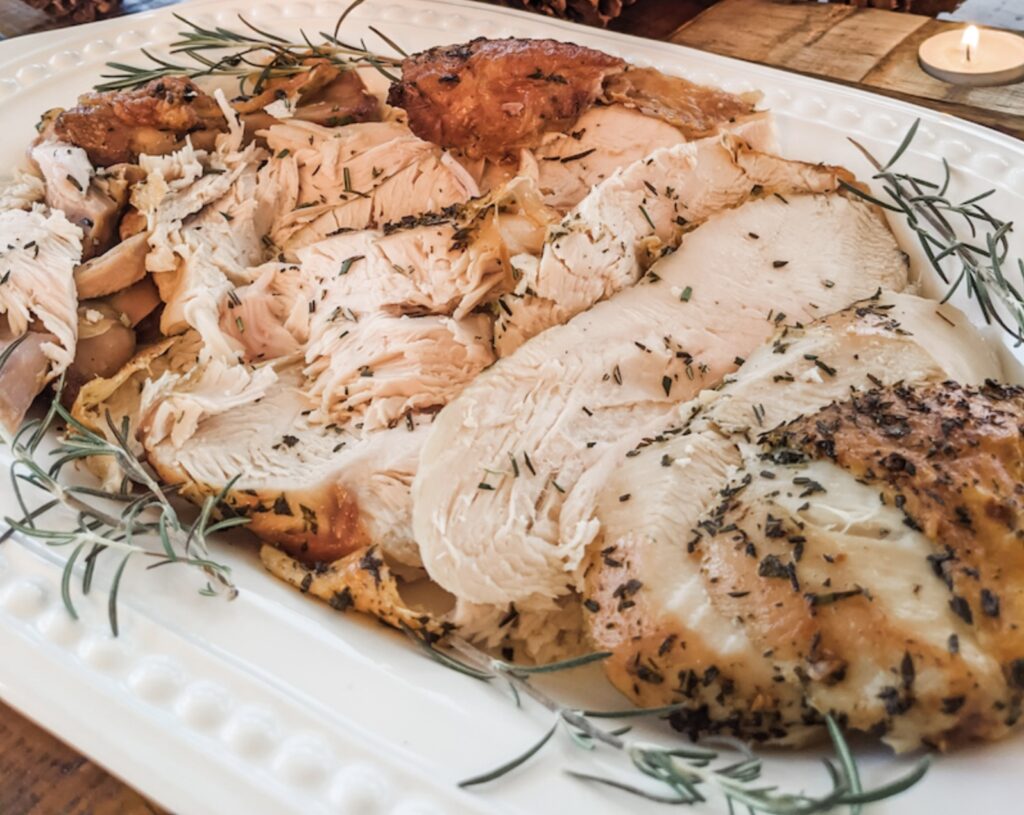

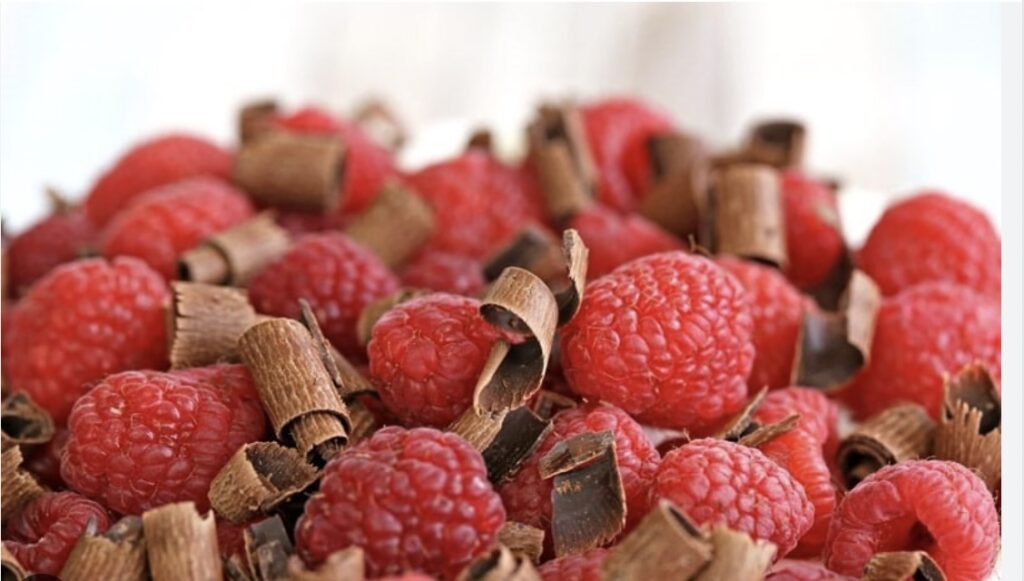
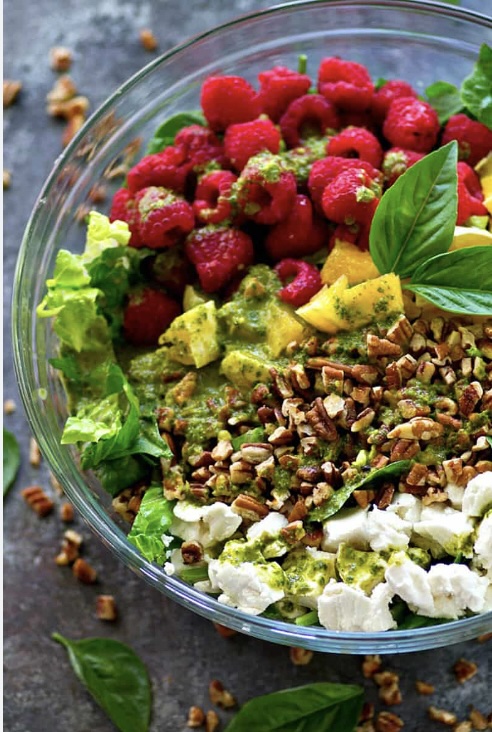
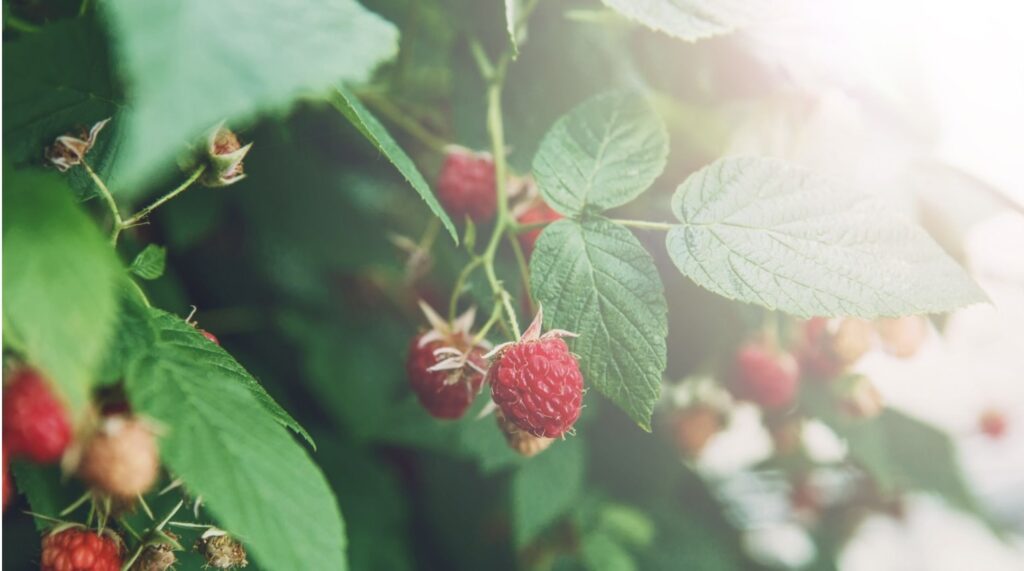

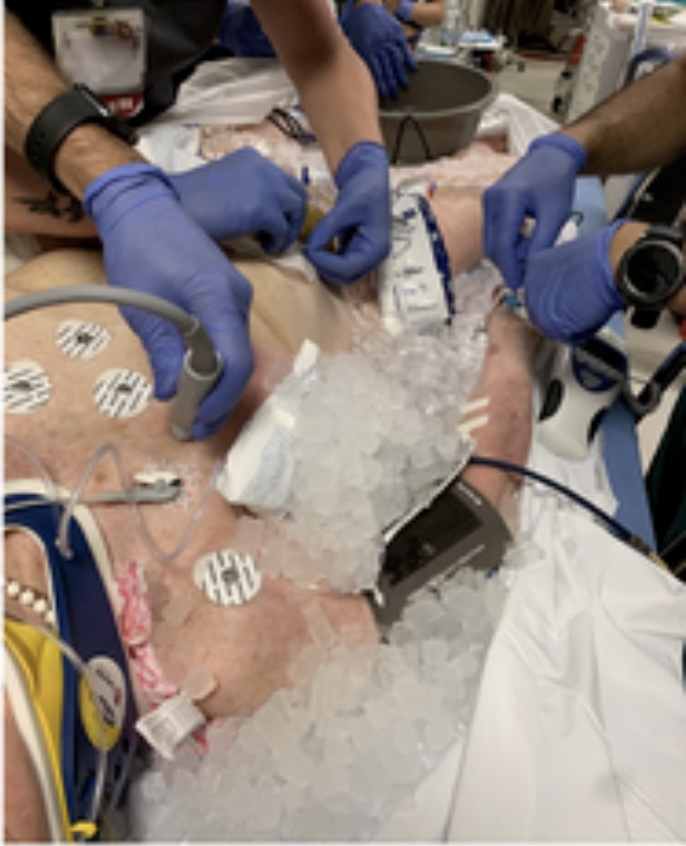
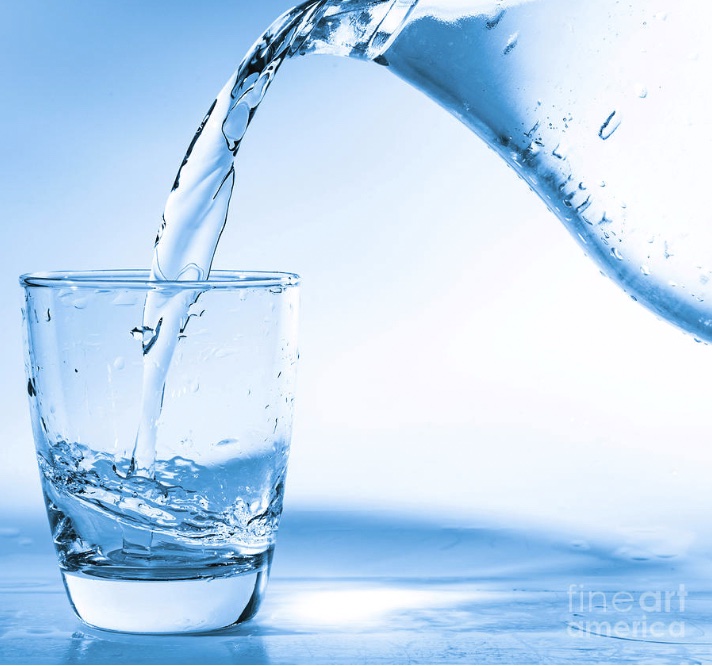
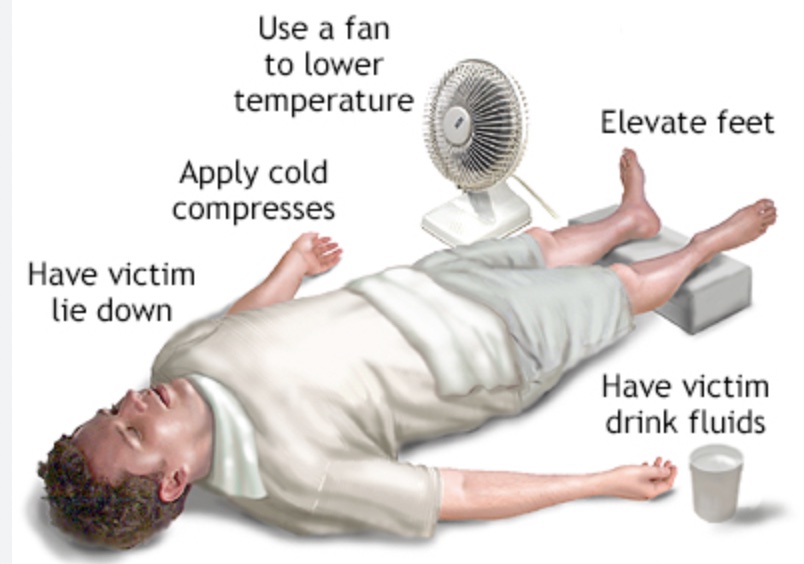



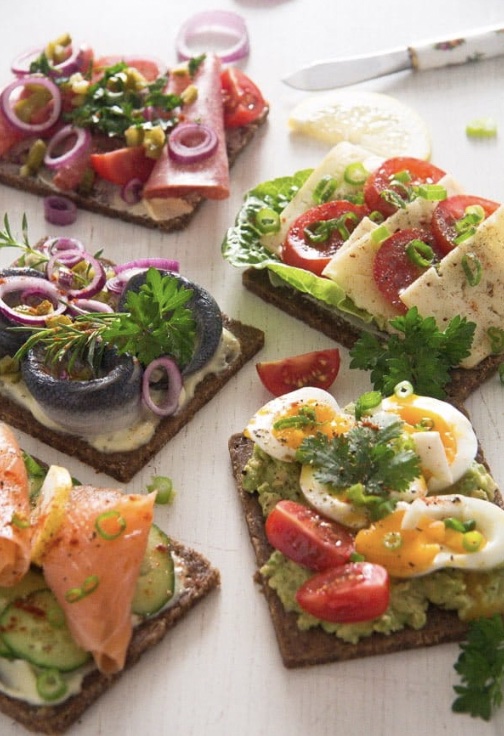

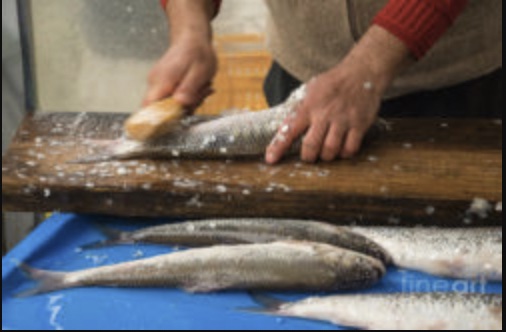
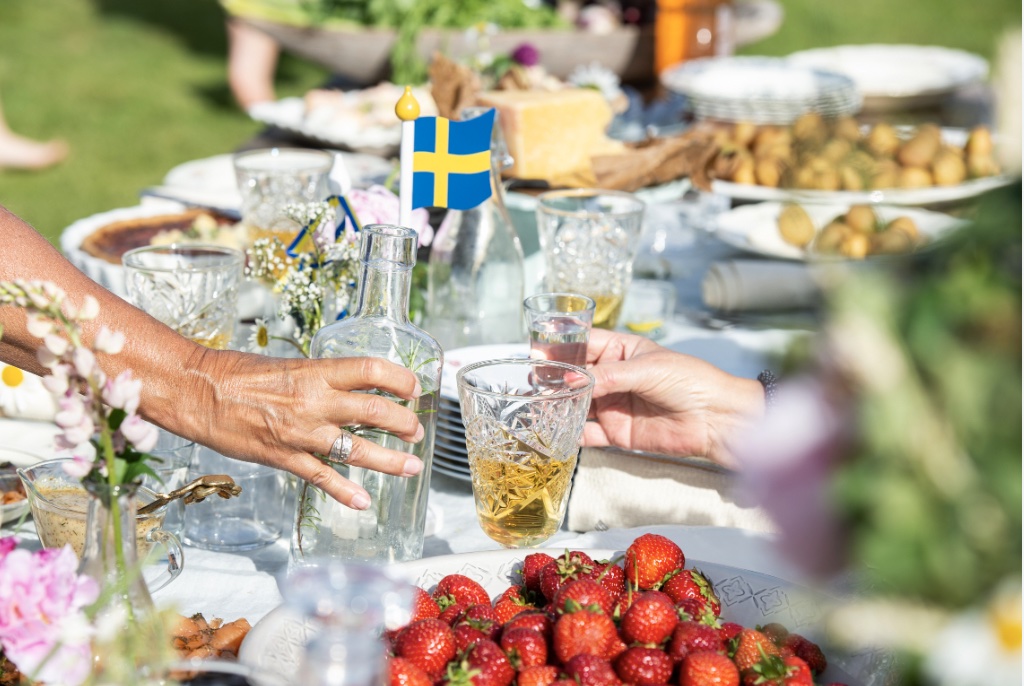




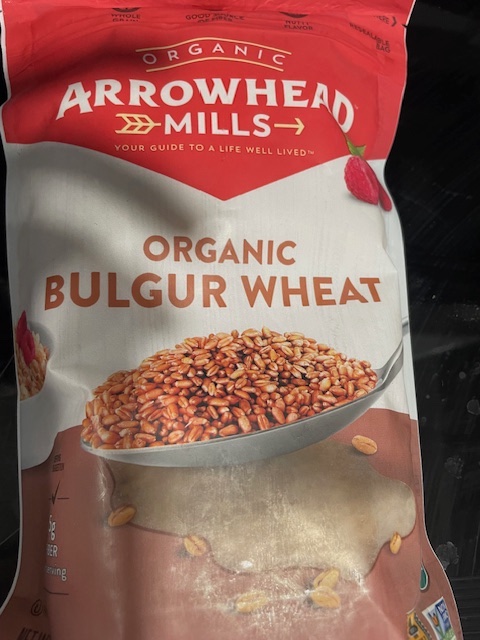
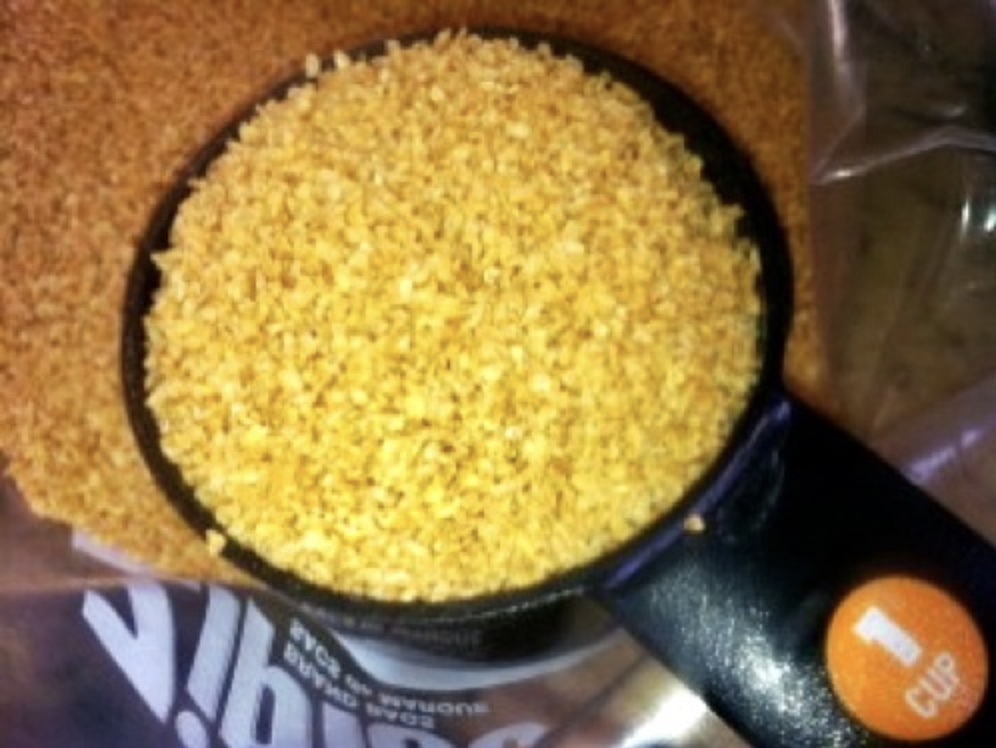
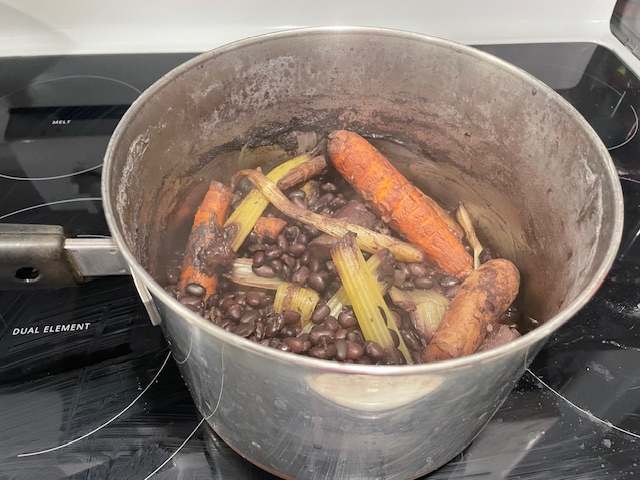
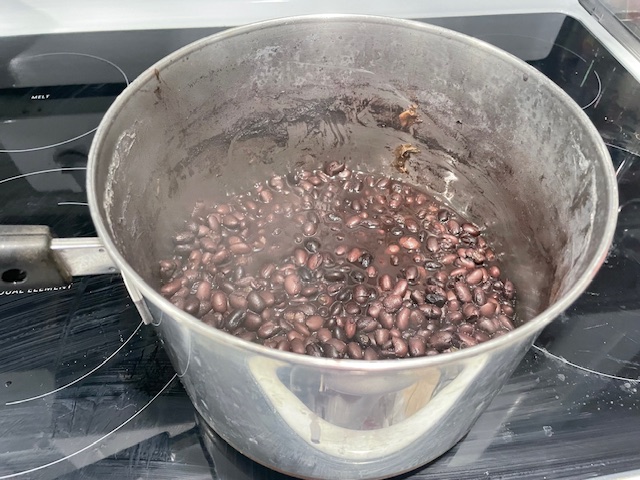
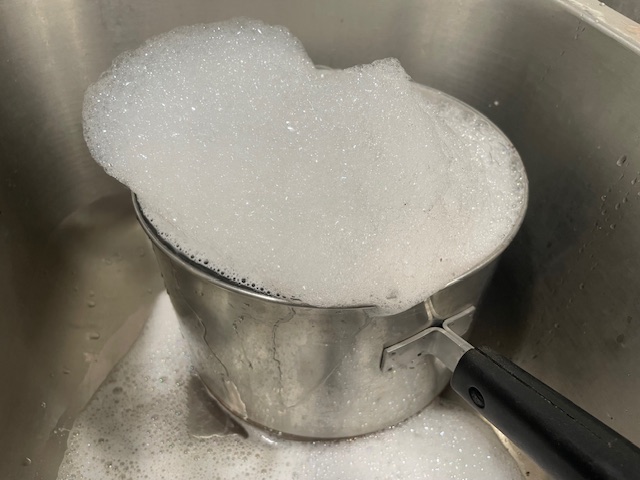
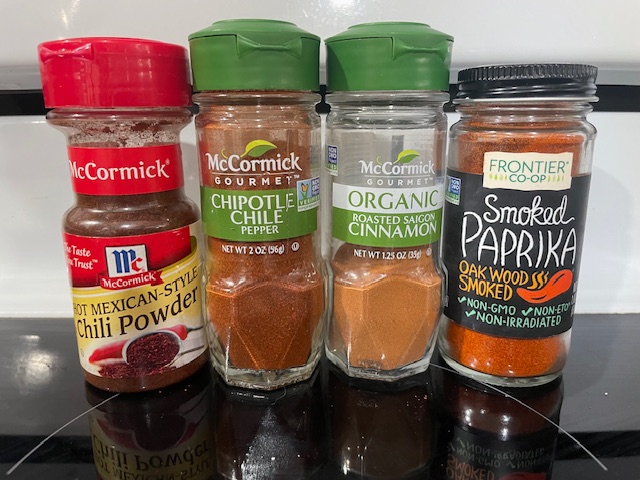

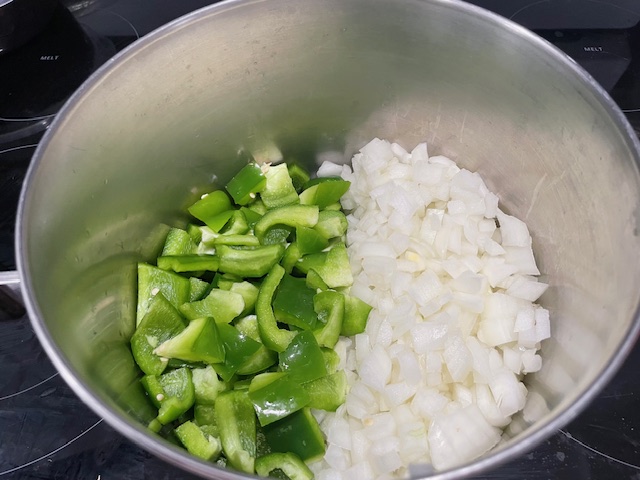
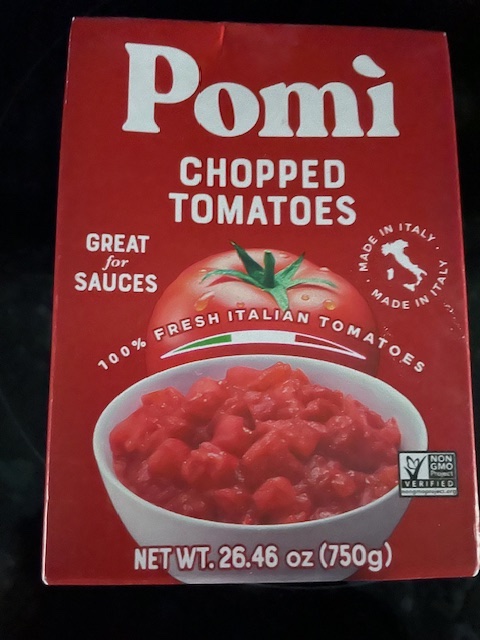

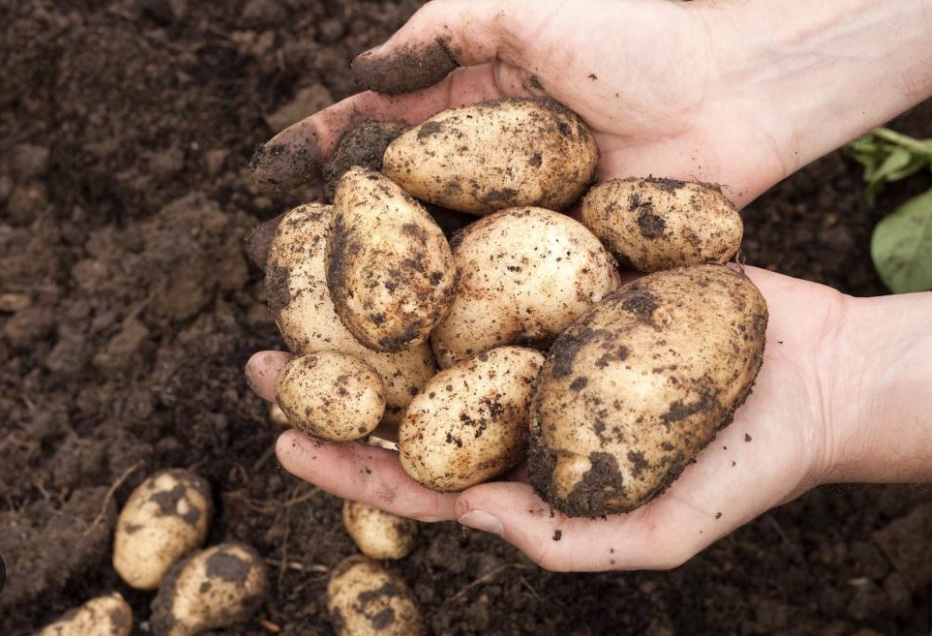
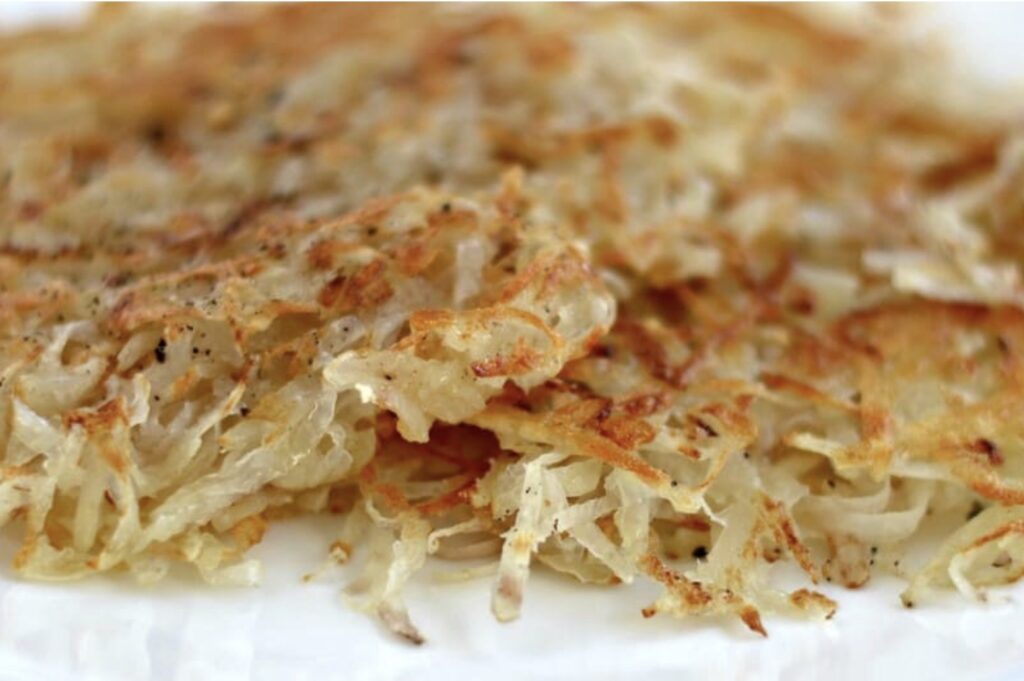
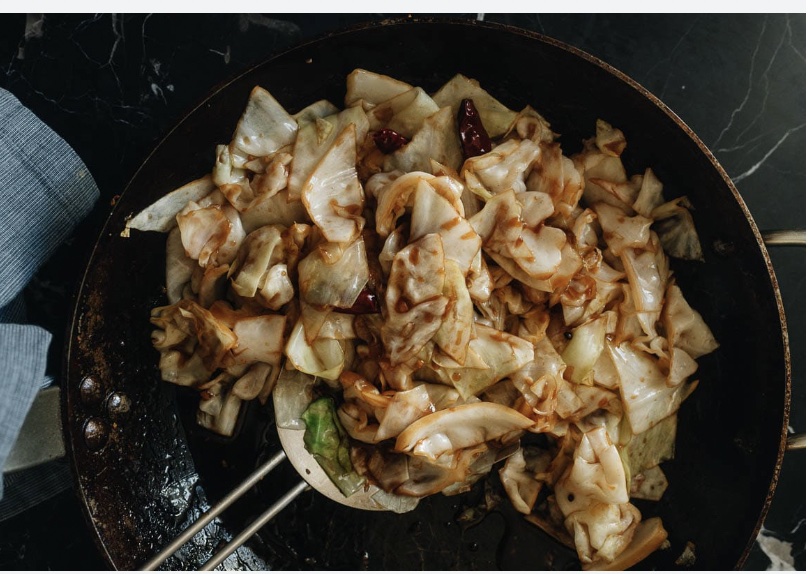

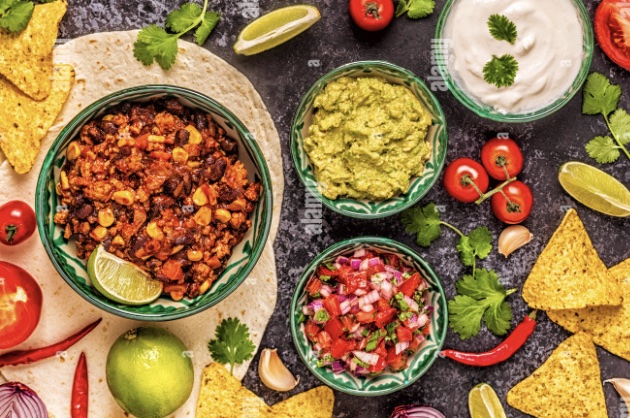
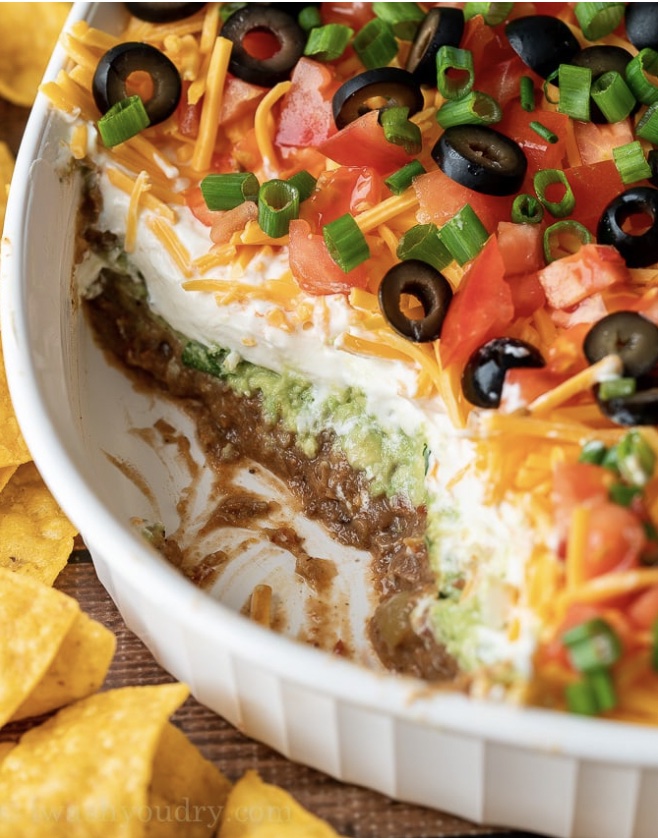

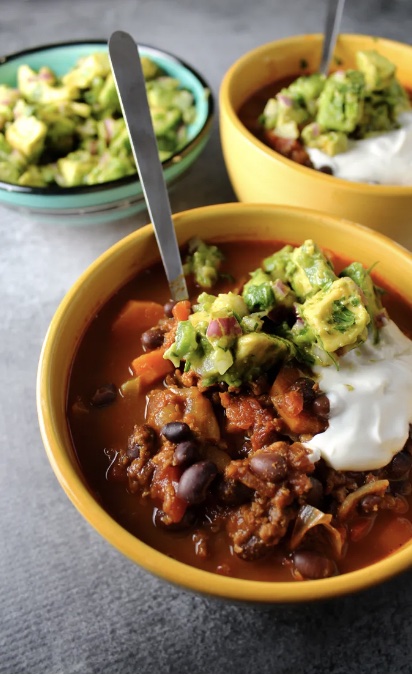
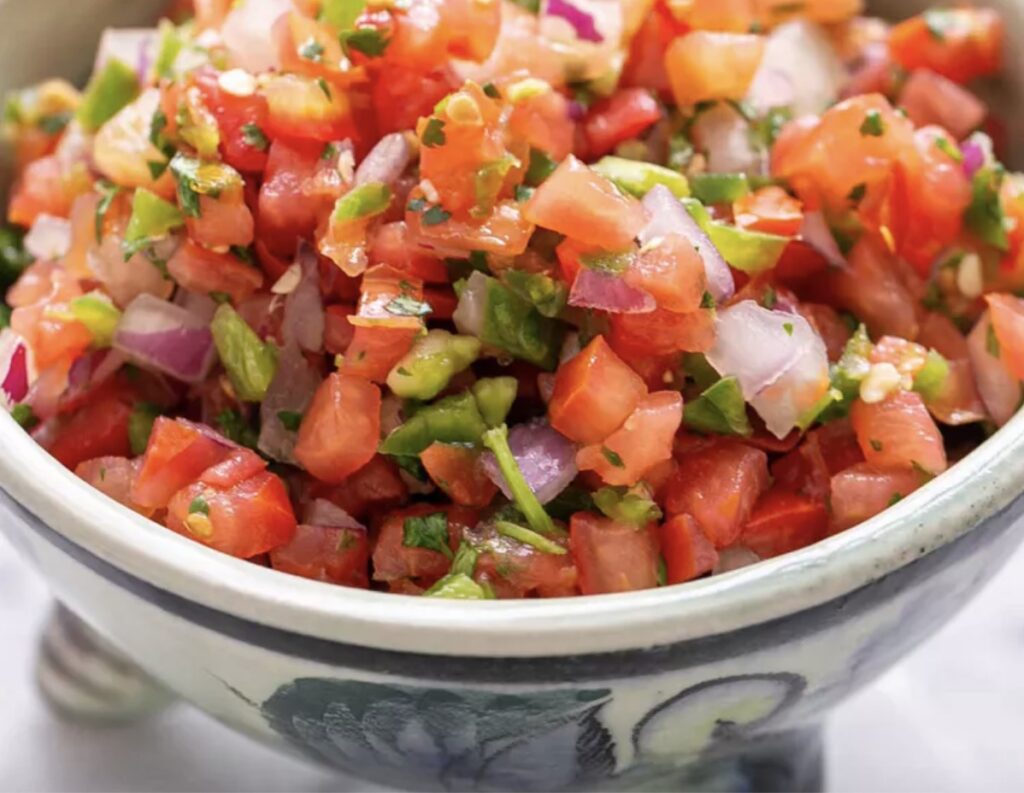
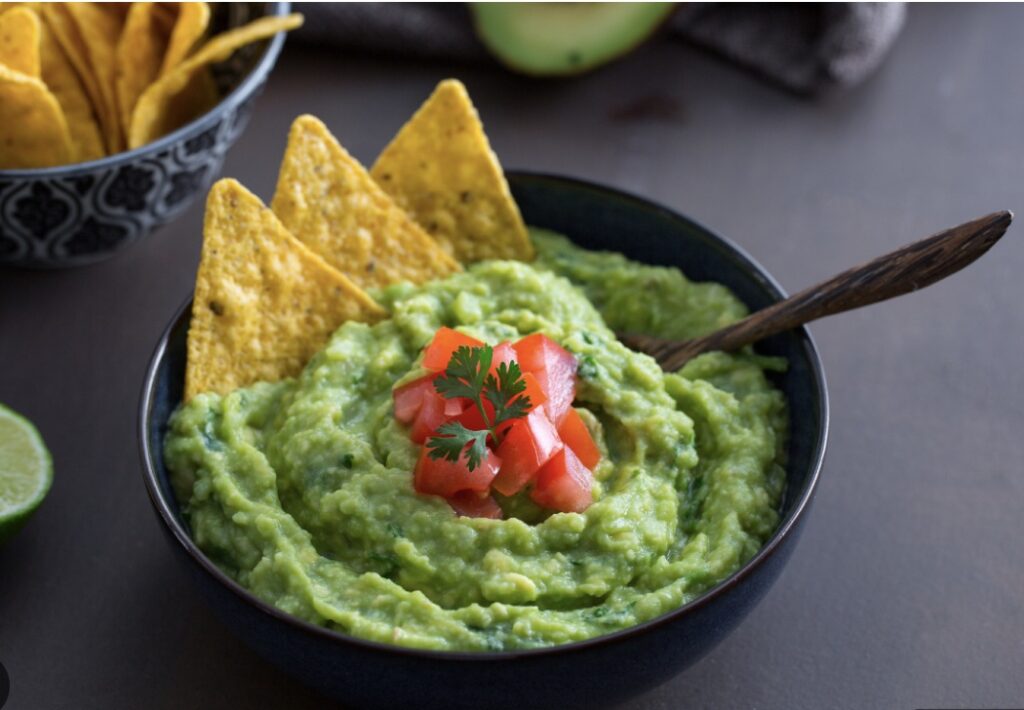
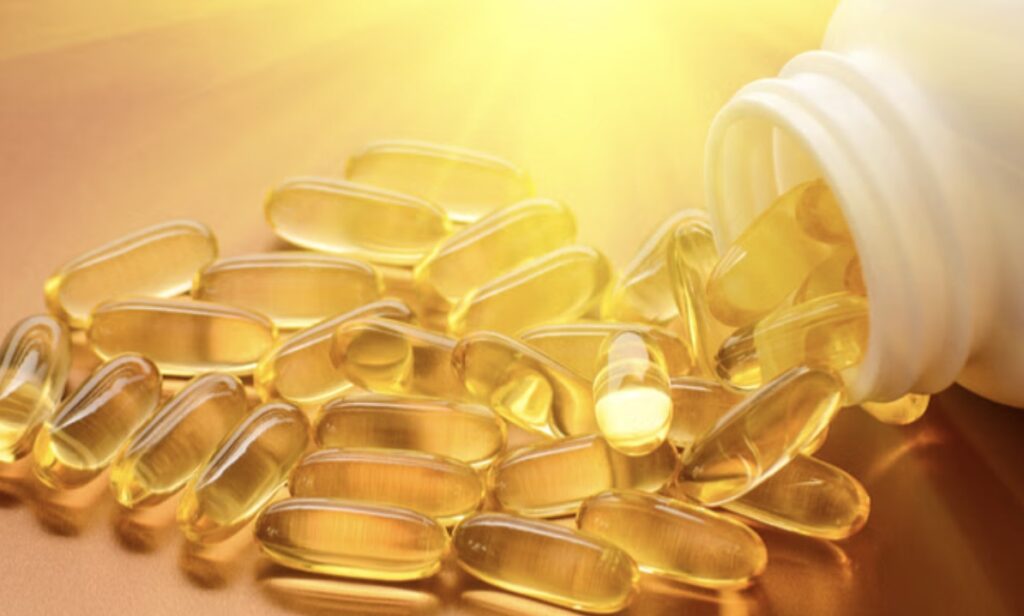
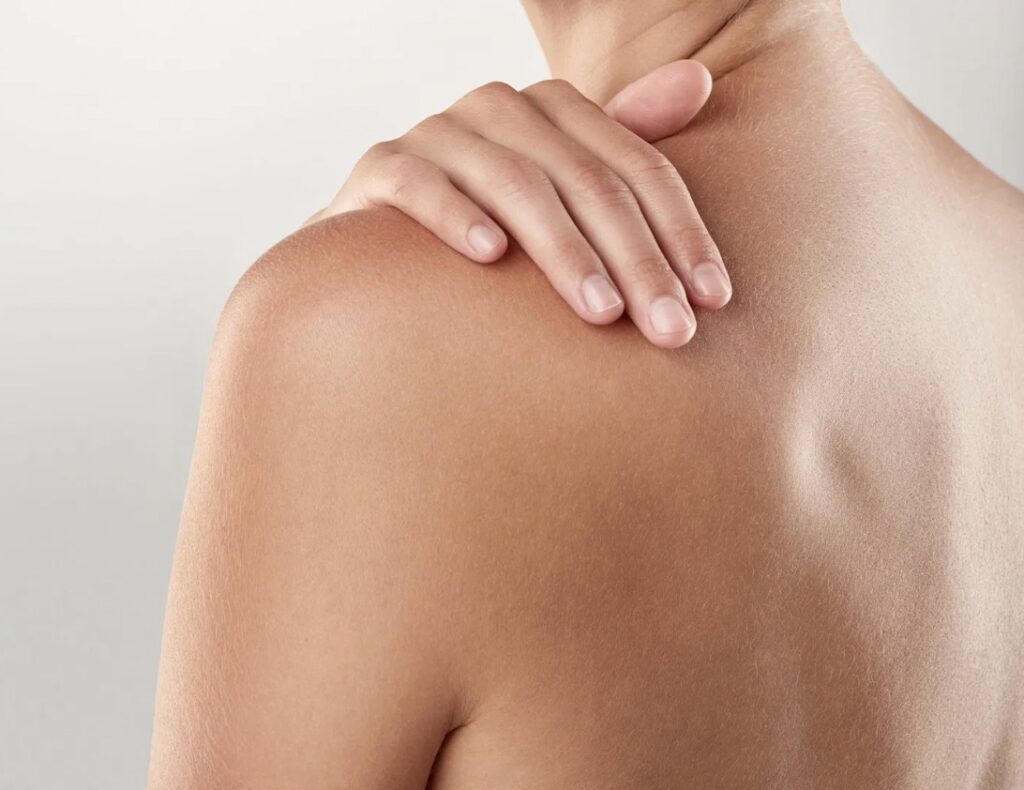
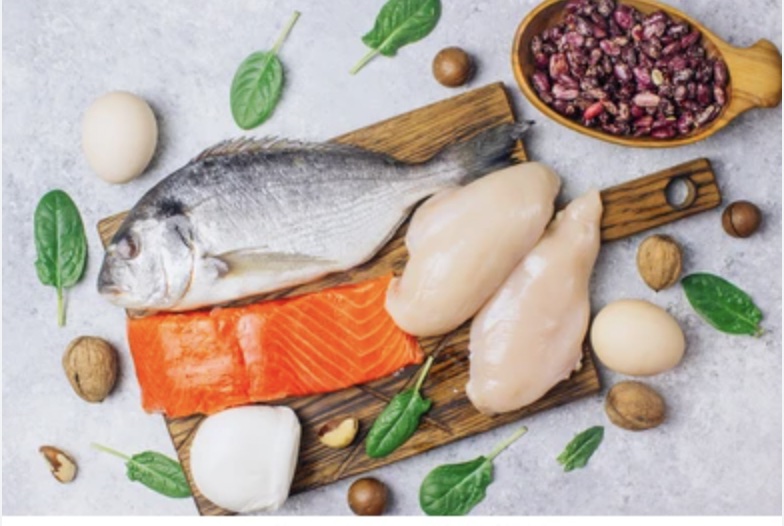



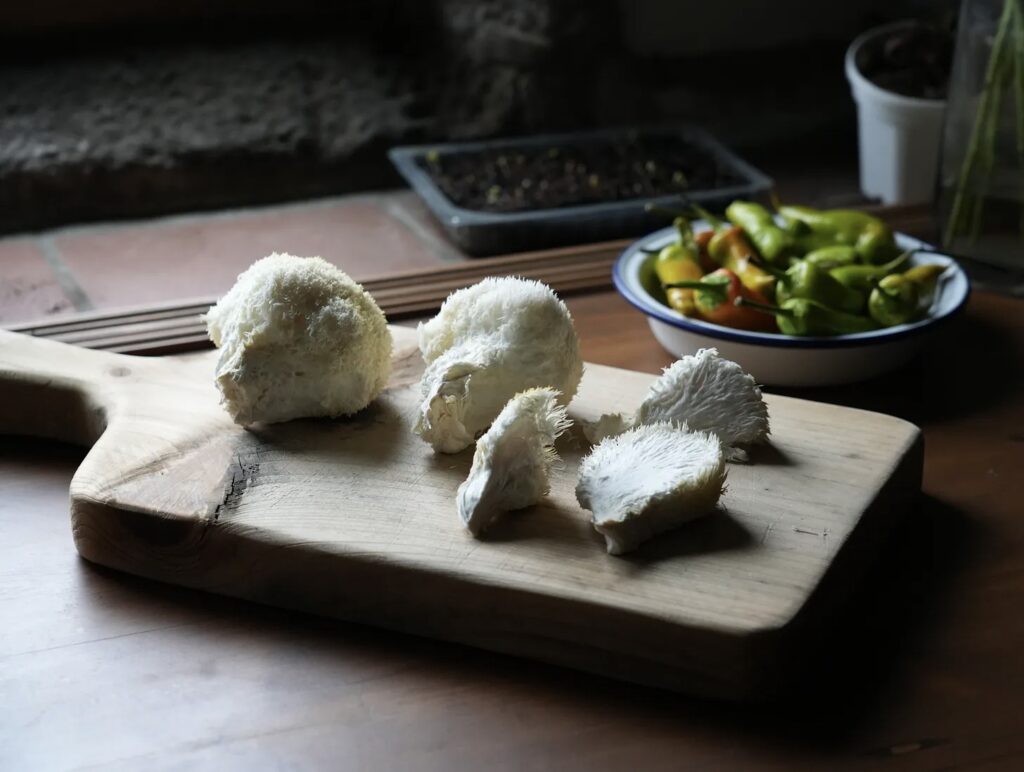

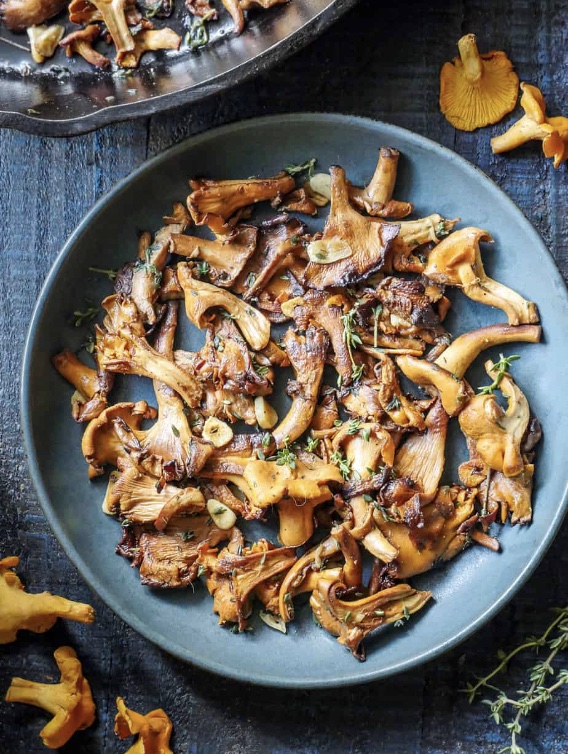


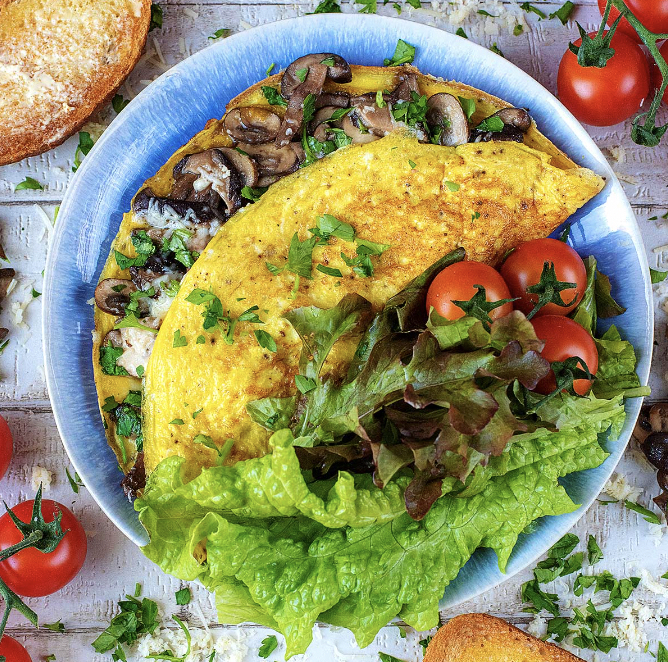


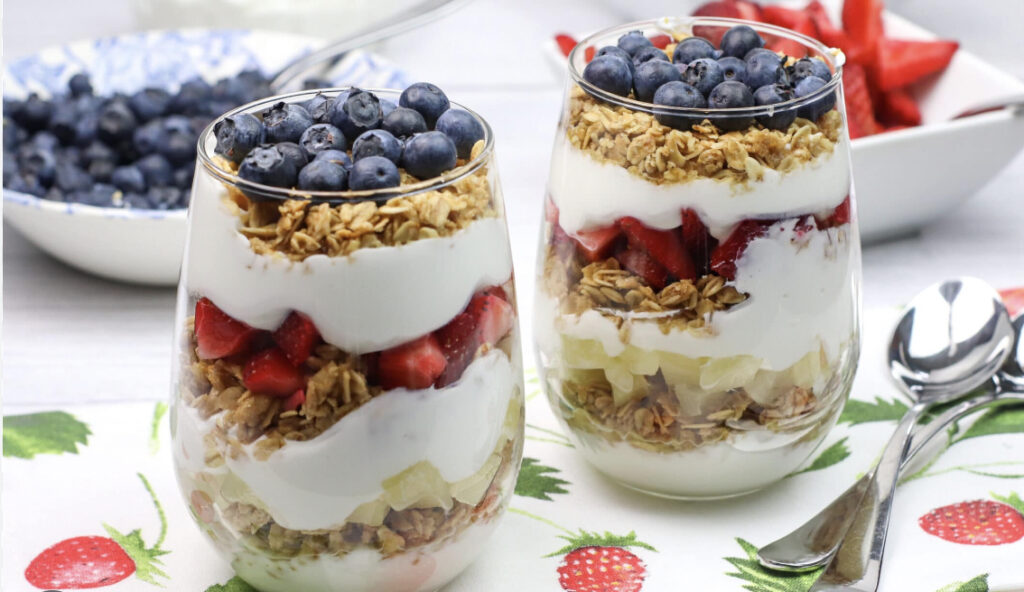

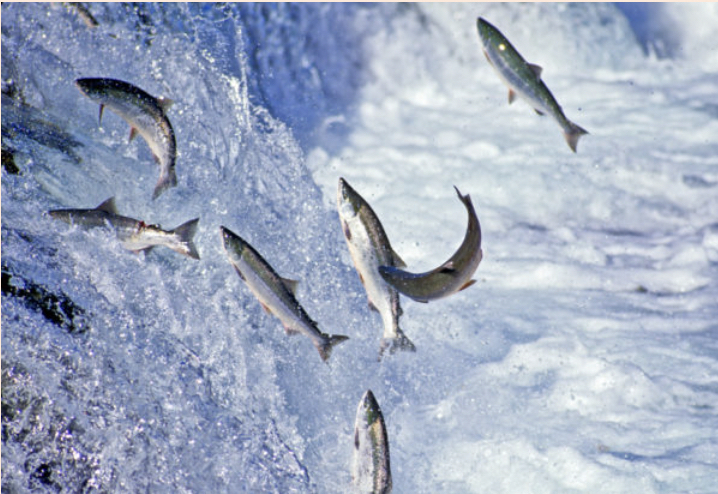
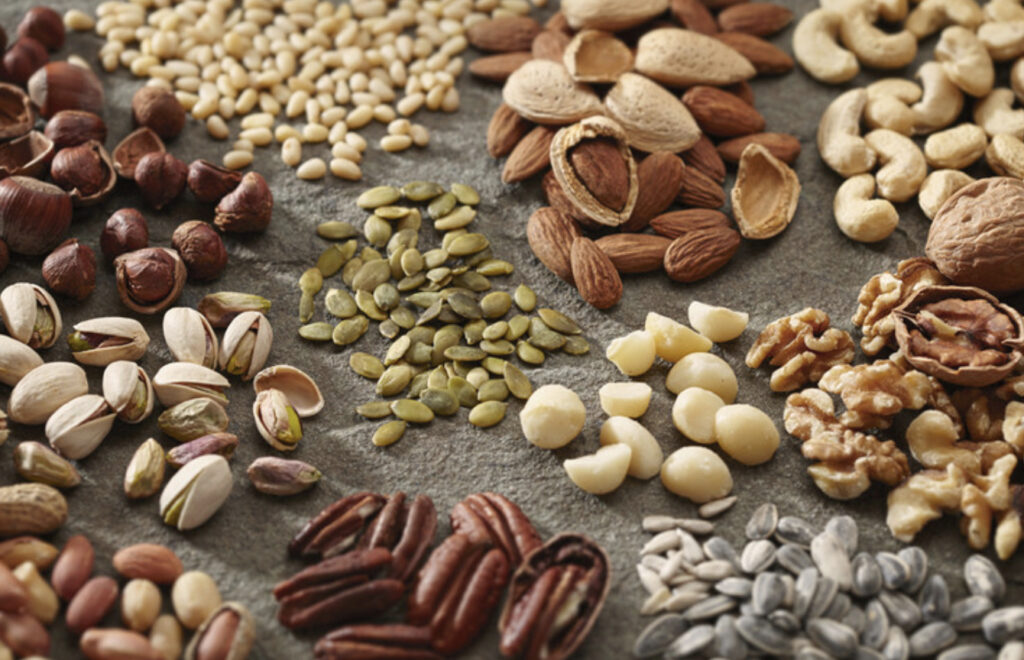
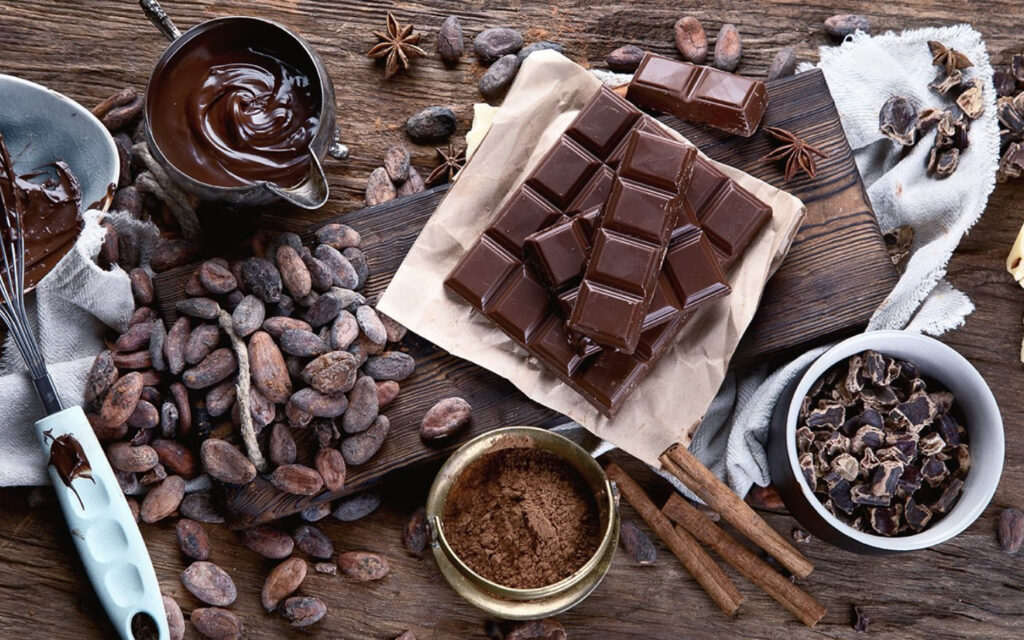


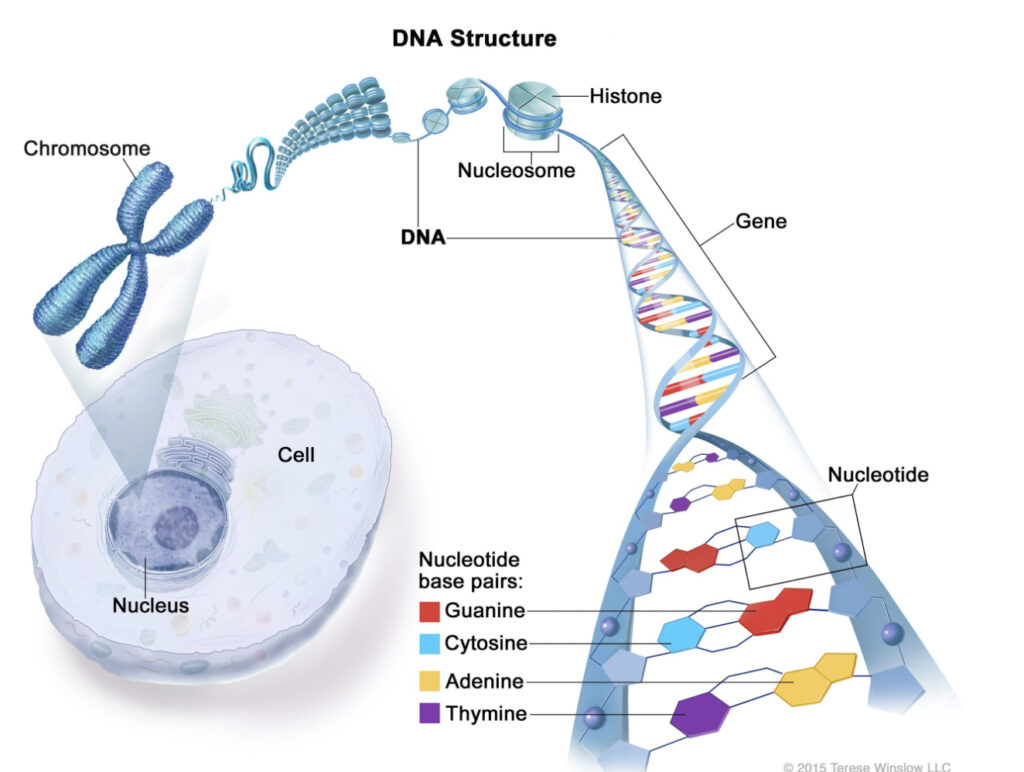
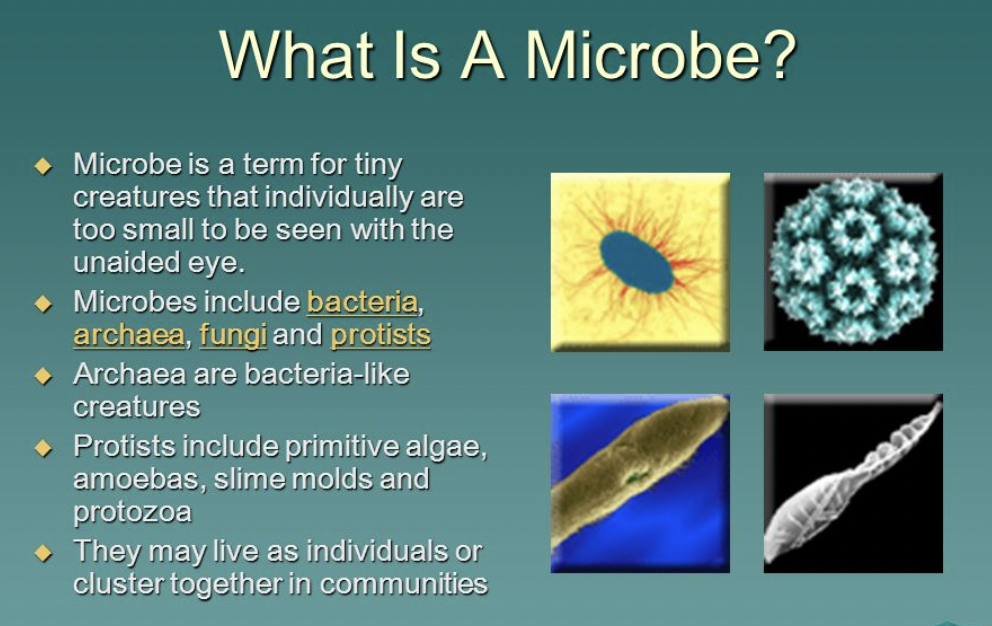

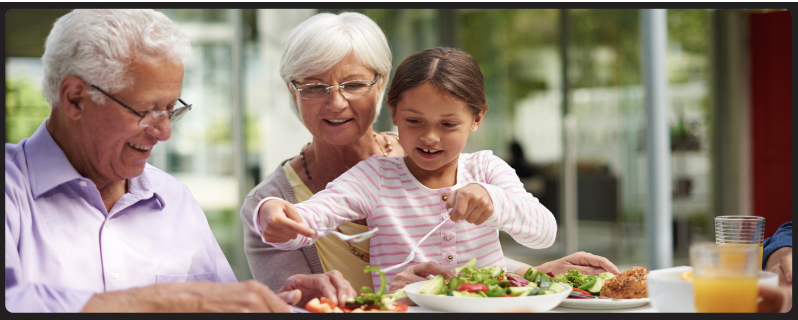


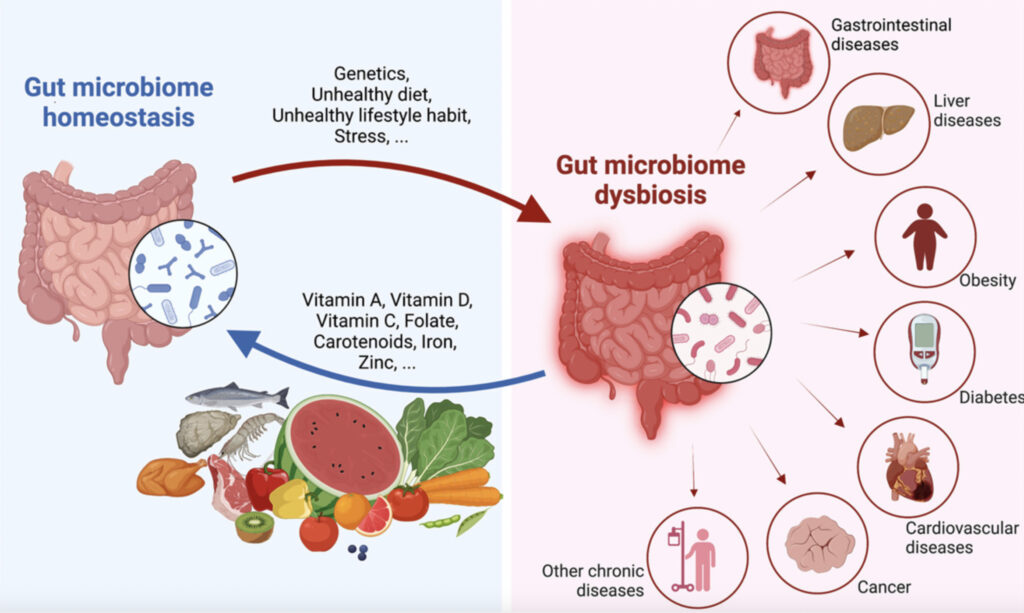
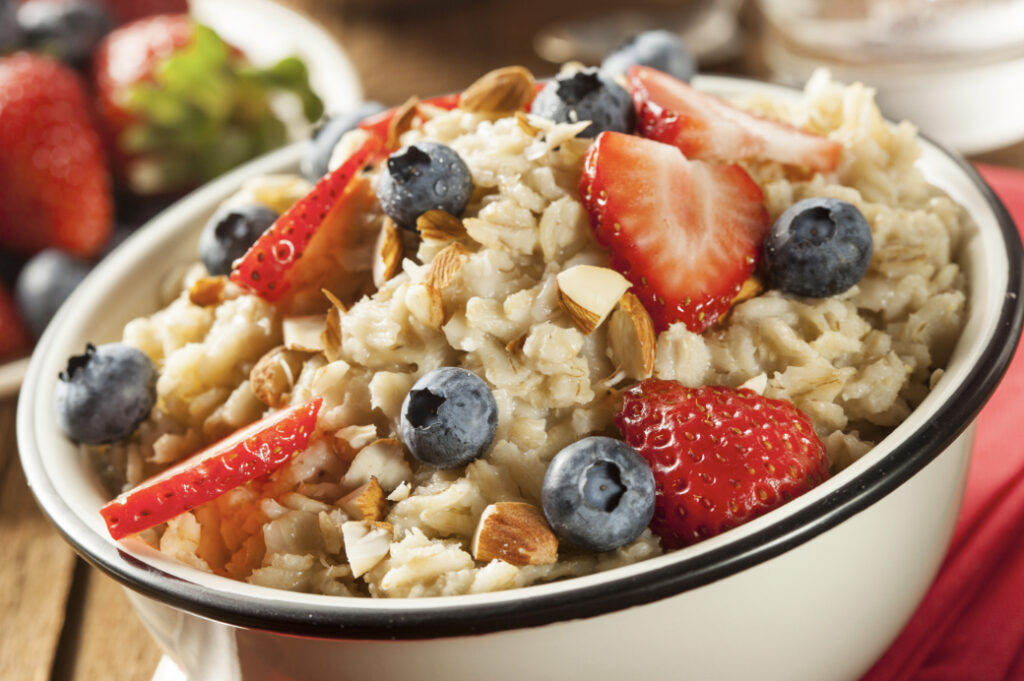

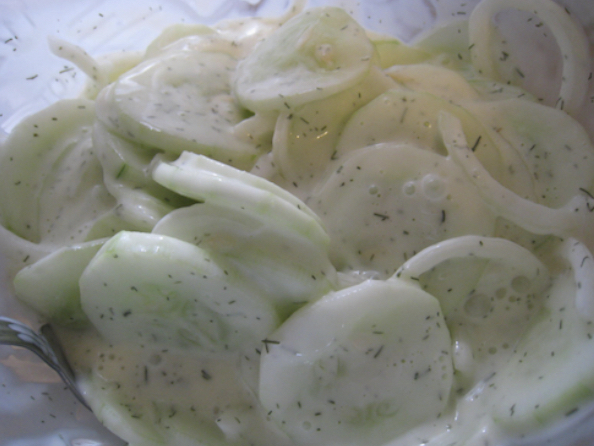
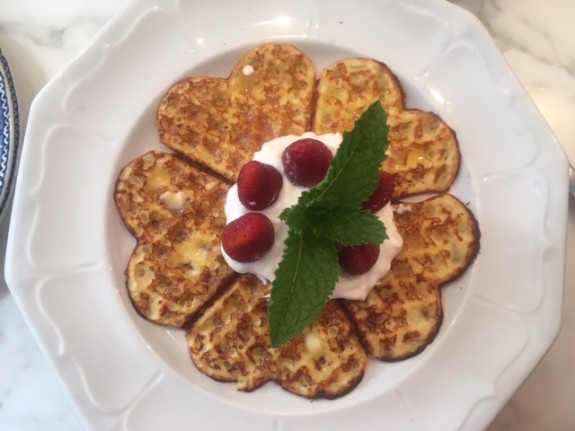

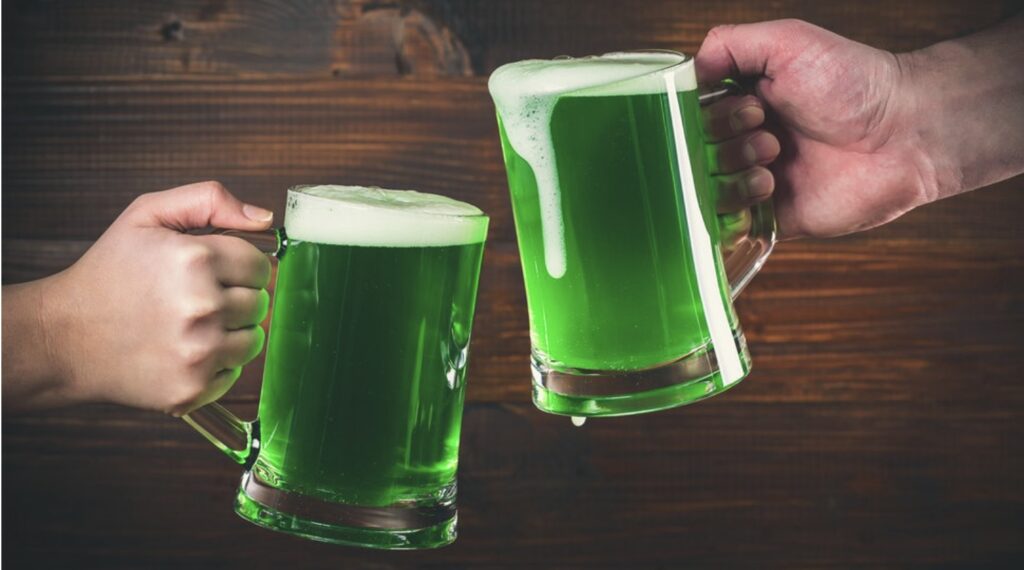




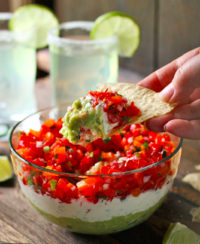
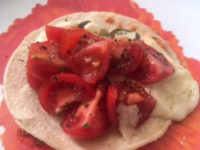



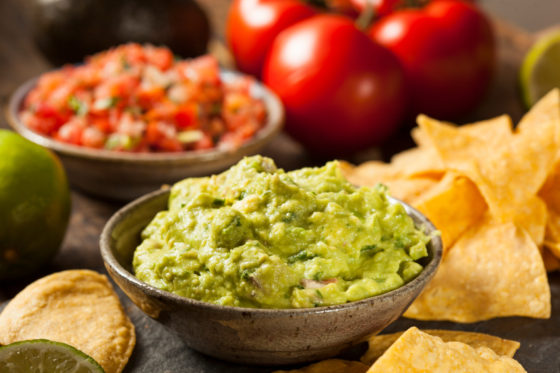



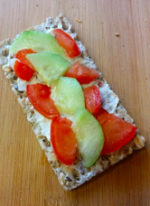
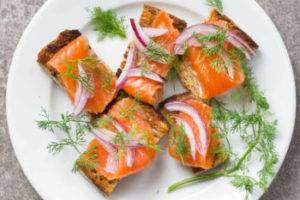

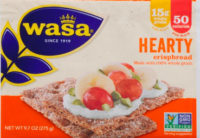
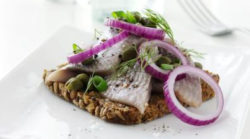





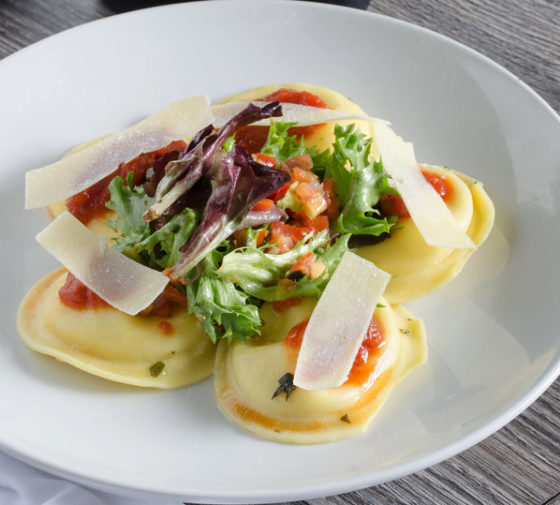

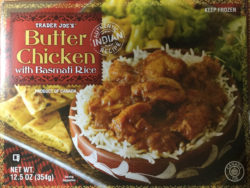
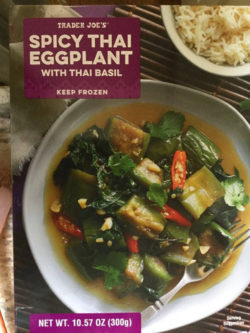
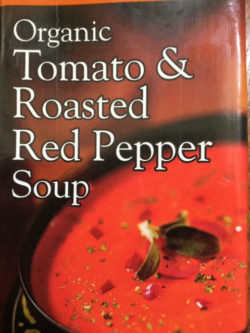
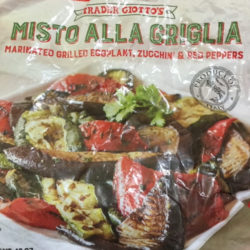







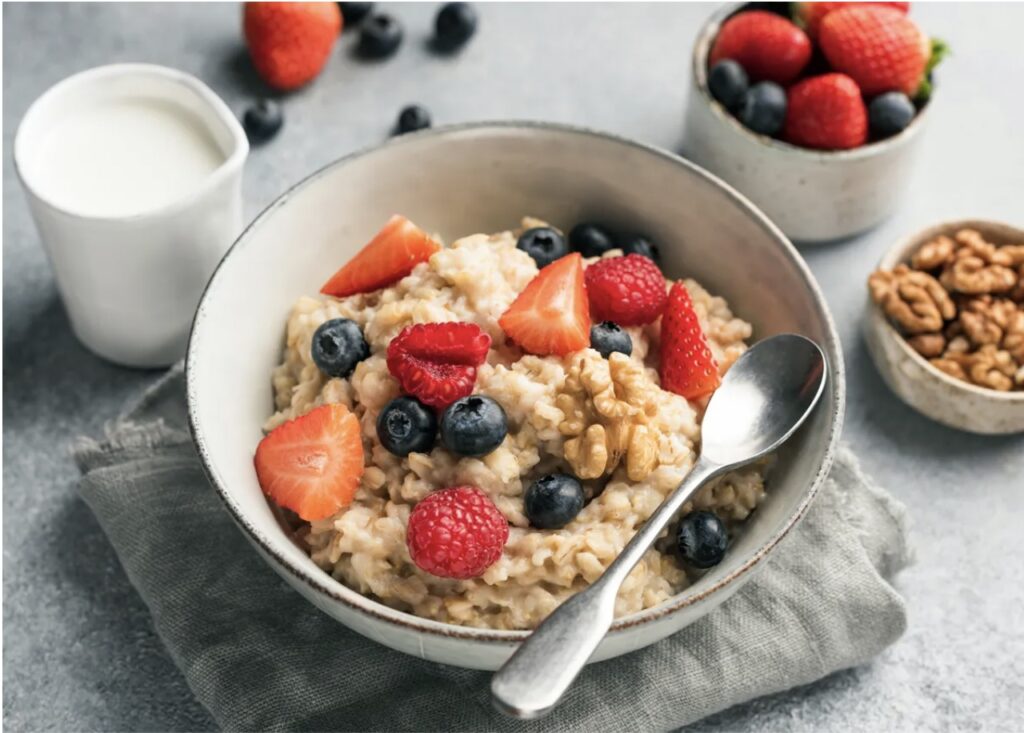


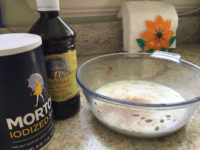
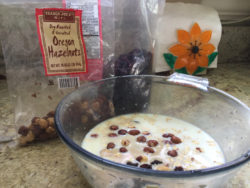



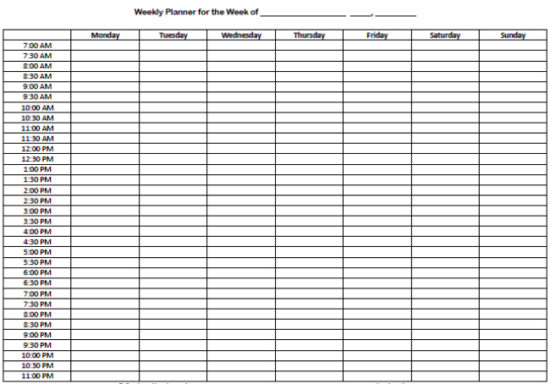





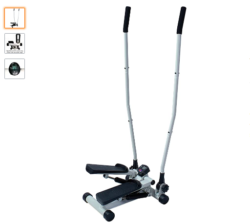







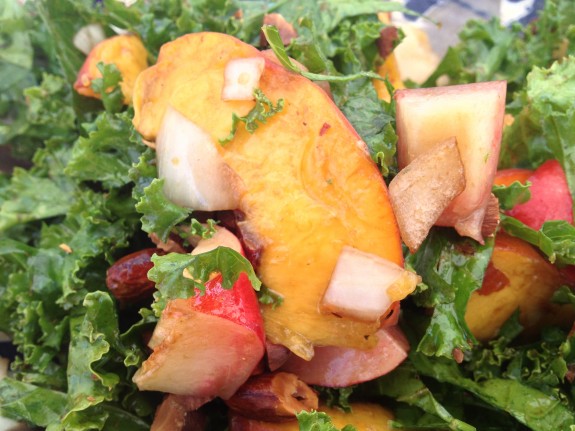

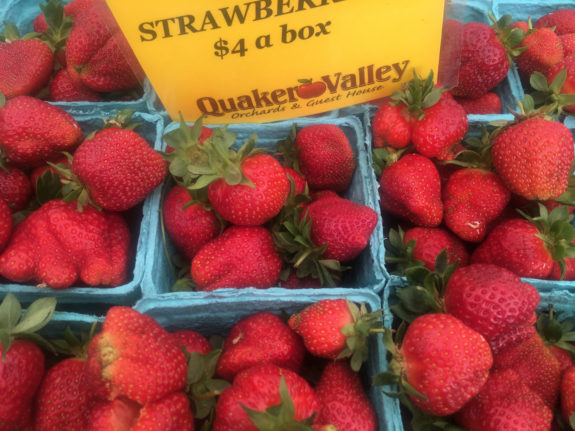
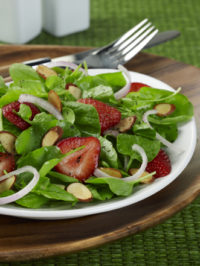


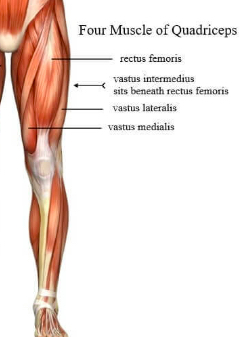







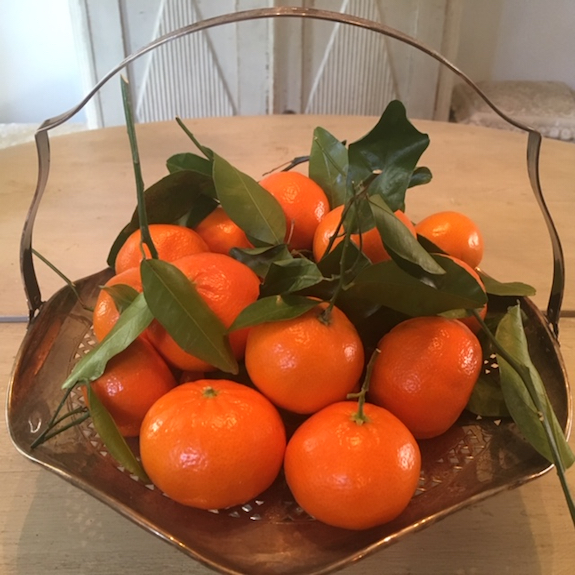





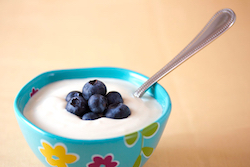





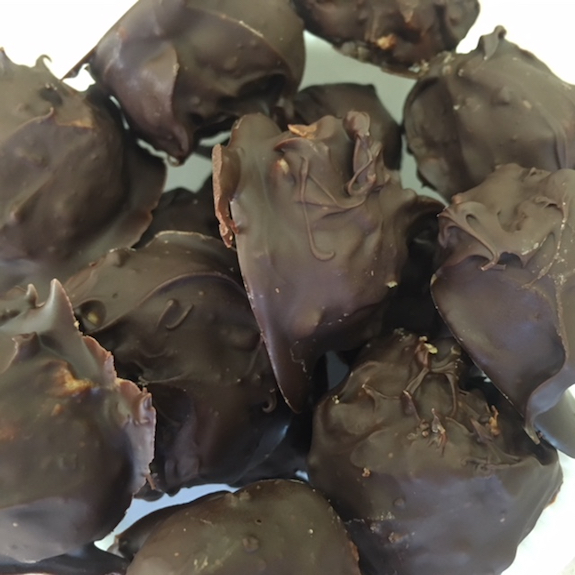


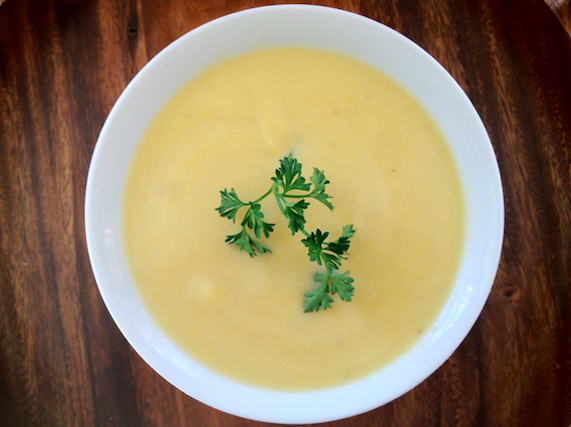









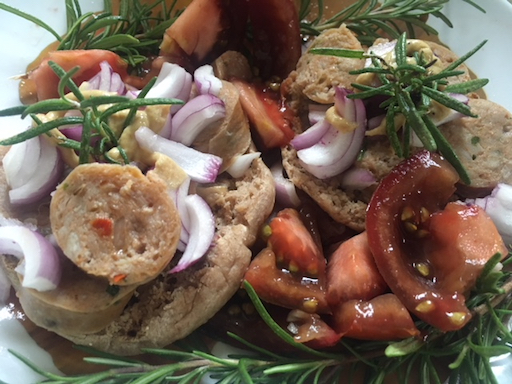




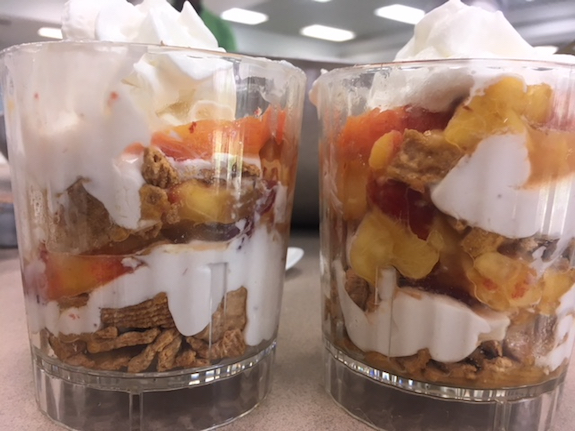


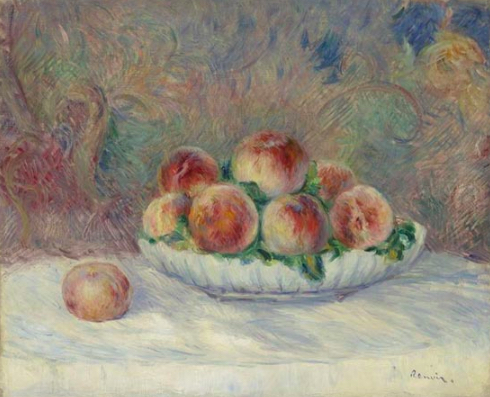
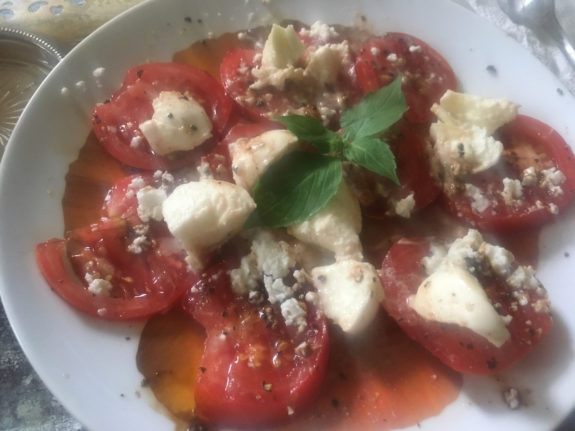


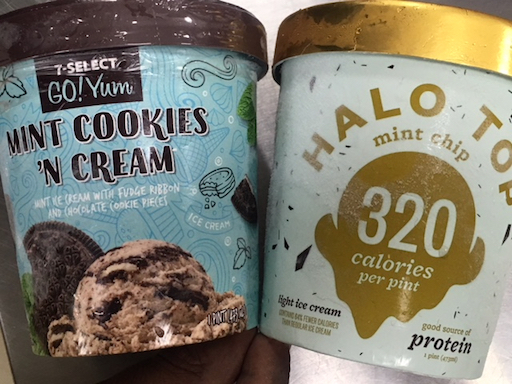

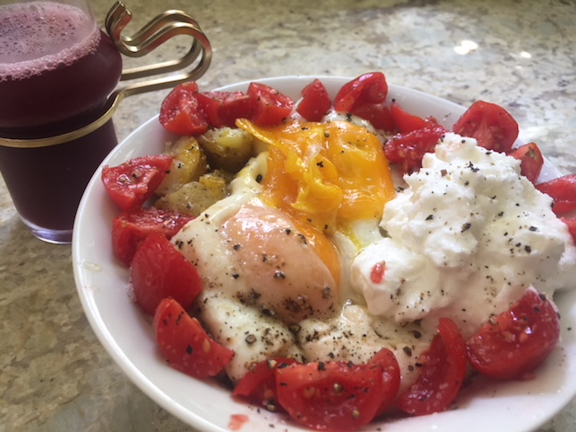
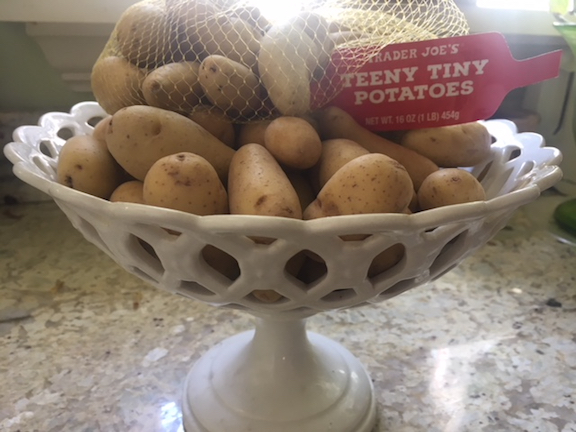
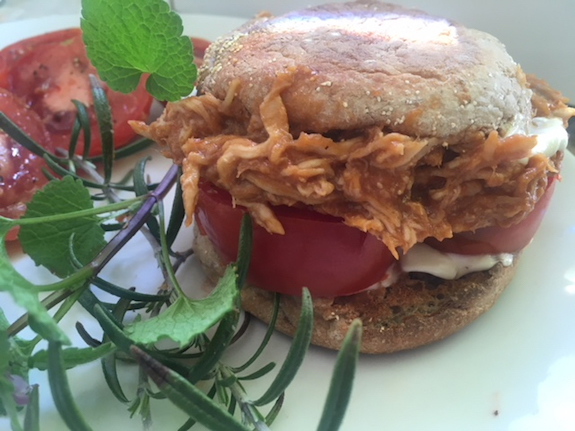
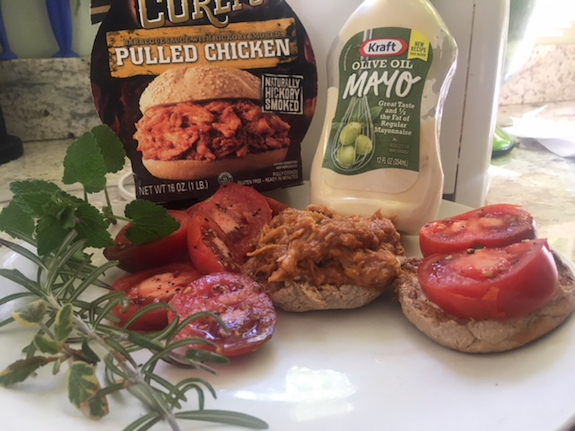





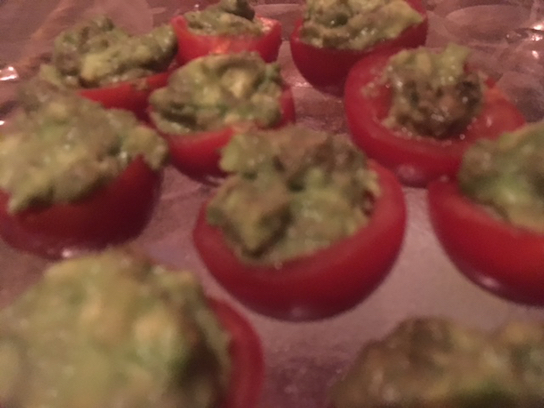
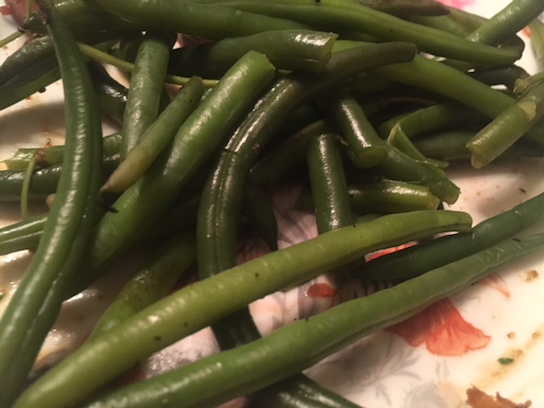
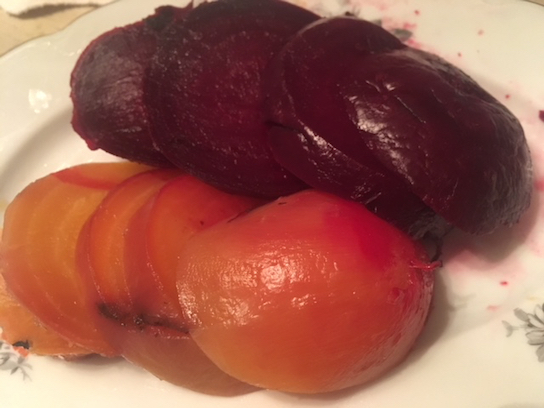
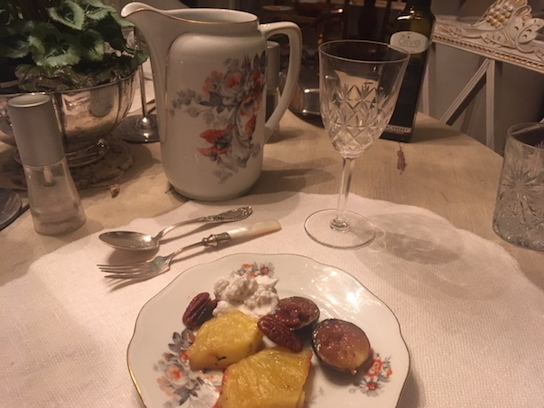

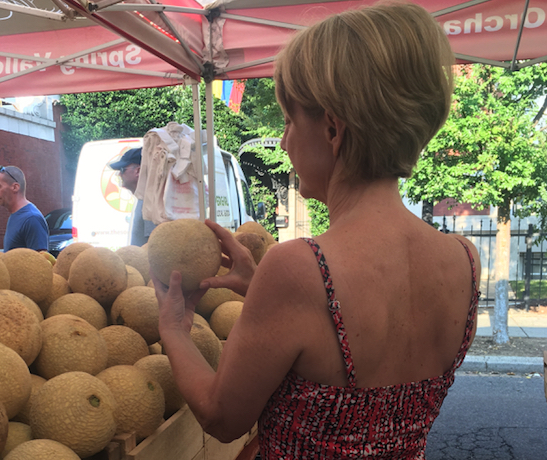
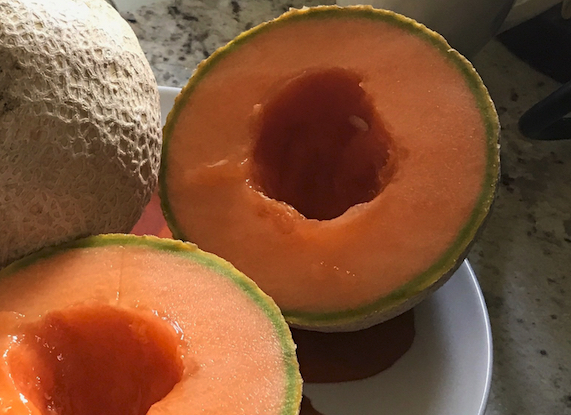

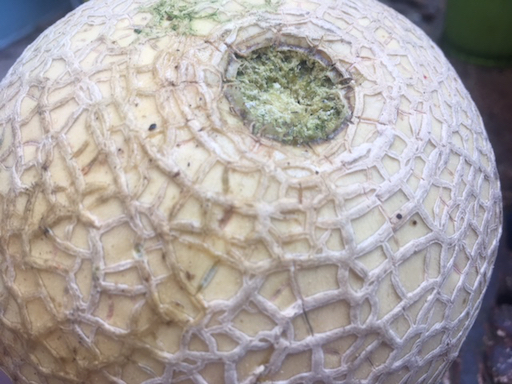

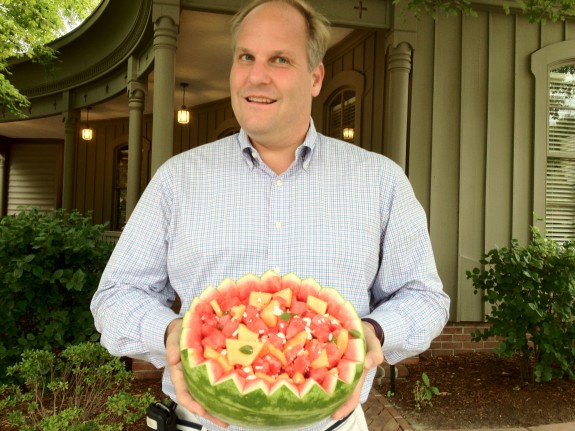






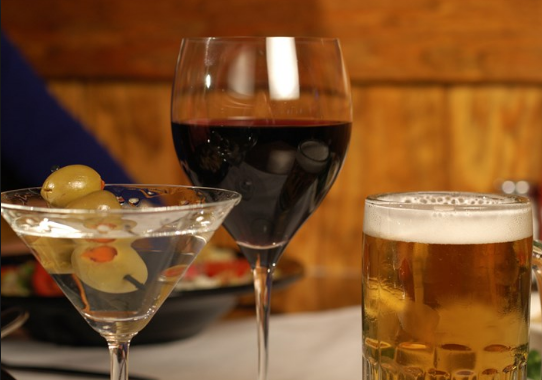
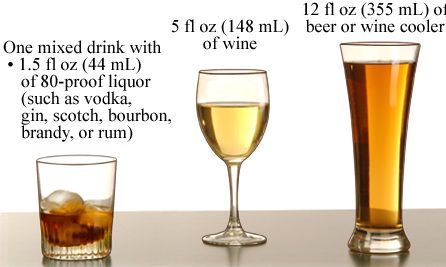
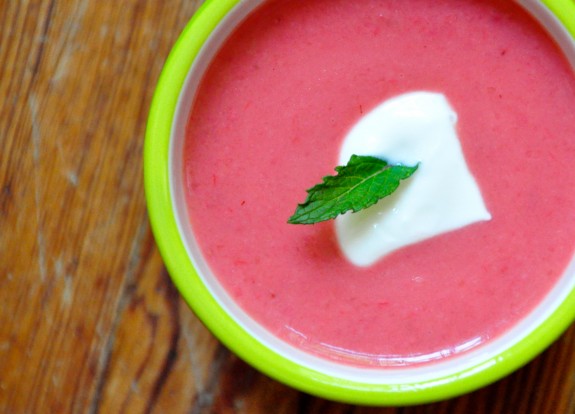
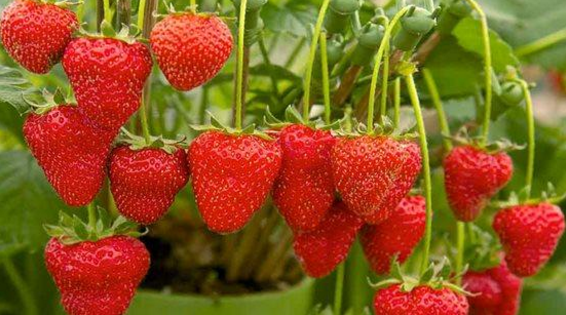
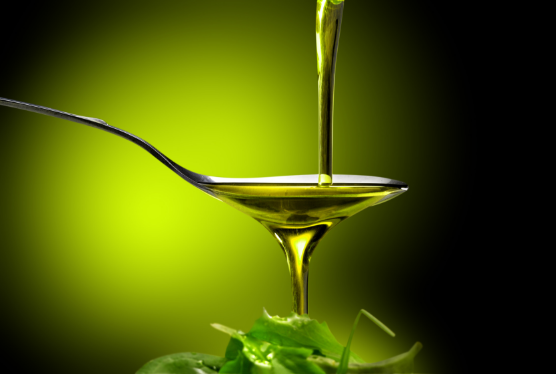

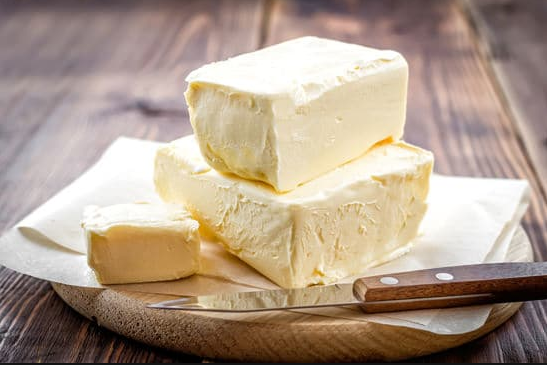
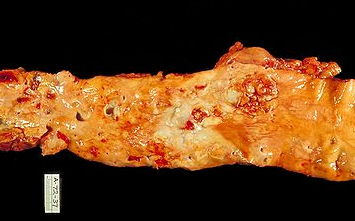

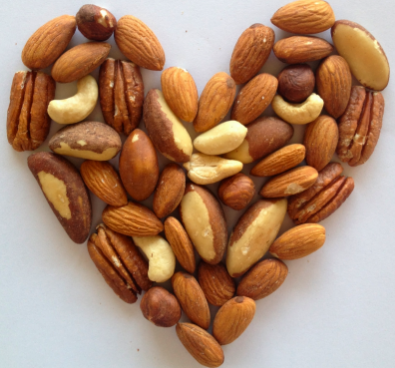
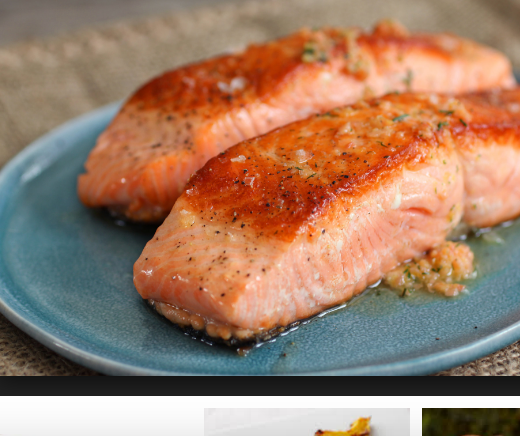
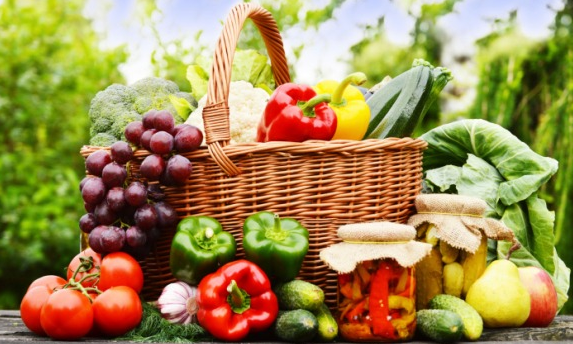


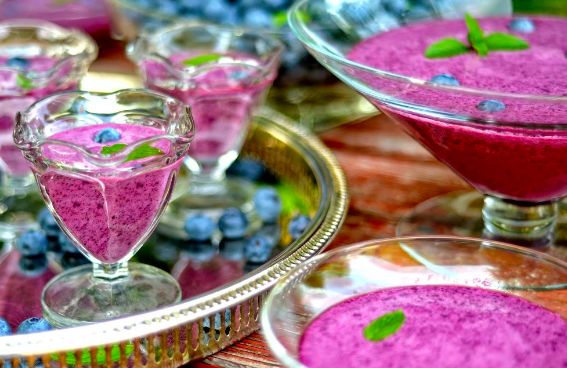


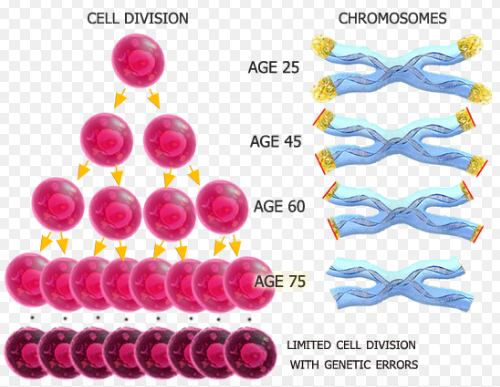


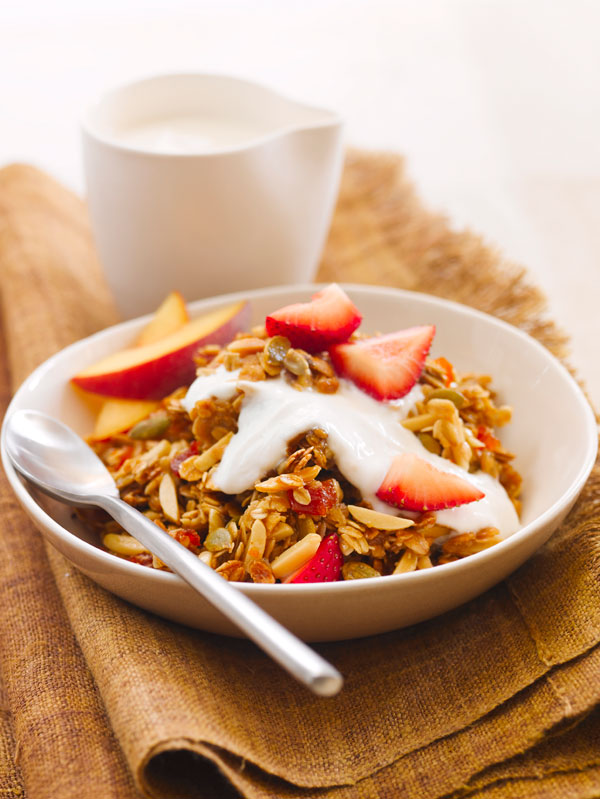



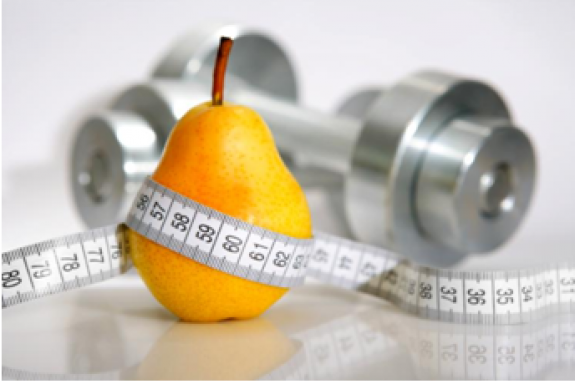
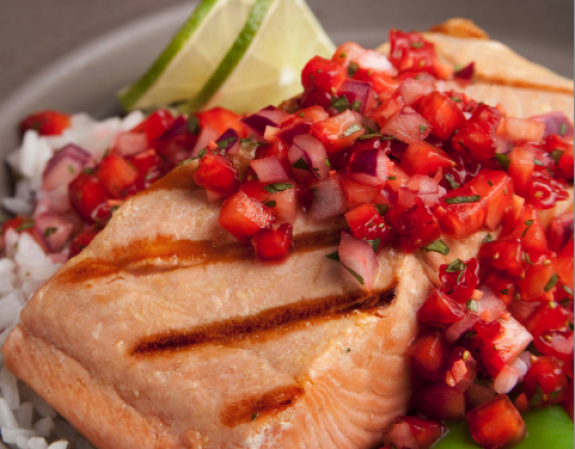
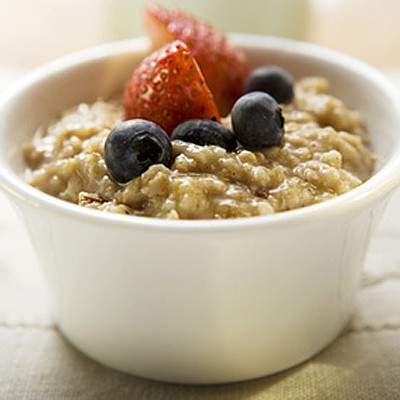




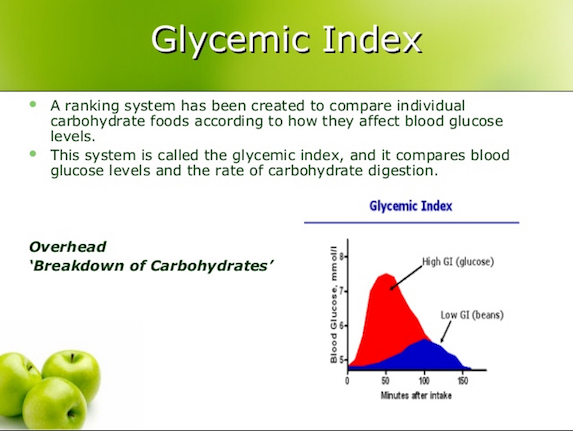
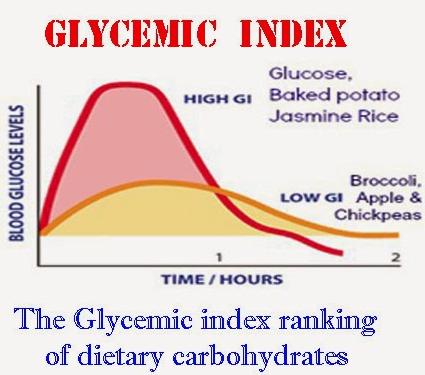



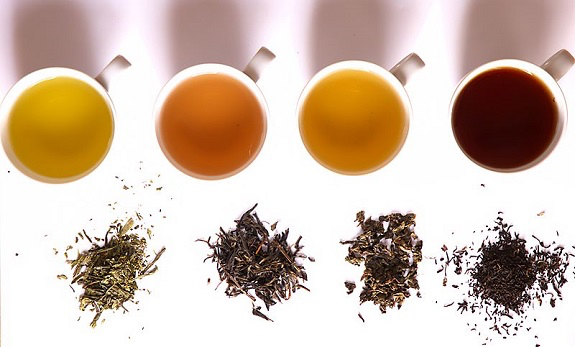


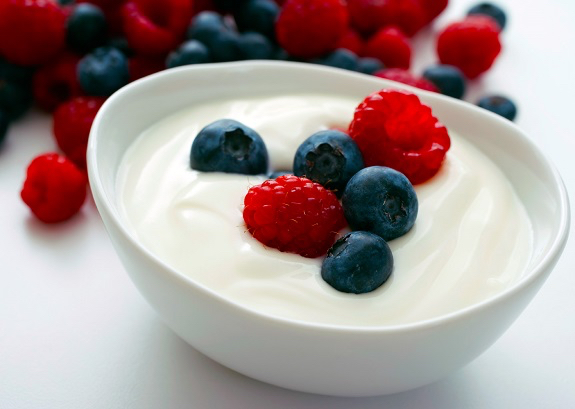

![oranges[1]](https://katherinetallmadge.com/wp-content/uploads/2015/11/oranges1.jpg)



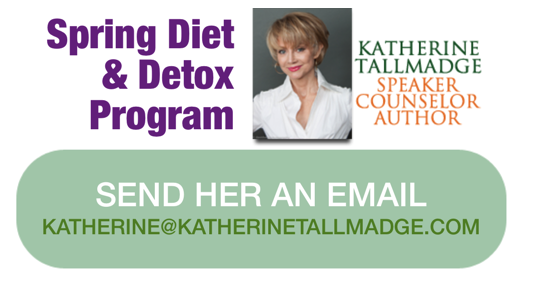


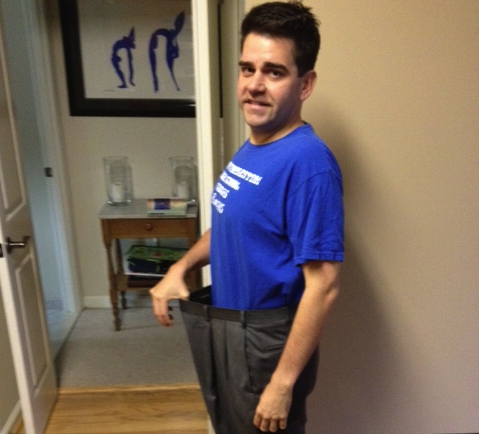



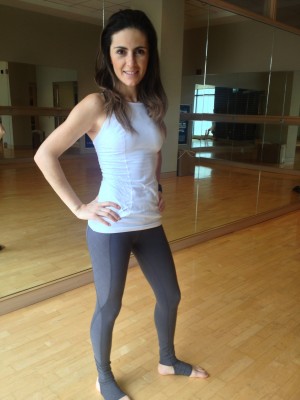
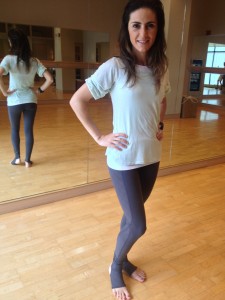





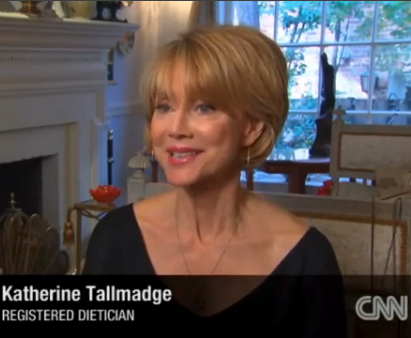


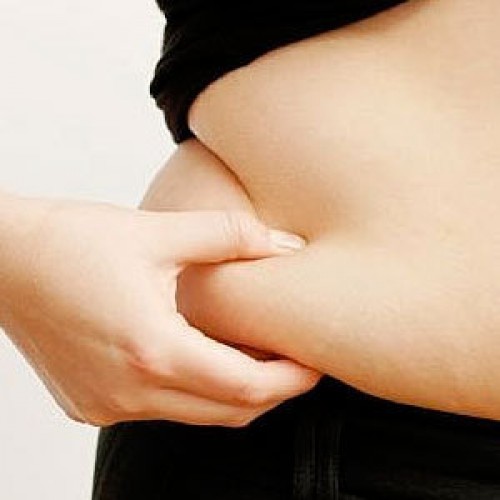
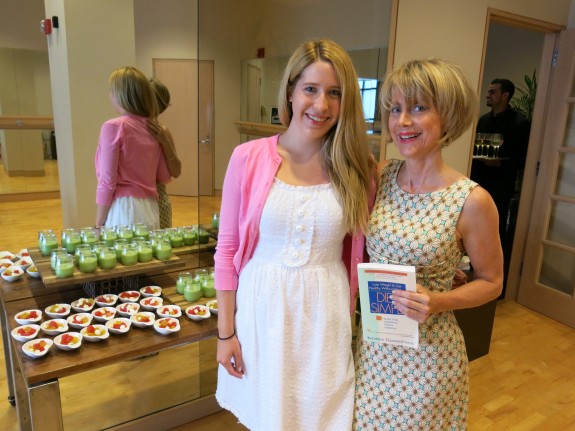


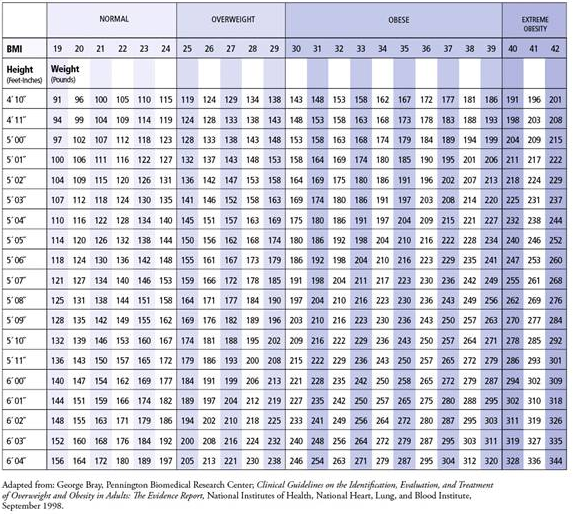
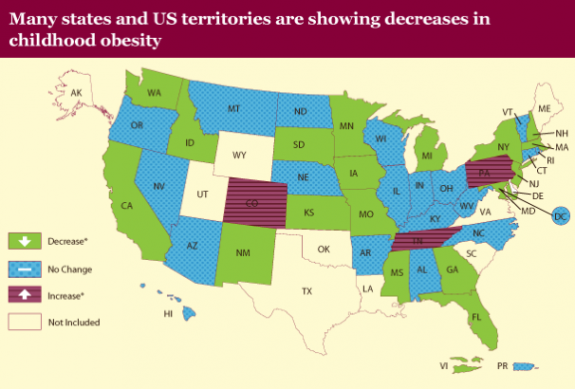
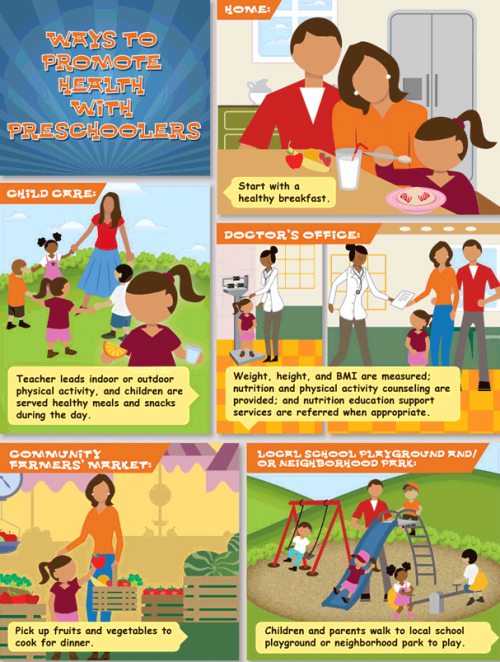




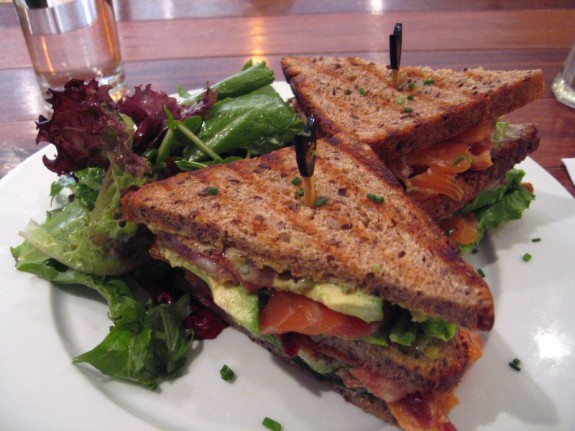

![tallmadgecover3[1]](https://katherinetallmadge.com/wp-content/uploads/2013/05/tallmadgecover31-e1369098089483.jpg)


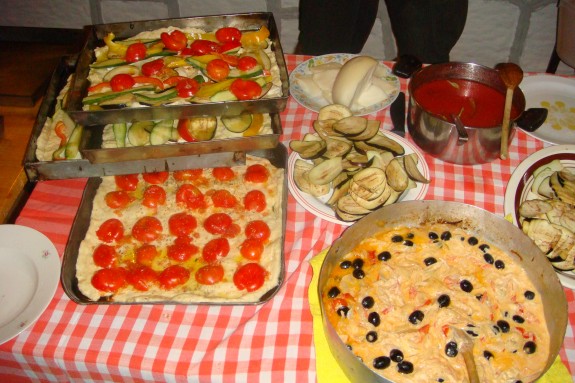


![Puglia Trip 10 Pizzica Dance[1]](https://katherinetallmadge.com/wp-content/uploads/2013/05/Puglia-Trip-10-Pizzica-Dance11-e1369082716152.jpg)


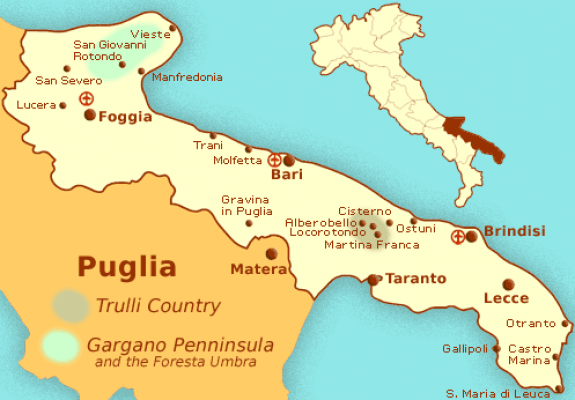

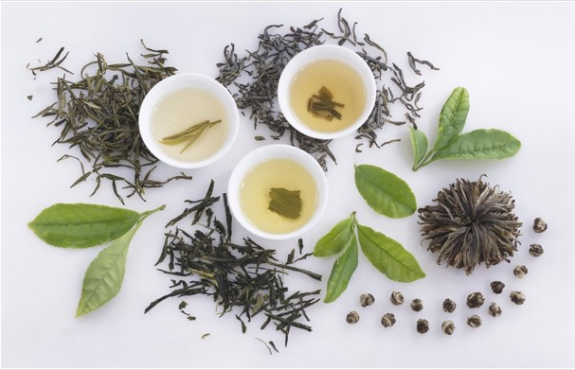

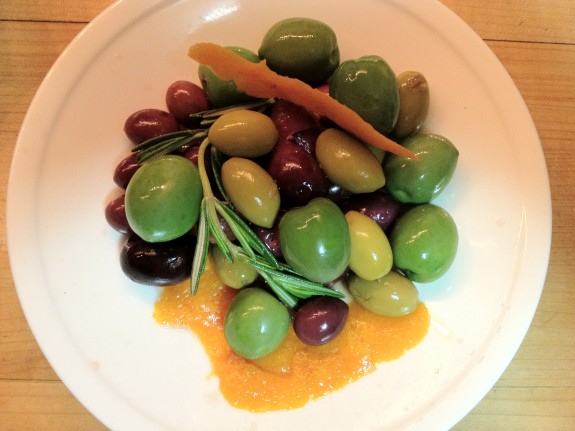
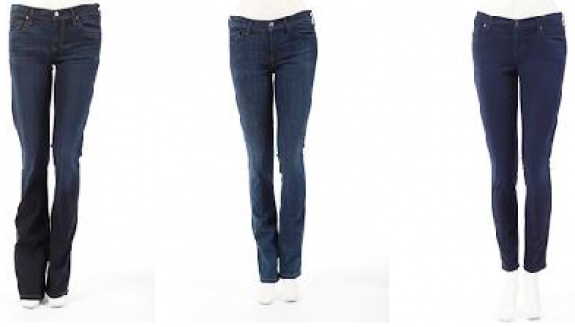



![Fish - salmon_chinook_large[1] Illustration by Charlotte Knox](https://katherinetallmadge.com/wp-content/uploads/2012/06/Fish-salmon_chinook_large1-Illustration-by-Charlotte-Knox-e1338816637607.jpg)

